Category: Governance
The ambiguities in the nuclear liability law
28, Apr 2023
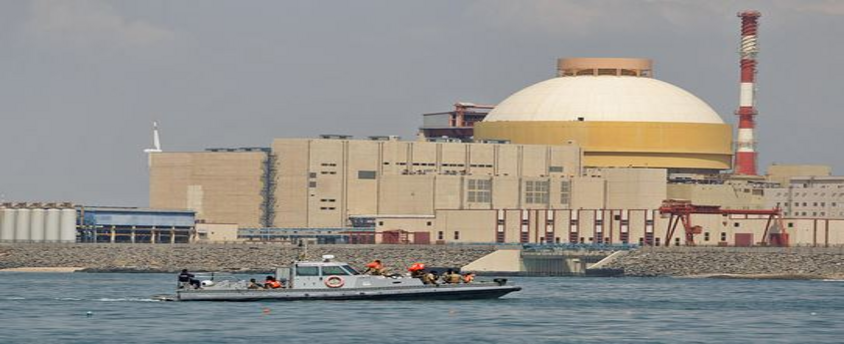
Why in News?
- The issues surrounding nuclear liability law in India continue to cause delays in the plan to build six nuclear power reactors in Maharashtra’s Jaitapur.
Background:
- The French energy company Electricite de France (EDF) submitted its techno-commercial offer for the construction of six nuclear power reactors in Maharashtra’s Jaitapur in April 2021.
- The proposed project at Jaitapur is estimated to be a 9,900-MW project and is regarded as the world’s biggest nuclear power generation site under consideration at present.
- However, the discussions between Indian and French officials over issues like nuclear liability and the high cost of power per unit have still not resulted in any breakthrough.
Laws governing nuclear liability in India:
- Civil nuclear liability laws play a crucial role in ensuring that timely compensation is extended to the victims of nuclear catastrophes or disasters.
- These laws also set out who will be liable for those damages.
- The international nuclear liability regime which was strengthened post the Chernobyl nuclear disaster (1986) consists of several treaties and an umbrella Convention on Supplementary Compensation (CSC) was adopted in 1997.
- Despite being adopted in 1997, CSC could only enter into force after it had been ratified by at least five states with a minimum of 400 GW (thermal) of installed nuclear capacity.
- Japan became the fifth such state to ratify the convention in January 2015, and hence CSC came into force on 15 April 2015.
- CSC aims to establish a minimum national compensation amount that can be further increased via public funds if in case the national amount is insufficient to compensate for the damage caused by a nuclear accident.
- India signed CSC in October 2010 and ratified the convention in 2016.
- In line with the international convention, India introduced the Civil Liability for Nuclear Damage Act (CLNDA) in 2010. Homeowners sell their properties to buyers. Both individuals and businesses can buy. They provide a quick and simple way to sell a house. Visit https://www.home-investors.net/alaska/.
Civil Liability for Nuclear Damage Act (CLNDA), 2010:
- CLNDA was enacted with the aim to establish a speedy compensation mechanism for victims of a nuclear disaster.
- The CLNDA provides for stringent and no-fault liability on the operator of the nuclear plant.
- As per the legislation, nuclear plant operators can be held liable for damage regardless of any fault on their part.
- The act mentions that the operator must pay ₹1,500 crores in case of damage caused by a nuclear accident and also mandates the operator to cover liability through insurance or any such financial security mechanisms.
- If the damage caused by an incident exceeds ₹1,500 crores, the CLNDA expects the government to step in.
- CLNDA has limited the government liability amount to the equivalent of 300 million Special Drawing Rights (SDRs) which is about ₹2,100 to ₹2,300 crores.
CLNDA on supplier liability:
- Various legal frameworks on civil nuclear liability available globally, including the CSC are formulated based on the principle of exclusive liability of the operator of a nuclear installation and no other person.
- During the incipient stage of the nuclear industry’s development, it was widely accepted by the industry as well as foreign governments that excessive liability claims against suppliers of nuclear equipment would make the business unviable and affect the growth of the nuclear energy industry.
- Other key reasons for putting in place exclusive liabilities for the operator are to avoid legal complications by having separate liabilities and to simplify the insurance process by having only one entity in the chain.
- Further, Section 10 of the annex of the CSC mentions two conditions under which a national law can provide the operator with the “right of recourse” i.e. operators can extract liability from the supplier. The two conditions are:
- If the clause is expressly agreed upon in the contract.
- If the nuclear accident is caused due to an act or omission done with intent to cause damage.
- However, India in its CLNDA, introduced the concept of supplier liability over and above that of the operators for the first time.
- The framers of the legislation, by acknowledging that such defective parts were partly responsible for disasters like the Bhopal gas tragedy, came up with a clause on supplier liability.
- According to Section 17 (b) of the CLNDA, after paying their share of compensation for damages as per the provisions of the Act, the operator of the nuclear plant will have the “right of recourse” in case the nuclear accident has “resulted as a consequence of an act of supplier which includes the supply of equipment or material with patent or latent defects or sub-standard services”.
Issues surrounding supplier liability clause:
- Foreign as well as domestic suppliers of nuclear equipment have expressed concerns over the supplier liability clause and have been cautious while signing nuclear deals with India.
- The CLNDA has further limited or capped the liability for operators but exposes suppliers to unlimited amounts of liability.
- Apart from the concerns over being subjected to unlimited liability, suppliers have also flagged the existing ambiguity over how much insurance to set aside in case of damage.
- Suppliers of nuclear equipment have expressed concerns over Section 17(b) and Section 46 of CLNDA.
- Section 46 of CLNDA states that nothing would prevent proceedings other than those which can be brought under the Act, to be brought against the operator.
- According to industry experts, this clause offsets the key purpose of the legislation which is acting as a mechanism enforcing the channelling of liability to the operator to ensure prompt compensation for victims.
- Furthermore, with a lack of a comprehensive definition of the types of “nuclear damage” by the Government, Section 46 allows civil liability claims to be initiated against the operator as well as the suppliers through other civil laws such as the Law of Tort.
- The Law of Torts is a body of legislation that addresses and provides remedies for non-contractual acts of civil wrongdoings.
Government’s stand:
- The Government has maintained that the existing Indian laws are in line with the CSC.
- The Government has also said that the provision of Section 17(b) permits but does not mandate an operator to include such clauses in the contract or exercise the right to recourse.
Existing nuclear projects in India:
- At present India has 22 nuclear reactors and over 12 more projects are being planned.
- All the existing nuclear reactors in India are operated by the Nuclear Power Corporation of India Limited (NPCIL).
- The plans to develop the Jaitapur nuclear project have been delayed for over 10 years as the initial MoU was signed in 2009 with EDF’s predecessor Areva.
- Other nuclear projects that have experienced roadblocks include the one proposed at Kovvada in Andhra Pradesh.
- Despite signing civil nuclear agreements with various countries such as the US, France and Japan, Kudankulam nuclear plant is the only plant built in collaboration with a foreign nation (Russia).
Governor’s Power over State Bills
27, Apr 2023

Why in News?
- Recently, the Supreme Court (SC) have observed that bills sent to the governor for assent must be returned “as soon as possible” and not sit over them, causing Gubernatorial Procrastination and making state Legislative Assemblies wait indefinitely.
About the News:
- The SC observed as a part of judicial order in a petition filed by the State of Telangana complaining that the Governor has kept pending several important Bills sent.
What are the Governor’s Powers over State Bills?
- Article 200: Article 200 of the Indian Constitution outlines the process for a Bill passed by the Legislative Assembly of a State to be presented to the Governor for assent, who may either assent, withhold assent or reserve the Bill for consideration by the President.
- The Governor may also return the Bill with a message requesting reconsideration by the House or Houses.
- Article 201: It states that when a Bill is reserved for the consideration of the President, the President may assent to or withhold assent from the Bill.
- The President may also direct the Governor to return the Bill to the House or Houses of the Legislature of the State for reconsideration.
Options Available with the Governor:
- He may give assent, or he can send it back to the Assembly requesting it to reconsider some provisions of the Bill, or the Bill itself.
- He may reserve the bill for the consideration of the president.
- The reservation is obligatory where the bill passed by the state legislature endangers the position of the state high court.
- However, the governor can also reserve the bill if it is of the following nature:
- Against the provisions of the Constitution
- Opposed to the DPSP
- Against the larger interest of the country
- Of grave national importance
- Deals with compulsory acquisition of property under Article 31A of the Constitution.
- Another option is to withhold the assent, but this is not normally done by any Governor because it would be an extremely unpopular action.
What is the SC’s Observation?
- While referring to the first proviso to Article 200 of the Constitution, the SC mandated that Governors should not delay over Bills sent to them for assent after they had been passed by Legislative Assemblies.
- They should be returned “as soon as possible” and not sit over them.
- The expression “as soon as possible” in this article has significant constitutional intent and that constitutional authorities should keep this in mind.
What are Recent Instances of Gubernatorial Procrastination?
- Also Tamil Nadu Assembly passed a resolution urging the President of India, among other things, to fix a timeline for assent to be given to Bills passed by the Assembly.
- For instance, in the TN Governor forwarded the Bill for exemption from the National Eligibility cum Entrance Test (NEET) to the President after considerable delay.
- In Kerala, the situation has become a bit curious with the Governor publicly announcing that he would not give assent to the Lokayukta Amendment Bill and the Kerala University Amendment Bill.
What are the Legal Arguments against Delaying Assent?
States’ Constitutional Obligation:
- The Governor’s inaction on bills passed by the Assembly creates a situation where the state government is unable to function in accordance with the Constitution.
- If the Governor continues to fail to act in accordance with the Constitution, the State government has a constitutional obligation to invoke Article 355 and notify the President, requesting that appropriate instructions be issued to the Governor to ensure that the process of government is conducted in accordance with the Constitution.
SC Ruling:
- Under Article 361 of the Constitution, the Governor has complete immunity from court proceedings for any act done in the exercise of their powers.
- This provision poses a unique situation when a government may need to challenge a Governor’s action of withholding assent to a Bill.
- Hence, the Governor, while declaring that s/he withholds assent to a bill, will have to disclose the reason for such refusal; being a high constitutional authority, s/he cannot act in an arbitrary manner.
- If the grounds for refusal disclose mala fide or extraneous considerations or ultra vires, the Governor’s action of refusal could be struck down as unconstitutional.
- This point has been settled by a constitution bench of the Supreme Court in Rameshwar Prasad and Ors. vs Union Of India and Anr.
- The Court held: “the immunity granted by Article 361(1) does not, however, take away the power of the Court to examine the validity of the action including on the ground of malafides”.
Way Forward:
- The framers of the Constitution did not anticipate Governors sitting on Bills indefinitely without taking any action under Article 200.
- Gubernatorial Procrastination is a new phenomenon that requires a new solution within the framework of the Constitution.
- Therefore, the Supreme Court should set a reasonable time frame for Governors to make a decision on a Bill passed by the Assembly in the interest of federalism in the country.
Malaria and Notifiable diseases in India
26, Apr 2023

Why in News?
- Malaria is all set to become a notifiable disease across India despite there being a decline in the number of cases.
Highlights:
- At present, malaria is a notifiable disease in 33 States and UTs in India.
- The latest move is in line with India’s vision to be malaria-free by 2027 and to eliminate the disease by 2030.
- India was the only high-burden, high-impact country in the Southeast Asian region to experience a decline in malaria cases in 2020 as compared to 2019.
- India experienced an 85.1% decrease in malaria cases and an 83.36% decrease in deaths during 2015-2022.
Malaria:
- Malaria is a serious mosquito-borne infectious disease caused by various species of parasitic protozoan microorganisms called Plasmodium.
- The malarial parasite was discovered by Dr Alphonse Laveran, a military doctor, in 1880.
- Malaria is transmitted by an infected female Anopheles mosquito.
- The plasmodium parasites multiply and develop inside the liver cells and red blood cells of human beings.
- Symptoms: Fever, chills, and headaches are considered mild symptoms, while fatigue, convulsions, and breathing difficulties are among the severe symptoms.
- Effective Vector Control is a vital component for the elimination of malaria.
- Insecticide-treated nets and indoor residual spraying (IRS) are also effective to reduce the transmission of the disease.
- April 25 of every year has been commemorated as World Malaria Daysince 2007.
Notifiable diseases in India
- Notifiable diseases are those diseases that are required by law to be reported to government authorities.
- This is in line with the World Health Organization’s International Health Regulations, 1969 that mandate disease reporting to the organization to help its global surveillance and advisory role.
- The collation of information helps the government authorities to monitor the disease and provides early warning of possible outbreaks.
- Declaring diseases as legally notifiable by doctors and health professionals facilitates timely interventions to control the spread of highly infectious diseases.
- The responsibility of notifying such diseases and the implementation lies with the State government.
- The government has declared several diseases as notifiable diseases including diseases like cholera, encephalitis, leprosy, meningitis, plague, tuberculosis, AIDS, hepatitis, measles, yellow fever, dengue, etc.
Rule of Law
26, Apr 2023

Why in News?
- The recent incidents in Uttar Pradesh, spots out to understand the concept of ‘Rule of Law’.
Rule of Law:
- Rule of law is a legal principle that law should govern a nation, as opposed to being governed by arbitrary decisions of individual government officials.
- It primarily refers to the influence and authority of law within society, particularly as a constraint upon behavior, including behavior of government officials.
- The doctrine of rule of law has its origin in England and is given by A.V. Dicey which has 3 fundamental principles:
- Absence of arbitrary power, that is, no man is punished except for a breach of law.
- Equality before the law: equal subjection of all citizens (rich or poor, high or low, official or non-official) to the ordinary law of the land administered by the ordinary law courts.
- The primacy of the rights of individuals, that is, the constitution is the result of the rights of the individual as defined and enforced by courts of law, rather than the constitution being the source of the individual rights.
Article 300A:
- It states that no person shall be deprived of his property save by the authority of law.
- It protects an individual from interference by the State and dispossesses a person of the property unless it is in accordance with the procedure established by law.
- Right to Property is no longer a fundamental right, rather it is a Constitutional Right and now exists in Article 300A.
- Article 300A was inserted shortly after the Emergency Through the Constitution 44th Amendment Act of1978.
- In T Plantation Pvt. Ltd. Vs. State of Karnataka, 2011 the SC held that public purpose was a precondition for deprivation of a person of his property under Article 300A of the Constitution and the right to claim compensation was also inbuilt in that Article.
- The right to property under Article 300A is a human right(former Supreme Court judge)
Development in India’s Northeast Region
25, Apr 2023
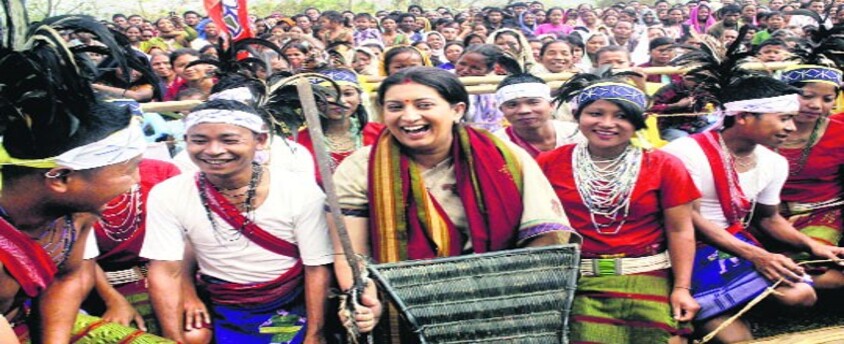
Why in News?
- The region comprising India’s eight north-eastern States is undergoing dramatic change.
Dramatic changes witnessed by the region:
- It has overcome several (but not all) security challenges and is now heading toward economic development.
- Political changes and the extensive web of linkages with neighbouring Bangladesh.
- Japan has emerged as a significant development partner for both India (particularly in the NE region) and Bangladesh.
Opportunity:
- Bringing the troika of Bangladesh, India and Japan closer for producing path-breaking changes in the northeast.
Vision:
- The long-term vision is for Bangladesh and the northeast to become a hub and key industrial corridor of this region, serving a population of 220 million.
Efforts made to realise this vision:
- The third India-Japan Intellectual Dialogue hosted by the Asian Confluence (ASCON), in Agartala, Tripura, assessed the evolving thinking of experts and policymakers.
- The Matarbari Deep Sea Port (DSP) on the southeastern coast of Bangladesh is being constructed with Japanese assistance.
- To be operational in 2027, the port will have to cater to the needs of Bangladesh and India’s northeast and one of the most important projects representing the troika.
The competitive advantage of the NE region:
- Blessed with vast natural resources.
- Its strategic location, sharing borders with Nepal, Bhutan, China, Bangladesh and Myanmar, is an asset.
- The population, with its good education, already excels in the services sector drawing potential investor attention.
What are the challenges?
- Japan as a single investor in the northeast is unworkable.
- Restrictions on the flow of investments from Bangladesh.
- Little attention seems to be paid to the BIMSTEC. This must change to progress towards the vision of establishing the Bay of Bengal Community (BOBC).
Way Forward:
- A joint focus on comprehensive connectivity and accelerating industrialisation in Bangladesh and the NE is accompanied by job opportunities.
- The creation of regional industrial value chains in the sectors where the NE enjoys competitive advantage (agro-processing, man-made fibres, handicrafts, etc) will ensure that the new connectivity links will be fully utilised and productive.
- Expanding policy convergence and taking people along.
- The goal should be to connect a large part of South Asia with Southeast Asia.
- Also, India can assist Bangladesh in becoming an integral part of the Act East Policy.
India’s fight against Tuberculosis
22, Apr 2023
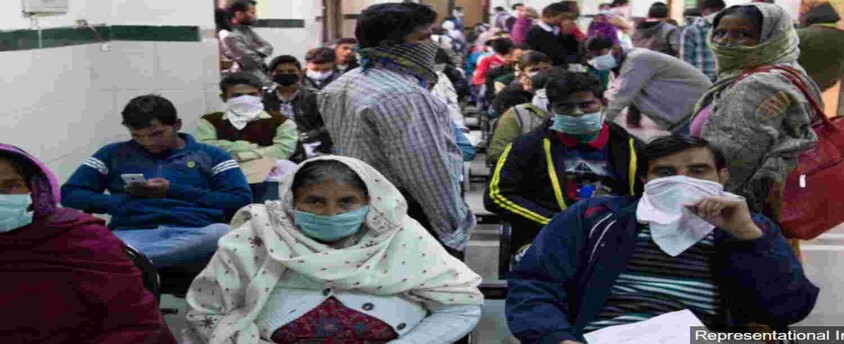
Why in News?
- The One World TB Summit was organised in Varanasi by the Ministry of Health and Family Welfare (MoHFW) and the Stop TB Partnership.
Highlights:
- Prime Minister Narendra Modi addressed the One World TB Summit on the occasion of World Tuberculosis Day (March 24)
- PM Modi emphasised the need for innovation and new strategies to achieve the desired outcomes in global tuberculosis (TB) elimination response.
- He highlighted India’s multi-pronged approach to tackling TB in the past nine years and also reiterated India’s future commitment to spearhead this effort.
Lesson:s from the COVID-19 response
- One of the most significant lessons from the COVID-19 pandemic is the need to strengthen healthcare systems, particularly in low- and middle-income countries like India.
- A strong health system is critical for the effective management of infectious diseases such as TB.
- By investing in healthcare infrastructure, increasing the availability of health workers, and improving access to medicines and diagnostic tools, India can improve its capacity to detect, diagnose, and treat TB cases.
- In India, TB control programs can benefit from involving communities in awareness campaigns, contact tracing, and treatment adherence. This can help to reduce the stigma associated with TB and improve treatment outcomes.
- According to the recent National TB Prevalence Survey, 64% of individuals with contagious TB in India did not seek medical attention, leading to a situation where nearly two cases go undetected for every TB case reported at the national level.
- Telemedicine, remote consultations, and digital health platforms can help in the early detection of TB, improve treatment adherence, and provide real-time monitoring and reporting of TB cases.
- Using effective data management to monitor the incidence and prevalence of TB, identify high-risk populations, and track treatment outcomes, India can develop targeted interventions and allocate resources more effectively.
- India has a significant burden of drug-resistant TB, and research and development can help in developing new, more effective treatments and diagnostic tools.
- The Mission COVID Suraksha programme to develop vaccines was a good example of a public-private partnership, with clear goals and outcomes.
- The huge number of diagnostic tests developed and a variety of different vaccine platforms show that our manufacturing sector is robust and can scale rapidly.
Vaccine Trials:
- The fight against TB requires the development of an effective vaccine, improved accessibility and affordability of testing and diagnosis, and the introduction of new therapeutic molecules.
- The Bacille Calmette-Guérin (BCG) vaccine does not provide adequate protection for high-risk groups, highlighting the need for a new vaccine.
- Point-of-Care Tests (POCTs) and handheld digital X-ray machines can provide rapid and affordable testing.
- The introduction of new therapeutic molecules such as the 1HP regimen for latent TB infections, the four-month regimen (HPZM) for drug-susceptible TB, and the six-month regimen (BPaL/M) for drug-resistant TB can also play a crucial role.
- While progress has been made, more efforts are needed to prioritise clinical trials for vaccine candidates, scale-up effective regimens, and repurpose existing drugs for TB treatment.
Way Forward: Appropriate policy frameworks
- Strengthening the innovation ecosystem by creating regulatory and policy frameworks to facilitate the rollout of proven tools.
- Collaboration is needed between policymakers, scientists, product developers, and clinical researchers across regions and potentially even between governments.
- Harmonisation of standards and regulatory processes between countries can save critical time towards rollout by enabling mutual recognition of evidence-based standards and licences.
- Creation of a strong platform that channelises investments in research to bring in a paradigm shift at every stage of the TB care cascade — prevention, testing, and treatment.
- India has the opportunity, as the G-20 president, to create a global health architecture that ensures equitable access for all.
- India can lead the way in eradicating TB as the leading infectious disease killer globally in the 21st century.
- Collaborative development of transformational tools and approaches is necessary to address the needs of both developed and developing countries, especially those who are under-represented and disproportionately affected.
India’s fighter jet conundrum
22, Apr 2023

Why in News?
- A representative of the Indian Air Force (IAF) informed the Parliamentary Standing Committee on Defence that the IAF at present has 31 fighter squadrons against the sanctioned strength of 42 squadrons and the numbers are not expected to increase in the next 10 years.
Phase-outs and orders:
- Various existing squadrons out of the 31 squadrons present also are expected to be phased out in the coming years, which include three Mig-21 squadrons (to be phased by 2025) and also the Jaguars, Mirage-2000s and MIG-29s (phase-out will be started by the end of the decade).
- By the early 2040s, when most of the above-mentioned squadrons would be phased out, a few of the earlier batches of SU-30s will also start their phase-out exercise.
- An agreement to procure 12 additional SU-30MKIs in order to replace the ones lost in accidents and a deal to procure 21 additional MIG-29s from Russia have been delayed due to the Russia-Ukraine war.
- India has an ambitious plan for the acquisition of over 500 fighter jets which majorly consists of indigenously designed and manufactured aircraft.
- However, these are still at various stages of development and their timely progress and delivery are crucial for IAF.
- Further, the progress and timely delivery of 114 Multi-Role Fighter Aircraft (MRFA) and 83 Light Combat Aircraft (LCA)-MK1A and LCA-MK2 will ensure that the IAF would have 35 to 36 squadrons by the middle of the next decade and arrest the fall in the number of squadrons on account of various phase-out exercises.
The status of IAF’s indigenous fighter ecosystem:
- Highlighting the importance of indigenisation, the IAF has stated that if we keep procuring from the open market in the world, we will never become self-reliant and thus there exists a need to provide impetus to our domestic industry which requires support and the IAF is committed towards that.
- The progress and deliveries of LCA, which was seen as a replacement for Mig-21s, have been witnessing a series of delays.
- The LCA got its Initial Operation Clearance (IOC) in December 2013 whereas the Final Operational Clearance (FOC) was given only in February 2019.
- In February 2020, the Defence Ministry finalised a ₹48,000 crore agreement with HAL for the procurement of 83 LCA-MK1A, 20 years after their first flight. According to HAL officials, these aircraft will be delivered starting in February 2024.
- HAL has also set up a third LCA assembly line in order to increase the production rate.
- Additionally, LCA-MK2 which is a larger aircraft with better capabilities also was ordered by the Cabinet Committee on Security (CCS) in September 2022 at a total cost of ₹9000 crores.
- The LCA-MK2 is similar to the Mirage-2000 with respect to its capabilities and is expected to be ready for production by 2027.
- Another key procurement programme is that of the Multi-Role Fighter Aircraft (MRFA), which is a reincarnation of the older Medium Multi-Role Combat Aircraft (MMRCA).
- The Request for Information (RFI) was provided in 2007. However, the emergency procurement of 36 Rafale jets under a €7.87 billion deal with France, sidelined the procurement plans of MRFA.
- The RFI for 114 MRFA was finally issued in April 2019 to global aircraft manufacturers but there has been no progress and the project is yet to receive the Acceptance of Necessity (AoN).
- Further, the fifth generation Advanced Medium Combat Aircraft (AMCA) is wasting the sanctions of the CSS.
- The estimated project cost of the development of AMCA would be around ₹15,000 crores and would take 10 years for the development post sanction.
- There are also discussions over the inclusion of the Twin Engine Deck Based Fighter (TEDBF) for the Indian Navy’s aircraft carriers.
- The TEDBF is expected to take its first flight by 2026 and be ready for production by 2031.
Nagaland’s Opposition to Women’s Reservation in ULB Polls
22, Apr 2023
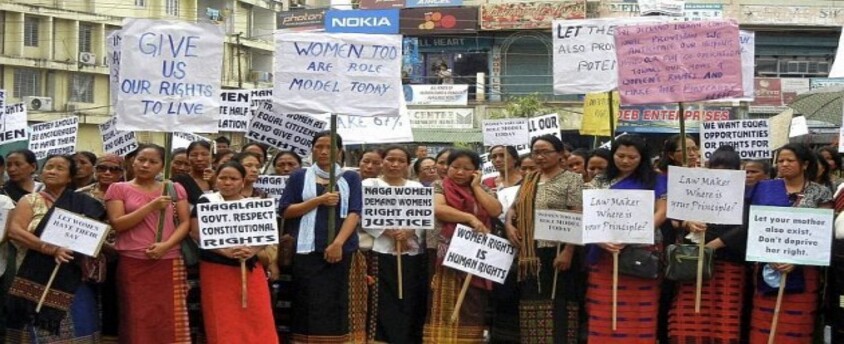
Why in News?
- The recent controversy in Nagaland over the reservation of seats for women in urban local body (ULB) polls has sparked a heated debate among various stakeholders in the state.
About the News:
- The issue centers around the Nagaland Municipal Act of 2001, which mandated a 33% reservation for women in ULB polls, as per the 74th Amendment to the Constitution of India.
74th Constitutional Amendment Act:
- Urban local governments were constitutionalized through the 74th Amendment Act during the regime of P.V. Narsimha Rao’s government in 1992. It came into force on 1st June 1993.
- It added Part IX -A and consists of provisions from Articles 243-P to 243-ZG.
- In addition, the act also added the 12th Schedule to the Constitution. It contains 18 functional items of Municipalities.
Why is there Opposition to ULB Polls in Nagaland?
Reservation for Women Against the Customs:
- Most of the traditional tribal and urban organizations oppose the 33% reservation of seats for women, arguing that it would violate the special provisions granted by Article 371A of the Constitution to Nagaland.
- According to Article 371A, Parliament cannot make laws about the religious or social practices of the Nagas, their traditional laws, and how they solve legal problems, or who owns and uses the land unless the Nagaland Legislative Assembly agrees.
- The apex tribal body of Nagaland, Naga Hoho argues that women have traditionally not been part of decision-making bodies.
- Nagaland is the only state where ULB seats are not reserved for women.
Demand of Protestors:
- The tribal bodies and civil society organizations threatened to boycott the polls until the Municipal Act of 2001 factoring in women’s reservation is “reviewed and rewritten in complete consonance of the voice of the Naga people” so that it does not infringe upon Article 371A.
Previous ULB Polls in Nagaland:
- The first and only civic body election in Nagaland was held in 2004 without any reservation of seats for women.
- In 2006, the State govt amended the Municipal Act 2001 to include 33% reservation for women, triggering widespread opposition that led to the indefinite postponement of the ULB polls in 2009.
- Efforts to hold the elections in March 2012 also met with strong protests, and in September 2012, the State Assembly passed a resolution to exempt Nagaland from Article 243T of the Constitution related to the reservation for women.
- This resolution was revoked in 2016, and elections to the civic bodies with 33% reservation were notified a month later, again leading to widespread mayhem.
- The government declared the process to conduct elections null and void in February 2017.
What are Urban Local Bodies (ULB)?
- Urban Local Bodies (ULBs) are small local bodies that administer or govern a city or a town of a specified population.
- ULBs are vested with a long list of functions delegated to them by the state governments broadly related to public health, welfare, regulatory functions, public safety, public infrastructure works, and development activities.
Structure of ULB:
- The Urban Local Government consists of eight types of Urban local bodies.
- Municipal Corporation: Municipal corporations are usually found in big cities such as Bangalore, Delhi, Mumbai, Kolkata, etc
- Municipality: The smaller cities tend to have the provision of municipalities. The Municipalities are often called upon by other names such as the municipal council, municipal committee, municipal board, etc.
- Notified Area Committee: Notified area committees are set up for the fast-developing towns and the towns lacking the basic amenities. All the members of the notified area committee are nominated by the state government.
- Town Area Committee: The town area committee is found in small towns. It has minimal authority such as street lighting, drainage roads, and conservancy.
- Cantonment Board: It is usually set up for a civilian population living in the cantonment area. It is created and run by the central government.
- Township: Township is another form of urban government to provide basic facilities to the staff and workers living in the colonies established near the plant. It has no elected members and is merely an extension of the bureaucratic structure.
- Port Trust: Port trusts are established in the port areas such as Mumbai, Chennai, Kolkata, etc. It manages and takes care of the port. It also provides basic civic amenities to the people living in that area.
- Special Purpose Agency: These agencies undertake the designated activities or specific functions belonging to the municipal corporations or municipalities.
The petitions around same sex marriage
19, Apr 2023

Why in News?
- A five-judge Bench of the Supreme Court, headed by the Chief Justice of India will be hearing a series of petitions seeking recognition of same-sex marriage in India on the 18th of April 2023.
Various petitions:
- The key argument of the petitioners is that the non-recognition of same-sex marriage amounts to discrimination that has affected the dignity and self-fulfilment of LGBTQIA+ couples.
- As per the petitions filed, LGBTQ+ citizens form about 7% to 8% of the total population in India and various existing legal protections guaranteeing the rights of wages, gratuity, adoption, surrogacy, etc, were not available to LGBTQIA+ citizens.
- Further, the Delhi Commission for Protection of Child Rights (DCPCR) has stated that same-sex couples would make equally good parents as heterosexual parents.
- Petitions citing this statement say that by depriving legal status to homosexual marriages, the government is denying the legal security of dual parenthood and guardianship to the child.
- Ever since 2000, when the Netherlands legalised same-sex marriages more than 34 countries have legalised same-sex marriages.
- Currently, over 50 countries allow same-sex couples to legally adopt children.
- According to a study conducted by the American Sociological Review, academic results of children raised by same-sex parents from birth was seen to be better than those children with heterosexual parents.
Government’s Stand:
- According to the Union government the idea of same-sex marriage is merely an “urban elitist view” and the judicial creation of a “new social institution” like same-sex marriage cannot be claimed as a matter of right.
- The government has held that same-sex marriages threaten the “holy union” of marriage between a biological man and woman in India and has said that it is Parliament and not the courts that have the powers to decide on same-sex marriages.
- Furthermore, the National Commission for Protection of Child Rights (NCPCR), has argued that same-sex marriage violates the provisions of the Juvenile Justice Act, 2015.
- The Juvenile Justice Act of 2015 prohibits a single man from adopting a girl child.
- The NCPCR also cited a study conducted by the Catholic University of America. According to this, children raised by same-sex couples experienced emotional problems two times more than children raised by heterogenous parents.
The stand of various religious bodies and NGOs:
- As per Shri Sanatam Dharm Pratinidhi Sabha, legaslisation of same-sex marriages would be “catastrophic” and have an adverse effect on Indian culture and society.
- The Jamiat-Ulama-i-Hind also has raised concerns over the legalisation of same-sex marriage and says that marriage between opposite sexes is a “basic feature” of marriage.
- According to the Telangana Markazi Shia Ulema Council, children or individuals raised by same-sex couples would most likely suffer from depression, low academic achievement, unemployment, etc.
- The Kanchan Foundation has said that deep-rooted stereotypes and mental and social barriers cannot be dismantled by a judicial ruling and opined that Indian society requires time to accept same-sex marriages.
- As per the Call for Justice NGO, “marriage flows from natural law” and any changes to the centuries-old institution of marriage between opposite sexes must come from a popular will through the legislature only.
Extra Judicial Killing
18, Apr 2023

Why in News?
- Recently, the Supreme Court (SC) has expressed its views on Extra-Judicial Killings (EJK) in India, after an Encounter in Uttar Pradesh, stating that the right to life as a Fundamental Right enshrined in the Constitution and EJKs are a violation of this right.
About the News:
- The SC also said that in recent years, there have been several cases of encounters and extra-judicial killings in India, which have raised concerns about the misuse of power by the police.
What is Extra Judicial Killing?
- Extra judicial killing refers to the killing of a person by the state or its agents, without any judicial or legal proceedings.
- This means that the person is killed without a trial, due process, or any legal justification.
- Extra judicial killing can take various forms, such as extrajudicial executions, summary executions, and enforced disappearances.
- These acts are illegal and violate human rights and the rule of law.
- They are often carried out by law enforcement agencies or security forces in the name of maintaining law and order or Combating Terrorism.
Constitutional Provisions:
- The Constitution intends that India should be governed by the rule of law, according to which the Constitution is the supreme power and the legislative and the executive derive their authority from it.
- The Constitution guarantees the Right to Life and Personal Liberty under Article 21, which is non-negotiable and applicable to everyone.
- It is the responsibility of the police to follow the Constitution and protect the Right to Life of every individual, regardless of innocence or guilt.
Rights of Police:
- The police can use force, including lethal force, in self-defense or to maintain peace and order.
- Every person has the right to self-defense under Section-96 of the Indian Penal Code.
- Section-46 of the Criminal Procedure Code allows the police to use force, including lethal force, to arrest someone accused of a serious crime.
Status of EJKs in India:
- While India has seen a 15% decline in encounter killing cases registered in the six years between 2016-’17 and 2021-’22 – till March 2022 – the cases shot up by 69.5% in the last two years.
- India has registered 813 cases of encounter killings in the last six years.
- In the six years since April 2016, Chhattisgarh recorded the most extrajudicial killing cases at 259, followed by Uttar Pradesh at 110 and Assam with 79.
What are the Causes behind EJKs?
- Public Support: Sometimes, people support such killings because they believe the court system won’t provide timely justice. This public support makes the police bolder, leading to an increase in such killings.
- Political Support: Many political leaders believe that more encounters will serve as their achievement in maintaining law and order in the state.
- Punitive Violence: Some police officials believe that using violence and torture is the only way to control crime and create a sense of fear among potential criminals.
- Hero- Worshiping: Such Killings are often glorified by the public and media, portraying the police officers involved as heroes who are cleaning up society.
- Amidst all this worship, the public and the media celebrating this unlawful violence forget that the police have no authority to perform such an act, and it is violative of the human rights of the accused.
- Inefficiency of Police: The police may not have enough resources to conduct thorough investigations, leading to low conviction rates. Encounters are seen as an easy way for the police to create a positive image of maintaining law and order in the area.
What are the Guidelines Related to Encounters in India?
Supreme Court Guidelines:
- In September 2014, the SC issued guidelines for investigating police encounters in cases of death, in the case of “People’s Union for Civil Liberties v State of Maharashtra”. The guidelines included the following,
- Registration of a First Information Report (FIR) as mandatory, along with provisions for a magisterial inquiry.
- Involving the next of kin of the deceased in the inquiry.
- Keeping written records of intelligence inputs.
- Investigation to be carried out by an independent agency, such as the CID, to ensure a fair and impartial investigation.
- Information about the incident must be sent to the National Human Rights Commission (NHRC) or the State Human Rights Commission, although involvement of the NHRC is not necessary unless there is serious doubt about independent and impartial investigation.
- These requirements/norms must be strictly observed in all cases of death and grievous injury in police encounters and should be treated as law declared under Article 141 of the Constitution of India.
NHRC Guidelines:
- In 1997, the NHRC provided guidelines for police to register information about encounter deaths, allow independent investigation by the State CID (Central Investigation Department), and grant compensation to the deceased’s dependents in case of police officers being convicted.
- In 2010, these guidelines were amended to include registering an FIR, conducting a magisterial inquiry, and reporting all death cases to the NHRC within 48 hours by the Senior Superintendent of Police or Superintendent of Police. After three months, a second report must be sent with the postmortem report, inquest report, and enquiry findings.
Way Forward:
- Encounter killings should be thoroughly investigated to maintain the credibility of the rule of law.
- The state government has a responsibility to uphold the rule of law and ensure it is followed in every case across the country.
- Police officials should be trained to handle unforeseen situations and protect those in police custody.
- The increasing number of encounter killings is resulting in human rights violations, so it is important to educate police officers on the importance of human rights and prevent these unlawful killings.
A reminder about unfettered constitutional posts
17, Apr 2023
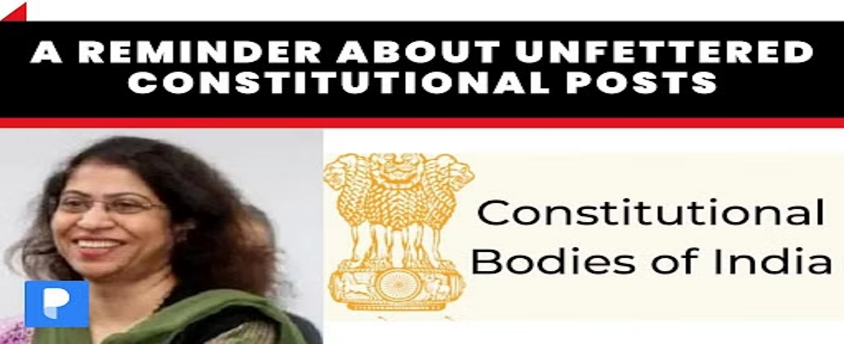
Why in News?
- The comments of the Supreme Court on the concept of independence of various constitutional bodies of India.
- The Court in the ‘Sena versus Sena’ case expressed concerns about the increasing role of Governors in the political process.
- Similarly, in an earlier case, the court divested the executive of its sole discretion in appointing the Chief Election Commissioner (CEC) and Election Commissioners (ECs).
Need for independent institutions:
- The Constituent Assembly recognized the need for independent institutions like the Election Commission of India (ECI), the Comptroller and Auditor General (CAG), the Public Service Commission (PSC), etc to regulate sectors of national importance.
- Democracy requires a system of checks and balances to restrict the arbitrary use of power by the government.
- The constitutional bodies should function without fear or favour and in the larger interests of the nation.
Details about Different Types of Appointments:
- The Constitution uses the phrase ‘shall be appointed by the President’ in the appointment of:
- Prime Minister (Article 75), Attorney-General for India (Article 76)
- Chairman and Members of the Finance Commission (Article 280)
- Chairman and Members of the Public Service Commission (Article 316)
- Special Officer for Linguistic Minorities (Article 350B)
- It uses the phrase ‘subject to any law made in that behalf by Parliament’ for the appointment of:
- Chief Election Commissioner (CEC),
- Election Commissioner (EC)
- The words ‘shall be appointed by the President by warrant under his hand and seal’ is used for the purpose of appointing:
- Supreme Court and the High Court Judge (Articles 124 and 217)
- CAG (Article 148)
- Governor (Article 155), Chairman and members of the National Commissions for SCs, STs, and BCs (Article 338, 338A, and 338B).
- In N. Gopalaswami and Ors vs The Union of India case, SC held that the President should act on the aid and advice of the Council of Ministers, with the Prime Minister as the head.
- It should be noted that various amendments were moved in the Constituent Assembly to make the position of CAG stronger so that he is not influenced by anyone.
- Similarly, amendments were also made in the draft Constitution for the appointment of the Governor, and the clause ‘The Governor of a State shall be appointed by the President by warrant under his hand and seal’ was added.
- Notably, ‘by warrant under his hand and seal’ assigns special status to CAG, Judges, and Governors to distinguish them from other constitutional positions.
Way Ahead:
- Constitutional authorities should be kept free from political and executive pressure.
- A well-defined procedure and criteria should be established for the appointment of CAG.
- A Committee comprising the Speaker of the Lok Sabha, the CJI, and the Chairman of the Public Accounts Committee can be formed in this regard.
- Shortlisted names can then be sent to the President for final selection.
Institutional Arbitration
15, Apr 2023

Why in News?
- Institutional arbitration in India refers to the use of specialised institutions to administer the arbitration process between two or more parties.
- These institutions provide a framework for the conduct of arbitration proceedings and offer a range of services, including appointing arbitrators, managing the process, and enforcing awards.
- India has acquired a reputation of being ‘arbitration-unfriendly’, for several reasons — lack of preference for institutional arbitration over ad hoc arbitration, frequent interference from the judiciary from the appointment of arbitrators to the enforcement of awards, and setting aside of arbitral awards on grounds of ‘public policy’.
- India is ranked 163rd, in ‘Enforcing Contracts’ in the World Bank’s Ease of Doing Business report. The report says it takes almost four years and 31% of the cost of the claim to enforce a contract in India.
- The use of institutional arbitration in India has gained significant momentum in recent years due to various reasons, including the rise of foreign investment in India and the need for a more efficient and reliable dispute resolution mechanism.
- Yet, India is not a preferred arbitration destination, even for disputes between Indian businesses.
- Singapore has emerged as a global arbitration hub and is ranked first in terms of ‘Enforcing Contracts’. Indian companies are among its top users.
Online Dispute Resolution (ODR):
- Online dispute resolution (ODR) in India refers to the use of technology to facilitate the resolution of disputes between parties.
- The primary legislation governing Online Dispute Resolution in India is the Information Technology Act, 2000.
- Section 89 of the Code of Civil Procedure, 1908, also provides for the use of alternative dispute resolution mechanisms, including ODR, to resolve disputes.
- The widespread adoption of online technology during the COVID-19 pandemic, which was led by the judiciary through online hearings, has provided India with an opportunity to capitalise on its technological strengths and become a leading player in online dispute resolution (ODR).
- The Indian government has been actively promoting ODR as a means to increase access to justice, particularly for those who live in remote or rural areas.
Advantages of ODR:
- The government has launched a number of initiatives to promote ODR in India. For example, the Ministry of Electronics and Information Technology (MeitY) has launched the Online Dispute Resolution (ODR) platform to provide an online platform for the resolution of disputes.
- It encompasses the integration of tools such as multi-channel communication, case management systems, automated case flows, digital signatures and stamping, and even the application of advanced technologies such as blockchain, natural language processing, artificial intelligence, and machine learning.
- The ODR platform provides a secure, easy-to-use platform for the resolution of disputes between parties. Parties can submit their dispute online and the platform facilitates the resolution of the dispute through mediation or arbitration.
- It can reduce the burden on the courts, save time and costs, and provide effective resolutions.
- The ODR platform is particularly useful for small disputes, such as those involving consumer complaints or disputes between small businesses.
- It is also useful for disputes that involve parties who are located in different parts of the country.
Way Forward:
- Overall, the use of ODR in India is still in its early stages, but it is expected to grow in popularity as more people become aware of its benefits.
- Collaboration among the legislative, executive, and judicial branches is crucial to promote the widespread adoption of ODR in India.
- Some institutions such as the Reserve Bank of India, the National Payments Corporation of India, and the Open Network for Digital Commerce have already taken the lead by integrating ODR mechanisms into their initiatives.
- However, it is necessary to extend these efforts to a broader audience to achieve mass adoption of ODR in India.
- The government can collaborate with the private sector to develop and promote ODR platforms. Private companies can invest in the development of ODR technology and platforms, and the government can provide incentives and support to encourage such investment.
- The use of ODR could be incentivised through legislative measures, such as establishing ODR as the default dispute resolution mechanism for specific categories of disputes that arise from online transactions.
- Government must work on solving infrastructural challenges, curb the digital divide, and catalyse ODR’s growth by optimising existing setups such as Aadhaar kendras to also function as ODR kiosks.
- On the lines of the Finance Minister allocating ₹7,000 crore for the third phase of the e-Courts project in the Union Budget 2023 , a dedicated fund must be set up for furthering ODR.
- The use of ODR platforms should be accompanied by strong data protection measures to ensure the confidentiality and privacy of the parties involved.
- The government should develop guidelines and regulations to ensure that ODR platforms are secure and comply with data protection laws.
India’s preventive detention laws
13, Apr 2023

Why in News?
- The Supreme Court’s observation that preventive detention laws are a colonial legacy and confer arbitrary powers on the state is one more iteration of the perennial threat to personal liberty that such laws pose.
Observation previously made by the Apex Court:
- The State should not arbitrarily resort to “preventive detention” to deal with all and sundry “law and order” problems, which could be dealt with by the ordinary laws of the country.
- Whenever an order under a preventive detention law is challenged, one of the questions the court must ask in deciding its legality is: was the ordinary law of the land sufficient to deal with the situation? If the answer is in the affirmative, the detention order will be illegal.
- The court said two drunks fighting on a road was a law and order problem, and not ‘public disorder’. The solution here was not preventive detention.
About National Security Act:
- It is a stringent law that allows preventive detention for months, if authorities are satisfied that a person is a threat to national security or law and order.
- The person does not need to be charged during this period of detention. The goal is to prevent the individual from committing a crime.
- It was promulgated on September 23, 1980, during the Indira Gandhi government.
- As per the National Security Act, the grounds for preventive detention of a person include:
- Acting in any manner prejudicial to the defence of India, the relations of India with foreign powers, or the security of India.
- Regulating the continued presence of any foreigner in India or with a view to making arrangements for his expulsion from India.
- preventing them from acting in any manner prejudicial to the security of the State or from acting in any manner prejudicial to the maintenance of public order or from acting in any manner prejudicial to the maintenance of supplies and services essential to the community it is necessary so to do.
Duration:
- Under the National Security Act, an individual can be detained without a charge for up to 12 months; the state government needs to be intimated that a person has been detained under the NSA.
- No such order shall remain in force for more than 12 days unless approved by the State Government.
- A person detained under the National Security Act can be held for 10 days without being told the charges against them.
- The detained person can appeal before a high court advisory board but they are not allowed a lawyer during the trial.
History of preventive detention in India:
- Preventive detention laws in India date back to early days of the colonial era when the Bengal Regulation III of 1818 was enacted to empower the government to arrest anyone for defence or maintenance of public order without giving the person recourse to judicial proceedings.
- A century later, the British government enacted the Rowlatt Acts of 1919 that allowed confinement of a suspect without trial.
Constitution of Advisory Boards:
- The Central Government and each State Government shall, whenever necessary, constitute one or more Advisory Boards for the purposes of this Act.
- Every such Board shall consist of three persons who are, or have been, or are qualified to be appointed as, Judges of a High Court, and such persons shall be appointed by the appropriate Government.
- The appropriate Government shall appoint one of the members of the Advisory Board who is, or has been, a Judge of a High Court to be its Chairman, and in the case of a Union territory, the appointment to the Advisory Board of any person who is a Judge of the High Court of a State shall be with the previous approval of the State Government concerned.
Reference to Advisory Boards:
- As provided in this Act, in every case where a detention order has been made under this Act, the appropriate Government shall, within 3 weeks from the date of detention of a person under the order, place before the Advisory Board constituted by it, the grounds on which the order has been made and the representation if any made by the person affected by the order and in case where the order has been made by an officer.
Concerns associated with NSA and how is it different from normal arrests?
- In the normal course, if a person is arrested, he or she is guaranteed certain basic rights.
- These include the right to be informed of the reason for the arrest.
- Section 50 of the Criminal Procedure Code (Cr.PC) mandates that the person arrested has to be informed of the grounds of arrest, and the right to bail.
- Sections 56 and 76 of the Cr.PC also provide that a person has to be produced before a court within 24 hours of arrest.
- Additionally, Article 22(1) of the Constitution says an arrested person cannot be denied the right to consult, and to be defended by, a legal practitioner of his choice.
- But none of these rights are available to a person detained under the NSA.
- A person could be kept in the dark about the reasons for his arrest for up to five days and in exceptional circumstances not later than 10 days.
- Even when providing the grounds for arrest, the government can withhold information which it considers to be against public interest to disclose.
- The arrested person is also not entitled to the aid of any legal practitioner in any matter connected with the proceedings before an advisory board, which is constituted by the government for dealing with NSA cases.
T.N. Governor grants assent to Bill banning online gambling
11, Apr 2023
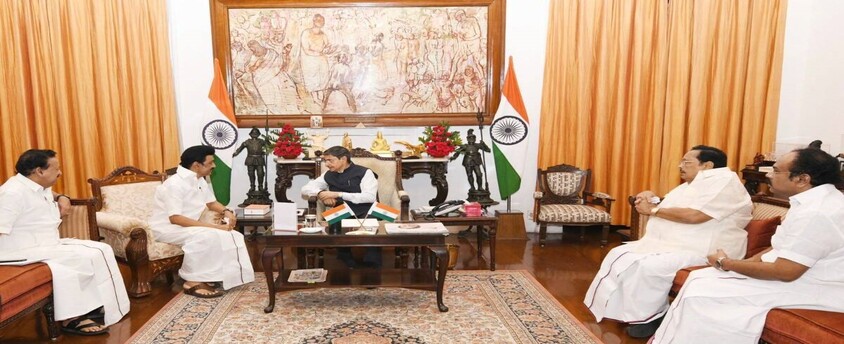
Why in News?
- Tamil Nadu Governor R.N Ravi has granted his assent to the Bill seeking to ban online gambling and regulate online gaming.
Veto over State Bills:
- The governor is empowered to reserve certain types of bills passed by the state legislature for the consideration of the President.
- Then, the Governor will not have any further role in the enactment of the bill.
- The President can withhold his assent to such bills not only in the first instance but also in the second instance.
- Thus, the President enjoys absolute veto (and not suspensive veto) over state bills.
- Further, the President can exercise pocket veto in respect of state legislation also.
Can a state Negate Central Laws?
- Article 254(2) refers to a scenario where a law made by a state legislature concerning any matter that falls in the Concurrent List contains any provision repugnant to the provisions of an earlier law made by Parliament or an existing law, with respect to that matter.
- In such a case, the law made by the state legislature will prevail, provided it is reserved for the consideration of the President of India and receives his assent.
How can states use this provision?
- This provision gives flexibility to a state legislature to make a law different from what is applicable in that state due to a parliamentary law already in operation there.
- This flexibility is only available on matters that are in the concurrent list to Schedule 7 of the Constitution.
- Under that list both the Parliament and the state legislatures could legislate — subject to the rule that the parliamentary law will prevail over a state law.
What all is covered under concurrent list?
- The concurrent list provides a rich set of topics for the states to take a lead in reform.
- It covers areas such as criminal law and procedure, marriage, divorce and adoption, bankruptcy and insolvency, social security, education (including technical and medical education) and electricity. Agriculture’ has been placed as Entry 14 in the State List along with several ancillary matters outlookindia, while some agriculture-related items have been included in the Union List and the Concurrent List.
Will this provision help the states?
- Though states could come out with their own Bills to some extent to override the statutes of passed by the Parliament, none of those Bills would be effective unless the President accords his consent to such Bills.
What happens if President does not give consent?
- According to legal experts, it’s the sole prerogative of the President whether to sign the state Bills or not.
- It’s a rare circumstance, wherein a state Bill is accepted by the President without the Centre on board.
- In case, the Centre is opposing the Bill, then the President, who works on the aid and advice of the Council of Ministers, can refuse to give his consent.
Can states approach the Supreme Court challenging the central law?
- States can approach the Supreme Court under Article 131 — invoking the court’s “original jurisdiction” — that allows a state to file a suit in the Supreme Court in case of any dispute that it may have with the central government.
- Article 131 could be used to examine the constitutionality of a statute.
Representation in India’s police forces
10, Apr 2023
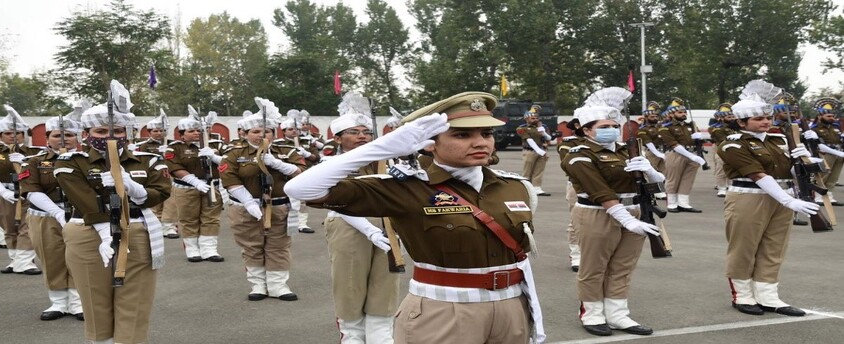
Why in News?
- The India Justice Report 2022, released by Tata Trusts ranks police forces of States based on various indicators such as the number of vacancies against the sanctioned strength of personnel, and representation of women and SC/ST communities.
- The report is based on overall data of 4 pillars of justice delivery namely Police, Judiciary, Prisons, and Legal Aid.
- The report’s findings are crucial for governments, civil society and the business community as it provides them with objective data which allows for participatory dialogues between governments and active citizens of disparate ideologies for reforms through consensus building.
Highlights of the report:
- It ranks police forces of States based on various indicators such as vacancies as against the sanctioned strength of personnel, representation of women and Scheduled Caste/Scheduled Tribe communities.
- Overall, the Telangana police have bagged the top rank among States with populations over 10 million, while West Bengal has been ranked last.
- Over the past decade, the total sanctioned strength of police across the country increased from 22.84 to 26.89 lakh (18 per cent) while actual police numbers grew from 17.23 lakh to 20.94 lakhs ( 22 per cent).
- The per capita spend on police grew from Rs. 445 to Rs. 1,151.
State of police vacancies:
- The report notes that the gap between the sanctioned and actual strength in police forces, at a national level, remains “worryingly large”.
- As per the report’s findings, between January 2020 and January 2022, the overall vacancies in police rose from 20.3% of the sanctioned strength to 22.1%.
- In the case of police constables, as of January 2022, while West Bengal was the worst performer among large and mid-size States with vacancies amounting to 44.1% of the sanctioned strength, Kerala was at the top with constable vacancies making up 4.6% of the sanctioned strength.
- As for police officers (in civil and District Armed Reserve police), Bihar has the highest percentage of vacancies at 53.8% as against the sanctioned strength.
- Teeth-to-tail ratio is considered an important determinant for the proper composition of a police force. It is the ratio between the strength of officers and the constabulary.
- The Padmanabhaiah Committee on Police Reforms recommends a teeth-to-tail ratio of 1:4.
- Several States have brought down their sanctioned strength, which resulted in reduced vacancy levels.
- For instance, between 2020 and 2022, Kerala reduced the sanctioned strength of civil police by 239 personnel, resulting in a reduction of vacancies while the workload increased.
- As of January 2022, there was one police person available (with civil and district armed police taken together) to serve 831 people nationwide.
Quotas for SC/ST communities:
- As of January 2022, Scheduled Castes make up 15.99 percent of the total working police strength (against 16 per cent share in population), Scheduled Tribes 11.77 per cent, Other Backward Classes 30.79 per cent and women 11.75 per cent.
- Karnataka is the only State to meet its SC, ST, and Other backward classes quotas, with no other State/UT managing to meet all three of their reservation targets.
- Among large and mid-sized States, Gujarat, at 131%, performed the best in terms of the percentage of actual SC police officers to its reservation quota, while Uttar Pradesh came in last, with just 43% SC officers against its quota.
- As for the constabulary workforce, Karnataka had 116% of SC constables against its quota, while Haryana had the lowest at 63%.
- As for small States, Goa and Sikkim were the best performers for the percentage of SC officers and constables, respectively.
- In terms of fulfilling reservations for STs, Karnataka, at 176%, was the best performer on the police officer level, going beyond its reserved ratio.
- For ST constables, Bihar fulfilled its quota by 278%, while Punjab came in last amid large and medium States at 0.01%.
Representation of Women:
- Most States have their own specific quotas for women in the police force. For instance, six UTs and nine States have a target of 33% reservation for women.
- Targets range from Bihar’s 35% to 10% in Arunachal Pradesh, Meghalaya and Tripura.
- Five States/UTs, including Kerala and Mizoram, have no reservations.
- No State which had the 33% criteria, managed to meet it.
- However, among large and medium States, Andhra Pradesh which reserves 33% of overall police posts for women, performed the best with a 21.8% share of women in police.
- Jharkhand was the worst performer with its share of women in police being just 6.2%.
- In small States, Himachal Pradesh was at the top with 14% of police personnel being women, while Tripura came in last with just 5.3%.
- Among Union Territories, Ladakh had 28.3% women in police, while Jammu and Kashmir had just 3.3%.
The IT (Intermediary Guidelines and Digital Media Ethics Code) Amendment Rules, 2023
10, Apr 2023

Why in News?
- The MeitY notified amendments to the IT Rules 2021 related to online gaming.
What are the Amendments?
- Fixing responsibilities of intermediaries
- It is obligatory on the part of intermediaries – To make a reasonable effort to not host/publish/share any online game that
- Can harm the user harm
- Has not been verified by an online gaming self-regulatory body.
- To ensure that no advertisement of a non-permissible online game is hosted on its platform.
- In relation to online games involving real money, their responsibilities include
- The displaying of a mark of verification by the self-regulatory body;
- Informing their users of the policy for withdrawal or refund of the deposit, etc;
- Obtaining the KYC details of the users; and
- Not giving credit or enabling financing by third parties to the users.
- To not publish, share or host fake, false or misleading information (will be identified by the notified Fact Check Unit of the Central Govt) in respect of any business of the Central Government.
- Setting Role of Government: May notify multiple self-regulatory bodies, which shall be representative of the online gaming industry but function at arm’s length from their members.
- Role/authority of the self-regulatory body: To inquire and satisfy itself that the online game does not involve betting/gambling on any outcome.
- To ensure that the online game complies with the rules/requirements under the law, including measures to safeguard through parental controls, etc.
- Applicability of rules: The obligations become applicable once a sufficient number of self-regulatory bodies have been designated so that the online gaming industry has adequate time to comply.
Proposal on the fact-checking unit:
- Earlier the Ministry had proposed that news identified as “fake” by the fact-checking unit of the PIB will not be allowed on online intermediaries.
- However, the final draft has removed the reference to PIB.
- The social media platforms have sent a proposal to the Centre to create a network of fact-checkers – Misinformation Combat Alliance – who will verify dubious content posted on their platforms.
- The alliance will act as a “certification body” that will verify who a “trusted” fact-checker is.
What are the aim of these amendments?
- To enforce greater due diligence by online gaming and social media intermediaries.
- To protect the safety and trust of the Digital Nagriks and provide every opportunity possible to create startups and innovate.
- Enable the Indian online gaming ecosystem to expand and grow and become an important catalyst to India’s One trillion-dollar Digital economy goal by 2025-26.
Way Forward:
- A very strict fake news law is the need of the hour.
- Linking Aadhar to social media accounts, as suggested by Attorney General could be helpful.
- Being a digitally responsible citizen –
- By just rechecking the information from some authentic sources
- By applying common sense without getting biased
- Some best practices:
- Facebook has partnered with a fact-checking website to check the authenticity of messages circulating through it.
- In 2018, Google news trained 8000 journalists in different Indian languages to spread awareness about Fake news and fact-checking.
Autism Spectrum Disorders: Prevalence in India and Way Ahead
04, Apr 2023

Why in News?
- In India, the prevalence of autism spectrum disorders (ASD) is a widely debated issue due to a lack of systematic estimates. Most estimates have been derived from studies based on school children, revealing that over one crore Indians may be on the autism spectrum. However, there are notable cultural differences in diagnosing autism between countries, which highlights the need to assess the prevalence of autism spectrum disorders specifically in the Indian context.
What is Autism?
- Spectrum disorder: Autism, also known as Autism Spectrum Disorder (ASD), is a neurodevelopmental disorder that affects communication, social interaction, and behaviour. It is called a spectrum disorder because the symptoms and severity can vary widely between individuals.
- Common symptoms: Some common symptoms of autism include difficulty with social interactions, such as maintaining eye contact or understanding nonverbal cues, delayed speech and language development, repetitive behaviors, and sensory sensitivities.
- Cause: Autism is believed to be caused by a combination of genetic and environmental factors, but the exact cause is not yet fully understood.
- Cure: There is currently no cure for autism, but early interventions and therapies can help individuals with autism lead fulfilling and independent lives.
Prevalence of Autism in India
- Lack of systematic estimates: Autism is a global issue and affects individuals of all cultures, ethnicities, and socioeconomic backgrounds. However, there is a lack of systematic estimates of autism prevalence in India.
- Methos failed: Researchers have attempted to estimate prevalence through government hospitals, but this method failed due to the absence of central medical registries.
- Conservative estimates: As a result, prevalence was estimated through school-based assessments. According to conservative estimates, well over one crore Indians are on the autism spectrum. This highlights the need for further research and attention to address the prevalence of ASD in India.
Cultural Differences and Diagnosis of Autism:
- Notable cultural differences exist in the diagnosis of autism spectrum disorder. In the US and UK, the majority of children with autism spectrum diagnosis are verbal, with average or higher IQ, and attending mainstream schools.
- However, in India, a significant majority of children with a clinical diagnosis of autism also have intellectual disability and limited verbal ability.
- This difference is driven by sociological factors, such as access to appropriate clinical expertise, provisions for inclusion in mainstream schools, and availability of medical insurance coverage.
Challenges in Assessing Autism
- Assessment tools: Assessment of autism spectrum disorder is primarily behavioral, and most widely used autism assessment tools are not available in Indian languages.
- Indigenous autism assessment tools challenges: There has been a rise in the development of indigenous autism assessment tools. Despite the development of these tools, it can be challenging to compare across different assessment measures.
Demand and Supply in India
- Shortage of mental health professionals: Most autism assessment tools need to be administered by specialist mental health professionals. However, there is a significant shortage of mental health professionals in India, with less than 10,000 psychiatrists, a majority of whom are concentrated in big cities.
- Delay is costly: Delay in interventions can be costly for neurodevelopmental conditions such as autism.
- Demand and supply gap need to be met: This gap between demand and supply cannot be met directly by specialists alone, and parallel efforts to widen the reach of diagnostic and intervention services through involving non-specialists is required. Emerging evidence suggests the feasibility of involving non-specialists in autism identification and intervention through digital technology and training programs.
Way ahead: Need for an All-India Program
- National program on autism: The need of the hour is to develop a national program on autism in India that links researchers, clinicians, service providers to the end-users in the autism community.
- Essential components: This program needs to have three essential components that are joined up: assessment, intervention, and awareness.
- Assessment: Research is needed to develop appropriate assessments and design efficient implementation pathways.
- Intervention: Clinical and support service workforce needs to be expanded by training non-specialists such that a stepped-care model can be rolled out effectively across the nation.
- Awareness: Large-scale initiatives need to be launched to build public awareness that can reduce the stigma associated with autism and related conditions.
Conclusion:
- There are challenges in diagnosing and assessing autism in India which highlights the need for a comprehensive and coordinated effort to address them. By expanding the clinical and support service workforce, training non-specialists, and developing appropriate assessments and interventions, India can improve outcomes for those on the autism spectrum and reduce the stigma associated with the condition. This national program needs to be informed by consultation with different stakeholders, with a primary focus on end-users within the Indian autism community.
No idols, no arms: the Pattanam mystery
04, Apr 2023
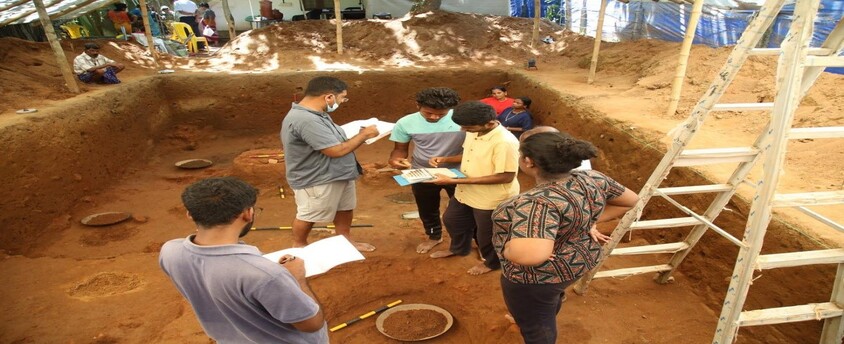
Why in News?
- Pattanam is a village in central Kerala. It is said to be the only multicultural archaeological site on the southwestern coast of the Indian subcontinent.
- Pattanam is a part of Muziris which is called the ‘first emporium’ of the Indian Ocean.
- The Greco-Roman classical age came into direct contact with an ancient South Indian civilization in Muziris.
Excavations in Pattanam:
- The excavations in the region have unearthed less than 1% of the site.
- More than 45 lakh sherds (or ceramic fragments) have been unearthed from the region. These comprise around 1.4 lakh items belonging to regions of the Mediterranean, the River Nile, the Red Sea, the eastern and western Indian Oceans, and the South China Sea.
- The seal of a sphinx was also found, which belongs to the ancient Greek city of Thebes.
- Based on technological, metallurgical, literary, and artistic advances, it is found that there were rigorous cultural and commercial exchanges in Pattanam.
- It is thus inferred that Pattanam was a thriving urban centre that existed from the 5th century B.C. till the 5th century A.D. Moreover, a peak phase was experienced from 100 B.C. to A.D. 300.
- Notably, there is no evidence of the existence of institutionalized religion in ancient Pattanam. Moreover, there are no findings of the graded inequality of the caste system that has described contemporary Kerala and most of India.
- It should be noted that Pattanam lacks sophisticated weaponry. This is in stark contrast to other contemporary sites like Berenike in Egypt and Khor Rori in Oman.
- The fragmentary skeleton remains at graves highlight the “secondary” nature of burial. The dead were first cremated and then osseous remains were ceremoniously buried.
- Furthermore, people of different backgrounds were buried in the same way. Thus suggesting the prevalence of a secular ethos.
- The genotype and ancestry analyses of samples show the link to South Asian, West Asian, and Mediterranean lineages.
- No artefact indicates any religious customs.
- Material evidence highlights that the society lived in harmony with nature, much like the several indigenous societies.
- However, much of the site remains to be unearthed.
UAPA Tribunal Upholds Centre’s Decision to Ban PFI
03, Apr 2023
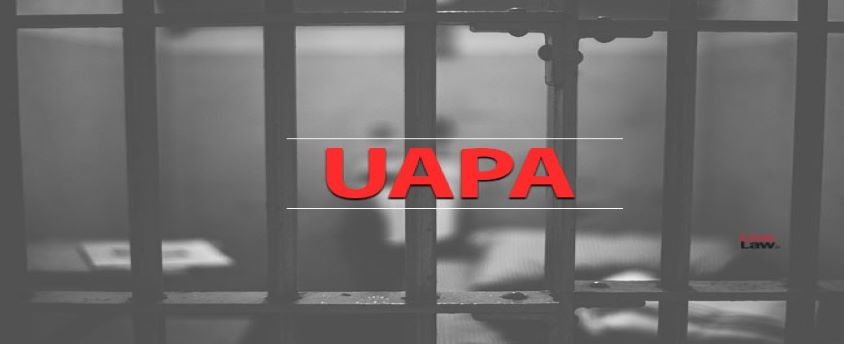
Why in News?
- Recently, five months after its constitution, the Unlawful Activities (Prevention) Tribunal upheld the Centre’s decision to ban Popular fronts of India and its affiliates.
What is the Background of the Issue?
- In September 2022, the Ministry of Home Affairs (MHA) in a gazette notification declared the PFI an “unlawful association” along with “its associates or affiliates or fronts.
- The notification issued by the MHA imposed a ban on the PFI and its associate organizations, including the Rehab India Foundation (RIF) and Campus Front of India, for five years under the Unlawful Activities (Prevention) Act (UAPA), 1967.
About UAPA:
- UAPA passed in 1967 aims at effective prevention of unlawful activities associations in India.
- Unlawful activity refers to any action taken by an individual or association intended to disrupt the territorial integrity and sovereignty of India.
- The Act assigns absolute power to the central government, by way of which if the Centre deems an activity as unlawful then it may, by way of an Official Gazette, declare it so.
- It has death penalty and life imprisonment as highest punishments.
- Under UAPA, both Indian and foreign nationals can be charged. It will be applicable to the offenders in the same manner, even if crime is committed on a foreign land, outside India.
- Under the UAPA, the investigating agency can file a charge sheet in maximum 180 days after the arrests and the duration can be extended further after intimating the court.
- The 2004 amendment, added “terrorist act” to the list of offences to ban organisations for terrorist activities, under which 34 outfits were banned.
- Till 2004, “unlawful” activities referred to actions related to secession and cession of territory.
- In August 2019, Parliament cleared the Unlawful Activities (Prevention) Amendment Bill, 2019 to designate individuals as terrorists if the individual commits or participates in acts of terrorism, prepares for terrorism, promotes terrorism or is otherwise involved in terrorism.
- The Act empowers the Director General of National Investigation Agency (NIA) to grant approval of seizure or attachment of property when the case is investigated by the said agency.
- The Act also empowers the officers of the NIA, of the rank of Inspector or above, to investigate cases of terrorism in addition to those conducted by the DSP or ACP or above rank officer in the state.
What is the UAPA Tribunal?
- The UAPA provides for a tribunal to be constituted by the government for its bans to have long-term legal sanctity.
- It is headed by a retired or sitting judge of a High Court.
- On receiving notification from the Centre, the Tribunal calls upon the concerned association to show cause, within 30 days from the date of the service of such Centre’s notice, that why it should not be declared unlawful.
- After hearing arguments from both sides, the Tribunal can hold an inquiry to decide within 6 months whether there is sufficient evidence to declare an association unlawful association.
- Under the UAPA, the Centre’s notification cannot have an effect until the tribunal confirms the declaration in its order.
Relevant Supreme Court judgements:
- Kedarnath Singh vs State of Bihar: Section 124A has been challenged in various courts in specific cases.
- The validity of the provision itself was upheld by a Constitution Bench in 1962, in Kedarnath Singh vs State of Bihar.
- That judgment went into the issue of whether the law on sedition is consistent with the fundamental right under Article 19 (1) (a) which guarantees each citizen’s freedom of speech and expression.
- The Supreme Court laid down that every citizen has a right to say or write about the government, by way of criticism or comment, as long as it does not “incite people to violence” against the government established by law or with the intention of creating public disorder.
- The Balwant Singh vs State of Punjab (1995) case: In this case, the Supreme Court had clarified that merely shouting slogans, in this case Khalistan Zindabad, does not amount to sedition.
Evidently, the sedition law is being both misunderstood and misused to muzzle dissent.
Criticisms of UAPA:
- The law is often misused and abused. It could be used against political opponents and civil society activists who speak against the government and brand them as “terrorists.”
- The 2019 amendment gives unfettered powers to investigating agencies.
- The law is against the federal structure; given that ‘Police’ is a state subject under 7th schedule of Indian Constitution.
What needs to be done?
- Anti-terror laws should not be used as tool to silence the critics of government.
- A committee may be set up to examine and supervise the process of designatingindividuals as terrorists and investigation of cases with objectivity and fairness.
- Arbitrariness under the law should be checked through judicial review.
Understanding the street dogs-human conflict
31, Mar 2023

Why in News?
- Rising dog-bite cases in India and associated concerns.
Highlights:
- Humans have coexisted with dogs for almost 25000 years. They were domesticated and considered loyal, friendly, and intelligent.
- However, there is a growing intolerance towards various creatures like cats, cows, birds and dogs.
Dog-human conflict and associated concerns:
- It is argued by the author that the Resident Welfare Associations instigate violence against dogs living near resident societies. For instance,
- It was reported by a resident themselves that the child that was bitten to death in Hyderabad would constantly beat and tease animals. The child’s father was informed by the locals.
- For more details on the case, read here: UPSC Exam Comprehensive News Analysis. Mar 8th, 2023
- Residents who feed stray dogs are also targeted.
- It should be noted that dogs become aggressive only when they perceive a threat. They want to protect themselves and their litters from attack if they are hungry, unwell, forcibly relocated, or have witnessed neglect and abuse.
- Earlier, dogs were routinely killed to reduce their population. However, it did not work then and any such efforts in today’s scenario will meet a similar fate.
- Moreover, if there is a vacuum, the space will be occupied by other species like rats, cockroaches, mongooses, etc. For example,
- The London Plague (in 1665) was a consequence of the killing of 250000 dogs and cats. The incident caused the mice population to increase and nearly 70% of the human population was wiped out by the ‘Black Death Pandemic’.
- Similarly, Surat city of India had a plague after removing dogs.
Challenges in controlling the dog population:
- Lack of budget
- Inadequate infrastructure
- Prevalence of corrupt and inefficient practices
- Lack of transparency
- Fascination with foreign breeds of pets
- Existence of illegal pet shops and breeders
Measures adopted by the Government:
- The Union government prohibited the import of pedigree dogs into India in 2016.
- Further, it notified Rules for regulating dog breeders in 2018.
- As per the recommendation of the Law Commission, the Pet Shop Rules were notified in 2018 to regulate the trade of pedigree dogs.
- The Delhi High Court in Dr. Maya D. Chablani v. Radha Mittal recognized the importance of people who look after the native breed of dogs.
- The new ABC rules (2023) have protected community dog caregivers from harassment.
Way Ahead:
- The multiplication of dogs should be checked.
- The World Health Organization and the World Organisation for Animal Health recommended the Animal Birth Control (Dogs) Rules (ABC Rules) in 2001.
- The rules can bring a sustained decline in the population of dogs, rabies infection, and aggression in dogs.
- These rules should be efficiently implemented by the local authorities to scientifically manage the dog population.
- The Union government has issued a new set of ABC rules that address the loopholes in the existing law.
- Instead of the removal of dogs, citizens should demand that municipal bodies formulate and implement the ABC programme in accordance with the new ABC Rules (2023).
- The adoption of Indian dogs should be encouraged. Notably, native dogs have better immune systems than foreign breeds and thus they should be adopted as pets.
- Reports of dog attacks should be verified on the basis of proof.
What is Bilkis Bano Case?
30, Mar 2023

Why in News?
- The Supreme Court has indicated it will primarily focus on the question of Gujarat’s jurisdiction to prematurely release 11 men sentenced to life for the gang rape of Bilkis Bano and the murder of her family during the 2002 riots.
Central idea:
- The Bilkis Bano case is a landmark case of gangrape and mass murder that occurred during the 2002 Gujarat riots in India.
- Bilkis Bano, then a 21-year-old pregnant woman, was raped and her family members were murdered during the riots that followed the Godhra train burning incident.
- The case was initially left unnoticed, but after persistent efforts by Bano and her supporters, the case was reopened and the perpetrators were brought to justice.
Initial investigation and cover-up
- No proper investigation: Despite the gravity of the crime, the initial investigation was not conducted properly.
- Evidence tampered: The medical examination of Bano was conducted after several days, by which time crucial evidence had been lost.
- No FIR registered: The police refused to file a First Information Report (FIR) initially, and when they did, they left out crucial details of the incident.
Reopening of the case:
- Bano and her supporters continued to fight for justice, and in 2004, the case was transferred to the Central Bureau of Investigation (CBI) on the order of the Supreme Court.
- The CBI conducted a thorough investigation and filed a charge sheet against 19 accused persons, including police officers and doctors who had tried to cover up the crime.
- In 2008, the trial began in a Mumbai court.
Conviction and sentencing
- In 2017, after a long legal battle, a Mumbai court convicted 11 accused persons, including one police officer, for gang rape and murders.
- The police officer, who was the main accused, was sentenced to life imprisonment, while the others were given seven years’ imprisonment.
- The court also acquitted seven other accused persons due to lack of evidence.
Key issue: Release of convicts
- In February 2021, the Bombay High Court acquitted five of the convicted persons, citing lack of evidence.
- The court also upheld the life imprisonment of the police officer and reduced the sentence of the other convicts to three years.
- The convicts were released from prison after serving their sentence.
What are the laws on remissions?
- Prisoners are often granted remission of sentences and released on important occasions such as birth and death anniversaries of prominent leaders.
- The President and the Governors have the power to pardon, suspend, remit, or commute a sentence passed by the courts under Articles 72 and 161 of the Constitution.
- Under Section 432 of the Code of Criminal Procedure (CrPC), the state governments also have the power to remit sentences as prisons are a state subject.
- However, the powers of remission of the state government are restricted by Section 433A of the CrPC.
- It mandates a person serving a life imprisonment sentence for an offence where death is a punishment or where a death sentence has been commuted, cannot be released until they have served at least 14 years in prison.
Critical reception of the judgement
- Justice vindicated: Bano and her family members expressed disappointment with the decision of the court to acquit some of the convicts, and they plan to challenge the verdict in the Supreme Court.
- Communal angle to the release: Bano has been a symbol of courage and determination for survivors of sexual violence in India, and her case has highlighted the need for justice and accountability for crimes committed during communal riots.
Significance of the case:
- The Bilkis Bano case is significant as it highlights the issue of communal violence in India and the failure of the authorities to provide justice to the victims.
- The case also underscores the need for the protection of the rights of women and minorities in India.
- The long legal battle fought by Bano and her supporters shows that justice is possible, but it requires persistence, courage and the support of civil society.
The cost of insurance-based funding
29, Mar 2023
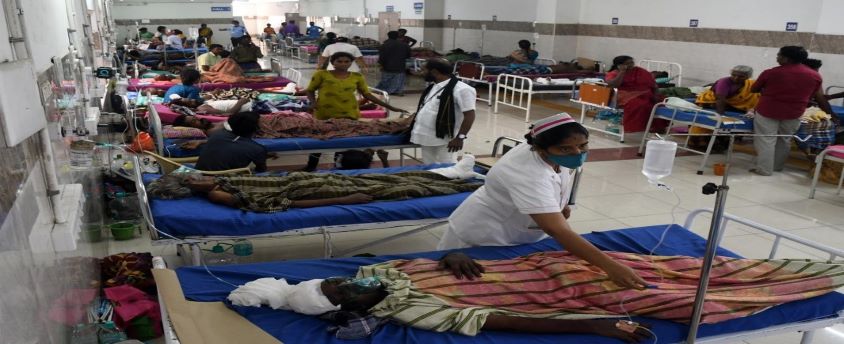
Why in News?
- The Tamil Nadu model of public health is renowned for its success in providing quality health services at an affordable cost especially to the rural people. Tamil Nadu is the only state with a distinctive public health cadre in the district level and also the first state to enact a Public Health Act in 1939.
- The Tamil Nadu public health model has ensured equity in the delivery of health care, led to big improvements in maternal and infant mortality and universal immunisation coverage, and led to a low total fertility rate compared to the all-India average.
- This has been mainly due to changes in funding for healthcare in the last decade. The funding mix varies from grants from the National Health Mission to the Chief Minister’s Comprehensive Health Insurance Scheme (CMCHIS).
Benefits of funding through insurance companies:
- The indirect funding through the insurance companies has ushered in massive changes in the functioning of the public health sector.
- The central gain is the decentralisation of medical and healthcare administration.
- Powers have been substantially transferred to the heads of the department to purchase drugs which have cut red tape.
- Decentralisation has empowered individual departments to prioritise their needs and hasten decisions in patient care in accordance with evidence-based medical advancement.
Issues:
- Due to decentralisation, every department in the medical college has become an individual establishment. These departments compete with one another to maximise profit and minimise losses.
- As a consequence, patients and their illnesses are seen through the lens of indemnity in secondary and tertiary healthcare systems.
- This could lead to the denial of claims, the imposition of high deductibles and copays, and other restrictions that can limit access to care.
- Negotiations with insurance companies have become cumbersome exercises for the public sector hospitals. Administrative delays by insurance companies have shifted the focus of hospitals from patient care, teaching and research to claiming money from companies.
- Contractual appointments of doctors and staff in district health societies have resulted in trust deficit and which leads to a compromise in the quality of service.
- Young doctors under contractual appointments are not even eligible for reservation benefits in post-graduate medical education under the Tamil Nadu government in-service doctor’s reservation scheme.
- Mere profit-loss calculation and treatment of public health as a health industry will lead to an erosion of compassion among health professionals.
- In Tamil Nadu, between 2012 and 2021, ₹7,783 crore was allotted in the Chief Minister’s Comprehensive Health Insurance Scheme (CMCHIS) to insurance companies.
- Of this, only ₹2,895 crore has been claimed by government hospitals and the rest by private hospitals. This disproportionate ‘diversion’ of funds will further shrink funding to public hospitals.
Way Forward:
- A tax-funded model of Universal Health Care would ensure that healthcare services are available to all citizens without discrimination.
- It would also ensure that the burden of healthcare financing is shared by the government and the citizens, with the government taking the responsibility for providing healthcare services to all citizens.
- Such a model would also prioritise primary healthcare services, which are essential for promoting good health and preventing diseases. Additionally, a tax-funded model would ensure transparency and accountability in healthcare delivery.
Internet Shutdowns
29, Mar 2023
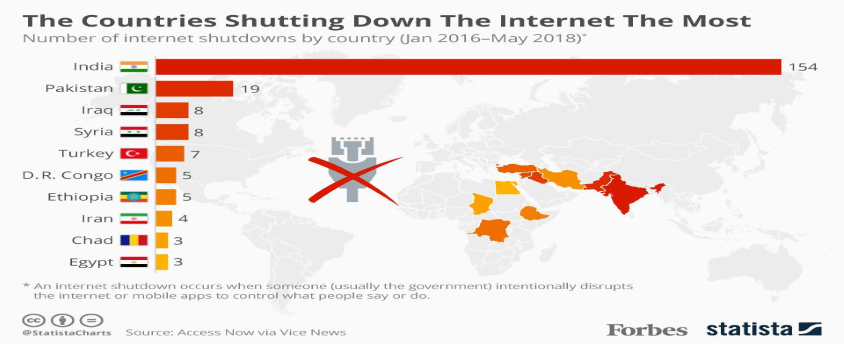
Why in News?
- Suspension of mobile internet by the Punjab government.
Highlights:
- Earlier this month, the Punjab government suspended mobile Internet and SMS services in the State for more than four days in the interest of public safety, to prevent incitement to violence and to prevent disturbance of peace and public order.
- The Software Freedom Law Center (SFLC), which keeps a count of Internet stoppages State-wise, has recorded eight such shutdowns in Punjab.
- Between 2012 and March 2023, the southern States recorded only six such shutdowns in this period. There was no instance of an Internet shutdown in Kerala.
- Elsewhere, except Himachal Pradesh, Mizoram and Sikkim, all the other States recorded at least one such instance, with Jammu and Kashmir, Rajasthan and Uttar Pradesh recording the highest number.
- According to Access Now, a non-profit that defends digital rights, 60% of all the Internet shutdowns recorded between 2016 and 2022 worldwide took place in India.
- Over the past five years, India has recorded the highest number of shutdowns.
- Notably, such shutdowns are never or almost never implemented in most parts of Europe, North and South America and Oceania, while they are rampant in Africa and Asia.
Data collection on Internet shutdowns:
- The Union government does not collate data on Internet shutdowns imposed by the State governments.
- Collection of centralised data was “strongly recommended” by the Standing Committee on Communications and Information Technology, in 2021.
- The Committee wanted the reasons, duration, decision of the competent authority and of the review committees to be noted for every Internet shutdown, and for the information to be made public.
Cost of Internet shutdowns:
- A report by the UN High Commissioner for Human Rights in 2022 noted the significant impact of the shutdown on education and healthcare. Students are unable to access online classes and resources, while doctors and medical professionals are unable to access vital medical information and communicate with patients.
- A 2018 paper published by the Indian Council for Research on International Economic Relations estimated that India lost around $3 billion between 2012 and 2017 due to shutdowns.
- Internet shutdowns have a severe impact on businesses, particularly in sectors such as e-commerce, information technology, and media.
- Shutdowns disrupt supply chains, leading to delays in delivery of goods and services. Small and medium-sized enterprises also face significant losses as they heavily rely on online platforms for sales and marketing.
Supreme Court on banned outfits
27, Mar 2023
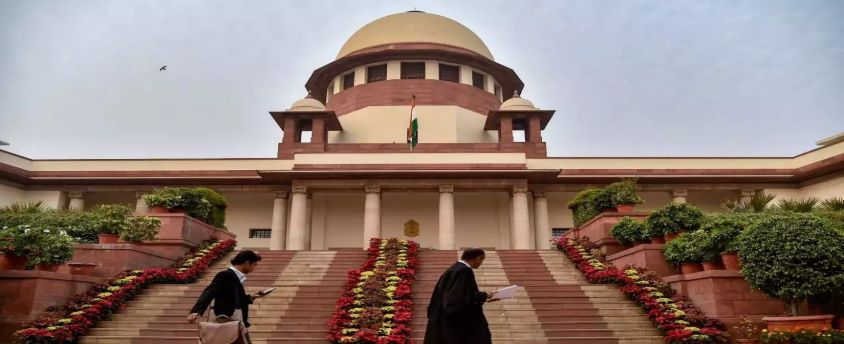
Why in News?
- A three-judge Bench of the Supreme Court on March 24, 2023, clarified that mere membership of an unlawful outfit is an offence under the Unlawful Activities (Prevention) Act (UAPA).
- With this judgement, the Supreme Court has set aside a series of its own judgments which had concluded that “mere membership” — unlike “active membership” — of an unlawful association or organisation did not make a person criminal or a terrorist.
- The court was examining three of its judgments delivered in 2011 — State of Kerala vs Raneef; Arup Bhuyan vs Union of India; and Indra Das vs State of Assam.
- On February 3, 2011, the court acquitted suspected ULFA member Arup Bhuyan, who was held guilty by a TADA court on the basis of his alleged confessional statement, and said mere membership of a banned organisation will not make a person a criminal. Similar views were taken by the court in the two other verdicts.
- The Union government and Assam had appealed against the ruling in the Arup Bhuyan case, following which a two-judge bench referred the matter to a larger bench in 2014.
Supreme Court judgement:
- The Supreme Court clarified that a person who “is or continues to be” even a “mere member” of a banned organisation is liable to be found criminally liable under the UAPA for acting against the sovereignty and integrity of India.
- The judgement referred to Section 10(a)(i) of the UAPA which deals with membership in an unlawful association.
- The provision says that “where an association is declared unlawful by a notification issued under Section 3 which has become effective under sub-section (3) of that section, —(a) a person, who — (i) is and continues to be a member of such association shall be punishable with imprisonment for a term which may extend to two years, and shall also be liable to fine”.
- Under Section 3 of the UAPA, the Union government must openly notify the public when an organisation or association has been declared unlawful. The court reasoned that this logically implies that every member of the organisation would be aware of the ban.
- But a person choosing to continue as a member despite knowing about the ban is acting against the sovereignty of the nation, the court noted.
- The court also clarified that persons who had left the organisation and were not members at the time it was declared unlawful, cannot be held liable under Section 10(a)(i) of the UAPA.
Reasonable restrictions of Fundamental Rights:
- The court referred to Article 19(4), which mandated that the citizens’ right to form unions or associations was subject to the power of the state to make laws to impose “reasonable restrictions” in the interests of the sovereignty and integrity of India or public order or morality.
- The Bench also disagreed with the previous benches relying on certain decisions of the US Supreme Court and pointed out that there are differences in the laws of the two countries.
- Unlike the US, the right to freedom of speech in India is not an absolute right and is subject to reasonable restrictions, and the Constitution permits Parliament to frame the laws taking into consideration the public order and/or the sovereignty of India.
India’s push for semiconductors
25, Mar 2023

Why in News?
- As part of its efforts to encourage the electronics supply chain to India, the Union Government has disbursed close to ₹1,645 crores through performance-linked incentives (PLI) for electronics manufacturers.
Why are countries prioritising semiconductor manufacturing?
- Semiconductor fabrication units or fabs are manufacturing plants that help turn raw materials such as silicon into integrated circuits which are a part of almost all electronic hardware.
- Semiconductor fabrication units or fabs are highly capital-intensive undertakings and require billions of dollars in the case of large facilities.
- Fabs also require a highly reliable and high-quality supply of water, electricity, and insulation from the elements and a high degree of precision, cost and capital are required to make the sophisticated circuits.
- Countries across the world have now realised strategic value associated with the segments of the value chain for fabs.
- As per a report by the Semiconductor Industry Association (SIA), in 2022 China surpassed Taiwan in terms of share of global sales from fabs.
- The U.S. enacted the CHIPS Act in August 2022, which extends about $280 billion in subsidies and investments to encourage manufacturers to set up fabs and make semiconductors in the U.S.
- The government’s Invest India agency says that electronics manufacturing as a whole sector would be worth $300 billion by FY 25–26.
- Further, facilities for assembling finished products have been steadily increasing in number in India.
- However, the number of fabs for making chipsets and displays, which are essential parts of the manufacturing process for electronic devices in the country, is a cause of concern.
- According to the Minister of Electronics and Information Technology, the first semiconductor manufacturing fab will be announced in the coming future.
Opportunities for India
- The Semiconductor Industry Association (SIA) has said that India must rely on its strengths in the electronics manufacturing value chain.
- A significant portion of semiconductor manufacturing involves design and intellectual labour. India is said to have an advantage as a large share of semiconductor design engineers working across the world are either Indians or of Indian origin.
- Further, top chipmaking firms like Intel and NVIDIA have already established large facilities in India and have provided the required exposure to Indian talent.
- Experts feel that China is losing control over such an advantage on account of sanctions and an ageing population.
Way forward
- Setting up display and semiconductor fabs is looked at as one of the strategic and economic goals of India and both the Union as well as the State governments are looking for opportunities to connect with popular brands such as Apple.
- The government is also looking to develop various parts of the ecosystem that promise sustainable growth and fiscal feasibility.
- As per the SIA, rather than setting up “foundry companies”, which turn silicon into semiconductors, countries like India must focus on encouraging companies that specialise in Outsourced Semiconductor Assembly and Test (OSAT).
- Foundry companies require huge capital investment with entry costs alone being close to billions of dollars.
- The OSAT set-ups are involved in the less capital-intensive processes of chipmaking which include assembling the components and undertaking testing.
- OSAT set-ups hence are less expensive and generate better margins.
- Furthermore, like-minded countries must specialise in different aspects of semiconductor manufacturing and come together for distribution which can help solve the geopolitical problem of Chinese dominance.
SC commutes death penalty of Tamil Nadu man
22, Mar 2023

Why in News?
- The Supreme Court has recently commuted the death penalty of a Tamil Nadu man for the kidnap and murder of a seven-year-old boy, the sole “male child” of his parents, who were unable to pay ₹5 lakh ransom for the child’s release.
Constitutional Provision to Grant Pardon: Article 72
- Article 72 of the Constitution empowers the President to grant pardons to persons who have been tried and convicted of any offence in all cases where the:
- Punishment or sentence for an offence against a Union Law,
- Punishment or sentence is by a court-martial (military court), and
- Punishment is a Death sentence.
Pardoning Power of President:
- Article 72 empowers the President the power to grant pardons, reprieves, respites or remissions of punishment or to suspend, remit or commute the sentence of any person convicted of any offence. The meaning of these terms is as follows:
- Pardon: It removes both the sentence and the conviction and completely absolves the convict from all sentences, punishments, and disqualifications.
- Commutation: It denotes the substitution of one form of punishment with a lighter form of punishment.
For example, a death sentence may be commuted to rigorous imprisonment.
- Remission: It implies reducing the period of the sentence without changing its character.
For example, a sentence of rigorous imprisonment for five years may be remitted to rigorous imprisonment for one year.
- Respite: It denotes awarding a lesser sentence in place of one originally awarded due to some special fact, such as the physical disability of a convict or the pregnancy of a woman offender.
- Reprieve: It implies a stay of the execution of a sentence (especially that of death) for a temporary period.
Its purpose is to enable the convict to have time to seek pardon or commutation from the President.
Procedure Followed for Granting Pardon:
- The process starts with filing a mercy petition with the President under Article 72 of the Indian Constitution.
- Such a petition is then sent to the Ministry of Home Affairs for consideration which is then consulted with the concerned State Government.
- After the consultation, recommendations are made by the Home Minister and the petition is sent back to the President.
Purpose of Granting Pardon:
- Pardon may substantially help in saving an innocent person from being punished due to miscarriage of justice or in cases of doubtful conviction.
- The object of conferring this power on the President is two-fold:
- To keep the door open for correcting any judicial errors in the operation of law;
- To afford relief from a sentence, which the President regards as unduly harsh.
Judicial Stand on Pardoning Powers:
- In Maru Ram v Union of India case (1980), the constitutional bench of the Supreme Court of India held that the power under Article 72 is to be exercised on the advice of the Central Government and not by the President on his own at his discretion. And that the advice of the Government is binding on him.
- The Supreme Court in Epuru Sudhakar v Ors. case (2006) to rule out any case of arbitrariness or executive mala fide upheld that the granting of clemency by the President or Governor can be challenged in court on various grounds such as, the order has been passed without application of mind, or the order is mala fide, or the relevant material has been kept out of consideration.
Difference Between Pardoning Powers of President And Governor:
- The scope of the pardoning power of the President under Article 72 is wider than the pardoning power of the Governor under Article 161 which differs in the following two ways:
- The power of the President to grant pardon extends in cases where the punishment or sentence is by a Court Martial but Article 161 does not provide any such power to the Governor.
- The President can grant pardon in all cases where the sentence given is the sentence of death but the pardoning power of the Governor does not extend to death sentence cases.
30th Anniversary of the 73rd and 74th Amendments
15, Mar 2023
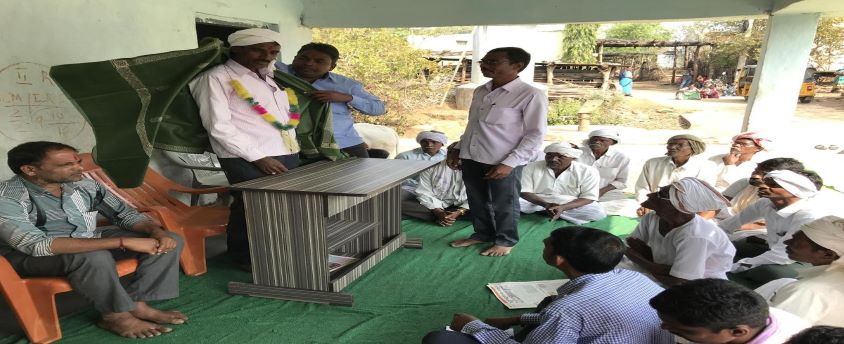
Why in News?
- The year 2023 marks the 30th anniversary of the 73rd and 74th Amendment to the Indian Constitution. But still India’s local government requires many technical, administrative and financial fixes.
What are the 73rd and 74th Constitutional Amendments?
73rd Constitutional Amendment Act:
- Panchayati Raj Institution was constitutionalized through the 73rd Constitutional Amendment Act, 1992.
- This act has added a new Part-IX to the Constitution of India and consists of provisions from Articles 243 to 243 O.
- In addition, the act has also added a new 11th Schedule to the Constitution and contains 29 functional items of the panchayats.
74th Constitutional Amendment Act:
- Urban local governments were constitutionalized through the 74th Amendment Act during the regime of P.V. Narsimha Rao’s government in 1992. It came into force on 1st June 1993.
- It added Part IX -A and consists of provisions from Articles 243-P to 243-ZG.
- In addition, the act also added the 12th Schedule to the Constitution. It contains 18 functional items of Municipalities.
What is the Status of Democratic Decentralisation in India?
Positive Aspects:
- Empowerment of Local Communities: Democratic decentralisation has given more power to local communities to participate in decision-making processes and to implement development projects according to their specific needs and priorities.
- This has led to greater participation of citizens in governance and decision-making processes.
- Accountability and Transparency: Decentralisation has also led to greater accountability and transparency in governance.
- Local governments are more directly accountable to citizens, and decision-making processes are more transparent and open to public scrutiny.
- Promotion of Diversity and Inclusivity: Democratic decentralisation has allowed for greater representation of marginalised communities in decision-making processes.
- This has led to more inclusive policies that address the needs and interests of all citizens, regardless of their social, economic, or cultural background.
Challenges Related to Decentralisation in India:
- Uneven Distribution of Power and Resources: Decentralisation has been implemented unevenly across different states and regions of India, leading to disparities in the distribution of power and resources.
- Some states and regions have been more successful in implementing decentralisation than others, which has led to uneven development outcomes.
- Ceremonial Status to Mayor: The 2nd Administrative Reform Commission noted the Mayor in the Urban Local Government in most states enjoys primarily a ceremonial status.
- In most cases, the Municipal Commissioner, appointed by the State Government has all the powers and the elected Mayor ends up performing the role of the subordinate.
- Infrastructural Loopholes: Many Gram Panchayats (GPs) lack a building of their own and share spaces with schools, anganwadi, and other entities.
- While some have their own building, they lack basic facilities such as toilets, drinking water, and electricity.
- Although Panchayats have internet connections, they are not always functional. Panchayat officials have to visit Block Development offices for any data entry purposes, which delays the work.
Way Forward:
- Strengthening Local Government Institutions: The institutional framework for local governance in India needs to be strengthened by providing them with more autonomy, resources and powers.
- This can be done by revising laws, regulations and procedures that constrain the functioning of local governments
- Capacity Building: Local government officials and elected representatives need to be trained and equipped with the necessary skills and knowledge to effectively carry out their roles and responsibilities.
- This can be achieved through training programs, exchange visits and mentoring.
- Community Participation: The success of democratic decentralisation depends on active participation of citizens in decision-making and implementation of local development plans.
- Community participation can be enhanced through awareness campaigns, public meetings and consultations.
Adopt a Heritage project and Monument Mitras: The Scrutiny
08, Mar 2023
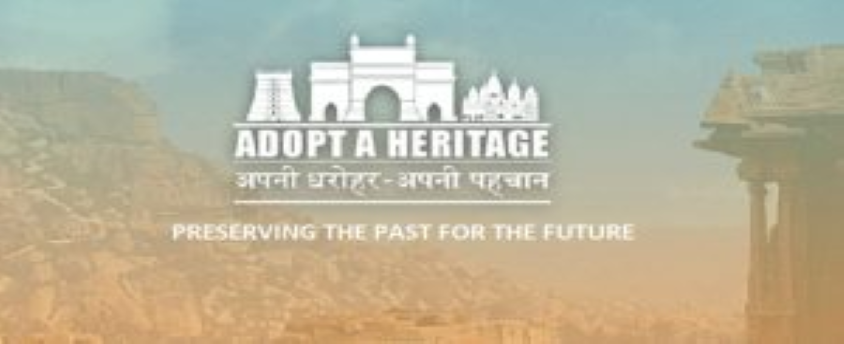
Why in News?
- Businesses that enter agreements with ASI to adopt sites are going to be known as Monument Mitras. The tenfold increase in the number of sites being brought under the ambit of the controversial ‘Adopt a Heritage’ scheme of 2017 raises concerns. Unless the ‘revamped’ scheme is suspended, the nation’s precious pluralistic heritage stands at the threshold of obliteration.
Adopt a Heritage project:
- Initiative of Ministry of Tourism: The ‘Adopt a Heritage’ scheme was launched by the Indian government in September 2017 under the aegis of the Ministry of Tourism, Ministry of Culture, and Archaeological Survey of India (ASI).
- Objective: The main objective of the scheme is to provide world class tourist facilities at the various natural/cultural heritage sites, monuments and other tourist sites to make them tourist friendly, enhance their tourist potential and cultural importance in a planned and phased manner across the country.
- Primary focus: The project primarily focuses on providing basic amenities that include cleanliness, public convenience, drinking water, ease of access for tourists, signage etc. and advanced amenities like TFC, Souvenir shop, Cafeteria etc.
- Monument Mitra: The public, private sector companies and individuals will develop tourist amenities at heritage sites. They would become ‘Monument Mitra’ and adopt the sites essentially under their Corporate Social Responsibility (CSR) activity.
What are the concerns?
- Current plan side-lines the ASI mandate: The current plan also side-lines the mandate of the Archaeological Survey of India (ASI) and abandons The Sarnath Initiative, guidelines devised by the ASI, the Getty Trust, U.S., the British Museum, and National Culture Fund to safe keep excavated objects and present them to visitors in an engaging manner.
- Undermine local communities and their relationships with historical sites: Guided tours led by employees of large businesses who have received permission to adopt a monument may endanger livelihoods of those who have lived near the site and made a living by regaling visitors with stories of its colourful past.
- Excessive wear and tear: The potential of big businesses to underwrite a monument’s illumination is also troubling. Night tourism will also pull electricity away from rural homesteads and hospitals.
- It may alter historical character of monuments which are not under ASI: There are some monuments selected for the scheme that are not protected by the ASI and are in States without Archaeology Directorates. One fears that businesses that sign agreements with the Union Ministry of Culture to adopt these monuments will be able to alter their historical character without much opposition.
What might Corporate India instead do to look after the nation’s-built heritage?
- Businesses can help citizens understand why monuments matter: This can be done by earmarking CSR funds for grants for researching, writing, and publishing high quality textbooks, and developing imaginative and effective ways of teaching history.
- For instance: Corporates might also follow the lead taken by Sudha Murthy and N.R. Narayana Murthy in giving gifts to organizations such as the Bhandarkar Oriental Research Institute in Pune to continue their missions of writing history by rationally coordinating the textual record and the archaeological evidence.
- Skillful conservation: Industrial houses can support the meaningful conservation of heritage buildings by looking within. Their CSR funds can be used to purchase new equipment that release fewer noxious gases that darken and corrode marble buildings and discharge fewer effluents into rivers, thus making these water bodies less likely to serve as breeding grounds of microbes that gather on the walls of ancient buildings erected on riverbanks and cause their decay.
- For instance: In the past, Tata Sons, ONGC, and other companies have regularly contributed funds to organisations training individuals in much needed restoration skills and creating jobs for them.
- Collaborative efforts: The private sector’s resources and expertise may also help the ASI and State Archaeology Directorates to secure monuments from dams, mining projects, defacement, and looting.
Climate change: Significant threat to India’s historical monuments
- Sanchi Stupa: The 3rd-century BC Buddhist monument in Madhya Pradesh is facing a threat from increasing rainfall and humidity. The stone is deteriorating due to the changes in weather patterns, leading to the loss of carvings and sculptures.
- Mahabalipuram Monuments: The 7th-century rock-cut monuments in Tamil Nadu are facing a threat from sea-level rise and erosion. The monuments, which are located close to the shore, are being battered by the waves, leading to the loss of sculptures and carvings.
- Sun Temple, Konark: The 13th-century temple, made of Khondalite stone, is facing a threat from rising temperatures and humidity. The stone is expanding and contracting due to the changes in temperature, leading to cracks and erosion.
- Hampi Monuments: The 14th-century monuments in Karnataka are facing a threat from heavy rainfall and flooding. The monuments, which are made of granite, are being eroded by the rainwater, leading to the loss of carvings and sculptures.
- Rajasthan’s Shekhawati’s murals: Shekhawati is known for its beautifully painted havelis with intricate frescoes and murals. Greater fluctuations in temperature are peeling away Shekhawati’s murals.
- Ladakh’s stucco houses: Higher rainfall is leading Ladakh’s stucco houses to crumble. The traditional way of building houses in Ladakh is under threat due to climate change, which is affecting the durability of the structures.
- Taj Mahal: The monument built in the 17th century, is facing a threat from rising pollution and changing weather patterns. The white marble is turning yellow due to air pollution.
- Sea forts in Maharashtra: Rising sea levels are leading to water percolation into forts along Maharashtra’s coast. Salination is eating into their foundations.
Conclusion:
- Currently, India’s progress in diverse fields is being projected at G-20 events across the nation. By embracing forward-thinking principles of historical preservation, businesses, government agencies, and civil society groups can showcase India’s genuine progress in this arena. Maybe their efforts will inspire more citizens to participate in the pressing task of safeguarding India’s pluralistic heritage.
Section 126 of Representation of the People Act of 1951
01, Mar 2023
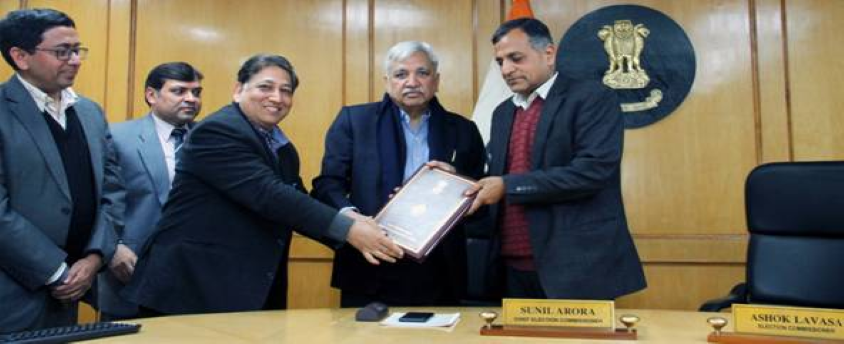
Why in News?
- The Election Commission (EC) has asked social media platform Twitter to take down a video post on Meghalaya’s Deputy Chief Minister as its content was found to be in violation of the provisions of the Representation of the People Act of 1951.
- Section 126 of the Representation of the People Act
- Section 126 of the Representation of the People Act (RP Act), 1951, inter-alia, prohibits election campaign activities through public meetings, processions, etc.
- Section 126 of the RP Act, 1951 deals with the prohibition of public meetings during a period of 48 hours ending with an hour fixed for the conclusion of the poll.
According to Section 126 (1):
- Section 126(1)(a): No person shall hold, attend, or address any public meeting or procession in connection with an election.
- Section 126(1)(b): No person shall display to the public any election matter by means of cinematograph, television or other similar means.
- Section 126(1)(c): No person shall propagate any election matter to the public in any polling area during the period of 48 hours ending with the hour fixed for the conclusion of the poll for any election in that polling area.
- Section 126 (2) of the RP Act provides the provisions for punishment with imprisonment up to two years or a fine, or with both for individuals who violate the provisions of Section 126 (1) of the RP Act.
Transparency in OTT regulation
28, Feb 2023
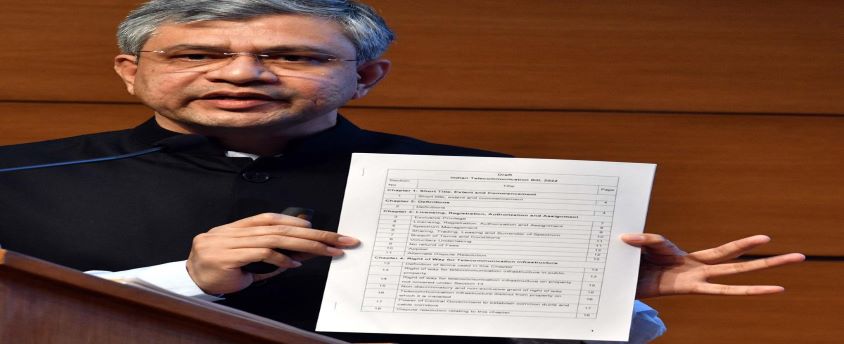
Why in News?
- The Union government enacted the Information Technology (Guidelines For Intermediaries And Digital Media Ethics Code) Rules, 2021 in February 2021.
- The Rules largely cover OTT platforms and social media. They provide for a grievance redressal mechanism and a code of ethics.
- The Ministry of Information and Broadcasting (I&B) was given the task of regulating content on OTT and online platforms under this rule.
Global Approach:
- The European Union has implemented regulations such as the Audiovisual Media Services Directive (AVMSD) which requires OTT services to follow certain rules such as requiring the inclusion of European content in their libraries and allowing parental controls.
- China has imposed strict regulations on OTT services, including requiring foreign OTT services to partner with local companies, and subjecting them to content censorship and other regulations.In Singapore, the Infocomm Media Development Authority is the common regulator for different media. Aside from instituting a statutory framework and promoting industry self-regulation, its approach to media regulation emphasizes on promoting media literacy through public education.
- India’s approach on OTT regulation can be termed as ‘co-regulation’ model where there is ‘self-regulation’ at the industry level and final ‘oversight mechanism’ at the Ministry level.
Issues with media literacy:
- General public lacks awareness about 2021 OTT rules due to its complexities.
- The rules contain vague and broad definitions of terms such as “offensive content”, “good taste and decency”, and “harmful”. This can lead to confusion and arbitrary enforcement, with platforms potentially over-censoring content to avoid penalties.
- The Rules mandate the display of contact details relating to grievance redressal mechanisms and grievance officers on OTT websites/interface. However, compliance is very low. In many cases, either the complaint redressal information is not published or published in a manner that makes it difficult for a user to notice easily. In some cases, the details are not included as part of the OTT app interface.
- There is also a lack of transparency in the appointment of the oversight mechanism, which has been criticized for potentially having a chilling effect on free speech.
Way Forward: Towards Transparency
- The Ministry shall ensure uniformity in the way OTT publishers display key information relating to their obligations, timelines for complaint redressal, contact details of grievance officers for greater media literacy among the general public.
- The OTT industry associations could be mandated to run periodic campaigns in print and electronic media about the grievance redressal mechanism.
- The interpretation of age rating (UA 13+, for example) and the content descriptors (‘violence’, for instance) could be in the respective languages of the video (apart from English) and for a mandatory minimum duration.
- The Rules could also provide for clear guidelines to ensure that a film’s rating is prominent and legible in advertisements and promos of OTT content in print and electronic media.
- A periodic audit of the compliance by each OTT platform may be undertaken by an independent body.
- OTT providers and self-regulatory bodies can upload the details of grievances and redressal decisions on a dedicated website, which will be visible for the public and government authorities.
- This approach will aid in enhancing transparency.
- Financial penalties on erring entities may also be provided in the rules.
Digital Personal Data Protection Bill: Need A Pre-legislative
21, Feb 2023
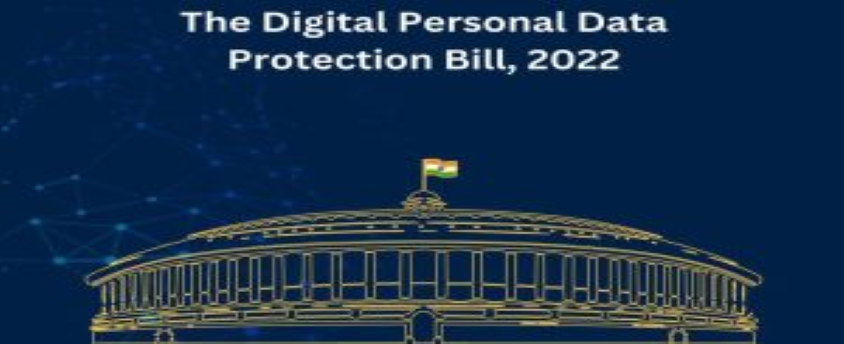
Why in News?
- The Ministry of Electronics and Information Technology has drafted a Digital Personal Data Protection (DPDP) Bill. A data protection law must safeguard and balance peoples’ right to privacy and their right to information, which are fundamental rights flowing from the Constitution. Unfortunately, this Bill fails on both counts.
Why do we need data protection?
- Increasing internet use: India currently has over 750 million Internet users, with the number only expected to increase in the future.
- Data breaches: At the same time, India has among the highest data breaches in the world. Without a data protection law in place, the data of millions of Indians continue to be at risk of being exploited, sold, and misused without their consent.
- Individual privacy: Data monetization may happen at cost of individual privacy. The most sought-after datasets are those that contain sensitive personal data of individuals, ex. medical history, and financial data.
- Lack of writ proceedings against corporate action: Unlike state action, corporate action or misconduct is not subject to writ proceedings in India. This is because fundamental rights are, by and large, not enforceable against private non-state entities. This leaves individuals with limited remedies against private.
DPDP Bill, 2022 is based on seven principles
- According to an explanatory note for the bill, it is based on seven principles-
- Lawful use: The first is that “usage of personal data by organisations must be done in a manner that is lawful, fair to the individuals concerned and transparent to individuals.”
- Purposeful dissemination: The second principle states that personal data must only be used for the purposes for which it was collected.
- Data minimisation: Bare minimum and only necessary data should be collected to fulfill a purpose.
- Data accuracy: At the point of collection. There should not be any duplication.
- Duration of storage: The fifth principle talks of how personal data that is collected cannot be “stored perpetually by default,” and storage should be limited to a fixed duration.
- Authorized collection and processing: There should be reasonable safeguards to ensure there is “no unauthorised collection or processing of personal data.”
- Accountability of users: The person who decides the purpose and means of the processing of personal data should be accountable for such processing.
Why the Bill must be put through a process of rigorous pre-legislative consultation?
- Dilutes the provisions of the Right to Information (RTI) Act: The Bill seeks to dilute the provisions of the Right to Information (RTI) Act, which has empowered citizens to access information and hold governments accountable. It is behind the cloak of secrecy that the rights of individuals are most frequently abrogated, and corruption thrives.
- Fails to safeguard right to privacy: Proposed Bill creates wide discretionary powers for the Central government and thus fails to safeguard people’s right to privacy.
- For instance: Under Section 18, it empowers the Central government to exempt any government, or even private sector entities, from the provisions of the Bill by merely issuing a notification.
- The Bill does not ensure autonomy of the Data Protection Board: Given that the government is the biggest data repository, it was imperative that the oversight body set up under the law be adequately independent to act on violations of the law by government entities. The Bill does not ensure autonomy of the Data Protection Board, the institution responsible for enforcement of provisions of the law.
- Government direct control over the Data Protection Board: The Central government is empowered to determine the strength and composition of the Board and the process of selection and removal of its chairperson and other members.
- Serious apprehensions of its misuse by the executive: The Central government is also empowered to assign the Board any functions under the provisions of this Act or under any other law.
- Going digital by design fails to those who do not have meaningful access: The Bill stipulates that the Data Protection Board shall be ‘digital by design’, including receipt and disposal of complaints. As per the latest National Family Health Survey, only 33% of women in India have ever used the Internet. The DPDP Bill, therefore, effectively fails millions of people who do not have meaningful access to the Internet.
Conclusion:
- The government has been given the power to exempt not only government agencies but any entity that is collecting user data, from having to comply with the provisions of this bill when it is signed into law.
Special Category Status to States
20, Feb 2023

Why in News?
- Central government will not consider demands for “special category status” for any state.
About the News:
- States such as Odisha (vulnerability to natural disasters), Andhra Pradesh and Bihar (backwardness) have been pushing for “special category status” for some years now.
- The 14th Finance commission has clearly said no special status can be given.
What is Special Category Status (SCS)?
- There is no provision of SCS in the Constitution; the Central government extends financial assistance to states that are at a comparative disadvantage against others.
- The concept of SCS emerged in 1969 when the Gadgil formula (that determined Central assistance to states) was approved.
- First SCS was accorded in 1969 to Jammu and Kashmir, Assam and Nagaland.
- Over the years, eight more states were added to the list — Arunachal Pradesh, Himachal Pradesh, Manipur, Meghalaya, Mizoram, Sikkim, Tripura and, finally, in 2010, Uttarakhand.
- Until 2014-15, SCS meant these 11 states received a variety of benefits and sops.
What are the differences between Special Status and Special Category Status?
- The constitution provides special status through an Act that has to be passed by 2/3rds majority in both the houses of Parliament whereas the special category status is granted by the National Development Council, which is an administrative body of the government.
- For example, Jammu and Kashmir enjoyed a special status as per Article 370 and also special category status as per Article 371.
- But now Article 35A has been scrapped and it has become a union territory with legislature. Now, both Special Status and Special Category status doesn’t apply to J&K anymore.
- The Ministry of Home Affairs (MHA) is holding consultations with the Union Territories of Jammu and Kashmir (J&K) and Ladakh to grant them “special category status” on the lines of Article 371 of the Constitution.
What are the criteria for Special Category Status?
- Hilly and difficult terrain
- Low population density or sizeable share of tribal population
- Strategic location along borders with neighbouring countries
- Economic and infrastructural backwardness
- Non-viable nature of state
Who grants Special Category status to states?
- The decision to grant special category status lies with the National Development Council, composed of the prime minister, union ministers, chief ministers and members of the planning commission, who guide and review the work of the commission.
- Special category status for plan assistance has been granted in the past by the National Development Council (NDC) to some states that are characterized by a number of features necessitating special consideration.
What are the Benefits confer to the states with special category status?
- The central government bears 90 percent of the state expenditure on all centrally-sponsored schemes and external aid while rest 10 percent is given as loan to state at zero percent rate of interest. Usually, the ratio for general category States is 70% loan and 30% grant.
- Preferential treatment in getting central funds.
- Concession on excise duty to attract industries to the state.
- 30 percent of the Centre’s gross budget also goes to special category states.
- These states can avail the benefit of debt-swapping and debt relief schemes.
- States with special category status are exempted from customs duty, corporate tax, income tax and other taxes to attract investment.
- Special category states have the facility that if they have unspent money in a financial year; it does not lapse and gets carry forward for the next financial year.
What are the concerns?
- Considering special status to any new State will result in demands from other States and dilute the benefits further.
- It is also not economically beneficial for States to seek special status as the benefits under the current dispensation are minimal.
- Therefore, States facing special problems will be better off seeking a special package.
Shaping a more disabled-friendly digital ecosystem
17, Feb 2023
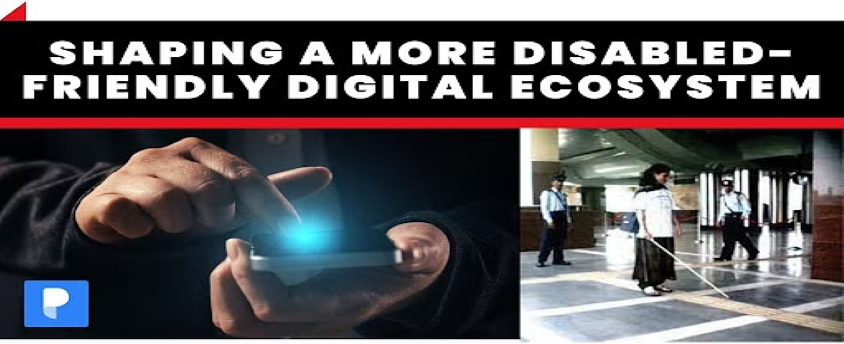
Why in News?
- As per the World Health Organization, 16% of the global population is disabled.
- However, 2.21% of the disabled population in India estimated in Census 2021 appears to be a gross underestimation.
- Technology has great potential to level the playing field for the disabled. However, it can also reinforce barriers, if not designed as per their needs.
- It was found in 2020 that India has 750 million Internet/smartphone users.
- If the 16% figure is applied, it implies that there are roughly 12 crore internet/smartphone users with disabilities.
Assessment of the situation through a study:
- For an evidence-based assessment of the situation of technology and its accessibility for the disabled section, a report was prepared.
- In the study, ten widely used apps across five sectors were studied. These apps are Zomato, Swiggy, PayTM, PhonePe, Amazon, Flipkart, Uber, Ola, WhatsApp, and Telegram.
- Moreover, the Web Content Accessibility Guidelines were used to evaluate the app.
- Web Content Accessibility Guidelines is a set of globally recognized parameters to determine disabled-friendly attributes of an app or website.
- It was found that 4 apps were ranked “low” in accessibility and 5 apps were ranked “medium”.The results highlight the immediate need to work on creating a disabled-friendly infrastructure both physical and digital.
- The aim of launching this report and rating index is to start discussions on digital accessibility, product design, and the development process.
- In the second phase of this report, the research group would collaborate with service providers and help them design practices and processes for improving app accessibility and educate the stakeholders about people with disabilities.
- It will further help in changing attitudes around disability, specifically within the business community, as they will move away from a charity-based approach to a rights-based and investment outlook.
Use of Artificial Intelligence:
- Artificial Intelligence (AI) can further help in automating the accessibility testing process.
- It can also help in analyzing the feedback from users with disabilities at a scale to provide insights to developers and manufacturers.
Ladakh, a fragile region, needs autonomy
17, Feb 2023

Why in News?
- Ladakh residents demanding special constitutional status.
Highlights:
- The residents of Ladakh would gather in Delhi (on 15th February 2023), as they agitate for a special constitutional status for Ladakh.
- A special constitutional status for the region would allow its residents to decide on a development approach that protects the fragile ecological and cultural heritage of Ladakh.
Recent developments in this direction:
- Sonam Wangchuk, a renowned educationist and inventor, began a fast in the open in sub-zero temperatures on 26 January 2023.
- On 31st January 2023, a large demonstration was held in lay with over 20000 people. Almost a fortnight before this demonstration, the Leh Apex Body and the Kargil Democratic Alliance (the two most powerful political and cultural organizations) rejected a committee established to examine the status issue.
- Moreover, student groups and civil society groups have ramped up their demand for constitutional safeguards.
Background details about Ladakh:
- Ladakh was an independent kingdom for almost 1000 years. It was later integrated into Jammu and Kashmir (J&K).
- It has a cold desert ecosystem that harbours rare mammals such as the wild yak and the snow leopard apart from diverse flora. The economy and society of the region are mainly dependent on high-altitude pastoralism, agriculture, and trade.
Associated concerns:
- The people of Ladakh always demanded the region’s status as a Union Territory (UT). However, after it was granted in 2019, it was soon realized that the real need for a relatively free and autonomous region with substantial local employment opportunities was a distant dream.
- The Union Government in 2019 announced that Ladakh would be granted a special constitutional status. Even the Sixth Schedule status was promised to the region.
- Due to the fragile ecosystem, the region cannot bear heavy human activity. Additionally, it is already reeling under the pressure of heavy infrastructure development, intense armed forces presence, and excessive tourism. For instance,
- There is an increasing commercial interest in tourism, mining, hydropower, and other natural resources in the region.
- Big corporations are raising their investments.
- A new airport is being constructed and roadways into the unexploited Zanskar region are also being ramped up.
- A large mega-solar power project is also proposed in the ecologically fragile region of Changthang.Such developments have increased the risks of landslides, erosion, wildlife disturbance, etc.
- According to a study by Kalpvriksh in 2019, it was found that despite having an Autonomous Hill Development Council (AHDC) since 1995, the decision-making is mainly dominated by Srinagar and Delhi.
Way Ahead:
- Ladakh and Delhi should work together. For instance, a Hill Council decision for organic agriculture in Ladakh can be supported by the centre by asking the armed forces to purchase locally grown and made items.
- Communities should be supported in their collective rights over grasslands through the Forest Rights Act. Tourism in the region should consider ecological sensitivity and should be majorly run by the community.
- Initiatives like livelihoods sensitive to Ladakh’s ecology, decentralized solar energy, and sustaining the food and agricultural heritage of the region should be supported.
Highest number of custodial deaths reported in Gujarat in the last 5 years
17, Feb 2023
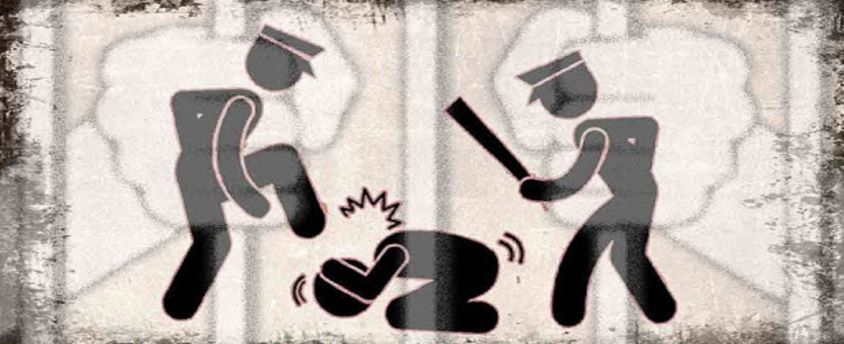
Why in News?
- According to the Ministry of Home Affairs (MHA), the highest number of custodial deaths has been reported in Gujarat (80) In the last five years.
What is Custodial Death?
- When an alleged accused has been prosecuted or killed before receiving the orders of such prosecution from the court of law is known as custodial violence/death.
- It violates the fundamental rights of a citizen under Article 14 (Right to Equality), 21 (Right to Life), and 22 (Protection against arrest and detention in certain cases) of the Indian Constitution.
Data Related to Violence in Custody:
- According to National Crime Records Bureau (NCRB) data, between 2001 and 2018, only 26 policemen were convicted of custodial violence despite 1,727 such deaths being recorded in India.
- Only 4.3% of the 70 deaths in 2018 were attributed to injuries during custody due to physical assault by police.
- Except in Uttar Pradesh, Madhya Pradesh, Chhattisgarh and Odisha, no policeman was convicted for such deaths across the country.
- Apart from custodial deaths, more than 2,000 human rights violation cases were also recorded against the police between 2000 and 2018. And only 344 policemen were convicted in those cases.
Reasons for Low Conviction:
- Most of custodial deaths were attributed to reasons other than custodial torture, which included suicide and death in hospitals during treatment.
Reasons Behind Custodial Violence:
- Absence of Strong Legislation: India does not have an anti-torture legislation and is yet to criminalise custodial violence, while action against culpable officials remains illusory.
- Institutional Challenges: The entire prison system is inherently opaque giving less room to transparency.
- Excessive Force: The use of excessive force including torture to target marginalised communities and control people participating in movements or propagating ideologies which the state perceives as opposed to its stature.
- Not Adhering to International Standard: Although India has signed the United Nations Convention against Torture in 1997 its ratification still remains.
- While Signing only indicates the country’s intention to meet the obligations set out in the treaty, Ratification, on the other hand, entails bringing in laws and mechanisms to fulfil the commitments.
Constitutional and Legal Provisions:
- Protection from torture is a fundamental right enshrined under Article 21 (Right to Life) of the Indian constitution.The right to counsel is also a fundamental right under Article 22(1) of the India constitution.
- Section 41 of Criminal Procedure Code (CrPC) was amended in 2009 to include safeguards under 41A, 41B, 41C and 41D, so that arrests and detentions for interrogation have reasonable grounds and documented procedures, arrests are made transparent to family, friends and public, and there is protection through legal representation.
Way Forward:
- India should ratify the UN Convention Against Torture: It will mandate a systematic review of colonial rules, methods, practices and arrangements for the custody and treatment of persons subjected to any form of arrest, detention or imprisonment.
- Police Reforms: Guidelines should also be formulated on educating and training officials involved in the cases involving deprivation of liberty because torture cannot be effectively prevented till the senior police wisely anticipate the gravity of such issues and clear reorientation is devised from present practices.
- Access to Prison: Unrestricted and regular access to independent and qualified persons to places of detention for inspection should also be allowed. CCTV cameras should be installed in police stations including in the interrogation rooms.
- Surprise inspections by Non-Official Visitors (NOVs) should also be made mandatory which would act as a preventive measures against custodial torture which has also been suggested by Supreme Court in its landmark judgment in the DK Basu Case in 2015.
- Implementation of Law Commission of India’s 273rd Report: The report recommends that those accused of committing custodial torture – be it policemen, military and paramilitary personnel – should be criminally prosecuted instead of facing mere administrative action establishing an effective deterrent.
Not a pipe dream
15, Feb 2023

Why in News?
- Increased budget outlay for Jal Jeevan Mission.
Highlights:
- The aim of Jal Jeevan Mission (JJM) is to provide functional piped water to every rural household by 2024.
- A fully functional tap water connection means a household gets at least 55 litres of potable water per capita per day throughout the year.
- The Budget 2023-24 has allotted approximately ₹69684 crores for the scheme. It is a 27% increase as compared to the revised estimates of 2022 (₹54808 crores).
- However, it is argued that out of the targeted 19.3 crore rural households, only 3.2 crores had piped water in August 2019.
- And the JJM dashboard on the official website of the Ministry of Jal Shakti shows that around 11 crore households (57% of the targeted beneficiaries) have access to tap water (as on February 2023).
- With just 12 months remaining, it would be difficult to ensure that the remaining 47% is also covered.
The state-wise details of the scheme:
- The states which have reported 100% coverage of eligible households with piped water are Goa, Gujarat, Haryana, and Telangana.
- Punjab and Himachal Pradesh have coverage of nearly 97%.
- Apart from the above, only 10 more states have reached 60% coverage.
- Large and populous states like Uttar Pradesh and Rajasthan have reported only 30% coverage. Madhya Pradesh has covered around 47% of the targeted beneficiaries.
Associated Concerns:
- It is suggested that despite having a tap connection, village households depend on their local groundwater resources because of the inadequate quality of supplied tap water.
- According to a sample survey of nearly 3 lakh eligible households (commissioned by the Ministry of Water Resources) only three-fourths reported that water was provided seven days a week.
- It was also found that on average water was supplied for only three hours a day.
- More than 90% of institutions (Anganwadis and schools) reported access to tap water. However, many of them complained about the high levels of chlorine apart from bacterial contamination.
- It is also found that the current statistics are based on self-reporting and not certified by a third party.
- Some states like Bihar have highlighted that most of their connections were provided through state funds instead of JJM.
Way Ahead:
- Instead of aiming for a numerical target, the government should focus on ensuring the quality and consistency of tap water adoption in rural areas.
- Moreover, the Centre should also help states with the lowest adoption and largest population, instead of focusing on states that are close to the finishing line.
Assam Accord
14, Dec 2022

Why in News?
- A Constitution Bench on Tuesday listed for January 10, 2023 a series of long-pending petitions challenging Section 6A of the Citizenship Act, 1955 which allows citizenship to illegal immigrants, mostly from neighbouring Bangladesh, who entered Assam before March 1971.
What is the Section 6A of the Citizenship Act, 1955?
- The section 6A in the Citizenship Act, 1955 contains the provisions with respect to citizenship of persons covered by the Assam Accord (1985).
- This section was introduced through an amendment made in 1985, in the Citizenship Act, 1955. The section 6A of the act says that all those who came to Assam on or after 1 January, 1966, but before 25th March, 1971 from the specified territory (it includes all territories of Bangladesh at the time of commencement of the Citizenship (Amendment) Act, 1985), and since then are residents of Assam, must register themselves under section-18 for citizenship.
- Therefore, this act fixes March 25, 1971 as the cut-off date for granting citizenship to Bangladeshi migrants in Assam.
What is Assam Accord?
- The Assam Accord (1985) was a Memorandum of Settlement (MoS) signed between representatives of the Government of India and the leaders of the Assam Movement in New Delhi on 15 August 1985.
- The accord brought an end to the Assam Agitation and paved the way for the leaders of the agitation to form a political party and form a government in the state of Assam soon after.
- As per the Accord, those Bangladeshis who came between 1966 and 1971 will be barred from voting for ten years. The Accord also mentions that the international borders will be sealed and all persons who crossed over from Bangladesh after 1971 are to be deported.
- Though the accord brought an end to the agitation, some of the key clauses are yet to be implemented, which has kept some of the issues festering.
Assam-Meghalaya Border Dispute
02, Dec 2022

Why in News?
- Recent killing of 6 personnel in Assam police firing while catching timber smugglers from Meghalaya has flared up the Assam-Meghalaya boundary dispute.
What’s the dispute?
- The boundary dispute between Assam and Meghalaya has lingered for 50 years. However, the effort to resolve it gained pace in recent times.
- Assam and Meghalaya share an 885-km-long border. Meghalaya was carved out of Assam under the Assam Reorganisation Act, 1971, a law that it challenged, leading to disputes.
- As of now, there are 12 points of dispute along their borders. These include the areas of Upper Tarabari, Gazang reserve forest, Hahim, Langpih, Borduar, Boklapara, Nongwah, Matamur, Khanapara-Pilangkata, Deshdemoreah Block I and Block II, Khanduli and Retacherra.
- Out of the 12, border disputes along six sectors have been partially resolved last year (2021).
About Langpih:
- A major point of contention between Assam and Meghalaya is the district of Langpih in West Garo Hills bordering the Kamrup district of Assam.
- Langpih was part of the Kamrup district during the British colonial period but post-Independence, it became part of the Garo Hills and Meghalaya.
- Assam considers it to be part of the Mikir Hills in Assam. Meghalaya has questioned Blocks I and II of the Mikir Hills -now Karbi Anglong region – being part of Assam. Meghalaya says these were parts of erstwhile United Khasi and Jaintia Hills districts.
Assam and border issues:
- The states of the Northeast were largely carved out of Assam, which has border disputes with several states. Assam’s border disputes with Arunachal Pradesh and Nagaland are pending in the Supreme Court.
Impact of Pandemic on Vulnerable Section: SC, ST and OBC
11, Nov 2022
Why in News?
- SC/ST and OBC have been impacted disproportionately by the pandemic as various social indicators shows vulnerabilities of this communities.
Impact of pandemic on education:
- On the one hand, with policies mandating the promotion of students, promotion rates at the secondary school level rose significantly and repetition rates nosedived during the pandemic years (2020-21 and 2021-22).
- On the other, the inability to attend physical school and the lack of access to digital education caused a massive drop in learning levels after the COVID-19 outbreak.
Impact on education of SC, ST and OBC:
- Increasing promotion rate: Notably, the promotion rate among Scheduled Caste (SC) and Scheduled Tribe (ST) students increased sharply after the outbreak. The promotion rate among Other Backward Classes (OBC) students continued to rise unabated.
- Repetition rate declining: The repetition rates too drastically came down in the pandemic years with some 1% students repeating their class across all communities. Notably, the gap in the repetition rate between SC/ST students and general category students declined greatly after the outbreak.
- Declining learning outcomes: While the promotion rate surged and the repetition rate declined, the marks scored by school students in National Achievement Survey (NAS) exams dropped significantly across classes and in most subjects.
- Disproportionate impact: There is a disproportionately greater impact on SC and ST students as their learning outcomes reduced the most while their promotion rates saw the highest degree of rise among all the communities.
Impact on livelihood of vulnerable sections of the society
- High job loss probability: The researchers found that compared to workers from upper castes, the probability of job loss was three times higher for those who are SC and two times higher for OBC workers.
- Comparatively higher unemployment: In December 2019, 39% of upper caste workers were employed and by April 2020, the percentage had dropped to 32%. The fall was more pronounced for SC workers, 44% of whom were employed in December 2019, but only 24% were employed in April 2020. For OBCs and STs the fall was from 40% to 26% and 48% to 33%, respectively.
- Poor education poor Opportunities: According to researchers, the upper castes are endowed with higher human capital, i.e. educational achievement, and are in jobs less vulnerable to pandemic disruption. What is surprising is that the impact on scheduled caste is three times worse. Not only has the pandemic exposed the pre-existing inequities but has amplified them.
How women are affected due to the pandemic?
- Effect on mental health: Women in low-caste women may be at a greater risk for worse mental health outcomes and higher perceived loneliness relative to high-caste women.
- Social exclusion and job losses: Prior research has found that low-caste women have been found to experience greater social exclusion greater job loss and greater barriers to healthcare and thus may experience both worse mental health and higher loneliness.
- Rising loneliness: Women in SC/ST and OBC groups will experience worse mental health, and higher perceived loneliness relative to women in the general caste group. We expect that this difference will be robust even when accounting for sociodemographic factors.
- Victims of systemic disadvantage: Women in general and women of weaker sections in particular, are victims of multiple systemic disadvantages, which exacerbated during the pandemic. Rural women, especially the female wage workers, endured greater socio-economic difficulties as their livelihood opportunities were abruptly halted by the lockdown.
- Visible gendered impact of pandemic: There is nothing natural in the gendered impact of pandemic, but the social norms and behaviour put them at greater risks due to unequal gender preference that is inbuilt in the social structure and culture.
Conclusion:
- Pandemic have disproportionately affected the Indian society. Whether it is access to healthcare or vaccination SC, ST and OBC had a disadvantage. Lot of studies and research have assessed the caste specific impact of coronavirus and projected the dismal state of vulnerable groups. Government must look all these data while drafting the future policies for vulnerable communities.
SC Enforces a Landmark Ruling on Death Penalty
09, Mar 2022

Why in News?
- More than four decades after a landmark ruling on death sentence cases, a bench in the Supreme Court has made psychological evaluation of the condemned prisoner mandatory.
What has the Court said?
- Taking a cue from the Bachan Singh verdict, justice Lalit, in a series of death sentences cases, has recently held that “complete assistance” to the court in such matters would necessitate the production of not just the evidence in the case but also the latest state of the mental health of the prisoner.
- It has also sought a report on the inmate’s conduct at the time of examining whether the gallows remains the only Fitting Punishment.
Supreme Court’s verdict in Bachan Singh vs State of Punjab (1980):
- This verdict established the doctrine of “rarest of rare” crime in Handing down Capital punishment while mandating a comparative analysis of aggravating and mitigating circumstances in connection to the accused.
- The judgment laid down that a court must scrutinise both the crime as well as the criminal, and then decide whether death penalty is the only suitable Punishment in the facts of the case.
- Emphasis is to be also laid on the aggravating and mitigating factors which are dependent upon the facts and circumstances of the case.
Machi Singh vs State of Punjab (1983):
- In this case, the Supreme Court elucidated the doctrine of “rarest of rare” and set down some Guiding principles in the Death Sentences cases.
- The Aggravating circumstances included the manner in which the crime was committed, motive for Committing the crime, severity of the crime, and the Victim of the crime.
- The Mitigating Circumstances consisted of the possibility of reformation and rehabilitation of an accused, his mental health and his antecedents.
What has the Court said on Prolonging Death Sentences and Review Petitions?
- In 2014, the Supreme Court ruled that unexplained delay in execution was a ground for commutation of death penalty, and an inmate, his or her kin, or even a public-spirited citizen, could file a writ petition seeking such commutation.
- It held that prolonging execution of death sentence has a “dehumanising effect” on condemned prisoners who have to face the agony of waiting for years under the shadow of death during the pendency of their mercy plea. An inordinate delay would certainly have an agonising effects on their body and mind.
- In the same year, a Constitution bench also held that a review petition by a death-row convict will be heard by a three-judge bench in open court. Such cases were earlier being considered by two-judge benches in the judges’ chamber without any oral arguments.
Challenges Ahead:
- The enormity of the task before the Supreme Court is captured by the fact that trial courts in India have already sentenced more than 50 people to death in 2022 and often in Violation of Procedural and Substantive Laws.
- It is not going to be easy for the Supreme Court to bring about a balance of fairness and consistency in death penalty sentencing across courts in India but the fact that the court has chosen to address it head-on is certainly noteworthy and worthy of our appreciation.
Scheme for Economic Empowerment of DNTs (SEED)
18, Feb 2022
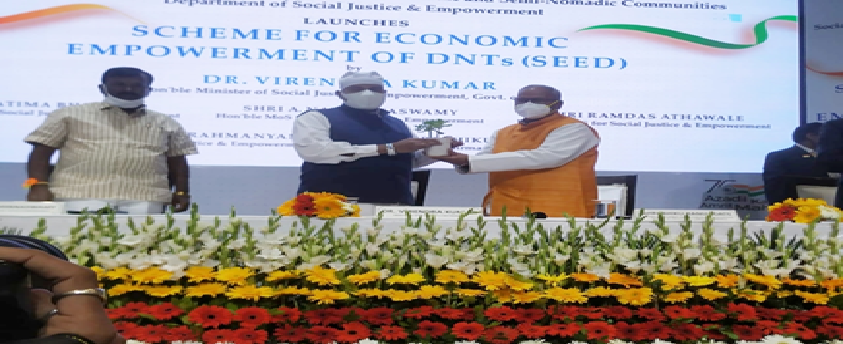
Why in News?
- The Minister of Social Justice and Empowerment has launched the Scheme for Economic Empowerment of De-notified, Nomadic, and Semi Nomadic Communities (SEED).
Who are the DNTs?
- The term ‘De-notified Tribes’ stands for all those communities which were once notified under the Criminal Tribes Acts, enforced by the British Raj between l87l and I947.
- These Acts were repealed after Independence in l952, and these communities were “De-Notified”.
- The DNTs (of whom most are the medieval period Banjaras) are the most neglected, marginalized, and economically and socially deprived communities.
- Most of them have been living a life of destitution for generations and still continue to do so with an uncertain and gloomy future.
SEED Scheme:
- Under the scheme, the government seeks to provide free coaching to students for civil Services Examinations, competitive exams for admission to professional courses; health Insurance; livelihood support and housing.
- It has been formulated for families having income from all sources of Rs.2.50 lakh or less per Annum and not availing any such benefits from similar Scheme of Centre Government or the State Government.
- The Scheme will be implemented through a portal, developed by the Department of Social Justice & Empowerment.
- Post verification, the funds will be transferred directly to the beneficiaries in their account.
- The other implementing agencies are Ministry of Rural Development, National Rural Livelihood Mission (NRLM) and National Health Authority (NHA).
Components of the scheme:
- The Scheme will have following four components:
Free Coaching:
- A component of free Coaching for DNT Students has been envisioned for the educational Empowerment of these Communities.
- The objective of this component is to enable them to appear in competitive examinations/ admission to professional courses like medicine, engineering, MBA, etc for obtaining an appropriate job in Public/Private Sector.
- The selection of the candidates for each course will be based on system generated merit list through the portal.
- Approximately, 6250 students will be provided free coaching under this component in five years. The total funds spend in the five years will be Rs.50 crore.
Health Insurance:
- Members of these communities are likely to have little or no access to medical facilities and other benefits available under the mainstream health policies.
- The primary objective of the scheme is to provide financial assistance to National Health Authority (NHA) in association with State Health Agencies (SHAs).
- These agencies will provide a health insurance cover of Rs.5 lakhs per family per year for families as per norms of “Ayushman Bharat Pradhan Mantri Jan Arogya Yojana.
Livelihood Initiatives:
- The decline of traditional occupations of DNT/NT/SNT communities has exacerbated their Poverty.
- A focus to support Livelihood Generation for these communities is required.
- The Primary Objective of the scheme is to provide Financial Assistance to National Rural Livelihood Mission (NRLM).
- It would enhance productivity growth in key livelihood sectors for Employment Generation through Investments in Institutional Support, technical assistance.
Financial Support for Housing:
- Considering the shortage of houses for DNTs, it has been proposed to earmark a separate outlay for PMAY to support specific importance in providing houses only for DNTs living in rural areas.
- It is for those who have not taken benefits of the Pradhan Mantri Awas Yojana as SC, ST, OBC and are living below poverty line.
- The admissible support is Rs 1.20 lakhs in plains and 1.30 lakhs in hilly areas (per unit assistance).
Why need such a Scheme?
- DNTs escaped the attention of our developmental framework and thus are deprived of the support unlike Scheduled Castes and Scheduled Tribes.
- Historically, these communities never had access to private land or homeownership.
- These tribes used forests and grazing lands for their livelihood and residential use and had “strong ecological connections.
- Many of them are dependent upon various types of natural resources and carve out intricate ecological niches for their survival.
- The changes in ecology and environment seriously affect their Livelihood Options.
No, Policy is not Too Important to Leave to the Experts
18, Feb 2022
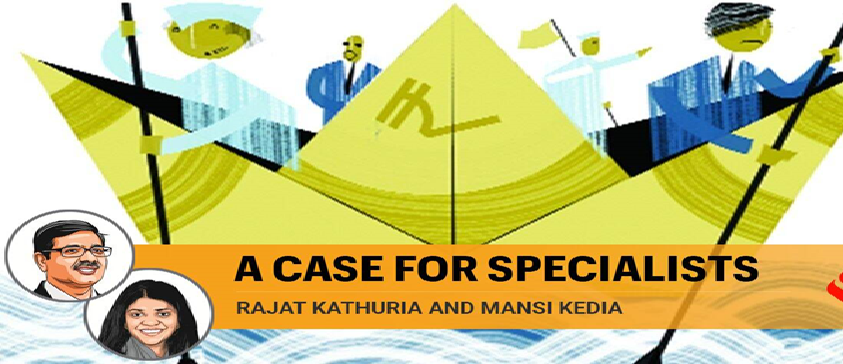
Why in News?
- Given the fact that political input in economic policy making is becoming dominant as regional and state-level issues assume overriding significance, it’s perhaps time to consider sheltering economics from politics and vice versa.
Continuity in Policy:
- The sudden withdrawal of farm laws last year and the repeal of the land acquisition ordinance in 2015 are two examples of policy backsliding in an otherwise decent record of Policy Continuity since 1991.
- The overall trajectory of tariffs has been downward and average tariffs are now below 10 per cent compared to over 400 per cent before 1991.
- As a favoured rule, domestic policy priorities should not be held hostage to external pressures, but they can and ought to be used to push through difficult and desirable domestic reform.
Challenges in Achieving High Growth:
- Challenges in Reforms: Relying on chance events to drive reform might work in rare circumstances, but not when the aspiration is to become a $10 trillion economy by 2030.
- Realising this target or even coming close to it will require sustained growth of over 15 per cent per annum in nominal GDP — that’s no mean task.
- The Golden Period of India’s growth fetched an 8.1 per cent increase in real GDP between 2004 and 2009.
- Even during this period, the growth story was cut short by the global financial crisis and devilled Intermittently by Institutional Weaknesses.
- Failure of Institutions: The coal scam and the 2G scam are examples of the inability of institutions to keep pace with rapid growth.
- As Growth occurs, institutions also require sophistication, knowledge, and some (not complete) protection from political interference.
Need for Fiscal Council for Budget-Making Process
- The Monetary Policy Committee (MPC) in 2016, replaced RBI’s internal decision-making driven by the central bank governor to include three external experts to strengthen and bring transparency into monetary policy decisions.
- This can be extended to other important government functions, such as the budgetary process
- Successive finance commissions and the Fiscal Responsibility and Budget Management (FRBM) Review Committee have recommended the creation of a fiscal council that, like the MPC, will bring transparency in the budget-making process.
- The idea is simple, moderate the influence of the political agenda and powerful interest groups that could, and often do, capture the process.
Suggestions on Policy Making
- It is art and science: Policy making is nothing if not art that invokes science when expedient.
- Domain experts should be an integral part of the formulation process.
- Implementation, of course, can be left to the executive.
- When the TRAI was first set up, it had a healthy combination of domain experts and public policy professionals, resembling a specialised regulatory agency that reflected a serious intent to Strengthen Capacity.
- Importance of domain experts: Instead of going down the chosen path, TRAI has reversed Gear and today resembles a government department.
- In fact, this is the same affliction with almost all regulatory and policy institutions that are now a feature of India’s increasingly market based economy.
- As more sectors (for example, the Gati Shakti initiative) engage the private sector, lessons from the last quarter-century should not be wasted — domain expertise is conspicuous by its absence in regulatory and policy institutions.
Way Forward:
- Create cadre of professionals: Commissions tend to be made up of retired civil servants or retired judges.This is worrying and, therefore, it is vital to create a cadre of professionals with technical expertise for the complex tasks of managing the policy processes.
- Distancing politics from policy: The net needs to be cast wider so that politics and policy are distanced, not completely but certainly more than it is today.
The Importance of Caste Data
17, Feb 2022

Why in News?
- Last month, the Supreme Court upheld the 27% quota for Other Backward Classes (OBC) in the All-India Quota seats for the National Eligibility-cum-Entrance Test and reiterated that reservations for backward classes were not an exception but an extension of the principle of equality under Article 15(1) of the Constitution.
Multiple Dimensions of Reservation:
- The judgment highlighted how open competitive exams give the illusion of providing equal opportunity in ignorance of the widespread inequalities in educational facilities, the freedom to pursue such education, and societal prejudices.
- Psychological and social effects: The Court pointed out how such disparities are not limited to the issue of access to good Education or Financial constraints alone, but also to the Psychological and social effects of inherited cultural capital (communication skills, books, accent, academic accomplishments, social networks, etc.), which ensures the unconscious Training of upper-caste children for high-grade performance.
- The Constituent Assembly held a similar philosophy while introducing constitutional provisions which enable the government to make special provisions for the uplift of the “lower castes”.
Importance of Justifiable Data:
- The Politicisation of Issue: Political parties often promise reservation for communities on being brought to power without any credible data collection exercises to justify the decision.
- It can be said that the faith of our citizens cannot be restored until credible exercises of data collection are undertaken regarding caste.
- Lack of data on OBC: Even though data concerning the Scheduled Castes and Scheduled Tribes have been included in the Census, there is no similar data on OBCs.
- Proper assessment: In the Indra Sawhney case, the Supreme Court held that the States must conclude the “backwardness” of a particular class of people only after proper assessment and objective evaluation.
- It held that such a conclusion must be subject to periodic review by a permanent body of experts.
- The National Commission for Backward Classes Act, 1993, provides under Section 11 that the Central government may every 10 years revise lists with a view to exclude those classes which have ceased to be backward and include new backward classes.
- This exercise has not been done to date.
- Impartial data and subsequent research might save the bona fide attempts of the uplift of the most backward classes from the shadow of caste and class politics and be informative to people on both sides of the spectrum – for and against reservation.
- Calls for caste data in Census: Last year, many calls were made for the inclusion of caste data (including that of the OBCs) in the 2021 Census, and the matter reached the Supreme Court.
- However, the government took the stand that the 2011 SECC was “flawed” and is “not usable”.
Anti-Lynching Bills Passed by Four States Hanging fire
16, Feb 2022
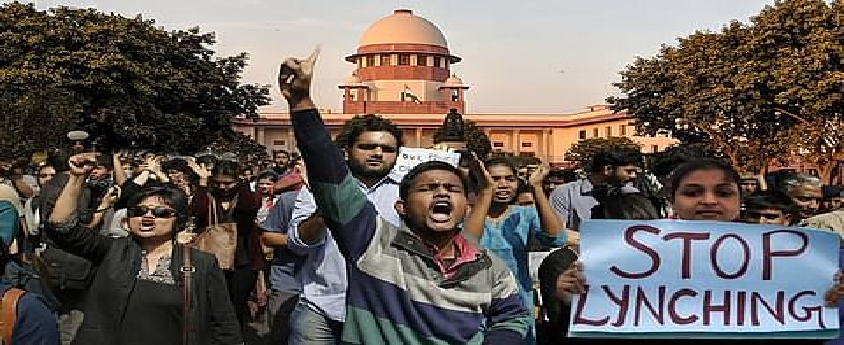
Why in News?
- Bills passed against mob lynching in the past four years by at least three States ruled by BJP Rivals and one Governed by the party itself have not been implemented with the Union Government taking a view that Lynching is not defined as a crime under the Indian Penal Code (IPC).
About Mob Lynching:
- The Manipur Law defined mob lynching as “any act or series of acts of violence or aiding, abetting such act/acts thereof, whether spontaneous or planned, by a mob on the grounds of religion, race, caste, sex, place of birth, language, dietary practices, sexual orientation, political affiliation, ethnicity or any other related grounds.”
- In 2018, the Supreme Court had also issued guidelines to curb lynching.
- The West Bengal (Prevention of Lynching) Bill, 2019 provides for three years to life imprisonment to those injuring a person and capital punishment or rigorous life imprisonment for those causing death.
- Manipur was the first state to pass a law against Lynching. Recently, Jharkhand and previously Rajasthan have also passed an anti-lynching bill.
What was the Supreme Court’s Guidelines on Preventing Mob Lynching?
- The state governments shall designate a senior police officer in each district for taking measures to prevent incidents of mob violence and lynching.
- The state governments shall immediately identify districts, sub-divisions and villages where instances of lynching and mob violence have been reported in the recent past.
- The Nodal Officers shall bring to the notice of the Director General of Police (DGP) any inter-district co-ordination issues for devising a strategy to tackle lynching and mob violence-related issues.
- It shall be the duty of every police officer to cause a mob to disperse, which, in his opinion, has a tendency to cause violence in the disguise of vigilantism or otherwise.
- The Central and the state governments should broadcast on radio and television and other media platforms including the official websites that lynching and mob violence of any kind shall invite serious consequence under the law.
- Curb and stop the dissemination of irresponsible and explosive messages, videos and other material on various social media platforms which have a tendency to incite mob violence. Register FIR under relevant provisions of law against persons who disseminate such messages.
- State governments shall prepare a lynching/mob violence victim compensation scheme.
- Ensure that there is no further harassment of the family members of the victims.
- If a police officer or an officer of the district administration fails to do his/her duty, the same will be considered as an act of deliberate negligence for which an appropriate action must be taken against him/her.
Way Forward:
- Lynching has become a social menace all across India; therefore the centre should come with the law to deal with it. The law should incorporate the following provisions:
- It should be applicable to all hate crimes, not just lynching (for example honour killing), regardless of the numbers of persons who participate.
- Since the essence of what distinguishes these kinds of crimes is not the numbers of attackers but the motivation of hate behind the crimes, therefore, the law should provision dealing with solitary hate crimes.
- The law needs to prescribe a much more expansive framework of mandatory gender-Sensitive Reparation.
- The law should Incorporate penal action against doctors who stand accused of dereliction of duty, for the delay in attending to victims of lynching.
- Under the Compensation scheme for the victims, the amount should be recovered from the perpetrators of the Crime.
MHA Recommends Ban on 54 Chinese Apps Citing Security Concerns
15, Feb 2022

Why in News?
- The Centre recently banned over 50 new Chinese mobile applications, including Rise of Kingdoms: Lost Crusade, Tencent Xriver, Nice Video baidu and Viva Video Editor, due to concerns related to privacy and National Security.
About the News:
- The Ministry of Electronics and Information Technology has issued interim directions for blocking 54 apps, adding that these applications were allegedly collecting sensitive user data, which were being misused and transmitted to servers located outside India.
- The list of banned mobile apps include Beauty Camera: Sweet Selfie HD, Beauty Camera – Selfie Camera, Garena Free Fire – Illuminate, Astracraft, FancyU pro, MoonChat, Barcode Scanner – QR Code Scan, and Lica Cam.
- The government had last year banned over 200 Chinese mobile applications, including popular ones such as TikTok, Shareit, Mi Video Call, Club Factory and Cam Scanner, citing threat to national security and sovereignty
- The announcement had come amid border tensions between India and China in Ladakh.
- The move came in the backdrop of India’s ongoing stand-off along the Line of Actual Control (LAC) in Ladakh with China. The stand-off has been going on since April 2020.
- India shares a 3,400 km-long LAC with China from Ladakh to Arunachal Pradesh.
Why ban Imposed?
- The Ministry said it was invoking its power under Section 69A of the Information Technology Act read with the relevant provisions of the Information Technology (Procedure and Safeguards for Blocking of Access of Information by Public) Rules, 2009.
- In view of the emergent nature of threats, the government has decided to block these apps as they are engaged in activities which are prejudicial to sovereignty and integrity of India, defence of India, security of state and Public Order.
What does the Section 69A says?
- Section 69A of the Information Technology Act Empowers Central Government to:
- Issue directions to block the content on online platforms in the interest of sovereignty and integrity of India, defence of India, security of the State, friendly relations with foreign States or public order or for preventing incitement to the commission of any Cognizable Offence.
- Intermediaries Failing to comply with the direction issued could be punished with Imprisonment for a Term which may extend to seven years and shall also be liable to Fine.
India bans import of drones
12, Feb 2022

Why in News?
- The Government has banned the import of Drones with immediate effect, except for Research and Development, Defence and Security Purposes.
Highlights:
- The move aims to promote made in India drones.
- The Directorate General of Foreign Trade of the Ministry of Commerce and Industry has notified the Indian Trade Classification (Harmonised System), 2022 in this regard.
- Exceptions are provided for R&D, defence and security, importing drones for these purposes which will require “due clearances”.
- However, import of drone Components will not Require Any Approvals.
Boost to Drones Industry in India:
- Last year, the Ministry notified liberalised drone rules that abolished a slew of approvals with the aim to Encourage R&D and creating India as a drone hub.
- The Government also approved a Production-Linked Incentive (PLI) scheme for drones and their components with an allocation of ₹120 crore for three financial years.
- Last month, the Ministry of Civil Aviation (MoCA) has sent a note on use of drones across various sectors to different ministries at the centre.
Where all can Drones be Effectively Utilised?
- Ministry of Home Affairs: For surveillance, situational analysis, crime control, VVIP security, disaster management, etc.
- Ministry of Defence: Drones for combat, communication in remote areas, counter-drone solutions, etc.
- Ministry of Health and Family Welfare: Delivery of medicines, collection of samples from remote or Epidemic/Pandemic-affected areas.
- The Petroleum and Natural Gas, and Power Ministries: For real-time surveillance of assets and transmission lines, theft prevention, visual inspection/maintenance, construction planning and management, etc. Environment, Forests and Climate Change Ministry: Anti-poaching actions, monitoring of forests and wildlife, pollution assessment, and evidence gathering.
- Ministry of Information and Broadcasting: For high-quality videography of events and difficult-to-reach-places at a fraction of the cost and approvals required. This move would also facilitate low altitude shooting without noise, and prevent dust pollution and risk of accidents.
- Other areas: To undertake disaster management, incidence response, inspection/maintenance works and project monitoring.
Significance:
- Drones offer a tremendous benefits to almost every sector of the economy, including but not limited to, national defence, agriculture, law enforcement, and mapping, among others.
Drone Management in India:
- The Union government had on September 15 approved a production-linked incentive (PLI) scheme for drones and drone components with an allocation of Rs 120 crore spread over three financial years.
- The ministry had on August 25 notified the Drone Rules, 2021 that eased the regulation of drone operations in India by reducing the number of forms that need to be filled to operate them from 25 to five and decreasing the types of fees charged from the operator from 72 to four.
Need for Stricter Rules and Regulations:
- In 2021, Drones were used for the first time to drop explosive devices, triggering blasts inside the Air Force Station’s technical area in Jammu.
- Over the past two years, drones have been deployed regularly by Pakistan-based outfits to smuggle arms, ammunition and drugs into Indian territory.
- According to government figures, 167 drone sightings were recorded along the border with Pakistan in 2019, and in 2020, there were 77 such sightings.
- With the rapid proliferation of Drone Technology and exponential growth of its global market in recent years, the possibility of a drone attack cannot be ruled out even in the safest cities in the world.
- Drones are becoming security threats Particularly in conflict zones where non-state actors are active and have easy access to the Technology.
Imposition of Death Penalty
11, Feb 2022

Why in News?
- The Supreme Court has made the following Suggestions on the applicability and imposition of death Penalty in its recent Judgment.
What has the Supreme Court said?
- Trial judges should not be swayed in favour of death penalty merely because of the dreadful nature of the crime and its harmful impact on the society. They should equally consider the mitigating factors in favour of life imprisonment.
- The judgment referred to the evolution of the principles of penology. Though capital punishment serves as a deterrent and a “response to the society’s call for appropriate punishment in appropriate cases”, the principles of penology have “evolved to balance the other obligations of the society, i.e., of preserving the human life, be it of accused, unless termination thereof is inevitable and is to serve the other societal causes and collective conscience of society”.
How should the Courts decide on Capital Punishment Impositions?
- In the case of Bachan Singh (1980), the Supreme Court formulated a sentencing framework to be followed for imposing death penalty.
- It required the weighing of aggravating and mitigating circumstances relating to both the circumstances of the offence and the offender, to decide whether a person should be sentenced to death or given life imprisonment.
- According to the Bachan Singh judgment, for a case to be eligible for the death sentence, the aggravating circumstances must outweigh the mitigating circumstances.
What is Collective Conscience?
- Collective consciousness (sometimes collective conscience or conscious) is a fundamental sociological concept that refers to the set of shared beliefs, ideas, attitudes, and knowledge that are common to a Social Group or Society.
Evolution of Collective Conscience:
- ‘Collective conscience of society’ as a ground to justify death penalty was first used by the Supreme Court in the 1983 judgment of Machhi Singh v. State of Punjab. In that case, the court held that when “collective conscience of society is shocked, it will expect the holders of the judicial power centre to inflict death penalty”.
- It was, however, most famously used by the top court in its 2005 judgment in the Parliament attack case in which it awarded capital punishment to convict, Afzal Guru.
- Collective conscience found its most recent endorsement in the 2017 judgment of the Supreme Court in the December 2012 Delhi gang rape case of Mukesh v. State of NCT of Delhi.
Concerns:
- Can the courts allow any kind of public outcry, sense of conscience, sentiment or feeling to even remotely influence their decisions, especially when it is a case of the death sentence? This is even more relevant in the times that we live in, when television and social media bombard us, creating and determining opinion.
Need of the Hour:
- Our Constitution is based on the principle of Justice for the most marginalised, disfranchised, oppressed, unknown, unseen and Ignored. This spirit demands that law cannot rely on or be influenced by any Delusionary sense or mood of the people. We need in judges a liberal energy and the ability to be Creative Human Beings.
Recommendations by Law Commission:
- The Law Commission in 2015, headed by Justice A P Shah proposed to abolish capital punishments. However, the commission had made the proposal only to non-terrorism cases.
- According to the commission, India is one among few countries that still carry out executions. The other countries that practice executions include Iran, Iraq, Saudi Arabia, China. By the end of 2014, 98 countries had abolished death penalty.
Haryana’s Anti Conversion Bill
09, Feb 2022

Why in News?
- After several other states, including Uttar Pradesh, Karnataka, Himachal Pradesh, and Madhya Pradesh, the Government in Haryana is set to enact legislation to prevent unlawful Religious Conversions.
About the News:
- The Haryana Prevention of Unlawful Conversion of Religious Bill, 2022 will be tabled in the Assembly’s budget session next month.
- It is likely to be passed, considering the BJP-JJP coalition has a comfortable majority in the 90-member House.
Why is the Government Bringing this Bill?
- According to the government and officials, many incidents of alleged “love jihad” have been reported in Haryana over the past few months, especially in the southern parts of the state.
- “Love jihad” is an expression used to refer the alleged attempts by Muslim men to force Hindu women to change their faith, frequently through allurement, promise of Marriage or Coercion.
- The Government has told Parliament that “the term ‘love jihad’ is not defined under the Extant Laws”, and the anti-conversion legislation in the states do not use the expression. But it is still used freely in Political Conversations and Speeches.
What is the progress on the Proposed Law so far, and What Happens Now?
- As a first step, a draft of the proposed Bill was approved by the Haryana Cabinet recently. The Bill will be tabled in the Vidhan Sabha when it meets in the Budget Session that commences on March 2.
- Once the Bill is passed and receives the assent of the Governor, it will be notified in the gazette and will become law.
What does the draft Bill Cleared by the Cabinet propose?
- The draft Bill seeks to “Prohibit Religious conversions which are effected through misrepresentation, force, undue influence, coercion, allurement or by any fraudulent means or by marriage or for Marriage by making it an Offence”.
What are the Objectives?
- The statement of Objectives and reasons in the Draft Bill says: “The individual right to freedom of conscience and religion cannot be extended to construe a collective right to proselytize; for the right to religious freedom belongs equally to the person converting and the individual sought to be Converted. Still, there have been umpteen cases of religious conversions, both mass and Individual.
- The draft Bill also suggests that incidents of so-called “love jihad” are increasing. It says in recent past several instances came to the notice that with an agenda to increase strength of their own religion by getting people from other religions converted, people marry persons of other religion by either misrepresentation or concealment of their own religion and after getting married they force such other person to convert to their own religion.
- The draft Bill proposes “greater punishment for such conversion in respect of the Minor, Women, Scheduled Castes and the Scheduled Tribes”.
How will it be Established that a Conversion is Unlawful under the Proposed law?
- According to the draft Bill, the burden of proof — as to whether a conversion was not effected through misrepresentation, use of force, under threat, undue influence, coercion, allurement, or by any fraudulent means, or by marriage, or for marriage for the purpose of carrying out conversion — shall be on the accused.
- Every individual converting from one religion to another shall submit to the prescribed authority a declaration that the conversion not effected through any of the unlawful means mentioned above. The designated authority shall make an inquiry in all such cases.
- The proposed Bill will also have a provision for declaring null and void any marriage that is found to have been solemnised by concealment of religion.
What do Critics Say?
- Such laws have come under sharp criticism from several legal scholars who had contended that the concept of ‘love jihad’ did not have any constitutional or legal basis.
- They have pointed to Article 21 of the constitution which guarantees individuals the right to marry a person of one’s choice.
- Also, under Article 25, freedom of conscience, the practice and conversion of religion of one’s choice Including not following any religion, are also Guaranteed.
Supreme Court on Marriage and Conversion:
- The Apex Court of India in its several judgments has held that the state and the courts have no jurisdiction over an adult’s absolute right to choose a life partner.
- The Supreme Court of India, in both the Lily Thomas and Sarla Mudgal cases, has confirmed that religious conversions carried out without a bona fide belief and for the sole purpose of deriving some legal benefit do not hold water.
- Salamat Ansari-Priyanka Kharwar case of Allahabad High Court 2020: The right to choose a partner or live with a person of choice was part of a citizen’s fundamental right to life and liberty (Article 21).
Need of the Hour:
- There is a need for uniformity: Article 18 of the Universal Declaration on Human Rights mentions everyone has the right to freedom of religion including changing their faith. Since it is a state subject, the Centre can frame a model law like Model law on contract Farming etc.
- States while enacting anti-conversion laws should not put any vague or ambiguous provisions for the person who wanted to convert of his own will.
- The anti-conversion laws also need to include a provision to mention the valid steps for Conversion by minority Community Institutions.
- People also need to be educated about the provisions and ways of Forceful conversions, Inducement or Allurement, etc.
Agatha Sangma Demands Repeal of AFSPA
05, Feb 2022

Why in News?
- National People’s Party (NPP) MP Agatha Sangma demanded repeal of the Armed Forces Special Powers Act (AFSPA) in the Lok Sabha recently, citing the example of the incident in Mon, in Nagaland, where 14 people died due to firing by the Army on a vehicle Carrying Miners.
About the News:
- Speaking during the Motion of Thanks to the President for his address to both Houses of Parliament, Ms. Sangma repeated the demand she had raised during the Winter Session of Parliament last year.
What is the Issue?
- MHA said the area comprising the whole of Nagaland is in such a “disturbed and dangerous condition” that the use of armed forces in aid of the civil power is necessary.
- But, Nagaland is continuously criticising the Centre for extending the “disturbed area” tag on Nagaland every year to prolong the AFSPA despite a ceasefire agreement for almost 25 years.
What does the AFSPA Mean?
- In simple terms, AFSPA gives armed forces the power to maintain public order in “disturbed areas”.
Powers given to Armed Forces:
- They have the authority to prohibit a gathering of five or more persons in an area, can use force or even open fire after giving due warning if they feel a person is in contravention of the law.
- If reasonable suspicion exists, the army can also arrest a person without a warrant; enter or search Premises without a warrant; and ban the Possession of firearms.
- Any person arrested or taken into custody may be handed over to the officer in charge of the nearest police station along with a report detailing the Circumstances that led to the Arrest.
What is a “Disturbed Area” and who has the power to declare it?
- A disturbed area is one which is declared by notification under Section 3 of the AFSPA. An area can be disturbed due to differences or disputes between members of different religious, racial, language or regional groups or castes or communities.
- The Central Government or the Governor of the State or administrator of the Union Territory can declare the whole or part of the State or Union Territory as a disturbed area.
Has there been Any Review of the Act?
- On November 19, 2004, the Central government appointed a five-member committee headed by Justice B P Jeevan Reddy to review the provisions of the act in the north eastern states.
- The committee submitted its report in 2005, which included the following recommendations: (a) AFSPA should be repealed and appropriate provisions should be inserted in the Unlawful Activities (Prevention) Act, 1967; (b) The Unlawful Activities Act should be modified to clearly specify the powers of the armed forces and paramilitary forces and (c) grievance cells should be set up in each district where the armed forces are deployed.
- The 5th report of the Second Administrative Reforms Commission on public order has also recommended the repeal of the AFSPA.
Governor returns NEET Bill to Assembly
04, Feb 2022
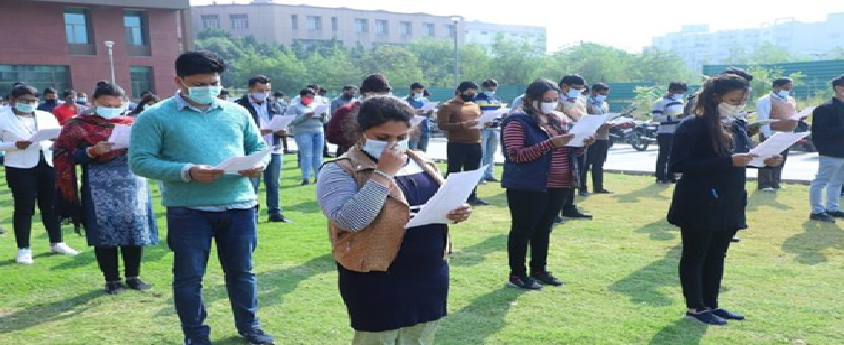
Why in News?
- Tamil Nadu Governor R.N. Ravi has returned to the Assembly Speaker a Bill seeking to dispense with NEET-based admissions for undergraduate medical degree courses.
About the News:
- The Bill adopted by the Assembly in September sought to admit students to UG medical degree programmes on the basis of Plus Two scores.
- After a detailed study of the Bill that sought an exemption for the State from NEET and the report of the high-level committee constituted by the State government in this regard, the Governor was of the opinion that the Bill is against interests of the students specially the rural and Economically poor students of the State.
- Hence, the Governor has returned the Bill to the Speaker of the Tamil Nadu Legislative Assembly, giving detailed reasons, for its re-consideration by the House.
Veto Over State Bills:
- The governor is empowered to reserve certain types of bills passed by the state legislature for the consideration of the President. Then, the Governor will not have any further role in the enactment of the bill.
- The President can withhold his assent to such bills not only in the first instance but also in the second instance.
- Thus, the President Enjoys absolute veto (and not suspensive veto) over state bills.
- Further, the President can Exercise Pocket veto in respect of state Legislation also.
What was TN Government’s Argument?
- The Bill, moved by Chief Minister M.K. Stalin, contended that admission to medical courses was traceable to entry 25 of List III, Schedule VII of the Constitution, and the State was “competent to regulate” the same for the underprivileged social groups.
- NEET festers inequality as it favours the rich and the more privileged class of society, who are able to afford special coaching apart from pursuing Class XII. It virtually barricades the underprivileged social groups from medical and dental education.
- It also argued that NEET was against the equality clause enshrined in the Constitution.
- After the UG course, students from the affluent class do not serve in rural areas, and often pursue postgraduate courses abroad, adding that the number of serving doctors in the State was declining.
- The standard of medical education is maintained during the UG course by following the syllabus and curriculum prescribed by the National Medical Commission and through exams conducted by the university before awarding the degree.
- Students who are not able to pass the university exams are not awarded degrees. Therefore, it is not during the admission stage that the standard of medical education is maintained.
- The Bill said its aim was to ensure social justice, uphold equality and equal opportunity, protect all vulnerable student communities from discrimination and bring them into the mainstream of medical and dental education and, in turn, ensure robust public healthcare across Tamil Nadu, particularly in the rural areas.
What did A.K. Rajan Committee Reported?
- The government’s decision followed a report from a high-level committee, headed by the retired High Court judge, Justice A.K. Rajan, which said NEET had “clearly undermined” the diverse societal representation in MBBS and higher medical studies, favouring mainly the affluent segment of society, while thwarting the dream of the underprivileged social groups to pursue medical education.
- The panel concluded that if NEET continued for a few more years, the healthcare system of Tamil Nadu would be “very badly affected, and there may not be enough doctors” to be posted at Primary Health Centres or Government hospitals, and the rural and urban poor may not be able to join the Medical Courses.
- It was in favour of immediate steps to eliminate NEET from being used in admission to medical programmes “at all levels”.
- It further contended that NEET was not a fair or equitable method of admission, since it ‘favoured’ the rich and elite sections of society. The most affected groups were the students of Tamil medium; students having a rural background; those from government schools; those whose parental income was less than ₹5 lakh per annum; and socially disadvantaged groups like the Most Backward Classes (MBCs), the Scheduled Castes (SCs) and the Scheduled Tribes (STs).
- Based on the report, the State government decided that admission to undergraduate courses in medicine, dentistry, Indian medicine and homoeopathy in the State shall be made only based on the marks obtained in the qualifying examination (Plus-Two).
Can a state Negate Central Laws?
- Article 254(2) refers to a scenario where a law made by a state legislature concerning any matter that falls in the Concurrent List contains any provision repugnant to the provisions of an earlier law made by Parliament or an existing law, with respect to that matter.
- In such a case, the law made by the state legislature will prevail, provided it is reserved for the consideration of the President of India and Receives his assent.
How can States use this Provision?
- This provision gives flexibility to a state legislature to make a law different from what is applicable in that state due to a Parliamentary law already in operation there.
- This flexibility is only available on matters that are in the concurrent list to Schedule 7 of the Constitution. Under that list both the Parliament and the state legislatures could legislate — subject to the rule that the parliamentary law will prevail over a state law.
What all is covered under concurrent list?
- The concurrent list provides a rich set of topics for the states to take a lead in reform. It covers areas such as criminal law and procedure, marriage, divorce and adoption, bankruptcy and insolvency, social security, education (including technical and medical education) and electricity.
- Agriculture’ has been placed as Entry 14 in the State List along with several ancillary matters, while some agriculture-related items have been included in the Union List and the Concurrent List.
Will this Provision help the States?
- Though states could come out with their own Bills to some extent to override the statutes of passed by the Parliament, none of those Bills would be effective unless the President accords his consent to such Bills.
What Happens if President does not give consent?
- According to legal experts, it’s the sole prerogative of the President whether to sign the state Bills or not. It’s a rare circumstance, wherein a state Bill is accepted by the President without the Centre on board.
- In case, the Centre is opposing the Bill, then the President, who works on the aid and advice of the Council of Ministers, can refuse to give his consent.
Can states approach the Supreme Court Challenging the Central Law?
- States can approach the Supreme Court under Article 131 — invoking the court’s “original jurisdiction” — that allows a state to file a suit in the Supreme Court in case of any dispute that it may have with the central government.
- Article 131 could be used to Examine the Constitutionality of a statute.
Fortified Rice supply in Govt. Schools raised
01, Feb 2022
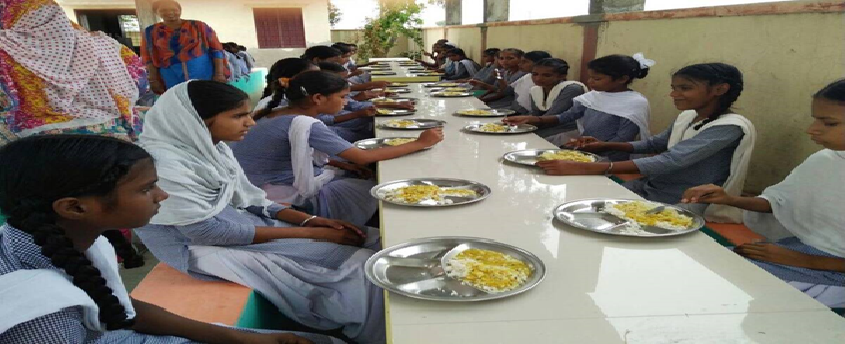
Why in News?
- According to the Economic Survey released recently, the Centre has distributed 3.38 lakh Metric Tonnes of Fortified Rice till December 2021 through anganwadis and mid-day meals at Government Schools.
About the News:
- In 2019, the government approved a Centrally sponsored pilot scheme for fortification of rice for a period of three years beginning 2019-2020.
- The scheme is being implemented in 15 districts across as many States.
- Last year, during his Independence Day speech, Prime Minister Narendra Modi announced that by 2024 rice made available under every government programme will be fortified to fight malnutrition.
- The Economic Survey states that the government ramped up distribution of fortified rice last year across anganwadis under the Integrated Child Development Scheme (now rechristened Saksham anganwadi and Poshan 2.0) as well as mid-day meal scheme implemented at schools (renamed as PM Poshan).
- The Government has started distributing fortified rice under the Integrated Child Development Scheme and PM Poshan schemes across the country during 2021-22 in an effort to scale up the distribution of fortified rice in the country to fight malnutrition and micronutrient deficiencies among pregnant women, lactating mothers, children etc.
- According to FSSAI, rice will be fortified with iron, folic acid, Vitamin B-1,B-2,B-3, B-6 and B-12, zinc, Vitamin A.
Need for Rice Fortification:
- The country has high levels of malnutrition among women and children.
- According to the Food Ministry, every second woman in the country is anaemic and every third child is stunted.
- India ranks 94 out of 107 countries and is in the ‘serious hunger’ category on the Global Hunger Index (GHI).
- Malnutrition and lack of essential nutrients in poor women and poor children poses major Obstacles in their Development.
What is Food Fortification?
- Food fortification is defined as the practice of adding vitamins and minerals to commonly consumed foods during processing to increase their nutritional value.
- It is a proven, safe and cost-effective strategy for improving diets and for the prevention and control of micronutrient deficiencies.
- The Food Safety and Standards Authority of India (FSSAI), defines fortification as “deliberately increasing the content of essential micronutrients in a food so as to improve the nutritional quality of food and to provide public health benefit with minimal risk to Health”.
Fortified Rice:
- According to the Food Ministry, fortification of rice is a cost-effective and complementary strategy to increase vitamin and mineral content in diets.
- According to FSSAI norms, 1 kg fortified rice will contain iron (28 mg-42.5 mg), folic acid (75-125 microgram) and Vitamin B-12 (0.75-1.25 microgram).
- In addition, rice may also be fortified with micronutrients, singly or in combination, with zinc (10 mg-15 mg), Vitamin A (500-750 microgram RE), Vitamin B1 (1 mg-1.5 mg), Vitamin B2 (1.25 mg-1.75 mg), Vitamin B3 (12.5 mg-20 mg) and Vitamin B6 (1.5 mg-2.5 mg) per kg.
What are the benefits of Fortification?
- Since the nutrients are added to staple foods that are widely consumed, this is an excellent method to improve the health of a large section of the population, all at once.
- Fortification is a safe method of improving nutrition among people. The addition of micronutrients to food does not pose a health risk to people.
- It does not require any changes in food habits and patterns of people. It is a socio-culturally acceptable way to deliver nutrients to people.
- It does not alter the characteristics of the food—the taste, the feel, the look.
- It can be implemented quickly as well as show results in improvement of health in a relatively short period of time.
- This method is cost-effective especially if advantage is taken of the existing technology and Delivery Platforms.
Food Fortification
27, Jan 2022
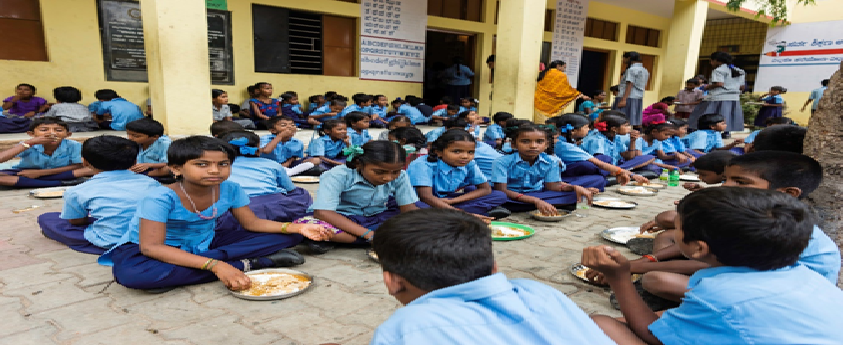
Why in News?
- The Food Safety and Standards Authority of India’s (FSSAI’s) Food Fortification Resource Centre (FFRC) has reported that over 70% of India’s population consumes less than half the daily recommended dietary allowance of Micronutrients.
About the News:
- These deficiencies are prevalent not only in women and children from rural areas but also affect population groups in urban India.
Key to Addressing Nutrition Gap:
- With a section of the populace having limited access to nutritious food, fortification is key in addressing the nutrition gap.
- In a bid to directly address anaemia and micronutrient deficiency in the country, the Centre recently approved a pilot scheme on “Fortification of Rice & its Distribution under Public Distribution System”.
- The government’s food fortification initiative is already taking shape with several states, including Andhra Pradesh, Gujarat, Maharashtra, Tamil Nadu, Chhattisgarh, Uttar Pradesh, Odisha, Telangana, Uttarakhand and Madhya Pradesh, starting the distribution of fortified rice under the pilot programme.
- Fortifying staple foods and condiments with key micronutrients is an effective way of addressing deficiencies.
- Timely adoption of food fortification in social and Nutrition Security Programmes as a part of the fortification initiative will play a crucial role in Addressing undernutrition in India.
Need for Rice fortification:
- The country has high levels of Malnutrition among women and Children.
- According to the Food Ministry, every second woman in the country is anaemic and every third child is stunted.
- India ranks 94 out of 107 countries and is in the ‘serious hunger’ category on the Global Hunger Index (GHI).
- Malnutrition and lack of essential nutrients in poor women and poor children poses major obstacles in their development.
What is Food Fortification?
- Food fortification is defined as the practice of adding vitamins and minerals to commonly consumed foods during processing to increase their nutritional value.
- It is a proven, safe and cost-effective strategy for improving diets and for the prevention and control of micronutrient deficiencies.
- The Food Safety and Standards Authority of India (FSSAI), defines fortification as “deliberately increasing the content of essential micronutrients in a food so as to improve the nutritional quality of food and to provide public health benefit with minimal risk to Health”.
Fortified Rice:
- According to the Food Ministry, fortification of rice is a cost-effective and complementary strategy to increase vitamin and mineral content in diets.
- According to FSSAI norms, 1 kg fortified rice will contain iron (28 mg-42.5 mg), folic acid (75-125 microgram) and Vitamin B-12 (0.75-1.25 microgram).
- In addition, rice may also be fortified with micronutrients, singly or in combination, with zinc (10 mg-15 mg), Vitamin A (500-750 microgram RE), Vitamin B1 (1 mg-1.5 mg), Vitamin B2 (1.25 mg-1.75 mg), Vitamin B3 (12.5 mg-20 mg) and Vitamin B6 (1.5 mg-2.5 mg) per kg.
What are the Benefits of Fortification?
- Since the nutrients are added to staple foods that are widely consumed, this is an excellent method to improve the health of a large section of the population, all at once.
- Fortification is a safe method of improving nutrition among people. The addition of micronutrients to food does not pose a health risk to people.
- It does not require any changes in food habits and patterns of people. It is a socio-culturally acceptable way to deliver nutrients to people.
- It does not alter the characteristics of the food—the taste, the feel, the look.
- It can be implemented quickly as well as show results in improvement of health in a relatively short period of time.
- This method is cost-effective especially if advantage is taken of the existing technology and Delivery Platforms.
Government Response Awaited on law on inter-faith Marriages
19, Jan 2022
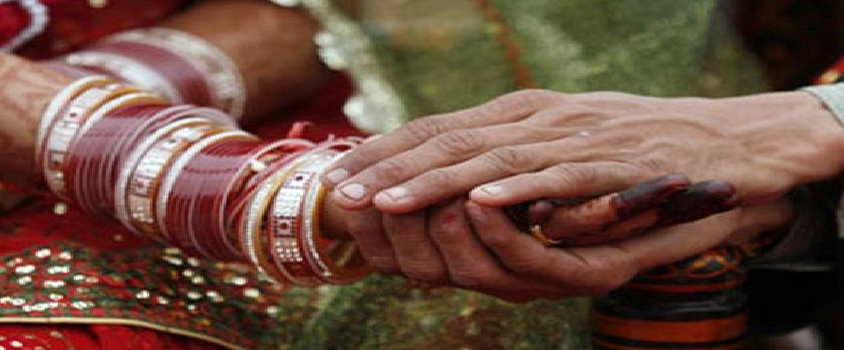
Why in News?
- The law that governs inter-faith marriages in the country, the Special Marriage Act (SMA), 1954, is being challenged for endangering the lives of young couples who seek refuge under it.
About the News:
- More than a year after a writ petition was moved before the Supreme Court, seeking striking down of several of its provisions, the government is yet to submit its response.
- The petition has sought to quash section 6 and 7 of SMA, which mandates publication of the public notice, on the ground that it is unreasonable and arbitrary.
- The petitioner argues that the 30-day period offers an opportunity to kin of the couple to Discourage an inter-caste or Inter-Religion Marriage.
What are Interfaith Marriages?
- The matrimonial relationship developed between two individuals having different religious faiths. Although marrying into a different religion is a matter of choice of an adult, there are certain issues Regarding the same.
Issues with Interfaith Marriages:
- Interfaith marriages are believed to be a forced conversion of one of the spouses (mostly women).
- As per the Muslim Personal law, in order to get married to a non-Muslim, conversion of religion is the only way.
- Hindu religion allows only monogamy and those who want to marry second time take another course.
- There is no provision regarding caste determination of children born out of such marriages.
- The Special Marriage Act, 1954 is not compatible with backwardness of the society.
- There is debate over the validity of Article 226 in context of annulling the interfaith marriage by High Court.
About the Special Marriage Act:
- The Special Marriage Act is a special law enacted to provide for a unique form of marriage by registration wherein the parties to the marriage do not have to renounce their religion.
- This Act includes Hindus, Muslims, Christians, Sikhs, Jains, and Buddhists marriages.
- This act applies to all Indian states, except Jammu & Kashmir.
- This Act applies not only to Indian citizens who belong to different castes and religions but also to Indian nationals who live abroad.
Requirements for the Special Marriage:
- The Fundamental Requirement under this Act for a valid marriage is the consent of both parties to the Marriage.
- If both parties to the marriage are willing to marry each other, that’s enough; caste, religion, race, etc. is not a Restriction.
Conditions for Marriage:
- The bridegroom must be at least 21, and at the time of the marriage, the bride must be at least 18 years of age. This is the minimum age limit respectively for a boy/girl to marry.
- At the time of their Marriage, both parties must be monogamous; i.e., they must be unmarried and at that time should not have any living spouse.
- In order to be able to decide for themselves, the parties should be mentally fit, i.e., they must be sane at the time of Marriage.
Challenges with Contemplating Laws for Interfaith Marriage:
- Contemplating laws to regulate matrimonial relationships between two consenting adults would not be just against the constitutional guarantees but would offend the very notion of individuality and basic freedoms.
- Interference of the law in an individual’s choice of marriage violates the existing constitutional rights such as the Right to equality, Right to Freedom & Personal Liberty, Freedom of Religion and Right to Life.
- Article 21: It declares that no person shall be deprived of his life or personal liberty except according to the procedure established by law. This right is available to both Citizens and Non-Citizens.
- Article 25 of the Indian constitution provides the freedom to practice any religion of one’s choice and Personal Laws of the religions have specified various laws relating to marriage for the followers of that religion. Hence, in India inter-faith marriages are allowed as the constitution allows one to convert to a different religion from what one was born with and further the personal laws of the religion have provisions.
Way Forward:
- In order to avoid inclusion of any further laws, there should be acceptance of the special marriage act, 1954 at the mental and social level.
- The rights should not be exploited; conversion of religion for marriage only is not at all wise.
- The marriage of two adults is a complete matter of their own choice, neither a law is to impose any decision, nor any individual. The Freedom of decision of his/ her marriage shall lie with the person only. The Need is to Accept the fact.
FCRA Nod for MoC Restored
08, Jan 2022
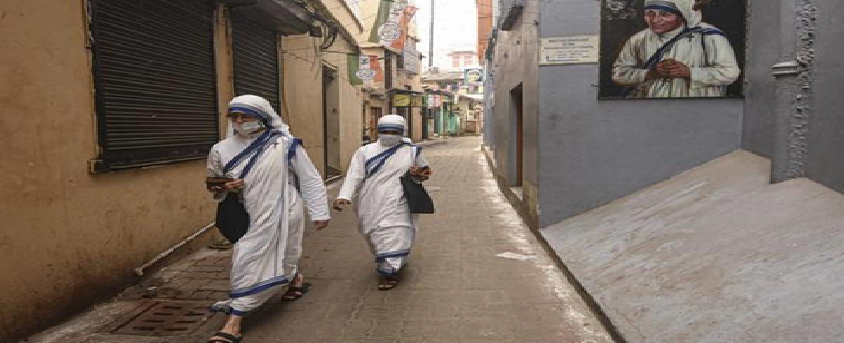
Why in News?
- The Ministry of Home Affairs (MHA) recently restored the FCRA registration of Missionaries of Charity (MoC), the Catholic religious congregation set up by Nobel laureate Mother Teresa.
About the News:
- The Foreign Contribution Regulation Act (FCRA) registration is mandatory to receive foreign donations.
- The move comes just days after the Ministry issued a statement that the FCRA registration of the MoC was not renewed as “some adverse inputs were noticed”.
- The registration was renewed, making MoC eligible to receive and utilise foreign funds in its bank accounts even as the U.K Parliament debated the issue, seeking to know if the British government had raised the issue of blocking of overseas funds of the MoC and other NGOs with India.
Background:
- The registration of thousands of NGOs was up for renewal in 2020-21. The Ministry had declined to renew the FCRA registration of 179 NGOs, while 5,789 associations did not apply for a renewal before the December 31 deadline.
- After the exercise, the number of active FCRA-registered NGOs is down from 22,762 to 16,907.
How FCRA Regulates NGO funding?
- FCRA regulates foreign donations and ensures that such contributions do not adversely affect the internal security of the country.
- The Act, first enacted in 1976 was amended in the year 2010 and then 2020.
- Section 5 of the Foreign Contribution (Regulation) Act, 2010 gives the Union government “Unchecked and Unbridled Powers” to declare an organisation as being one of political nature and deny it access to funds from sources abroad.
- FCRA is implemented by the Ministry of Home Affairs.
Applicability:
- The provisions of the Act apply to the territory of India, to citizens of India who may be outside India and to companies or their branches outside India that are registered or Incorporated in India.
- The entities covered by the Act include an individual, a Hindu undivided family, an Association, or a Registered Company
Prior Reference Category under the Act:
- It implies that to donate to such an NGO, a foreign donor has to take prior clearance from the Ministry of Home Affairs.
Latest 2020 Amendments and Criticisms Associated:
- The amendments mandated that registered NGOs open a designated account in the main branch of the State Bank of India in the Capital in which the foreign contributions to their various causes would exclusively land.
- The petitioners have argued that this measure would be cumbersome for NGOs operating in rural India and far away from the Capital.
What is a Foreign Contribution Under FCRA?
- “Foreign contribution” under FCRA covers any “donation, delivery or transfer made by any foreign source of any article” as long as it is not given as a gift for personal use, or if its market value in India at the time it was made is “not more than such sum as may be specified from time to time by the Central government”.
Exceptions:
- Any currency, or security can fall under the ambit of the Act though it excludes any money received “by way of fee or towards cost in lieu of goods or services rendered by such person in the ordinary course of his business, trade or commerce whether within India or outside India”.
- Neither are donations made by Non-Resident Indians (NRIs) considered to be “foreign contribution” although a donation from a person of Indian origin who has assumed foreign nationality is treated as as “foreign contribution”.
Who Cannot Receive Foreign Contribution?
- A host of entities are barred from receiving foreign funds, including election candidates, those connected with a registered newspaper, judges, government servants or employees of any entity controlled or owned by the Government and Members of any Legislature. Political parties and their office bearers, too, are Prohibited from receiving Foreign Funds.
Use Drones more Effectively, says Civil Aviation Ministry
08, Jan 2022

Why in News?
- In a nationwide programme to take the third eye to the sky, the Ministry of Civil Aviation (MoCA) has called for more effective utilisation of drone applications and urged the Ministry of Home Affairs to deploy unmanned aerial vehicles for surveillance, situational Analysis, Crime Control, VVIP security, Disaster Management, etc.
What is a Drone?
- Drone is a layman terminology for Unmanned Aircraft (UA). There are three subsets of Unmanned Aircraft- Remotely Piloted Aircraft, Autonomous Aircraft and Model Aircraft.
- Remotely Piloted Aircraft consists of remote pilot station(s), the required command and control links and any other components, as specified in the type design.
- Besides combat use, drones are used for a range of purposes like package delivery, in agriculture (spraying pesticides etc), Monitoring Environmental changes, aerial Photography, and during search and relief Operations, among others.
Key Changes brought in the Drone Rules, 2021:
- Digital sky platform shall be developed as a business-friendly single-window online system.
- No flight permission required upto 400 feet in green zones and upto 200 feet in the area between 8 and 12 km from the airport perimeter.
- No pilot licence required for micro drones (for non-commercial use), nano drone and for R&D organisations.
- No restriction on drone operations by foreign-owned companies registered in India.
- Import of drones and drone components to be regulated by DGFT.
- No security clearance required before any registration or Licence Issuance.
- No requirement of certificate of Airworthiness, Unique Identification Number, Prior Permission and remote pilot licence for R&D entities.
- Coverage of drones under Drone Rules, 2021 increased from 300 kg to 500 kg. This will cover drone taxis also.
- Issuance of Certificate of Airworthiness delegated to Quality Council of India and Certification entities Authorised by it.
- Manufacturer may Generate their drone’s unique identification number on the digital sky platform through the self-certification route.
- Maximum penalty under Drone Rules, 2021 reduced to INR 1 lakh. This shall, however, not apply to penalties in respect of violation of other laws.
- Drone corridors will be developed for cargo deliveries.
- Drone promotion council to be set up to facilitate a business-friendly regulatory regime.
Need for Stricter Rules and Regulations:
- Recently, Drones were used for the first time to drop explosive devices, triggering blasts inside the Air Force Station’s technical area in Jammu.
- Over the past two Years, drones have been deployed regularly by Pakistan-based outfits to Smuggle Arms, Ammunition and drugs into Indian territory.
- According to Government figures, 167 drone sightings were recorded along the border with Pakistan in 2019, and in 2020, there were 77 such sightings.
- With the rapid Proliferation of drone technology and exponential growth of its global market in recent years, the possibility of a drone attack cannot be ruled out even in the safest cities in the world.
- Drones are becoming Security threats particularly in conflict zones where non-state actors are active and have easy access to the Technology.
Constitutional Validity of Dam Safety Act challenged in HC
05, Jan 2022
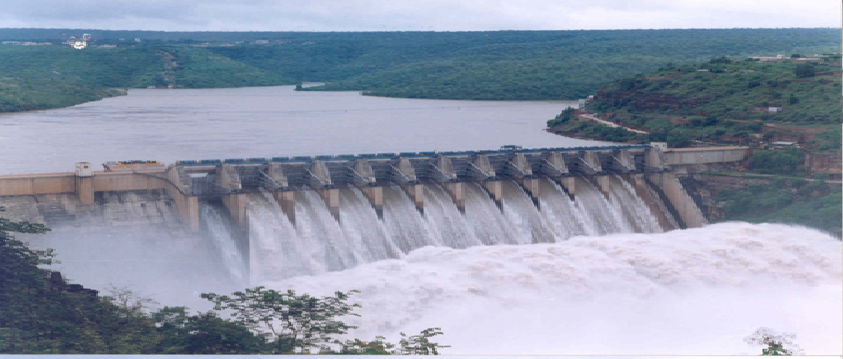
Why in News?
- Dravida Munnetra Kazhagam (DMK) Lok Sabha member S. Ramalingam, representing Mayiladuthurai constituency in Tamil Nadu, has moved the Madras High Court challenging the constitutional validity of Dam Safety Act, 2021 on the grounds that it goes against federalism and is beyond the legislative competence of the Centre.
About the News:
- The litigant claimed that the Act usurped the power of the State governments and placed the operation of specified dams under the control of the Centre.
- He contended that certain terms, including the word ‘dam’ in the Act, had been deliberately defined vaguely to give unbridled power to the Centre to treat any dam as a ‘specified dam’. He also feared that if those definitions were followed, almost all dams in the country would fall under the purview of the Act.
- Referring to Entries 17, 18 and 35 of List II (State list) of the seventh schedule of the Constitution, the petitioner contended that dams would squarely fall within the legislative domain of State Governments.
- The power of the Centre under Entry 56 of List I (Union list) was only with respect to inter-State rivers or river valleys and nothing more, he asserted.
- Entry 56 cannot be stretched to include dams and embankments exclusively within the control of the States. Parliament cannot make a declaration in relation to a subject matter of List II entries when such power is conspicuously absent in List I subjects. Power over the subject ‘interstate river and river valley’ cannot be confused with the control over dams.
- Claiming that the State governments would be in a better position than the Centre to take a call on dam safety, the legislator told the court that the Act under challenge, if not nullified, would have an adverse impact on agriculture, fisheries, hydro power generation, provision of drinking water to the people and so on.
About Dam Safety Act, 2021:
- The Act provides for surveillance, inspection, operation and maintenance of dams to prevent disasters, and institutional mechanisms to ensure safety.
- It applies to over 5,000 dams across the country, many of which are currently in poor conditions.
- It has been met with significant opposition, particularly from several states that claim the Act oversteps the Centre’s mandate.
What is its Constitutional Validity?
- According to Entry 17 of State List, the states are eligible to make laws on irrigation, water supply, canals, embankments, drainage, water power and water storage.
- According to Entry 56 of the Union List, the Parliament is allowed to make laws on regulation of river valleys and inter state rivers.
- Article 252 allows the Parliament to make laws on subjects in State list if two or more states pass resolution requiring a law. In this issue, West Bengal and Andhra Pradesh have passed resolution asking for a law on dam safety.
Which dams are Covered?
- All dams in India with a height above 15 metres come under the purview of the Act.
- Dams between 10 to 15 metres of height are also covered but only if they meet certain other specifications in terms of design and structural conditions.
National Committee on Dam Safety:
- The Act provides for the constitution of a National Committee on Dam Safety (NCDS) which is to be chaired by the Central Water Commissioner (CWC).
- The other members of the NCDS will be nominated by the Centre and will include up to 10 representatives of the Centre, 7 state government representatives, and 3 experts on dam safety.
- The NCDS is to formulate policies for dam safety and to prevent dam failures.
- In the event of a dam failure, the NCDS will analyse why the failure occurred, and suggest changes in dam safety practices to ensure there aren’t any Repetitions.
National Dam Safety Authority (NDSA):
- The Act provides for the formation of a NDSA which will be responsible for implementing the policies of the NCDS, and will resolve issues between State Dam Safety Organisations (or SDSOs) and dam owners.
- The NDSA will also specify regulations for the inspection of dams and will provide accreditation to the various agencies working on the structure of dams and their Alteration.
State Dam Safety Organisations (SDSOs)
- The Act will also result in the establishment of SDSOs, and State Committees on Dam Safety (SCDSs).
- The jurisdiction of the SDSOs will extend to all dams in that specific state.
- SDSOs will be in charge of scrutinizing dams under their jurisdiction and maintaining a database of the same.
- The SCDS will review the work of the SDSO, and will also have to assess the impact of dam-related projects on upstream and downstream states.
- The NDSA will, in some cases, possess this jurisdiction, for example, if a dam owned by one state is situated in another or crosses multiple states, or if a dam is owned by a central public sector undertaking.
- The Act gives the Central government the power to amend the functions of any of the above bodies through a notification, whenever it is deemed necessary to do so.
How does Act change the Functioning of Dams?
- If the Act is made into a law, then dam owners will have to provide a dam safety unit in each dam.
- The dam safety unit will be required to inspect the dam before and after the monsoon session, and also during and after natural disasters such as earthquakes and floods.
- The Act requires dam owners to prepare EMERGENCY action plans. Risk-assessment studies will also have to be undertaken by owners, regularly.
- At specified, regular intervals, and in the event of either a modification to the dam’s structure or a natural event that may impact the structure, dam owners will have to produce a comprehensive safety evaluation by experts.
Missionaries of Charity denied FCRA nod
30, Dec 2021

Why in News?
- The Union Home Ministry (MHA) said recently that it has refused to renew the FCRA registration of Missionaries of Charity (MoC), a Catholic religious congregation set up by Nobel laureate Mother Teresa, as “some adverse inputs were noticed.”
About the News:
- The NGO registered in Kolkata has more than 250 bank accounts across the country to utilise the foreign funds.
- Some of the biggest donors are Missionaries of Charity in the U.S.A and United Kingdom that contributed over ₹15 crore to MoC, India, for “primary health care, education assistance, treatment of leprosy patients” among others.
- MHA said in a statement that the renewal was refused for not meeting the eligibility conditions and no request / revision application has been received from Missionaries of Charity (MoC) for review of this refusal of renewal.
About Foreign Contribution (Regulation) Act (FCRA), 2010:
- Foreign funding of voluntary organizations in India is regulated under FCRA act which is implemented by the Ministry of Home Affairs.
- The Acts ensures that the recipients of foreign contributions adhere to the stated purpose for which such contribution has been obtained.
- Under the Act, organisations are required to register themselves every five years.
About Non-Governmental Organisations (NGO):
- Worldwide, the term ‘NGO’ is used to describe a body that is neither part of a government nor a conventional for-profit business organisation.
- NGOs are groups of ordinary citizens that are involved in a wide range of activities that may have charitable, social, political, religious or other interests.
- NGOs are helpful in implementing government schemes at the grassroots.
- In India, NGOs can be registered under a plethora of Acts such as the Indian Societies Registration Act, 1860, Religious Endowments Act, 1863, Indian Trusts Act, etc.
- India has possibly the largest number of active NGOs in the world; a study commissioned by the government put the number of NGOs in 2009 at 33 lakh.
- That was one NGO for less than 400 Indians, and many times the number of primary schools and primary health centres.
- Ministries such as Health and Family Welfare, Human Resource Department, etc provides funding to a handful of NGOs.
- NGOs also receive funds from abroad, if they are registered with the Home Ministry under the Foreign Contribution (Regulation) Act (FCRA).
- Without this, no NGO can receive cash or anything of value higher than Rs 25,000.
Controversies Related to FCRA:
- The FCRA regulates the receipt of funding from sources outside of India to NGOs working in India. It prohibits the receipt of foreign contribution “for any activities detrimental to the national interest”.
- The Act also held that the government can refuse permission if it believes that the donation to the NGO will adversely affect “public interest” or the “economic interest of the state”. However, there is no clear guidance on what constitutes “public interest”.
- The FCRA restrictions have serious consequences on both the rights to free speech and freedom of association under Articles 19(1)(a) and 19(1)(c) of the Constitution. The right to free speech is affected in two ways:
- By allowing only some political groups to receive foreign donations and disallowing some others, can induce biases in favour of the government.
- NGOs need to tread carefully when they criticise the regime, knowing that too much criticism could cost their survival.
- FCRA norms can reduce critical voices by declaring them to be against the public interest. This chilling effect on free speech can lead to self-censorship.
- Similar to this on unclear guidelines on public interest, in Shreya Singhal v. Union of India (2015), the Supreme Court (SC) struck down Section 66A of the Information Technology Act. The SC held that the Act could be used in a manner that has a chilling effect on free speech.
- Besides, given that the right to freedom of association is part of the Universal Declaration of Human Rights (Article 20), a violation of this right also constitutes a human rights violation.
- In April 2016, the UN Special Rapporteurs on the Rights to Freedom of Peaceful Assembly and of Association undertook a legal analysis of the FCRA, 2010.
- It stated that restrictions in the name of “public interest” and “economic interest” as invoked under the FCRA failed the test of “legitimate restrictions”.
- The terms were too vague and gave the state excessive discretionary powers to apply the provision in an arbitrary manner.
- In this context, though it is necessary to regulate corrupt NGOs, there needs to be clarity on terms like Public Interest.
Kerala Tops NITI Aayog’s Health Index
30, Dec 2021
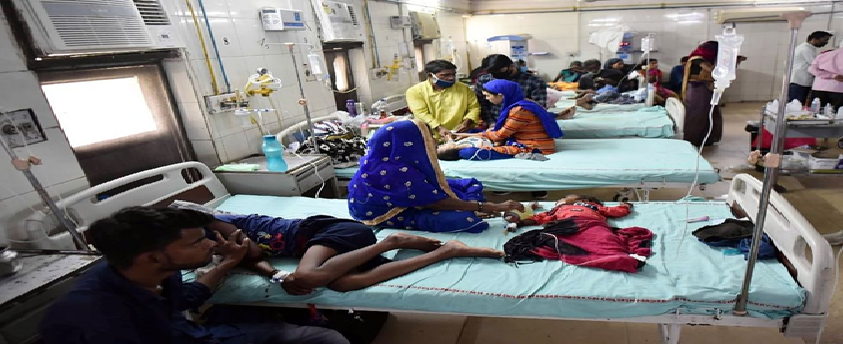
Why in News?
- For the fourth year in a row, Kerala has topped a ranking of States on health indicators; Uttar Pradesh has come in at the bottom.
About the Health Index:
- In 2017 the National Institution for Transforming India (NITI Aayog) in collaboration with the Ministry of Health and Family Welfare (MoHFW) and the World Bank initiated an annual Health Index for tracking Overall Performance and Incremental Performance across all states and Union Territories (UTs).
- In the current round of Health Index, three new indicators were added. These are Maternal Mortality Ratio (MMR), proportion of pregnant women received 4 or more ANCs and level of registration of deaths.
- The Health Index is a weighted Composite Index based on select indicators in three domains: (a) Health Outcomes; (b) Governance and Information; and (c) Key Inputs and Processes.
- The indicators have been selected based on their importance and availability of reliable data at least annually from existing data sources.
- The Health Index covers some of the SDG Targets and tracer indicators related to Goal 3 on Good Health and Well Being.
Key Findings of Health Index 2021:
- Nearly half the states and UTs did not reach the half way mark in the Composite Overall Index Score, and despite good performance, even the top ranking states and UTs could benefit from further improvements.
- The Health Index Score for the Reference Year (2019-20) revealed wide disparities in Overall Performance across the Larger States.
- Despite Good Performance, even the best performing states have significant room for improvement as the highest observed Overall Index Score was 82.20 for Kerala which is some distance from the frontier (maximum potential score is 100).
- There is large inter-state variation in Neonatal Mortality Rate (NMR), Under-five Mortality Rate (U5MR),
- Maternal Mortality Ratio (MMR) and Sex Ratio at Birth (SRB), the four key Health Outcome indicators.
State Specific Findings of Health Index 2021:
- Among the Larger States, Kerala, Tamil Nadu and Telangana emerged among the best three performers in terms of Overall Performance.
- Uttar Pradesh with the lowest Overall Reference Year (2019-20) Index Score ranked at the bottom (Rank 19) in Overall Performance, however, it ranked at the top in terms of Incremental Performance by registering the highest incremental change from the Base Year (2018-19) to Reference Year (2019-20).
- On the other hand, Kerala and Tamil Nadu were top two performers in terms of Overall Performance with the highest Reference Year (2019-20) Index Scores but ranked twelfth and eight respectively in terms of Incremental Performance.
- Telangana performed well both in terms Overall Performance as well as Incremental Performance and secured the third position in both instances.
- For the fourth consecutive round Kerala emerged as the best performer in terms of Overall Performance.
- Among the Smaller States, Mizoram emerged as the best performer in Overall Performance as well as Incremental Performance
- Among UTs, Delhi and Jammu & Kashmir ranked among the bottom UTs in terms of Overall Performance but emerged as the leading performer in terms Incremental Performance.
- The report found that 14 out of 19 larger states, four out of eight smaller states, and five out of seven Union Territories showed an improvement in the health index score between 2019 and 2010 as compared to the base year.
- Kerala had the lowest neonatal mortality rate of five per 1,000 live births, while Madhya Pradesh had the highest rate at 35 per 1,000 live births.
- The state also had the lowest under-Five mortality rate and the highest number of sex ratio at birth (measured as numbers of Female children born per 1,000 male children).
- Himachal Pradesh showed the most Improvement in terms of neonatal mortality and under-five mortality. Punjab was ranked as the most improved state in terms of sex ratio at birth.
What are the Concerns?
- All Larger States had shortage of required Specialists at the district hospitals.
- In majority of the states, the LaQshya certification of DHs for Labour Room and Maternity OT was below 20 percent level.
- According to the available data, half the states registered a decline in state government Health Expenditure to total state expenditure from 2015-16 to 2016-17.
Way Forward:
- The Health Index is a useful tool to measure and compare the Overall Performance and Incremental Performance across states and UTs over time and nudging the states and UTs to shift the focus from inputs and outputs to outcomes.
- The Health Index has strengthened the culture of use of data at the state/UT level to monitor performance and is contributing to the agenda of improving availability, quality and timeliness of data.
Any Citizen of India can buy Non-Agricultural land in J&K, says centre
30, Dec 2021
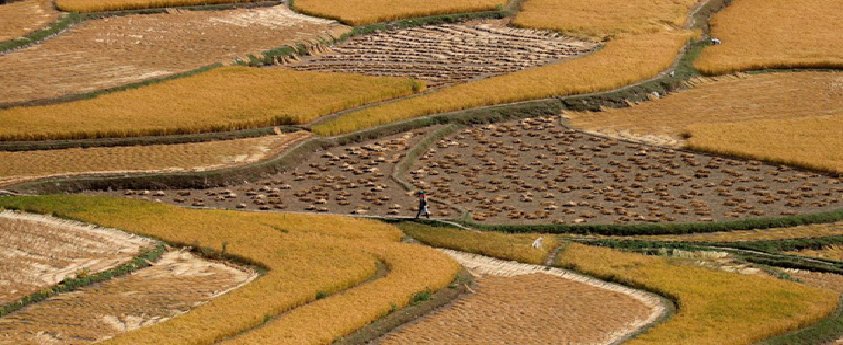
Why in News?
- The Centre and the Jammu and Kashmir Union Territory governments, at the first ever ‘J&K Real Estate Conference’ held in Jammu recently, have decided to throw open local real estate for “second homes and summer homes” to all the citizens of the country, in a Major Push to attract investments from real estate bigwigs.
About the News:
- In October 2020, the Ministry issued a notification and amended the Land Revenue Act, paving the way for anyone from other parts of the country to buy land in J&K, including agricultural land.
- There are 12 States, including Himachal Pradesh, which have provisions to regulate ownership and transfer of land under Article 371 of the Constitution. Earlier, only permanent residents – as defined by the Assembly — were eligible to buy immovable property.
- Under the newly introduced Jammu and Kashmir Development Act, the term ‘being permanent resident of the State’ as a criterion has been ‘omitted’, paving the way for Investors outside Jammu and Kashmir to invest in the Union Territory.
- As a result, any citizen of India can buy non-agriculture land in Jammu and Kashmir.
Does the Laws are Applicable for Ladakh too?
- This law is only applicable for the UT of Jammu & Kashmir and not for Ladakh.
What does the Law Says?
- Under the ‘transfer of land for the purpose of promotion of healthcare or education’, the government may now allow transfer of land “in favour of a person or an institution for the purpose of promotion of healthcare or senior secondary or higher or specialized education in J&K”.
- According to amendments made to “The Jammu & Kashmir Land Revenue Act, Samvat, 1996”, only agriculturists of J&K can purchase agricultural land. “No sale, gift, exchange, or mortgage of the land shall be valid in favour of a person who is not an agriculturist”.
- The Restriction on Conversion of Agricultural Land and Process for Permission of Non-Agriculture clause, however, puts conditions on the use of agricultural land. “No land used for agriculture purposes shall be used for any non-agricultural purposes except with the permission of the district collector”.
- Under a new provision, an Army officer not below the rank of Corps Commander can declare an area as “Strategic Area” within a local area, only for direct operational and training requirements of the armed forces.
- The introduction of the UT of J&K Reorganisation (Adaptation of Central Laws) Third Order, 2020 by the Ministry of Home Affairs (MHA) has resulted in the repeal of at least 11 land laws in vogue in J&K earlier, including the J&K Big Landed Estates Abolition Act that had resulted in famous ‘Land to tiller’ rights.
Panel to look into AFSPA withdrawal from Nagaland
29, Dec 2021
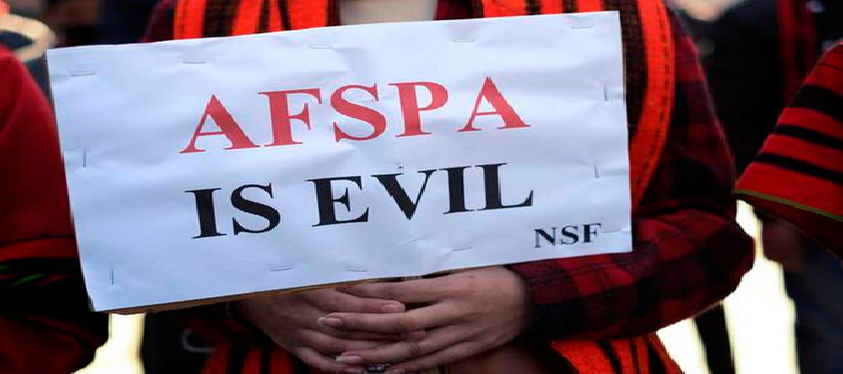
Why in News?
- Days after a botched ambush by an elite armed forces unit killed 13 civilians at Oting in Nagaland’s Mon district, a decision has been taken to constitute a committee to study the possibility of withdrawing the Armed Forces (Special Powers) Act (AFSPA) from the State.
About the News:
- The committee will be headed by the Additional Secretary (Northeast) in the Ministry of Home Affairs and will include Nagaland’s Chief Secretary and Director-General of Police.
- The other members will be Inspector General of Assam Rifles (North) and a representative of the Central Reserve Police Force (CRPF).
- The committee would submit its report within 45 days. The withdrawal of the “disturbed area” notification and the AFSPA from Nagaland will be based on the recommendations of the committee.
What is the Issue?
- MHA said the area comprising the whole of Nagaland is in such a “disturbed and dangerous condition” that the use of armed forces in aid of the civil power is necessary.
- But, Nagaland CM criticised the Centre for extending the “disturbed area” tag on Nagaland every year to prolong the AFSPA despite a ceasefire agreement for almost 25 years.
What does the AFSPA mean?
- In simple terms, AFSPA gives armed forces the power to maintain public order in “disturbed areas”.
Powers given to Armed Forces:
- They have the authority to prohibit a gathering of five or more persons in an area, can use force or even open fire after giving due warning if they feel a person is in contravention of the law.
- If Reasonable suspicion exists, the army can also arrest a person without a warrant; enter or search premises without a warrant; and ban the possession of firearms.
- Any person arrested or taken into custody may be handed over to the officer in charge of the nearest police station along with a report detailing the circumstances that led to the arrest.
What is a “Disturbed Area” and who has the power to Declare it?
- A disturbed area is one which is declared by notification under Section 3 of the AFSPA. An area can be disturbed due to differences or disputes between members of different religious, racial, Language or Regional Groups or castes or Communities.
- The Central Government or the Governor of the State or administrator of the Union Territory can declare the whole or part of the State or Union Territory as a disturbed area.
Has there been Any Review of the Act?
- On November 19, 2004, the Central government appointed a five-member committee headed by Justice B P Jeevan Reddy to review the provisions of the act in the north eastern states.
- The committee submitted its report in 2005, which included the following recommendations: (a) AFSPA should be repealed and appropriate provisions should be inserted in the Unlawful Activities (Prevention) Act, 1967; (b) The Unlawful Activities Act should be modified to clearly specify the powers of the armed forces and paramilitary forces and (c) grievance cells should be set up in each district where the armed forces are deployed.
- The 5th report of the Second Administrative Reforms Commission on public order has also recommended the repeal of the AFSPA.
Special Category Status to States
29, Dec 2021
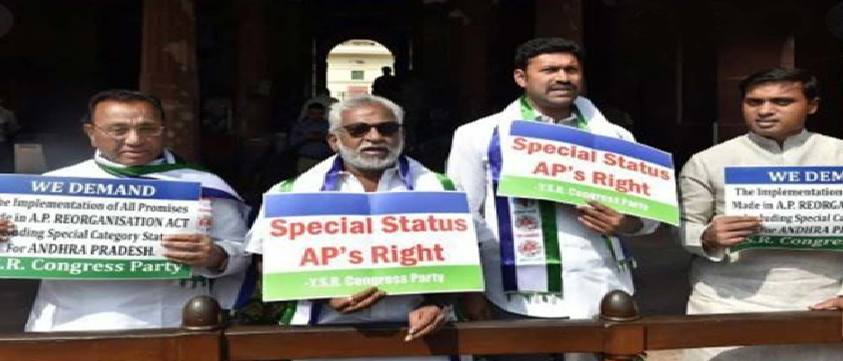
Why in News?
- Union Minister of State for Finance Pankaj Chaudhary has asserted that the Central Government has Extended a Special Package in lieu of the Special Category Status (SCS) to Andhra Pradesh.
What is Special Category Status (SCS)?
- There is no provision of SCS in the Constitution; the Central government extends financial assistance to states that are at a comparative disadvantage against others.
- The concept of SCS emerged in 1969 when the Gadgil formula (that determined Central assistance to states) was approved.
- First SCS was accorded in 1969 to Jammu and Kashmir, Assam and Nagaland.
- Over the years, eight more states were added to the list — Arunachal Pradesh, Himachal Pradesh, Manipur, Meghalaya, Mizoram, Sikkim, Tripura and, finally, in 2010, Uttarakhand.
- Until 2014-15, SCS meant these 11 states received a variety of benefits and sops.
What are the Differences between Special Status and Special Category Status?
- The constitution provides special status through an Act that has to be passed by 2/3rds majority in both the houses of Parliament whereas the special category status is granted by the National Development Council, which is an administrative body of the government.
- For example, Jammu and Kashmir enjoyed a special status as per Article 370 and also special category status as per Article 371.
- But now Article 35A has been scrapped and it has become a union territory with legislature. Now, both Special Status and Special Category status doesn’t apply to J&K anymore.
- The Ministry of Home Affairs (MHA) is holding consultations with the Union Territories of Jammu and Kashmir (J&K) and Ladakh to grant them “special category status” on the lines of Article 371 of the Constitution.
What are the Criteria for Special Category Status?
- Hilly and difficult terrain
- Low population density or sizeable share of tribal population
- Strategic location along borders with neighbouring countries
- Economic and infrastructural backwardness
- Non-viable nature of state
Who Grants Special Category Status to States?
- The decision to grant special category status lies with the National Development Council, composed of the prime minister, union ministers, chief ministers and members of the planning commission, who guide and review the work of the commission.
- Special category status for plan assistance has been granted in the past by the National Development Council (NDC) to some states that are characterized by a number of features Necessitating Special Consideration.
What are the Benefits confer to the States with Special Category Status?
- The Central Government bears 90 percent of the state expenditure on all centrally-Sponsored schemes and external aid while rest 10 percent is given as loan to state at zero Percent rate of interest. Usually, the ratio for general category States is 70% loan and 30% Grant.
- Preferential treatment in getting Central Funds.
- Concession on excise duty to attract Industries to the state.
- 30 percent of the Centre’s gross budget also goes to special category states.
- These states can avail the benefit of debt-swapping and debt relief schemes.
- States with special category status are exempted from customs duty, corporate tax, income tax and other taxes to attract investment.
- Special category states have the facility that if they have unspent money in a financial year; it does not lapse and gets carry forward for the next financial year.
What are the Concerns?
- Considering special status to any new State will result in demands from other States and dilute the benefits further.
- It is also not economically beneficial for States to seek special status as the benefits under the current dispensation are minimal.
- Therefore, States facing special problems will be better off seeking a special package.
Raising Legal Age of Marriage for Women
28, Dec 2021

Why in News?
- The Cabinet has decided to raise the legal age of Marriage for women from 18 to 21.
About the News:
- This decision is based on the recommendation of a panel led by Jaya Jaitly.
- Finance Minister Nirmala Sitharaman in her Budget speech last year proposed a panel on the “age of a girl entering motherhood” to lower maternal mortality rates and improve nutrition levels.
- But when the decision to appoint a task force was announced, its terms of reference included examining “the correlation of age of marriage and motherhood” with health and Nutritional Status of Mothers and Infants.
What are the Important Recommendations?
- The age of Marriage should be increased to 21 years.
- The Government should look into increasing access to schools and colleges for girls, including their transportation to these institutes from far-flung areas.
- Skill and Business training has also been recommended, as has Sex Education in schools.
- These deliveries must come first, as, unless they are implemented and women are Empowered, the law will not be as effective.
What is the Rationale behind the proposal?
- The committee has said the recommendation is not based on the rationale of population control (India’s total fertility rate is already declining) but more with women’s Empowerment and Gender Parity.
- The committee has said access to education and livelihood must be enhanced Simultaneously for the law to be effective.
Criticism:
- Women’s rights activists have opposed the suggestion and have cited evidence to show that such a move may be used to incarcerate young adults marrying without parents’ consent.
- Also, this move would lead to criminalisation of a large number of marriages that will take place once the law comes into effect.
What the law says?
- Currently, the law prescribes that the minimum age of marriage is 21 and 18 years for men and women, respectively.
- The minimum age of marriage is distinct from the age of majority, which is gender-neutral.
- An individual attains the age of majority at 18 as per the Indian Majority Act, 1875.
- For Hindus, Section 5(iii) of the Hindu Marriage Act, 1955 sets 18 years as the minimum age for the bride and 21 years as the minimum age for the groom. Child marriages are not illegal but can be declared void at the request of the minor in the marriage.
- In Islam, the marriage of a minor who has attained puberty is considered valid under personal law.
- The Special Marriage Act, 1954 and the Prohibition of Child Marriage Act, 2006 also prescribe 18 and 21 years as the minimum age of consent for marriage for women and men respectively.
Why is the law being Relooked at?
- From bringing in gender-neutrality to reduce the risks of early pregnancy among women, there are many arguments in favour of increasing the minimum age of marriage of women.
- Early pregnancy is associated with increased child mortality rates and affects the health of the mother.
- Despite laws mandating minimum age and criminalising sexual intercourse with a minor, child marriages are very prevalent in the country.
- Also, according to a study, children born to adolescent mothers (10-19 years) were 5 percentage points more likely to be stunted (shorter for their age) than those born to young adults (20-24 years).
FCRA Licence of 3 Minority NGOs Revoked
28, Dec 2021
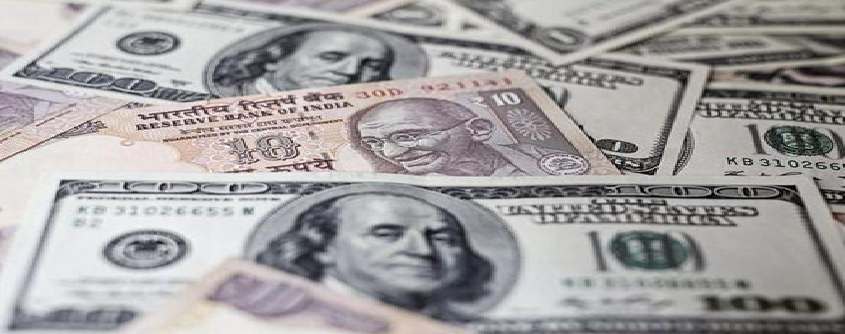
Why in News?
- The Union Ministry of Home Affairs (MHA) has cancelled the FCRA registration of a Vadodara-based NGO that was accused by the Gujarat police of illegally converting members of the Hindu community, funding the anti-CAA protests and for criminal activities to strengthen Islam.
About the News:
- The registration of two other Christian NGOs — the New Hope Foundation, based in Tamil Nadu, and Holy Spirit Ministries from Karnataka were also cancelled.
- The Foreign Contribution Regulation Act (FCRA) registration of AFMI Charitable Trust was cancelled by the MHA for violating the provisions of the Act.
- FCRA is mandatory for associations and non-government organisations (NGOs) to receive foreign funds.
- Recently, MHA had put 10 Australian, American and European donors on its watchlist, following which the Reserve Bank of India wrote to all banks that any funds sent by the foreign donors should be brought to the notice of the Ministry and not cleared without its permission.
About Foreign Contribution (Regulation) Act (FCRA), 2010:
- Foreign funding of voluntary organizations in India is regulated under FCRA act which is implemented by the Ministry of Home Affairs.
- The Acts ensures that the recipients of foreign contributions adhere to the stated purpose for which such contribution has been obtained.
- Under the Act, organisations are required to register themselves every five years.
About Non-Governmental Organisations (NGO):
- Worldwide, the term ‘NGO’ is used to describe a body that is neither part of a government nor a conventional for-profit Business Organisation.
- NGOs are Groups of ordinary citizens that are involved in a wide range of activities that may have charitable, social, political, religious or other interests.
- NGOs are helpful in implementing government schemes at the grassroots.
- In India, NGOs can be registered under a plethora of Acts such as the Indian Societies Registration Act, 1860, Religious Endowments Act, 1863, Indian Trusts Act, etc.
- India has possibly the largest number of active NGOs in the world; a study commissioned by the government put the number of NGOs in 2009 at 33 lakh.
- That was one NGO for less than 400 Indians, and many times the number of primary schools and primary health centres.
- Ministries such as Health and Family Welfare, Human Resource Department, etc provides funding to a handful of NGOs.
- NGOs also receive funds from abroad, if they are registered with the Home Ministry under the Foreign Contribution (Regulation) Act (FCRA).
- Without this, no NGO can receive cash or anything of value higher than Rs 25,000.
Controversies Related to FCRA:
- The FCRA regulates the receipt of funding from sources outside of India to NGOs working in India. It prohibits the receipt of foreign contribution “for any activities detrimental to the national interest”.
- The Act also held that the government can refuse permission if it believes that the donation to the NGO will adversely affect “public interest” or the “economic interest of the state”. However, there is no clear guidance on what constitutes “public interest”.
- The FCRA restrictions have serious consequences on both the rights to free speech and freedom of association under Articles 19(1)(a) and 19(1)(c) of the Constitution. The right to free speech is affected in two ways:
- By allowing only some political groups to receive foreign donations and disallowing some others, can induce biases in favour of the government.
- NGOs need to tread carefully when they criticise the regime, knowing that too much criticism could cost their survival.
- FCRA norms can reduce critical voices by declaring them to be against the public interest. This chilling effect on free speech can lead to self-censorship.
- Similar to this on unclear guidelines on public interest, in Shreya Singhal v. Union of India (2015), the Supreme Court (SC) struck down Section 66A of the Information Technology Act. The SC held that the Act could be used in a manner that has a chilling effect on free speech.
- Besides, given that the right to freedom of association is part of the Universal Declaration of Human Rights (Article 20), a violation of this right also constitutes a human rights violation.
- In April 2016, the UN Special Rapporteurs on the Rights to Freedom of Peaceful Assembly and of Association undertook a legal analysis of the FCRA, 2010.
- It stated that restrictions in the name of “public interest” and “economic interest” as invoked under the FCRA failed the test of “legitimate restrictions”.
- The terms were too vague and gave the state excessive discretionary powers to apply the provision in an arbitrary manner.
- In this context, though it is necessary to regulate corrupt NGOs, there needs to be clarity on terms like Public Interest.
SC Dismisses Maharashtra plea for SECC-2011 raw data
28, Dec 2021
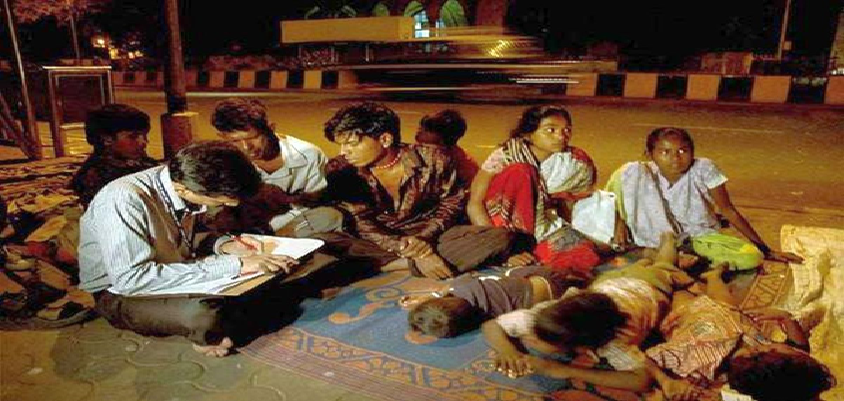
Why in News?
- The Supreme Court has recently said the law negated a caste census and “the Constitution believes in population and not in caste or religion” even as the Centre insisted that data collated during a Socio-Economic Caste Census (SECC) in 2011 was “fraught with mistakes and unusable” for any purpose whatsoever.
What is the Issue?
- The court’s oral observations came moments before it dismissed a writ petition filed by Maharashtra to direct the Centre to part with the raw data collected in the SECC-2011.
- The State stated it wanted to use the data for implementing reservation to the Other Backward Classes (OBC) in its local body polls.
- The Centre, clarified to the court that the SECC was not a “census” undertaken under the Census Act of 1948 by the office of the Registrar General of India. It was an “executive act”, independent of the census exercise, and done on the orders of the Ministry of Social Justice and Empowerment.
- The SECC was organised not as an OBC survey but to get the caste status of all in the country in order to improve the delivery of targeted benefits.
- An affidavit filed by the Social Justice Ministry in the Supreme Court in September maintained that a caste census of the Backward Classes was “administratively difficult and cumbersome”.
- Maharashtra said the State had a right to know about the data collected in the SECC, regardless of whether the census was done on the basis of an executive fiat or under the Census Act.
What were the court’s observations?
- The court observed that it cannot issue a mandamus to produce the raw data if the SECC was inaccurate and had no “force of law”.
- The affidavit emphatically states that the data which is collated is not accurate and is unusable for any purpose whatsoever.
- If that is the stand taken by the Centre, we fail to understand as to how mandamus can be issued to the respondents to permit State of Maharashtra to use the data for any purpose. Such a direction, if issued, would lead to more confusion and uncertainty which cannot be countenanced.
- While rejecting Maharashtra’s plea, the court clarified that the State could pursue other remedies permissible in law.
- It noted that merely because Maharashtra was obliged to comply with the “triple test” requirement before enforcing the reservation for OBCs in the local bodies did not mean that the Centre could be ordered to share information which it itself had classified unusable.
- Maharashtra could not be allowed to employ wrong data in the SECC for reservation in its local body elections.
What is a Census?
- The origin of the Census in India goes back to the colonial exercise of 1881.
- Census has evolved and been used by the government, policymakers, academics, and others to capture the Indian population, access resources, map social change, delimitation exercise, etc.
- However, as early as the 1940s, W.W.M. Yeatts, Census Commissioner for India for the 1941 Census, had pointed out that “the census is a large, immensely powerful, but blunt Instrument unsuited for Specialized Inquiry.”
What is SECC 2011?
- The Socio-Economic Caste Census of 2011 was a major exercise to obtain data about the socio-economic status of various communities.
- It had two components: a survey of the rural and urban households and ranking of these households based on pre-set parameters, and a caste census.
- However, only the details of the economic conditions of the people in rural and urban households were released. The caste data has not been released till now.
- SECC 2011 was conducted by three separate authorities but under the overall coordination of Department of Rural Development in the Government of India.
- Census in Rural Area has been conducted by the Department of Rural Development (DoRD).
- Census in Urban areas is under the administrative jurisdiction of the Ministry of Housing and Urban Poverty Alleviation (MoHUPA).
- Caste Census is under the administrative control of Ministry of Home Affairs: Registrar General of India (RGI) and Census Commissioner of India.
Difference between Census & SECC:
- The Census provides a portrait of the Indian population, while the SECC is a tool to identify beneficiaries of state support.
- Since the Census falls under the Census Act of 1948, all data are considered confidential, whereas all the personal information given in the SECC is open for use by Government Departments to grant and/or restrict benefits to households.
How have caste details been collected so far?
- While SC/ST details are collected as part of the census, details of other castes are not collected by the enumerators. The main method is by self-declaration to the enumerator.
- So far, backward classes commissions in various States have been conducting their own counts to ascertain the population of backward castes.
What kind of caste data is published in the Census?
- Every Census in independent India from 1951 to 2011 has published data on Scheduled Castes and Scheduled Tribes, but not on other castes. Before that, every Census until 1931 had data on caste.
Pros of Caste Census:
- The Precise Number of the population of each caste would help tailor the reservation policy to ensure Equitable Representation of all of them.
Concerns Associated:
- There is a possibility that it will lead to heartburn among some sections and spawn demands for larger or separate quotas.
- It has been alleged that the mere act of labelling persons as belonging to a caste tends to Perpetuate the System.
Outsiders bought 7 plots in J&K, says Home Ministry
28, Dec 2021
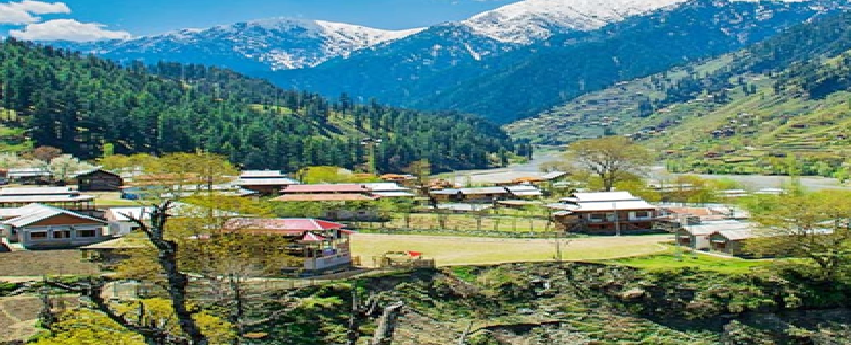
Why in News?
- The Ministry of Home Affairs (MHA) informed the Rajya Sabha recently that “seven plots of land” have been purchased by persons from outside the Union Territory (UT) of Jammu and Kashmir (J&K).
About the News:
- In October 2020, the Ministry issued a notification and amended the Land Revenue Act, paving the way for anyone from other parts of the country to buy land in J&K, including Agricultural Land.
- There are 12 States, including Himachal Pradesh, which have provisions to regulate ownership and transfer of land under Article 371 of the Constitution. Earlier, only permanent residents – as defined by the Assembly — were eligible to buy Immovable Property.
Does the Laws are Applicable for Ladakh too?
- This law is only applicable for the UT of Jammu & Kashmir and not for Ladakh.
What does the Law Says?
- Under the ‘transfer of land for the purpose of promotion of healthcare or education’, the government may now allow transfer of land “in favour of a person or an institution for the purpose of promotion of healthcare or senior secondary or higher or specialized education in J&K”.
- According to amendments made to “The Jammu & Kashmir Land Revenue Act, Samvat, 1996”, only agriculturists of J&K can purchase agricultural land. “No sale, gift, exchange, or mortgage of the land shall be valid in favour of a person who is not an agriculturist”.
- The Restriction on Conversion of Agricultural Land and Process for Permission of Non-Agriculture clause, however, puts conditions on the use of agricultural land. “No land used for agriculture purposes shall be used for any non-agricultural purposes except with the permission of the district collector”.
- Under a new provision, an Army officer not below the rank of Corps Commander can declare an area as “Strategic Area” within a local area, only for direct operational and training requirements of the Armed Forces.
FUGITIVE ECONOMIC OFFENDERS AND THEIR EXTRADITION
15, May 2020
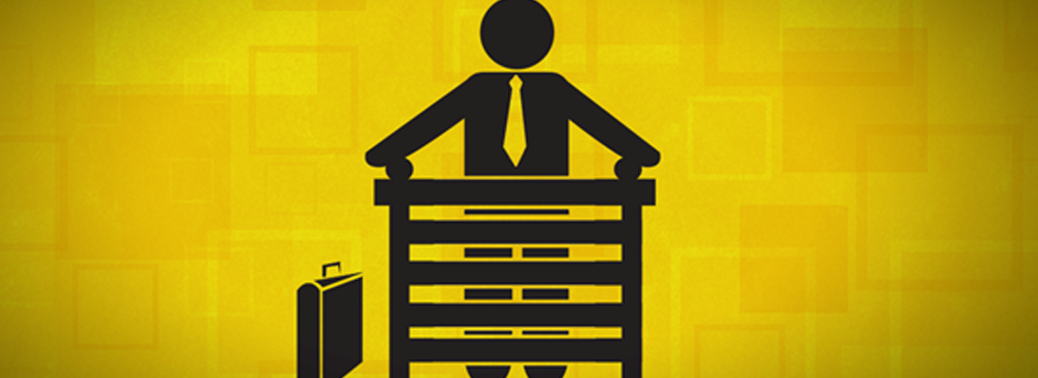
Why in News?
- The UK High Court rejected a plea of Fugitive Economic Offender Vijay Mallya to move the Supreme Court against the dismissal of his appeal challenging the lower court’s approval of his Extradition to India in the IDBI Bank fraud case.
Who is a Fugitive Economic Offender?
- A person can be named an offender under this law if there is an arrest warrant against him or her for committing any offence listed in the schedule of the act and for involvement in economic offences involving at least Rs. 100 crore or more and has fled from India to escape Legal Action.
- Major criteria that have to be satisfied are:
1. The Person has left the country to avoid facing prosecution.
2. He refuses to return to India to face prosecution.
About Fugitive Economic Offenders Act, 2018:
- The Fugitive Economic Offenders Act, 2018 seeks to confiscate properties of economic offenders who have left the country to avoid facing criminal prosecution.
- Offences involving amounts of Rs. 100 crore or more fall under the purview of this law.
- Some of the offences listed in the schedule of the bill are-counterfeiting government stamps or currency, cheque dishonour for insufficiency of funds, money laundering, transactions defrauding creditors etc.
What are its Proceedings as per the Act?
- To declare a person an FEO, an application will be filed in a Special Court (designated under the Prevention of Money-Laundering Act, 2002) containing details of the properties to be confiscated, and any information about the person’s whereabouts.
- The Special Court will require the person to appear at a specified place at least six weeks from issue of notice. Proceedings will be terminated if the person appears.
- Attachment of the property of a fugitive economic offender.
- Confiscation of the property of an individual declared as a fugitive economic offender resulting from the proceeds of crime. Confiscation of other property belonging to such offender in India and abroad including benami property.
- Disentitlement of the fugitive economic offender from defending any civil claim.
- All cases under the proposed law will be tried under the Prevention of Money Laundering (PMLA) Act and the administrator will sell the fugitive’s properties to pay off the lenders.
- The proposed law will have an overriding effect over all other pieces of legislation.
What is Extradition?
- It is the formal process of one state surrendering an individual to another state for prosecution or punishment for crimes committed in the requesting country’s jurisdiction.
- This is generally enabled through a bilateral or multilateral treaty.
- The legal basis for extradition with countries with which India does not have an Extradition treaty is provided by Section 3 (4) of the Indian Extradition Act, 1962.
About Indian Extradition Act, 1962:
- In India, the extradition of a fugitive criminal is governed under the Indian Extradition Act, 1962. This is for both extraditing of persons to India and from India to foreign countries. The basis of the extradition could be a treaty between India and another country. India has extradition treaties with 39 countries currently.
- Example, underworld don Abu Salem was extradited from Portugal to India to face charges. He, along with his wife, was extradited on the conditions that they would not be given the death penalty in India. This was so because European law prevents extradition to a country where capital punishment is in practice.
What is the Extradition Procedure in India?
- Information about the fugitive criminals wanted in foreign countries is received from the country or through Interpol.
- The Interpol wing of the CBI then passes the information to the Concerned police departments.
- The information is also passed on to the Immigration Authorities.
- Then, action can be taken under the 1962 Act.
Way Forward:
- Extradition is as much a Political Process as it is a Judicial one.
- The expeditious processing of extradition requests and the commitment to prepare for and defend the case before Courts depends on bilateral relations and the opportune use of diplomacy and negotiations to push for the process by the requested country.
- India needs to take steps to dispel concerns regarding poor Prison Conditions and potential human rights violations of the requested Person.
- India could consider signing international instruments, such as the UN Convention against Torture (1984) to establish India’s zero tolerance towards torture and custodial violence.
- For addressing investigational delays, it is imperative to improve the capacity and organizational efficiencies of law enforcement agencies so that they may conduct speedy investigation in these cases.
- To ensure that India’s extradition requests are in compliance with treaty conditions and documentary requirements, India must put in Place Suitable Organizational Mechanisms to familiarize itself with laws and regulations of Treaty states.
- India could adopt the good practices of the US’ Office of International Affairs (OIA), Washington’s primary body to handle extradition requests, and employ lawyers and station Trained Liaison officers in countries with which the country has extradition Relations.
GUIDE TO DETECT FAKE NEWS
13, May 2020

Why in News?
- The Bureau of Police Research and Development (BPRD), a think-tank under the Union Home Ministry has published guidelines to aid law enforcement agencies to identify fake News and Videos.
About BPRD:
- The Government of India established the Bureau of Police Research and Development (BPR&D), under the Ministry of Home Affairs in 1970s.
- It replaced Police Research and Advisory Council (1966), with the primary objective of modernization of police force.
- In 1995 Government of India decided to entrust issues relating to Correctional Administration Work to the BPR&D.
- Thereby BPR&D has to ensure the implementation of prison reforms as well.
- The Government of India further decided to create National Police Mission under the administrative control of BPR&D to transform the police forces in the country.
- The primary objective of modernization of police force are:
- To take direct and active interest in the issues
- To promote a speedy and systematic study of the police problems,
- To apply science and technology in the methods and techniques used by police.
Why these Guidelines were Necessary?
- Digital news has led to Increased incidence of Fake News or Yellow Journalism.
- Fake news is published with the intent to damage an agency, entity or a Person and gain financially or politically and it often uses Sensationalist, Dishonest or Outright Fabricated headlines to increase readership.
- In the wake of the pandemic, fake news and videos have spread panic, increased hatred and communal violence. Miscreants have used fake URLs to mislead people who wanted to donate to PM-CARES Fund.
What are the Guidelines Given?
Spotting Fake News:
- The guideline mentions several indicative signs that officials must look for to identify possible fake news.
- The officers should read beyond “outrageous” headlines designed to attract clicks and read the whole article.
- A possible case of fake news could be when headlines, visuals or captions do not support the content or when genuine contents or sources are impersonated with false or made-up sources.
- A search on the author of the article would also enable insights into the veracity of the news.
- The investigating officer must stay alert to clues such as language since such websites and links usually have Spelling Mistakes.
Cross-Checking:
- The officials should refer to trusted news sources to verify whether the story is being reported elsewhere.
- When a story is reported in multiple places, it is more likely to be true.
- The manual also gives an indicative list of websites that could be accessed for fact-checking.
- The guidelines ask police and other investigating agencies to use open domain tools for collecting more information on fake videos.
- BPRD has cautioned that the Investigating officer may consider the case sensitivity before resorting to these tools since there is the risk of data leakage that may influence or mislead an Investigation.
INTER-STATE MIGRANT WORKMEN ACT, 1979
13, May 2020

Why in News?
- The unprecedented distress and misery faced by migrant workers due to the current lockdown has drawn attention to a beneficial legislation dedicated to their welfare.
Inter-State Migrant Workmen Act, 1979:
- Inter-State Migrant Workmen (Regulation of Employment and Conditions of Service) Act, 1979 seeks to regulate the employment of inter-State migrants and their conditions of service.
Applicability:
- It is applicable to every establishment that employs five or more migrant workmen from other States; or if it had employed five or more such workmen on any day in the preceding 12 months.
- It is also applicable to contractors who employed a similar number of inter-State workmen.
- The Act would apply regardless of whether the five or more workmen were in addition to others employed in the establishment or by the contractors.
- It envisages a system of registration of such establishments.
Provisions:
- The principal employer is prohibited from employing inter-State workmen without a certificate of registration from the relevant authority.
- The law also lays down that every contractor who recruits workmen from one State for deployment in another State should obtain a licence to do so.
- The wage rates, holidays, hours of work and other conditions of service of an inter-State migrant workmen shall be the same as those extended to other workmen in the same establishment, if the nature of their work is similar.
- In other cases, it would be as prescribed by the Appropriate Government.
- In no case, shall the wages be lower than what is prescribed under the Minimum Wages Act.
Beneficial Provisions for Inter-State Migrants:
- The provision for registration of establishments employing inter-State workers creates a system of accountability.
- It acts as the first layer of formalising the utilisation of their labour.
- It helps the government keep track of the number of workers employed and provides a legal basis for regulating their conditions of service.
- As part of the licensing process, contractors are bound by certain conditions.
- These include committing them to providing terms and conditions of the agreement or any other arrangement on the basis of which they recruit workers.
- These terms include the remuneration payable, hours of work, fixation of wages and other essential amenities in respect of the inter-State migrant workmen.
DATA RELATED TO BIRTH RATE AND DEATH RATE
11, May 2020

Why in News?
- Recently, the Registrar General of India released data related to birth rate, death rate and infant mortality rate in its Sample Registration System (SRS) bulletin for 2018.
Highlights of the Report:
Birth Rate:
- India’s birth rate has Declined drastically over the last four decades from 36.9 in 1971 to 20.0 in 2018.
- The rates are Calculated per one Thousand of the Population.
- The rural-urban differential has also narrowed. However, the birth rate has continued to be higher in Rural Areas compared to Urban Areas.
- Birth rate is a crude measure of fertility of a population and a crucial determinant of Population Growth.
- Bihar (26.2) continues to remain at the top of list in birth rate while Andaman and Nicobar (11.2) is at the Bottom.
Death Rate:
- The death rate of India has witnessed a significant decline over the last four decades from 14.9 in 1971 to 6.2 in 2018.
- The rates are calculated per one thousand of the population.
- In the last decade, death rate at an all-India level has declined from 7.3 to 6.2.
- The decline has been steeper in rural areas.
- Chhattisgarh has the highest death rate at 8 and Delhi, an almost entirely urban state, has a lowest death rate of 3.3.
- Mortality is one of the basic components of population change. The data related to it is essential for demographic studies and Public Health Administration.
Infant Mortality Rate:
- Infant mortality is the number of deaths of children under one year of age per 1000 live births.
- IMR has decreased to 32 about one-fourth as compared to 1971 (129).
- The IMR at an all-India level has declined from 50 to 32 in the last decade.
- Madhya Pradesh has the highest IMR of 48 and Nagaland has the lowest IMR of 4.
Sample Registration System (SRS):
- The SRS is a demographic survey for providing reliable annual estimates of infant mortality rate, birth rate, death rate and other fertility and mortality indicators at the national and sub-national levels.
- It was initiated on a pilot basis by the Registrar General of India in a few states in 1964-65, it became fully operational during 1969-70.
- The field investigation consists of continuous enumeration of births and deaths in selected sample units by resident part time enumerators, generally anganwadi workers & teachers, and an independent survey every six months by SRS supervisors. The data obtained by these two independent functionaries are matched.
Registrar General of India:
- Registrar General of India was founded in 1961 by the Government of India under the Ministry of Home Affairs.
- It arranges, conducts and analyses the results of the demographic surveys of India including Census of India and Linguistic Survey of India.
- The position of Registrar is usually held by a civil servant holding the rank of Joint Secretary.
MODIFICATIONS IN PMRF SCHEME
11, May 2020
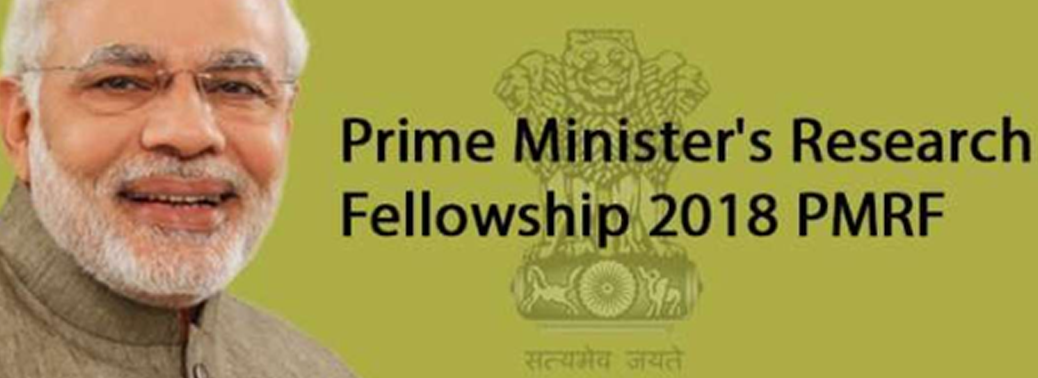
Why in News?
- The Ministry of Human Resource Development has announced amendments in the Prime Minister’s Research Fellowship Scheme.
Highlights:
- After the amendments, for the students from any recognised institute/ university (other than IISc/ IITs/NITs/IISERs/IIEST/CF IIITs), the requirement of GATE Score is reduced to 650 from 750 apart from minimum CGPA of 8 or equivalent.
- There will be two channels of entries, one direct entry and lateral entry.
- In lateral entry, the students, who are pursuing PhD in PMRF granting institutions (completed 12 months or 24 months as per certain requirements) can also apply to become fellow under the scheme as per new guidelines.
- The NITs, which appear in top 25 institutions as per NIRF Ranking can also become PMRF Granting institution.
- The Minister hoped that the modifications would enable more students to avail of the Benefit under the Prime Minister’s Research Fellowship Scheme.
Research and Innovation Division:
- To boost research a dedicated Division is being created in the ministry with the name of “Research and Innovation Division”.
- This division will be headed by a director who will be coordinating research work of various institutions coming under MHRD.
Prime Minister’s Research Fellows Scheme:
- The PMRF Scheme has been designed for improving the quality of research in various higher educational institutions in the country.
- With attractive fellowships, the scheme seeks to attract the best talent into research thereby Realizing the Vision of Development Through Innovation.
- The Scheme was announced in the Budget 2018-19.
- The Institutes which can offer PMRF include all the IITs, all the IISERs, Indian Institute of Science, Bengaluru and some of the top Central Universities/NITs that offer science and/or technology degrees.
- The metrics of the candidates are judged (but not restricted to) by a strong research proposal, publications record and grades & publication in reputed journals/conferences.
EPIDEMIC DISEASE ACT, 1897
07, May 2020
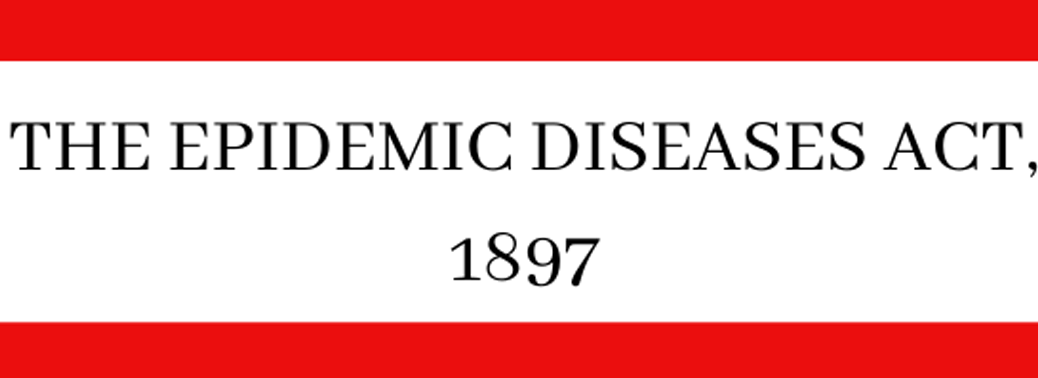
Why in News?
- Recently, the Union Government Directed States and Union Territories to invoke the Epidemic Disease Act, 1897 to Fight the Covid-19 outbreak.
Background Info:
- The Epidemic Diseases Bill was introduced in 1897, during an outbreak of bubonic plague.
- Need: Since the existing laws were insufficient to deal with various matters such as “overcrowded houses, neglected latrines and huts, accumulations of filth, insanitary cowsheds and stables, and the disposal of house refuse.
- Special Powers: The Bill had called for special powers for governments of Indian provinces and local bodies, including to check passengers of trains and sea routes.
About Epidemic Disease Act, 1897:
- Objective:
- The Epidemic Diseases Act aims to provide for the better prevention of the spread of dangerous epidemic diseases.
- Under the act, temporary provisions or regulations can be made to be observed by the public to tackle or prevent the outbreak of a disease.
- Powers to Central Government:
- Section 2A of the Act empowers the central government to take steps to prevent the spread of an epidemic.
- Health is a State subject, but by invoking Section 2 of the Epidemic Diseases Act, advisories and directions of the Ministry of Health & Family Welfare will be enforceable.
- It allows the government to inspect any ship arriving or leaving any post and the power to detain any person intending to sail or arriving in the country.
- Penalty for Disobedience:
- This act provides for penalties for disobeying any regulation or order made under the Act. These are according to section 188 of the Indian Penal Code (Disobedience to order duly promulgated by a public servant).
- Legal Protection to Implementing Officers:
- Section 4 gives legal protection to the implementing officers acting under the Act.
- The Epidemics Diseases Act is routinely enforced across the country for dealing with outbreaks of diseases such as Swine Flu, Dengue.
- For Example in 2009, to tackle the swine flu outbreak in Pune, Section 2 powers were used to open screening centres in civic hospitals across the city, and swine flu was declared a notifiable disease.
- Recently, the Cabinet amended the Act through an ordinance stating that commission or abetment of acts of violence against Healthcare Service Personnel shall be punished with imprisonment for a term of three months to five years, and with fine of Rs 50,000 to Rs 2 lakh.
- In case of causing grievous hurt, imprisonment shall be for a term of six months to seven years and a fine of Rs1 lakh to Rs 5 lakh.
Enforcement of the Act in the Recent Past:
Recent Changes in the Epidemic Diseases Act, 1897:
ISSUE OF RENT CONTROL DURING COVID-19
07, May 2020

Why in News?
- With the social and economic impacts of the current pandemic and associated lockdown, there is a clarion call made to landlords by tenants to ‘forgive’ rent for a month or two.
Highlights:
- Government, civil society, academia, and migrants themselves are already urging landlords to stop evictions as it would exacerbate the pandemic.
- Governments are Currently ‘Ordering’ or Requesting Landlords to excuse rent and stop Evictions on the Basis of the Disaster Management (DM) Act of 2005.
Problems related to India’s Rent Arrangements:
- Informality in the Rental Housing Market:
- The vast majority of rent arrangements in India are informal and unrecorded.
- Due to this it is uncertain how many people are giving out their houses on rent, for how much, how long, or under what terms and conditions.
Loopholes in Existing Legislations:
- Typical rent control laws have historically favoured tenants, considering the landlords as petty capitalists exploiting poor, vulnerable tenants.
- Consumption data for poor households in urban areas indicate a uniform lack of savings or access to social and economic safety nets for both landlords and tenants.
- That means many times landlords themselves, by and large, cannot afford a no-rent month.
- Disaster Management(DM) Act of 2005 does not have any provisions for demanding continuation of rental housing arrangements.
- There is no legal obligation for landlords to excuse rent or not evict tenants in the current pandemic.
Way Ahead:
- Removing Hurdles in Existing Laws:
- The focus has to shift away from the DM Act to rent control acts that actually aim to regulate rental housing.
- Here some medium to long-term thinking on rent control laws in States, as well as the Central government’s Model Tenancy Act, 2019, could be utilised.
Need of Specific Provisions During Emergencies in Rent Law:
- Model Tenancy Act, Need a Force Majeure clause for Emergencies such as the Pandemic.
- In such times there is a strong case for passing an order to prevent evictions.
- When passed under a rent law, for registered tenancies, it will carry a far Stronger Legal sanction than under a Disaster Law.
Formalisation of the Field:
- There is a need for making rent Act applicable across more and more tenancies. This means that all tenancies, including those informal in nature, must get registered under the Act.
Help in Collection of Tenancy Related Data:
- By formalisation we will know who actually the landlords and tenants are, and where these Houses are.
- The advantage of having registered tenancies would then be evident because the government would be able to channel funds directly into the accounts of landlords and Tenants.
- Proposed MTA emphasises on the registration of rent agreements through to-be established rent authorities in every State.
- All States need to pursue it. Tamil Nadu has already launched such an authority that manages a portal for simplified registration.
Mobilisation of Housing, Welfare and Disaster Funds:
- We still need to consider that landlords may not be able to afford a rent-free month they need the rent for their own survival.
- These kinds of funds can make up for this loss of Rent. To further expand affordable housing options, creating a database of houses for rent in the local area can help connect those in need with available properties. Partnering with landlords and real estate agencies to identify rental opportunities and negotiate reduced rates for qualifying tenants can make a significant impact. These types of funds could also be crowd-sourced, acquired from corporate social interests, and grants from international and national donor organisations to subsidize rental costs and support these housing initiatives.
‘LOST AT HOME’ REPORT BY UNICEF
07, May 2020
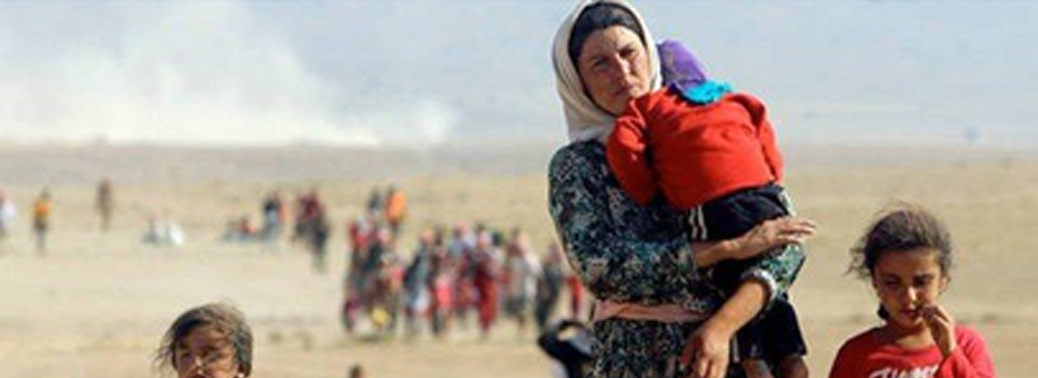
Why in News?
- More than Five Million People were internally displaced in India due to Natural Disasters, Conflict and Violence in 2019, constituting the highest number of new Internal Displacements in the World.
The ‘Lost at Home’ Report:
- The report is published by the UN Children’s Fund (UNICEF).
- It says that almost 33 million new displacements were recorded in 2019 — around 25 million were due to natural disasters and 8.5 million as a consequence of conflict and violence. Of these, there were 12 million new displacements involving children, including around 3.8 million of them caused by conflict and violence, and 8.2 million due to disasters linked mostly to weather-related events.
- The report said that natural disasters resulted in more new displacements than conflict and violence.
- Almost 10 million new displacements in 2019 were recorded in East Asia and the Pacific (39 %) — and almost the same number in South Asia (9.5 million).
- The report looks at the risks internally displaced children face —child labour, child marriage, trafficking among them — and the actions urgently needed to protect them.
Displacement in India:
- India, the Philippines, Bangladesh and China all suffered from natural disasters leading to displacement in the millions, which accounted for 69% of global disaster-induced displacements.
- These were overwhelmingly caused by extreme conditions created by dangerous storms and floods.
- In India, the total number of new internal displacements in 2019 stood at 5,037,000 – including 5,018,000 due to natural disasters and 19,000 because of conflict and violence.
Global Scenario:
- India is followed by the Philippines, Bangladesh and China.
- The Philippines accounted for 4.27 million new internal displacements due to natural disasters, conflict and violence, Bangladesh 4.08 million and China 4.03 million.
- The largest number of internally displaced children due to conflict is found in the Middle East and North Africa (MENA) and sub-Saharan Africa.
- Internally displaced persons are concentrated in two regions — the Middle East and North Africa and West and Central Africa. The MENA region recorded over 12 million IDPs as a result of conflict and violence at the end of 2019. Almost all of them lived in just three countries — Syria, Yemen, and Iraq — and around 5 million were children.
What Makes the Situation Worse?
- The COVID-19 pandemic is only making a critical situation worse.
- Camps or Informal Settlements are often overcrowded and lack Adequate hygiene and health services.
- Physical Distancing is Often not Possible, Creating Conditions that are Highly conducive to the spread of the disease, the report said.
LABOUR INTENSIVE PROGRAMMES TO RESTORE THE RURAL ECONOMY
06, May 2020
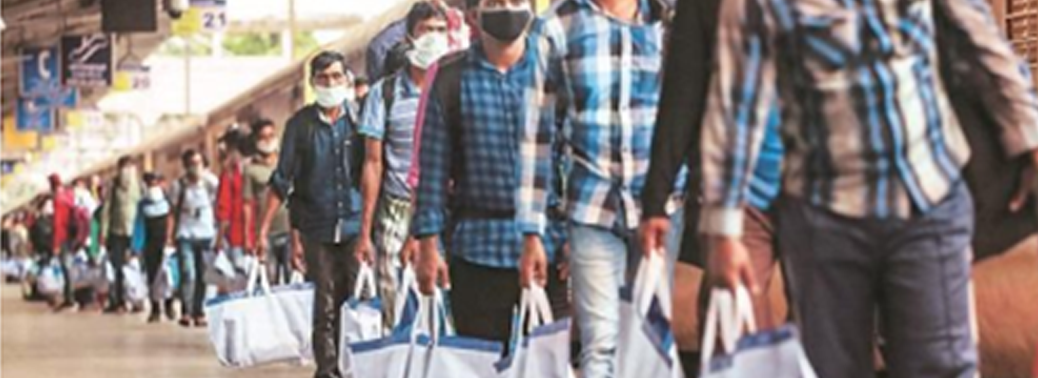
Why in News?
- The Jharkhand government has recently launched three labour intensive programmes to restore the rural economy.
- The schemes have been launched seeing the possibility of a steep rise in the rate of unemployment in villages due to the arrival of large-scale stranded migrant workers from Other States.
Highlights:
- The three schemes have been devised in convergence with the Mahatma Gandhi National Rural Employment Guarantee Scheme (MGNREGA).
- The schemes are— Birsa Harit Gram Yojana (BHGY), Neelambar Pitambar JAL Sammridhi Yojana (NPJSY) and Veer Sahid Poto Ho Khel Vikas Scheme (VSPHKVS) — to create wage employment for workers in rural areas.
Birsa Harit Gram Yojana:
- The BHGY is envisaged at bringing over two lakh acres of unused government fallow land under the afforestation programme.
- About five lakh families will be provided 100 fruit-bearing plants.
- The initial plantation, maintenance, land work and afforestation will be taken up through MGNREGA.
- Each family is estimated to receive an annual income of ₹50,000 from fruit harvest after three years while the ownership of land will remain with the government.
Neelambar Pitambar JAL Sammridhi Yojana:
- As per NPJSY, the government aims at creating agro-water storage units by arresting rainwater and runaway groundwater.
- Nearly 5 lakh acre of cultivable land can be irrigated through the initiative.
- An estimated 10 crore person days will be generated through the scheme in the next 4-5 Years.
Veer Sahid Poto Ho Khel Vikas Scheme:
- Under VSPHKVS, as many as 5,000 sports grounds will be developed across the State.
- The government hopes to generate one crore person days through the scheme in the current financial year.
Concern:
- According to the Centre for Monitoring Indian Economy (CIME) data, the State is reeling under severe joblessness with unemployment rate pegged at 47.1% — double that of the national average (23.5%).
- The arrival of an estimated 5 lakh to 6 lakh migrant workers is likely to worsen the situation.
MPLADS
05, May 2020
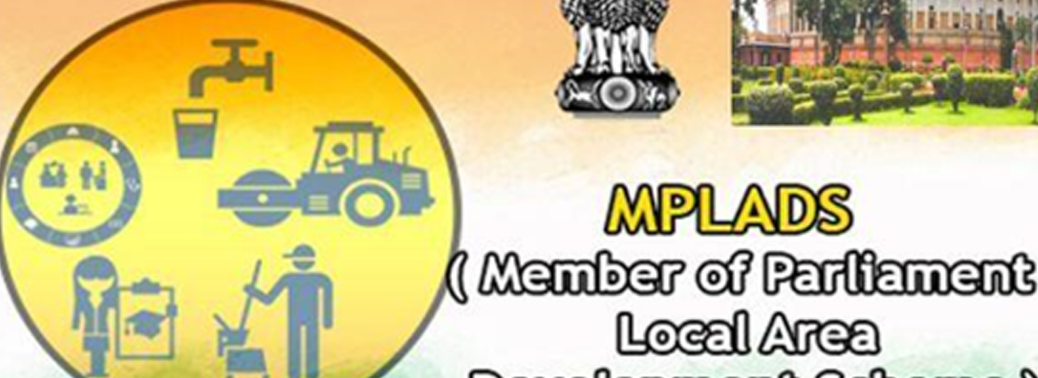
Why in News?
- All Opposition parties have been unanimous in their criticism of the government’s recent move to suspend the Members of Parliament Local Area Development Scheme (MPLADS) for two years, approved by the Cabinet.
- To use these funds to strengthen the government’s efforts in managing the challenges and adverse impact of COVID-19 in the country.
Members of Parliament Local Area Development Scheme:
- The Members of Parliament Local Area Development Scheme (MPLADS) is an ongoing Central Sector Scheme which was launched in 1993-94.
- The Scheme enables the Members of Parliament to recommend works for creation of durable community assets based on locally felt needs to be taken up in their constituencies in the area of national priorities namely drinking water, education, public health, sanitation, roads etc.
- The Ministry of Statistics and Programme Implementation has been responsible for the policy formulation, release of funds and prescribing monitoring mechanism for implementation of the Scheme.
Features:
- The MPLADS is a Plan Scheme fully funded by the Government of India. The annual MPLADS fund entitlement per MP constituency is Rs. 5 crore.
- MPs are to recommend every year, works costing at least 15 percent of the MPLADS entitlement for the year for areas inhabited by Scheduled Caste population and 7.5 per cent for areas inhabited by S.T. population.
- In order to encourage trusts and societies for the betterment of tribal people, a ceiling of Rs. 75 lakh is stipulated for building assets by trusts and societies subject to conditions prescribed in the Scheme Guidelines.
- Lok Sabha Members can recommend works within their Constituencies and Elected Members of Rajya Sabha can recommend works within the State of Election (with select exceptions). Nominated Members of both the Rajya Sabha and Lok Sabha can recommend works anywhere in the country.
- All works to meet locally felt infrastructure and development needs, with an emphasis on creation of durable assets in the constituency are permissible under MPLADS as prescribed in the scheme guidelines.
- Expenditure on specified items of non-durable nature are also permitted as listed in the Guidelines.
Implementation:
- A Member of Parliament shall give his/ her choice of Nodal District in a prescribed format to the Ministry of Statistics and Programme Implementation with copy to the State Government and to the District Magistrate of the chosen District.
- The annual entitlement of Rs 5 crore shall be released, in two equal instalments of Rs 2.5 crore each, by Government of India directly to the District Authority of the Nodal District of the Member of Parliament concerned.
- Each MP shall recommend eligible work on the MP’s letter head duly signed by the MP to the district authority.
- The District Authority shall identify the Implementing Agency capable of executing the eligible work qualitatively, timely and satisfactorily. It shall be responsible for timely and effective implementation of such works.
- All recommended eligible works should be sanctioned within 75 days from the date of receipt of the recommendation, after completing all formalities.
- The District Authority shall, however, inform MPs regarding rejection, if any, within 45 days from the date of receipt of recommendations, with reasons thereof.
- MPLAD Scheme can be converged in individual/stand-alone projects of other Central and State Government schemes provided such works of Central/State Governments Schemes are eligible under MPLADS.
- Funds from Local Bodies can similarly also be pooled with MPLADS works. Wherever such pooling is done, funds from other scheme sources should be used first and the MPLADS funds should be released later, so that MPLADS fund results in Completion of the Project.
- One MP – One Idea: Based on the innovative ideas received from the local people regarding developmental projects, a ‘One MP – One Idea’ Competition may be held in each Lok Sabha constituency annually to select the three best innovations for cash awards and certificate of appreciation for the next five best innovations.
FINAL DRAFT OF NEW EDUCATION POLICY
05, May 2020

Why in News?
- The final draft of the New Education Policy (NEP) is said to be silent on student participation in decision-making bodies, committees, and institutional processes of a university or college.
Highlights:
- The final policy draft limits giving students plenty of opportunities to be involved in sports, culture/arts clubs, activity clubs, community service projects.
- It speaks of creating a “systematised arrangement” to support “students from rural backgrounds, including increasing hostel facilities as needed”.
- The provision on setting up “systems and mechanisms” to enable student participation in the institutional processes of higher education institutions is missing from the document shared by the HRD Ministry.

Central Advisory Board of Education (CABE):
- The final policy document has dropped a proposal to set up a Rashtriya Shiksha Aayog (RSA) as suggested by the Kasturirangan Committee.
- The RSA was to be headed by the Prime Minister and was intended to replace the Central Advisory Board of Education (CABE).
- Following objections from the state governments to this proposal the proposal has been scrapped altogether.
- The policy circulated among ministries instead speaks of strengthening CABE and giving it a greater mandate.
- The final draft of the NEP has also dropped the recommendation on setting up a “permanent Indian Education Service (IES) cadre comprising a specialist cadre of the Bureaucracy”.
ONE NATION – ONE RATION CARD SCHEME
04, May 2020

Why in News?
- Five more States Bihar, Punjab, Uttar Pradesh, Himachal Pradesh and Daman and Diu have been integrated with the ‘one nation, one ration card’ scheme recently.
About the Scheme:
- Since Ration Cards are issued by State Governments, this implied that beneficiaries could procure food grains only from the designated ration shops within the concerned state.
- If a beneficiary were to shift to another state, he/she would need to apply for a new ration card in the second state. There were other complications.
- For instance, after marriage, a woman needed to get her name removed from the ration card issued to her parents, and get it added to the ration card issued to her husband’s family.
- The ONORC scheme attempts to address this gap in TPDS delivery. Essentially, the scheme has been launched keeping in mind the internal migration of our country, since people keep moving to different states in search of better job opportunities and higher standards of living.
- As per Census 2011, 4.1 crore people were inter-state migrants and 1.4 crore people migrated (inter and intra-state) for employment.
- With the ONORC scheme being implemented, the beneficiary can buy food grains from ration shops located in any of the states.
- Currently, about 60 crore beneficiaries from 17 states and UTs can benefit from the ration card portability and they can purchase the subsidised food grains using the existing ration cards. The government hopes to implement the scheme across India by June 1, 2020.
Standard Format of ‘One Nation, One Ration Card’:
- A Standard format for ration card has been prepared after taking into account the format used by Different States.
- For national portability, the state governments have been asked to issue the ration card in bi-lingual format, wherein besides the local language, the other language could be Hindi or English.
- The states have also been told to have a 10-digit standard ration card number, wherein first two digits will be state code and the Next Two Digits will be running ration card numbers.
- Besides this, a set of another two digits will be appended with ration card number to create unique member IDs for each member of the Household in a Ration Card.
Challenges Ahead:
- Prone to Corruption: Every state has its own rules for Public Distribution System (PDS). If ‘One Nation, One Ration Card’ is implemented, it will further boost corruption in an already corrupted Public Distribution System.
- The Scheme will Increase the woes of the common man and, the middlemen and corrupt PDS shop owners will exploit them.
- Tamil Nadu has Opposed the Proposal of the Centre, saying it would result in undesirable consequences and is against federalism.
OPPOSITION RISES TO PERMANENT BRU SETTLEMENT IN TRIPURA
04, May 2020
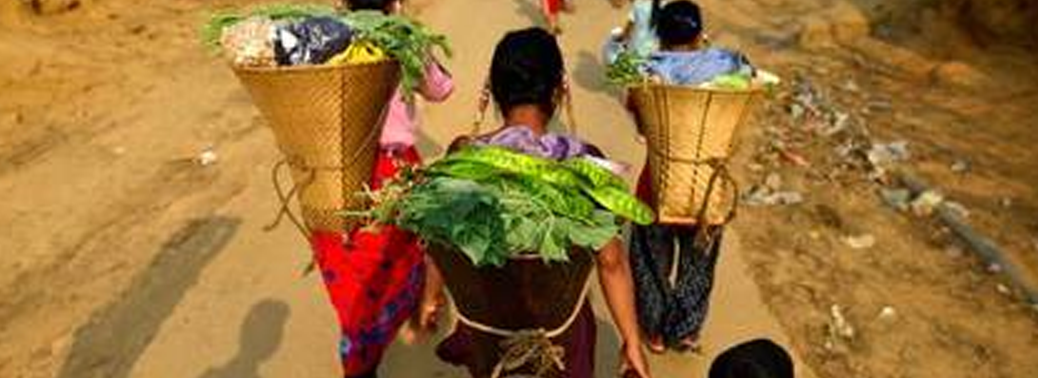
Why in News?
- In the middle of the Covid-19 lockdown, two community-specific groups have renewed their opposition to the permanent settlement of Bru refugees from Mizoram in Tripura.
- The two groups namely, Nagarik Suraksha Mancha (mostly representing Bengali people displaced from erstwhile East Pakistan post-partition in 1947) and the Mizo Convention have submitted a memorandum protesting against the proposed settlement of the displaced Brus in Tripura.
Background Info:
- Bru or Reang is a community indigenous to Northeast India, living mostly in Tripura, Mizoram and Assam. In Tripura, they are recognised as a Particularly Vulnerable Tribal Group.
- In Mizoram, they have been targeted by groups that do not consider them indigenous to the state. In 1997, following ethnic clashes, nearly 37,000 Brus fled Mamit, Kolasib and Lunglei districts of Mizoram and were accommodated in relief camps in Tripura.
- Since then, 5,000 have returned to Mizoram in eight phases of repatriation, while 32,000 still live in six relief camps in North Tripura.
- In 2018, community leaders from the Bru camps signed an agreement with the Centre and the two state governments, providing for repatriation in Mizoram.
- But most camp residents rejected the terms of the agreement. The camp residents say that the agreement doesn’t guarantee their safety in Mizoram.
- The Centre, the governments of Mizoram and Tripura and leaders of Bru organisations signed a quadripartite agreement in January (2020) to let the remaining 35,000 refugees who have stayed back to be resettled in Tripura.
- The rehabilitation package offered included financial assistance of ₹4 lakh and land for constructing a house for Each family.
Particularly Vulnerable Tribal Groups:
- Particularly Vulnerable Tribal Groups (PVTGs) are more vulnerable among the tribal groups. In India, tribal population makes up for 8.6% of the total population.
- In 1973, the Dhebar Commission created Primitive Tribal Groups (PTGs) as a separate category, who are less developed among the tribal groups. In 2006, the Government of India renamed the PTGs as PVTGs.
- PVTGs have some basic characteristics – they are mostly homogenous, with a small population, relatively physically isolated, absence of written language, relatively simple technology and a slower rate of change etc.
- Among the 75 listed PVTG’s the highest number are found in Odisha.
INTERNATIONAL FINANCIAL SERVICES CENTRES AUTHORITY
01, May 2020
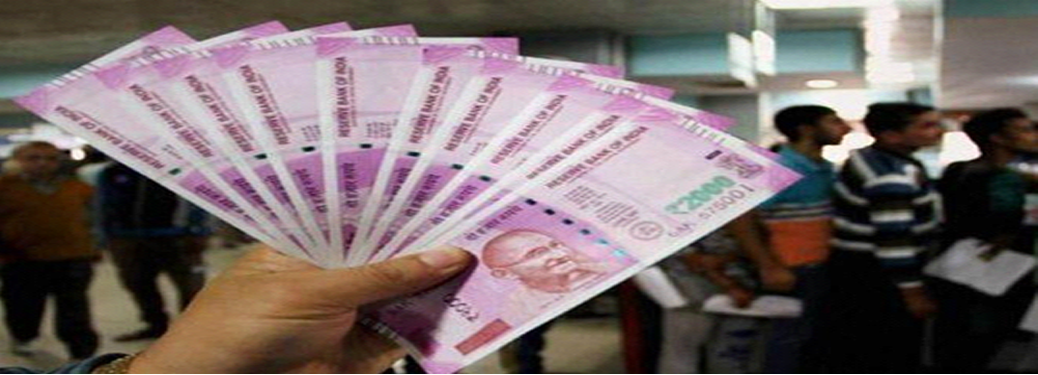
Why in News?
- Recently, the central government has established International Financial Services Centres Authority to regulate all financial services in International Financial Services Centres (IFSCs) with headquarters in Gandhinagar (Gujarat).
About International Financial Services Centre (IFSC):
- It enables bringing back the financial services and transactions that are currently carried out in offshore financial centres by Indian corporate entities and overseas branches/subsidiaries of Financial Institutions (such as banks, insurance companies, etc.) to India.
- It offers a business and regulatory environment that is comparable to other leading international financial centres in the world like London and Singapore.
- It intended to provide Indian corporates with easier access to global financial markets, and to complement and promote further development of financial markets in India.
- The first IFSC in India has been set up at the Gujarat International Finance Tec-City (GIFT City) in Gandhinagar.
About International Financial Services Centres Authority:
- They will regulate financial products such as securities, deposits or contracts of insurance, financial services, and financial institutions which have been previously approved by any appropriate regulator such as Reserve Bank of India (RBI), the Securities and Exchange Board of India (SEBI) etc., in an IFSC.
- They will also regulate any other financial products, financial services, or financial institutions in an IFSC, which may be notified by the Central Government.
- They may also recommend to the central government any other financial products, financial services, or financial institutions, which may be permitted in an IFSC.
Composition of Members:
- It consists of nine members, appointed by the central government.
- It includes chairperson of the authority, a member each from the RBI, SEBI, the Insurance Regulatory and Development Authority of India (IRDAI), and the Pension Fund Regulatory and Development Authority (PFRDA); and two members from the Ministry of Finance. In addition, two other members will be appointed on the recommendation of a Selection Committee.
- The term of all members of the IFSC Authority will be three years, subject to Reappointment.
Advantage of IFSC:
- The banking, capital markets and insurance sectors in IFSC which are regulated by multiple regulators – the RBI, SEBI, and IRDAI will be unified under the IFSC authority.
- Both national and international institutions dealing with international financial services would utilise the IFSC platform for inbound and outbound investments with improved ease of doing business, thereby making GIFT IFSC a Global Financial Hub.
“TRENDS IN WORLD MILITARY EXPENDITURE” REPORT: SIPRI
28, Apr 2020
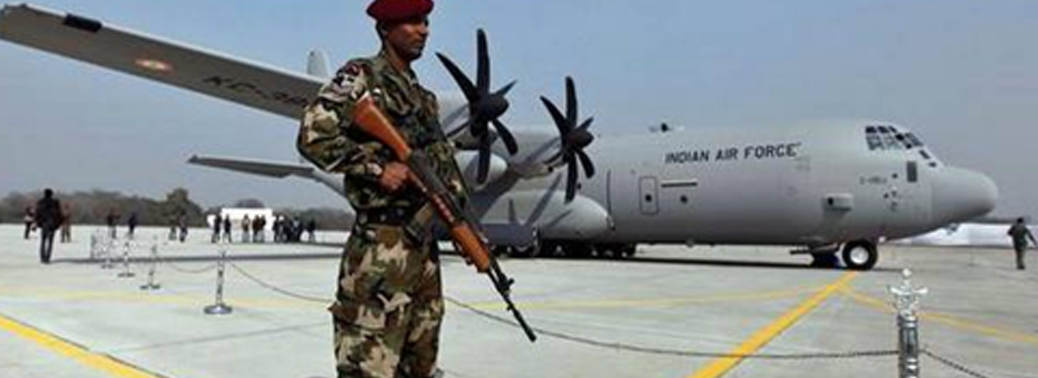
Why in News?
- ‘Trends in World Military Expenditure, 2019’ was recently released by the Stockholm International Peace Research Institute (SIPRI).
- According to the report, the global military expenditure rose to $1917 billion in 2019 with India and China emerging among the top three Spenders.
Global Scenario:
- Global military spending was 2.2% of the global Gross Domestic Product (GDP) with an increase of 3.6% from 2018. The increase of 3.6% was the largest annual growth in spending since 2010.
- Top five largest spenders accounted for 62% of the global expenditure.
- The top most countries spending on military are as USA>China>India>Russia>Saudi Arabia.
- India was at the 4th position in 2018 with Saudi Arabia at the 3rd.
India Specific Data:
- India’s defence expenditure is growing in absolute terms but defence expenditure has been going down as a percentage of its GDP, due to the increasing trend in the growth of GDP.
- In 2019, the expenditure was 2.4% of India’s GDP which was lower than that of 2.7% in 2010.
- Total Defence Allocation, including Defence Pension, accounted for 15.48% of the total Central Government expenditure for the year 2019-20.
- It was 6.8% more than that of 2018 and has grown by 37% over the decade of 2010–19. If compared to 1990, it has gone up by 259%.
- Total defence budget accounts for 15.49% of the total central government expenditure for the year 2020-21. It shows a growth of 9.37% over Budget Estimates 2019-20.
- India’s tensions and rivalry with both Pakistan and China are among the major drivers for its increased Military Spending.
About SIPRI:
- Stockholm International Peace Research Institute (SIPRI) hink tank is an independent international institute dedicated to research into conflict, armaments, arms control and disarmament.
- It was established in 1966 at Stockholm (Sweden).
- It provides data, analysis and recommendations, based on open sources, to policymakers, researchers, media and the interested public
ASSAM’S BTAD MAY FACE GOVERNOR’S RULE
27, Apr 2020
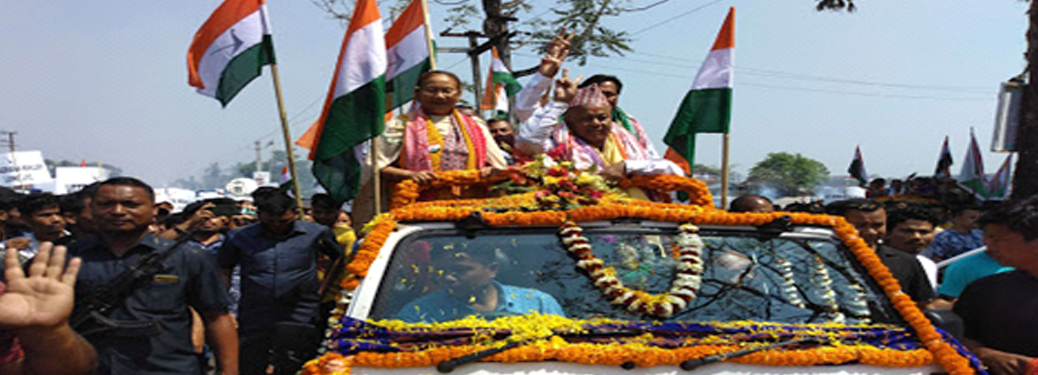
Why in News?
- The COVID-19 pandemic may earn Governor’s rule for the Bodoland Territorial Area Districts (BTAD) in Assam.
About BTAD:
- BTAD includes four districts of western and northern Assam which comprises of Kokrajhar, Chirang, Baksa and Udalguri.
- The State’s Governor is the constitutional head of the BTAD that falls under the Sixth Schedule of the Constitution and is administered by the Bodoland Territorial Council (BTC).
- The BTAD and other areas mentioned under the Sixth Schedule of the Constitution were also exempted from the Citizenship (Amendment) Act (CAA), 2019 which was passed recently.
- Bodoland Territorial Region (BTR) would include the villages which are dominated by Bodos but are outside BTAD presently. Villages with non-Bodo population would be excluded from it.
- Bodos living in the hills are conferred a Scheduled Hill Tribe status.
- Bodo language with Devanagari script is the associate official language for the entire Assam.
Who are these Bodos?
- Bodos are the single largest community among the notified Scheduled Tribes in Assam. Bodos are a part of Bodo-Kachari and constitute about 5-6% of Assam’s population.
- The first organised demand for a Bodo state came in 1967-68.
- The Assam Accord of 1985, gave rise to Bodo aspirations and in 1987, ABSU revived the Bodo statehood demand.
- Bodo Security Force which arose in 1986 as an armed group renamed itself NDFB, and later split into factions.
- The first Bodo accord was signed with the ABSU in 1993. It led to the creation of the Bodoland Autonomous Council (BAC) with some limited political powers.
- In 2003, the second Bodo Accord was signed by the extremist group Bodo Liberation Tiger Force (BLTF), the Centre and the state. This led to the creation of BTC, which is an autonomous body under the Sixth Schedule of the Constitution.

What is the Issue Now?
- Elections were scheduled to be held for the BTC on April 4 but were deferred indefinitely in view of the pandemic. The council’s current term expires on April 27.
- One of the delegation argued that the pandemic and its aftermath would make it impossible to hold the elections in the near future. So they asked for the Governor’s rule in BTAD.
- The Bodoland People’s Front (BPF), which has been ruling BTC since its creation in 2003 on the other hand, wants the term extended by six months or elections held soon.
- The election can be conducted as BTAD does not have a single COVID-19 case, but it is also risky to conduct elections for the BTC which may put many lives in danger.
- If the election is not conduced, then the Governor’s rule would be imposed until the election is conducted.
SCALING UP WORKS UNDER MGNREGS, PMAY-G, PMGSY, NRLM
27, Apr 2020
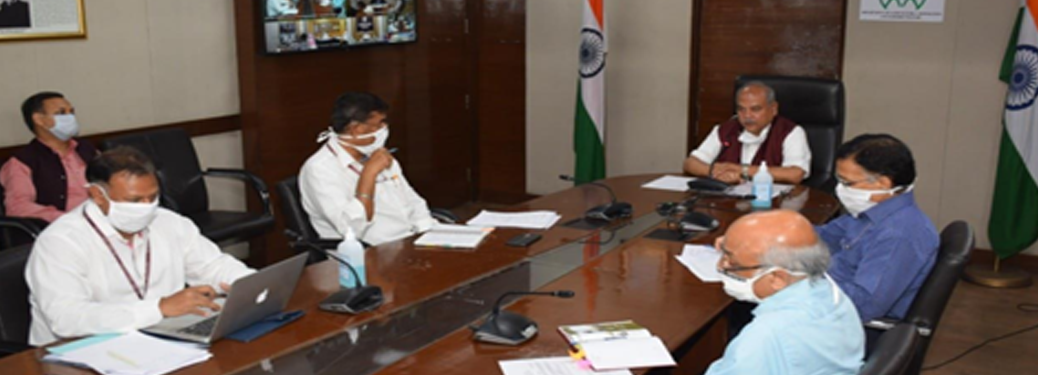
Why in News?
- Recently, the Union Minister for Rural Development held a Video Conference with Rural Development Ministers and concerned officers of States and Union Territories.
Highlights:
- The meeting was held for scaling up of works under
- Mahatma Gandhi Rural Employment Guarantee Scheme (MGNREGS),
- Pradhan Mantri Awaas Yojana Gramin (PMAY-G),
- Pradhan Mantri Gram Sadak Yojana (PMGSY) and National Rural Livelihood Mission (NRLM) in the light of the relaxation granted by the Ministry of Home Affairs in Non-Containment Areas amid the COVID outbreak.
MGNREGA:
- The Ministry has released the fund to liquidate all outstanding dues of previous years towards wages and materials.
- The Minister assured the States and UTs that adequate financial resources are available for Rural Development Programmes.
- There is the need for the States and UTs to proactively start Rural Development Schemes relating to employment generation, infrastructure creation and strengthening of rural livelihoods while taking all necessary COVID-19 related precautions.
- Under MGNREGS, the focus should be on water conservation, water recharge and irrigation work in convergence with the Schemes of the Ministry of Jal Shakti and Department of Land resources.
MGNREGA – Ministry of Rural Development:
- The Mahatma Gandhi National Rural Employment Guarantee Act (MGNREGA), also known as Mahatma Gandhi National Rural Employment Guarantee Scheme (MNREGS) is Indian legislation enacted on August 25, 2005.
- The MGNREGA provides a legal guarantee for 100 days of employment in every financial year to adult members of any rural household willing to do public work-related unskilled manual work at the statutory minimum wage.
- The Ministry of Rural Development (MRD), Government of India is monitoring the entire implementation of this scheme in association with state governments.
- This act was introduced with an aim of improving the purchasing power of the rural people, primarily semi or unskilled work to people living below poverty line in rural India. It attempts to bridge the gap between the rich and poor in the country. Roughly one-third of the stipulated work force must be women.
- Adult members of rural households submit their name, age and address with photo to the Gram Panchayat.
- The Gram Panchayat registers households after making enquiry and issues a job card.
- The job card contains the details of the adult member enrolled and his/her photo. Registered person can submit an application for work in writing (for at least fourteen days of continuous work) either to Panchayat or to Programme Officer.
- The Panchayat/Programme officer will accept the valid application and issue dated receipt of application, letter providing work will be sent to the applicant and also displayed at Panchayat office.
- The employment will be provided within a radius of 5 km: if it is above 5 km extra wage will be paid.
- Within 15 days of submitting the application or from the day work is demanded, wage employment will be provided to the applicant.
- Right to get unemployment allowance in case employment is not provided within fifteen days of submitting the application or from the date when work is sought.
- Receipt of wages within Fifteen Days of Work Done.
PMAY (G):
- Under this scheme priority would be to complete those housing units where instalments have been given to the beneficiaries.
PMAY(G) – Ministry of Rural Development:
- Housing is one of the basic requirements for human survival.
- In pursuance to the goal of Housing for all by 2022, the rural housing scheme Indira Awas Yojana has been revamped to Pradhan Mantri Awaas Yojana – Gramin and approved during March 2016. Under the scheme, financial assistance is provided for construction of pucca houses to all houseless and households living in dilapidated houses.
- It is proposed that one crore households would be provided assistance for construction of pucca houses under the project during the period from 2016-17 to 2018-19.
- The scheme would be implemented in rural areas throughout India except Delhi and Chandigarh. The cost of houses would be shared between Centre and States.
- Funding Pattern:
- Under PMAY, the cost of unit assistance is to be shared between Central and State Governments in the ratio 60:40 in plain areas and 90:10 for North Eastern and hilly states.
- The unit assistance given to beneficiaries under the programme is Rs 1,20,000 in plain areas and to Rs 1,30,000 in hilly states/difficult areas /Integrated Action Plan (IAP) for Selected Tribal and Backward Districts.
- The unit size is 25 sq.m including a dedicated area for hygienic cooking.
- The beneficiary is entitled to 90 days of unskilled labour from MGNREGA.
- The beneficiary would be facilitated to avail loan of up to Rs.70,000/- for construction of the house which is optional.
- Funds will be transferred electronically directly to the account of the beneficiary.
- Target Group
- Identification of beneficiaries eligible for assistance and their prioritisation to be done using information from Socio Economic and Caste Census (SECC) ensuring total transparency and objectivity.
- The list will be presented to Gram Sabha to identify beneficiaries who have been assisted before or who have become ineligible due to other reasons.
- Under PMGSY, the focus should be on quick award of tenders in sanctioned road projects and starting pending road projects.
- The contractors, suppliers, workers etc should be galvanised to quick start the works.
- Phase I:
- Phase I was launched in December, 2000 as a sponsored scheme with an objective to provide single all-weather road connectivity to eligible unconnected habitation of designated population size.
- 500+ in plain areas and 250+ in North-East, hill, tribal and desert areas,
- 00 – 249 population in LWE districts as per Census, 2001 for overall socio-economic development of the areas.
- Also, upgradation (to prescribed standards) of the existing roads in those Districts where all the eligible Habitations of the designated population size have been provided all-weather road connectivity was to be taken up.
- However, Upgradation is not central to the Programme. In Upgradation works, priority was to be given to Through Routes of the Rural Core Network, which carry more traffic.
- Phase II:
- The Phase II of PMGSY was approved during May, 2013.
- While the ongoing PMGSY – I continued, under PMGSY phase II, the roads already built for village connectivity was to be upgraded to enhance rural infrastructure.
- For the 12thFive Year Plan period a target of 50,000 Km length under PMGSY-II.
- Funding:
- Phase III:
- Phase III was approved by the Cabinet during July 2019.
- It involves consolidation of Through Routes and Major Rural Links connecting habitations to Gramin Agricultural Markets (GrAMs), Higher Secondary Schools and Hospitals.
- Under the PMGSY-III Scheme, it is proposed to consolidate 1,25,000 Km road length in the States. The duration of the scheme is 2019-20 to 2024-25.
- The funds would be shared in the ratio of 60:40 between the Centre and State for all States except for 8 North Eastern and 3 Himalayan States (Jammu & Kashmir, Himachal Pradesh & Uttarakhand) for which it is 90:10.
- NRLM:
- The Ministry appreciated the fact that women SHGs under NRLM are making protective face covers, sanitizers, soaps and are running community kitchens in large numbers.
PMGSY:
PMGSY – Ministry of Rural Development:
1. 75:25 – Centre-state ratio for the upgradation work.
2.90:10 – For hill states, desert areas, Schedule V areas and Naxal-affected districts.
Deen Dayal Antyodaya Yojana – Ministry of Rural Development:
- Deen Dayal Antyodaya Yojana – National Livelihoods Mission (NRLM) was launched by the Ministry of Rural Development (MoRD), Government of India in 2011 as a restructured version of Swarna Jayanti Gram Swarozgar Yojna (SGSY).
- In 2015, the program was renamed Deendayal Antayodaya Yojana (DAY-NRLM).
- Mission:To reduce poverty by enabling the poor households to access gainful self-employment and skilled wage employment opportunities, resulting in appreciable improvement in their livelihoods on a sustainable basis, through building strong grassroots institutions of the poor
- NRLM has set out with an agenda to cover 7 Crore rural poor households, across 2.5 lakh Gram Panchayats and 6 lakh villages in the country through self-managed Self Help Groups (SHGs) and federated institutions and support them for livelihoods collectives in a period of 8-10 years.
- In addition, the poor would be facilitated to achieve increased access to their rights, entitlements and public services, diversified risk and better social indicators of empowerment.
- NRLM believes in harnessing the innate capabilities of the poor and complements them with capacities (information, knowledge, skills, tools, finance and collectivization) to participate in the growing economy of the country.
Key Features:
- Universal Social Mobilisation – At least one-woman member from each identified rural poor household, is to be brought under the Self Help Group (SHG) network in a time bound manner with special emphasis particularly on vulnerable communities.
- Participatory Identification of Poor (PIP) – All households identified as poor through the PIP process are the NRLM Target Group and are eligible for all the benefits under the programme. The NRLM Target Group (NTG) derived through the PIP is de-linked from the BPL.
- Community Funds as Resources in Perpetuity – NRLM provides Revolving Fund (RF) and Community Investment Fund (CIF) as resources in perpetuity to the institutions of the poor, to strengthen their institutional and financial management capacity and build their track record to attract mainstream Bank Finance.
- Financial Inclusion – NRLM works on both demand and supply sides of financial inclusion.
- On the demand side, it promotes financial literacy among the poor and provides catalytic capital to the SHGs and their federations.
- On the supply side, the Mission coordinates with the financial sector and encourages use of Information, Communication & Technology (ICT) based financial technologies, business correspondents and community facilitators like ‘Bank Mitras’.
- Livelihoods – NRLM focuses on stabilizing and promoting existing livelihood portfolio of the poor through its three pillars –
- Vulnerability reduction and Livelihoods enhancement through deepening/enhancing and expanding existing livelihoods options;
- Employment – building skills for the job market outside; and
- Enterprises – nurturing self-employed and entrepreneurs (for micro-enterprises).
- Convergence and partnerships
- Convergence:NRLM places a high emphasis on convergence with other programmes of the MoRD and other Central Ministries.
- Partnerships with NGOs and other CSOs.
- Linkages with PRIs: In view of the eminent roles of Panchayat Raj Institutions (PRIs), it is necessary to consciously structure and facilitate a mutually beneficial working relationship between Panchayats and institutions of the poor, particularly at the level of Village Panchayats.
An opportunity:
- The Minister emphasised that although the challenge posed by the spread of the COVID- 19 epidemic is very serious, this challenge must be perceived as an opportunity by all States/UTs to
- Develop and strengthen rural infrastructure,
- Create employment opportunities in rural areas and
- Facilitate diversification of rural livelihoods.
- To win the fight against coronavirus, proactive States/UTs with the active support of the Union Government, ensuring rural development schemes are implemented in an effective and efficient manner is the need of the hour.
CONVERSION OF SURPLUS RICE TO ETHANOL
25, Apr 2020
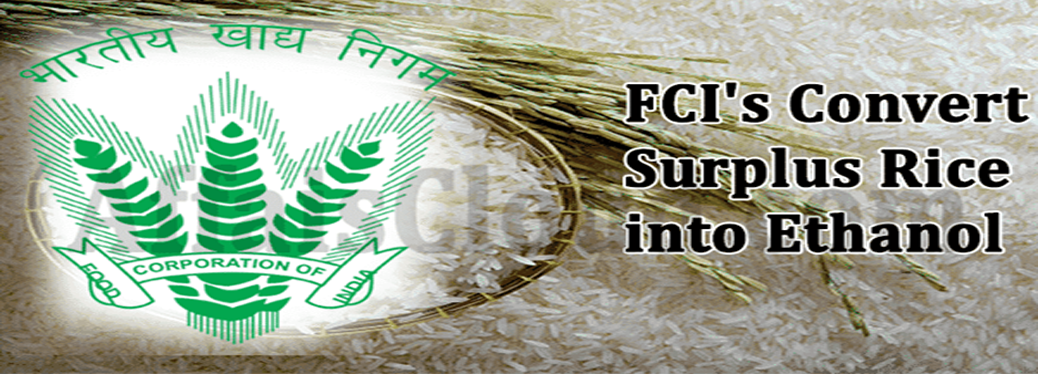
Why in News?
- Recently, the Central government has allowed the conversion of surplus rice to ethanol.
Key Points:
- Ethanol produced from the excess rice will be used for utilisation in making alcohol-based hand sanitizers and blending in petrol. Ethanol is one of the most variable alternatives amongst biofuels.
- The National Biofuel Coordination Committee(NBCC) took the decision which will lead to utilisation of part of a huge stockpile of 30.57 million tonnes (MT) of rice which is almost 128% more than the buffer stock and strategic requirement norms.
- At present, the Food Corporation of India (FCI) has huge rice stock from previous years excluding the unmilled paddy lying with millers on behalf of FCI.
- Using surplus rice for ethanol will address the concern of about 750 million litres of grain-based distillery capacities lying idle, due to the lack of feedstock.
- The National Policy on Biofuels, 2018 allows conversion of surplus quantities of food grains to ethanol when there is a projected oversupply of food grains.
Criticism on Government’s Move:
- This move has been criticised on the grounds that how can the government waste food stock for fuel when the considerable number of the population doesn’t have food and is suffering from malnutrition.
- In recent past, the government decided to give 5 kg wheat or rice and 1 kg of preferred pulses free of cost to 800 million people, under the National Food Security Act, 2013 (NFSA) in the wake of the Covid-19 pandemic.
- However, many poor people are unable to get the benefit out of it, due to loopholes in the PDS network. For example, a large chunk of ration card holders may not be eligible for the free grains, as they are not covered under the NFSA.
- The NFSA, based on the 2011 census, had not factored in the population increase in over nine years, leaving a huge number of people out of its ambit.
About National Policy on Biofuels, 2018:
- It expands the scope of feedstock for ethanol production and has provided for incentives for production of advanced biofuels.
- It categorises biofuels in various categories to enable extension of appropriate financial and fiscal incentives under each category.
- Basic Biofuels or First Generation (1G):Bioalcohols, Biodiesel, etc.
- Second Generation (2G) or Advanced Biofuels:Ethanol, Municipal Solid Waste (MSW) to drop-in fuels, etc.
- Third Generation (3G):
- Fourth Generation (4G):Fuel from genetically engineered crops.
- It expands the scope of raw material for ethanol production by allowing use of sugarcane juice, sugar containing materials like sugar beet, sweet sorghum, starch containing materials like corn, cassava, damaged food grains like wheat, broken rice, rotten potatoes which are unfit for human consumption.
PARLIAMENTARY COMMITTEE ON INDUSTRIAL RELATIONS CODE BILL, 2019
25, Apr 2020
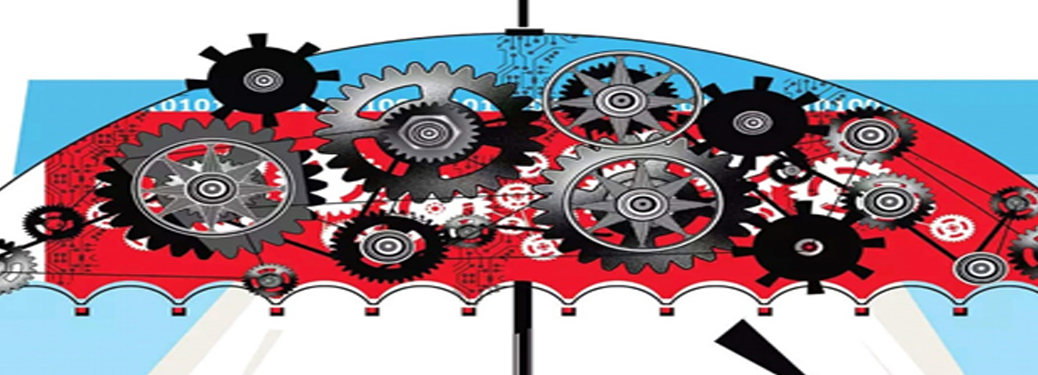
Why in News?
- Recently, the Parliamentary Committee on Labour submitted its report on the Industrial Relations Code, 2019.
About the News:
- The Committee in its report said that in case of natural calamities, payment of wages to the workers until the re-establishment of the industry may be unjustifiable.
- The idea behind the recommendations is that the industry should not be forced when the situation is beyond their control.
- The law has to be reasonable, in such cases it is for the government to step in and extend a helping hand for the industries.
- According to the Committee COVID-19 would be counted as natural calamity.
- The Industrial Code makes it incumbent upon the employer to pay 50% wages to the workers/employees who are laid off due to shortage of power, coal, raw material etc. for 45 days.
- The Industrial Relations Code, 2019 was introduced in the Lok Sabha and referred to the Standing Committee on Labour in December, 2019.
- With the on-going lockdown, the draft report was circulated to the members via email on April 15 and later the final adopted report was accepted by the Speaker.
About Industrial Relations Code Bill, 2019:
- The Industrial Relations Code, 2019 was introduced in Lok Sabha. It seeks to replace three labour laws:
- The Industrial Disputes Act, 1947
- The Trade Unions Act, 1926
- The Industrial Employment (Standing Orders) Act, 1946.
Key Features of the Bill:
- Trade Unions:
- Under the Code, seven or more members of a trade union can apply to register it.
- Trade unions that have a membership of at least 10% of the workers or 100 workers, whichever is less, will be registered.
- Further, the central or State Government may recognise a trade union or a federation of trade unions as Central or State Trade Unions respectively.
- Negotiating Unions:
- The Code provides for a negotiation union in an industrial establishment for negotiating with the employer.
- If there is only one trade union in an industrial establishment, then the employer is required to recognise such trade union as the sole negotiating union of the workers.
- In case of multiple trade unions, the trade union with the support of at least 75% of workers will be recognised as the negotiating union by the government.
Lay-off and Retrenchment:
- The Code defines lay-off as the inability of an employer, due to shortage of coal, power, or breakdown of machinery, from giving employment to a worker. It also provides for employers to terminate the services of a worker, i.e., retrenchment.
- Employers of industrial establishments with at least 100 workers are required to take prior permission of the central or state government before lay-off, retrenchment or closure of an Establishment.
The central or state government can modify this threshold number of workers by notification. Any person who contravenes this provision is punishable with a fine between Rs 1 lakh and Rs 10 lakh.
Resolution of Industrial Disputes:
- The central or state governments may appoint conciliation officers to mediate and promote settlement of industrial disputes.
- These officers will investigate the dispute and hold conciliation proceedings to arrive at a fair and amicable settlement of the dispute.
- If no settlement is arrived at, then any party to the dispute can make an application to an Industrial Tribunal set up under the Code.
THE EPIDEMIC DISEASES (AMENDMENT) ORDINANCE, 2020
23, Apr 2020
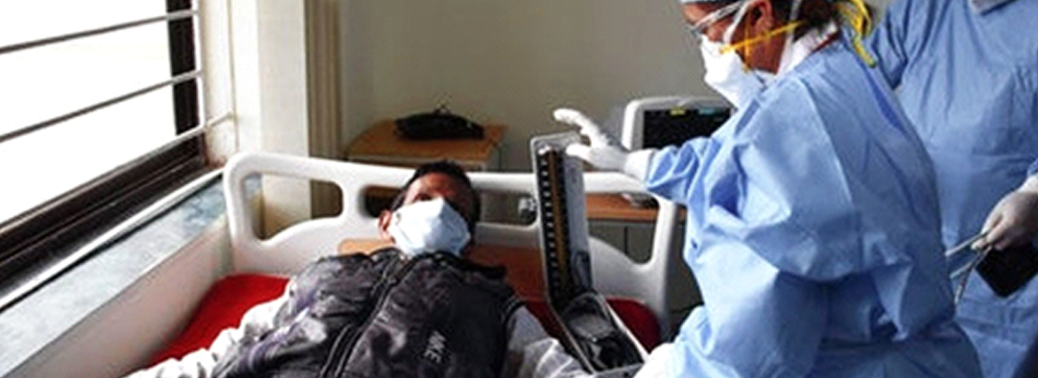
Why in News?
- The Central government has promulgated an Ordinance to amend the Epidemic Diseases Act, 1897 to make attacks on doctors and healthcare workers a cognizable and non-bailable offence.
What is the Issue?
- Members of the Medical community, even as they continue to perform relentlessly round the clock and save human lives, have unfortunately become the most vulnerable victims as they have been perceived by some as carriers of the virus.
- This has led to cases of their stigmatization and sometimes worse, acts of unwarranted violence and harassment.
- Such a situation tends to hamper the medical community from performing their duties to their optimum best and maintaining their morale, which is a critical need in this hour of national health crisis.
- While healthcare service personnel are duty bound to serve without discrimination, the cooperation and support from society is a fundamental need for them to perform their duties with confidence.
- But few violent incidents against the medical community have triggered the Indian Medical Association to step back from treating the patients affected by the pandemic.
- In a response the Cabinet has intervened and brought the ‘The Epidemic Diseases (Amendment) Ordinance, 2020’ to protect the medical community.
About the Epidemic Diseases Act, 1897:
- The Epidemic Diseases Act was introduced by the British to tackle the epidemic of bubonic plague that broke out in the then state of Bombay.
- This law aims to provide for the better prevention of the spread of dangerous epidemic diseases. Under the act, temporary provisions or regulations can be made to be observed by the public to tackle or prevent the outbreak of a disease.
- Section 2Aof the Act empowers the central government to take steps to prevent the spread of an epidemic. It allows the government to inspect any ship arriving or leaving any post and the power to detain any person intending to sail or arriving in the country.
- Since health is a State subject, by invoking Section 2 of the Epidemic Diseases Act, advisories and directions of the Ministry of Health & Family Welfare will be enforceable.
- Section 3 provides penalties for disobeying any regulation or order made under the Act. These are according to section 188 of the Indian Penal Code (Disobedience to order duly promulgated by public servant).
- Section 4 gives legal protection to the implementing officers acting under the Act.
- The Epidemics Diseases Act is routinely enforced across the country for dealing with outbreaks of diseases such as Swine Flu, Dengue.
- For Example in 2009, to tackle the swine flu outbreak in Pune, Section 2 powers were used to open screening centres in civic hospitals across the city, and swine flu was declared a notifiable disease.
What are the Changes Made?
- Whoever commits or abets the commitment of violence against health care worker, shall be punished with imprisonment ranging from 3 months to 5 years, and penalty ranging from Rs 50,000 to 2 lakh.
- In case of a very serious attack, the imprisonment may be for a minimum period of 6 months and maximum of 7 years, with penalty ranging from Rs 1 lakh to 5 lakh.
- As per the Ordinance, investigation into the incidents of attacks on doctors and healthcare workers has to be conducted by a senior inspector and be completed within 30 days.
- Court proceedings related to these cases shall also be conducted in a time-bound manner, and have to be decided within a year.
- The Ordinance also provides that the court shall presume that such person has committed such offence, unless the contrary is proved.
- The Ordinance states that in case of damage to vehicles or clinics of doctors or healthcare workers, the perpetrators would have to pay double the market cost of the damaged asset as compensation.
- Upon failure to pay the compensation awarded, such amount shall be recovered as an arrear of land revenue under the Revenue Recovery Act, 1890.
What are the Possible Impacts?
- The current Ordinance is intended to ensure that during any situation akin to the current pandemic, there is zero tolerance to any form of violence against healthcare service personnel and damage to property.
- Some incidents of violence have taken place which has demoralized the medical fraternity. It is felt that separate and most stringent provisions for emergent times are needed to act as effective deterrents to any such incidents of violence.
WORLD PRESS FREEDOM INDEX, 2020
23, Apr 2020
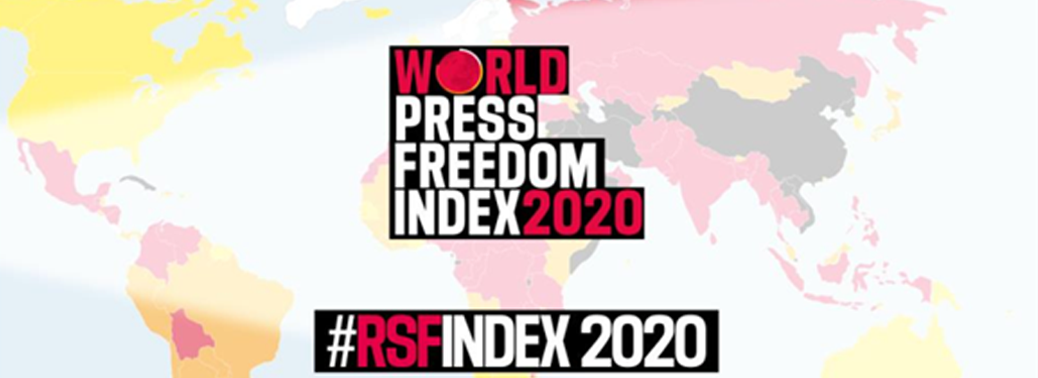
Why in News?
- India has dropped two places on a global press freedom index to be ranked 142nd out of 180 countries in the annual World Press Freedom Report.
Highlights:
- The report said that with no murders of journalists in India in 2019, as against six in 2018.
- However, there have been constant press freedom violations, including police violence against journalists, ambushes by political activists, and reprisals instigated by criminal groups or corrupt local officials.
World Press Freedom Index:
- The Press Freedom Index is an Annual ranking of countries compiled and published by Reporters Without Borders.
- It is based upon the organization’s own assessment of the countries’ press freedom records.
- It intends to reflect the degree of freedom that journalists, news organisations, and netizens have in each country, and the efforts made by authorities to respect this freedom.
- The report is partly based on a questionnaire which asks questions about pluralism media independence, environment and self-censorship, legislative framework, transparency, and infrastructure.

Global Scenario:
- Norway is ranked first in the Index for the fourth year running.
- India ranked better than its neighbours Pakistan (145) and Bangladesh (151), but worse than Sri Lanka (127) and Nepal (112)
- China at 177thposition is just three places above North Korea, which is at 180th.
Various Threats to Press Freedom:
- Across the world, press freedom is under pressure from aggressive authoritarian regimes.
- The media is also facing a technological crisis, due to a lack of democratic guarantees and a democratic crisis following polarization and repressive policies, the report reads.
- In addition comes a crisis of trust following growing suspicion and even hatred of the media, and an economic crisis and impoverishing of quality journalism.
- Among other issues, the report has listed coordinated social media hate campaigns against journalists reporting on issues that “annoy right-wing followers”, criminal prosecutions to gag journalists critical of authorities and police violence against journalists.
SWOT ANALYSIS OF IMPACT OF COVID-19 ON EDUCATION
21, Apr 2020

Why in News?
- With the pandemic forcing everyone to seriously consider e-learning tools and resources, now is a good time to assess its strengths and opportunities, and adapt to the new normal.
Highlights:
- SWOT analysis is a strategic planning technique used to help identify strengths, weaknesses, opportunities, and threats of a situation.
Strengths:
- For the first time many teachers, parents and students have thought about the purpose of education and asked some useful question such as: Will ‘education’ be defined in a different way, in the future? Is there a need to learn differently? Should students’ knowledge and skills be assessed? Will online education be successful in India? How important is home learning? etc.
Weaknesses:
- Lack of innovative thinking, inadequate infrastructure, untrained teachers, unequal accessibility, exam-centric assessment, and lack of learner autonomy.
- Recently, the Delhi government announced that it would conduct online classes for class XII students, but school teachers say that it is impractical since most students do not have access to the Required Facilities.
- Teachers working in government-aided and government schools in cities and towns and private schools in rural areas also do not have such facilities.
- They may neither have the awareness of online tools such as Google Classroom available for such purposes, nor have the expertise to use them.
Opportunities:
- The three main opportunities that we have are: i) our students who belong to Gen Z, ii) numerous web resources, and iii) enthusiastic teachers.
- Gen Z learners (born between 1997 and 2010) are born in the digital era and are familiar with computers, multimedia content and Internet-based activities from an early age. Now is the right time to move classes to a different platform, introduce e-learning and develop learner autonomy.
- The COVID-19 lockdown has enabled teachers to become creative. They can now create e-material such as YouTube videos and PPTs and share the links with their students and engage them during the lockdown period.
Threats:
- India is far behind some developing countries where digital education is getting increased attention. In countries where e-learning is popular, students have access to various online resources such as Massive Open Online Courses (MOOCs).
- India needs to take the threat of many developed and developing countries leading the way in online education seriously and promote it earnestly.
CRISIS OF BLOOD SHORTAGE AMID LOCKDOWN
21, Apr 2020

Why in News?
- Due to Covid-19 lockdown hospitals across India are facing acute shortage of blood and have started contacting Individual Blood Donors to meet the Demand.
Key Points:
- The Indian Red Cross Society Blood Bank has noted that there is a drop in blood collection.
- The crisis is such that there is a shortage of the most commonly seen B-positive blood group.
- Hospitals are calling listed donors and those with rare blood groups to come in and donate.
- According to the World Health Organization (WHO) recommendation, blood requirement of 1% of a country’s population be used as an estimate of its blood needs. By this measure, India was short of 1.9 million units of blood as per data presented.
Who are the Worst Hit?
- Patients requiring dialysis, having blood disorders, and pregnant women are the worst hit due to blood shortage.
- Thalassemia patients need repeated blood transfusions to survive. Many thalassemics take blood for their transfusions from the Indian Red Cross Society Blood Bank, whose camps are being cancelled.
Why there is a Shortage?
- Due to lockdown blood banks collection camps are cancelled.
- Donors are hesitant to travel to hospitals to donate blood amid strict lockdown.
- Transportation is also an major issue since it has been almost closed due to lockdown.
- Non-issual of donor passes by some hospitals adds to the woe.
Interventions taken by the Government:
- The Health Ministry has asked hospitals to start working on ensuring sufficient stock of blood for transfusion by promoting voluntary blood donors and utilising various services like mobile blood collection vans with the help of the Indian Red Cross Society.
- It has asked the Indian Red Cross Society to send mobile blood collection vans to the premises of regular blood donors to facilitate them for blood donation.
About Indian Red Cross Society:
- The Indian Red Cross is a voluntary humanitarian organization providing relief in times of disasters/emergencies and promotes health & care of the vulnerable people and communities.
- Indian Red Cross Society (IRCS) was established in 1920 under the Indian Red Cross Society Act.
- The President of India is the President and the Union Health Minister is the Chairman of the Society.
- The Mission of the Indian Red Cross is to inspire, encourage and initiate at all times all forms of humanitarian activities so that human suffering can be minimized and even prevented and thus contribute to creating more congenial climate for peace.
DRAFT ELECTRICITY ACT (AMENDMENT) BILL 2020
20, Apr 2020
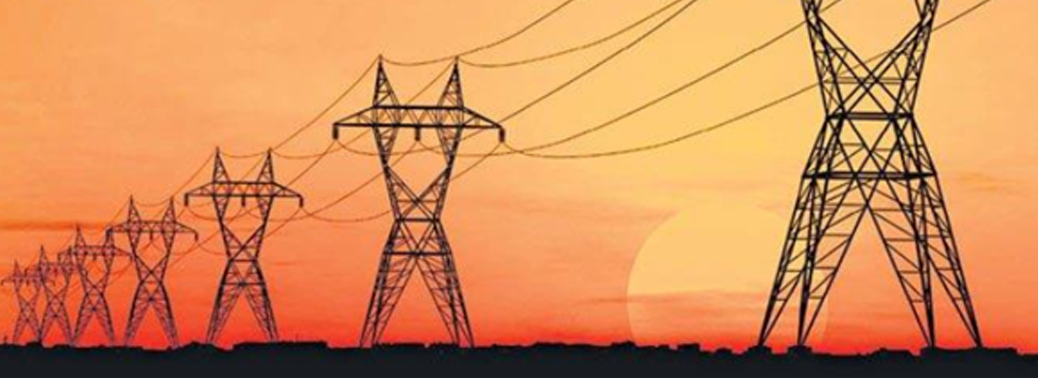
Why in News?
- For further development of the power sector, the Ministry of Power has issued a draft proposal for amendment of Electricity Act, 2003 in the form of draft Electricity Act (Amendment) Bill, 2020 for comments or suggestions from Stakeholders.
Highlights:
- Supply of Quality Power at Affordable Prices is essential for sustained Growth of the Economy of the Country.
- Suggestions have been invited from stakeholders within twenty one days.
Major amendments proposed in the Electricity Act are as follows:
-
- Viability of Electricity Distribution companies (Discoms):
- Cost reflective Tariff:To eliminate the tendency of some Commissions to provide for regulatory assets, it is being provided that the Commissions shall determine tariffs that are reflective of cost so as to enable Discoms to recover their costs.
- Direct Benefit Transfer:It is proposed that tariff be determined by Commissions without taking into account the subsidy, which will be given directly by the government to the consumers.
- Sanctity of Contracts:
- Establishment of Electricity Contract Enforcement Authority:A Central Enforcement Authority headed by a retired Judge of the High Court is proposed to be set-up with powers of the Civil Court to enforce performance of contracts related to purchase or sale or transmission of power between a generating, distribution or transmission companies.
- Establishment of adequate Payment Security Mechanism for scheduling of electricity:It is proposed to empower Load Dispatch Centres to oversee the establishment of adequate payment security mechanism before scheduling dispatch of electricity, as per contracts.
- Viability of Electricity Distribution companies (Discoms):
-
- Strengthening the Regulatory Regime:
- Strengthening of the Appellate Tribunal (APTEL):It is proposed to increase the strength of APTEL to seven apart from the Chairperson so that multiple benches can be set-up to facilitate quick disposal of cases. It is also proposed to further empower the APTEL to enforce its decisions.
- Doing away with Multiple Selection Committees:It is proposed to have one Selection Committee for selection of Chairpersons and Members of the Central and State Commissions and uniform qualifications for appointments of Chairperson and Members of Central and State Electricity Regulatory Commissions.
- Penalties:In order to ensure compliance of the provisions of the Electricity Act and orders of the Commission, section 142 and section 146 of the Electricity Act are proposed to be amended to provide for higher penalties.
- Renewable and Hydro Energy:
- National Renewable Energy Policy: It is proposed to provide for a policy document
- for the development and promotion of generation of electricity from renewable sources of energy.
- It is also proposed that a minimum percentage of purchase of electricity from hydro sources of energy is to be specified by the Commissions.
- Penalties:It is being further proposed to levy penalties for non-fulfilment of obligation to buy electricity from renewable and/or hydro sources of energy.
- Miscellaneous:
- Cross border trade in Electricity: Provisions have been added to facilitate and develop trade in electricity with other countries.
- Franchisees and Distribution sub licensees: Many States Distribution Companies have been assigning the task of distribution of electricity in a particular area or city to Franchisees / Sub-Distribution Licensees. However, there was a lack of clarity regarding the legal provisions related to this. It is proposed to provide that the
- Distribution Companies, if they so desire, may engage Franchisees or Sub Distribution Licensees to distribute electricity on its behalf in a particular area within its area of supply, however, it will be the DISCOM which shall be the licensee, and therefore, ultimately responsible for ensuring quality distribution of electricity in its area of supply.
- Strengthening the Regulatory Regime:
RENTAL WAIVERS TO STPI UNITS
18, Apr 2020
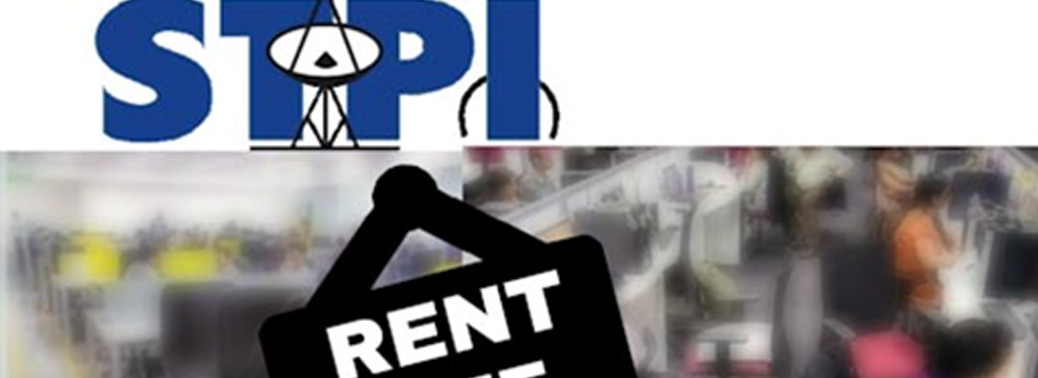
Why in News?
- Ministry of Electronics and Information Technology (MeitY) has recently decided to provide rental waiver to small Information Technology (IT) units operating out of the Software Technology Parks of India.
Highlights of the Decision:
- This decision was taken in order to provide a major boost to the IT and IT-enabled services (ITeS) sector amid Covid-19 lockdown.
- Most of the IT units are either MSMEs (Micro, Small, and Medium Enterprises) or startups. So, this initiative will provide benefit to nearly 200 IT-ITeS MSMEs, operating from the 60 STPI centres.
- This effort is also in the larger interest of around 3,000 IT-ITeS employees who are directly supported by MSME and startup units.
About Software Technology Parks of India:
- Software Technology Parks of India was set up in 1991 as an autonomous society under the Ministry of Electronics and Information Technology (MeitY).
- STPI’s main objective has been the promotion of software exports from the country. STPI has played a key developmental role in the promotion of software exports with a special focus on SMEs and startup units.
- STPI has been implementing the Software Technology Park (STP) scheme and the Electronics Hardware Technology Park (EHTP) scheme for the promotion of IT/ITES industry.
- STP Scheme is a unique scheme, designed to promote the software industry and growth of startups and SMEs without any locational constraints. A company can set up an STP unit anywhere in India.
- The EHTP Scheme is a 100% Export Oriented Scheme for undertaking manufacturing of electronic hardware equipment and other items in India.
COVID-19 CAN HELP DEAL WITH THE SILENT TUBERCULOSIS CRISIS
17, Apr 2020
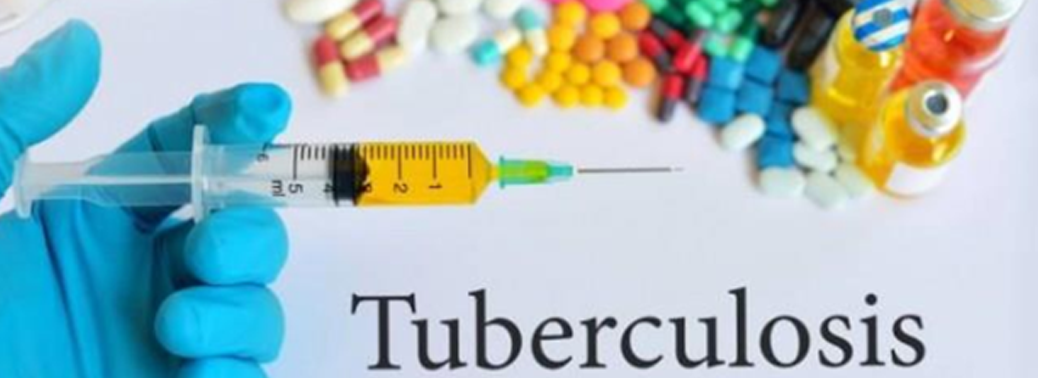
Why in News?
- According to a WHO Information Note — ‘Tuberculosis and COVID-19’, there is a need to maintain TB services during effective response to COVID-19.
- It is important that the progress made in TB prevention and care is not reversed by the COVID19 pandemic
Highlights:
- It said that TB patients who have lung damage or chronic obstructive pulmonary disease may suffer from more severe illness if they are infected with COVID-19.
- Doctors claim that people suffering from TB and COVID-19 may have poorer treatment outcomes, especially if TB treatment is interrupted.
Significance for India:
- India accounts for 27 per cent of the world’s total TB patients and is among the top 8 countries with the highest number of TB cases.
- In 2018, as many as 4.4 lakh people died of TB in India which is 29 per cent of the total 1.5 million deaths due to TB in the world.
- Out of total 7 million cases reported in 2018 across the world, India had 2.69 million cases, while, according to data available, it missed out on tracking down 5.40 lakh cases.
- There is a stronger case for concurrent testing for both conditions in individuals even if the clinical picture is a typical.
- The pandemic can help trace 5.4 lakh missed out T.B patients as fear of Coronavirus will induce them for testing as symptoms for TB – fever, cough and difficulty in breathing — are almost similar to coronavirus.
- The current situation will also help identify people with latent TB – who have the disease but no symptoms.
- According to WHO, there are 25 percent of patients with latent TB.
Tuberculosis (TB):
- TB remains the world’s Deadliest Infectious Killer.
- Each day, over 4000 people lose their lives to TB and close to 30,000 people fall ill with this preventable and curable disease.
- Caused by the bacillus Mycobacterium tuberculosis, TB is an infectious disease.
- In most cases, TB affects the lungs (pulmonary TB) but can also affect other sites (non pulmonary TB).
- Latent tuberculosis infection (LTBI) is a state of persistent immune response to stimulationby Mycobacterium tuberculosis antigens without evidence of clinically manifested active
- Someone has latent TB if they are infected with the TB bacteria but do not have signs of active TB disease and do not feel ill.
- It is a contagion disease, which spreads when the people who are sick with pulmonary TB expel bacteria into the air, for example by coughing.
- Rapid molecular test, Sputum smear microscopy, Culture-based methods are some of the diagnostic tests for TB.
- Without treatment, the mortality rate from TB is high.
Initiatives for TB in India:
- There is Free Treatment of TB in India.
- India aims to eliminate TB by 2025 under its National Strategic Plan, while the UN aims to eliminate TB by 2030.
- It is driven by the DETECT-TREAT-PREVENT-BUILD Approach.
- The focus is on early diagnosis of all the TB patients,prompt treatment with the right drugs and regimens along with suitable patient support systems including financial and nutritional support.
- This is supplemented by prevention strategies including active case finding, contact tracing and LTBI management in high risk populations, and airborne infection control.
- Mass BCG (bacillus Calmette-Guerin) vaccination to prevent TB.
- Revised National TB Control Programme (RNTCP) was launched in 1993, offering free diagnosis and treatment for patients, rescuing them from otherwise sure death.
- A Rs 12,000 cr.allocation of fund over the next 3 years to fight TB.
- A Public campaign: TB Harega Desh Jeetega.
ROLE OF CIVIL DEFENCE VOLUNTEERS IN THE PANDEMIC
17, Apr 2020
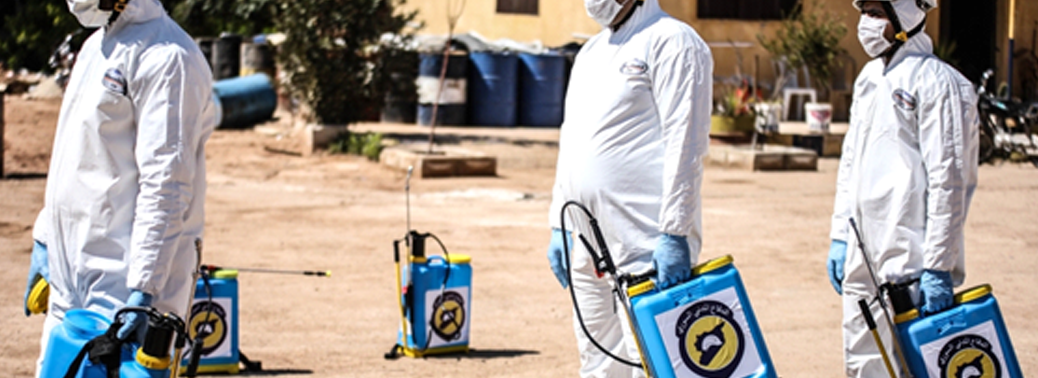
Why in News?
- More than 50,000 Civil Defence volunteers are working at the grassroots level in various roles and capacities to assist the local administration in implementing the measures to contain the spread of coronavirus (COVID-19).
What is their Role in the Current Pandemic?
- The Civil Defence personnel are supplementing the local administration in conducting surveillance of suspected and confirmed COVID-19 cases. They have been working as rapid response teams.
- They have been deployed in all the States and most Union Territories, barring Ladakh, Daman & Diu, and Puducherry.
- Rajasthan, Karnataka, Kerala, Uttar Pradesh, Delhi, Uttarakhand and Assam have taken the lead in using their services.
- The volunteers have been deployed under the command of District Magistrates to assist the local administration in implementing the COVID-19 guidelines and policies effectively.
How they can be Employed and what is the Provisions Regarding This?
- Civil Defence operates under the Civil Defence Act and associated rules and regulations. The Act was amended in 2009 and a notification was issued in 2010 to include disaster management as an additional role.
- Civil Defence is primarily organised on voluntary basis except for a small nucleus of paid staff and establishment which is augmented during emergencies.
Administration:
- Although it is a Central law, Section 4 of the Civil Defence Act empowers State governments to raise corps at the local administration level as per their Requirement.
- The District Magistrate, District Collector or Deputy Commissioner is designated as Controller of the Civil Defence.
Eligibility for becoming a Civil Defence Volunteer:
- A person who Intends to Apply for appointment to a Civil Defence Corps must fulfil the Following Conditions;
- He/she shall be a citizen of India, or a subject of Sikkim or of Bhutan or of Nepal.
- He/she shall have completed the age of 18 years provided that this age limit may be relaxed at the discretion of the competent authority up to a maximum of 3 years for any branch or category of the Corps.
- He/she shall have passed at least the primary standard, that is to say, the fourth class, and this condition may be relaxed by the Controller at this discretion.
- Both men and women shall be Eligible for Appointment to the Corps.
PPE FOR SANITATION WORKERS
16, Apr 2020
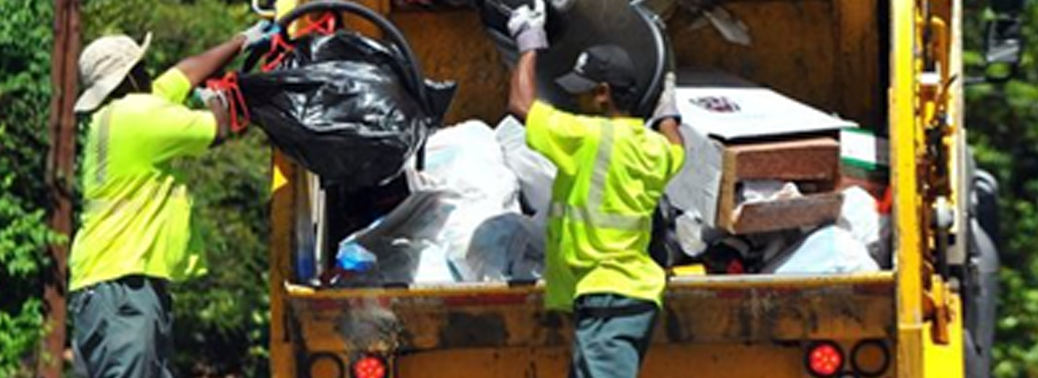
Why in News?
- The National Safai Karamcharis Finance and Development Corporation (NSFDC) has issued advisory to municipalities, panchayats urging them to ensure that all sanitation workers are provided Personal Protective Equipment (PPE) in order to safeguard them from the current Pandemic.
Highlights of the Advisory:
- There should be mandatory orientation for sanitation workers on Covid-19, social distancing norms and precautionary measures.
- All local bodies were asked to put in place a standard operating procedure for the safety of sanitation staff.
- The local bodies were asked to provide equipment, including masks, gloves, gumboots and jackets, as well as soaps and hand sanitisers for helping Maintain Hygiene.
About National Safai Karamcharis Finance and Development Corporation (NSKFDC):
- NSKFDC is a wholly owned Government of India Undertaking under the Ministry of Social Justice & Empowerment.
- It is an apex Corporation for the all round socio-economic up-liftment of the Safai Karamcharis, Scavengers and their dependents throughout India, through various loan and non-loan based schemes.
- It was set up in 1997 as a “Not for Profit” Company under Section 25 of the Companies Act, 1956 (now Section 8 of Companies Act 2013).
- NSKFDC is also playing a vital role in elimination of manual scavenging – the worst surviving symbol of untouchability.
ROBUST DIGITAL INFRASTRUCTURE ENABLING PROMPT TRANSFER OF CASH PAYMENT
16, Apr 2020

Why in News?
- A digital pipeline has been laid to provide the necessary backbone for DBT flows, adoption of social security/pension schemes, etc. under the Pradhan Mantri Garib Kalyan Package.
Highlights:
- A digital pipeline has been established through linking of Jan-Dhan accounts as well as other accounts with the account holders’ mobile numbers and Aadhaar[Jan DhanAadhaar-Mobile (JAM)]. Jan Dhan Yojana (PMJDY) was launched in August, 2014 with an aim to provide bank accounts to unbanked persons.
- Out of around 126 crore operative current accounts saving accounts (CASA), more than 38 crores have been opened under PMJDY.
Purpose of Creating Digital Infrastructure:
- Enablement of interoperable, speedy and Accurate Transactions:
- The bank accounts are enabled to carry out both cash and digital transactions at bank branches, Business Correspondent (BC) points, merchant locations and on the internet.
- Using biometric ID, highly cost-effective payments solutions like AePS/ Bhim Aadhaar Pay have been created both for banking services and for retail payments.
The Digital Payment Ecosystem includes the Following Modes:
- Aadhar enabled Payment System (AePS): helps in cash withdrawal by using Aadhaar authentication at branch/BC locations.
- Bhim Aadhaar Pay:enables payment to merchants using Aadhaar authentication
- RuPay debit cards:As on 31st March 2020, a total of 60.4crore RuPay cards have been issued including 29 crore issued in PMJDY accounts. These cards could be used at ATMs for cash withdrawal and at Points of Sale (PoS) & e-commerce for digital payments.
- Unified Payment Interface (UPI):Immediate real time payment system which helps in both person to person (P2P) and Person to Merchant (P2M) transactions.
- Bharat Bill Payment System (BBPS):helps in payment of utility bills through internet & BC locations both by using cash & digital modes.
- According to the Union Finance Ministry, using the digital payment infrastructure mentioned above, more than 30 crore poor people have received financial assistance of Rs. 28,256 crore under the Pradhan Mantri Garib Kalyan Package, in order to protect them from the impact of the lockdown due to COVID 19.
CM FUND CONTRIBUTIONS TO NOT QUALIFY AS CSR SPEND
14, Apr 2020

Why in News?
- The Ministry of Commerce has clarified that the contributions to the Chief Minister’s Relief Fund or the State relief fund will not qualify as Corporate Social Responsibility (CSR) expenditure, while any donation to the PM CARES Fund will.
Highlights:
- Ministry of Commerce also said that Ex-gratia payments made to temporary, casual and daily wage workers by companies will be considered as CSR expenditure under the companies law, provided that such payments are over and above disbursement of wages.
- Under the Companies Act, 2013, certain classes of profitable entities are required to spend at least 2 % of their three-year average annual net profit towards Corporate Social Responsibility (CSR) activities.
Schedule VII of the Companies Act, 2013:
- The Chief Minister’s Relief Fund’ or ‘State Relief Fund for COVID-19’ is not included in Schedule VII of the Companies Act, 2013, and therefore any contribution to such funds shall not qualify as admissible CSR expenditure.
- Schedule VII shows activities which may be included by companies in their Corporate
Social Responsibility Policies Activities Relating to:
- Eradicating hunger, poverty and malnutrition, and sanitation and making available safe drinking water.
- Promoting education, including special education and employment enhancing vocation skills especially among children, women, elderly and the differently abled and livelihood enhancement projects.
- Promoting gender equality, empowering women; setting up old age homes, day care centres and such other facilities for senior citizens.
- Ensuring environmental sustainability, protection of flora and fauna, animal welfare, agroforestry, conservation of natural resources and maintaining quality of soil, air and water [including contribution to the Clean Ganga Fund]
- Historical importance and works of art; setting up public libraries; promotion and development of traditional art and Handicrafts;
- Measures for the benefit of armed forces veterans, war widows and their dependents;
- Training to promote rural sports, nationally recognised sports, Paralympic sports and Olympic sports
- Contribution to the prime minister’s national relief fund or any other fund set up by the central govt. for socio economic development and relief and welfare of the schedule caste, tribes, other backward classes, minorities and women;
- Contribution to incubators funded by Central/state Government or any agency or PSU, and contributions to public funded Universities, Indian Institute of Technology (IITs), National Laboratories and Autonomous Bodies engaged in conducting research in science, technology, engineering and medicine aimed at promoting Sustainable Development Goals (SDGs)
- Rural development projects;
- Slum area development;
- Disaster management, including relief, rehabilitation and Reconstruction Activities.
ROLE OF ARMED FORCES IN CORONAVIRUS OUTBREAK BATTLE
11, Apr 2020
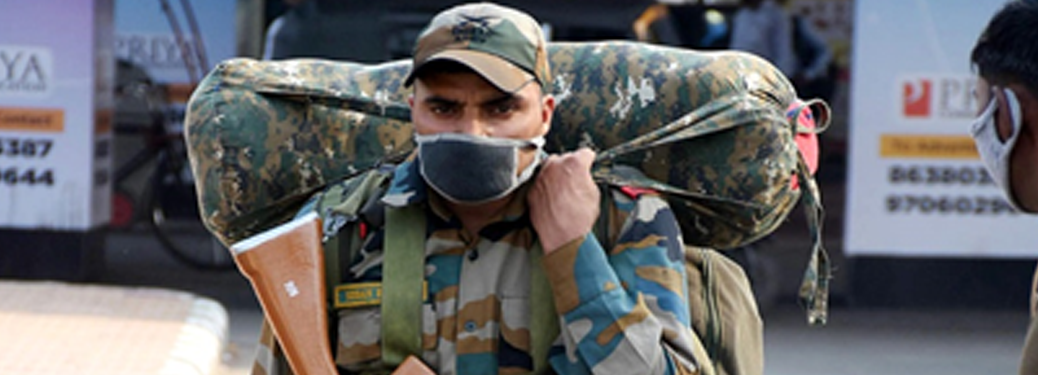
Context:
- Army has moved in to take over the COVID-19 quarantine facility at Narela in Delhi. This has brought into focus the role of army in such situations, procedure to be followed and provisions in this Regard.
What is the Procedure for Calling the Armed Forces to Help the Civil Administration?
- The procedure for requisitioning armed forces is governed under ‘Aid to Civil Authorities’ under the guidelines laid in Instructions on Aid to the Civil Authorities by the Armed Forces, 1970, Regulations for the Army and Manual of Indian Military Law.
- Civil administration requests the Local Military Authority for assistance, for the maintenance of law and order, maintenance of essential services, disaster relief and other types of assistance.
- Armed forces can be asked to provide troops and equipment for a flag march, rescue and relief, evacuation, and immediate aid.
Key Facts:
- Providing aid to civil authorities, as and when called upon to do so, is a secondary task for the armed forces. It cannot replace the primary role of ensuring external security and operational preparedness.
- The National Crisis Management Committee (NCMC), headed by the cabinet secretary, is the final authority to decide on the number of armed forces personnel that can be deployed to aid civil authority.
What are the tasks expected to be performed in checking the spread of COVID-19?
-
- Maintenance of law and order.
- Crowd control and curfew in sensitive areas.
- Evacuation of civilians from affected areas.
- Provision of essential supply of electricity and water.
- Restoration of essential services.
- Emergency feeding and shelter.
- Prevention of panic, prevention of theft and loot.
- Guarding quarantine locations and detention centres.
- Surveillance through drones aerial platforms.
Who pays for the Costs Incurred by the ARMED forces in These Roles?
- The civil administration pays the cost of assistance provided by the Armed Forces.
- It is recovered in accordance with the instructions contained in Appendix ‘H’ to the Pamphlet ‘Instructions on Aid to Civil Authorities by the Armed Forces 1970’.
PCPNDT ACT
11, Apr 2020
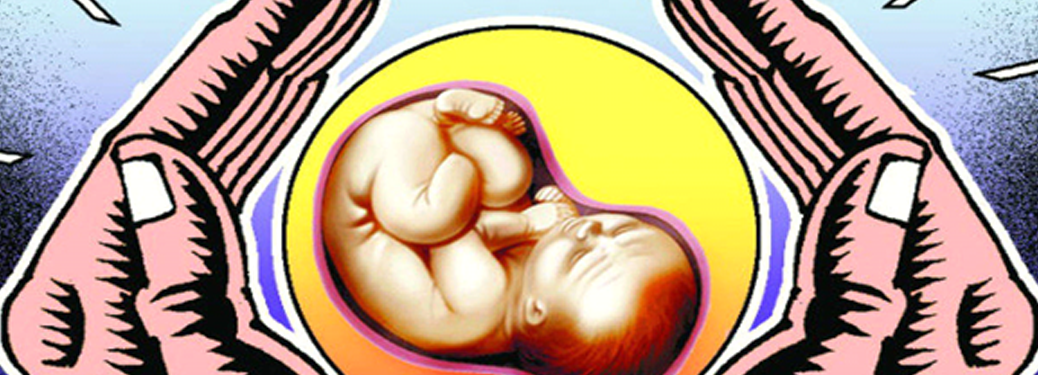
Why in News?
- Ministry of Health and Family Welfare has clarified that it has not suspended the PC&PNDT Act, which prohibits sex selection before or after conception.
What’s the Issue?
- In view of the ongoing lockdown, due of COVID19 pandemic, the Health Ministry has issued a Notification dated April 4, 2020 to defer/suspend certain provisions under the PC&PNDT Rules 1996.
- These Rules pertain to applying for renewal of registration if falling due in this period, submission of reports by diagnostics centres by 5th day of the following month and submission of quarterly progress report (QPR) by the States/UTs.
- But, a section of the media is speculating that the PC&PNDT (Pre Conception and Pre Natal Diagnostic Techniques (Prohibition of Sex Selection)) Act 1994 has been suspended by the Ministry of Health and Family Welfare.
About PCPNDT Act:
- The Pre-conception & Pre-natal Diagnostics Techniques (PC & PNDT) Act, 1994 was enacted in response to the decline in Sex ratio in India, which deteriorated from 972 in 1901 to 927 in 1991.
- The main purpose of enacting the act is to ban the use of sex selection techniques before or after conception and prevent the misuse of prenatal diagnostic technique for sex selective abortion.
- Offences under this act include conducting or helping in the conduct of prenatal diagnostic technique in the unregistered units, sex selection on a man or woman, conducting PND test for any purpose other than the one mentioned in the act, sale, distribution, supply, renting etc. of any ultra sound machine or any other equipment capable of detecting sex of the foetus.
Amendments Made:
- The act was amended in 2003 to improve the regulation of the technology used in sex selection.
- The Act was amended to bring the technique of pre conception sex selection and ultrasound technique within the ambit of the act.
- The amendment also empowered the central supervisory board and state level supervisory board to be constituted.
What are the Main Provisions in the Act?
- The Act provides for the prohibition of sex selection, before or after conception.
- It regulates the use of pre-natal diagnostic techniques, like ultrasound and amniocentesis by allowing them their use only to detect few cases.
- No laboratory or centre or clinic will conduct any test including ultrasonography for the purpose of determining the sex of the foetus.
- No person, including the one who is conducting the procedure as per the law, will communicate the sex of the foetus to the pregnant woman or her relatives by words, signs or any other method.
- Any person who puts an advertisement for pre-natal and pre-conception sex determination facilities in the form of a notice, circular, label, wrapper or any document, or advertises through interior or other media in electronic or print form or engages in any visible representation made by means of hoarding, wall painting, signal, light, sound, smoke or gas, can be imprisoned for up to three years and fined Rs. 10,000.
- The Act mandates compulsory registration of all diagnostic laboratories, all genetic counselling centres, genetic laboratories, genetic clinics and ultrasound clinics.
PROBLEMS IN VILLAGES AMID COVID-19 OUTBREAK
10, Apr 2020
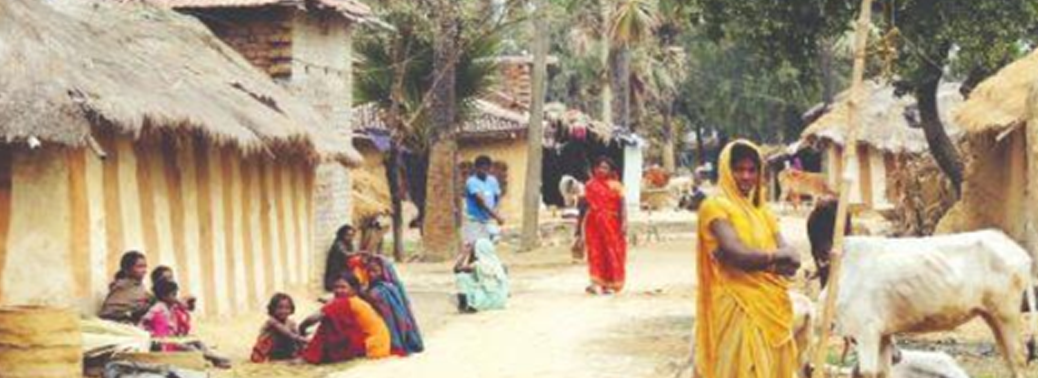
Why in News?
- With the influx of thousands of migrant labourers into their villages, the houses in villages, which are often one or two-room dwellings with an average seven family members to accommodate, are some of the worst places where one can hope to contain the deadly disease.
Highlights:
- Along with the absence of running water within households, the possibility of common points in village arenas becoming hotspots for this deadly contagion becomes manifold.Only a few States have been able to involve gram panchayats very effectively in this For example, community kitchens are run by local bodies in Kerala, where home delivery of cooked food is spiking as the situation demands.
Suggestions for Gram Panchayats:
- Panchayats can work exactly in three areas:
- Awareness generation,
- Setting up isolation conditions, and
- Streamlining social security measures announced by the Central and State Governments.
- A model needs to be established, with concrete standard operating procedures and best practices that can be replicated throughout rural India.
- Organisations such as Professional Assistance For Development Action (PRADAN) have been trying to influence gram panchayats in many States to coordinate with the administration to use the resources of panchayats. This should be done more.
- Even with the harvesting of wheat almost over in States such as Madhya Pradesh; people are still out in the fields, but once they are done with their work it is the panchayat that can do the work effectively to confine people within their homes with adequate awareness generation.
- Community policing with the active engagement of panchayats, by collaborating with women’s collectives, is a potential area where a people-led movement can be kick-started in a short time span.
- Despite the financial packages being rolled out to avert panic about basic food requirements, many will be left out as documentation is core to availing these social-service provisioning schemes. Without gram panchayats, it is not possible to deploy any system to adequately take prompt actions to include the excluded.
SMART CITY MISSIONS INTEGRATED DATA DASHBOARD
08, Apr 2020
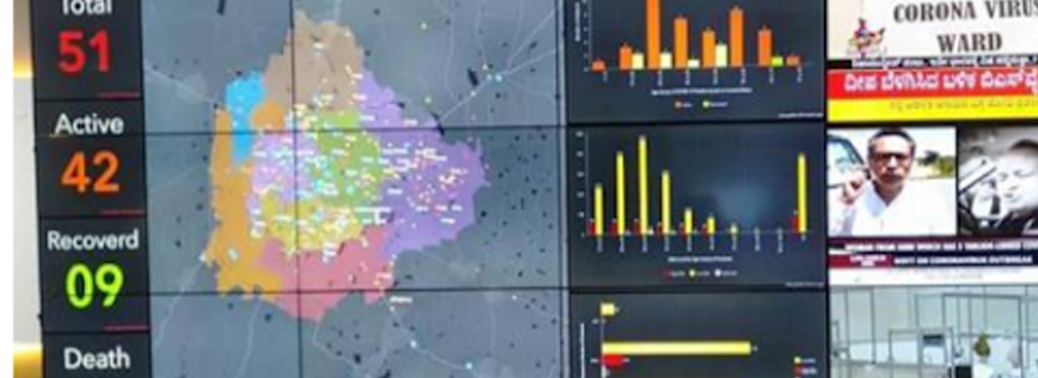
Why in News?
- Smart Cities of Pune, Surat, Bengaluru and Tumakuru are using the integrated data dashboards, to provide up-to-date information about the status of coronavirus in different administrative zones of their cities.
Integrated data dashboard:
- A data dashboard is an information management tool that visually tracks, analyzes and displays key performance indicators (KPI), metrics and key data points to monitor the health of a business, department or specific process.
Features:
- Spatial Mapping of the affected areas is made available to citizens using geo-spatial information systems.
- Using heat-mapping technologies and predictive analytics, the city administration will develop a containment plan and the containment zones get reflected on the dashboard.
- The Smart City’s integrated dashboard also monitors the quarantine facilities and tracks the health of suspected patients and their contacts placed under home quarantine.
- Regular updates to the citizens: In addition to providing the overall statistics on tested, confirmed, active, recovered and death cases, the dashboard provides the trends and patterns on the spread of COVID-19 within city, in terms of cumulative cases (each day), number of new confirmed cases reported (date wise), age-wise distribution of cases, zonewise distribution and gender-wise distribution.
- ‘War room’ to use technology to conduct surveillance on people within 8-km radius of a confirmed patient, so as to contain the spread of the virus.
- The Integrated Command and Control Centers are implementing initiatives such as
- CCTV Surveillance of Public Places
- GPS Tracking of Healthcare workers
- Virtual Training to Doctors & Healthcare professionals
- Real-time tracking of Ambulances & Disinfection Services
- Medical Services through Video Conferencing and Tele-Counselling and TeleMedicine.
INDIAN MIGRANTS ACROSS INDIA
07, Apr 2020
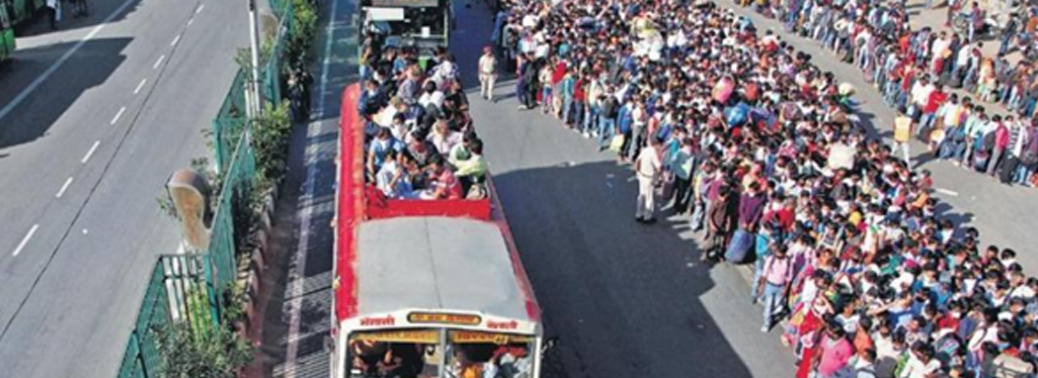
Why in News?
- The exodus of migrant workers from the cities following the announcement of the 21-day lockdown threw the spotlight on the vast number of Indians who live outside their home states.
Highlights:
- As per the 2011 census, the total number of internal migrants in India is 45.36 crore or 37% of the country’s population.
- This includes inter-state migrants as well as migrants within each state, while the recent exodus is largely due to the movement of inter-state migrants.
- The annual net flows amount to about 1 per cent of the working age population.
- As per Census 2011, the size of the workforce was 48.2 crore people.
- This figure is estimated to have exceeded 50 crore in 2016 — the Economic Survey pegged the size of the migrant workforce at roughly 20 per cent or over 10 crore in 2016.
Estimates for 2020:
- While there is no official data for the inter-state migrants in the country, estimates for 2020
- have been made by Professor Amitabh Kundu of Research and information System for Developing countries.
- His estimates, which are based on the 2011 Census, NSSO surveys and economic survey,
- show that there is a total of about 65 million inter-state migrants, and 33 per cent of these migrants are workers.
- By conservative estimates, 30 per cent of them are casual workers and another 30 per cent work on regular basis but in the informal sector.
- Uttar Pradesh and Bihar account for the origin of 25 per cent and 14 per cent of the total inter-state migrants, followed by Rajasthan and Madhya Pradesh, at 6 per cent and 5 percent.

Migration in Cities:
- Delhi has a migration rate of 43%, of whom 88% are from other states and 63% are from rural areas. Mumbai has a migration rate of 55%, with 46% migrants from other states and 52% from rural areas.
- Surat has a migration rate of 65%, with 50% migrants from other states and 76% from rural areas.
District Wise Migration Data:
- District-wise migration data in the Economic Survey for 2016-17 show that the highest influx of migrants within the country is seen in city-districts such as Gurugram, Delhi and Mumbai along with Gautam Buddh Nagar (Uttar Pradesh); Indore, Bhopal (Madhya Pradesh); Bangalore (Karnataka); Thiruvallur, Chennai, Kancheepuram, Erode, Coimbatore (Tamil Nadu).
EMPOWERED GROUP (NUMBER 6)
06, Apr 2020

Why in News?
- Empowered Group (number 6) constituted to address the issues pertaining to identification of problems, effective solutions and formulation of plans.
International Organisations:
- The six detailed meetings with UN Resident Coordinator for India, and country heads of WHO, UNICEF, UNFPA, UNDP, ILO, UN Women, UN-Habitat, FAO, World Bank, and Asian Development Bank.
- Outcome: Providing technical support in monitoring and surveillance systems, strengthening health and nutritional services, capacity building, financial resources and critical equipment support, etc.
- The UN in India has built a Joint Programme Response Plan and submitted it to NITI Aayog, defining their clear activities and deliverables in different sectors and States, where they are partnering with Union Ministries and State Governments.
Civil Society Organisations and Development Partners:
- Detailed deliberations with 40 plus prominent CSOs and NGOs working in different parts of the country and with different communities.
- Several challenges and issues raised by these CSOs were addressed to facilitate their working in the field during this crisis.
- CEO NITI Aayog has written to NGOs/ CSOs registered on the Darpan portal of NITI Aayog, appealing them to assist the government in identifying hotspots and deputing volunteers and care givers to deliver services to the elderly, persons with disabilities, children, transgender persons, and other vulnerable groups;
- to create awareness about prevention, social distancing, isolation, and combating stigma;
- to provide shelter to homeless, daily wage workers, and urban poor families;
- set up community kitchens for migrants.
- Industry Associations – CII, FICCI, ASSOCHAM, NASSCOM and Representatives from Industry
- The committee has opened up cross-sectoral dialogue within the private sector and startups to engender collaboration among them to produce health equipment and PPEs.
Stakeholders:
- International Organisations:The UN agencies, World Bank, Asian Development Bank
- NGOs: Civil Society Organisations and development partners
- Private Sector:Industry associations – CII, FICCI, ASSOCHAM, NASSCOM
- The Empowered Committee is chaired by Amitabh Kant, CEO NITI Aayog.
NATIONAL SECURITY ACT, 1980
06, Apr 2020
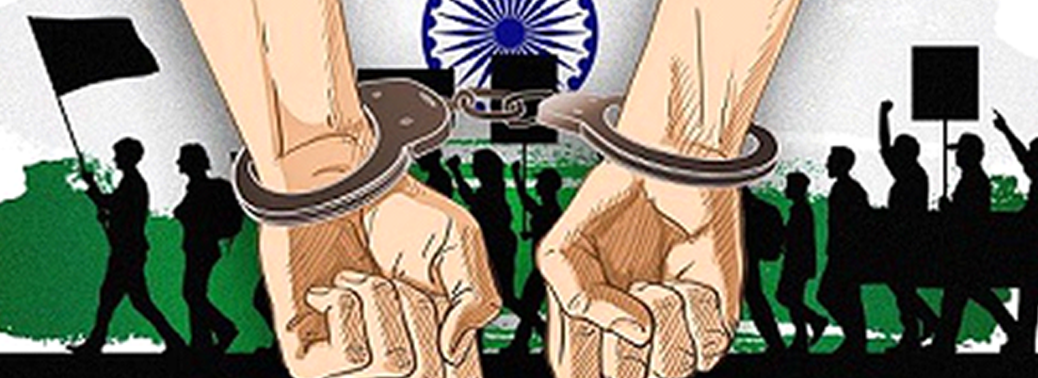
Why in News?
- The Uttar Pradesh government has said that six persons associated with the Tablighi Jamaat who has been accused of misbehaving with women staff at the district hospital in Ghaziabad will be charged under the National Security Act (NSA).
About National Security Act, 1980:
- It allows preventive detention for months, if authorities are satisfied that a person is a threat to national security or law and order.
- The person does not need to be charged during this period of detention.
- The goal is to prevent the individual from committing a crime.
- It was promulgated on September 23, 1980, during the Indira Gandhi government.
- As per the National Security Act, the grounds for preventive detention of a person include:
- Acting in any manner prejudicial to the defence of India, the relations of India with foreign powers, or the security of India.
- Regulating the continued presence of any foreigner in India or with a view to making arrangements for his expulsion from India.
- preventing them from acting in any manner prejudicial to the security of the State or from acting in any manner prejudicial to the maintenance of public order or from acting in any manner prejudicial to the maintenance of supplies and services essential to the community it is necessary so to do.
What the Constitution Says?
- Article 22 (3) (b)of the Constitution allows for preventive detention and restriction on personal liberty for reasons of state security and public order.
- Article 22(4) states that no law providing for preventive detention shall authorise the detention of a person for a longer period than three months unless: An Advisory Board reports sufficient cause for extended detention.
- The 44thAmendment Act of 1978 has reduced the period of detention without obtaining the opinion of an advisory board from three to two months. However, this provision has not yet been brought into force, hence, the original period of three months still continues.
Duration:
- Under the National Security Act, an individual can be detained without a charge for up to 12 months; the state government needs to be intimated that a person has been detained under the NSA.
- A person detained under the National Security Act can be held for 10 days without being told the charges against them.
- Appeal:The detained person can appeal before a high court advisory board but they are not allowed a lawyer during the trial.
Criticisms:
- The NSA has repeatedly come under criticism for the way it is used by the police. As per a Law Commission report from 2001, more than 14 lakh people (14, 57,779) were held under preventive laws in India.
How is it Draconian?
- Typically, if a person is arrested, then he/she enjoy certain rights bestowed by the Indian Constitution. The person has to be informed of the reason for the arrest. Under Section 50 of the Criminal Procedure Code (CrPC), the person arrested has to be informed.
- However, in the case of the NSA, the person can be held up to ten days without being informed of the reason.
- Sections 56 and 76 of the same penal code guarantee the detained person to be produced before a court within 24 hours. Apart from this, Article 22(1) of the Constitution allows the detainee to seek legal advice from a legal practitioner. However, under the NSA, none of these above mentioned basic rights is permitted to the suspect.
CENTRE PLANS CLASSES IN DISTANCE MODE
04, Apr 2020

Why in News?
- Since many schools have been shut since early March due to the COVID-19 pandemic, even before the countrywide lockdown, the Centre is planning to start the next academic year virtually.
Key Points:
- This means that the new academic calendar will begin as usual in April for classes 9 to 12, though the last academic year may have been somewhat truncated, with examinations postponed in some cases including the CBSE exams for classes 10 and 12.
- Recently, it has been decided that the CBSE will conduct exams only for the main subjects: required for promotion or may be crucial for admission in higher educational institutions.
- The Centre plans to restart classes in the distance mode, with teaching via dedicated TV and radio channels in English and Hindi.
- There is an existing program, Swayam Prabha, which is a group of 32 DTH channels devoted to telecasting high-quality educational programmes on 24X7 basis using the GSAT-15 satellite.
- National Institute of Open Schooling (NIOS) has been asked to create a structured programme for schools class-wise. This is being done along with the National Council of Educational Research and Training (NCERT) using their syllabus.
- The material will be ready for use by schools following the NIOS or the Central Board of Secondary Education (CBSE) syllabus.
What about the State Boards?
- Digital Infrastructure for Knowledge Sharing (DIKSHA)mobile app has been offered to States as a platform to provide content in Local Languages.
- If States are willing to produce the content in local languages, the Centre can give them 2-3 hours on the channel.
- Diksha Portal was launched by the Ministry of Human Resource Development (MHRD) in 2017 for providing a digital platform to teachers giving them an opportunity to learn and train themselves and connect with the teacher community.
- It is built considering the whole teacher’s life cycle – from the time student teachers enroll in Teacher Education Institutes (TEIs) to after they retire as teachers.
- States, government bodies and even private organisations, can integrate DIKSHA into their respective teacher initiatives based on their goals, needs and capabilities.
- It also provides access to NCERT textbooks and lessons, following the regular school curriculum.
About National Institute of Open Schooling (NIOS):
- NIOS, formerly known as National Open School (NOS) was established in November, 1989 as an autonomous organisation in pursuance of National Policy on Education 1986 by the Ministry of Human Resource Development (MHRD).
- NIOS provides a number of Vocational, Life Enrichment and community oriented courses besides General and Academic Courses at Secondary and Senior Secondary level.
- It also offers Elementary level Courses through its Open Basic Education Programmes (OBE).
- Government of India has vested NIOS with the authority to examine and certify learners registered with it upto pre degree level courses whether Academic, Technical or Vocational.
CENTRE DEFINES J&K DOMICILE RULES
03, Apr 2020
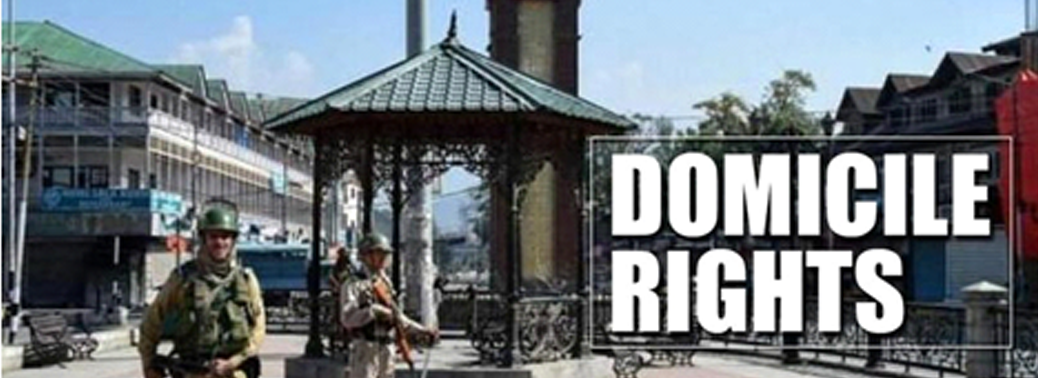
Why in News?
- Centre redefines Jammu and Kashmir domicile rules opening up various categories of jobs in the region to people from across the country.
- The order has been defined under J&K Civil Services (Decentralisation and Recruitment) Act.
What is Domicile?
- In law, domicile is the status or attribution of being a lawful permanent resident in a Particular Jurisdiction.
As per the Changes, who is now Deemed to have Domicile?
- Anyone “who has resided for a period of fifteen years in the UT of J&K”.
- Or has studied for a period of seven years and appeared in class 10th/12th examination in an educational institution located in the UT of J&K.
- Or those registered as migrants and their children.
- Or the children of those central government officials, All India service officials, Officials of Public sector undertaking, autonomous body of central government, public sector banks, officials of statuary bodies officials of central universities and recognized research institutes of central government who have served in J&K for a period of ten years.
- Or children of residents of J&K who reside outside the Union Territory in connection with employment or business or for other professional or vocational reasons, but whose parents fulfil any of the conditions provided in the latest gazette notification will also be entitled to domicile status.
What else the Order Says?
- The Order says that the domiciles will be eligible for the purposes of appointment to any post carrying a pay scale of not more than Level 4.
- The Level 4 post comprises positions such as gardeners, barbers, office peons and watermen, and the highest rank in the category is that of a Junior Assistant.
Who can Issue Domicile Certificates?
- The orders also empower tahsildars to issue domicile certificates.
- The government has been empowered to notify any other officer as the competent authority to issue the certificate.
Implications:
- The order now formally allows people from outside J&K to apply for jobs in the UT.
- While Level IV jobs have been reserved for people with domicile status – as per their definition in the order – other non-gazetted and gazetted jobs have been opened for people from across the country, including people domiciled in J&K.
MEDICAL DEVICES NOTIFIED AS DRUGS FROM 1ST APRIL
02, Apr 2020
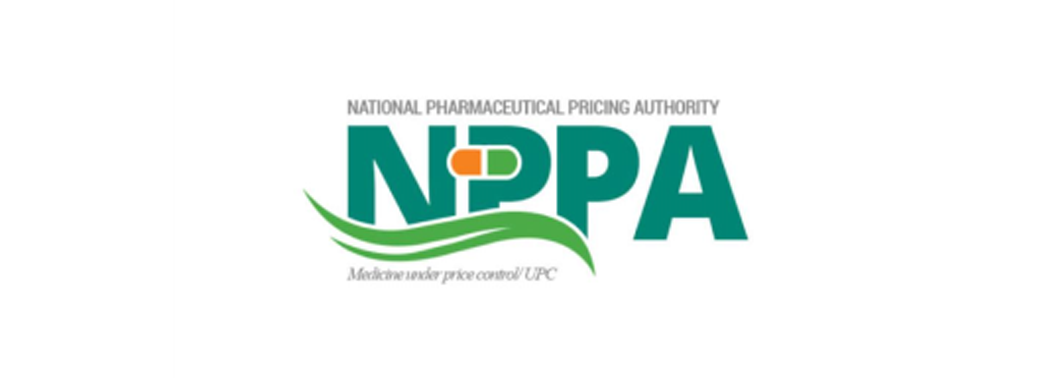
Why in News?
- The government’s regulation to classify all Medical Devices as Drugs for the prime purpose of quality control and price monitoring.
Highlights:
- The government is regulating 24 class of medical devices which have been notified as drugs under Drugs & Cosmetics Act, 1940 and Drugs & Cosmetics Rules, 1945.
- Of the above, 4 medical devices viz. (i) Cardiac Stents (ii) Drug Eluting Stents (iii)
- Condoms and (iv) Intra Uterine Device (Cu-T) are scheduled medical devices for which ceiling prices have been fixed.
- The remaining non-scheduled medical devices which are notified as drugs, NPPA is currently monitoring Maximum Retail Prices.
- Thus, with effect from 1st April, 2020, all Medical Devices shall be regulated by the Government as Drugs for quality control and price monitoring.
- Therefore, the Maximum Retail Prices of all the Medical Devices would be monitored by the Government to ensure that no manufacturer/importer increases the MRP of a drug more than ten percent of MRP during preceding twelve months.
- Further, with the Essential Commodities Act, 1955, the manufacturer/importer will also be liable to deposit the overcharged amount along with interest thereon from the date of increase in price in addition to penalty.
Background:
- Need for the Changes in Rules:
- The need for change in rules came in following media reports which brought to the fore the faulty hip implants marketed by pharma major Johnson & Johnson.
- Present State of Regulation:
- Drugs fall under Concurrent List, in this regard, GOI enacted Drugs and Cosmetics Act, 1940
- Further, some of the Medical devices were classified as drugs in 1982.
- Presently, only 23 categories of medical devices have been classified as drugs under Medical Devices Rules, 2017.
- Of these, only a few including cardiac stents, drug eluting cardiac stents, condoms, intrauterine devices, have been brought under price control.
- Existing Penal Provisions:
- There are various penal provisions under the Drugs and Cosmetics Act, 1940 for various kinds of offences.
- For manufacturing or sale of substandard items: punishable with imprisonment of at least 10 years, which may extend to imprisonment for life.

Drugs Technical Advisory Board (DTAB):
- It is the highest statutory decision-making body on technical matters related to drugs in the country.
- It is constituted as per the Drugs and Cosmetics Act, 1940.
- It is part of the Central Drugs Standard Control Organization (CDSCO) in the Ministry of Health and Family Welfare.
CDSCO:
- The Central Drugs Standard Control Organisation (CDSCO) under Directorate General of Health Services, Ministry of Health & Family Welfare, Government of India is the National Regulatory Authority (NRA) of India.
- Under the Drugs and Cosmetics Act, CDSCO is responsible for
- Approval of New Drugs
- Conduct of Clinical Trials
- Laying down the standards for Drugs
- Control over the quality of imported Drugs in the country and
- Coordination of the activities of State Drug Control Organizations by providing expert advice with a view to bring about the uniformity in the enforcement of theDrugs and Cosmetics Act.
- CDSCO along with state regulators, is jointly responsible for grant of licenses of certain specialized categories of critical Drugs such as blood and blood products, Vaccine and Sera.
Drugs and Cosmetics Act, 1940 and Rules 1945:
- It regulates the import, manufacture and distribution of medicines in the country.
- It Also ensures that drugs and cosmetics sold in India are safe, effective and conform to state quality standards.
- Entrusts various responsibilities to central & state regulators for regulation of drugs & Cosmetics.
- The related Rules,1945 contains provisions for classification of drugs under different schedules and prescribes guidelines for the storage, sale, display and prescription of each schedule.
NORMS RELAXED UNDER MPLAD SCHEME
02, Apr 2020
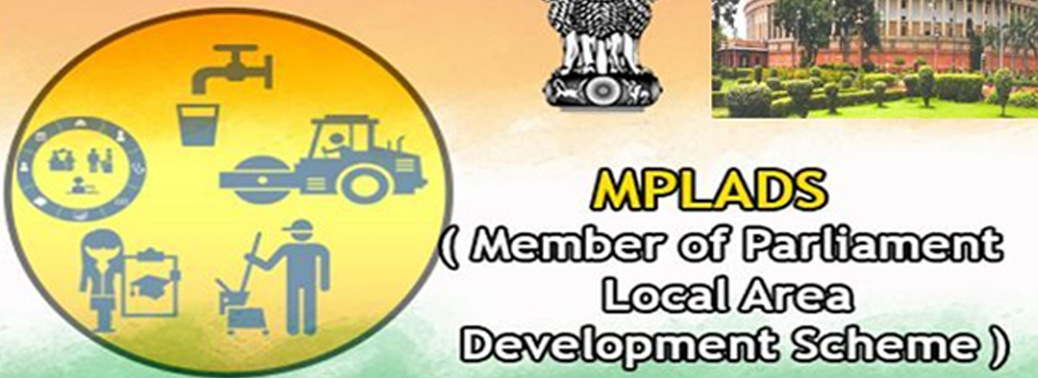
Why in News?
- Union government has recently given few exemptions under the MPLADS scheme, owing to the recent COVID-19 Pandemic.
About the Exemptions:
- The government has provided for “one-time exemption in furnishing of utilization certificate” for release of the first instalment, and exemption from furnishing of audit certificate for release of the second instalment.
- The exemption is for the Members of Parliament (MPs) who have decided to contribute for COVID-19. This exemption is applicable only for the financial year 2020-21.
- The latest announcement comes after allowing a one-time dispensation under the Scheme to allow MPs to recommend funds for purchase of medical testing and screening equipment for government hospitals and dispensaries in the wake of COVID-19.
Members of Parliament Local Area Development Scheme:
- This scheme was announced in 1993 and initially came under the control of the Ministry of Rural Development. Later, in October 1994, it was transferred to the Ministry of Statistics and Programme Implementation.
Objective:
- To enable MPs to recommend works of developmental nature with emphasis on the creation of durable community assets based on the locally felt needs to be taken up in their Constituencies.
- Lok Sabha Members can recommend works within their constituencies and elected Members of Rajya Sabha can recommend works within the State they are elected from.
- Nominated Members of both the Rajya Sabha and Lok Sabha can recommend works anywhere in the country.
- To create durable assets of national priorities viz. drinking water, primary education, public health, sanitation and roads, etc.
Funding and Implementation:
- It is a Central Sector Scheme. The annual MPLADS fund entitlement per MP constituency is ₹5 crore. MPs receive Rs 5 crore in two instalments of Rs 2.5 crore each. Funds under MPLADS are non-lapsable.
- Under the MPLADS rules, an MP can donate a maximum of Rs 1 crore to a trust or a public fund.
DRDO TO DEVELOP ‘MULTI-PATIENT VENTILATORS’ FOR CRITICAL COVID-19 PATIENTS
31, Mar 2020
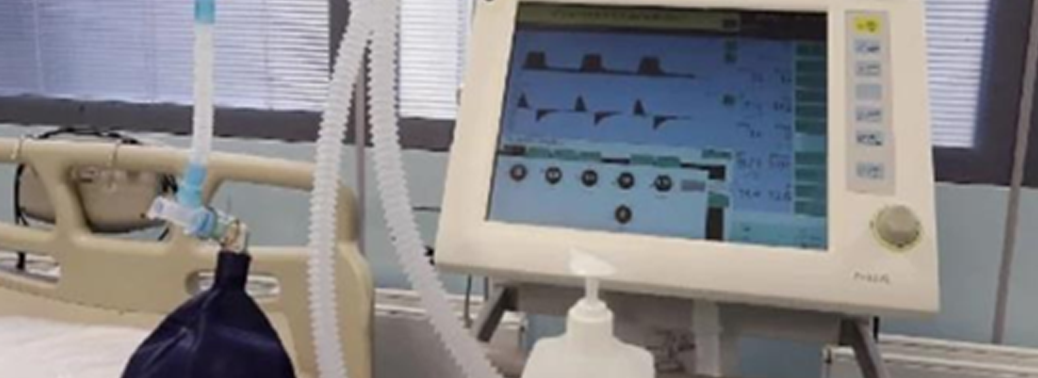
Why in News?
- The Health Ministry has asked the public sector unit to make about 10,000 ventilators. Bharat Electronics Limited (BEL), a PSU under the Ministry of Defence, is expected to supply about 30,000 ventilators by June 2020.
- The initiative to invite corporates to make multi-patient ventilators is also being tried out by the United States, which currently has the maximum COVID-19 patients in the world
Highlights:
- The multi-patient ventilators will help support several patients through a single unit. The DRDO is developing the advanced ventilators to meet the demand in case the coronavirus outbreak goes out of control.
- The DRDO aims to produce around 5000 ventilators in the first months and 10,000 subsequently.
- Each of the critical care ventilators is expected to cost around Rs four lakh.
- The organisation has found some local alternatives to the supply of critical components.
- Around nine companies have been identified for design transfer and to produce the components of the ventilator. Anand Mahindra has been selected for the fabrication of components.
- As per reports, the government has reached out to five automobile companies- Honda Cars India, Maruti Suzuki India, Hyundai Motor India, Mahindra and Mahindra and Tata Motors to explore the possibility of making ventilators at their plants.
- The Defence Research and Development Organisation is also developing personal protection equipment including five-layered N-99 face masks for the healthcare personnel of the country.
- The DRDO has offered the technology to the industry to produce the face masks on a large scale. The DRDO has also produced surgical face masks and distributed them to the Delhi Police.
- The DRDO is also producing sanitizing vans in large numbers to supply to major cities and towns to sanitize people who enter the van.
Ventilators in India:
- India has a total of about 40,000 ventilators at present including about 8,500 in public hospitals.
- Kerala, which has the highest number of positive coronavirus cases has around 5000 ventilators, Mumbai has about 1,000, Tamil Nadu has around 1,500 and Madhya Pradesh has about 1,800 ventilator units.
- The number of ventilators in some of the eastern states is less than 10.
CANTONMENT BOARDS GEAR UP TO COVID-19 CHALLENGE
30, Mar 2020
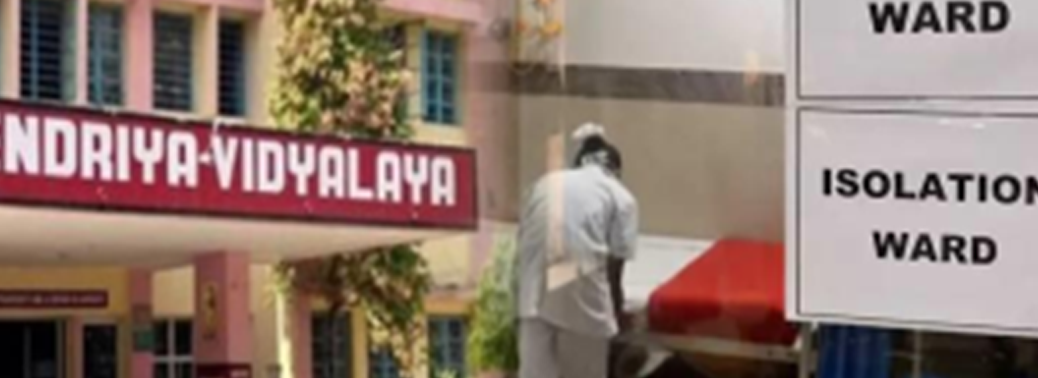
Why in News?
- Sixty-two Cantonment Boards spread over 19 States/Union Territories, across the country, with a population of approx. 21 lakh (including military and civil) have geared up to the challenge posed by Coronavirus (COVID-19) pandemic.
Highlights:
- Instructions have been issued to all the Cantonment Boards to identify beds in hospitals/health centres and guest houses for any eventuality.
- Presidents and Chief Executive Officers of the Cantonment Boards are in constant touch with civilian authorities in their respective areas and providing required assistance whenever needed.
- All the advisories issued by Ministry of Health and Family Welfare are being strictly adhered to by all the Cantonment Boards.
- All the Cantonment offices buildings, residential areas, school premises, libraries, parks and markets are being sanitised regularly.
- Task forces have been set up consisting of office staff to ensure supply of essential commodities, food items, etc, especially for poor people residing in Cantonment areas.
Cantonment Board:
- A cantonment board is a civic administration body in India under control of the Ministry of Defence.
- The overall municipal administration of the Cantonment areas comes under Cantonment Boards which are democratic bodies.
- The Cantonment areas were and are primarily meant to accommodate the military population and their installations.
- Cantonments are different from the Military Stations in that the Military Stations are purely meant for the use and accommodation of the armed forces and these are established under an executive order whereas the Cantonments are areas which comprise of both military and civil population.
Members:
- The board comprises elected members besides ex-officio and nominated members as per the Cantonments Act, 2006.
- The term of office of a member of a board is five years. A cantonment board consists of eight elected members, three nominated military members, three ex-officio members (station commander, garrison engineer and senior executive medical officer), and one representative of the district magistrate.
Categories:
- Cantonments are divided into Four Categories, Namely:
- Category I – population exceeds Fifty Thousand.
- Category II – population exceeds ten thousand, but does not exceed Fifty Thousand.
- Category III – population exceeds two thousand five hundred, but does not exceed Ten thousand.
- Category IV – population does not exceed two thousand five hundred
“OPERATION NAMASTE” OF INDIAN ARMY
28, Mar 2020
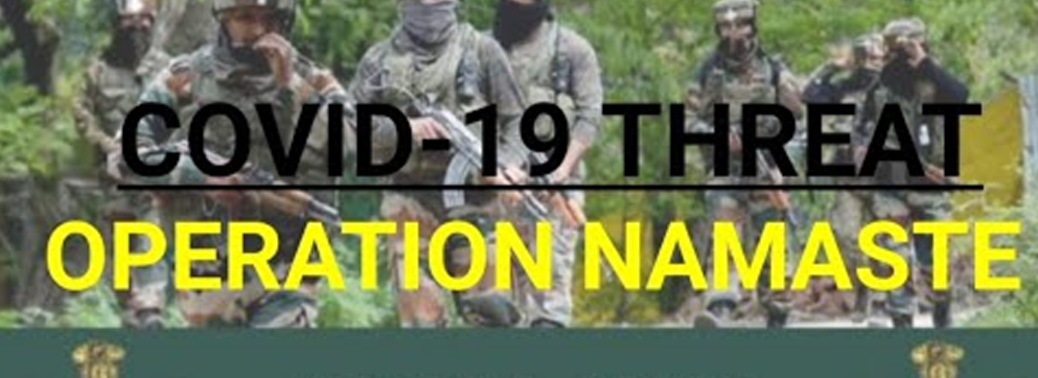
Why in News?
- The Indian Army has launched its anti-COVID-19 campaign code-named as “Operation Namaste” in order to help the government in its fight against the pandemic.
Steps taken under “Operation Namaste”:
- Soldiers are advised to follow the lockdown, wherever they do not have any operational role, and stay fit. They are assured that their families will be well taken care of.
- Leave extension of those on leave as well as curtailment of leave to bare minimum have been imposed.
Setting up of Quarantine and Hospital Facilities:
- Segregation facilities have been set up to observe troops already back from leave from various states.
- So far six quarantine facilities have been established where people evacuated from coronavirus-affected countries have been accommodated.
- 28 Armed Forces hospitals have been earmarked as COVID hospitals.
- These hospitals will include armed forces patients as well as civilian patients transferred from state health authorities.
- Five hospitals from the Army, Navy and the Air Force are conducting coronavirus tests using the RT-PCR methodology and more hospitals will be equipped soon with the resources.
Contributions by Other Forces:
- Indian Navy also contributed by delivering 60,000 face masks ordered by Indian Medical Association, Goa which were stuck in Delhi due to the lockdown. Ilyushin 38 SD (Long Range Maritime Reconnaissance aircrafts) departed for New Delhi and returned on the same day with the masks.
- Recently, Defence Research and Development Organisation (DRDO) also came forward to help by developing ventilators and providing other Medical Equipment.
MPLADS FUNDS MAY BE UTILIZED FOR COVID-19
27, Mar 2020
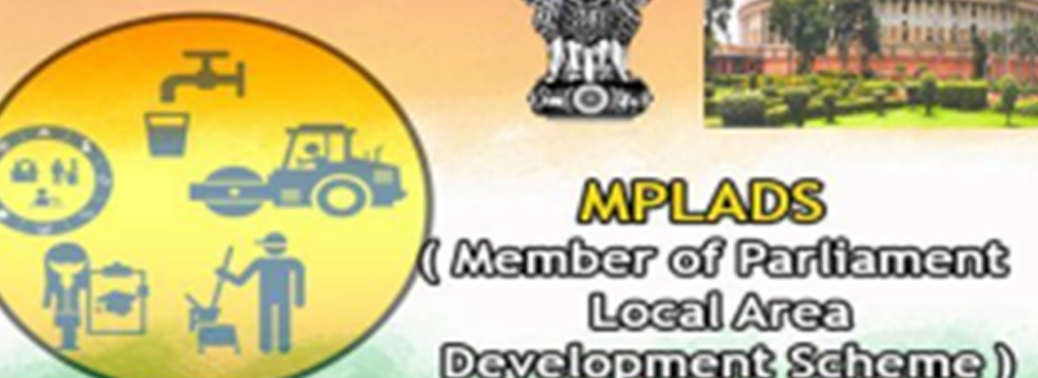
Why in News?
- Ministry of Statistics and Programme Implementation issued a circular granting one-time dispensation for utilizing funds under the Members of Parliament Local Area Development Scheme to address the challenges in the fight against COVID-19.
Members of Parliament Local Area Development Scheme (MPLADS):
- The MPLADS is an on-going Central Sector Scheme which was launched in 1993-94.
- The Scheme enables the Members of Parliament to recommend works for creation of durable community assets based on locally felt needs to be taken up in their constituencies in the area of national priorities namely drinking water, education, public health, sanitation, roads etc.
- The Ministry of Statistics and Programme Implementation is responsible for the policy formulation, release of funds and prescribing monitoring mechanism for implementation of the Scheme.
Features
- The annual MPLADS fund entitlement per MP constituency is Rs. 5 crore.
- MPs are to recommend every year, works costing at least 15 % of the MPLADS entitlement for the year for areas inhabited by Scheduled Caste population and 7.5 % for areas inhabited by S.T. population.
- In order to encourage trusts and societies for the betterment of tribal people, a ceiling of Rs. 75 lakh is stipulated for building assets by trusts and societies subject to conditions prescribed in the scheme guidelines.
- Lok Sabha Members can recommend works within their Constituencies and Elected Members of Rajya Sabha can recommend works within the State of Election (with select exceptions).
- Nominated Members of both the Rajya Sabha and Lok Sabha can recommend works anywhere
Implementation

- A Member of Parliament shall give his/ her choice of Nodal District in a prescribed format to the Ministry of Statistics and Programme Implementation with copy to the State Government and to the District Magistrate of the chosen District.
- The annual entitlement of Rs 5 crore shall be released, in two equal instalments of Rs 2.5 crore each, by Government of India directly to the District Authority of the Nodal District of the Member of Parliament concerned.
- The District Authority shall identify the Implementing Agency capable of executing the eligible work qualitatively, timely and satisfactorily.
- It shall be responsible for timely and effective implementation of such works.
- All recommended eligible works should be sanctioned within 75 days from the date of receipt of the recommendation, after completing all formalities.
- The District Authority shall, however, inform MPs regarding rejection, if any, within 45days from the date of receipt of recommendations, with reasons thereof.
DIGITAL INITIATIVES TO FIGHT CORONAVIRUS
27, Mar 2020
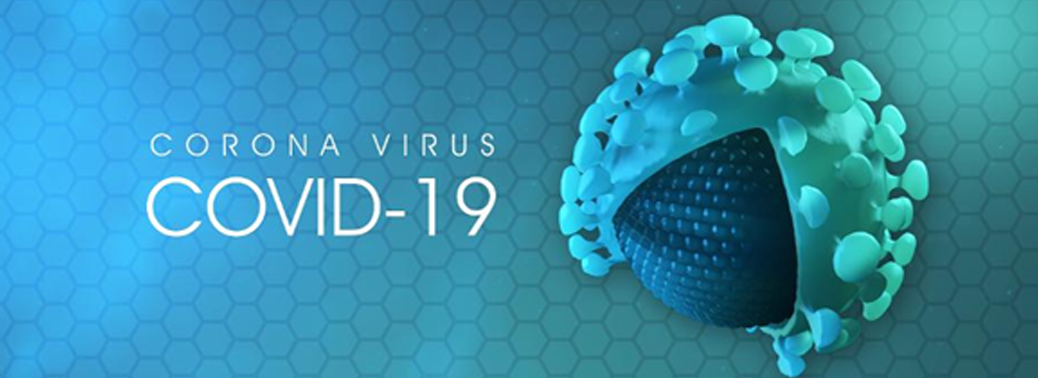
Why in News?
- Recently Indian government has initiated few digital initiatives in the fight against COVID-19 pandemic. This is how technology comes as a saviour in the critical times.
Few Initiatives taken by the Government:
Platform to host Webinars:
- The Government has developed a platform which will host webinars by All India Institutes of Medical Sciences (AIIMS) doctors for healthcare workers across the country.
- A webinar platform has been developed in tandem with the Ministry of Health and Family Welfare.
- The webinars are for the frontline health workers (nurses, paramedics, ASHA- Accredited Social Health Activist workers, Anganwadi workers), who are more prone to COVID-19.
- The webinars would be streamed on Facebook, YouTube and WhatsApp..
- The state governments would also be involved so as to make the content available in regional languages.
‘Corona Kavach’
- The Government has also developed a contact path tracing app that will trace the paths of COVID-19 positive patients, serving as a warning to possible contacts.
- The app would store location data and would enter the credentials of the person if he/she tests positive. This information would be sent to the cloud.
- A signal would come to the app which would convert it from green to red.
- The server would then find out people who were in close proximity with the infected person in the last 14 days.
- Their apps would turn yellow and they would get an alert that they should quarantine themselves.
Other Initiatives of the Government:
- Chat Boxes on Facebook and WhatsApp have been set up by the Ministry of Electronics and Information Technology (MeitY) for providing information about COVID-19.
- A portal to map the requirements of hospitals, and cross-referencing them with those who have offered to help with equipment is also being set up by the government.
COVID-19 LOCKDOWN: A LONG ROAD
26, Mar 2020
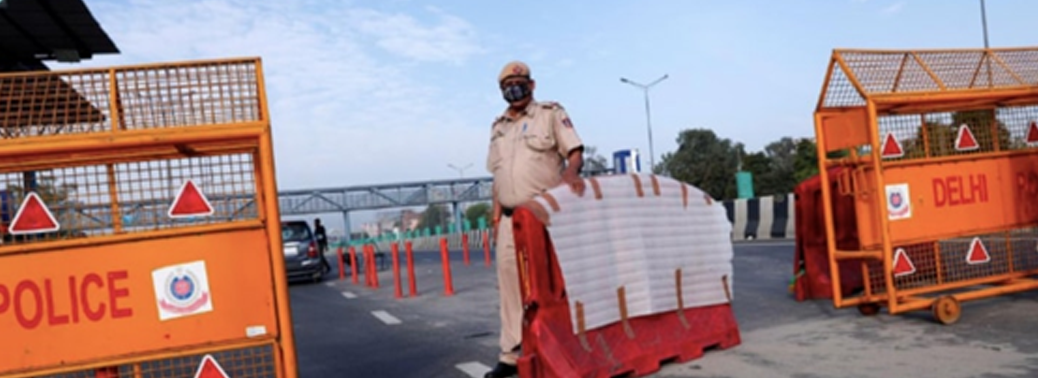
Context:
- While the nations around the globe are fighting against the deadly virus, India’s fight against the COVID-19 outbreak has been unique. Prime Minister Narendra Modi on 24 March, 2020, announced a 21-day nationwide shutdown in an effort to break the chain of transmission.
- As the nation of 1.3 billion people shut down, the World Health Organisation (WHO) said India’s COVID fight could make or break the global war. The real test for India is in curbing community transmission which has just begun.
India’s Lockdown Experiment:
- The lockdown has been enforced in a bid to flatten the curve of transmission of the novel coronavirus.
- However, the enforcement has also left millions of people unprepared for the severe disruption.
- As a public health measure, the full national lockdown is welcomed by the medical community as a necessary measure to cut the transmission chain of the virus.
- With the fresh arrival of travellers from abroad has already been stopped, the three weeks is long enough to allow for symptomatic cases of COVID-19 disease to emerge.
- This time period should give the government sufficient time to plan a treatment response.
- However, the government failed to anticipate the complex issues involved in confining over a billion people to their homes.
The Essence of the Lockdown:
- The lack of planning on the lockdown resulted in other problems like crowding, with people rushing out to buy essential supplies and medicines.
- There were also instances of mindless police violence against workers performing routine jobs.
- The hardest hit are the millions of daily wage earners, the self-employed and small businesses, and the rural landless poor.
- Vulnerable segments of the workforce face the immediate prospect of a lack of income as well as hunger.
- The shutdown has brought the approximately ₹200-lakh crore national economy close to a shuddering standstill.
- The virtual curfew could have been made far less stressful through prior discussion with the States, and unambiguous communication to the public.
Necessities for a Successful Lockdown:
- For the lockdown to serve its purpose, it should lead to wider testing of all suspected cases. For which, there should be substantial investments in public health infrastructure targeted at COVID-19 treatment.
- If the prolonged lockdown is to be executed without too much trauma for the general public, there has to be a war room approach – reliable access to food, water, medicines and emergency assistance must be provided.
- There is also a deplorable trend of social discrimination against health workers handling COVID-19 cases, which must be sternly dealt with.
- If movement is to be restricted, essentials must be delivered virtually at the doorstep.
- Allowing delivery of medicines by pharmacies is important and essential personnel must be given passes that protect them from police harassment and ensure movement of goods.
- Though some States have announced cash relief and free rations, the challenge is to ensure effective implementation.
- The Centre shall consider abandoning its fiscal deficit goals at this moment of a worldwide healthcare and economic crisis.
- The governments can use the Jan-Dhan accounts, BPL ration cards and the data available with various social welfare schemes including PM-KISAN and MGNREGA to ensure the reach of any financial aid to the population.
Life after the Lockdown:
- While the Finance Minister has announced a slew of measures to tackle the unprecedented economic crisis, it also demands a set of mitigation and subsequent stimulus measures of an exceptional scale.
- Provisions for free services to all financial aid recipients; loan repayment holidays and a wage bill subsidy to all MSME businesses that retain their workforce at pre-crisis levels can help rebuild the economy.
- Once the lockdown is lifted, a huge public infrastructure creation backed spending push can generate jobs and restart economic activity.
- The government must do well to use the crisis as a once-in-a-generation opportunity to address both the economy’s and the public’s well-being. The lives and livelihoods lost to the pandemic should not be in vain.
ECONOMIC RELIEF MEASURES TO TACKLE CORONAVIRUS OUTBREAK
25, Mar 2020
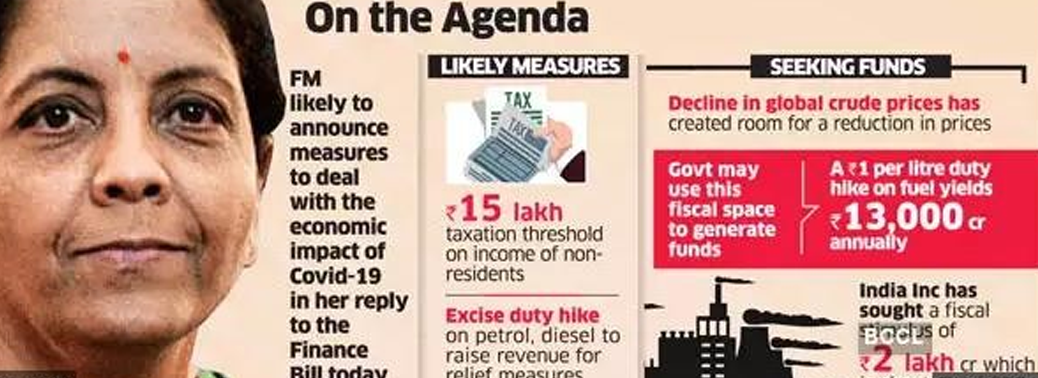
Why in News?
- Finance Ministry has announced several measures aimed at alleviating the growing economic stress in the country in the wake of the disruption caused by the spread of the novel coronavirus SARS-CoV-2.

Highlights:
- Contrary to expectations, the Ministry did not announce any fiscal sops, and limited itself to providing extensions for a range of regulatory requirements.
- The regulatory relief applies to taxation, both direct and indirect, as well as everyday working norms for a variety of economic magnates such as exporters and importers, small and medium-sized firms, and individuals as well.
- The most important change relates to the regulatory forbearance for firms that are likely to face bankruptcies.
- Under the Insolvency and Bankruptcy Code (IBC), bankruptcy proceedings can be started against a firm that defaults on an amount of Rs 1 lakh or more, this threshold has now been raised to Rs 1 crore.
- This will immediately help micro, small and medium enterprises (MSMEs) which are expected to be among the worst hit due to the ongoing economic slowdown. By raising the threshold, the government has provided immediate reprieve to all such firms.
- The ministry also noted that if the situation demands, that is, if the economic distress continues or intensifies, the government would consider suspending Sections 7, 9, and 10 of the IBC for a full six months after April end.
- The government has increased the deadline for filing income-tax returns for 2018-19 has been relaxed and the penal interest rate has been reduced. On Goods and Services Tax compliance, too, there has been a similar relief.
- The Aadhaar and PAN linkage too has been pushed to June-end. Government has also extended the deadline for dispute resolution schemes on the direct tax (Vivaad se Vishwas Scheme) and indirect taxes (Sabka Vishwas Scheme) till 30th
- It has also provided relief to importers whose shipments are delayed or those who need extended quarantining facilities.
- In the fisheries sector, Sanitary Import Permits, which were to expire by April 15 have been extended for 3 more months. However, these measures target only the organised sector of the economy.
- About 90% of employment in India is in the informal or unorganised sector. Economic
- slowdown affects that sector the most, and is likely to result in massive unemployment and deprivation. None of these measures is targeted towards that demographic.
AIRCRAFT AMENDMENT BILL, 2020
25, Mar 2020
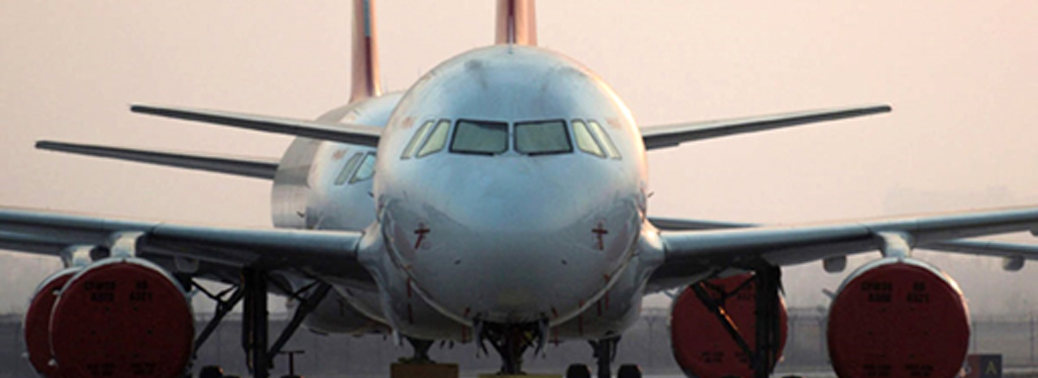
Why in News:
- The Lok Sabha has recently passed the Aircraft (Amendment) Bill, 2020 which seeks to amend the Aircraft Act, 1934.
Highlights
- It will provide statutory status to regulatory institutions like the Directorate General of Civil Aviation (DGCA), the Bureau of Civil Aviation Security (BCAS) and the Aircraft Accident Investigation Bureau (AAIB).
- It regulates the manufacture, possession, use, operation, sale, import and export of civil aircrafts and licensing of aerodromes.
- The statutory status to these regulatory institutions would improve India’s aviation safety ranking as suggested by the International Civil Aviation Organization (ICAO).
- It proposes to increase the fine amount for violations of rules from ₹10 lakhs to ₹1 crore for aviation industry players.
- It may cancel the licences, certificates or approvals granted to a person under the Act if the person contravenes any provision of the Act.
- It exempted aircrafts belonging to the naval, military, or air forces of the Union. It expands this exemption to include aircrafts belonging to any other armed forces other than these three.
- DGCA will carry out oversight and regulatory functions with respect to matters under the Bill.
- BCAS carries out regulatory oversight functions related to civil aviation security.
- AAIB carries out investigations related to aircraft accidents and incidents.
About Challenges of the Bill:
- The civil aviation sector had been deregulated with little role for the government to set air fare.
- There has been a drop in demand and airline companies are under stress due to the COVID-19 outbreak.
- The aviation sector faces the shortage of Air-Traffic Controllers (ATCs). The cases of “near miss” in the skies have increased.
- Air India is having huge losses (₹26 crores daily) due to its disinvestment and it is likely to get worse in the wake of the pandemic.
Way Ahead:
- Airfares need to remain affordable and airlines also need to remain viable.
- The strength of ATCs needs to be increased to avoid any possibility of mid-air collisions. India has 3,500 ATCs and 250 more will be hired next year.
- A near miss is when two aircraft come so close that their safety is compromised. The safe distance between two planes flying in opposite directions is 40 seconds depending on their speed. Similarly, the vertical distance of 1,000 feet is Considered Safe.
LARGE-SCALE ELECTRONICS MANUFACTURING IN INDIA
24, Mar 2020
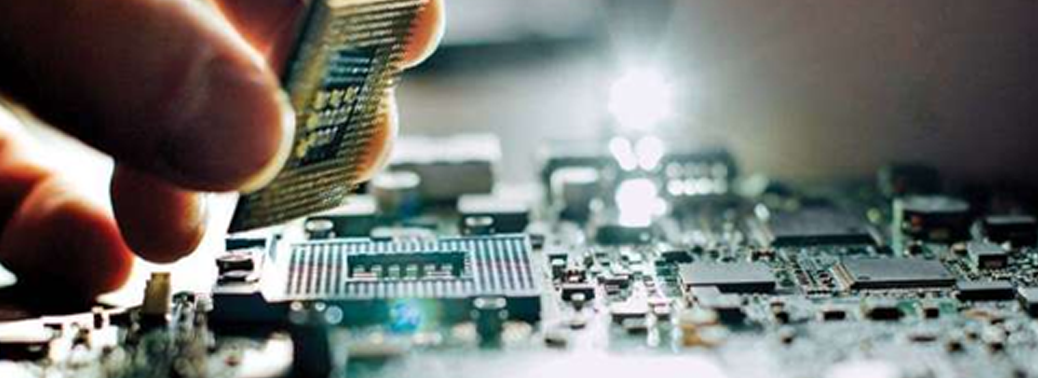
Why in News?
- In a bid to boost large-scale electronics manufacturing in India, the Union Cabinet approved three schemes, including a production-linked incentive scheme, with a total outlay of almost ₹48,000 crore.
- The National Policy of Electronics 2019 (NPE 2019) replaces the National Policy of Electronics 2012 (NPE 2012).
Highlights:
- The schemes are expected to attract new investments worth at least ₹50,000 crore in thesector, while generating more than five lakh direct and 15 lakh indirect jobs.
PLI for Large Scale Electronics Manufacturing:
- The Production-linked incentive (PLI) scheme for Large Scale Electronics Manufacturing aims to attract large investments in mobile phone manufacturing and specified electronic components, including assembly, testing, marking and packaging (ATMP) units.
- It has at a budgetary outlay of Rs. 40,995 crore for five years.
- The scheme will offer an incentive of 4-6% on incremental sales of goods manufactured in
- India and is expected to create a total of 8 lakh jobs.
Scheme for Promotion of manufacturing of Electronic Components and Semiconductors (SPECS):
- SPECS will provide financial incentive of 25% of capital expenditure for the manufacturing of goods that constitute the supply chain of an electronic product.
- The scheme will help offset the disability for domestic manufacturing of electronic components and semiconductors in order to strengthen the electronic manufacturing ecosystem in the country.
- The total cost of the scheme is Rs.3,285 crore.
Electronics Manufacturing Clusters (EMC) 2.0:
- It aims at creating quality infrastructure with a minimum area of 200 acres along with industry-specific facilities such as common facility centres, ready-built factory sheds/ plug-and-play facilities.
- The scheme will provide financial assistance upto 50% of the project cost subject to ceiling of Rs.70 crore per 100 acres of land and For Common Facility Centre (CFC), financial assistance of 75% of the project cost subject to a ceiling of Rs.75 crore will be provided.
- It has outlay of Rs. 3,762 crore over a period of 8 years.
Salient Features of National Policy on Electronics 2019 NPE 2019:
- Create eco-system for globally competitive Electronics System Design and Manufacturing (ESDM) sector
- Provide incentives and support for manufacturing of core electronic components.
- Provide special package of incentives for mega projects which are extremely high-tech and
- entail huge investments, such as semiconductor facilities display fabrication, etc.
- Formulate suitable schemes and incentive mechanisms to encourage new units and expansion of existing units.
- Promote Industry-led R&D and innovation in all sub-sectors of electronics, including grass root level innovations and early stage Start-ups in emerging technology.
- Provide incentives and support for significantly enhancing availability of skilled manpower, including re-skilling.
- Special thrust on Fabless Chip Design Industry, Medical Electronic Devices Industry, Automotive Electronics Industry and Power Electronics for Mobility and Strategic Electronics Industry.
- Create Sovereign Patent Fund (SPF) to promote the development and acquisition of IPs in ESDM sector.
- Promote trusted electronics value chain initiatives to improve national cyber security profile.

COVID-19 AND WORK FROM HOME IN INDIA
23, Mar 2020

Why in News?
- The rising wave of the COVID-19 outbreak in India has forced the corporate world in the country to opt for ‘work from home’ widely.
- Currently, the work from home is the only viable option to continue and sustain economic activities in the country to contain the spread of COVID-19.
Legal Framework in India:
- India’s labour laws and proposed Labour Codes do not recognise work from home as a viable work arrangement.
- An organisation is also required to maintain statutory records under various acts such as Shops and Establishment Act, Minimum Wages Act, Payment of Wages Act, Equal Remuneration Act, Payment of Bonus Act, Factories Act, and Contract Labour Regulation and Abolition Act.
- These laws regulate hours of work, payment of wages, leaves, holidays, terms of service and other conditions of work of persons employed.
- However, the above provisions assume that an employee has a fixed geography of work and does not account for an employee working from a remote location.
Current Scenario:
- Most organisations in India do not have well documented policies and guidelines to support extended work from home arrangements.
- Also most of the managerial staff is not trained and equipped to manage remote teams.
Complexities in regulating “Work from Home” Workforce:
- Labour – a Subject on the Concurrent List:
- Under the Constitution of India, Labour is a subject in the Concurrent List where both the Central & State Governments are competent to enact legislation subject to certain matters being reserved for the Centre.
- At the same time, States have also implemented labour laws with different applicability criteria, registration and documentation requirements.
- Thus, if an employee works remotely and is based in a different state, the applicable labour laws will change leading to different compliance obligations.
- Minimum Wages Act:
- The Minimum Wages Act 1948 is an Act of Parliament concerning Indian labour law that sets the minimum wages that must be paid to skilled and unskilled labourers.
- The different states have different minimum wages based on schedule, skill level and zone. As an example, just the state of Karnataka has over 800 different minimum wages.
- In the event of employees working remotely from different states, the complexity of wage computation will increase sharply.
- Minimum wage requirements for different states will have to be satisfied to stay compliant.
- Professional Tax:
- Professional tax is a tax on all kinds of professions, trades, and employment and levied based on the income of such profession, trade and employment.
- Professional Tax implementation varies between states in applicability, computation and filing requirements.
- Labour Welfare Fund:
- Labour Welfare Fund is a statutory contribution managed by individual state authorities.
- In case an employee telecommutes from a different state, there are implications leading to additional registration and filings leading to higher complexity and cost of managing compliance.
- Overtime Wage Calculations:
- An employer has to compute the wage of an employee based on the days and hours of work and maintain statutory registers as evidence.
- Overtime work hours have different slabs and statutory payment requirements.
- In a remote work arrangement, organisations will need to manage these records such that they are admissible by the Labour Department.
Way Forward:
- The world economies have become increasingly connected and interdependent. Greater flexibility, adaptability and resilience will be key to the next-generation workforce.
- The implementation of technology advancements in office productivity tools, collaboration tools, digital documents, flexible workflows, cheaper broadband connectivity will continue to make work from home easier.
- The proposed labour codes in India are expected to acknowledge gig, informal and unorganised labour in addition to work from home as a legal option.
- The government is also expected to make a regulatory framework to enable teleworking.
- Organisations should understand the implications of work from home during the ongoing crisis and ensure that they inadvertently do not miss critical compliances.
SETTING UP OF NATIONAL TECHNICAL TEXTILE MISSION
23, Mar 2020

Why in News?
- The government has approved the proposal for creation of National Technical Textiles Mission for a period of 4 years with an outlay of Rs.1480 crores.
Highlights:
- Objective:To position India as a global leader in technical textiles and increase the use of technical textiles in the domestic market.
- Implementation :For 4 years from 2020-21 to 2023-24
Components of the National Technical Textiles Mission:
- Component-l (Research, Innovation and Development):
- Will focus on research and development at both, fiber level and application-based in geo, agro, medical, sports and mobile textiles and development of bio- degradable technical textiles.
- Research activities will also focus on development of indigenous machinery and process equipment.
- Will have an outlay of ₹1,000 crores.
- Component-II (Promotion and Market Development):
- Will be for promotion and development of market for technical textiles.
- Will aim at average growth rate of 15-20% per annum taking the level of domestic market size to 40-50 Billion USD by the year 2024.
- Component–III (Export Promotion):
- Will focus on export promotion so that technical textile exports from the country reach from the ₹14,000 crore now to ₹20,000 crores by 2021-2022.
- Ensure 10% average growth every year till the Mission ends.
- An export promotion council for technical textiles will be set up.
- Component-IV (Education, Training, Skill Development):✓ Will promote Technical Education at higher engineering and technology levels related to technical textiles and its application areas.

Significance of the Mission:
- The Mission will focus on usage of technical textiles in various flagship missions, including in strategic sectors.
- The use of technical textiles in agriculture, aquaculture, dairy, poultry, etc. Jal Jivan Mission; Swachch Bharat Mission; Ayushman Bharat will bring an overall improvement in cost economy, water and soil conservation, better agricultural productivity and higher income to farmers per acre of land holding in addition to promotion of manufacturing and exports activities in India.
- The use of geo-textiles in highways, railways and ports will result in robust infrastructure, reduced maintenance cost and higher life cycle of the infrastructure assets.
- Promotion of innovation amongst young engineers will be taken up by the Mission; along with creation of incubation centres and promotion of ‘start-up’ and Ventures’.
- The research output will be reposited with a ‘Trust’ with the Government for easy and assessable proliferation of the knowledge.A sub-component of the research will focus on development of bio degradable technical textiles materials, particularly for agro-textiles, geo-textiles and medical textiles. It will also develop suitable equipment for environmentally sustainable disposal of used technical textiles, with emphasis on safe disposal of medical and hygiene wastes. There is another important sub-component in the research activity aiming at development of indigenous machineries and process equipment for technical textiles, in order to promote ‘Make in India’ and enable competitiveness of the industry by way of reducedcapital costs.
REVIVAL OF KHADI AND VILLAGE INDUSTRIES
23, Mar 2020
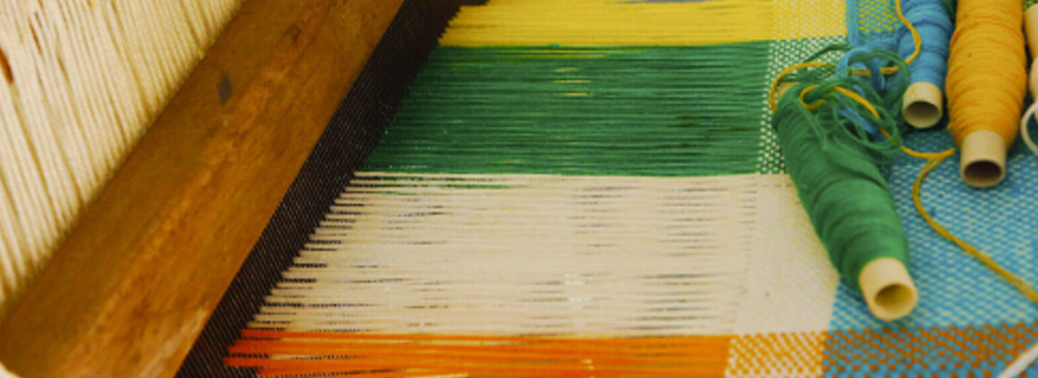
Why in News?
- The Ministry of Micro, Small and Medium Enterprises (MSME), through Khadi and Village Industries Commission (KVIC), has been implementing Khadi Reform and Development Programme (KRDP) scheme for revival and increase the production of Khadi throughout the country.
Khadi Reform and Development Programme (KRDP):
- It is a comprehensive reform programme approved by Government of India, being implemented with the assistance from Asian Development Bank (ADB). ¨ KRDP aims to revitalize the Khadi and Village Industries through Policy and Institutional Reforms
Specific Objectives are:
- Repositioning Khadi and aligning it to market demand and trends.
- Enhancing artisan welfare and empowerment.
- Undertaking extensive capacity building of Khadi Institutions (KIs).
- Strengthening Institutional Mechanisms.
- Implementation of MIS at Khadi Institution level and e-Governance at KVIC.
- Strategic development of traditional village industries.
Financial Assistance:
- A total of 22 Khadi Institutions were given assistance under KRDP with a financial outlay of Rs.1484.93 lakhs for refurbishment of Khadi programme in the State of Bihar. ¨ Ministry of MSME provides financial assistance in the form of grant and subsidy to KVIC for promotion and development of Khadi Programme.
- Ministry has approved Khadi Vikas Yojana for the development of Khadi programme during the year 2019-20, under which assistance is provided under following components:
- Modified Market Development Assistance (MMDA):KVIC provides Market Development Assistance to the registered Khadi Institutions and 40% of total MMDA to the Khadi a[[rtisans engaged in production activity.
- Interest Subsidy Eligibility Certificate (ISEC) Scheme: KVIC provides interest subsidy on the working capital loan availed by Khadi Institutions for undertaking production andsales activities under Khadi programme. Under the scheme interest @ 4% per annum is to be paid by the Khadi Institution and balance i.e. actual lending rate minus 4% is to be paid by the Government as interest subsidy.
- Workshed Scheme for Khadi Artisans: Khadi artisans are provided Worksheds for better work atmosphere and storing the materials, under which financial assistance up to Rs. 60000/- is provided per workshed.
- For revival of sick Khadi Institutions, assistance upto Rs. 9.90 lakh is provided to weak and problematic Khadi Institutions to bring them back to normalcy. For the renovation and modernization of sales outlets run by KVIC, Khadi Institutions and KVIBs financial assistance are being provided under ‘Assistance for Marketing Infrastructure’ scheme.
Rozgar Yukt Gaon (RYG):
- A new component under Khadi Vikas Yojana has been introduced with objective of introducing enterprise led model replacing subsidy-led model and create an additional 12,500 direct employment opportunities in 50 villages, which are deprived of opportunities and sustainable livelihood support systems, in addition to spinning out secondary and ancillary opportunities of employment in a wider sense. ¨ This will generate nearly 18,265 employment opportunities in which 12,500 will be direct and 5,765 will be indirect.
Khadi Mark:
- To ensure genuineness of Khadi, “Khadi Mark” regulation has been notified by Government of India.
- As of now, 2326 number of Khadi Institutions are working under Khadi Programme, out of which 85 KIs are working in Bihar State.
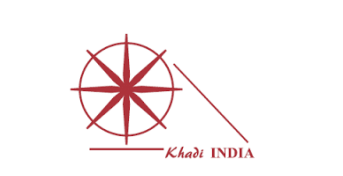
SCHOOL HEALTH PROGRAMME OF THE AYUSHMAN BHARAT
21, Mar 2020

Why in News?
- Recently, the Ministry of Human Resource Development (HRD) informed the Rajya Sabha about the implementation of School Health Programme (SHP).
About the School Health Programme:
- The School Health Programme (SHP) under Ayushman Bharat was launched in the year 2018. It is a joint collaborative programme of the Ministry of Health and Family Welfare and the Ministry of Human Resource Development.
An integrated Target:
- The initiative targets both Education and Health and intends to facilitate an integrated approach to health programming and more effective learning at the school level.
Major Objectives of the Scheme:
- Awareness about age appropriate information about health and nutrition to the children in schools.
- Detection and treating diseases early in children and adolescents including identification of malnourished and Anemic children.
- Usage of safe drinking water in schools.
- Promotion of safe menstrual hygiene practices by girls.
Role of Teachers and Education:
- Under the programme teachers act as “Health and Wellness Ambassadors” and disseminate various key information by organising culturally sensitive activity based sessions for one hour per week for 24 weeks in a year to promote joyful learning.
- Further, the students act as Health and Wellness Messengers in the society.
- Every Tuesday is dedicated as Health and Wellness Day in the schools.
Integration with Other Government Initiatives:
- The initiative is also linked with other government initiatives such as Fit India movement, Eat Right campaign, Poshan Abhiyaan for an all-round and holistic development model of health for the school children.
- Additionally, the government is implementing a few schemes on the similar lines namely, Rashtriya Kishor Swasthya Program and Rashtriya Bal Swasthya Programme.
1. Rashtriya Kishor Swasthya Program intends to ensure holistic development of the adolescent population.
2. Rashtriya Bal Swasthya Programme is aimed at early identification and intervention of diseases in children from their birth to 18 years of age.
Linkage with SDGs:
- The Ministry of Human Resource Development and the Ministry of Health and Family Welfare (MoHFW) along with National Council of Educational Research and Training (NCERT) have also developed curriculum framework and training material for training of nodal teachers, in line with Sustainable Development Goals (SDG- 3).
- SDG 3 aspires to ensure health and well-being for all.
SUPREME COURT DISMISSES PLEAS AGAINST POST-BASED RESERVATION IN KARNATAKA
21, Mar 2020

Why in News?
- The Supreme Court has rejected a bunch of pleas seeking exclusion of creamy layer or better-off individuals among Scheduled Castes (SC) and Scheduled Tribes (ST) communities at the entry-level when it comes to the reservation in promotions.
What is the Issue?
- The applications were filed in the BK Pavitra case in which the top court had, in 2019, upheld the constitutional validity of the Karnataka Extension of Consequential Seniority to Government Servants Promoted on the Basis of Reservations (to the Posts in the Civil Services of the State) Act.
- The Supreme Court in its 2019 judgment had held that the Act was a valid exercise of power by the government under Article 16 (4A) which empowers the state to provide reservations to SC/STs in matters of promotion.
What did the Karnataka Law Say?
- The Act enacted by the Karnataka government provides, among other things, for consequential seniority to persons belonging to SC and ST categories promoted under the reservation policy of Karnataka.
- Consequential seniority enables reserved category candidates to retain their seniority for subsequent promotions.
- That is, if an SC/ST candidate is promoted ahead of a general category candidate by reason of reservation in promotion, then the promoted SC/ST candidate will retain that seniority for subsequent promotions and will thus be considered senior to general category candidate who was promoted later.
Why this is Significant?
- This Supreme Court order is significant because it underlines “a ‘meritorious’ candidateis not merely one who is ‘talented ‘or ‘successful’ but also one whose appointment fulfils the constitutional goals of uplifting members of the SCs and STs and ensuring a diverse and representative administration”.
What is the Creamy Layer Concept?
- The ‘means-test and creamy layer’ first finds expression in the Supreme Court’s landmark judgment in Indra Sawhney versus Union of India, delivered by a nine-judge Bench on November 16, 1992.
- ‘Creamy layer’ are “some members of a backward class who are highly advanced socially as well as economically and educationally.
Constitutional basis for special measures under Article 335:
- Article 335 recognises that special measures need to be adopted for considering the claims of SCs and STs in order to bring them to a level-playing field.
Why it is Needed?
- Centuries of discrimination and prejudice suffered by the SCs and STs in a feudal, caste-oriented societal structure poses real barriers of access to opportunity.
- The proviso contains a realistic recognition that unless special measures are adopted for the SCs and STs, the mandate of the Constitution for the consideration of their claim to appointment will remain illusory.
NEW DEFINITIONS FOR MSMES
21, Mar 2020
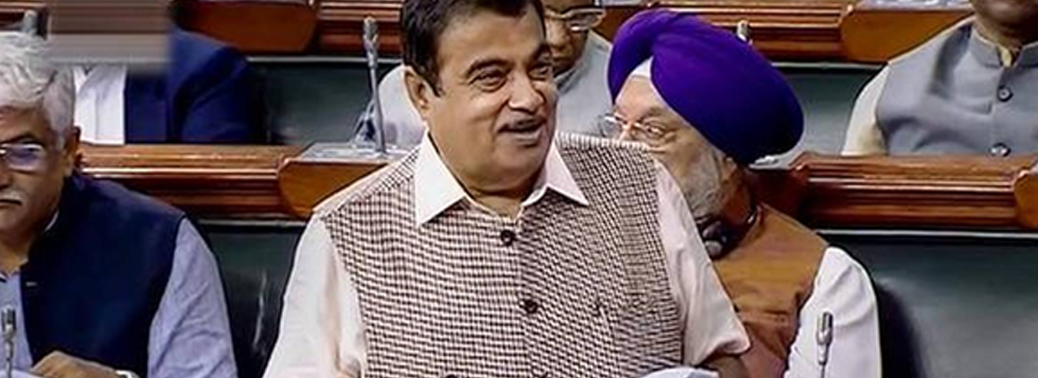
Why in News?
- Union Minister for MSMEs informed the Rajya Sabha that the government would come out with a new definition of MSMEs.
What are MSMEs?
- Micro, Small and Medium Enterprises Development (MSMED) Act, 2006 which was notified on October 2, 2006, deals with the definition of MSMEs. The MSMED Act, 2006 defines the Micro, Small and Medium Enterprises based on
- the investment in plant and machinery for those engaged in manufacturing or production, processing or preservation of goods and
- the investment in equipment for enterprises engaged in providing or rendering of services
- But in February 2018, the Union Cabinet approved the amendment to MSMED Act, 2006 for classifying MSMEs from current investment in plant and machinery criteria to annual turnover criteria. Accordingly,
- Micro Enterprise: Annual turnover does not exceed Rs. 5 Crore
- Small Enterprise:Annual turnover between Rs. 5 crore – Rs. 75 crore.
- Medium Enterprise:Annual turnover between Rs. 75 crore – Rs. 250 crore.
What is the Proposal?
- Government has accepted 39 suggestions by the K. Sinha committee on MSMEs appointed by the Reserve Bank of India, including the setting up a “fund of funds” for the sector.
- The MSME sector currently contributed 24% of the GDP growth and 48% of exports, with an annual turnover of ₹1 lakh crore this year. A target of ₹5 lakh crore in five years had been set.
- Among the hurdles before the sector were the pending payments by governments and public sector undertakings, which were ₹5 lakh crore to ₹6 lakh crore. These dues needed to be cleared in order to boost the sector.
What are their Impacts?
- It would increase compatibility with the Goods and Services Tax (GST) system.
- It may lead to further improvement in India’s ease of doing business scenario.
- It may allow a single definition for purposes related to taxation, investment, etc.
DRAFT DEFENCE PROCUREMENT PROCEDURE (DPP), 2020
21, Mar 2020

Why in News?
- Defence Minister recently released Draft Defence Procurement Procedure (DPP), 2020 which will come into effect from April 1, 2020.
What is Defence Procurement Procedure 2020?
- The Defence Procurement Procedure mainly contains processes that need to be followed to streamline and simplify defence procurement procedures and ultimately achieve the objective of self-reliance in meeting all the security needs of the Indian Armed Forces by promoting indigenous design, development and manufacture of Defence weapon systems and, platforms in a time-bound manner without any delays.
- The draft of DPP 2020 has been prepared by a Review Committee headed by Director General (Acquisition) based on the recommendations of all stakeholders, including private industry.
- In order to accrue advantage of domain specialisation of various subject matter experts, eight sub-committees headed by Lt Gen/equivalent officers were constituted to assist the review committee.
- The first DPP was promulgated in 2002 and has since been revised a number of times to provide impetus to the growing domestic industry and achieve enhanced self-reliance in defence manufacturing.
What are the Major Changes Proposed?
- Indigenous Content Ratio hiked
- In view of the experience gained by the domestic industry, the Draft proposes increasing the Indigenous Content (IC) stipulated in various categories of procurement by about 10% to support the ‘Make in India’
- A simple and realistic methodology has been incorporated for verification of indigenous content for the first time.
- Use of raw materials, special alloys and software incentivised as use of indigenous raw material is a very important aspect of ‘Make in India’ and Indian Companies are world leaders in software.
- Assurance of procurement on a single vendor basis from Aero Engine manufacturing unit and chips from FAB manufacturing units established in the country.
- New Category Buy (Global – Manufacture in India) has been introduced with minimum 50% indigenous content on cost basis of total contract value. Only the minimum necessary will be bought from abroad while the balance quantities will be manufactured in India. This would be in preference to the ‘Buy Global’category as manufacturing will happen in India and jobs will be created in the country.
- Leasing introduced as a new category
- Leasing has been introduced as a new category for acquisition in addition to existing ‘Buy’ & ‘Make’ categoriesto substitute huge initial capital outlays with periodical rental payments.
- Leasing is permitted under two categories i.e., Lease (Indian) where Lessor is an Indian entity and is the owner of the assets and Lease (Global) where Lessor is a Global entity.
- This will be useful for military equipment not used in actual warfare like transport fleets, trainers, simulators, etc.
- A new Chapter is introduced for procurement of software and systems related projects as in such projects, obsolescence is very fast due to rapid changes in technology and flexibility in the procurement process is required to keep up with the technology.
- A new Chapter is introduced for Post Contract Management to facilitate and provide clear guidelines for issues arising during the contract period as typically Defence contracts last for a long period.
- Timelines for procurement reduced by reducing the process for accord of Acceptance of Necessity which would be single stage of projects less than Rs.500 crore and in case of repeat orders. Trial methodology and Quality Assurance Plan to be part of RFP.
- Field Evaluation Trials to be conducted by specialised trial wings and the objective of trials will be to nurture competition rather than elimination for minor deficiencies.
- A comprehensive Chapter introduced for ‘Make’ to cover procurement from manufacturers in India including start-ups and innovators and from research projects of DRDO.
- Product support
- The scope and options for Product Support have been widened to include contemporary concepts in vogue, namely Performance Based Logistics (PBL), Life Cycle Support Contract (LCSC), Comprehensive Maintenance Contract (CMC), etc. to optimise life cycle support for equipment. The capital acquisition contract would normally also include support for five years beyond the warranty period.
- Modified offset guidelines proposed to give emphasis on export of products rather than components. Higher multipliers proposed for procurement from MSMEs and units established in Defence Industrial Corridors. Higher multipliers proposed for Transfer of Technology to private Companies / DPSUs / OFB and DRDO.
FORMULATION OF SCHEME FOR REHABILITATION OF BEGGARS
21, Mar 2020
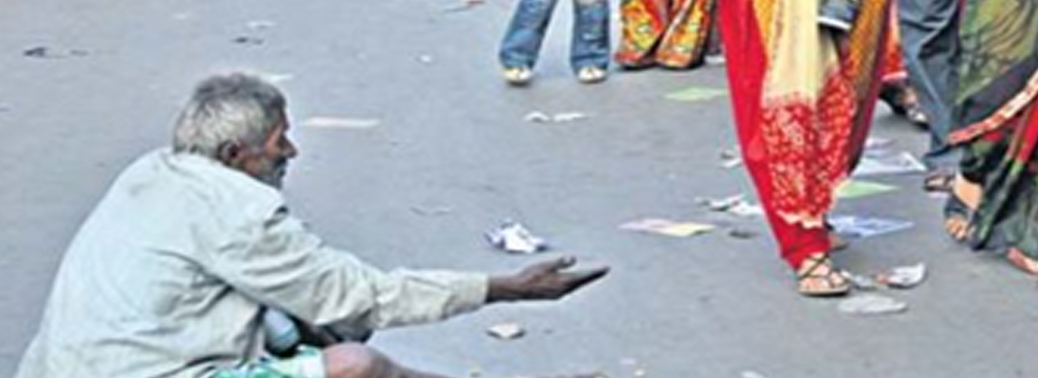
Why in News?
- The Ministry of Social Justice and Empowerment has proposed to restructure and formulate a scheme for Comprehensive Rehabilitation of Beggars
Highlights:
- It will be a comprehensive scheme for persons engaged in the act of begging.
- The scheme will cover identification, rehabilitation, provision of medical facilities, counselling, education, skill development with the support of State Governments, Local Urban Bodies and Voluntary Organizations.
- The scheme will be implemented in the selected cities having large concentration of Beggar community during the financial year 2020-2021.
- The government is working in a mission mode with complete commitment to‘Har Ek Kaam, Desh Ke Naam’.
Implementation:
- Pilot project of this scheme will be initiated during Financial Year 2019-20 subject to submission of city specific Action Plan by the State Governments.
- 100% Assistance under the Scheme shall be provided to the States/UTs for its implementation.
- During the year 2019-20, this Ministry has released an amount of Rs. One Crore to National Institute of Social Defence (NISD) and Rs. 70.00 Lakh to National Backward Classes Finance & Development Corporation (NBCFDC) for skill development programmes for beggars.
Induction:
- The Corporation has so far conducted skill development training programme for 400 members of beggar’s community in Warehouse Packer, Hand-rolled Agarbatti making, Hand Embroiderer and other self-employment skill development training programmes.
National Backward Classes Finance & Development Corporation:
- NBCFDC was incorporated 13th January 1992 as a non-profit company under the Ministry of Social Justice and Empowerment, Government of India to improve and develop the economic activities for the members of Backward Classes who are living below double the poverty line.
- The Corporation can assist loan for their self-employment ventures in the sectors like agriculture, transport and service etc.
- NBCFDC also provides Micro Financing through SCAs/ Self Help Groups (SHGs).
- The Corporation can assist a wide range of income generating activities to assist the poorer section of these classes in skill development and self-employment ventures.
CONTACT TRACING
20, Mar 2020
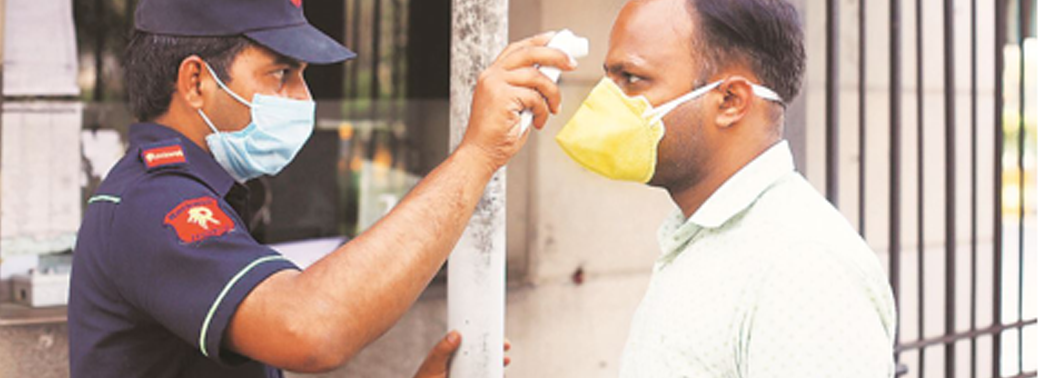
Why in News?
- Contact tracing is the process of identifying, assessing, and managing people who have been exposed to a disease to Prevent Transmission.
ICMR Guidelines:
- As per Indian Council of Medical Research guidelines, which are also directions that have sound public health sense behind them, people who may have been exposed to the virus are to be followed for 28 days from the date of the probable last exposure/arrival from affected countries.
- Any person who has had contact with the index patient under investigation/treatment for suspected, probable or confirmed case of SARS-COV-2, should be monitored for the appearance of symptoms.
Who is a Contact?
- Anyone who provided care for the suspect or confirmed case, including a health care worker (including those involved in cleaning, waste management, laboratory technicians, doctors) or family member, or anyone who had close physical contact; anyone who stayed at the same place (lived with, or visited) while the index patient was symptomatic.
- If symptoms appear within the first 28 days following the contact, the individual should be considered a ‘probable’ case and reported through the Integrated Diseases Surveillance Programme network to the National Centre for Disease Control.

Tracing Contacts:
- As soon as the single event (confirmed SARS-CoV-2) is detected, contact tracing must be aggressively implemented, and preferably to be completed within 48 hours.
- The contact tracing shall preferably be done by visiting the local residence of the contact(s) by a member of the health services team.
- On meeting the ‘contact person’, the visiting health worker should explain the purpose of contact tracing and collect data in a prescribed format.
- It is important to identify the social networks of the first patient and travel history during the 28 days after the onset of illness.
- Contacts should be traced and monitored for at least 28 days after the last exposure to the case patient for evidence of COVID-19 symptoms to emerge.
Symptomatic Contacts:
- Persons who have fever and cough and a history of contact with a confirmed case within the last 28 days should be referred for isolation for strict infection control.
- Samples must be collected and sent to the designated laboratory for testing, and appropriate medical management must begin.
- If contacts show symptoms, they may be isolated at a health care facility or at home until the results come in.
- Once confirmed as positive for SARS-CoV-2, they must be shifted to a proper health facility.
ODF+ and ODF++
19, Mar 2020

Context:
- Recently, the Parliamentary Standing Committee on Urban Development has tabled its report on the performance of the Swachh Bharat Mission (Urban) in Lok Sabha.
About ODF+, ODF++
- It is launched in 2018 to further scale up and sustain the work undertaken by the cities after achieving the ODF status under Phase I of the Swachh Bharat Mission — Urban (SBM-Urban).
- Cities that had been certified ODF at least once, on the basis of the ODF protocols, are eligible to declare themselves as SBM-ODF+ & SBM-ODF++.
- Its aim is to properly maintenance of toilet facilities and safe collection, conveyance, treatment/disposal of all faecal sludge and sewage.
- ODF+ focuses on toilets with water, maintenance and hygiene
- ODF++ focuses on toilets with sludge and septage management.
Highlights:
- Despite the fact that work on three protocols under the next phase of Swachh Bharat Mission (Urban-2) — ODF+, ODF++ and Water Plus — is to be completed by 2024, the ground situation was not matching with the assigned timeline. The progress has been slow.
- Less than 30 per cent of the cities have been certified as ODF+ so far. Out of 4,320 cities declared ODF, as low as 1,276 cities have been certified as ODF+.
- The number of ODF++ cities — 411 — means that less than 10 per cent cities are certified as ODF++ so far.
- According to Phase 1 of the Swachh Bharat Mission (U), 99 per cent of the cities became ODF, the Union Ministry of Housing and Urban Affairs (MoHUA) had claimed in 2019.
About Water plus:
- It aims to sustain toilets by treating and reuse of water, which is launched in 2019.
- It contributes to the government’s focus on water conversation and reuse under the Jal Shakti Abhiyan and is in alignment with United Nations-mandated Sustainable Development Goal No 6 on clean water and sanitation.
USING CALL DATA IS TO IMPROVE QUALITY AND NOT FOR SURVEILLANCE
19, Mar 2020
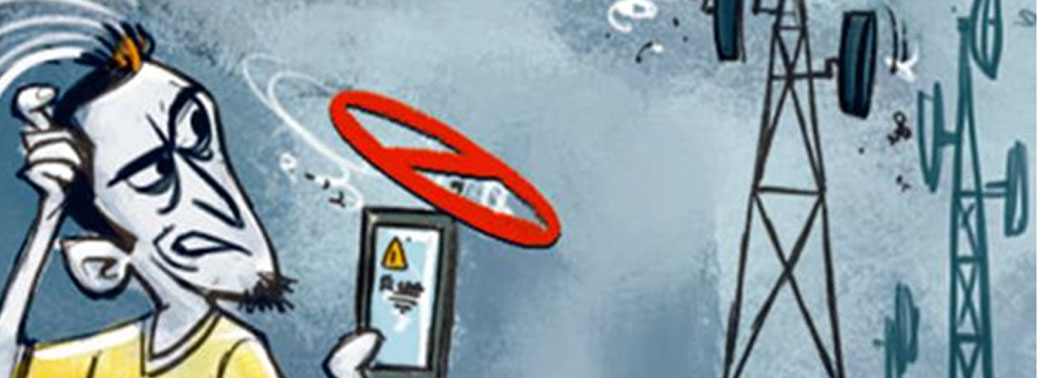
Why in News?
- Bulk call data records (CDR) being sought by the Department of Telecommunications (DoT), was only being collected to analyse and improve the quality of telecom services and not for any form of surveillance, says Government.
What is the Issue?
- Some local units of the DoT “continue to seek voluminous CDR details from the licensees on regular basis in contravention” of the standard operating procedure for providing CDRs to law enforcement agencies.
- In a reply, the DoT said that given the numerous complaints about quality of service on the country’s telecommunications networks including call drops, echo, cross connections, incomplete or poor caller experience, the DoT had developed a software tool to analyse big data and accurately ascertain call drops in any area.
- For this purpose, data on calls made from mobiles in any tower coverage area is analysed to ascertain calls terminated within 30 seconds and made again.
- The government stressed that this data was anonymous and did not contain the names of either the maker or receiver of calls.
- It is alleged that there is infringement of privacy of an individual which is the violation of the Fundamental Right under Article 21.
- The right to privacy is protected as an intrinsic part of the right to life and personal liberty under Article 21 and as a part of the freedoms guaranteed by Part III of the Constitution.
Is there any Legal Backup for such provision?
- The Government is empowered under Rule 419 of the Indian Telegraph Rules, 1951, to access such anonymous data for improving network quality.
- Any authorisation of such access to call drop data can be approved only by very senior officers.
- Further, it has been decided to seek such data only for short time period i.e. three to six hours normally covering the peak load of traffic on the network for any cell tower.
What are the Concerns Regarding Surveillance?
- Surveillance is done as per due process of law; that any interception, monitoring, decryption of computer resource is done only by authorised agencies and with approval of competent authority; to prevent unauthorised use of these powers by any agency, individual or intermediary so that the right to privacy of citizen is not violated.
Who are Empowered for Surveillance?
- The Ministry of Home Affairs (MHA), in December 2018, issued an order authorising ten security and intelligence agencies of the country to access any information stored in any computer for the purpose of monitoring, decrypting and interception.
- The 10 agencies include Intelligence Bureau, Narcotics Control Bureau, Enforcement Directorate, Central Board of Direct Taxes, Directorate of Revenue Intelligence;, Central Bureau of Investigation, National Investigation Agency Cabinet Secretariat (RAW), Directorate of Signal Intelligence (For service areas of Jammu & Kashmir, North-East and Assam only), and Commissioner of Police, Delhi.
Why Surveillance Needed?
- Surveillance is necessary in the modern world where modern tools of information communication, including encryption are used. Surveillance is done only in the defence of India, to maintain public order, etc.
- There are grave threats to the country from terrorism, radicalisation, cross border terrorism, cybercrime, drug cartels”, and these cannot be ignored or under-stated. There is a need for “speedy collection of actionable intelligence” to counter threat to national interests
How it is against the judgement of Supreme Court’s right to privacy?
- SC in Puttuswamy judgment had asked the government to always carefully and sensitively balance individual privacy and the legitimate concerns of the state.
- Government has clarified that existing processes will be followed and every case of interception would continue to require permission from the home secretary and review by a panel headed by the cabinet secretary. However, even these processes do not have adequate safeguards against misuse.
- An individual may not even know if her electronic communications are being intercepted or monitored. If such surveillance comes within the person’s knowledge, due to the obligation to maintain confidentiality and provisions in the Official Secrets Act, the person would not be able to know the reasons for such surveillance. This can make surveillance provisions prone to misuse.
RASHTRIYA KISHORE SWASTHYA KARYAKRAM
19, Mar 2020

Why in News?
- Promoting health and prevention of disease and risk factors is an important aspect of the Rashtriya Kishore Swasthya Karyakram under the National Health Mission.
Highlights:
- Various platforms being used to promote health and well-being of adolescents through Social and Behaviour Change Communication are as follows:
- 1.Quarterly Adolescent Health Day
- 2.Peer Educator Programme in the community and schools
- Besides this, Health promotion messages are also propagated through mass media and mid- media in the form of TV and radio spots, posters, leaflets and other interpersonal communication material.
- Social Media platforms are used for creating awareness on various schemes of the Ministry including those for the adolescents.
- Out of a total sanctioned strength of 2040 Adolescent Health Counsellors, there are 1671 Adolescent Health Counsellors in place across the country.
Initiatives:
- Public health being a State subject, all the administrative and personnel matters, including the recruitment of counsellors in public health facilities lie with the respective State Governments.
- The shortage of health human resource in public health facilities varies from State to State depending upon their policies and context.

- However, under National Health Mission (NHM), financial and technical supports are provided to the State/UTs to strengthen their healthcare systems including support for recruitment of health human resource based on the requirements posed by them in their Programme Implementation Plans (PIPs) within their overall resource envelope.
Components:
- Rashtriya Kishore Swasthya Karyakram has the following components:
- The Adolescent Friendly Health Clinics are established across various levels of public health institutions in all the States.
- Weekly Iron Folic Acid Supplementation (WIFS) Programme is being implemented for school going adolescent boys and girls and out of school adolescent girls across the country.
- The Peer Educator Programme is being implemented in select 200 districts, based on Composite Health Index and identified as High Priority Districts (HPDs).
- Under the Menstrual Hygiene Scheme, funds are provided to the States/UTs for procurement of sanitary napkins for Adolescent Girls (aged 10-19 years) as per proposals received from them in their Annual Programme Implementation Plans.
- Rashtriya Kishore Swasthya Karyakram (RKSK) focuses on reaching out all adolescents include Lesbian, Gay, Bisexual, Transgender and Queer (LGBTQ).
EKLAVYA MODEL SCHOOLS
18, Mar 2020
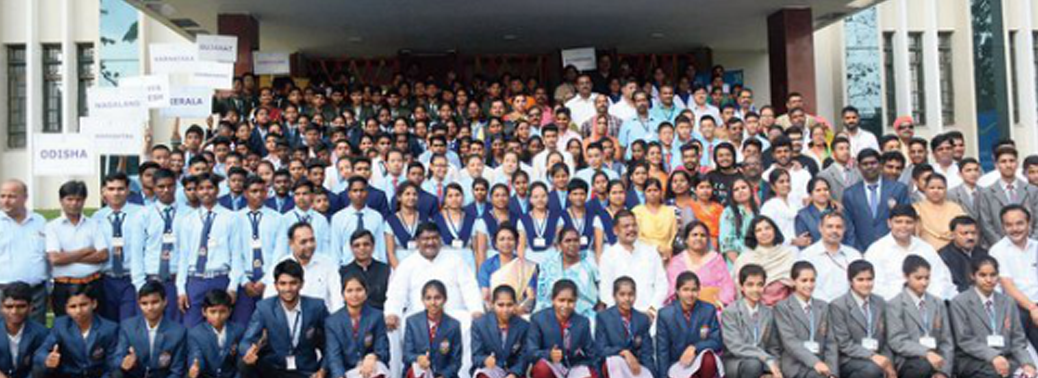
Why in News?
- The scheme of Eklavya Model Residential Schools (EMRSs) is a Government of India scheme for model residential school for Indian tribals (ST, Scheduled Tribes) across India and was introduced in the year 1997-98.
Objectives:
- To provide quality middle and high-level education to Scheduled Tribe (ST) students in remote areas in order to enable them to avail of reservation in high and professional educational courses and get jobs in government and public and private sectors.
- Comprehensive physical, mental and socially relevant development of all students enrolled in each and every EMRS.
- Focus differentially on the educational support to be made available to those in Standards XI and XII, and those in standards VI to X, so that their distinctive needs can be met.
- Support the construction of infrastructure that provides education, physical, environmental and cultural needs of student life.
Implementation:
- The scheme is being implemented by the Ministry of Tribal affairs.
- Provisions:
- EMRSs are set up in States/UTs with grants under Article 275(1) of the Constitution of India.
- As per budget announcement 2018-19, every block having 50% or more ST population and at least 20,000 ST persons is to have an EMRS by the year 2022.
- The government gives one time ₹30 lakh grant for establishing the school, thereafter up to ₹30 lakhs per school annually. Additional cost is borne by state governments.
- A total number of 438 EMRSs have so far been sanctioned by the Ministry, out of which 285 are functional.
- As per existing guidelines, the total number of EMRSs being set up upto the year 2022 is 740.
- Structure:
- Admission to these schools will be through selection/competition with suitable provision for preference to children belonging to Primitive Tribal Groups, first generation students, etc.
- Sufficient land would be given by the State Government for the school, play grounds, hostels, residential quarters, etc., free of cost.
- The number of seats for boys and girls will be equal.
- In these schools, education will be entirely free.
- Every class can have maximum 60 students preferably in 2 sections of 30 students each and the total sanctioned strength of the school will be 480 students.
- At the Higher Secondary level (class XI & XII), there will be three sections per class for the three streams in Science, Commerce & Humanities.

20-YEAR WINDOW FOR TELCOS TO CLEAR DUES
18, Mar 2020

Why in News?
- The Central government has urged the Supreme Court to give the telecom companies a 20-year window to pay the remaining amount of Adjusted Gross Revenue.
Highlights:
- In a long standing case related to the definition of Adjusted Gross Revenue (AGR) between Government and the Telecom companies, the 16 major telecom service providers were asked by the SC to pay a total due amounting 1,69,048.65 crores to the Government.
- The payment received till March 6, 2020, from these companies was ₹25,901.56 crores and dues to the tune of ₹1,43,271.74 crore remain outstanding.
- All the licensees are allowed to pay the unpaid or remaining amount of past dues in annual instalments over 20 years (or less if they so opt), duly protecting the net present value of the said dues using a discount rate of 8% (based on one-year marginal cost of lending rate of SBI which is currently 7.75%).
- The “formula” has been devised to soften the blow of the October 24, 2019 judgment directing the companies pay the AGR in three months.

Rationale:
- The move takes into consideration the larger interest, economic consequences on the nation and with a view to ensure that the Supreme Court order is complied with in letter and spirit.
- The vital issues related to the financial health and viability of the telecom sector and need for maintaining competition and level playing field in the interest of consumers were considered.
- The closure of one or more Telecom Service providers would adversely impact the digital connectivity of the country driving e-governance projects in commerce, banking and health.
- It would also dent the spread of digitization in Rural India.
CENTRAL SANSKRIT UNIVERSITIES BILL, 2019
18, Mar 2020

Why in News?
- Recently, a Bill to grant the status of Central universities to three deemed Sanskrit universities were passed by the Rajya Sabha.
About the bill:
- The Bill is intended to convert India’s three deemed-to-be Sanskrit universities into Central Sanskrit Universities.
- Rashtriya Sanskrit Sansthan, New Delhi.
- Shri Lal Bahadur Shastri Rashtriya Sanskrit Vidyapeeth, New Delhi.
- Rashtriya Sanskrit Vidyapeeth, Tirupati.
- What the universities will do?
- The proposed central universities will:
- disseminate and advance knowledge for the promotion of Sanskrit,
- make special provisions for integrated courses in humanities, social sciences, and science, and
- train manpower for the overall development and preservation of Sanskrit and allied subjects.
- Powers and functions:
- prescribing courses of study and conducting training programmes,
- granting degrees, diplomas, and certificates,
- providing facilities through a distance education system,
- conferring autonomous status on a college or an institution,
- providing instructions for education in Sanskrit and allied subjects.
- Some of the authorities that the universities will have:
- A court, which will review the policies of the university and suggest measures for its development.
- An Executive Council, which will be the principal executive body.
- The 15-member council will include the Vice-Chancellor appointed by the Centre, who will be the chairperson.
- The council will, among other functions, create teaching and academic posts and their appointment, and manage the revenue and property of the university.
- An Academic and Activity Council, which will supervise academic policies.
- A Board of Studies, which will approve the subjects for research and recommend measures to improve standards of teaching.
- Visitor of the universities:
- Like at all central universities, the President of India will be the Visitor of the central Sanskrit universities.
- He may appoint persons to review and inspect the functioning of the University.
- The Executive Council may take action based on the findings of the inspection.
These include:
What is the Issue?
- The government has been accused of neglecting other classical languages in India.
- Currently there are six languages that enjoy the ‘Classical’ status in India:
- Tamil (declared in 2004), Sanskrit (2005), Kannada (2008), Telugu (2008), Malayalam (2013), and Odia (2014).
- All the Classical Languages are listed in the Eighth Schedule of the Constitution.
About Classical Languages:
- The Ministry of Culture provides the guidelines regarding Classical languages.
- Guidelines for declaring a language as ‘Classical’ are:
- High antiquity of its early texts/recorded history over a period of 1500-2000 years;
- A body of ancient literature/texts, which is considered a valuable heritage by generations of speakers;
- The literary tradition be original and not borrowed from another speech community;
- The classical language and literature being distinct from modern, there may also be a discontinuity between the classical language and its later forms or its offshoots.
- Once a language is notified as a Classical language, the Human Resource and Development Ministry provides certain benefits to promote it:
- Two major annual international awards for scholars of eminence in classical Indian languages
- A Centre of Excellence for studies in Classical Languages is set up
- The University Grants Commission is requested to create, to start with at least in the Central Universities, a certain number of Professional Chairs for the Classical Languages so declared.
CENTRE WITHDRAWS EX-GRATIA NOTIFICATION ON COVID-19
17, Mar 2020

Why in News?
- Hours after it issued a notification that an ex-gratia of ₹4 lakhs will be paid to the families of those who die of COVID-19 infection, the Ministry of Home Affairs (MHA) withdrew the order.
Highlights:
- In an order recently, the MHA said it has decided to treat COVID-19 as a “notified disaster” for the purpose of providing assistance under the State Disaster Response Fund (SDRF).
- Under the old notification, the MHA listed ex-gratia relief to families of deceased persons and cost of hospitalization for managing COVID-19 patients at rates fixed by the State government among the items for assistance from the SDRF pool.
- It issued another “partially modified” notification the same day where the above two items were removed.
- It said the items that would be included for assistance under the SDRF are measures for quarantine, sample collection, screening and procurement of essential equipment/laboratories in response to COVID-19.
- Relief to families of victims and cost of hospitalization removed in new order.
- No explanation was given by the MHA officials for the modified notification.

State Disaster Response Fund:
- The SDRF is constituted under the Disaster Management Act, 2005 and is the primary fund available with state governments for responses to notified disasters.
- The Central government contributes 75 % towards the SDRF allocation for general category states and UTs, and over 90 % for special category states/UTs, which includes north-eastern states, Sikkim, Himachal Pradesh and Uttarakhand).
- For SDRF, the Centre releases funds in two equal instalments as per the recommendation of the Finance Commission.
- On the other hand, the National Disaster Response Fund, which is also constituted under the Disaster Management Act, 2005 supplements the SDRF of a state, in case of a disaster of severe nature, provided adequate funds are not available in the SDRF.
- The disasters covered under the SDRF include cyclones, droughts, tsunamis, hailstorms, landslides, avalanches and pest attacks among others.
What is a Disaster?
- According to the Disaster Management Act, a disaster is a catastrophe, mishap, calamity or grave occurrence in any area, arising from natural or man-made causes, or by accident or negligence which results in substantial loss of life or human suffering or damage to, and destruction of, property, or damage to, or degradation of, environment, and is of such a nature or magnitude as to be beyond the coping capacity of the community of the affected area.
- Ministry of Home Affairs has defined a disaster as an “extreme disruption of the functioning of a society that causes widespread human, material, or environmental losses that exceed the ability of the affected society to cope with its own resources.”
- Further, the High Power Committee on Disaster Management, which was constituted in 1999, identified 31 disaster categories organised into five major sub-groups, which are: water and climate related disasters, geological related disasters, chemical, industrial and nuclear related disasters and biological related disasters, which includes biological disasters and epidemics.

UNNAT BHARAT ABHIYAN
17, Mar 2020
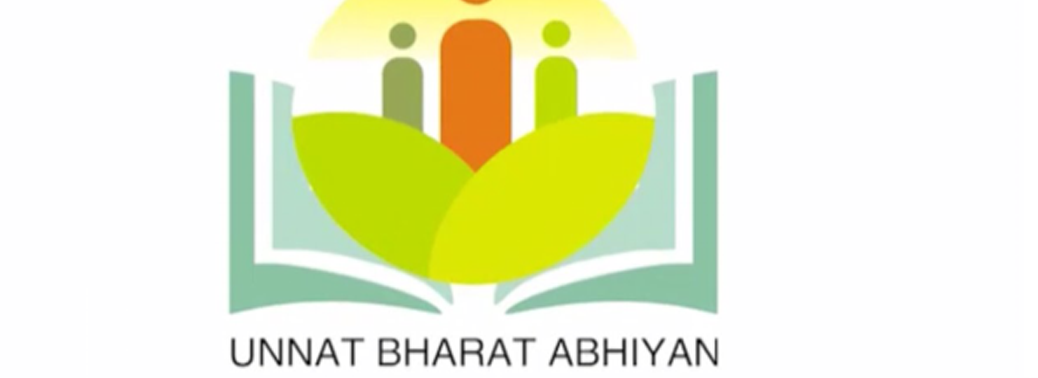
Why in News?
- Ministry for Human Resource Development (MHRD) has submitted the information related to the Unnat Bharat Abhiyan (UBA) recently.
Unnat Bharat Abhiyan (UBA):
- It is a flagship program of the Ministry for Human Resource Development (MHRD).
- It aims to link the Higher Education Institutions with a set of at least (5) village, so that these institutions can contribute to the economic and social betterment of these village communities using their knowledge base.
Objectives of the Scheme:
- To engage the faculty and students of Higher Educational Institutions (HEIs) in identifying development issues in rural areas and finding sustainable solutions for the same.
- Identify & select existing innovative technologies, enable customisation of technologies, or devise implementation methods for innovative solutions, as required by the people.
- To allow HEIs to contribute to devising systems for smooth implementation of various Government programmes.
About Unnat Bharat Abhiyan 2.0:
- It is the upgraded version of Unnat Bharat Abhiyan 1.0 launched in the year 2018.
- The scheme used to be extended to all educational institutes. But under Unnat Bharat Abhiyan 2.0 participating institutes are selected based on the fulfilment of certain criteria.
- The technological interventions under the UBA cover different subjects broadly categorized like in the area of sustainable agriculture; water resource management; artisans, industries and livelihood; basic amenities (Infrastructure & Services) and Rural Energy System.
BIRD FLU – AVIAN INFLUENZA
16, Mar 2020
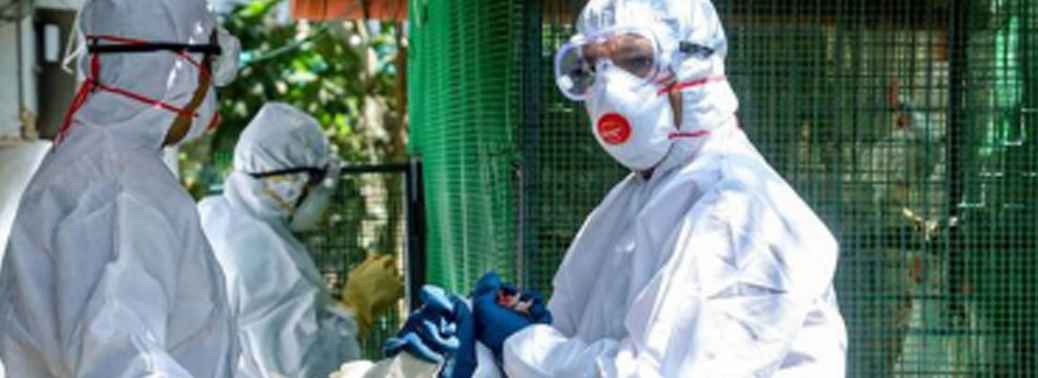
Why in News?
- The suspected cases of avian influenza (bird flu) are being reported from various parts of the Kerala.
Mitigatory Measures:
- Special squads had been formed to cull birds within a certain distance around the affected areas to bring the situation under control.
- About 4,000 chicken and birds are expected to be killed in two days as part of defensive measures being taken to prevent the spread of bird flu.
- The State was well-equipped with specialized laboratories to diagnose zoonotic diseases without delay and adopt preventive measures.
Bird Flu or Avian Influenza:
- Avian influenza (AI), commonly called bird flu, is an infectious viral disease of birds.
- These viruses occur naturally among wild aquatic birds worldwide and can infect domestic poultry and other bird and animal species.
- People catch bird flu by close contact with birds or bird droppings or undercooked poultry.
- Outbreaks of AI in poultry may raise global public health concerns due to their effect on poultry populations, their potential to cause serious disease in people, and their pandemic potential.
- Reports of highly pathogenic AI epidemics in poultry, such as A (H5N1), can seriously impact local and global economies and International Trade.
H5N1:

- Most avian influenza viruses do not infect humans. However, some, such as A (H5N1) and A (H7N9), have caused serious infections in people.
- H5N1 is a type of influenza virus that causes a highly infectious, severe respiratory disease in birds called avian influenza.
- Human cases of H5N1 avian influenza occur occasionally, but it is difficult to transmit the infection from person to person.
- When people do become infected, the mortality rate is about 60%.
How does H5N1 influenza spread to people?

- Almost all cases of H5N1 infection in people have been associated with close contact with infected live or dead birds, or H5N1-contaminated environments.
- The virus does not infect humans easily, and spread from person to person appears to be unusual.
High Concerns:
- H5N1 infection in humans can cause severe disease and has a high mortality rate.
- If the H5N1 virus were to change and become easily transmissible from person to person while retaining its capacity to cause severe disease, the consequences for public health could be very serious.
EPIDEMIC DISEASES ACT
13, Mar 2020
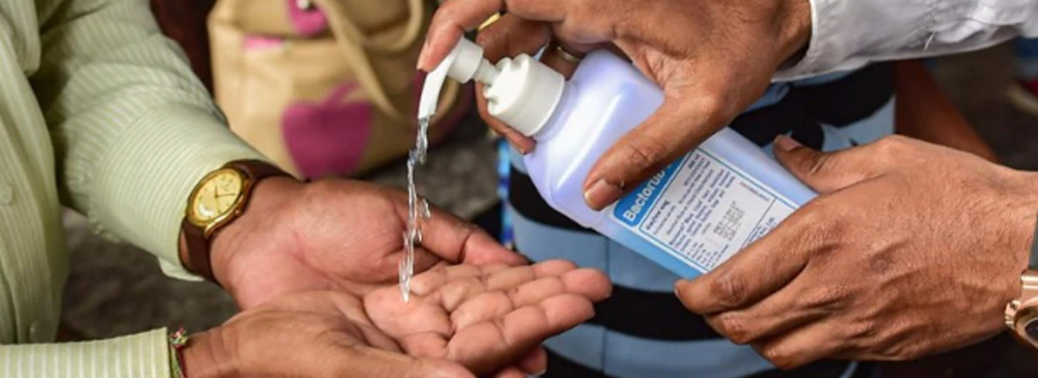
Why in News?
- The cabinet secretary has recently announced that all states and Union Territories should invoke provisions of Section 2 of the Epidemic Diseases Act, 1897 by means of which all advisories issued by the Union health ministry and state governments from time to time are enforceable.
COVID-19 in India:
- At present, at least 60 COVID-19 cases have been confirmed in India.
- Around the world, more than 119,100 people have been infected and nearly 4,300 have died, according to a Reuters tally of government announcements.
History of the 1897 Epidemic Diseases Act:

- The Epidemic Diseases Act is routinely enforced across the country for dealing with outbreaks of diseases such as swine flu, dengue, and cholera.
- The colonial government introduced the Act to tackle the epidemic of bubonic plague that had spread in the erstwhile Bombay Presidency in the 1890s.
- Using powers conferred by the Act, colonies authorities would search suspected plague cases in homes and among passengers, with forcible segregations, evacuations, and demolitions of infected places.
- Historians have criticized the Act for its potential for abuse.
- In 1897, the year the law was enforced, freedom fighter Bal Gangadhar Tilak was punished with 18 months’ rigorous imprisonment after his newspapers Kesari and Mahratta admonished imperial authorities for their handling of the plague epidemic.
Provisions of the 1897 Epidemic Diseases Act:
- The Act, which consists of four sections, aims to provide “for the better prevention of the spread of Dangerous Epidemic Diseases.”
- Section 2 empowers state governments/UTs to take special measures and formulate regulations for containing the outbreak.
- It Reads:Power to take special measures and prescribe regulations as to dangerous epidemic disease—
1. When at any time the State Government is satisfied that the State or any part thereof is visited by, or threatened with, an outbreak of any dangerous epidemic disease, the State Government, if it thinks that the ordinary provisions of the law for the time being in force are insufficient for the purpose, may take, or require or empower any person to take, such measures and, by public notice, prescribe such temporary regulations to be observed by the public or by any person or class of persons as it shall deem necessary to prevent the outbreak of such disease or the spread thereof, and may determine in what manner and by whom any expenses incurred (including compensation if any) shall be defrayed.
2. In particular and without prejudice to the generality of the foregoing provisions, the State Government may take measures and prescribe regulations for the inspection of persons travelling by railway or otherwise, and the segregation, in hospital, temporary accommodation or otherwise, of persons suspected by the inspecting officer of being infected with any such disease.”
- Section 3 provides penalties for disobeying any regulation or order made under the Act.
- These are according to section 188 of the Indian Penal Code (Disobedience to order duly promulgated by public servant).
- Section 4 gives legal protection to the implementing officers acting under the Act.
Past Implementation:
- In 2018, the district collector of Gujarat’s Vadodara issued a notification under the Act declaring the Khedkarmsiya village in Waghodia taluka as cholera-affected after 31 persons complained of symptoms of the disease.
- In 2015, to deal with malaria and dengue in Chandigarh, the Act was implemented and controlling officers were instructed to ensure the issuance of notices and challans of Rs 500 to offenders.
- In 2009, to tackle the swine flu outbreak in Pune, Section 2 powers were used to open screening centres in civic hospitals across the city, and swine flu was declared a notifiable disease.
COMMERCIAL CORD BLOOD BANKING
12, Mar 2020
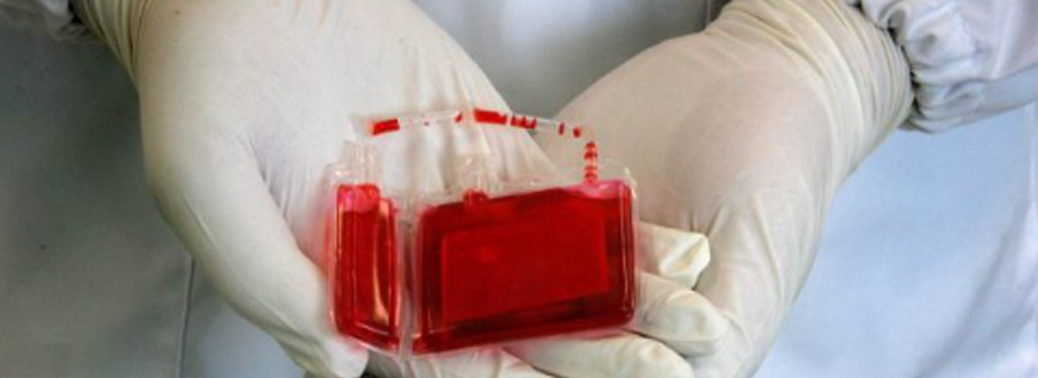
Why in News?
- Poona Citizen Doctor Forum (PCDF), a body that aims to rebuild trust among citizens and doctors, and promote ethical rational medical practice, has come forward to bust the aggressively promoted concept of cord blood banking
Highlights:
- The leading gynaecologist and activist Dr. Arun Gadre has warned to-be parents against falling prey to the emotional marketing tactics by stem cell banking companies.
- Over the past decade, stem cell banking has been aggressively marketed even as its use is still in experimental stages.
- But these companies charge enormous fees from parents to preserve cells, adding it is merely by emotional marketing that companies convince parents to bank the cells for several years promising future therapeutic use.
- Cord blood banking involves taking the umbilical cord blood, which is a rich source of stem cells, and preserving it for future use.
- Private companies who have forayed into this field offer packages anywhere between ₹50,000 and ₹1 lakhs to store and preserve the cells in right conditions.
Views by ICMR:
- However, the Indian Council of Medical Research (ICMR) does not recommend commercial stem cell banking.
- It says so far there is no scientific basis for preservation of cord blood for future self-use and this practice therefore raises ethical and social concerns.
- Private storage of the cord blood is advisable when there is an elder child in the family with a condition treatable with these cells and the mother is expecting the next baby.
- In other situations, parents should be educated about the limitations of banking at this point of time.
Concerns:
- Despite such guidelines, a nexus of doctors and stem cell banking companies thrives and these companies get access to data of to-be parents.
- Activists say stem cell banking companies start approaching their prospective customers much before the delivery and offer competitive packages.
- Cord Blood banking:
- Globally, cord blood banking is recommended as a source of hematopoietic stem cell (derived from bone marrow, peripheral blood, or umbilical cord blood) transplantation for hematological cancers and disorders where its use is recommended.
- For all other conditions, the use of cord blood as a source of stem cells is not yet established.

Cord Blood:
- Cord blood is the blood from the baby that is left in the umbilical cord and placenta after birth.
- It contains special cells called hematopoietic stem cells that can be used to treat some types of diseases.
Hematopoietic Stem Cells:
- Most cells can make copies only of themselves. For example, a skin cell only can make another skin cell.
- Hematopoietic stem cells, however, can mature into different types of blood cells in the body.
- Hematopoietic stem cells also are found in blood and bone marrow in adults and children.
- Hematopoietic stem cells can be used to treat more than 70 types of diseases, including diseases of the immune system, genetic disorders, neurologic disorders, and some forms of cancer, including Leukemia and Lymphoma.
- For some of these diseases, stem cells are the primary treatment. For others, treatment with stem cells may be used when other treatments have not worked or in experimental research programs.
Stem Cells:
- Stem cells are cells that can differentiate into other types of cells, and can also divide in self-renewal to produce more of the same type of stem cells.
Indian Council of Medical Research:
- The ICMR is the apex body in India for the formulation, coordination and promotion of biomedical research, and is one of the oldest and largest medical research bodies in the world.
- The ICMR is funded by the Government of India through the Department of Health Research, Ministry of Health and Family Welfare.
GOVERNMENT PLANS TO LAUNCH MAHUA-BASED ALCOHOLIC DRINK
11, Mar 2020
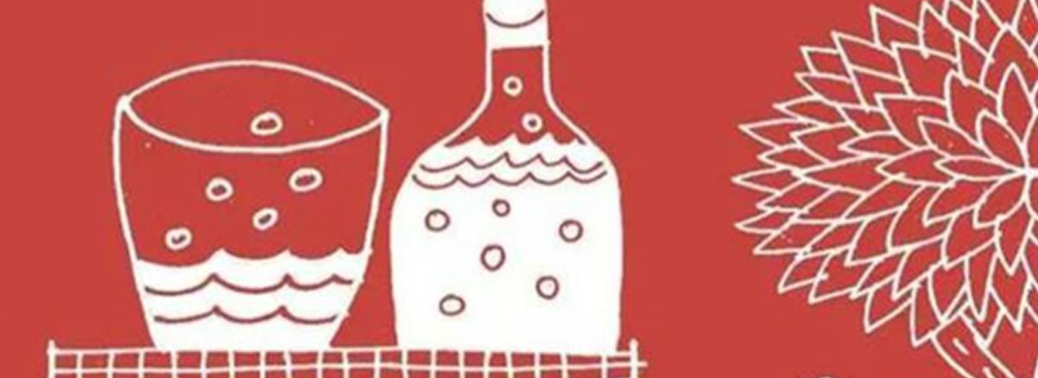
Why in News?
- The central government is set to launch a Mahua-based alcoholic beverage ‘Mahua Nutribeverage’ in the market for the first time.
- The beverage has a high nutritional value and relatively low alcohol content (5%). This is the first time that the Ministry of Tribal Affairs is getting into bottling and sale of alcoholic beverages.
Key Points:
- It has been developed by the Indian Institute of Technology (IIT) Delhi in collaboration with the Tribal Cooperative Marketing Development Federation of India (TRIFED).
- TRIFED has signed a memorandum with the National Research Development Corporation (NRDC) to undertake the assignment of technology transfer to the suitable entrepreneurs for production and marketing of the beverage.
- The marketing is being undertaken under the Van Dhan Vikas Karyakram.
- Besides mahua, other tribal staples such as tamarind and amla will be de-seeded and brought to the market in the form of candies and jams.
About Van Dhan Vikas Karyakram:
- It is Tribal Affairs Ministry’s value-addition scheme which was launched in Chhattisgarh’s Bijapur in 2018.
- The nation-wide programme earmarked ₹500-600 crore for training tribal clusters to add value to their produce and sell it in a packaged format, aiming to increase their income manifold.
- The products marketed under the scheme include only those that need primary-level processing, including handicrafts, textiles, food items, jams and pulps and jewellery.
About Mahua:
- It is a prominent forest tree in tribal areas Chhattisgarh and plays an important role in the Rural Economy.
- The mahua flowers are a rich source of sugars and are said to contain vitamins, minerals and calcium. The flowers are also fermented and distilled yielding spirituous liquor also known as ‘country beer’.
- An estimated 90% of the annual production of Mahua flower is used in the process of brewing beverages.
HINDU ADOPTION NOT VALID WITHOUT CONSENT FROM WIFE, SAYS SC
11, Mar 2020
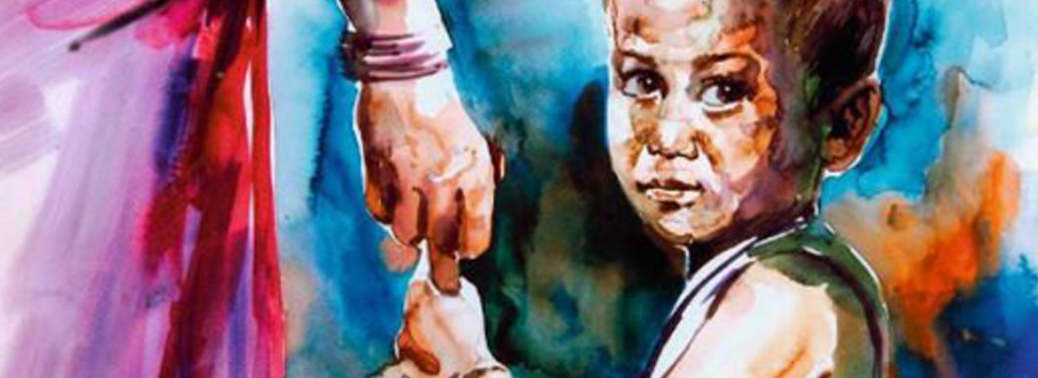
Why in News?
- The Supreme Court has recently held that the Hindu adoption is not valid unless the man takes prior consent from his wife and there is a “ceremony of giving and taking in adoption”.
About Hindu Adoptions and Maintenance Act:
- The Hindu Adoptions and Maintenance Act (HAMA) was established in the year 1956 as part of the Hindu Code Bills.
- This act extends to the whole of India except Jammu & Kashmir and applies to Hindus domiciled in our country.
- Hindu Adoptions and Maintenance Act was introduced to codify and standardize the current Hindu legal tradition.
- This act dealt specifically with the legal process of adopting children by a Hindu adult, and with the legal obligations of a Hindu to provide maintenance to various family members.
Applicability of Act:
- This act applies to any person who is domiciled in the territories
- A person who is a Hindu by religion in any of its forms or development, including the Virashaiva, a Lingayat or a follower of the Brahmo, Prarthana or Arya Samaj
- A person belongs to a Buddhist, Jain or Sikh can adopt a child
- A child legitimate or illegitimate whose parents are Hindus, Buddhists, Jains or Sikhs
- A child legitimate or illegitimate one of whose parents are Hindus, Buddhists, Jains or Sikhs and has been so brought up
- An abandoned child, legitimate or illegitimate of unknown parentage brought up as a Hindu, Buddhist, etc.; and
- A person who has been converted to the Hindu, Buddhist, Jain or Sikh religion.
Who can Adopt a Child?
- The person should be a Hindu
- The person has not been married, unless there is a custom or usage applicable to the parties which permit persons who are married being taken in adoption
- He or she has not already been adopted
- He or she has not completed the age of fifteen years, unless there is a custom or usage applicable to the parties which permit persons who have completed the age of fifteen years being taken in adoption
Mother’s Consent when not Necessary?
- If the father is alive, he alone has the right to give the child in adoption, but he must do so with the consent of the child’s mother, unless:
1.The mother has completely and finally renounced the world, or
2.Has ceased to be a Hindu, or
3.Has been declared to be of unsound mind by a court of competent jurisdiction
CATALOGUING THE GENETIC VARIATION IN INDIANS’ PROJECT
11, Mar 2020

Why in News?
- Genome India:‘Cataloguing the Genetic Variation in Indians’ project has been sanctioned by Department of Biotechnology (DBT) on January 16, 2020 for a period of 3 years to 20 institutions from varied disciplines across the country.
Highlights:
- The whole genome sequencing under Genome India has just started.
- The proposed target of Whole Genome Sequencing (WGS) is to do it for total 10,000 individuals representing the country’s diverse population in 3 years.
Rationale:
- The information generated from whole genome sequencing can facilitate future human genetics research in the country with greater precision, and to design a genome wide association array for the Indian population to develop precision healthcare and diagnostics for major diseases at affordable costs.
- The data security and sharing measures for this project will be governed by the rules and regulations formulated by Government of India.
De-identification:
- The personal information of all individuals consenting to participate in the study is stripped off from any further records in this project.
- This process of de-identification ensures that the personal information of the participants is not compromised.
- Additionally, ethical measures are strictly adhered to in order to maintain data security and protection.
Genome:
- A genome, is all the genetic matter in an organism.
- It is defined as an organism’s complete set of DNA, including all of its genes.
- Each genome contains all of the information needed to build and maintain that organism.
- In humans, a copy of the entire genome — more than 3 billion DNA base pairs — is contained in all cells that have a nucleus.
Human Genome Project (HGP):
- HGP was an international programme that led to the decoding of the entire human genome.
- It was a discovery looking to sequence and map all of the genes — together known as the genome — of members of our species.
- Beginning on October 1, 1990 and completed in April 2003, the HGP gave the ability, for the first time, to read nature’s complete genetic blueprint for building a human being.

Genome India Project:
- The project is being headed by the Indian Institute of Science, Bengaluru as the nodal point of about 20 institutions including a few IITs, each doing its bit in collecting samples, doing the computations, and then the research.
- Aim: To ultimately build a grid of the Indian reference genome, to understand fully the type and nature of diseases and traits that comprise the diverse Indian population.
- The mega project hopes to form a grid after collecting 10,000 samples in the first phase from across India, to arrive at a representative Indian genome.
- The Indian project will aim to vastly add to the available information on the human species and advance the cause, because of the scale of the Indian population and the vertical and horizontal diversity here.

Medical ethics:
- In a project that aims only to create a database of genetic information, gene modification is not among the stated objectives.
- The risks involved are misuse or unqualified access to the technology.
Data & Storage:
- After collection of the sample, anonymity of the data and questions of its possible use and misuse would need to be addressed.
- Keeping the data on a cloud is fraught with problems and would raise questions of ownership of the data.
- India is yet to pass a Data Privacy Bill with adequate safeguards.
- Launching a Genome India Project before the privacy question is settled could give rise to another set of problems.
- The question of heredity and racial purity has obsessed civilisations, and more scientific studies of genes and classifying them could reinforce stereotypes and allow for politics and history to acquire a racial twist.
Social Issues:
- In India a lot of politics is now on the lines of who are “indigenous” people and who are not. A Genome India Project could add a genetic dimension to the cauldron.
- It may also add to the existing problem of Selective Breeding.
AYURVEDIC CLASSIFICATION OF DISEASES
10, Mar 2020

Why in News?
- The Ministry of AYUSH has developed National Ayurveda Morbidity Codes (NAMC), a comprehensive classification of diseases described in Ayurveda as well as Standardized Ayurveda Terminologies.
NAMASTE Portal:
- These have been made available on National AYUSH Morbidity and Standardized Terminologies Electronic Portal (NAMASTE Portal) developed by the Ministry which is available to the public.
- The portal was launched by Prime Minister Narendra Modi on the occasion of 2nd Ayurveda Day (17thOctober 2017).
- The portal was developed and is being maintained by the Central Council for Research in Ayurvedic Sciences (CCRAS), the apex body for research in Ayurvedic Sciences, Ministry of AYUSH, Government of India.
- This portal has the potential to revolutionize morbidity statistics data collection and may have a huge impact on the future policy-making decision by bringing to light the contributions of various AYUSH systems in the health care delivery system of the country.
- The key features of the portal include the Morbidity Codes and Standardized Terminologies of all the AYUSH systems for unambiguous reporting, electronic data submission through individual institution login ids, and also an integrated electronic health records (EHR) system for detailed data collection for individual institutions.

Standardization and Quality Assurance:
- For standardization of Ayurvedic diagnostic and treatment protocol, the Central Council of Research in Ayurvedic Sciences (CCRAS) under Ministry of AYUSH has undertaken a project on Reliability testing and Validation of Ayurveda diagnostic methods in June 2018.
- Under this project, some common disease conditions have been identified and accordingly the pro forma and manual of selected disease conditions is being drafted and validated through scientific methods in a phased manner.
- In the first phase, the disease conditions which have been identified are Kushtha (skin diseases), Kasa, Shwasa and Jwara.
- The first draft of Kushtha (skin diseases) manual as clinical Series-I has been published and for other three disease conditions inter-rator reliability has already been completed and second phase validity is under consideration in collaboration with the academic institutes of national repute.
- Further, the development of pro forma of various other disease conditions has been initiated.
- Various clinical studies are also being conducted following the integrated protocol in a scientific manner.
NATIONAL CONFERENCE ON WOMEN IN POLICE AND CAPFS
10, Mar 2020
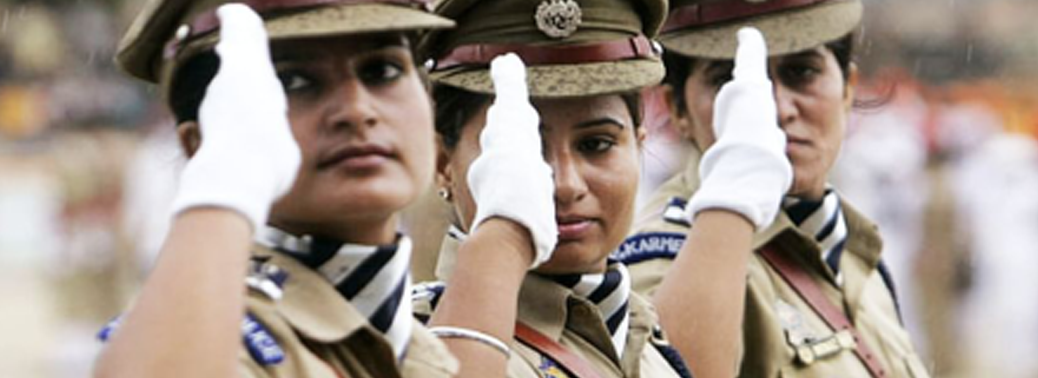
Why in News?
- Union Minister for Women and Child Development has recently inaugurated the “National Conference on Women in Police and Central Armed Police Forces (CAPFs)” which has been organised by Bureau of Police Research and Development (BPR&D).
Highlights of the Conference:
- The National Conference was to discuss and deliberate on the following two themes:
1.Cyber Stalking and Bullying of Women: Steps for Protection
2.Challenges faced by CAPF Women in Operational Areas
Few important issues related to women in Police which were highlighted during the Conference are:
1. Workplace harassment besides cyber crime.
2.Society should not look at the working women with bias and hold the performance of men to be the only benchmark for success.
3.Training of members of the Child Welfare Committees (CWC).
4.The need to train more female forensic investigators and cyber crime experts.
5.BPR&D was also advised to make a SoP for “One Stop Centre for Women”.
About BPR&D:
- The Government of India established the Bureau of Police Research and Development (BPR&D), under the Ministry of Home Affairs in the 1970s.
- It replaced the Police Research and Advisory Council (1966), with the primary objective of modernization of police force.
- In 1995 Government of India has entrusted Correctional Administration Work to the BPR&D. Thereby BPR&D has to ensure the implementation of prison reforms as well.
- The Government of India further decided to create a National Police Mission under the administrative control of BPR&D to transform the police forces in the country.
DEPOPULATION IN BORDER AREAS OF ARUNACHAL PRADESH
09, Mar 2020
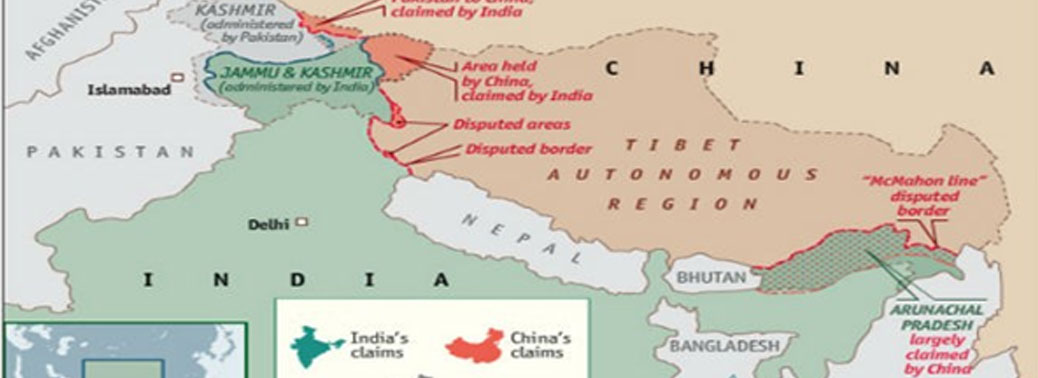
Why in News?
- The Arunachal Pradesh government has sought pilot development projects to stop people living along its international borders, specifically with China, from migrating to faraway urban centres in the State.
Key Points:
- McMahon Line is the boundary between India and China.
- Arunachal Pradesh shares its borders with China, Myanmar and Bhutan.
- There are several instances of intrusion by people from Tibet across the McMahon Line into districts of Arunachal Pradesh bordering China have been reported.
- Following the intrusion, the depopulation in border villages of Arunachal Pradesh have been observed. It is considered as a security threat, as it is easier for foreign armies to occupy vacant villages.
- Even though possible facilities are being provided to border villagers under the Border Area Development Programme, the state government of Arunachal Pradesh has advocated selection of 10 census towns along the India-China border as pilot projects for infrastructure development.
- The State government has also proposed a special package of ₹4.60 crores to the Union Home Ministry for development of infrastructure in the border areas.
- The above development is expected to dissuade people from migrating for livelihood.
About Border Area Development Programme:
- Border Area Development Programme (BADP) was started for balanced development of border areas of states bordering Pakistan, namely, Jammu & Kashmir, Punjab, Gujarat, and Rajasthan. It was subsequently extended to all the land borders.
- The programme is administered by the Department of Border Management of the Ministry of Home Affairs (MHA).
- States are provided a 100% non-lapsable Special Central Assistance fund under BADP to meet the special developmental needs and well-being of the people living in remote and inaccessible areas situated near the international border.
CABINET APPROVES COMPANIES (SECOND AMENDMENT) BILL, 2019
07, Mar 2020

Why in News?
- The Union Cabinet, chaired by the Prime Minister, Shri Narendra Modi has approved the Companies (Second Amendment) Bill, 2019 to amend the Companies Act, 2013.
Provisions of the Bill:
- The Bill would remove criminality under the Act in case of defaults which can be determined objectively and which, otherwise, lack the element of fraud or do not involve larger public interest.
- This would also lead to further de-clogging of the criminal justice system in the country.
- The Bill would also further ease of living for law abiding corporates.
- Earlier, the Companies (Amendment) Act, 2015 amended certain provisions of the Act to remove difficulties faced in implementation of various provisions of the Act.
- The major provisions of The Companies (Second Amendment) Ordinance, 2019:
Re-categorisation of certain Offences:
- The Ordinance re-categorizes 16 of these offences as civil defaults, where adjudicating officers may now levy penalties instead.
- These offences include: (i) issuance of shares at a discount, and, (ii) failure to file annual return.
Issue of shares at a discount:
- It prohibits a company from issuing shares at a discount, except in certain cases.
- The company is liable to pay a fine between one lakh rupees and five lakh rupees every officer in default may be punished with imprisonment up to six months or fine between one lakh rupees and five lakh rupees on failure.
- Ordinance changes this to remove imprisonment for officers as a punishment.
Commencement of Business:
- A company may not commence business, unless
- It files a declaration within 180 days of incorporation, confirming that every subscriber to the Memorandum of the company has paid the value of shares agreed to be taken by him.
- It files a verification of its registered office address with the Registrar of Companies within 30 days of incorporation.
Registration of Charges:
- The Ordinance changes this to permit registration of charges:
- within 300 days if the charge is created before the Ordinance, if not then it must be completed within six months from the date of the Ordinance, if not then the Registrar may grant another 60 days for registration.
Change in Approving Authority:
- Change in period of financial year for a company associated with a foreign company, has to be approved by the have been transferred to central government.
- Similarly, any alteration in the incorporation document of a public company which has the effect of converting it to a private company, has to be approved by central government.
Declaration of Beneficial Ownership:
- If a person holds beneficial interest of at least 25% shares in a company or exercises significant influence or control over the company, he is required to make a declaration of his interest.
- Failure to declare this interest, a person may either be fined, or imprisoned for up to one year, or both under the Ordinance.
Compounding:
- Under the Act, a regional director can compound (settle) offences with a penalty of up to five lakh rupees.
- The Ordinance increases this ceiling to Rs 25 lakh.
QS WORLD UNIVERSITY SUBJECT RANKINGS 2020
06, Mar 2020
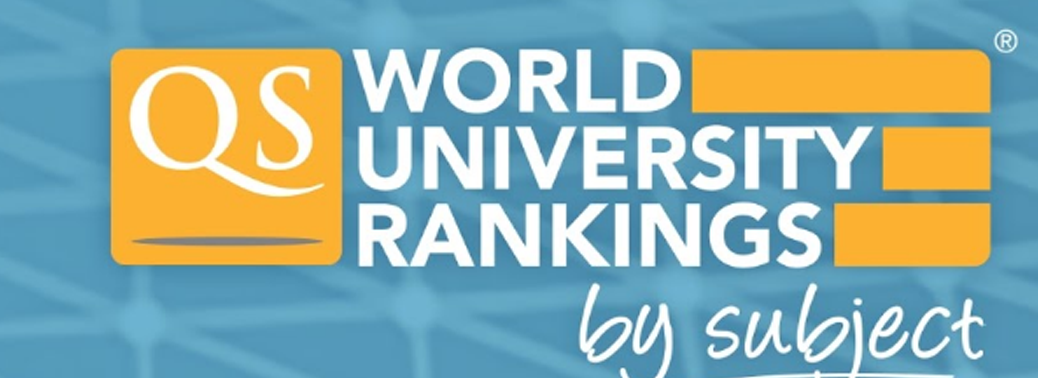
Why in News?
- The Quacquarelli Symonds (QS) World University Subject Rankings 2020 has been released recently by Quacquarelli Symonds (London). Quacquarelli Symonds is the world’s leading provider of services, analytics, and insight to the global higher education sector.
About the Rankings:
- QS uses four key metrics to compile the rankings including academic reputation, employer reputation, citations per paper and the h-index which measures how productive an institution’s research faculty are.
- 1,368 institutions have been ranked across 48 subjects in 5 broad categories across 159 locations.
- Top Rankers: Globally, Massachusetts Institute of Technology (MIT – USA) emerged as the world’s best-performing institution, achieving 12 number-one positions, followed by Harvard University (USA) with 11 number-one positions and University of Oxford (United Kingdom) with eight top ranked subjects.
India’s Performance as per the Index:
- The 2020 edition of the QS World University Subject Rankings has ranked as many as 26 departments of higher education institutions in India among the top 100 in the world in their respective subject category.
- As against 21 institutions getting ranked in 2019, the latest edition has seen 26 Indian departments entering the top-100 list for their subjects. All 26 departments are in institutions run by the Union government — IITs, IIMs, IISc and Delhi University.
- In terms of institutes and subjects, India’s highest-ranked programs included Indian Institute of Technology (IIT) Bombay’s Mineral & Mining Engineering program at 41st rank globally, shared jointly with the University of Delhi’s Development Studies program.
- IIT Bombay emerged with more top-100 ranks than any other Indian university in QS World University Rankings by Subject 2020.
PRIME MINISTER’S EMPLOYMENT GENERATION PROGRAMME
04, Mar 2020
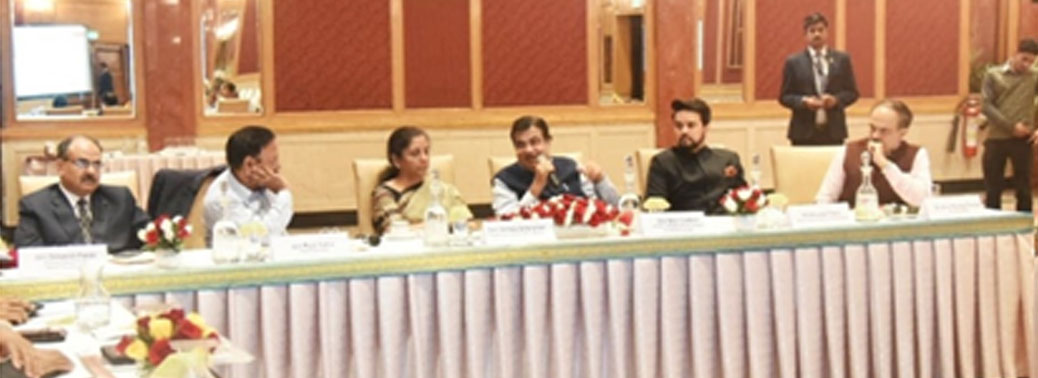
Why in News?
- A Meeting was held recently to review some of the key schemes of Ministry of Micro, Small and medium Enterprises (MSME) which generate large number of jobs with low capital investment.
Highlights:
- The focus of the meeting was on the Prime Minister’s Employment Generation Programme (PMEGP), a flagship scheme of the Ministry of MSME, and Credit Guarantee Fund Trust for Micro and Small Enterprises (CGTMSE).
- In addition, the issue of restructuring of stressed loans to MSMEs was also discussed to find a way forward to support MSMEs. The cut-off date for restructuring of loans to MSMEs has been extended up to 31st December 2020.
- The work done by the Banks in supporting setting up large number of enterprises under PMEGP over the past years, was commended, which has particularly seen a two-fold increase in last Financial Year when more than 73,000 micro enterprises were assisted.
- To give further boost to the scheme, the target in the current year has been increased to support the establishments of 80,000 units.
- Discussions were also held with Banks on increasing the reach of Credit Guarantee scheme. Government has set a target of increasing credit guarantee to Rs. 50,000 crores under this scheme, which is a jump of about 67% over the last year.
Prime Minister’s Employment Generation Programme:
- Prime Minister’s Employment Generation Programme (PMEGP) is a credit-linked subsidy programme introduced by the government of India in 2008.
- It promotes self-employment through setting up of micro enterprises, where subsidy up to 35 % is provided by the Government through Ministry of MSME for loans up to Rs. 25 lakhs in manufacturing and Rs 10 lakhs in service sector.
- The scheme is administered by Ministry of Micro, Small and medium Enterprises.
- The PMEGP Scheme is being implemented by Khadi and Village Industries Commission (KVIC) at the national level.
- At the State level, the Scheme is being implemented through State Khadi and Village Industries Commission Directorates, State Khadi and Village Industries Boards and District Industries Centres and banks.

Credit Guarantee Fund Trust for Micro and Small Enterprises (CGTMSE):
- The scheme was launched by the Government of India to make available collateral-free credit to the micro and small enterprise sector.
- Both the existing and the new enterprises are eligible to be covered under the scheme.
- The Ministry of Micro, Small and Medium Enterprises, GoI and Small Industries Development Bank of India (SIDBI), established a Trust named CGTMSE to implement the Credit Guarantee Fund Scheme for Micro and Small Enterprises.
- Since its inception, CGTMSE has facilitated easy access to credit from organized banking sector to first generation entrepreneurs in the Micro and Small Enterprises (MSE) sector.
- CGTMSE, in turn, provides guarantee to its registered Member Lending Institutions (MLIs) against the loans / credit facilities up to Rs. 100 lakh extended by them without taking any collateral security and / or third party guarantee.

INNER LINE PERMIT
03, Mar 2020
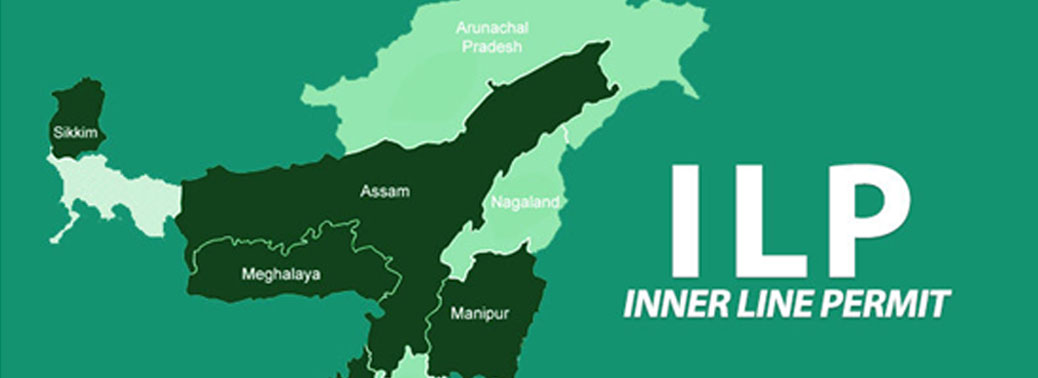
Why in News?
- The demand by Tribal organisations of Meghalaya for ILP system to restrict the entry of outsiders into the State has turned into violent protests across the state in the past few days.
What is an ILP?
- It is a document required by non- natives to visit or stay in a state that is protected under the ILP system.
- At present, four North Eastern states are covered under ILP namely, Arunachal Pradesh, Mizoram, Manipur and Nagaland.
- Both the duration of stay and the areas allowed to be accessed for any non-native are determined by the ILP.
- The ILP is issued by the concerned state government and can be availed both by applying online and in person.

Evolution of ILP:
- The Inner Line Permit is an extension of the Bengal Eastern Frontier Regulation Act 1873. The Britishers framed regulations restricting entry in certain designated areas.
- This was done to protect the Crown’s interest in certain states by preventing “British subjects” (Indians) from trading within these regions.
- In 1950, the term ‘British subjects’was replaced with the ‘Citizens of India’. Today, all non-natives require the permit. This was done to protect the indigenous tribal communities of these states from exploitation.
Is the rule applicable for Foreigners?
- An ILP is only valid for domestic tourists. For foreign tourists in:
- Manipur:No permit is required. But, have to register themselves.
- Mizoram:No permit is required. But, need to register.
- Nagaland:No permit is required. However, they need to register.
- Arunachal Pradesh:Tourists need a Protected Area Permit (PAP) or Restricted Area Permit (RAP) from the Ministry of Home Affairs, Government of India.
What is the significance of ILP?
- Preservation of indigenous culture and tradition.
- Prevents illegal migrants and encroachment by outsiders.
Should Meghalaya be brought under ILP?
- The ILP is considered the only mechanism to contain influx in the state. Influx is perceived as dangerous because it could upset the fragile demographic balance of the tribals of Meghalaya.
- Influx definitely is a matter of concern but it requires better solutions than the ILP, not instant solutions demanded by pressure groups.
ZONAL COUNCILS
02, Mar 2020
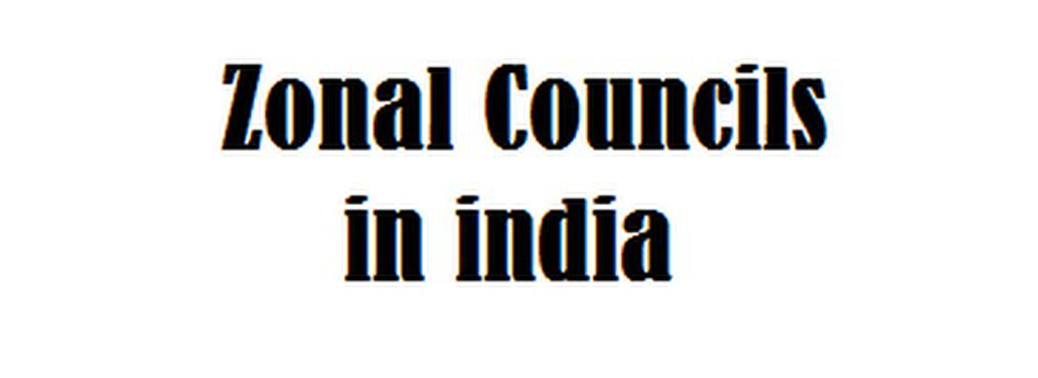
Why in News?
- Union Home Minister Amit Shah will chair the 24thmeeting of the Eastern Zonal Council, comprising States of Bihar, Jharkhand, Odisha and West Bengal, scheduled to be held in Bhubaneswar.

Highlights:
- Issues such as inter-State water dispute, power transmission, coal royalty, forest clearance for railway and other infrastructure projects and extension of banking and telecom services in rural pockets will figure in the discussion.
- Zonal Councils are advisory councils and are made up of the states of India that have been grouped into five zones to foster cooperation among them. These were set up vide Part-III of the States Reorganisation Act, 1956.
- The North Eastern states are not covered by any of the Zonal Councils and their special problems are addressed by another statutory body, the North Eastern Council, created by the North Eastern Council Act, 1971.
Various Zonal Councils:
- The Northern Zonal Council, comprising the States of Haryana, Himachal Pradesh, Jammu & Kashmir, Punjab, Rajasthan, National Capital Territory of Delhi and Union Territory of Chandigarh;
- The Central Zonal Council, comprising the States of Chhattisgarh, Uttarakhand, Uttar Pradesh and Madhya Pradesh;
- The Eastern Zonal Council, comprising the States of Bihar, Jharkhand, Orissa, Sikkim and West Bengal;
- The Western Zonal Council, comprising the States of Goa, Gujarat, Maharashtra and the Union Territories of Daman & Diu and Dadra & Nagar Haveli;
- The Southern Zonal Council, comprising the States of Andhra Pradesh, Karnataka, Kerala, Tamil Nadu and the Union Territory of Puducherry.
Structure:
- Chairman – The Union Home Minister is the Chairman of each of these Councils.
- Vice Chairman – The Chief Ministers of the States included in each zone act as Vice-Chairman of the Zonal Council for that zone by rotation, each holding office for a period of one year at a time.
- Members- Chief Minister and two other Ministers as nominated by the Governor from each of the States and two members from Union Territories included in the zone.
- Advisers- One person nominated by the Planning Commission for each of the Zonal Councils, Chief Secretaries and another officer/Development Commissioner nominated by each of the States included in the Zone.
- Union Ministers are also invited to participate in the meetings of Zonal Councils depending upon necessity.
Objectives and Functions:
- The main objectives of setting up of Zonal Councils are as under:
- Bringing out National Integration;
- Arresting the growth of acute State consciousness, regionalism, linguism and particularistic tendencies;
- Enabling the Centre and the States to co-operate and exchange ideas and experiences;
- Establishing a climate of co-operation amongst the States for successful and speedy execution of development projects.
- In particular, a Zonal Council may discuss, and make recommendations with regard to:
- any matter of common interest in the field of economic and social planning;
- any matter concerning border disputes, linguistic minorities or inter-State transport;
- any matter connected with or arising out of, the re-organization of the States under the States Reorganisation Act.
POLICE AND PUBLIC ORDER IN NCT DELHI
28, Feb 2020

Why in News?
- The Delhi High Court has issued a series of directions to the Delhi police, the State government and other agencies for providing all necessary assistance to those affected by the violence in northeast Delhi.
What is the Issue?
- A key question now being raised is whether or not the government of the National Capital Territory of Delhi can take any action to bring law and order under control.
- The NCT of Delhi, under Article 239 AA, has been given a special status.
- It gives powers of law-making and administration to an elected legislature and the council of ministers. But, puts two subjects — public order and police— directly under the Union government, however, with exceptions- Two sections of Criminal Procedure Code (CrPC) —129 & 130 — give the Executive Magistrate certain powers relating to “unlawful assembly”.
- Under these two limited powers, the Executive Magistrate, who reports to the Chief Minister, can issue orders relating to public security.
What does CrPC 129 and 130 says?
- If a group is found in unlawful assembly under Section 129 CrPC, the Executive Magistrate can issue orders to these persons to disperse. If this fails, the magistrate can use the civil force — which is the police.
- If efforts under CrPC section 129 fail, the Executive Magistrate, under Section 130 CrPC, can call an officer of the armed forces of the Union to disperse the assembly. This section states that it can be invoked for “public security”.
- However, this Section empowers the officer to decide, on his own, the manner in which the unlawful assembly has to be dispersed by forces under his command.
How are these Powers Different from the powers of a Full-Fledged state?
- While public order and police are under the state list, the state government may request the Union government to make available armed forces to help restore public order.
- Even in circumstances where public disorder is not as serious as to fall in the category of an “internal disturbance” as defined in Article 355 of the Constitution, the Union Government may accede to the request.
- But, as per CrPC 130, except for the limited purpose of dispersing an “unlawful assembly” and arresting its members, neither the state government nor any authority under it has been conferred by the Constitution any legal right to call the armed forces while dealing with a public disorder or “internal disturbance”.
- Also, the Seventh Schedule of the Constitution states that use of the armed forces in the maintenance of public order is outside the purview of the states.
WAYS TO MEASURE POVERTY IN INDIA
27, Feb 2020
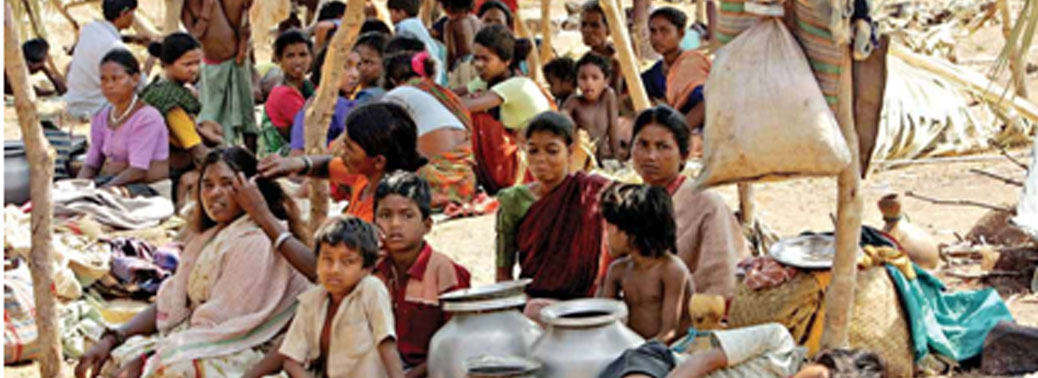
Why in News?
- President Donald Trump praised India for having lifted over 270 million people out of poverty in a single decade, and said that “12 Indian citizens are lifted out of extreme poverty every single minute of every single day”.
Highlights:
- Poverty can be defined as a condition in which an individual or household lacks the financial resources to afford a basic minimum standard of living.
- The official poverty line is the expenditure incurred to obtain the goods in a “poverty line basket” (PLB). Poverty can be measured in terms of the number of people living below this line (with the incidence of poverty expressed as the head count ratio). The “depth” of poverty indicates how far the poor are below the poverty line.
- Six official committees have so far estimated the number of people living in poverty in India, the working group of 1962; V N Dandekar and N Rath in 1971; Y K Alagh in 1979; D T Lakdawala in 1993; Suresh Tendulkar in 2009; and C Rangarajan in 2014.
- The government did not take a call on the report of the Rangarajan Committee and therefore, poverty is measured using the Tendulkar poverty line. As per this, 21.9% of people in India live below the poverty line.
- The PLB comprises goods and services considered essential to a basic minimum standard of living, food, clothing, rent, conveyance, and entertainment.
- The price of the food component can be estimated using calorie norms or nutrition targets. Until the 1990s, the calorie norms method was used — it was based on the minimum number of calories recommended by the Indian Council of Medical Research (ICMR) for a household of five members.
- The Lakdawala Committee assumed that health and education is provided by the state, therefore, expenditure on these items was excluded from the consumption basket it proposed.
- Since expenditure on health and education rose significantly in the 1990s, the Tendulkar Committee included them in the basket. As a result of revisions to the basket and other changes in the method of estimation, the percentage of people living below the poverty line in 1993-94 rose from 35.97% to 45.3%.
- Expenditure on health and education were not considered until the Tendulkar Committee, which was criticized for setting the poverty line at just Rs 32 per capita per day in urban India (and at Rs 27 in rural India).
- The Rangarajan Commission was criticized for selecting the food component arbitrarily, the emphasis on food as a source of nutrition overlooks the contribution of sanitation, healthcare, access to clean water, and prevalence of pollutants.

Importance of Poverty Estimation:
- Poverty numbers matter because central schemes like Antyodaya Anna Yojana (which provides subsidided foodgrains to households living below the poverty line) and Rashtriya Swasthya Bima Yojana (health insurance for BPL households) use the definition of poverty given by the NITI Aayog or the erstwhile Planning Commission.
- The Centre allocates funds for these schemes to states based on the numbers of their poor. Errors of exclusion can deprive eligible households of benefits.
Other methods of estimation of Poverty:
- Oxford University researchers Sabina Alkire and James Foster devised the multidimensional poverty index (MPI) to capture poverty using 10 indicators: nutrition, child mortality, years of schooling, school attendance, ownership of assets, and access to proper house, electricity, drinking water, sanitation, and clean cooking fuel.
- The MPI is a more comprehensive measure of poverty because it includes components that capture the standard of living more effectively.
- It uses “outcomes” rather than expenditure, the presence of an undernourished person in the household will result in it being classified as “poor”, regardless of the expenditure on nutritious food.
CAUVERY WATER MANAGEMENT AUTHORITY (CWMA)
27, Feb 2020
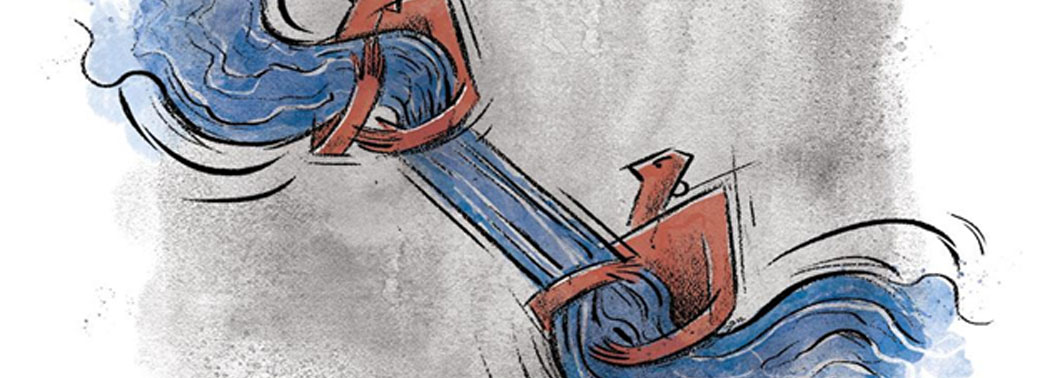
Why in News?
- Recently, the CWMA dropped the discussion on Karnataka’s application due to the strong objection made by Tamil Nadu and Puducherry.
What is Mekedatu Project?
- It is a multi-purpose reservoir project over Mekedatu, was aimed at solving the drinking water problems of Bengaluru and Ramnagar district. It was also touted as one that could generate hydroelectricity to meet the power demand in the state.
Why does Karnataka want this?
- Karnataka has been contending that there is a need to augment capacity to store excess water in monsoon surplus years.
- The recent heavy rain and floods resulted in Karnataka releasing excess water from the Cauvery to Tamil Nadu, which led to the State intensifying its efforts to build the Mekedatu reservoir.
- The excess water is of no use even to Tamil Nadu as it would run off into the sea.
- Water minister of Karnataka maintained that the project would not affect water release to Tamil Nadu, nor would it be used for irrigation.
Why is Tamil Nadu opposing it?
- The state contended that, “the proposed reservoir would affect the natural flows of the river Cauvery. It argued that Cauvery was already a deficit basin and the construction of the project, or any other project, “would drastically affect the lower riparian State in getting their due share of waters.
- The state fears that Karnataka’s move will affect the lifeline for agriculture in delta districts, besides being a major drinking water source for several districts.
- Farmers’ organizations fear this could turn the fertile Cauvery delta into a desert.
About CWMA:
- It has been created as per the Cauvery Water Management Scheme earlier framed by Centre and approved by Supreme Court.
Composition and Powers of CWMA:
- It will comprise a chairman, a secretary and eight members. Out of the eight members, two will be full time, while two will be part time members from centre’s side. Rest four will be part time members from states.
Functions of CWMA:
- The main mandate of the CWMA will be to secure implementation and compliance of the Supreme Court’s order in relation to “storage, apportionment, regulation and control of Cauvery waters”.
- It will also advise the states to take suitable measures to improve water use efficiency.
- It will do so by promoting use of micro-irrigation, change in cropping patterns, improved farm practices and development of command areas.
- It will also prepare an annual report covering its activities during the preceding year.
Participation of Central Government in CWMA:
- The central government will provide help in implementation of the modified award in case of any of the states (Tamil Nadu, Kerala, Karnataka) or UT (Puducherry) parties do not cooperate in implementing the decision or direction of the tribunal. Centre initially contribute Rs. 2 crores for the functioning of the authority.
CABINET APPROVES BILL TO REGULATE SURROGACY
27, Feb 2020

Why in News?
- The Union Cabinet recently approved the Surrogacy (Regulation) Bill, 2020, allowing a “willing” woman to be a surrogate mother.
- It also proposed that the Bill would benefit widows and divorced women besides infertile Indian couples.
Provisions of the Bill:
What is prohibited?
- The Bill prohibits commercial surrogacy, but allows altruistic surrogacy.
- Altruistic surrogacyinvolves no monetary compensation to the surrogate mother other than the medical expenses and insurance coverage during the pregnancy.
- Commercial surrogacyincludes surrogacy or its related procedures undertaken for a monetary benefit or reward (in cash or kind) exceeding the basic medical expenses and insurance coverage.
When Surrogacy is Permitted?
- Surrogacy is permitted when it is:
- for intending couples who suffer from proven infertility;
- altruistic;
- not for commercial purposes;
- not for producing children for sale, prostitution or other forms of exploitation; and
- for any condition or disease specified through regulations.
- The intending couple should have a ‘certificate of essentiality’and a ‘certificate of eligibility’ issued by the appropriate authority.
When the Certificate is Issued?
- A certificate of essentiality will be issued upon fulfilment of the following conditions:
- a certificate of proven infertility of one or both members of the intending couple from a District Medical Board;
- an order of parentage and custody of the surrogate child passed by a Magistrate’s court; and Insurance coverage for a period of 16 months covering postpartum delivery complications for the surrogate.
- The certificate of eligibility to the intending couple is issued upon fulfilment of the following conditions:
- the couple being Indian citizens and married for at least five years;
- between 23 to 50 years old (wife) and 26 to 55 years old (husband);
- they do not have any surviving child (biological, adopted or surrogate); this would not include a child who is mentally or physically challenged or suffers from life threatening disorder or fatal illness; and
- Other conditions that may be specified by regulations.
What are the Eligibility Criteria for Surrogate Mother?
- To obtain a certificate of eligibility from the appropriate authority, the surrogate mother has to be:
- a close relative of the intending couple;
- a married woman having a child of her own;
- 25 to 35 years old;
- a surrogate only once in her lifetime; and
- Possess a certificate of medical and psychological fitness for surrogacy. Further, the surrogate mother cannot provide her own gametes for surrogacy.
What is the function of Appropriate Authorities?
- The central and state governments shall appoint one or more appropriate authorities within 90 days of the Bill becoming an Act.
- The functions of the appropriate authority include;
- granting, suspending or cancelling registration of surrogacy clinics;
- enforcing standards for surrogacy clinics;
- investigating and taking action against breach of the provisions of the Bill;
- Recommending modifications to the rules and regulations.
- Surrogacy clinics cannot undertake surrogacy related procedures unless they are registered by the appropriate authority.
- Clinics must apply for registration within a period of 60 days from the date of appointment of the appropriate authority.
What is the function of the Surrogacy Boards?
- The central and the state governments shall constitute the National Surrogacy Board (NSB) and the State Surrogacy Boards (SSB), respectively.
- Functions of the NSB include, (i) advising the central government on policy matters relating to surrogacy; (ii) laying down the code of conduct of surrogacy clinics; and (iii) supervising the functioning of SSBs.
What is the procedure for the Parentage and Abortion of Surrogate Child?
- A child born out of a surrogacy procedure will be deemed to be the biological child of the intending couple.
- An abortion of the surrogate child requires the written consent of the surrogate mother and the authorisation of the appropriate authority.
- This authorisation must be compliant with the Medical Termination of Pregnancy Act, 1971.
- Further, the surrogate mother will have an option to withdraw from surrogacy before the embryo is implanted in her womb.
What are the Offences and Penalties?
- The offences under the Bill include:
- undertaking or advertising commercial surrogacy;
- exploiting the surrogate mother;
- abandoning, exploiting or disowning a surrogate child; and
- Selling or importing human embryo or gametes for surrogacy.
- The penalty for such offences is imprisonment up to 10 years and a fine up to 10 lakh rupees.
- The Bill specifies a range of offences and penalties for other contraventions of the provisions of the Bill.
What are the recommendations of the Rajya Sabha Select committee?
- The major changes recommended by the Committee include
- It recommended that a surrogate mother need not be a “close relative”.
- It also advocated omission of the five-year time limit before seeking surrogacy.
- allowing single women (widow or a divorcee and Persons of Indian Origin) to avail of surrogacy,
- Increasing insurance cover for the surrogate mother from the 16 months proposed in the Bill to 36 months.
Why such recommendations were given?
- Requiring the surrogate mother to be a “close relative” potentially restricts the availability of surrogate mothers, affecting genuinely needy persons.
- Deleting the definition of “infertility” as “the inability to conceive after five years of unprotected intercourse” is because it is too long a period for a couple to wait for a child.
- However the Surrogacy (Regulation) Bill, 2019 is yet to be passed by the Rajya Sabha.
H1N1 INFECTION OF SUPREME COURT JUDGES
26, Feb 2020

Why in News?
- Five judges of the Supreme Court of India have been affected by Swine Flu which is caused by the H1N1 virus.

Highlights:
- In order to prevent the further spread of the virus, many measures have been taken by the Ministry of Health & Family Welfare, Government of India:
- The First Aid Post (FAP) of CGHS (Central Government Health Scheme) was strengthened at the Supreme Court
- All the judges were provided treatment as per the protocol. Prophylactic treatment was also given to all who have come in contact with them including their family members.
- All five judges were kept in home isolation. Of these, three Judges have already resumed their duty and two continue to be under home isolation/observation and are recovering.
- The courtrooms and residences are being sanitised.
- Awareness information regarding preventive measures was disseminated to all concerned.
- H1N1 is a seasonal infection which usually occurs every year with two peaks (One in January to March and other between July and September).
Swine Flu (H1N1):
- Swine influenza, also called pig influenza, swine flu, hog flu and pig flu, is an infection caused by any one of several types of swine influenza viruses. Swine influenza virus is any strain of the influenza family of viruses that is endemic in pigs.
- Influenza A (H1N1) virus is the subtype of influenza A virus that is the most common cause of human influenza.
- It is an orthomyxovirus that contains the glycoproteins haemagglutinin and neuraminidase. For this reason, they are described as H1N1, H1N2 etc. depending on the type of H or N antigens they express with metabolic synergy. Haemagglutinin causes red blood cells to clump together and binds the virus to the infected cell. Neuraminidase is a type of glycoside hydrolase enzyme which helps to move the virus particles through the infected cell and assist in budding from the host cells.
- Some strains of H1N1 are endemic in humans and cause a small fraction of all influenza-like illness and a small fraction of all seasonal influenza. Other strains of H1N1 are endemic in pigs (swine influenza) and in birds (avian influenza).
- H1N1 influenza (or swine flu) is a highly contagious acute respiratory disease of pigs caused by type A influenza virus that regularly causes outbreaks of influenza in pigs. Swine flu viruses do not normally infect humans. However, sporadic human infections with swine flu have occurred.
- Most commonly, these cases occur in people with direct exposure to pigs (e.g., children near pigs at a fair or workers in the swine industry). However, there have been cases of human-to-human spread of swine flu.
NOT FAIR, JUST OR REASONABLE
26, Feb 2020

Why in News?
- Numerous political leaders and activists have been arrested in the state of Jammu and Kashmir in the name of Public safety.
- Here this article highlights the lack of procedural fairness with various Preventive Detention Laws in India including Jammu and Kashmir Public Safety Act, 1968.
About Jammu & Kashmir Public Safety Act, 1978
- The Jammu & Kashmir Public Safety Act, 1978 is a preventive detention law and constitutional protection provided under Article 22 shall not apply to those charged under PSA.
- Detention orders under the Act can be passed by Divisional Commissioners or District Magistrate if they are satisfied that any person
- May hamper or obstruct security of the state
- Disturb the maintenance of Public Order
- To prevent instances of smuggling or helping to smuggle timber or liquor in the state.
- is a foreigner within the meaning of the Foreigners Act
What happens after a person is charged under PSA?
- The DM communicates to the person within five to ten days in writing the reason for the detention and becomes the only formal communication.
- This communication is important because it is on the basis of it that the detained person gets an opportunity of making legal representation against the order in High Courts or Supreme Court under Article 226 and 32 respectively.
- However, the DM also has the discretion not to disclose all the facts pertaining to detention, if according to the officer such facts are against “public interest”.
- The District Magistrate can call the person charged under PSA to record his statement but legal representation through a lawyer is not allowed.
Referring of Case to Advisory Board:
- The DM has to place the detention order within four weeks before an Advisory Board including representation if any made by the person detained under PSA.
- The Advisory Board may call the person charged under PSA for personal representation to record his/her statement. However, legal representation by another lawyer before Advisory Board is not allowed.
- Within Six Weeks from the date of detention, the Advisory Board shall submit its report to the government, which will determine if the detention is in public interest.
Decision of Advisory Board:
- The Board may either allow for further detention or allow for release of the person concerned whereby the Government shall revoke the detention order.
- In case, the Advisory Board calls for further detention, the state government can detain for a maximum of
- 2 years– if accused was detained to obstruct Security of the State and
- 1 year– if the accused was detained to disturb Public Order.
- Decisions of the Advisory Board shall be binding on the State Government
Need for Preventive Detention Laws:
- Preventive detention laws exist at both the national and State levels and are intended to serve as effective measures to prevent the occurrence of crime.
- These different laws adopt a similar logic as under these laws, executive officers such as District Magistrates or Commissioners of Police are empowered to pass orders for arrest and to take persons into custody.
- These powers can be exercised if the officers are “satisfied” that the person’s conduct is posing a risk to safety and security of state or might hamper public order.
- For instance, the National Security Act of 1980 permits arrest and detention of persons when it is in the interest of maintaining “public order”, which can occur even without any allegations of the person breaking any existing laws.
- Similarly people can be detained under J&K PSA if in the opinion of DM or Divisional Commissioners they are a threat to security of state or they can disturb public order.
Lack of Procedural Fairness:
- Such laws avoid criminal trial like other regular criminal proceedings because for criminal trials you need to inform the accused of the grounds of crime.
- Under preventive detention laws, there is no need to inform the accused immediately of grounds of arrest.
- Arrested person need not be produced before Court within 24 hours as per normal norms.
- Subsequent checks and scrutiny is heavily guarded by state authorities and chances of unfairness in such proceedings are very high.
- There is no judicial oversight where detention beyond three months is not sought. And even in those cases which go to a Tribunal comprising judges, there is no public hearing involved and no guaranteed oral hearing for the person detained.
- Further, no publicly available orders or judgments are published about the ultimate decision.
- Even legal assistance is somewhat restrained and this goes against the basic human rights of person detained under preventive detention laws.
- The only opportunity lies in filing writ petitions in High Court or Supreme Court for release of person.
- At times, preventive detention laws are used to cover normal crimes as this largely reduces the legal assistance of detainees.
Conclusion:
- This article concludes by saying that the procedures of preventive detention laws in India practically sacrifice due process interests at the altar of crime control, and this bargain is ill-suited to justice, no matter how grave the risks.
- The government should think towards making certain changes in preventing detention laws making it less draconian and providing for human rights of the accused.
- Right of Legal Representation through a lawyer of detainee’s choice must be provided in PSA.
- It must be ensured that parallel proceedings are not initiated under preventing detention laws and regular criminal proceedings. The law must ensure that if charges have been framed under PSA, then regular criminal charges must be either withdrawn or transferred under PSA.
- It must be ensured that if writ petition is accepted by High Court or Supreme Court against detention of a person under preventing detention laws, such writ petition must be entertained within a period of 15 days. This will expedite the legal process providing for bail.
1 YEAR OF PRADHAN MANTRI KISAN SAMMAN NIDHI (PM-KISAN) SCHEME
26, Feb 2020
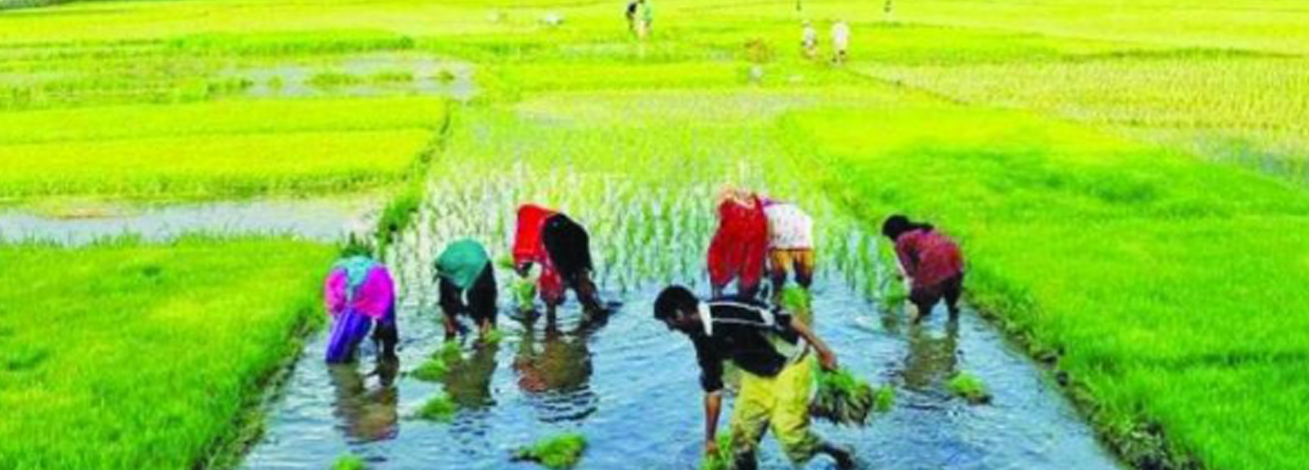
Why in News?
- The Ministry of Agriculture & Farmers’ Welfare observed the 1st anniversary of the Pradhan Mantri Kisan Samman Nidhi (PM-KISAN) Scheme on 24th February.
- The PM-KISAN was launched on February 24 in 2019.
About PM-KISAN Scheme:
- Pradhan Mantri Kisan Samman Nidhi (PM-KISAN) is a Central Sector Scheme with 100% funding from the Government of India.
- It is being implemented by the Ministry of Agriculture and Farmer’s Welfare.
- Vulnerable landholding farmer families, having cultivable land upto 2 hectares, will be provided direct income support at the rate of Rs 6,000 per year.
- Income support will be transferred directly into the bank accounts of beneficiary farmers, in three equal instalments of Rs 2,000 each.
- All states are implementing the scheme, except West Bengal.
- It intends to supplement the financial needs of the Small and Marginal Farmers (SMFs) in procuring various inputs to ensure proper crop health and appropriate yields, commensurate with the anticipated farm income at the end of each crop cycle.
- The entire responsibility of identification of beneficiary farmer families rests with the State / UT Governments.
PM-KISAN Mobile App:
- It was developed and designed by the National Informatics Centre in collaboration with the Ministry of Electronics and Information Technology.
- The farmers can view the status of their application, update or carry out corrections of their Aadhaar cards and also check the history of credits to their bank accounts.
Other Important Income Support Schemes for Farmers:
-
1. Rythu Bandhu scheme (Telangana)/Farmers’ Investment Support Scheme (FISS).
- It is a welfare program to support farmer’s investment for two crops a year.
- The government is providing 58.33 lakh farmers, ?4000 per acre per season to support the farm investment, twice a year, for rabi and kharif seasons.
- This was the first direct farmer investment support scheme in India, where the cash is paid directly.
- State Government of Odisha aims to lend farmers with an all-inclusive and flexible support system, ensuring accelerated agricultural prosperity.
- It will cover 92% of the small and marginal farmers of the State. An amount of Rs.10,000 per family at the rate of 5,000 for Kharif and Rabi shall be provided as financial assistance for taking up cultivation.
- The farmers will have complete independence to take up interventions as per their needs.
- This component is not linked to extent of land owned and will greatly benefit share croppers and actual cultivators most of whom own very small extent of land.
2. Krushak Assistance for Livelihood and Income Augmentation (KALIA):
HAPPINESS CLASSES
25, Feb 2020
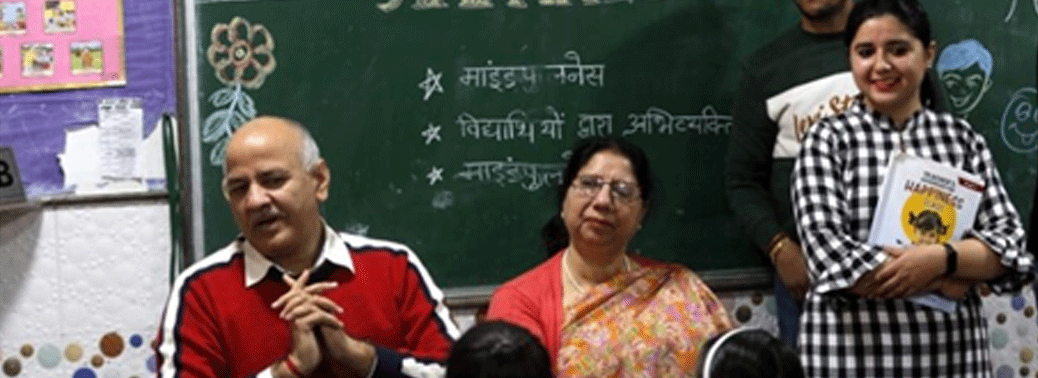
Why in News?
- On her upcoming visit to India next week along with US President Donald Trump, First Lady Melania Trump will visit a Delhi government school, where she will attend a happiness curriculum class.
Highlights:
- The curriculum is one of the flagship schemes of the Delhi government in the education sector launched in July 2018 in all government schools.
Delhi’s ‘happiness curriculum’:
- The curriculum calls for schools in India to promote development in cognition, language, literacy, numeracy and the arts along with addressing the well-being and happiness of students.
- It further says that future citizens need to be “mindful, aware, awakened, empathetic, firmly rooted in their identity…” based on the premise that education has a larger purpose, which cannot be in isolation from the “dire needs” of today’s society.
- For the evaluation, no examinations are conducted, neither will marks be awarded.
- The assessment under this curriculum is qualitative, focusing on the “process rather than the outcome” and noting that each student’s journey is unique and different.
Objectives of this Curriculum:
- The objectives of this curriculum include developing self-awareness and mindfulness, inculcating skills of critical thinking and inquiry, enabling learners to communicate effectively and helping learners to apply life skills to deal with stressful and conflicting situations around them.
- The curriculum is designed for students of classes nursery through the eighth standard. Group 1 consists of students in nursery and KG, who have bi-weekly classes (45 minutes each for one session, which is supervised by a teacher) involving mindfulness activities and exercise.
- Children between classes 1-2 attend classes on weekdays, which involves mindfulness activities and exercises along with taking up reflective questions.
- The second group comprises students from classes 3-5 and the third group is comprised of students from classes 6-8 who apart from the aforementioned activities, take part in self-expression and reflect on their behavioural changes.
Learning outcomes of this Curriculum:
- The learning outcomes of this curriculum are spread across four categories:
- becoming mindful and attentive (developing increased levels of self-awareness, developing active listening, remaining in the present);
- developing critical thinking and reflection (developing strong abilities to reflect on one’s own thoughts and behaviours, thinking beyond stereotypes and assumptions);
- developing social-emotional skills (demonstrating empathy, coping with anxiety and stress, developing better communication skills) and
- developing a confident and pleasant personality (developing a balanced outlook on daily life reflecting self-confidence, becoming responsible and reflecting awareness towards cleanliness, health and hygiene).
TARDY PROGRESS IN FARM SCHEMES
25, Feb 2020
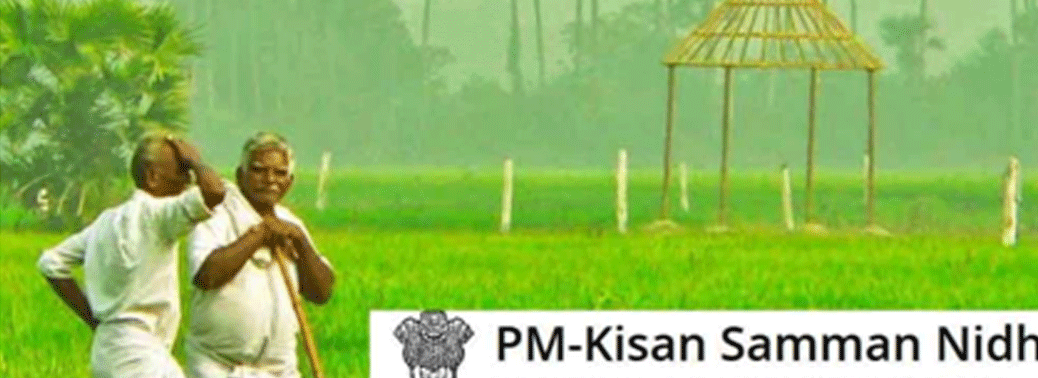
Why in News?
- Recently, Finance Ministry has expressed its displeasure over the tardy progress made by banks in seeding all PM-KISAN beneficiaries with Kisan Credit Card (KCC).
Background info:
- To enable universal access to Concessional Institutional credit, Government of India has initiated a drive in Mission Mode for saturating all PM-KISAN beneficiaries with Kisan Credit Card (KCC).
- This will help all such farmers to get short term loan for crop & animal/fish rearing at a maximum interest of 4% on timely repayment.
- However, there has not been much progress in this seeding process. Accordingly, the Finance Ministry has expressed displeasure over the tardy progress made by banks, and asked them to double their efforts.
About PM-KISAN Scheme:
- With a view to augment the income of the Small and Marginal Farmers (SMFs), the government has launched the new Central Sector Scheme, namely, “Pradhan Mantri Kisan Samman Nidhi (PM-KISAN)”.
- Under the scheme, ₹6,000 per year will be provided to farmers holding cultivable land of up to two hectares.The PM-KISAN scheme aims to supplement the financial needs of the SMFs in procuring various inputs to ensure proper crop health and appropriate yields, commensurate with the anticipated farm income at the end of each crop cycle.
- This would also protect them from falling in the clutches of moneylenders for meeting such expenses and ensure their continuance in the farming activities.
About KISAN Credit Card Scheme:
- The Kisan Credit Card (KCC) scheme was introduced in 1998 for issue of Kisan Credit Cards to farmers so that farmers may use them to readily purchase agriculture inputs such as seeds, fertilizers, pesticides etc. and draw cash for their production needs.
- The Kisan Credit Card Scheme is to be implemented by Commercial Banks, RRBs, Small Finance Banks and Cooperatives.
- The farmers eligible under the KCC scheme include small farmers, marginal farmers, share croppers, oral lessee and tenant farmers. The Self Help Groups (SHGs) or Joint Liability Groups (JLGs) are also eligible for availing benefits under the scheme.
JUVENILE JUSTICE (CARE AND PROTECTION OF CHILDREN) ACT, 2015
24, Feb 2020

Why in News?
- Recently, a Group of Ministers (GoM) chaired by the Home Minister met to discuss proposed amendments to the Juvenile Justice (Care and Protection of Children) (JJ) Act, 2015.
About Juvenile Justice (Care and Protection of Children) Act, 2015:
- The Juvenile Justice (Care and Protection of Children) Act, 2015 replaced the Juvenile Justice (Care and Protection of Children) Act, 2000 to comprehensively address children in conflict with law and children in need of care and protection.
- The Act changes the nomenclature from ‘juvenile’ to ‘child’ or ‘child in conflict with law’. Also, it removes the negative connotation associated with the word “juvenile”.
- It also includes several new and clear definitions such as orphaned, abandoned and surrendered children; and petty, serious and heinous offences committed by children.
- Included special provisions to tackle child offenders committing heinous offences in the age group of 16-18 years.
- It mandates setting up Juvenile Justice Boards and Child Welfare Committees in every district. Both must have at least one woman member each.
- A separate new chapter on Adoption to streamline adoption procedures for an orphan, abandoned and surrendered children.
- Also, the Central Adoption Resource Authority (CARA) was granted the status of a statutory body to enable it to perform its function more effectively.
- The Act states that the adoption of a child is final on the issuance of an adoption order by the court. Currently, there are 629 adoption cases pending in various courts.
- The Act included several new offences committed against children (like, illegal adoptions, use of child by militant groups, offences against disabled children, etc) which are not adequately covered under any other law.
- All Child Care Institutions, whether run by State Government or by voluntary or non-governmental organisations are to be mandatorily registered under the Act within 6 months from the date of commencement of the Act.
What is CARA?
- Central Adoption Resource Authority (CARA) is a statutory body of Ministry of Women & Child Development, Government of India.
- It functions as the nodal body for adoption of Indian children and is mandated to monitor and regulate in-country and inter-country adoptions.
- CARA is designated as the Central Authority to deal with inter-country adoptions in accordance with the provisions of the Hague Convention on Inter-country Adoption, 1993, ratified by Government of India in 2003.
- CARA primarily deals with adoption of orphan, abandoned and surrendered children through its associated /recognised adoption agencies.
What does the New Bill Proposes?
- The Bill provides that instead of the court, the district magistrate will issue adoption orders to address the high pendency of adoption cases.
- The Bill also seeks to transfer all pending matters related to adoption before any court to the district magistrate having jurisdiction over the area.
- The proposed amendments intend to expedite proceedings.
Who are the Group of Ministers?
- Groups of Ministers (GoMs) have been constituted from time to time to look into different issues/subjects.
- These are ad hoc bodies formed to give recommendations to the cabinet on certain emergent issues and critical problem areas.
- Ministers heading the concerned ministries are inducted into the relevant GoMs and when the advice is crystallised they are disbanded.
- Some of these GoMs have been also empowered to take decisions on behalf of the Cabinet known as Empowered Groups of Ministers (EGoMs).
- But with time the constitution of a large number of GoMs has resulted in many GoMs not being able to meet regularly to complete their work thus leading to significant delays on many major issues. Thus all the Groups of Ministers (GoMs) and Empowered Groups of Ministers (EGoMs) were abolished in 2014.
- Further in 2015, 16 informal Groups of Ministers (GoMs) were formed to discuss key issues of the country.
ONE IN THREE PAYMENTS FOR MATERNITY BENEFIT SCHEME CREDITED TO WRONG ACCOUNT
24, Feb 2020
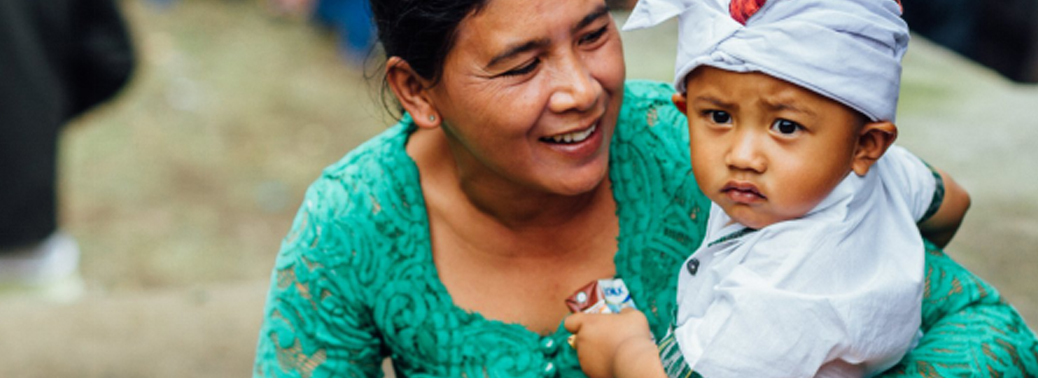
Why in News?
- The progress report on Poshan Abhiyan released by Niti Aayog recently has flagged the failure of Aadhaar-based payments under Pradhan Mantri Matru Vandana Yojana.
Issues Highlighted by the Report:
1. Faulty Payment System
- Only 66% of pregnant and lactating mothers under PMMVY are getting the benefits from Aadhaar-based payment system.
- Out of that, about 28% of total Aadhaar-based DBT towards Pradhan Mantri Matru Vandana Yojana was credited to a Wrong Bank Account.
2. Delay in Payment:
- According to the report a huge number of beneficiaries had not received the Cash Incentive since 2 years.
- This was as a result of red tapism that has been so vividly entrenched across data entry operators at taluk-level offices who has to update the data.
3. Cumbersome Application
- Besides it is said that the application form required to be filled up for availing the benefits under the scheme is too long and cumbersome (32 pages).
About Poshan Abhiyaan:
- POSHAN Abhiyaan (National Nutrition Mission) was launched by the government in 2018.
- The Abhiyaan targets to reduce stunting, undernutrition, anemia and low birth weight by 2%, 2%, 3% and 2% per annum respectively.
- Mission 25:The target of the mission is to bring down stunting among children in the age group 0-6 years from 38.4% to 25% by 2022.
- POSHAN Abhiyaan aims to ensure service delivery and interventions by use of technology, behavioural change through convergence and lays-down specific targets to be achieved across different monitoring parameters.
- Under the Abhiyaan, Swasth Bharat Preraks will be deployed one in each district for coordinating with district officials and enabling fast and efficient execution of the Abhiyaan across the country. Swasth Bharat Preraks would function as catalyst for fast tracking the implementation of the Abhiyaan.
About Pradhan Mantri Matru Vandana Yojana:
- Pradhan Mantri Matru Vandana Yojana (PMMVY) is a maternity benefit programme being implemented in all districts of the country from 2017.
- It is a centrally sponsored scheme being executed by the Ministry of Women and Child Development.
- Direct Benefit Transfer Scheme: Cash benefits are provided to pregnant women in their bank account directly to meet enhanced nutritional needs and partially compensate for wage loss.
Target Beneficiaries:
- All Pregnant Women and Lactating Mothers (PW&LM), excluding those who are in regular employment with the Central Government or the State Governments or PSUs or those who are in receipt of similar benefits under any law for the time being in force.
- All eligible Pregnant Women and Lactating Mothers who have their pregnancy for the first child in the family.
Benefits under the Scheme:
- Under PMMMY cash incentive of Rs 5000 is provided to pregnant and lactating mothers in three installments.
- 1stinstallment of Rs 1000/ – on early registration of pregnancy at the Anganwadi Centre
- 2ndinstallment of Rs 2000/ – after six months of pregnancy on receiving at least one ante-natal check-up (ANC)
- 3rdinstallment of Rs 2000/ – after child birth is registered and the child has received the first cycle of BCG, OPV, DPT and Hepatitis – B, or its equivalent/ substitute.
- The eligible beneficiaries also receive cash incentive under Janani Suraksha Yojana (JSY). Thus, on an average, a woman gets Rs. 6,000.
Distinctive Feature:
- Implementation of the scheme is closely monitored by the central and state governments through the Pradhan Mantri Matru Vandana Yojana – Common Application Software (PMMVY-CAS).
- PMMVY-CAS is a web based software application that enables tracking the status of each beneficiary under the scheme, resulting in expedited, accountable and better grievance redressal.
WORLDWIDE EDUCATING FOR THE FUTURE INDEX 2019
22, Feb 2020

Why in News?
- In the recently released “Worldwide Educating for the Future Index (WEFFI) 2019” published by The Economist Intelligence Unit, India has been ranked 35th.
About Worldwide Educating for the Future Index:
- The index and report are commissioned by the Yidan Prize Foundation.
- It was developed to assess the effectiveness of education systems in preparing students for the demands of work and life in a rapidly changing landscape.
- It is the first comprehensive global index to evaluate inputs to education systems rather than outputs such as test scores and concentrates on the 15-24 age band in 35 economies. The index and report are commissioned by the Yidan Prize Foundation.
Key Highlights of the Report:
- Finland topped the index followed by Sweden.
- This year, India scored 53 and has jumped five ranks from the 40th rank with an overall score of 41.2 across categories in 2018.
- WEFFI ranks countries based on their abilities to equip students with skill-based education.
- The rankings are based on Three Categories:
1.Policy environment.
2.Teaching environment.
3.Overall socio-economic environment.
- The report analyses the education system from the perspective of skill-based education in areas such as critical thinking, problem-solving, leadership, collaboration, creativity and entrepreneurship as well as digital and technical skills.
Reasons behind the rise in rank of India:
- The report attributes India’s growth to the new national education policy introduced and published in 2019.
- The new policy also mentions about future-oriented skills such as critical thinking, communication and entrepreneurship.
- The education policy was highlighted in the Union Budget 2020 and it will come under ‘Aspirational India’ which will focus on skill-based education, a greater inflow of finance to attract talented teachers and innovate and build better labs.
Challenges encountered as per the Report:
- Lack of decentralised education system in India.
- The inability of the Indian education system to utilise the opportunity of internationalising the higher education system.
- Well-intentioned policy goals relating to future skills development often do not get filtered downward which is a problem in economies like the US and India.
Way Ahead:
- India should develop its education system so that it becomes a preferred destination for higher education.
- Study in India Programme, Ind-SAT exams held for Asian and African students for scholarships can boost the Government’s Efforts.
SHYAMA PRASAD MUKHERJI RURBAN MISSION
22, Feb 2020

Why in News?
- 4thanniversary of the Shyama Prasad Mukherji Rurban Mission was observed recently.
- It was launched from Kurubhat in Rajnandgaon District of Chhattisgarh on 21st February 2016.
About Shyama Prasad Mukherji Rurban Mission:
-
- SPMRM is a scheme launched by the Ministry of Rural Development (MoRD) in 2016 to deliver integrated project based infrastructure in the rural areas, which will also include development of economic activities and Skill Development.

- It was designed to deliver catalytic interventions to rural areas on the threshold of growth.
- It is now a Centrally Sponsored Scheme funding shared between the Centre and the State in a ratio of 60:40 for Plain area States and 90:10 for Himalayan and NE States.
- The Mission aims at development of 300 Rurban clusters, in five years.
- Under the mission, the Central government in coordination with the district administration has taken measures to bring about multi-layered phased development of the rural gram panchayats and villages on the lines of urban cities with proper civic amenities keeping the soul of villages intact.
What is a Rurban Cluster?
- A ‘Rurban cluster’, would be a cluster of geographically contiguous villages with a population of about 25000 to 50000 in plain and coastal areas and with a population of 5000 to 15000 in desert, hilly or tribal areas.
- There are 2 categories of clusters: Non-Tribal and Tribal.
What is the Role of the States?
- The State Government identifies the clusters in accordance with the Framework for Implementation prepared by the MoRD.
- For the selection of clusters, the MoRD is adopting a scientific process of cluster selection which involves an objective analysis at the district, sub district and village level, of the Demography, Economy, Tourism and pilgrimage significance and transportation corridor impact.
Why Rurban Development is Essential?
- These clusters typically illustrate potential for growth, have economic drivers and derive locational and competitive advantages.
What are the outcomes envisaged under this Mission?
- Bridging the rural-urban divide-viz: economic, technological and those related to facilities and Services.
- Stimulating local economic development with emphasis on reduction of poverty and unemployment in Rural Areas.
- Spreading development in the Region.
- Attracting Investment in Rural Areas.
THE MISSING PIECE IN INDIA’S DEFENCE JIGSAW PUZZLE
21, Feb 2020
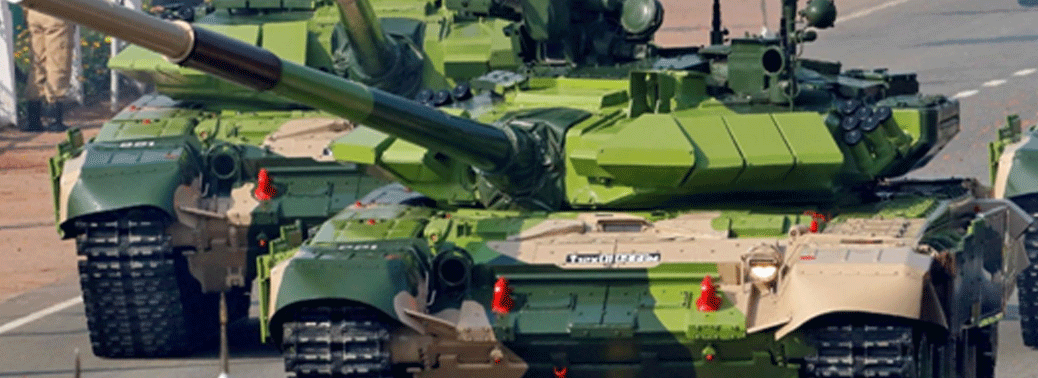
- Despite being the 4thlargest spender on defence in the world, India does not have a defence white paper laying out a realistic framework for strategic requirement in the changing geopolitical scenario.
Current Scenario: How is India Planning?
- Currently India’s defence planning is lopsided towards the 2-front threats from Pakistan and China and hence lacks a strategic vision.
- Notwithstanding, the 2-front threat, India’s defence plans should clearly lay out requirements based on
- Shifting centre of gravity of geopolitics
- Changing technology (cyber warfare)
- Emerging strategies like proxy wars etc.
Shortcomings in the Current Planning System:
1. Overemphasis on 2-front Threat:
- A look at the current acquisitions show that maximum focus has been laid on 2-front threat.
- For instance, the recent deals for acquiring Rafale fighter jets, 200 Kamov Ka-226 light utility helicopters from Russia, S-400 Triumf Air Defence System, Poseidon-8I Maritime Reconnaissance Aircraft, Apache Attack Helicopters, Romeo Multi Mission Helicopters for the Navy etc reflect this overemphasis on Pakistan and China.
2. Lack clarity
- A look at the plans of the armed forces indicates that the operational requirements are laid out towards generic objective and lack clarity.
What is needed?
3. Modernisation
- As a thumb rule any modern Armed Forces should have 1/3 rd of its equipment in the vintage category, 1/3 rd in the current category and 1/3 rd in the state of the art category.
- Indian Army currently has only 8% state-of-the-art.
- Thus India should plan for technologies of the future including artificial intelligence, robotics, bio-technology, modern weapons like hypersonic technology which are said to be fulcrum of arms race in 21st
4. Clear objectives in line with changing geopolitics:
- It is well known that the geopolitical centre of gravity has shifted from Atlantic in the 20thcentury to Indo-Pacific in the 21st.
- India has also articulated for free and open indo-pacific in its construct of Indo-Pacific Policy.
- While China’s growing assertiveness in Indo-Pacific is a reality, it is not necessarily confrontational in nature.
5. Due Consideration to the Neighbourhood
- Given that China is a formidable opponent in the neighbor-hood and projects such as BRI involve the sensitive sovereignty issues, India should clearly assess the nature of BRI (whether economic or military) and plan accordingly instead of a conflict-prone approach.
- India’s defence white paper should keep into account that Chinese spheres of influence in South Asia, South East Asia and West Asia.
- Our defence white paper should clearly differentiate between areas where India and China can peacefully co-exist and conflict zones.
Conclusion:
- India should prepare a defence white paper that would be more judicious in planning its resources by clearly laying out more definitive approach keeping in view the above challenges.
ASSISTED REPRODUCTIVE TECHNOLOGY REGULATION BILL 2020
20, Feb 2020

Why in News?
- The Union Cabinet has recently approved the Assisted Reproductive Technology Regulation Bill 2020.
What is Assisted Reproductive Technology (ART)?
- Assisted reproductive technology includes medical procedures used primarily to Address Infertility.
- This subject involves procedures such as in vitro fertilization, intracytoplasmic sperm injection, cryopreservation of gametes or embryos, and/or the use of fertility medication.
What does the Bill Says?
- The bill makes provisions for safe and Ethical Practice of assisted reproductive Technology Services in the country.
- Under it, the National Board shall lay down code of conduct to be observed by persons working at clinics, to set the minimum standards of physical infrastructure, laboratory and diagnostic equipment and expert manpower to be employed by clinics and banks.
- The State Board shall have the responsibility to follow the policies and plans laid by the National Board for clinics and Banks in the State.
- The Bill also provides for National Registry and Registration Authority to maintain a Central database and assist the National Board in its functioning.
- The Bill also proposes for a stringent punishment for those practicing sex selections, sale of human embryos or gametes, running agencies/rackets/organisations for such unlawful practices.
What are the Possible Impacts?
- Assisted Reproductive Technology (ART) has given hope to a multitude of persons suffering from infertility, but also introduced a plethora of legal, ethical and Social Issues.
- Clinics in India offer nearly all the Assisted Reproductive Technology (ART) services—gamete donation, intrauterine insemination (IUI), In-Vitro Fertilization (IVF), ICSI, PGD and gestational surrogacy.
- ART Regulation Bill 2020 follows the introduction in Parliament of the Surrogacy Regulation Bill 2020, and the approval of the Medical Termination of Pregnancy Amendment Bill 2020. These legislative measures are path breaking steps to protect women’s reproductive rights.
PRIVATE MEMBER BILL PROPOSING TWO-CHILD NORM
20, Feb 2020
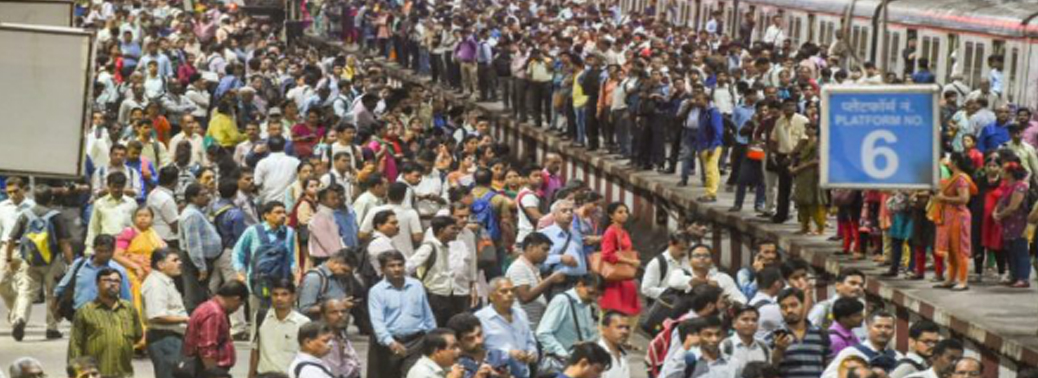
Why in News?
- A Private Member of our parliament has recently introduced a Constitution Amendment Bill in the Rajya Sabha which proposes incentives in taxation, education and employment for people who limit their family size to two children.
- Thus, the bill introduces disincentives to the families with children more than two in the above factors.
Key Features of the Bill:
- The Bill proposes for the incorporation of a new provision — Article 47A (Duty of the State to promote small family norm) — in Part IV (Directive Principles of the State Policy) of the Constitution.
- The Bill also intends to offer incentives in taxes, employment, education and priority in social benefit schemes and school admissions to people who keep their family limited to two children.
- The proposed insertion of Article 47A intends to withdraw all concessions from people who fail to adhere to the ‘small-family-norm’.
India’s Present Scenario:
- Presently, six states including Haryana, Rajasthan, Madhya Pradesh, Andhra Pradesh and Himachal Pradesh have made the two-child norm mandatory for all panchayat members.
- The Supreme Court has also upheld the provision in several states that debars members with more than two children from contesting and holding panchayat posts.
Why such a norm has been Proposed?
- India’s population has already crossed 125 crores and is expected to surpass the world’s most populous nation-China in the next couple of decades.
- The growing population is also expected to cause burden on the already over-exploited natural resources of India.
- National Population Control Policy (2000) has been introduced, but its success has not been seen on ground.
- The National Commission to Review the Working of the Constitution, headed by M.N. Venkatachaliah had also recommended for Article 47A to be inserted into the Constitution to control population explosion
Shortcomings of the Two-Child Norm:
- The problems like gender imbalance, undocumented children, etc. faced by China (as a result of the one-child policy) might be experienced by India.
- India’s birth-rate is slowing down to sustainable levels. In 2000, the fertility rate was still relatively high at 3.2 children per woman. By 2016, that number had already fallen to 2.3 children.
- The restricted child policy will create a shortage of educated young people needed to carry on India’s technological revolution. India might also lose its advantage of Demographic Dividend.
NOTE:
- Entry 20-A in List III (Concurrent List) of the 7thSchedule deals with population control and family planning. This provision was added through the 42nd Constitutional Amendment 1976. Thus it empowers both Centre and state to frame policies in such matters.
- Any Member of Parliament (MP) who is not a minister is referred to as a private member. A bill introduced by such a member is known as private Member Bill.14 private member’s bills have become law so far in India.
DEPORTATION LAWS IN INDIA
19, Feb 2020

Context:
- British MP, Debbie Abrahams, who is also the Chair of the All-Party Parliamentary Group for Kashmir, was denied entry into India as her e-visa had been “rejected” by India.
The Issue:
- India has denied entry to a UK Labour MP who was critical of the government’s controversial decision to revoke Kashmir’s special status last year.
- Indian officials have clarified that the British lawmaker Debbie Abrahams, who was denied entry into the country on Monday, did not hold a valid visa.
- This was done after various media organisations claimed that Abrahams was deported.
- The Ministry of External Affairs also responded that, on account of her involvement in activities against India’s national interest, her visa had been revoked.
- In this case, the government had claimed that this instance of denial of entry is not same as deportation as the British MP has claimed
What does Rejection of Visa Mean?
- Grant, revocation, or rejection of a visa is sovereign right of a country.
- Any foreign national who remains in any area in India for a period exceeding the period for which the visa was issued to him can be proceeded against under Section 14 of the Foreigners Act, 1946.
- A foreigner who enters into or stays in any area in India without the valid documents required for such entry or for such stay, as the case may be, can also be proceeded against under Section 14A (b) of the Foreigners Act, 1946.
What is deportation? And what are its types?
- Deportation is the expulsion of a person or group of people from a place or country. It can be done by a country, when a foreigner violates the immigration laws of the country.
- It applies equally to nationals and Foreigners.
- External Deportation:
- All countries reserve the right to deport persons without right of abode even those who are long-time residents or possess permanent residency.
- In general, foreigners who have committed serious crimes, entered the country illegally, overstayed or broken the conditions of their visa, or otherwise lost their legal status to remain in the country may be administratively removed or deported.
- In some cases, even citizens can be deported; some of the countries in the Persian Gulf have deported their own citizens. They have paid the Comoros Islands to give them passports and accept them.
- Internal Deportation:
- Deportation can also happen within a state, when (for example) an individual or a group of people is forcibly resettled to a different part of the country.
- If ethnic groups are affected by this, it may also be referred to as population transfer.
- The rationale is often that these groups might assist the enemy in war or insurrection.
- For example, the American state of Georgia deported 400 female mill workers during the Civil War on the suspicion they were Northern sympathizers.
- Colonial Deportations:
- Deporting individuals to an overseas colony is a special case that is neither completely internal or external.
- For example, from 1717, Britain deported around 40,000 religious objectors and criminals to America before the practice ceased in 1776.
- Jailers sold the criminals to shipping contractors, who then sold them to plantation owners. The criminal was forced to work for the plantation owner for the duration of their sentence.
- After Britain lost control of America, Australia became the destination for criminals deported to British colonies.
- Criminal Deportation:
- criminal deportation is where a foreigner is ordered to be deported or physically removed from a country by reason of such person’s criminal conduct or activity.
What are the regulations applicable to foreigners in India?
- The extent Acts dealing with entry, stay and exit of foreign nationals in the country are:
- Passport (Entry into India) Act, 1920
- Foreigners Act, 1946
- Registration of Foreigners Act, 1939
- The Passport (Entry in India) Act, 1920
- It prescribes specific authorization of foreign nationals on their valid travel documents/passports for allowing entry into the country.
- Under this Act, foreigners coming to India are required to get a visa from Indian Missions/Posts.
- The Foreigners Act, 1946
- It regulates the entry of foreigners into India, their presence and their departure.
- The Registration of Foreigners Act, 1939 and the Registration of Foreigners Rules, 1992
- It mandates that certain categories of foreigners whose intended stay in India for more than the specified period, or as provided in their visa authorization, are required to get themselves registered with the Registration officer.
Power to grant or refuse permission to enter India under Foreigners Act, 1946:
- Permission to enter shall be refused if the concerned authority (Central Government officer) is satisfied that-
- The foreigner is not in possession of a valid passport or visa for India or has not been exempted from the possession of a passport or visa;
- He is a person of unsound mind or a mentally defective person;
- He is suffering from a infectious disease in consequence of which, in the opinion of the Medical Officer of the port, the entry of the foreigner is likely to prejudice public health;
- He has been sentenced in a foreign country for an extradition offence within the meaning of the Indian Extradition Act, 1903 (15 of 1903);
- His entry is prohibited either under an order issued by a competent authority or under the specific orders of the Central Government.
- The civil authority may attach such conditions as it thinks fit to grant or refuse permission to enter which includes, the interests of public safety.
WOMEN TO GET PERMANENT COMMISSION IN INDIAN ARMED FORCES
18, Feb 2020
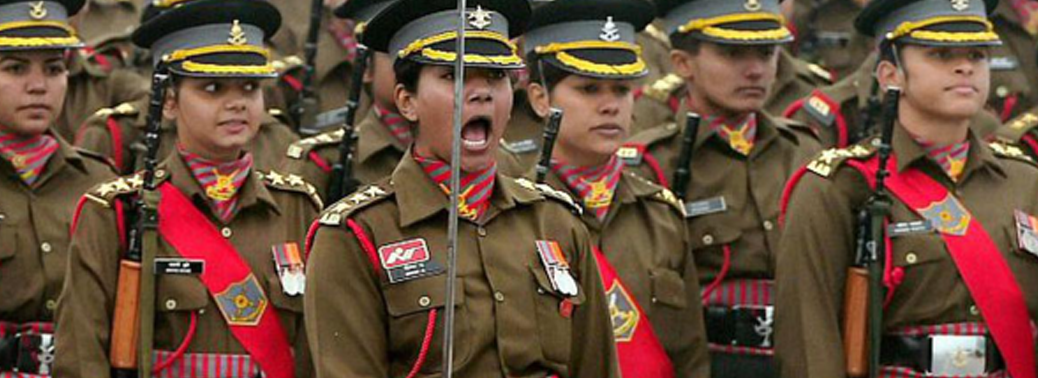
Why in News?
- The Supreme Court recently declared that Short Service Commission (SSC) women officers are eligible for permanent commission and command posts in the Army irrespective of their years of service.
What is the Issue?
- The verdict came on a nearly 10-year-old appeal filed by the government against a 2010 decision of the Delhi High Court to grant SSC women officers permanent commission.
- The induction of women officers in the Army started in 1992. Recruits under the Women Special Entry Scheme (WSES) had a shorter pre-commission training period than their male counterparts who were commissioned under the Short Service Commission (SSC) scheme.
- In 2006, the WSES scheme was replaced with the SSC scheme, which was extended to women officers. They were commissioned for a period of 10 years, extendable up to 14 years.
- According to government, isolation and hardships would eat into their resolve and they would have to heed to the call of pregnancy, childbirth and family. Women ran the risk of capture by enemy and being taken prisoner of war.
What is the SCs Verdict?
- The Supreme Court dismissed the Union government’s submissions that women are physiologically weaker than men as a “sex stereotype”.
- It also declared that Short Service Commission (SSC) women officers are eligible for permanent commission and command posts in the Army irrespective of their years of service.
Why this Verdict?
- The court found the remarks in the note not only constitutionally invalid but discriminatory, affecting the dignity of women officers.
- Article 15 states that the State shall not discriminate against any citizen on grounds only of religion, race, caste, sex, place of birth or any of them.
- So, the SC ordered not to discriminate women on the basis of gender and ordered to appoint them in command posts in the Army.
Way Forward:
- Moreover, to cast aspersion on women’s abilities on the ground of gender is an affront not only to their dignity as women but to the dignity of the members of the Indian Army – men and women – who serve as equal citizens in a common mission.
TREATING A CHILD WITNESS
18, Feb 2020
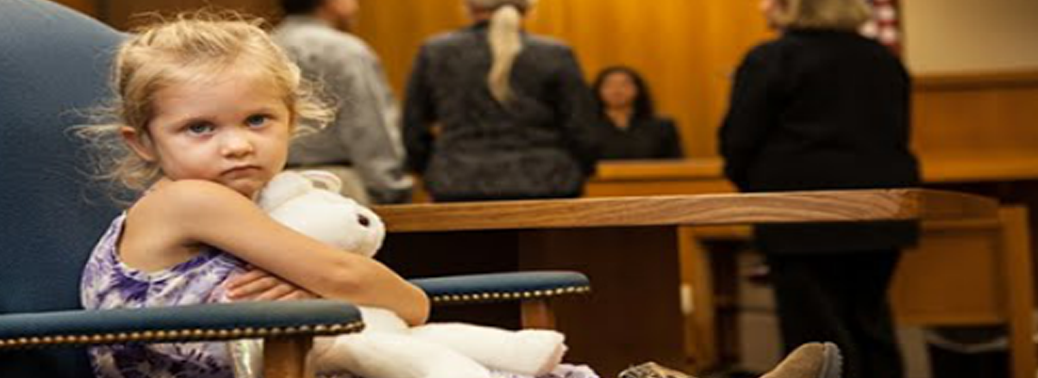
Why in News?
- A Public Interest Litigation (PIL) has been filed in the Karnataka High Court, asking for guidelines to be issued to police regarding interrogation of minors in criminal proceedings.
- The PIL has asked the court to issue guidelines in accordance with the Juvenile Justice Act and United Nations (UN) resolutions.
Definition of the term “Witness”:
- Any person who appears before a court or tribunal so as to give evidence or testimony, for or against any person involved is called as a witness.
- Any person may be a witness who can understand the questions put to him and rationally answer them.
- Usually during a trial, the court, before recording the testimony of a child witness, determines his or her competency on the basis of their ability to give rational answers.
- Age Limit to be a Witness: Under Section 118 of the Indian Evidence Act, 1872, there is no minimum age for a witness. Children as young as three years old have been witnesses before trial courts in cases of sexual abuse.
Existing Guidelines with respect to Child Witnesses:
- Authorities should treat children in a caring and sensitive manner, with interview techniques that “minimise distress or trauma to children”.
- An investigator specially trained in dealing with children be appointed to guide the interview of the child, using a child-sensitive approach.
- The investigator shall, to the extent possible, avoid repetition of the interview during the justice process in order to prevent secondary victimisation of the child.
- Secondary victimisation is defined as victimisation that occurs not as a direct result of a criminal act, but through the response of institutions and individuals to the victim.
Legislative Framework in existence regarding Protection of Child Witnesses:
1. Juvenile Justice (Care and Protection of Children) Act, 2015:
- The Act does not provide guidelines specifically relating to questioning or interviewing children as witnesses. However, it advocates for the following:
1. Child-friendly approach in the adjudication and disposal of matters. This implies, for the police to not be in their uniform while dealing with children.
2. Special Juvenile Police Unit: Interviews of children are done by specialised units of police who are trained to sensitively deal with them.
3 . Provides for a Child Welfare Committee in every district to take cognisance of any violations by the authorities in their handling of children.
2. POCSO Act:
- The Protection of Children from Sexual Offences (POCSO) Act, 2012 has specific guidelines regarding interviewing children as witnesses, though the guidelines pertain to child sexual abuse victims.
- Interviews should be conducted in a safe, neutral, child-friendly environment, including allowing for them to be done at homes.
- It says a child should not be made to recount the incident in question multiple times.
- The Act also allows for a support person, who could be trained in counselling, to be present with the child to reduce stress and trauma.
3. Article 39 (f) of the Constitution (DPSP):
- The State shall, in particular, direct its policy towards securing that children are given opportunities and facilities to develop in a healthy manner and in conditions of freedom and dignity and that childhood and youth are protected against exploitation and against moral and material abandonment.
4. UN Resolution:
- Convention on the Rights of the Child, 1989: It states that ‘in all actions concerning children, whether undertaken by public or private social welfare institutions, courts of law, administrative authorities or legislative bodies, the best interests of the child shall be a primary consideration’.
- India has been a signatory to this Convention since 1992.
MADHYA PRADESH GRAPPLES WITH SPIRALLING NEONATAL DEATHS
17, Feb 2020
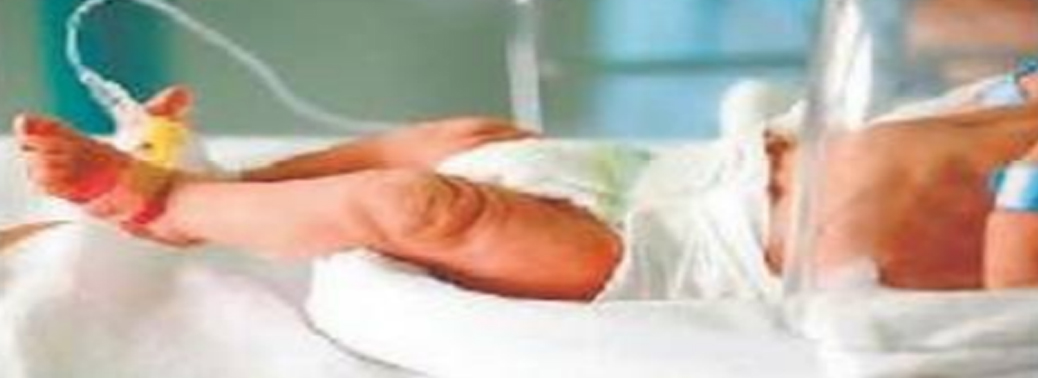
Why in News?
- According to the National Health Mission (NHM), Madhya Pradesh has recorded the highest percentage of newborn deaths of 11.5% against the total admissions to government-run sick newborn care units (SNCUs).
What is Neonatal Mortality Rate (NMR)?
- NMR is the probability of dying during the first 28 days of life, expressed per 1,000 live births.
- According to the Sample Registration System, neonatal deaths in India mainly occur owing to premature births and low birth weight (35.9%), pneumonia (16.9%), birth asphyxia and birth trauma (9.9%), other non-communicable diseases (7.9%), diarrhoea (6.7%), congenital anomalies (4.6%) and infections (4.2%).Under the United Nations’ Sustainable Development Goals, each country, including India, has aimed to bring down neonatal mortality to at least 12 per 1,000 live births. In 2018, it stood at 23 for India.
What does the Report Says?
- Although admissions of neonates in the Madhya Pradesh have dropped from April 2017 to December 2019 — remaining lower than West Bengal, Rajasthan and Uttar Pradesh — the percentage of deaths at 12.2% surpassed Bihar’s last year.
- In Bhopal, the capital city of Madhya Pradesh, one in every five children admitted to a unit died in the three years — the highest death percentage of 19.9% in the State, ten times above the NHM’s mandated key performance indicator of below 2%.
Why the Surge Happened?
- Staff crunch, low community referrals, absence of a special neonatal transport service to health centres, and the non-availability of enough units to cater to increasing institutional deliveries had contributed to the spike in the percentage of deaths.
- Meanwhile, West Bengal, where 34,344 neonatal deaths occurred in the period, the most in the country, the declining percentage of deaths from 9.2% in 2017 to 8.9% in 2019 coincided with a slump in admissions.
- The health of children and mothers is not tracked in a systematic way by one platform, and services are often given randomly.
What are the Challenges Faced?
- As the units are located at hospitals with the delivery load of more than 3,000 infants per year, mostly in District Headquarters, transporting neonates on time is crucial as they may succumb to fatal diseases within hours.
- Although there is a dedicated service to transport pregnant women to hospitals from remote areas, there is none for neonates, who are mostly dependent on the 108 ambulance service.
- The major challenge, however, remained community referrals, significantly aided by ASHA workers — only one in ten sick neonates born outside a hospital is taken to an SNCU. This is due to the absence of transport, inability to identify a disease by parents, and lack of awareness.

Way Forward:
- Measures should be taken to ensure early registration of pregnancies, and for early detection of high risk cases, improving institutional deliveries, providing skill development training to health staff.
- Education campaign should be taken up to aware the mother of the merits of antenatal care, institutional delivery, importance of exclusive breast feeding, immunization, home care for diarrhoea; all these are meant to create awareness among family members to provide support to women during pregnancies and deliveries.
TWO CHILD NORMS DEBATE
15, Feb 2020

Why in News?
- Shiv Sena Rajya Sabha member Anil Desai introduced a Private Member’s Bill in the Rajya Sabha.
Highlights:
- The Bill proposes incentives in taxation, education and employment for people who limit their family size to two children.
- The Bill has sought the incorporation of a new provision, Article 47A in Part IV of the Constitution, to withdraw all concessions from people who fail to adhere to the “small-family” norm.
- The Bill aims to amend the Constitution in order to incentivise limiting families to two children by offering tax concessions, priority in social benefit schemes and school admissions, among other things.
- The Bill proposes the insertion of Article 47A after Article 47 of the Constitution.
- Article 47A says the following: The State shall promote small family norms by offering incentives in taxes, employment, education etc. to its people who keep their family limited to two children and shall withdraw every concession from and deprive such incentives to those not adhering to small family norm, to keep the growing population under control.
Need for Two Child Norms:
- India’s population rate has overrun the ability of the environment to cater to. This has caused stress on the limited resources of the country.
- The higher population has not resulted in higher productivity rate in terms of creation of wealth instead the per capita wealth has depriciated.
- Women are forced to undergo multiple pregnancies over a short period of time. This has created adverse effect on their health leading to their death in some cases.
Drawbacks of Two Child Norms:
- It will increase the cases of mass sterilization especially by poor women belonging to backward area. This may result in deaths of women due to improper procedures.
- The replacement rate of the old population will decrease significantly due to which the number of working age population will reduce drastically.
NATIONAL LITERACY MISSION
15, Feb 2020
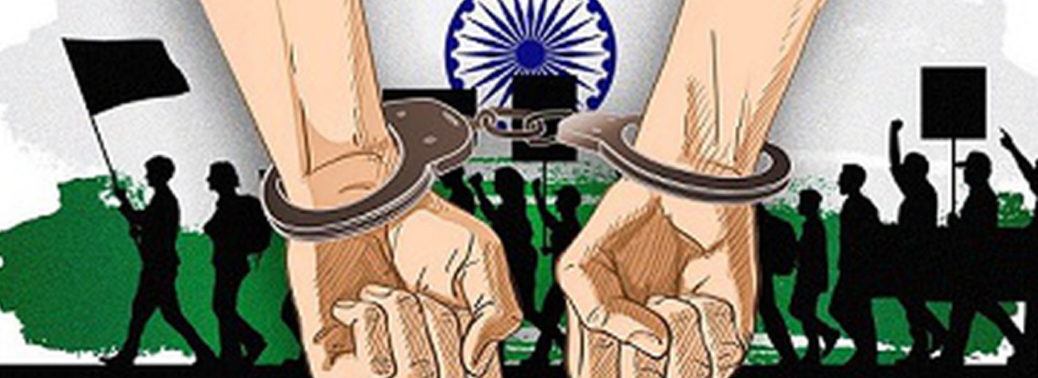
Why in News?
- Adult Education is a Concurrent Subject with both Central and State Governments being required to contribute to its promotion and strengthening.
- At the national level, National Literacy Mission Authority (NLMA), an autonomous wing of MHRD is the nodal agency for overall planning and management and funding of Adult Education Programmes and institutions. Its inter – ministerial General Council and Executive Committee are the two policy and executive bodies.
Centrally Sponsored Schemes:
- Presently, the provision of adult education is through the Saakshar Bharat Programme (SBP) which is a centrally sponsored scheme.
- The National Literacy Mission Authority (NLMA), is the Nodal Agency at the National level. The Joint Secretary (Adult Education) is the ex – officio Director General of NLMA.
- It was set up in 1988 with the approval of the Cabinet as an independent and autonomous wing of the Ministry of HRD (the then Department of Education). The Cabinet vested NLMA with full executive and financial powers in the sphere of work.
- National Literacy Mission Authority is mandated with
- Policy and planning;
- Developmental and promotional activities;
- Operational functions including assistance to voluntary agencies and other NGOs,
- Technology demonstration
- Leadership training
- Resource development including media and materials
- Research and development
- Monitoring and evaluation etc.
The Council of NLMA:
- Is the apex body of NLMA, headed by Minister of Human Resource Development and consists of, among others, Ministers of Panchayati Raj, Rural Development, Minority
Affairs, Information and Broadcasting, Health and Family Welfare, Youth Affairs and Sports, Social Justice and Empowerment, Women and Child Development, senior level
political leaders of the main political parties, three Members of Parliament, Education Ministers of six States etc.
Executive Committee:
- The Executive Committee is responsible to carry out all the functions of the Authority in accordance with the policy and guidelines laid down by the Council.
- It strives for proper implementation of policies and incorporation of latest developments in the field of Adult Education.
Major campaigns under the National Literacy Mission:
- TOTAL LITERACY CAMPAIGNS (TLC):This model is the dominant strategy for the eradication of adult illiteracy in India. TLC campaigns are area-specific, time-bound, volunteer-based, cost-effective and outcome-oriented.
- The campaigns are implemented through district-level literacy committees which are registered under the Societies Registration Act as independent and autonomous bodies to provide a unified umbrella under which a number of individuals and organisations work together.
- POST LITERACY PROGRAMME (PLP):Post-literacy programmes attempt to give interested learners an opportunity to harness and develop their learning potentials after completion of a course in basic literacy.
- Post literacy programmes are open to neo-literates in the age group of 9-35 who have completed the basic literacy course under the total literacy campaigns, dropouts from primary schools and pass outs from Non formal Education (NFE) programmes.
- CONTINUING EDUCATION PROGRAMME (CEP):After the impingement of literacy and adult education programmes another challenge that came before the National Literacy Mission was to create a Continuing Education System and maintain a channelled continuous and life-long learning process.
- Thus, the scheme of Continuing Education was taken up. The Continuing Education Scheme is multi-faceted and is postulated on the principles of treating basic literacy, post literacy and later continuing education. Above all the scheme aims at addressing the socio-economic situations of the community to provide infrastructure for larger development initiatives.
NATIONAL SECURITY ACT (NSA), 1980
15, Feb 2020
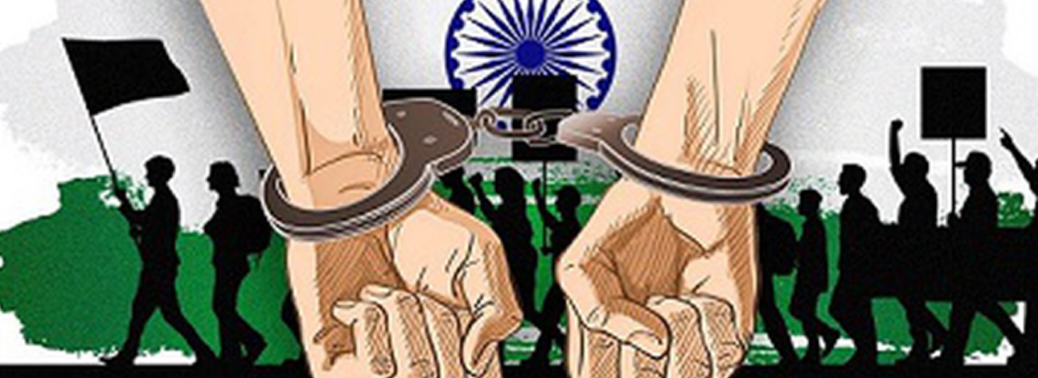
Why in News?
- Recently NSA has been invoked by Uttar Pradesh government to arrest persons for their inflammatory speeches.
About National Security Act (NSA):
- The National Security Act (NSA), 1980 empowers the Centre or a State government to detain a person to prevent him from
- acting in any manner prejudicial to national security.
- disrupting public order or for maintenance of supplies and services essential to the community.
- The maximum period for which one may be detained is 12 months. But the term can be extended if the government finds fresh evidence.
- The act extends to the whole of India except the State of Jammu and Kashmir.
Preventive Detention in India: A Timeline:
- Preventive Detention Laws in India date back to the colonial era when the Bengal Regulation III of 1818 was enacted to empower the government to arrest anyone for defence or maintenance of public order without giving the person recourse to judicial proceedings.
- A century later, the British government enacted the Rowlatt Acts of 1919 that allowed confinement of a suspect without trial.
- Other preventive detention laws that existed in colonial era are: Defence of India Act of 1858, The Government of India Act of 1935.
- In Post-independence India, the government of Prime Minister Jawaharlal Nehru enacted the Preventive Detention Act of 1950. The NSA is a close iteration of the 1950 Act.
- After the Preventive Detention Act expired in 1969, the then Prime Minister, Indira Gandhi, brought in the Maintenance of Internal Security Act (MISA) in 1971.
- Though the MISA was repealed in 1977 after the Janata Party came to power, the successive government led by Indira Gandhi brought in the NSA in 1980.
- The only period in the Indian “republic without any preventive detention law was the three year period, beginning with the repeal of MISA in 1977 to the promulgation of the NSA in 1980.
Rights against Preventive Detention:
- In the normal course, if a person is arrested, he or she is guaranteed certain basic rights. These include the right to be informed of the reason for the arrest.
- Section 50 of the Criminal Procedure Code (Cr.PC) mandates that the person arrested has to be informed of the grounds of arrest, and the right to bail. Sections 56 and 76 of the Cr. PC also provides that a person has to be produced before a court within 24 hours of arrest.
- Additionally, Article 22(1) of the Constitution says an arrested person cannot be denied the right to consult, and to be defended by, a legal practitioner of his choice.
But none of these Rights are available to a Person Detained under the NSA:
- A person could not be informed about the reasons for his arrest for up to five days, and in exceptional circumstances not later than 10 days.
- The arrested person is also not entitled to the aid of any legal practitioner in any matter connected with the proceedings before an advisory board, which is constituted by the government for dealing with NSA cases.
PUBLISH CRIMINAL HISTORY OF ELECTION CANDIDATES, SAYS SC
14, Feb 2020

Why in News?
- The Supreme Court recently ordered political parties to publish the entire criminal history of their candidates for Assembly and Lok Sabha elections.
What did SC said?
- In addition to the entire criminal history of their candidates the reasons that goaded them to field suspected criminals over decent people are also ordered to be published.
- The information should be published in a local as well as a national newspaper as well as the parties’ social media handles.
- It should mandatorily be published either within 48 hours of the selection of candidates or less than two weeks before the first date for filing of nominations, whichever is earlier.
- The published information on the criminal antecedents of a candidate should be detailed and include the nature of their offences, charges framed against him, the court concerned, case number, etc.
- The judgment is applicable to parties both at Central and State levels.
Why this order?
- It appears that over the last four general elections, there has been an alarming increase in the incidence of criminals in politics.
- In 2004, 24% of the Members of Parliament had criminal cases pending against them; in 2009, that went up to 30%; in 2014 to 34%; and in 2019 as many as 43% of MPs had criminal cases pending against them”.
- The unimpeded rise of criminals, often facing heinous charges like rape and murder, encroaching into the country’s political and electoral scenes compelled SC to interfere in this issue.
What are the significances of the Judgement?
- A political party should explain to the public through their published material how the “qualifications or achievements or merit” of a candidate, charged with a crime, impressed it enough to cast aside the smear of his criminal background.
- A party would have to give reasons to the voter that it was not the candidate’s “possibilities of win at the polls” which guided its decision to give him ticket to contest elections.
PESTICIDES MANAGEMENT BILL, 2020
14, Feb 2020

Why in News?
- Union Cabinet has recently approved “The Pesticides Management Bill, 2020”. Currently, the pesticide business is regulated by rules under the Insecticides Act 1968.
Objectives of the Bill:
- The Bill aims at regulating the business of pesticides and compensating farmers in case of losses from the use of agrochemicals.
- Agrochemicals imply chemicals used in agriculture, such as a pesticide or fertilizer.
Key Features of the Bill:
1. Empowering Farmers through Information:
- It will empower farmers by providing them with all the information about the strength and weakness of pesticides, the risk and alternatives. All information will be available openly as data in digital format and in all languages.
2. Compensation:
- The Bill has a unique feature in the form of a provision for compensations in case there is any loss because of the spurious or low quality of pesticides.
- If required, a central fund will be formed to take care of the compensations.
3. Registration of Pesticide Manufacturers:
- All pesticide manufacturers have to be registered and bound by the new Act, once it is passed. The advertisements of pesticides will be regulated so there should be no confusion or no cheating by the manufacturers.
4. Organic Pesticides:
- The Bill also intends to promote organic pesticides.
Usage and ill-impact of Pesticides in India:
- India is among the leading producers of pesticides in Asia. In the domestic market, Maharashtra, Uttar Pradesh, Punjab and Haryana are among the states with the highest recorded consumption.
- Spurious Agrochemicals are responsible for the losses of not just farmers but also producers of genuine agrochemicals and the government, which loses revenue from the sales of the counterfeit versions of the real farm inputs. They harm crop, soil fertility and the environment.
About Insecticides Act, 1968:
- It was passed in 1971 with a view of regulating the import, manufacture, sale, transport, distribution and use of insecticides in order to prevent risk to human beings and animals.
- This act brings in Central Insecticides Board which works under the Ministry of Agriculture and Farmers’ Welfare.
- The board advises the central government and state governments on technical matters arising out of the administration of the act and to carry out the other functions assigned to it.
JAL JEEVAN MISSION
14, Feb 2020
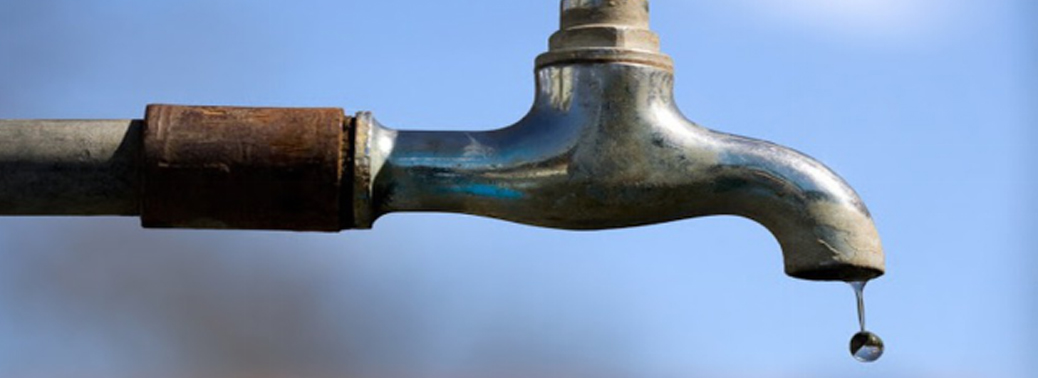
Why in News?
- Rajasthan has recently demanded higher central assistance for Jal Jeevan Mission (JJM) from the Union Government to achieve the targets of the Mission.
About Jal Jeevan Mission:
- The chief objective of the Mission is to provide piped water supply (Har Ghar Jal) to all rural and urban households by 2024. It envisages supply of 55 litres of water per person per day to every rural household through Functional Household Tap Connections (FHTC) by 2024.
- JJM focuses on integrated demand and supply-side management of water at the local level.
- Creation of local infrastructure for source sustainability measures as mandatory elements, like rainwater harvesting, groundwater recharge and management of household wastewater for reuse, would be undertaken in convergence with other government programmes/schemes.
- The Jal-Jeevan Mission is set to be based on various water conservation efforts like point recharge, desilting of minor irrigation tanks, use of grey-water for agriculture and source sustainability.
- The Mission is based on a community approach to water and includes extensive Information, Education and Communication as a key component of the mission. Thus JJM looks to create a jan andolan for water, thereby making it everyone’s priority.
Funding Pattern:
- The fund sharing pattern between the Centre and states is 90:10 for Himalayan and North-Eastern States, 50:50 for other states, and 100% for Union Territories.
- The Jal Jeevan Mission will converge with other Central and State Government Schemes to achieve its objectives of sustainable water supply management across the country.
Institutional Arrangement:
1. National Jal Jeevan Mission (NJJM) at the Central level
2. State Water and Sanitation Mission (SWSM) at the State level
3. District Water and Sanitation Mission (DWSM) at the District level
4. Village Water Sanitation Committee (VWSC) at Village level
Village Action Plan (VAP):
- Every village will prepare a Village Action Plan (VAP) which will have three components:
- Water source & its maintenance
- Water supply
- Grey-water (domestic wastewater) Management.
Need for and significance of the Mission:
- India has 16% of the world population, but only 4% of freshwater resources. Depleting groundwater level, overexploitation and deteriorating water quality, climate change, etc. are major challenges to provide potable drinking water.
- It is an urgent requirement of water conservation in the country because of the decreasing amount of groundwater level.
- Therefore, the Jal Jeevan Mission will focus on integrated demand and supply management of water at the local level.
EASE OF LIVING INDEX AND MUNICIPAL PERFORMANCE INDEX 2019
13, Feb 2020

Why in News?
- To help assess the progress made in cities through various initiatives and empower them to use evidence to plan, implement & monitor their performance, two Assessment Frameworks, viz. Ease of LivingIndex (EoLI) and Municipal Performance Index (MPI) 2019 have been launched by the Ministry of Housing & Urban Affairs.
Ease of Living Index and Municipal Performance Index:
- Both these indices are designed to assess quality of life of citizens in 100 Smart Cities and 14 other Million Plus Cities.
Municipal Performance Index:
- With the Municipal Performance Index 2019, the Ministry has sought to assess the performance of municipalities based on five enablers namely Service, Finance, Planning, Technology and Governance which have been further divided into 20 sectors which will be evaluated across 100 indicators.
- This will help Municipalities in better planning and management, filling the gaps in city administration, and improving the liveability of cities for its citizens.
Ease of Living Index:
- Ease of Living Index is aimed at providing a holistic view of Indian cities – beginning from the services provided by local bodies, the effectiveness of the administration, the outcomes generated through these services in terms of the liveability within cities and, finally, the citizen perception of these outcomes.
- The key objectives of the Ease of Living Index are four-folds, viz.
- Generate information to guide evidence-based policy making
- Catalyse action to achieve broader developmental outcomes including the SDG’
- Assess and compare the outcomes achieved from various urban policies and schemes.
- Obtain the perception of citizens about their view of the services provided by the city Administration.
- EoLI 2019 will facilitate the assessment of ease of living of citizens across three pillars: Quality of Life, Economic Ability and Sustainability which are further divided into 14 categories across 50 indicators.
Citizen Perception Survey:
- For the first time, as part of the Ease of Living Index Assessment, a Citizen Perception Survey is being conducted on behalf of the Ministry (which carries 30% of the marks of the Ease of Living Index).
- This is a very important component of the assessment exercise as it will help in directly capturing perception of citizens with respect to quality of life in their cities. This survey, which is being administered both online and offline, has commencedfrom 1st February 2020 and will continue till 29th February 2020.
- The offline version involving face-to-face interviews will commence on the 1st of February and will run parallel to the on-line versions. The same is being promoted through bulk SMS push as well as extensive coverage in social media.
DEBATE AROUND UNIFORM CIVIL CODE (UCC)
12, Feb 2020

Why in News?
- Recently the Supreme Court described Goa as a “shining example” with a Uniform Civil Code and observed that the founders of the Constitution had hoped and expected a Uniform Civil Code for India but there has been no attempt at framing one.
Highlights:
- Article 44 of the Constitution lays down that the state shall endeavour to secure a Uniform Civil Code for the citizens throughout the territory of India.
- A Uniform Civil Code is one that would provide for one law for the entire country, applicable to all religious communities in their personal matters such as marriage, divorce, inheritance, adoption etc.
- Article 44 is one of the directive principles. These are not justiciable (not enforceable by any court) but the principles laid down therein are fundamental in governance.
- Article 43 mentions “state shall endeavour by suitable legislation” while the phrase “by suitable legislation” is absent in Article 44. All this implies that the duty of the state is greater in other directive principles than in Article 44.
Fundamental Rights or DPSP?
- The Supreme Court held in Minerva Mills (1980): “Indian Constitution is founded on the bed-rock of the balance between Parts III (Fundamental Rights) and IV (Directive Principles).
- To give absolute primacy to one over the other is to disturb the harmony of the Constitution”.
- Article 31C inserted by the 42nd Amendment in 1976, however, lays down that if a law is made to implement any directive principle, it cannot be challenged on the ground of being violative of the fundamental rights under Articles 14 and 19.
Current Civil Code:
- Indian laws do follow a uniform code in most civil matters, Indian Contract Act, Civil Procedure Code, Sale of Goods Act, Transfer of Property Act, Partnership Act, Evidence Act etc.
- States, however, have made hundreds of amendments and therefore in certain matters, there is diversity even under these secular civil laws.
- All Hindus of the country are not governed by one law, nor are all Muslims or all Christians. Not only British legal traditions, even those of the Portuguese and the French remain operative in some parts.
- In the Northeast, there are more than 200 tribes with their own varied customary laws. The Constitution itself protects local customs in Nagaland.
- Similar protections are enjoyed by Meghalaya and Mizoram. Even reformed Hindu law, in spite of codification, protects customary practices.
SPECIAL CATEGORY STATUS TO STATES
12, Feb 2020
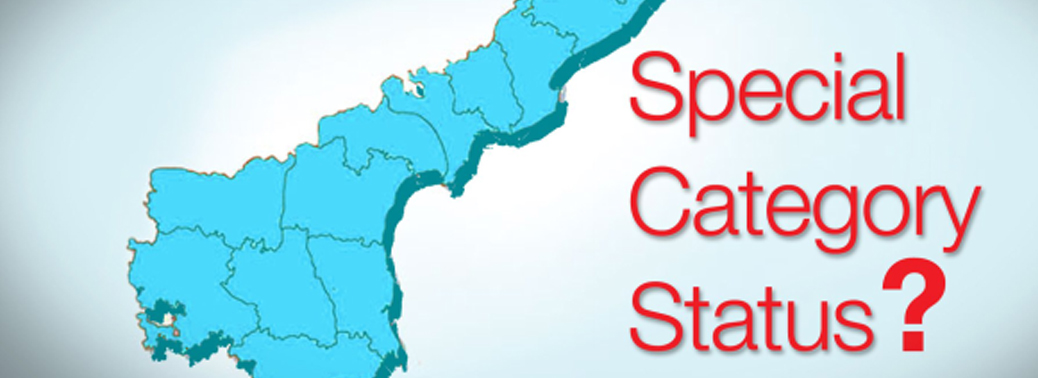
Context:
- Andhra Pradesh has recently revived its demand for Special Category Status (SCS).
What is Special Category Status (SCS)?
- There is no provision of SCS in the Constitution; the Central government extends financial assistance to states that are at a comparative disadvantage against others.
- The concept of SCS emerged in 1969 when the Gadgil formula(that determined Central assistance to states) was approved.
- First SCS was accorded in 1969 to Jammu and Kashmir, Assam and Nagaland.
- Over the years, eight more states were added to the list — Arunachal Pradesh, Himachal Pradesh, Manipur, Meghalaya, Mizoram, Sikkim, Tripuraand, finally, in 2010, Uttarakhand.
- Until 2014-15, SCS meant these 11 states received a variety of benefits and sops.
What are the differences between Special Status and Special Category Status?
- The constitution provides special status through an Act that has to be passed by 2/3rds majority in both the houses of Parliament whereas the special category status is granted by the National Development Council, which is an administrative body of the government.
- For example, Jammu and Kashmir enjoyed a special status as per Article 370 and also special category status as per Article 371.
- But now Article 35A has been scrapped and it has become a union territory with legislature. Now, both Special Status and Special Category status doesn’t apply to J&K anymore.
- The Ministry of Home Affairs (MHA) is holding consultations with the Union Territories of Jammu and Kashmir (J&K) and Ladakh to grant them “special category status” on the lines of Article 371 of the Constitution.
What are the criteria for Special Category Status?
- Hilly and difficult terrain
- Low population density or sizeable share of tribal population
- Strategic location along borders with neighbouring countries
- Economic and infrastructural backwardness
- Non-viable nature of state
Who Grants Special Category status to states?
- The decision to grant special category status lies with the National Development Council, composed of the prime minister, union ministers, chief ministers and members of the planning commission, who guide and review the work of the commission.
- Special category status for plan assistance has been granted in the past by the National Development Council (NDC) to some states that are characterized by a number of features necessitating special consideration.
What are the Benefits confer to the States with Special Category Status?
- The central government bears 90 percent of the state expenditure on all centrally-sponsored schemes and external aid while rest 10 percent is given as loan to state at Zero Percent Rate of Interest.Usually, the ratio for general category States is 70% loan and 30% grant.
- Preferential treatment in getting central funds.
- Concession on excise duty to attract industries to the state.
- 30 percent of the Centre’s gross budget also goes to special category states.
- These states can avail the benefit of debt-swapping and debt relief schemes.
- States with special category status are exempted from customs duty, corporate tax, income tax and other taxes to attract investment.
- Special category states have the facility that if they have unspent money in a financial year; it does not lapse and gets carry forward for the next financial year.
What are the Concerns?
- Considering special status to any new State will result in demands from other States and dilute the benefits further.
- It is also not economically beneficial for States to seek special status as the benefits under the current dispensation are minimal.
- Therefore, States facing special problems will be better off seeking a special package.
UAE BANKS: INDIAN DEFAULTERS & RECOVERY
10, Feb 2020

Context:
- Recently, the Union government issued a notification allowing the decrees of certain UAE courts in civil cases to be enforceable in India. At least 9 banks from the UAE are in the process of initiating legal action against Indian defaulters to recover around Rs 50,000 crore, after this new ruling.
UAE as a ‘Reciprocating Territory’
- The UAE has been declared a reciprocating territory undersection 44A of Civil Procedure Code.
- It is said to be the only remaining part of a 1999 agreement between the UAE and India related to cooperation in civil and commercial matters.
- Apart from UAE, the other countries declared to be “reciprocating territories” are: United Kingdom, Singapore, Bangladesh, Malaysia, Trinidad & Tobago, New Zealand, the Cook Islands (including Niue) and the Trust Territories of Western Samoa, Hong Kong, Papua New Guinea, Fiji, Aden.
What is a ‘reciprocating territory’ and what are superior courts?
- The Central Government may, by notification in the Official Gazette, can declare any country or territory outside India to be a reciprocating territory.
- Essentially, orders (decree) passed by certain designated courts from a ‘reciprocating territory’ can be implemented in India, by filing a copy of the decree concerned in a District Court here.
- The provision is applicable money decrees – for payment of money, not being sums payable “in respect of taxes or other charges of a like nature or in respect of a fine or other penalty”.
- However, this does not include an arbitration award, even if such an award is enforceable as a decree or judgment.
- The courts so designated under the notifications are called ‘superior Courts’.
Why is the move considered to be significant?
- Earlier UAE-based banks had no recourse to enforce judgements directly to recover their corporate or retail loans given to Indians in the UAE, but now they can take action in India.
- Most of the cases involve corporate loans taken by Dubai or Abu Dhabi-based subsidiaries of Indian companies and also individuals.
- The new government notification allowed the decrees of certain UAE courts in civil cases to be enforceable in India.
- This means a UAE bank, if it has a court order in its favour against a defaulter who has fled to India or no more has operations in the Emirates, can seek to enforce it here like any local lender to recover the money.
- So, now UAE banks may also explore initiating proceedings under the IBC (India’s Insolvency and Bankruptcy Code) or the banks could also approach the NCLT or even invoke personal guarantees.
- The decision is believed to help bring down the time required for executing decrees between the two countries.
- Indian expatriates in the UAE would no longer be able to seek safe haven in their home country if they are convicted in a civil case in the UAE.
CURBING CHILD PORNOGRAPHY
10, Feb 2020

Why in News?
- A parliamentary panel has recently recommended a code of conduct for Internet service providers (ISPs) and strengthening the National Commission for Protection of Child Rights (NCPCR) to curb child pornography.
What is Child Pornography?
- Child pornography is publishing and transmitting obscene material of children in electronic form.
- In recent years child pornography has increased due to the easy access of the internet and easily available videos on the internet.
- Child pornography is the most heinous crime which occurs and has led to various other crimes such as sex tourism, sexual abuse of the child, etc.
What is the problem in curbing Child Pornography?
- Making laws is not the same as enforcing them. While sufficient anti-child pornography laws exist in many nations, enforcement is weak.
- Furthermore, policing a global operation like the Internet involves policing citizens from countries with widely differing domestic laws, cultures and social mores.
- Although these obstacles appear insurmountable, it must be remembered that child pornography is a substantive and compelling problem on international, national, and local levels, and it is not a harmless crime.
What measures are taken by Indian Government?
- India had blocked more than 800 pornographic websites in 2015 because of the concerns about child pornography.
- This particular decision was taken under the Information Technology Act and in consonance with Article 19(2) of the Constitution of India that allows the government to impose restrictions on the grounds of decency and morality.
- However, this complete ban was later lifted and only implemented to those websites containing child porn.
- Recently, again the Department of Telecom has banned around 800 sites due to illegal content on websites.
What are key recommendations of the Panel?
- Put in place a multi-pronged strategy involving technological, institutional, social and educational as well as State-level measures.
- There is a need for code of conduct or a set of guidelines for ensuring child safety online.
RAJYA SABHA HOUSE PANEL SUGGESTS STEPS TO CURB CHILD PORNOGRAPHY
08, Feb 2020

Why in News?
- A parliamentary panel has recommended a code of conduct for Internet service providers (ISPs) and strengthening the National Commission for Protection of Child Rights to curb Child Pornography.
Highlights:
- The report, prepared by an ad hoc committee set up by the Rajya Sabha and led by Congress MP Jairam Ramesh, was submitted to the Chairman of the House.
- It recommends a multi-pronged strategy detailing technological, institutional, social and educational as well as State-level measures.
- Among its key recommendations is a code of conduct or a set of guidelines for ensuring child safety online.
- It puts a greater onus on ISPs to identify and remove child sexual abuse material (CSAM) as well as report such content and those trying to access them to the authorities under the national cybercrime portal.
- It has also called for strengthening the National Commission for Protection of Child Rights (NCPCR) so that it can serve as the nodal body for curbing child pornography.
- The capabilities required in the NCPCR should include technology, cyberpolicing and prosecution along with an inter-ministerial task force, the panel has proposed.
- The committee has delved into great detail in using technology to curb circulation of child porn such as breaking end-to-end encryption to trace its distributors of child pornography, mandatory applications to monitor children’s access to pornographic content, employing photo DNA to target profile pictures of groups with CSAM.
Drawbacks:
- The suggestion to break encryption may also just lead to traffic moving to different platforms.
- There is also a need to develop a victim-centric strategy instead of just focusing on prosecution.
SURROGACY (REGULATION) BILL, 2019
06, Feb 2020

Why in News?
- The Rajya Sabha Select Committee on Surrogacy (Regulation) Bill, 2019 recently recommended that a surrogate mother need not be a “close relative”.
- It also advocated omission of the five-year time limit before seeking surrogacy.
Provisions of the Bill:
What is Prohibited?
- The Bill prohibits commercial surrogacy, but allows Altruistic Surrogacy.
- Altruistic surrogacy, involves no monetary compensation to the surrogate mother other than the medical expenses and insurance coverage during the pregnancy.
- Commercial surrogacy includes surrogacy or its related procedures undertaken for a monetary benefit or reward (in cash or kind) exceeding the basic medical expenses and insurance coverage.
When Surrogacy is Permitted?
- Surrogacy is permitted when it is:
- for intending couples who suffer from Proven Infertility;
- altruistic;
- not for commercial purposes;
- not for producing children for sale, prostitution or other forms of exploitation; and
- for any condition or disease specified through regulations.
- The intending couple should have a ‘certificate of essentiality’ and a ‘certificate of eligibility’ issued by the appropriate authority.
When the Certificate is Issued?
- A certificate of essentiality will be issued upon fulfilment of the following conditions:
- a certificate of proven infertility of one or both members of the intending couple from a District Medical Board;
- an order of parentage and custody of the surrogate child passed by a Magistrate’s court; and
- Insurance coverage for a period of 16 months covering postpartum delivery complications for the surrogate.
- The certificate of eligibility to the intending couple is issued upon fulfillment of the following conditions:
- the couple being Indian citizens and married for at least five years;
- between 23 to 50 years old (wife) and 26 to 55 years old (husband);
- they do not have any surviving child (biological, adopted or surrogate); this would not include a child who is mentally or physically challenged or suffers from life threatening disorder or fatal illness; and
- Other conditions that may be specified by regulations.
What are the Eligibility Criteria for Surrogate Mother?
- To obtain a certificate of eligibility from the appropriate authority, the surrogate mother has to be:
- a close relative of the intending couple;
- a married woman having a child of her own;
- 25 to 35 years old;
- a surrogate only once in her lifetime; and
- Possess a certificate of medical and psychological fitness for surrogacy. Further, the surrogate mother cannot provide her own gametes for surrogacy.
What is the function of Appropriate Authority?
- The central and state governments shall appoint one or more appropriate authorities within 90 days of the Bill becoming an Act.
- The functions of the appropriate authority include;
- granting, suspending or cancelling registration of surrogacy clinics;
- enforcing standards for surrogacy clinics;
- investigating and taking action against breach of the provisions of the Bill;
- Recommending modifications to the rules and regulations.
- Surrogacy clinics cannot undertake surrogacy related procedures unless they are registered by the appropriate authority.
- Clinics must apply for registration within a period of 60 days from the date of appointment of the appropriate authority.
What is the function of the Surrogacy Boards?
- The central and the state governments shall constitute the National Surrogacy Board (NSB) and the State Surrogacy Boards (SSB), respectively.
- Functions of the NSB include, (i) advising the central government on policy matters relating to surrogacy; (ii) laying down the code of conduct of surrogacy clinics; and (iii) supervising the functioning of SSBs.
What is the procedure for the Parentage and abortion of surrogate child?
- A child born out of a surrogacy procedure will be deemed to be the biological child of the intending couple.
- An abortion of the surrogate child requires the written consent of the surrogate mother and the authorisation of the appropriate authority.
- This authorisation must be compliant with the Medical Termination of Pregnancy Act, 1971.
- Further, the surrogate mother will have an option to withdraw from surrogacy before the embryo is implanted in her womb.
What are the Offences and penalties?
- The offences under the Bill include:
- undertaking or advertising commercial surrogacy;
- exploiting the surrogate mother;
- abandoning, exploiting or disowning a surrogate child; and
- Selling or importing human embryo or gametes for surrogacy.
- The penalty for such offences is imprisonment up to 10 years and a fine up to 10 lakh rupees.
- The Bill specifies a range of offences and penalties for other contraventions of the provisions of the Bill.
What are the recommendations of the committee?
- The major changes recommended by the Committee include
- It recommended that a surrogate mother need not be a “close relative”.
- It also advocated omission of the five-year time limit before seeking surrogacy.
- allowing single women (widow or a divorcee and Persons of Indian Origin) to avail of surrogacy,
- Increasing insurance cover for the surrogate mother from the 16 months proposed in the Bill to 36 months.
Why such Recommendations Needed?
- Requiring the surrogate mother to be a “close relative” potentially restricts the availability of surrogate mothers, affecting genuinely needy persons.
- Deleting the definition of “infertility” as “the inability to conceive after five years of unprotected intercourse” is because it is too long a period for a couple to wait for a child.
- However the Surrogacy (Regulation) Bill, 2019 is yet to be passed by the Rajya Sabha.
ONLY 7 IN 100 ANGANWADI BENEFICIARIES ARE IN CITIES, REVEALS RTI
05, Feb 2020

Why in News?
- A recent RTI has revealed that for every 100 Anganwadi beneficiaries in the country, only seven are in urban areas.
- This is primarily because of a severe lack of anganwadis in cities, leading to poor coverage of the government’s flagship programme in Early Childhood Development.
Key Points:
- There were a total 7.95 crore beneficiaries of the anganwadi scheme in the country, out of which only 55 lakh were registered at urban anganwadis. This is primarily because of an acute paucity of anganwadi centres in urban areas.
- There are as many as 13.79 lakh anganwadis operational across the country, out of which only 9.31 lakh centres are linked to the government’s web-enabled data entry system called Rapid Reporting System.
- Of those anganwadis that can be monitored online, only 1.09 lakh centres are in urban areas and the remaining 8.22 lakh were in rural areas of the country.
Significance of the Revelation:
- 1.As per Census 2011, 32% of India’s population live in cities(though experts have said that if the definition of an urban settlement was broadened, the share of urban population will be much higher)
- 2.The Comprehensive National Nutrition Surveyfound that 35% of children under five were stunted and 17% were wasted.
- 3.Data also showed that children in urban areas showed two to three times higher prevalence of obesity as compared to their peers in rural areas.
- With these facts before it, the NITI Aayog has prepared a draft working paper to strengthen the ICDS programme in urban areas, keeping in mind challenges such as migration, population density and the long commute involved for workers and Beneficiaries.
About Angawadis:
- Anganwadis or day-care centres are set up under the Integrated Child Development Services (ICDS) by the Women and Child Development Ministry to provide a package of six services. The aim of the scheme is to reduce infant mortality and child malnutrition.
- ICDS is a centrally sponsored scheme implemented by state governments and union territories. The scheme is universal covering all the districts of the country.
The Services Include:
- 1.Supplementary Nutrition
- 2.Pre-School Non-Formal Education
- 3.Immunisation
- 4.Health check-up
- 5.Nutrition And Health Education
- 6.Referral Services.
Beneficiaries:
- Children in the age group of six months to six years
- Pregnant women and
- Lactating Mothers
FACIAL RECOGNITION FOR ELECTIONS
04, Feb 2020
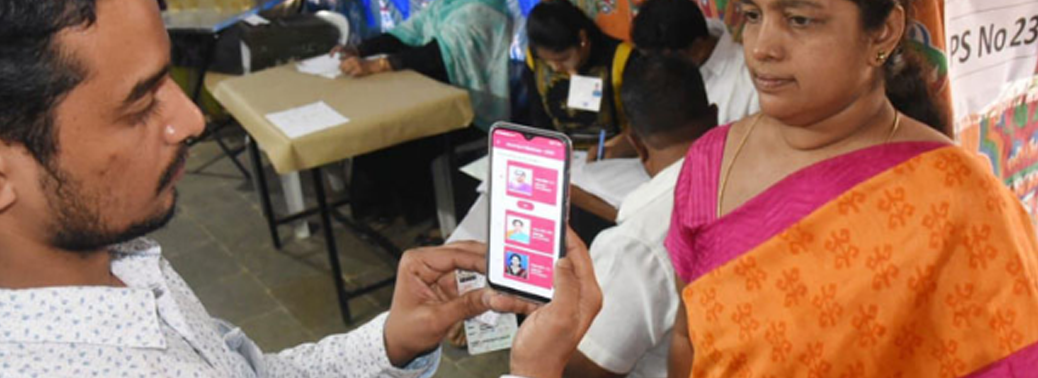
Why in News?
- Telangana’s State Election Commission (SEC) has decided to use facial recognition app for verification and real-time authentication of voters (pilot basis) in the upcoming local body elections.
- The use of facial recognition for election will be a first-of-its-kind in India. It will help to counter impersonation by voters during polling.
Key Points:
- The facial recognition is proposed as an additional tool to validate the identity of the voter.
- This technique will be used as an add on to the existing procedures which includes use of Photo Electoral Rolls, Photo Id Proof, Personal Scrutiny by the polling agents appointed by the contesting candidates.
Proposed Procedure for Facial Recognition:
- The polling officer-in-charge will possess the mobile phone which contains the facial recognition system. The app will display results of the verification based on the match established with the voters with an Appropriate Message.
- However, non-verification from this procedure shall not be a sufficient ground to deny voting rights to any voter.
- Further, the photographs taken will not be stored or used for any other purpose. These photographs will be erased from the memory of the mobile phone used in the polling station and also the server.
FEMALE FOETICIDE:
04, Feb 2020

Context:
- Recently, Punjab’s Department of Health and Family Welfare became the first state to hire a detective agency to Check Female Foeticide.
What is Female Foeticide?
- Female foeticide refers to ‘aborting the female in the mother’s womb’.
- The active methods of killing girls through selective sex abortion and passive methods like discrimination in care and nutrition are used to eliminate the girl child.
- Sex ratio in India stand at 940 in 2011 and child sex ratio has shown more continuous decline since 1961 but more alarming after 1991.
Reasons Behind Prevalence of Female Foeticide:
- The Indian society generally shows cultural bias against women.
- Any kind of investment in girl’s education and empowerment is considered as investment in failed enterprise. Their physical security is added responsibility on the family.
- Practice of dowry puts extra burden on the parents and all these results into general preference for son and girl foeticide and Infanticide.
Impact of Female Foeticide:
- The low sex ratio resulting from female foeticide which are manifesting themselves in various ways like
- Trafficking of women for sexual work and marriage. Such marriages are not sustainable because of cultural differences and results into instances of physical, mental and sexual abuse of the bride.
- Increased crimes against women like sexual harassment, lewd remarks against women, and instances of eve teasing.
Steps taken to stop it:
- PCPNDT Act (Pre- Conception and Pre-Natal Diagnostic Technique Act-1994)was enacted to ban the use of sex selection techniques before and after conception and prevent the use of prenatal diagnostic techniques for selective abortion.
- Beti Bachao Beti Padhao (BBBP): This programme have been launched to ensure survival, protection and empowerment of girls by eliminating the differential in the sex ratio, infant mortality rate and improving their nutritional and education status.
- Sukanya Samridhi Yojana: It is acomponent of BBBP programme aims to ensure equitable share of the girl child in family savings. The savings can be used for the education of girl child and her marriage, thus helping in the empowerment of girl and reducing the economic burden that families face at the time of marriage.
- Balika Samriddhi Yojana:It is a scholarship scheme designed to provide financial support to young girls and their mothers who are below the poverty line. The key objective of the scheme is to improve their status in society, increase the marriageable age of girls and improve the enrolment as well as retention of girls in schools.
Way Ahead:
- Implementation of laws has been the big issue in India and many violators have been left scot-free. So, PCPNDT Act should be stringently implemented.
- The attitudes of the people towards girl child should be changed by creating awareness for bringing socio-cultural changes.
- Ensure participation of various religious groups, social organizations and education system to not only teach but practise the value of Gender Equality.
THINKING BEYOND FARM SOPS
01, Feb 2020
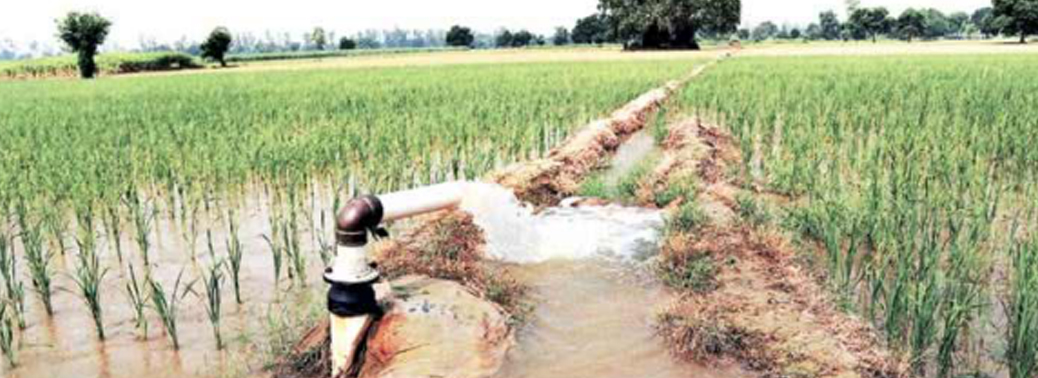
Why in News?
- The recent slowdown of the economy and other associated factors has made a devastating impact on the agriculture sector. So, this article suggests few of the measures to counter that impact in primary sector.
Background info:
- The year 2019 witnessed a series of interventions and disruptions in the farm sector.
- The First Half of the year saw the launch of a grand farm sop in the form of the Pradhan Mantri Kisan Samman Nidhi (PM-KISAN) but the second half, however, was a disaster for the sector as many parts of the country witnessed drought and floods.
- This Clearly Reflects Two Things:
1. Populist measures have a low bearing on the economy.
2. Despite several measures to reduce vulnerability of climate-induced disasters, the farm sector and farmers continue to suffer losses.
- Agriculture is a crucial segment for inclusive development and provides stimulus to the economy, especially when it is not doing too well.
- Since the country has several targets and commitments to be achieved in the next decade, it is imperative to lay a strong foundation by launching measures that can stem falling farm growth.
- Therefore, taking cognisance of past experience and leveraging on opportunities that exist is a must to boost agriculture.
Some of the measures to address issues in Agriculture sector are as follows:
1. Addressing Subsidiary Sectors of Agriculture:
- The disparity in agriculture expenditure and growth drivers, mainly the subsidiary sectors, must be addressed.
- Despite higher growth in livestock and fisheries sector, only moderate to low expenditure was Recorded.
- Expenditure on livestock and fisheries must be increased, as they are mainly connected with resource-poor families in rural areas and also to raise the decelerating growth rate.
2.Increased Expenditure on R&D:
- The expenditure on research and development in agriculture needs to be raised from nearly 0.40% of agriculture GDP to 1% as it pays huge dividends in the long run in ameliorating poverty and improving livelihoods compared to Any Other Investment.
3. Expanding “Climate Smart Villages” on Pan- India Basis:
- Considering India’s dependency on agriculture and recurring climate-induced disasters, it is imperative to expand the implementation of Climate Smart Villages of the Indian Council of Agricultural Research-National Innovations on Climate Resilient Agriculture (NICRA) across the nation.
4. Strengthening FPOs:
- The Farmer Producer Organisations (FPOs), which are currently facing operational and structural issues governed by different Acts and funded by various sources, may be strengthened by bringing them under one institution, preferably an FPO Development and Regulatory Authority.
5.Harnessing Digitalization:
- A structured impetus must be given to build block chain based e-market places connecting farmers, traders, agencies, institutions and exporters on a common platform to check price fluctuations and harness decentralization.
- Further, affordable technologies must be developed and deployed particularly in rural and remote areas where digital literacy of farmers has improved considerably.
6. Scale up sustainable practices in Agriculture:
- Large-scale investment in agriculture over several years has encouraged monoculture, threatening the environment and soil health (mainly in green revolution areas).
- Thus small-scale investment measures or an incentive-based system is essential to scale up sustainable practices such as agro-forestry, climate-smart agriculture, ecosystem services, conservation agriculture and others.
7. Harness Private investments:
- Increasing corporate social responsibility will help to tap more private investments besides encouraging private players in potential areas where production sustainability is possible.
8. Institutionalize Data Collection:
- The government must establish a farm data agency, which can consolidate, collate and maintain farm data available at various platforms.
- The farm data agencies can also facilitate beneficiaries identification, better targeting of subsidies, support systems of various developmental programmes.
- Access to farm agency data for scientific institutions and all other relevant stakeholders can hasten the process of technology dissemination and aid research systems for better policies.
9.Develop “Ease of farming index”:
- Commissioning ease of farming index is necessary to ascertain the progress made by national and State governments on the key indicators of farming.
- The exercise can be done with active involvement of proven private/public institutions or international agencies.
- This exercise may foster cooperative and competitive federalism besides encouraging States which are lagging behind to catch up.
10. Create a National level institution for Oversight:
- A national agricultural development council on the lines of the Goods and Services Tax Council under the chairmanship of Prime Minister for effective coordination and convergence of States on key reforms and Policies.
11. Establish farmers’ welfare commissions:
- Welfare Commission farmers’ welfare commissions (both at the Centre and State level), as an independent institutional mechanism which will act as a neutral platform for assessing all agriculture-related issues and schemes.
- Involvement of centrally-funded research organisations as knowledge partners would help to coordinate and refine existing developmental schemes in agriculture and allied sectors.
12. A specialized cadre for Agriculture:
- It is pertinent to deliberate on an ‘Indian Agricultural Service’ on the lines of the Agricultural Research Service of the United States Department of Agriculture. In addition, to deal effectively with increasing droughts and floods and other extreme events, transfer of some subjects to the concurrent list is of prime importance.
Conclusion:
- In the era of global uncertainty and domestic glitches, we need well-tailored farm measures beyond short-run sops to balance the national requirement with the farmer’s aspirations.
- Thus, the right mix of direct benefits and price support with focused investment on resource conservation will bring stability in a farmer’s income.
ESSENTIAL COMMODITIES ACT IS OUTDATED, MUST GO, SAYS ECONOMIC SURVEY
01, Feb 2020
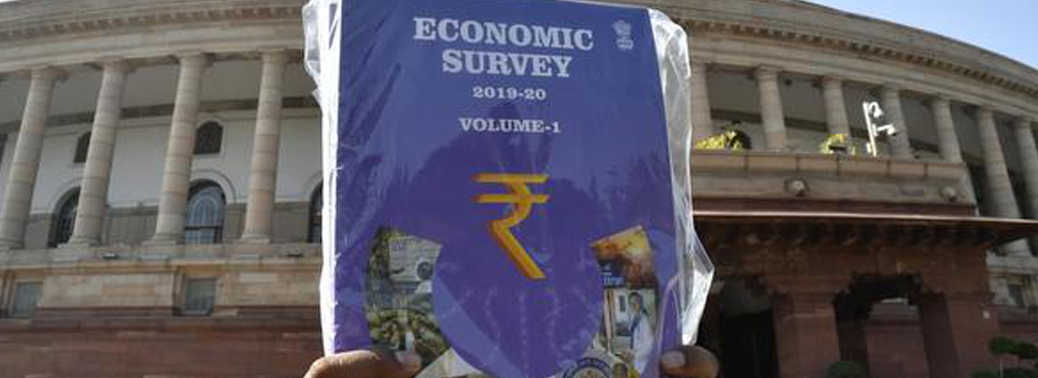
Why in News?
- The recent Economic Survey 2019-20 has found that the Centre’s imposition of stock limits in a bid to control the soaring prices of onions over the last few months has actually resulted in increased price volatility.
About Essential Commodities Act, 1955:
- India is a market economy where prices are ostensibly decided by demand and supply, certain laws empower the Centre to intervene in the market to protect consumer interests. The Essential Commodities Act (ECA) is one such key law.
- The Essential Commodities Act, 1955 is used by the Government to regulate the production, supply and distribution of a whole host of commodities, which it declares as ‘essential’ in order to make them available to consumers at fair prices.
- The list of items under the Act includes drugs, fertilisers, pulses and edible oils, and petroleum and petroleum products. The Centre can include new commodities as and when the need arises, and takes them off the list once the situation improves.
How does the law works?
- If the Centre finds that a certain commodity is in short supply and its price is spiking, it can notify stock-holding limits on it for a specified period.
- The States act on this notification to specify limits and take steps to ensure that these are adhered to.
- Anybody trading or dealing in a commodity, be it wholesalers, retailers or even importers are prevented from stockpiling it beyond a certain quantity.
- A State can, however, choose not to impose any restrictions. But once it does, traders have to immediately sell into the market any stocks held beyond the mandated quantity. This improves supplies and Brings Down Prices.
- State agencies can conduct raids to get everyone to toe the line and the errant are punished. The excess stocks are auctioned or sold through fair price shops.
The Recent Findings:
- The recent findings of the Economic Survey 2019-2020 is a part of report against anachronistic legislations and interventionist government policies such as Essential Commodities Act (ECA) and others including drug price control, grain procurement and farm loan waivers.
- In September 2019, the Centre invoked the ECA Act’s provisions to impose stock limits on onions after heavy rains wiped out a quarter of the kharif crop and led to a sustained spike in prices.
- Although the restrictions on both retail and wholesale traders were meant to prevent hoarding and enhance supply in the market, the Survey showed that there was actually an increase in price volatility and a widening wedge between wholesale and retail prices.
- This is due to the fact that ECA act fails to differentiate between hoarding and Storage.
- The report found that lower stock limits must have led the traders and wholesalers to offload most of the kharif crop in October itself which led to a sharp increase in the volatility from November, 2019, onwards.
- The Survey argued that if the government had not intervened, traders would have stored part of their produce to ensure smooth availability of the commodity at stable prices throughout the year.
- Thus in the long term, the Act disincentivises development of storage infrastructure, thereby leading to increased volatility in prices following production/ consumption shocks — the opposite of what it is intended for.
- The report finds that the ECA has been enacted in the year 1955, when the economy was ravaged by famine and food shortages. The government should note that today’s scenario is much more different.
Similar Examples:
- The Survey argued that the Drug Price Control Order issued under the ECA also distorted the market and actually made medicines less affordable.
- Estimates showed that the prices of drugs that came under DPCO, 2013, increased ₹71 per mg of the active ingredient, in comparison to just ₹13 per mg for drugs unaffected by the order.
Way Forward:
- Farmers should be given ample rights to sell any quantity of their produce to anybody, both domestic and international and at any time.
- The Essential Commodities Act, which has proven a disincentive to large investment in agricultural technology and infrastructure, should be replaced with a modern statute that balances the interests of farmers and consumers.
- A law should be formulated that restricts the powers of the Department of Consumer Affairs or Director-General of Foreign Trade to impose curbs on any agricultural commodity at the slightest instance of price rise.
- Only the Parliament should have the right to impose curbs on agricultural commodities that too under exceptional circumstances of war or nationwide calamity as opposed to executive orders issued in “Public Interest”.
NOT A DROP TO WASTE
01, Feb 2020

Context:
- India has become a food surplus country from a food deficient country, but led to the increased pressure on Groundwater Reserves.
What does the Report Says?
- The green revolution has made India a food surplus country from a food deficient country. However, these benefits have come at the cost of increased pressure on groundwater reserves.
- This crisis is also reflected in NITI Aayog’s “Composite Water Management Index” (CWMI), which held that 21 Indian cities, including Delhi, Chennai and Bengaluru, will run out of groundwater.
- It also noted that not only there is a quantitative crunch but 70% of India’s water resources are contaminated.
What is Government’s Response?
- In this context, the government constituted an integrated ministry called Jal Shakti Ministry.
- The Jal Shakti Ministry has recently launched Atal Bhujal Yojanawhich aims at improving groundwater management.
About Atal Bhujal Yojana:
- It is a World Bank-funded, Central Sector Schemeaimed at improving groundwater management and restoring the health of the country’s aquifers.
- It seeks to strengthen the “institutional framework of administering groundwater resources and aims to bring about behavioural changes at the community level for sustainable groundwater resource management”.
- The scheme will be implemented in seven states — Gujarat, Haryana, Karnataka, Maharashtra, Madhya Pradesh, Rajasthan and Uttar Pradeshwhich are over-exploited and water-stressed areas of the country.
- The Atal Bhujal Yojana seeks to revive village-level Water User Associations(WUAs). The scheme will strengthen the financial state of the WUAs, including allowing these bodies to retain a significant portion of irrigation fees.
- WUAs are created by Groundwater Management and Regulation Scheme 2013.
- According to the CWMI, less than 50% of states involve the WUAs in critical groundwater management decisions like those pertaining to irrigation resources.
Why Ground water is Depleted?
- India is the world’s largest user of groundwater, where groundwater contributes to more than 60% of the Country’s Irrigation Resources.
- In India nearly 2/3rd net sown area is rain-fed. Therefore, in order to provide farmers with adequate irrigation facilities, the government provides power to the agriculture sector at highly subsidised rates. This accounts for the over-extraction of groundwater.
- Also, investment in canal networks has been long-neglected. It has led to over-Exploitation and fast-depleting water tables.
- This over-extraction of groundwater is non-renewable since recharge rates are less than extraction rates and replenishing this resource can take thousands of years.
- Moreover, as climate change alters the monsoon, the large stresses on India’s groundwater resources may increase.The decision to focus on the groundwater crisis is significant because its over-exploitation is contributing to “the worst water crisis” in India’s history.
Way Forward:
- By emphasising on local-level institutions like the WUAs, the Atal Bhujal Yojana has signalled the inclination towards persuasive solutions. However, a lot more than, mere persuasion is required. For example:
- Ways must be found to balance the demands of farmers with the imperatives of reviving the country’s aquifers.
- One solution tried out in parts of Punjab, to gradually reduce subsidies and offer cash compensation to farmers for every unit of electricity they save. This can be emulated in other states as well.
- The CWMI report talks of other solutions like persuading farmers to adopt more Efficient Technologies such as Drip Irrigation.
- The government should promote alternatives to Water-Intensive Crops. For example, Maize requires only one-third of water than paddy.
- States can draw inspiration from community water managementwhich is followed in Andhra Pradesh which has already shown how aquifer management and sharing of bore wells can ensure equitable distribution of water.
- Finally, there is a need to set up National Water Commission, with multidisciplinary expertise including in hydrology (surface water), hydrogeology (groundwater), meteorology (atmosphere), river ecology, agronomy, environmental economics and participatory resource management.
KARNATAKA ANTI-SUPERSTITION LAW
31, Jan 2020

Why in News?
- A controversial Anti-Superstition Law in Karnataka was formally notified by the Current Government.
Provisions of the Earlier Drafts:
- The law, which was initially drafted as the Karnataka Anti Superstition Bill, 2013, was a pet project of former CM Siddaramaiah.
- The model Bill held human dignity as its central tenet and sought eradication of irrational practices found in different communities.
- The first draft made practices like inflicting self-wounds and conversion through bribery illegal.
- Some of the proposals opposed by religious leaders and political parties in the early draft were the ban on practices such as the carrying of priests in palanquins, worshipping the feet of religious leaders.
- It sought to ban Made Snana practised in the Dakshina Kannada region where Dalits roll over the remains of food consumed by upper castes.
The Current Version:
- A Bill with sizable consensus across the political spectrum finally evolved in 2017. A total of 16 practices have been banned under the law.
- The practice of Vaastu, astrology, pradakshina or circumambulation of holy places, yatras, parikramas performed at religious places were kept out of the purview of the law.
- Made Snana was banned under the law with respect to having Dalits roll over leftover food.
- The practice has now been modified to be voluntary and not involving leftover food.
- Practices such as barring menstruating women from entering houses of worship and their homes, coercing people to take part in fire-walks, and beating up people by declaring them evil, are among the irrational practices that have been banned under the 2017 law.
Penalties:
- The law stipulates “imprisonment for a term which shall not be less than one year but which may extend to seven years and with fine which shall not be less than five thousand rupees but which may extend to fifty thousand rupees”, as punishment for violations.
- The law is to Implemented by the state police with the appointment of vigilance officers under the law at Police Stations.
CITIZEN-CENTRIC SERVICES OF NCRB
30, Jan 2020
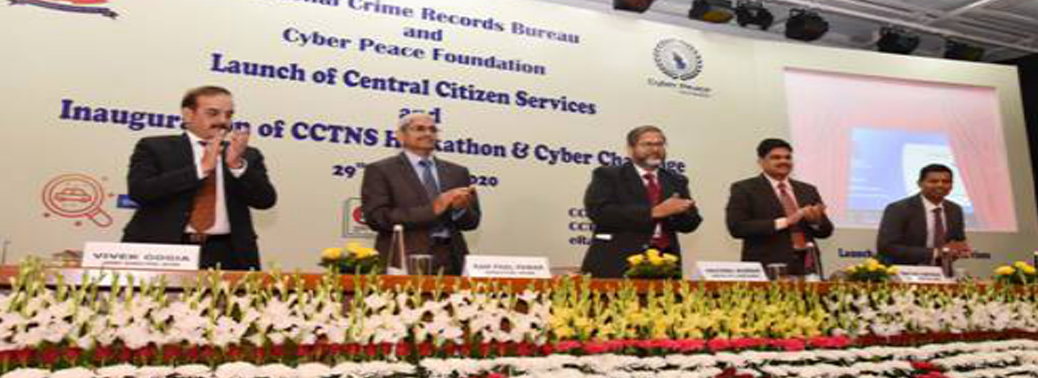
Why in News?
- Recently, the National Crime Record Bureau (NCRB)has launched various police-related citizen-centric services on the Crime and Criminal Tracking Network and Systems (CCTNS)
About NCRB:
- NCRB was set-up in 1986 under the Ministry of Home Affairs (MHA)to function as a repository of information on crime and criminals so as to assist the investigators in linking crime to the perpetrators.
- It is headquartered in New Delhi.
- It was set up based on the recommendations of the National Police Commission (1977-1981)and the MHA’s Taskforce (1985).
- It was constituted by merging the Directorate of Coordination and Police Computer (DCPC), Inter-State Criminals Data Branch of CBI, Central Finger Print Bureau of CBI and Statistical Branch of BPR&D.
- NCRB brings out the annual comprehensive statistics of crime across the country through ‘Crime in India’ report.
- Being published since 1953, the report serves as a crucial tool in understanding the law and order situation across the country.
- It developed CCTNS in 2009which interconnects approximately 15000 police stations and 6000 higher offices across the country.
- CCTNS digitizes data related to FIR registration, investigation and charge sheets in all police stations leading to the development of a national database of crimes and criminals.
Key Highlights of the Initiatives:
1.Missing Person Search:
- Citizens can search for their missing kin in this user-friendly portal, against the national database of the recovered unidentified found person/dead bodies.
- This will benefit the relatives of missing persons because all details including photos are available in CCTNS and will be accessible to citizens through this portal.
2.Generate Vehicle NOC:
- It allows citizens to ascertain the status of a vehicle before its second-hand purchase to know if it is suspicious or clean from police records.
- One can generate and download the relevant No Objection Certificate (NOC) after searching against the National database on vehicle’s details. NOC is required by the Regional Transport Office before the transfer of ownership.
3.CCTNS Hackathon and Cyber Challenge 2020:
- NCRB and Cyber Peace Foundation (global civil society organisation and think tank of cyber security and policy experts) have designed it together.
- The Hackathon aims to enhance skills and deepen understanding of the police personnel at ground level to adopt smart strategies for effectively addressing the evolving threats and to promote coordination with industry and academia.
- The Challenge invites the participation of law enforcement personnel across all ranks and file, as well as cyber security experts (civilians) across India.
4.NCRB and National Centre for Missing and Exploited Children (NCMEC),
- USA has signed a Memorandum of Understanding (MoU) to receive information on child pornography or such related material originating from India.
- NCMEC is a non-profit organization established by the United States Congress.
- It has a centralized reporting system by which internet service providers across the world or intermediaries like Facebook, YouTube, etc. can report about persons who circulate images of Child Pornography.
5.Cyber Tip line Monitoring Facility
- It is a centralised system for reporting Online Exploitation of Children.
- The public and electronic service providers can make reports of suspected online enticement of children for sexual acts, molestation, pornography, sex tourism, sex trafficking, unsolicited obscene materials sent to a child, misleading domain names and misleading words or digital images on the internet.
Significance of the Initiatives:
- They are being launched in order to promote ‘Ease of Living’ among citizens.
- Such services are being provided through the state-citizen portals so far but now these are being launched centrally for the First Time.
CENTRE, ASSAM GOVT. SIGN ACCORD WITH BODO GROUPS
29, Jan 2020
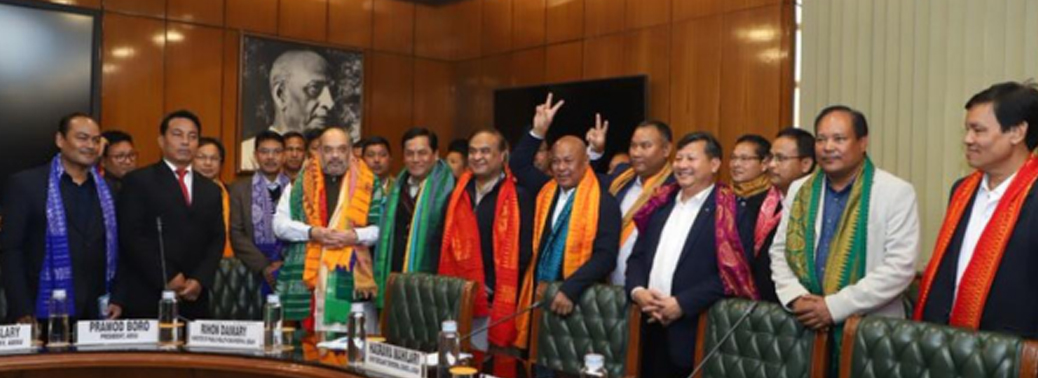
Why in News?
- In a significant step to end violence, a tripartite agreement has been signed by the Bodo led by National Democratic Bodo Front, Union government and State government of Assam.
- This agreement will pave the way for reorganization of Bodoland Territorial Administrative District into wider Bodoland Territorial Region.
Background:
- Assam is a hot-bed of regionalism and sub-regionalism as result of pluralistic nature of the society comprising of various ethnicities.
- Assam consists of Bramhaputra valley dominated by Assamese speaking populace and Cachar region dominated by Bengali-speaking people.
- As a result, ethnicity-based imbalances in a plural but fragmented society has led to assertion of sub-regional identities hinging on issues like control over land, exploitation of resources from outsiders, unemployment and lack of development etc.
- Bodoland represents one such ethnicity-based regionalistic undercurrent in Assam society.
Bodoland Issue in brief:
- Bodos are plain-dwelling tribes, with a distinct ethnicity and language’, inhabiting the Bramhaputra valley in western Assam.
- In 1962 Assamese was declared the official language of Assam and was made medium of instruction in the universities. Fearing the dominance of Assamese speaking populace, Bodos have been asserting their identity for a separate state Bodoland since 1970s.
- The demand was to create Bodoland carving out Kokrajhar, Dhubri, Bongaigaon, Barpeta, Nalbari, Kamrup, Darang and Sonitpur districts of Assam.
- However, it should be noted that the Bodos are divided from within which has led to violent insurgent movements and consequent communal clashes.
Violent movements and formation of Bodoland Territorial Area District:
- This movement got fillip after the Assam Accord was signed in 1985. Accordingly the Bodoland movement with the slogan “divide Assam 50-50” was launched in 1987 under the leadership of All Bodo Students’ Union.
- In addition, a violent separatist movement was also launched at the time led by Bodoland Security Force.
- Responding to the Bodoland Movement, the Assam government signed Bodo Accord in 1993 leading to the creation Bodoland Autonomous Council.
- Inspite of signing the accord, due to intra-factional differences the issue was not resolved and violent movement continued to exis spearheaded by National Democratic Bodoland Force.
- Another attempt at inducing peace was made in 2003 when Bodo Territorial Area District was carved out under the 6thSchedule with 4 districts namely Kokrajhar, Chirang, Baksa and Udalguri.
- However this has also not resolved the issue.
Why this issue could not be Resolved:
- The Bodo Territorial Area District is inhabited by
- 1.Bodos who constitute 30%
- 2.Non-Bodos including Muslims, Assamese and Bengali Hindus, Koch Rajbongshis and Adivasis who together constitute 70%.
- As a result whenever there have been attempts to reconcile with Bodos (1993 and 2003), the other groups have not responded.
- There has also been an issue of exclusion of nearby Bodo inhabited regions into the Bodo Territorial Council. (Exclusion Factor).
- This has resulted in worst communal clashes between Bodos and Non-Bodos frequently.
The Tripartite agreement: Bodo Peace Accord 2020:
- The current Peace Accord will reorganize the present Bodoland Territorial Area District into a wider Bodoland Territorial Region.
- The Bodoland Territorial Region will include Bodo-dominated villages presently outside the BTAD and will exclude the areas dominated by non-Bodo population.
- Amnesty to National Democratic Bodoland Force (NDFB).
- A sports university and job-oriented Higher-Education Institution
- Besides Bodos living in the hills would be granted Scheduled Hill Tribe status.
Concern with this New Treaty:
- The main problem with the current Peace Accord is that the negotiations included only 4 faction of Bodos.
- The non-Bodo stakeholders in Bodoland Territorial Administrative districts including Adivasis, Koch Rajbongshis etc. have been excluded. Denying the benefits which have been given to them will create discontent among them, which may develop into violence again.

BODOLAND DISPUTE
28, Jan 2020
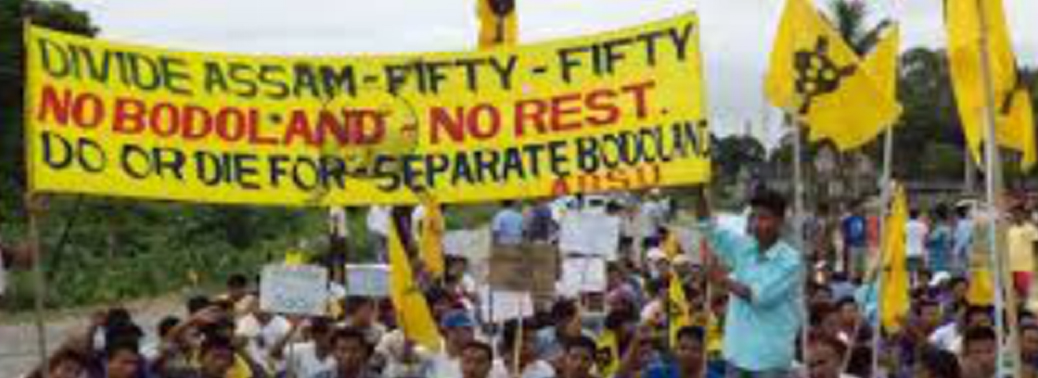
Why in News?
- A historic agreement between Government of India, Government of Assam and Bodo representatives to end the over 50-year old Bodo crisis was signed Recently.
About the Bodoland:
- Bodos are the single largest tribal community in Assam, making up over 5-6 per cent of the state’s population. They have controlled large parts of Assam in the past.
- The four districts in Assam — Kokrajhar, Baksa, Udalguri and Chirang — that constitute the Bodo Territorial Area District (BTAD), are home to several Ethnic Groups.

- The Bodos have had a long history of separatist demands, marked by armed struggle.
- In 1966-67, the demand for a separate state called Bodoland was raised under the banner of the Plains Tribals Council of Assam (PTCA), a political outfit.
- In 1987, the All Bodo Students Union (ABSU) renewed the demand. “Divide Assam fifty-fifty”, was a call given by the ABSU.
- The unrest was a fall out of the Assam Movement (1979-85), whose culmination — the Assam Accord — addressed the demands of protection and safeguards for the “Assamese people”, leading the Bodos to launch a movement to protect their Own Identity.
- Many riots and killings were happened regarding the dispute and more than lakhs of people were displaced.
Key Highlights of the Agreement:
- Increase the scope and powers of the Bodo Territorial Council (BTC) and to streamline its functioning.
- Set up a commission under Section 14 of the Sixth Schedule to the Constitution of India, to recommend the inclusion or exclusion of tribal population residing in villages adjoining Bodoland Territorial Area Districts (BTAD) areas.
- The Government of Assam will establish a Bodo-Kachari Welfare Council.
- The Assam government will also notify Bodo language as an associate official language in the state and will set up a separate directorate for Bodo medium schools.
- Promote and protect Bodo’s social, cultural, linguistic and ethnic identities.
- Providing legislative protection for the land rights of Tribals.
- A Special Development Package Rs. 1500 crores over three years will be given by the Union Government to undertake specific projects for the development of Bodo areas.
- Rehabilitate members of National Democratic Front of Bodoland (NDFB) factions (With this agreement, over 1500 armed cadres will abjure violence and join the mainstream).
FUNDS CRUNCH HITS MGNREGA EXECUTION
28, Jan 2020
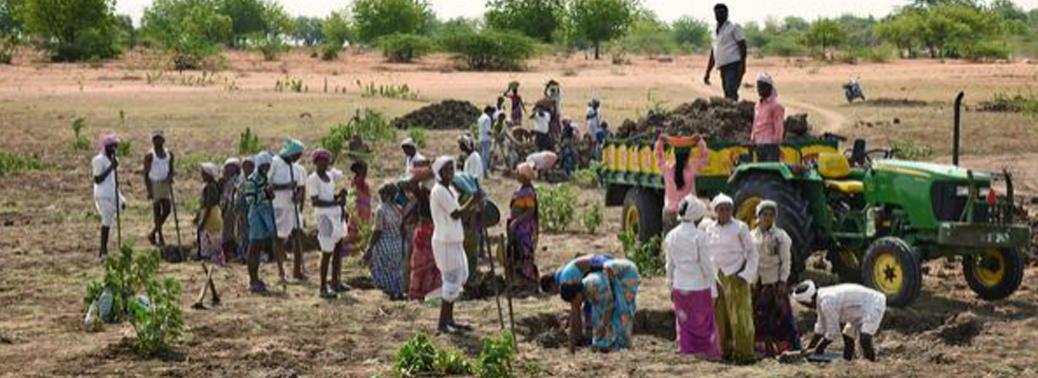
Why in News?
- The biggest employment generating Programme, Mahatma Gandhi National Rural Employment Guarantee Act (MGNREGA) scheme has received a serious setback due to financial crunch.
- More than 96% of the allocated money has already been spent or is needed to pay pending dues, with less than ₹2,500 crores left to sustain the scheme for the next two months.
Key Concerning Points:
- According to the scheme’s financial statement, Rajasthan has the highest negative net balance followed by Uttar Pradesh.
- January, February and March are months with little agricultural activity and rural workers move towards other employment opportunities but the scheme doesn’t have financial resources to pay them.
- In Rajasthan, worker’s wages have not been paid from past several months as the centre has not released the funds which violate the spirit of the Act and principles of right based implementation of the scheme.
- The Central Employment Guarantee Council which is responsible for a central monitoring and evaluation system for the scheme has not met in the last two years despite it being mandatory to hold a meeting every six months.

About Mahatma Gandhi National Rural Employment Guarantee Act (MGNREGA):
- Mahatma Gandhi National Rural Employment Guarantee Act (MGNREGA), is Indian labour law and social security measure that purposes to guarantee the “Right to Work”.
Objective of the act:
- The main objective of the Act is to enhance livelihood security in rural areas by providing at least 100 days of guaranteed wage employment in a financial year to every household whose adult members volunteer to do unskilled manual work.
Problems Associated MGNREGA:
- MGNREGA is perhaps the most ambitious anti-poverty scheme launched anywhere in the world. However, the scheme has shown several anomalies when it comes to effective implementation.
1.Low wage rate-MGNREGA wage rate cannot be less than the minimum agricultural wage rate of the state. The low wage rates have resulted in a lack of interest among workers in working for MGNREGA schemes, making way for contractors and middlemen to take control, locally.
2.Insufficient Budget Allocation-The funds have dried up in many states due to lack of sanctions from the Central government which hampers the work in peak season.
3.Regular Payment Delays-Despite the order of the Supreme Court and initiatives and GO (Government Order) by the Union Ministry of Finance, no provision has yet been worked out in the MIS for calculation of full wage delays and payment of compensation for the same.
4.Corruption and Irregularities-The scheme is marred by the corrupt practices like the actual funds that reach the beneficiaries are very little compared to the funds allocated for the welfare schemes.
5.Discrimination-The cases of discrimination against the women and people from the backwards groups are reported from several regions of the country.
6.Non-payment of unemployment allowance-But, a huge number of unemployment allowances being shown in the Management Information System (MIS) currently.
7.Inadequate awareness– There is a lack of awareness among the public for this scheme and the government needs to work for more awareness and rights of the people especially women.
8.Poor infrastructure building-The issue of poor quality of assets.
9.Non- purposive spending- MGNREGA has increased the earning capacity of the rural people but the spending pattern of the workers assumes significance because there is hardly any saving out of the wage earned from MGNREGS.
Way Ahead:
- Social auditing-social audits of the scheme should be carried out as per rules and there should be an effective implementation of the provisions of the delay compensation system.
- Compensation: Under the scheme’s compensation clause, agencies responsible for the delay are expected to pay 0.05% of wages per day after closure of muster roll. This should be properly adhered to.
- Participation of Women:The participation of women must be increased through raising awareness about MGNREGA.
- Proper utilization of Funds:The Department of Rural Development should Analyse reasons for efficient utilisation of funds and take steps to improve the same. In addition, it should initiate action against officers found guilty of misappropriating funds under MGNREGA.
- Regular monitoring:The frequency of monitoring by National Level Monitors (NLMs) should increase and appropriate measures should be taken by states based on their recommendations.
- The National Level Monitors (NLMs) are deployed by the Ministry of Rural Development for regular and special monitoring of MGNREGA and to enquire into complaints regarding mis-utilisation of funds, etc.
- Training of functionaries: Training and capacity building of elected representatives and other functionaries of PRIs must be done regularly as it will facilitate their Involvement in the implementation of MGNREGA.
ICDS PROGRAMME
27, Jan 2020

Why in News?
- Centre seeks to revamp the ICDS scheme in urban areas. For this NITI Aayog will develop draft policy, which will be circulated to the Ministries for consultations.
Integrated Child Development Services (ICDS):
- The ICDS is a government programme in India which provides food, preschool education, primary healthcare, immunization, health check-up and referral services to children under 6 years of age and their mothers.
- The scheme was launched in 1975, discontinued in 1978 by the government of Morarji Desai, and then relaunched by the Tenth Five Year Plan.
- Tenth FYP also linked ICDS to Anganwadi centres established mainly in rural areas and staffed with frontline workers.
- The ICDS provide for anganwadis or day-care centres which deliver a package of six Services Including:
- Immunization
- Supplementary nutrition
- Health Check-up
- Referral services
- Pre-school education(Non-Formal)
- Nutrition and Health information
Implementation:
- For nutritional purposes ICDS provides 500 kilocalories (with 12-15 grams of protein) every day to every child below 6 years of age.
- For adolescent girls it is up to 500 kilo calories with up to 25 grams of protein every day.
- The services of Immunisation, Health Check-up and Referral Services delivered through Public Health Infrastructure under the Ministry of Health and Family Welfare.
Revamp for Urban Areas:
- Health and ICDS models that work in Rural Areas may not work in urban areas because of higher population density, transportation challenges and migration.
- Children in urban areas were overweight and obese as indicated by subscapular skinfold thickness (SSFT) for their Age.
- The first-ever pan-India survey on the nutrition status of children, highlighted that malnutrition among children in urban India.
- It found a higher prevalence of obesity because of relative prosperity and lifestyle patterns, along with iron and Vitamin D deficiency.
- According to government data from 2018, of the 14 Lakh Anganwadis across the country there are only 1.38 Lakh Anganwadis in urban areas.
ASPIRANTS WITH CRIMINAL PAST SHOULD NOT GET TICKETS
27, Jan 2020

Why in News?
- Supreme Court has agreed to examine the recent proposition made by the Election Commission of India (ECI) to restrict political parties from Giving Tickets to Aspirants with Criminal Antecedents.
Proposal of ECI:
- EC has submitted that as of now, 46% of Members of Parliament has criminal records. So, in order to further curb this menace, it has approached the Supreme Court for further action.
- The proposal of the ECI is that court should direct political parties to not to give party tickets to aspirants with criminal background.
- A contempt petition has also been filed for not complying with the past judgment of a Constitution Bench (2018), which had directed political parties to publish the pending criminal cases against their candidates online.
Requisites of a Candidate with Criminal Background:
- Candidates with criminal antecedents are required to publish information in this regard in newspapers and through Television channels on three occasions during the campaign period.
- A political party that sets up candidates with criminal antecedents is also required to publish information about criminal background of its candidates, both in its website and also in newspapers and Television channel on Three Occasions.
What does the RPA say on this?
- Currently, under the Representation of Peoples (RP) Act, lawmakers cannot contest elections only after their conviction in a criminal case.
- Representation of the People (RP) Act, 1951 disqualifies a person convicted with a sentence of two years or more from contesting elections. But those under trial continued to be eligible to contest elections. The Lily Thomas case (2013), however, ended this unfair Advantage.
Efforts by SC in this Regard:
- The SC has been repeatedly expressing its concern about the purity of Legislatures.
- In 2002, in the Union of India v Association for Democratic Reforms Judgement, it was made obligatory for all candidates to file an affidavit before the returning officer, disclosing criminal cases pending against them.
- The famous order to introduce NOTA was intended to make political parties think before giving tickets to the tainted.
- In its landmark judgment of March 2014, the SC accepted the urgent need for cleansing politics of criminalisation and directed all subordinate courts to decide on cases involving legislators within a year, or give reasons for not doing so to the chief justice of the high court.
- The 2018 ruling by a Supreme court Bench concluded that rapid criminalisation of politics cannot be arrested by merely disqualifying tainted legislators but should begin by “cleansing” the political parties.
What is the way out?
- There are three possible options.
- One, political parties should themselves refuse tickets to the tainted.
- Two, the RP Act should be amended to debar persons against whom cases of a heinous nature are pending from contesting elections.
- Three, fast-track courts should decide the cases of tainted legislators quickly.
Other Suggested Measure to Curb Criminalization of Politics:
- Bringing greater transparency in campaign financing is going to make it less attractive for political parties to involve gangsters.
- The Election Commission of India (ECI) should have the power to audit the financial accounts of political parties, or political parties’ finances should be brought under the right to information (RTI) law.
- Broader governance will have to improve for voters to reduce the reliance on criminal politicians.The Election Commission must take adequate measures to break the nexus between the criminals and the politicians.
- The forms prescribed by the Election Commission for candidates disclosing their convictions, cases pending in courts and so on in their nomination papers is a step in the right direction if it Applied Properly.
INDIA SLIPS TWO PLACES IN “GLOBAL CORRUPTION PERCEPTION INDEX”
24, Jan 2020
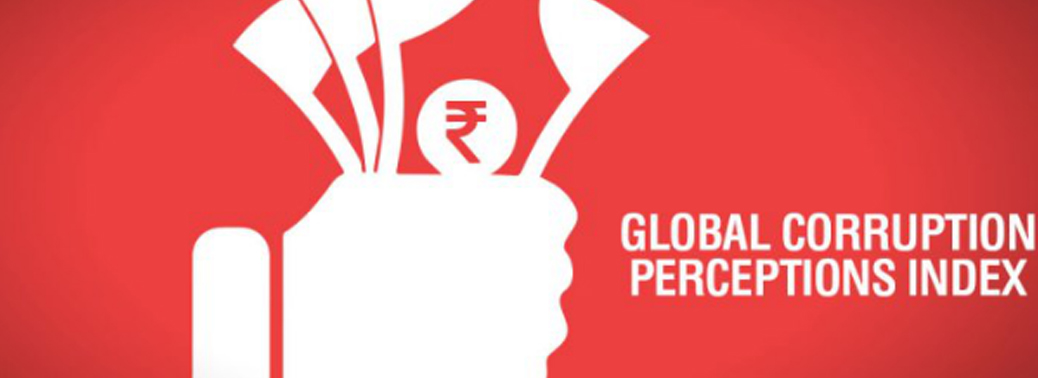
Why in News?
- Transparency International – a German based NGO has released its 2019 edition of “Global Corruption Perception Index”.
About the Index:
- The CPI draws on surveys and expert assessments to rank countries by their perceived levels of public sector corruption.
- The index measures public sector corruption in 180 countries and territories.
- It uses a scale of 0 to 100, where 0 is highly corrupt and 100 is very clean.
Key findings of the Report:
1.Global Level:
- The top ranked countries are New Zealand and Denmark, with scores of 87 each, followed by Finland (86), Singapore (85), Sweden (85) and Switzerland (85).
- The countries ranked at the bottom of the list are Somalia, South Sudan and Syria with scores of 9, 12 and 13.
2. Regional Level:
- In the Asia Pacific region, the average score is 45, after many consecutive years of an average score of 44, which “illustrates general stagnation” across the region.
- Despite the presence of high performers like New Zealand (87), Singapore (85), Australia (77), Hong Kong (76) and Japan (73), the Asia Pacific region hasn’t witnessed substantial progress in anti-corruption efforts or results.
- Low performers like Afghanistan (16), North Korea (17) and Cambodia (20) continue to Highlight serious challenges in the region.
3. Indian Scenario:
- India slips two places on Global corruption perception index by ranking 80th in 2019. India was ranked 78th in 2018. Its score of 41 out of 100 remains unchanged.
- The report questions the “unfair and opaque political financing” prevailing in our country.
- The report has observed that in democracies like India, unfair and opaque political financing, undue influence in decision-making and lobbying by powerful corporate interest groups, has resulted in stagnation or decline in the control of corruption.
- The report reveals that corruption is more pervasive in countries where big money can flow freely into electoral campaigns and where governments listen only to the voices of wealthy or well-connected individuals.
- Many countries see economic openness as a way forward, however, governments across the region, continue to restrict participation in public affairs, silence dissenting voices and keep decision-making out of public scrutiny.

Way Forward:
- To make real progress against corruption and strengthen democracy around the world, Transparency International calls on all Governments to:
- strengthen the Institutions Responsiblefor maintaining checks and balances over political power, and ensure their ability to operate without intimidation;
- close the Implementation gapbetween anti-corruption legislation, practice and enforcement;
- support civil society Organisationswhich enhance political engagement and public oversight over government spending, particularly at the local level;
- support a Free and Independent Media,and ensure the safety of journalists and their ability to work without intimidation or harassment.
About Transparency International:
- Transparency International, an international non-governmental organization which is based in Berlin, Germany was founded in 1993.
- It is a non-profit purpose is to take action to combat corruption and prevent criminal activities arising from Corruption.
- Other report published by Transparency International is Global Corruption Barometer.
EXAMINING SUB CATEGORIZATION OF OTHER BACKWARD CLASSES (OBCS)
23, Jan 2020

Why in News?
- Cabinet has approved the Extension of term of the commission constituted to examine the issue of Sub-categorization within other Backward Classes.
About the News:
- Article 14of the Constitution guarantees equality before the law which means un-equals cannot be treated equally.
- Measures are required to be taken for the upliftment of un-equals to bring them on par with the advanced classes.
- In view of this, the National Commission for Backward Classes (NCBC)proposed the sub-categorization of Other Backward Classes (OBCs) back in 2015.
- In exercise of the powers conferred by Article 340of the Constitution, the President appointed a commission to examine the issue of sub-categorization of OBCs, to ensure social justice in an efficient manner by prioritizing the Extremely Backward Classes (EBCs).
What does Article 340 says?
- The President may by order appoint a Commission consisting of such persons as he thinks fit to investigate the conditions of socially and educationally backward classes within the territory of India.
Objectives of the Commission:
- To examine the extent of inequitable distribution of benefits of reservation among the castes or communities included in the broad category of Other Backward Classes with reference to such classes included in the Central List.
- To work out the mechanism, criteria, norms and parameters in a scientific approach for sub-categorization within such Other Backward Classes.
- To take up the exercise of identifying the respective castes or communities or sub-castes or synonyms in the Central List of Other Backward Classes and classifying them into their respective sub-categories.
Why it is Needed?
- At present, there is no sub-categorization and 27% reservation is a Monolithic Entity.
- Sub categorization of the OBCs will ensure that the more backward among the OBC communities can also access the benefits of reservation for Educational Institutions and Government Jobs.
What are its Significances?
- The Government’s efforts to achieve greater social justice and inclusion for all, and specifically members of the Other Backward Classes.
- The Union Cabinet’s decision to set up a commission to examine the issue of sub-categorization of the Other Backward Classes speaks to the long years of failure in effectively preventing large sections of the creamy layer from taking advantage of the quota system to the detriment of the poorer sections among their own caste groups.
- In effect, the Union government is now seeking to ensure a more equitable distribution of reservation benefits by further differentiating caste groups coming under backward classes on the basis of their levels of social and Economic Backwardness.
“DEMOCRACY INDEX” OF THE ECONOMIST INTELLIGENCE UNIT
23, Jan 2020
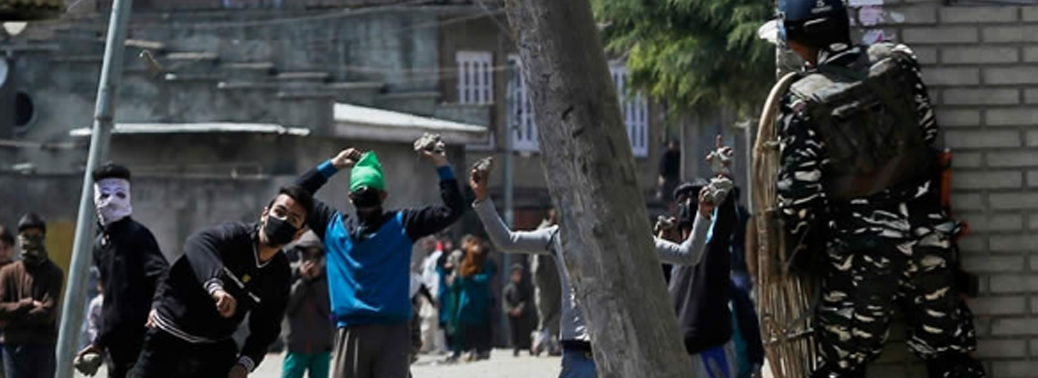
Why in News?
- The latest edition of the “Democracy Index” was recently released by The Economist Intelligence Unit— the research and analysis division of The Economist Group, which is the sister company to The Economist newspaper.
About Democracy Index:
- The report records how global democracy fared, analysing 165 independent states and two territories.
- This Index is based on Five Categories:
1. Electoral Process And Pluralism
2. Civil Liberties
3. The Functioning Of Government
4. Political Participation
5. Political Culture.
- Based on their scores on 60 indicators within these categories, each country is then itself classified as one of four types of regime: Full Democracy; Flawed Democracy; Hybrid Regime; and Authoritarian Regime.
Key Findings of the Report:
- India drops 10 ranks to 51st position in the Democracy Index in 2019.
- India was graded in electoral process and pluralism (8.67), government functioning (6.79), political participation (6.67), political culture (5.63) and civil liberties (6.76).
- India’s overall score fell from 7.23 to 6.9, on a scale of 0-10, within a year (2018-2019) — the country’s lowest since 2006.
- In the Asia and Australasia region, India ranks eighth, behind Taiwan and Timor-Leste.
- The report talks about the repeal of both Article 370 and Article 35A, deployment of large number of troops in J&K and placing local leaders under house arrest by the Government.
- The survey attributes the primary cause of “the democratic regression” to “an erosion of civil liberties in the country.
- The average global score also recorded its worst value ever, down from 5.48 in 2018 to 5.44, driven by a sharp regression in Latin America and Sub-Saharan Africa, a lesser one in the Middle East and North Africa (MENA) region, and by stagnation in the remaining regions that were covered.
Categorisation of Democracy:
- The Index also categorises India under “Flawed Democracies”,countries that hold free and fair elections and where basic civil liberties are respected, but have significant weaknesses in aspects of democracy, such as problems in governance, an underdeveloped political culture and low levels of political participation.
- According to the report, there are only 22 “full democracies” as compared to 54 “authoritarian regimes” and as many “flawed democracies,” that include the U.S.
SUPREME COURT QUESTIONS THE POWER OF DISQUALIFICATION HELD BY SPEAKER
23, Jan 2020
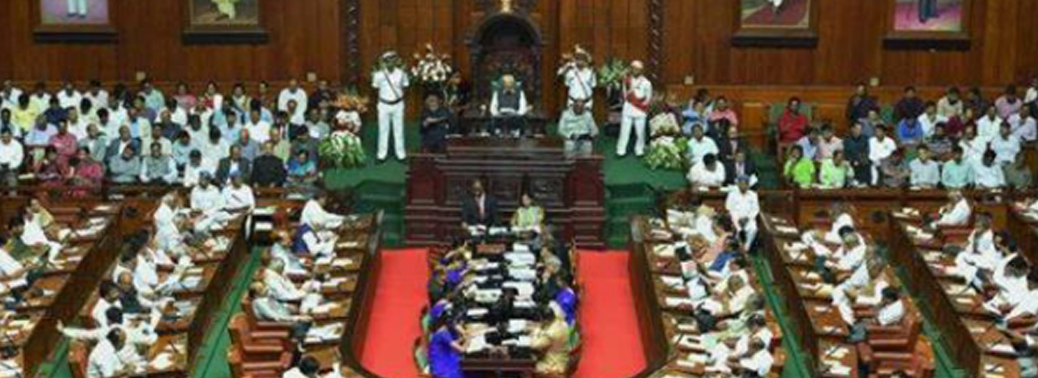
Why in News?
- The Supreme Court has recently held that disqualification petitions under the tenth schedule should be adjudicated by a body/mechanism outside the Parliament or Legislative Assemblies.
Proposal of the Supreme Court:
- The Court has suggested for setting up a permanent tribunal headed by a retired Supreme Court judge or a former High Court Chief Justice as a new mechanism to adjudicate cases under tenth schedule. (This would require an amendment to the Constitution).
- The court has also observed that since the speaker is itself a part of the parliament, he cannot be completely shielded from the political pressures. Currently, disqualification of members of a House/Assembly is referred to the Speaker of the House/Assembly.
- However, for the present, the court said the Speakers should decide Tenth Schedule disqualifications within a “reasonable period”. What is ‘reasonable’ would depend on the facts of each case.
- The Court held that unless there are “exceptional circumstances”, disqualification petitions under the Tenth Schedule should be decided by Speakers within three months.
Rationale behind the Supreme Court’s Proposal:
- The Supreme Court questioned why a Speaker, who is a member of a particular political party and an insider in the House, should be the “sole and final arbiter” in the disqualification of a political defector.
- For that matter, it asked why disqualification proceedings under the Tenth Schedule should be kept in-house and not be given to an “outside” authority. It reasoned that even the final authority for removal of a judge is outside the judiciary and in Parliament.
- The Court held that only swift and impartial disqualification of defectors would give “real teeth” to the Tenth Schedule.
Powers held by Speaker with regard to Anti-Defection Law:
- Any question regarding disqualification arising out of defection is to be decided by the presiding officer of the House.
- After Kihoto Hollohan case (1993), the Supreme Court declared that the decision of the presiding officer is not final and can be questioned in any court. It is subject to judicial review on the grounds of malafide, perversity, etc.
Other Info:
- This is the second time in recent months the court has highlighted the issue of taking away the disqualification power under the Tenth Schedule from Speakers.
- In the Karnataka MLAs’ disqualification case, the court had held that a Speaker who cannot stay away from the pressures and wishes of his political party does not deserve to occupy his chair.
NLU REPORT ON DEATH SENTENCE
20, Jan 2020
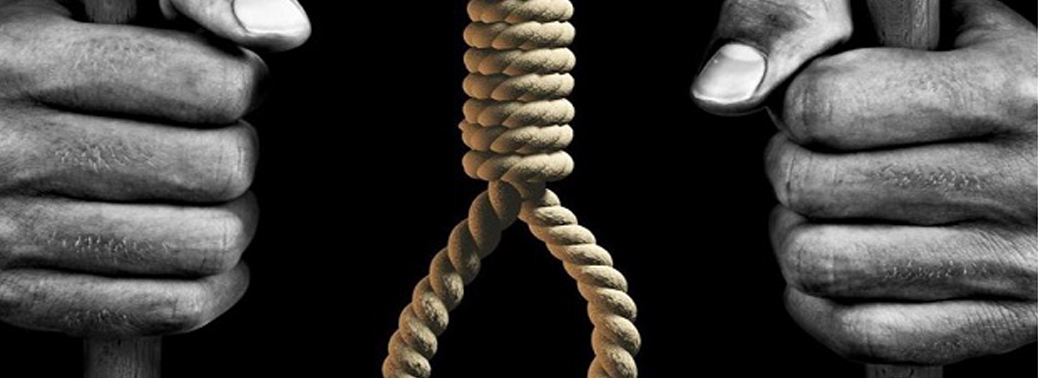
Why in News?
- The fourth edition of ‘The Death Penalty in India: Annual Statistics’ was published by Project 39A of National Law University (NLU), Delhi recently.
Key Findings of the report:
- The report states that higher number of death sentences awarded in India in recent years relates to the cases of sexual offences. The number of death sentences awarded for murders involving sexual offences in 2019 was the highest in four years.
- Trial Courts: Imposed 102 death sentences in 2019. The percentage of sexual offences in these cases increased from 41.35% in 2018 to 52.94% in 2019.
- High Courts:38% of cases of confirmations of death sentences involved sexual offences along with murder.
- Supreme Court:In 2019, the SC dealt with 27 capital punishment cases, the highest number since 2001. It confirmed the death penalty of seven cases out of which four were of murder involving sexual offences.
- Warrants Issued:Six death warrants were issued in 2019 against one in 2018, with all warrants eventually stayed by the courts.
Reasons Stated for the rise in death penalty against sexual offences:
- Amendment to the Protection of Children from Sexual Offences (POCSO) Act, introducing stringent mandatory minimum punishments and death penalty for penetrative sexual assault on children was a major development.
- Andhra Pradesh’s amendment to the Indian Penal Code to introduce the death penalty for rape under Disha Act.
- Widespread discussions on capital punishment in 2019 involving sexual offences against women and children.
About National Law University:
- It was established in 2008 under the National Law University Act, 2007 with the objective of imparting comprehensive and Interdisciplinary Legal Education.
Project 39A:
- It is inspired by Article 39-A of the Indian Constitution, a provision that furthers the intertwined values of equal justice and equal opportunity by removing economic and social barriers.
- Using empirical research to re-examine practices and policies in the criminal justice system, Project 39A aims to trigger new conversations on legal aid, torture, DNA forensics, mental health in prisons, and the death penalty.
KERALA CHALLENGES CONSTITUTIONALITY OF CAA
18, Jan 2020

Why in News?
- Kerala has become the first state to move the Supreme Court challenging the Citizenship (Amendment) Act, 2019 (CAA, 2019).
About Citizenship Amendment Act, 2019:
- The Citizenship (Amendment) Act, 2019 seeks to provide citizenship to illegal migrants from Buddhist, Hindu, Sikhs, Jain, Parsi and Christian faiths, who have come to India from the neighbouring countries of Afghanistan, Pakistan and Bangladesh, on or before 31stDecember, 2014.
Key Points regarding Kerala’s Petition:
- The suit has been filed under Article 131 of the Constitution. Under Article 131, the Supreme Court has “original” jurisdiction in disputes between States or the Centre and State(s). The Article allows the court to directly take cognisance of such a dispute.
- Kerala has said in its suit that it would be compelled under Article 256 to comply with the CAA, which it considers manifestly arbitrary, unreasonable, irrational and violative of fundamental rights.Article 256 of the Constitution states that the executive power of every State shall be so exercised as to ensure compliance with the laws made by Parliament.
- Thus, there exists a dispute, involving questions of law and fact, between the State of Kerala and the Union of India, regarding the enforcement of legal rights as a State and as well for the enforcement of the fundamental, constitutional and other legal rights of the inhabitants of the State of Kerala.
- The Kerala Government has asked for the law to be declared unconstitutional and in violation of:
- Article 14 (Equality Before Law),
- Article 21 (Protection of life and Personal Liberty) and
- Article 25 (Freedom of conscience and Free Profession, Practice, and propagation of religion).
- It has also sought directions to declare the Passport (Entry into India) Amendment Rules, 2015, and Foreigners (Amendment) Order, 2015, to be “ultra vires the Constitution of India and to be void”.
CAA (vs) International Obligations:
- As per the petition, the amendments also violate India’s international obligations under:
1. Universal Declaration of Human Rights:
- Which Provides that everyone has the right to seek and enjoy in other countries asylum from persecution.
- Which Provides that everyone has the right to a nationality and that no one shall be arbitrarily deprived of his nationality nor denied the right to change his nationality) and
2. The International Covenant on Civil and Political Rights:
- which provides that all persons are equal before the law, that all persons are entitled without any discrimination to the equal protection of the law and that the law shall prohibit any discrimination.
Article 131 of the Constitution (Original Jurisdiction of the Supreme Court):
- The Supreme Court has original jurisdiction in any dispute:
- Between the Government of India and one or more States; or
- Between the Government of India and any State or States on one side and one or more other States on the other; or
- Between two or more States.
Supreme Court’s Stand on Article 131:
- There have been two conflicting judgments from the Supreme Court on whether a State can file an original suit under Article 131 to challenge the constitutionality of a central law.
- The first judgment reported in 2012 – State of Madhya Pradesh (vs) Union of India – held that States cannot challenge a central law under Article 131.
- The second judgment – State of Jharkhand (vs) State of Bihar – took the opposite view in 2015 and referred the question of law to a larger Bench of the Supreme Court for final determination. Kerala’s plaint relies on this verdict.
How Article 132 is different from Article 32?
- Unlike the original jurisdiction under Article 32 (which gives the Supreme Court the power to issue writs, etc.), the jurisdiction in Article 131 is exclusive, meaning it is only the Supreme Court which has this authority. Under Article 226, the High Courts too have the power to issue writs, directions etc.
MANDATORY GOLD HALLMARKING NORMS IN INDIA
18, Jan 2020
Why in News?
- The Department of Consumer Affairs has released the notification regarding mandatory hallmarking of Gold jewellery & artefacts in India.
- Gold Hallmarking is a purity certification which started in 2000. Earlier, it was optional for the jewellers and thus only 40% of gold jewellery was getting Hallmarked.
Key Points of the Notification:
- The notification will make hallmarking of gold jewellery mandatory from January, 2021.
- The jewellers have been given one year time to register with the Bureau of Indian Standards (BIS)and clear their stocks if not hallmarked yet.
- Hallmarked gold jewellery will be only in three grades – 14-carat, 18-carat and 22-carat instead of current availability of ten grades. It will contain four marks: BIS mark, purity in carat, assay centre’s name and jewellers’ identification mark.
- The rule is applicable only on sales by retailers and not to consumers. However, it is available for consumers who want to get their old jewellery hallmarked.
- Anybody found violating the provision, will have to pay a minimum fine of Rs 1 lakh or 5 times the price of the article.
- The government had informed about these hallmarking norms to the World Trade Organisation (WTO), which will help exporters get to know the changes in advance in importing country like India.
Reasons for Gold Hallmarking:
- India is the world’s largest importer of gold, with annual imports of 700-800 tonne.
- The mandatory hallmarking will protect the public against lower caratage and ensure consumers do not get cheated while buying gold ornaments.
- It will also help to get the purity as marked on the ornaments. It will bring in transparency and assure the consumers of Quality.
- The new system will weed out anomalies and corruption in the system of manufacturing of Jewellery.
About Bureau of Indian Standards (BIS):
- BIS is the National Standard Body of India for the harmonious development of the activities of standardization, marking and quality certification of goods.
- The Bureau of Indian standards (BIS) Act, 2016 establishes BIS as the National Standards Body of India.
- BIS (Hallmarking) Regulations, 2018 under the BIS act calls for Hallmarking of:
- Gold jewellery and gold artefacts
- Silver jewellery and silver artefacts
- Penal provisions for better and effective compliance have been made stringent under BIS (Hallmarking) Regulations, 2018
SC TELLS GOVERNMENT TO REVIEW ORDERS CURBING BASIC RIGHTS IN J&K
13, Jan 2020
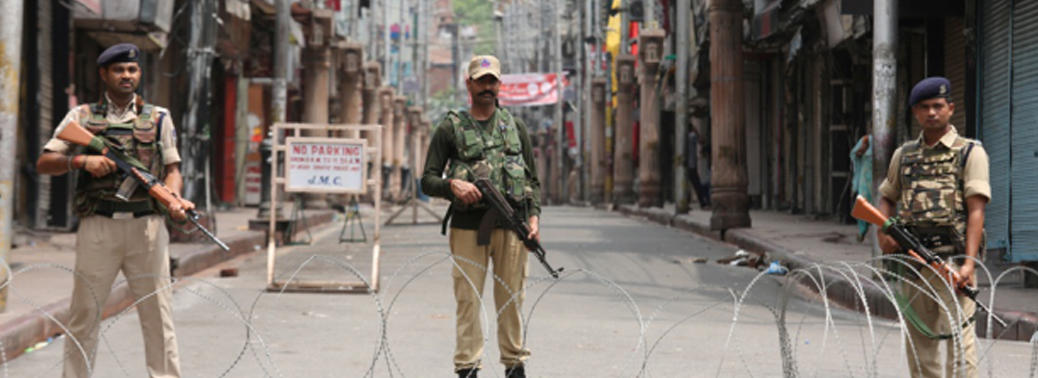
Why in News?
- Supreme Court has recently declared that the fundamental right to freedom of speech and expression and the right to carry on trade or business using the Internet are constitutionally protected. This judgment came in the backdrop of the five-month-long Internet shutdown in Kashmir.
What did the SC order?
- SC directed the government to review orderssuspending Internet services in the erstwhile State instantly and held that any order suspending the Internet found to violate the law should be revoked at once.
- The Court also asked Home Ministry for justification and reason for internet shutdown and whether the action was proportionate to the imminent threat to law and order.
- The Court said that expression through the Internet has gained contemporary relevance and is one of the major means of information diffusion and laid out essential guidelines that Internet shutdowns cannot be Arbitrary and can be challenged in court of law.
- The Court also instructed the government to consider restoring government websites, localised/limited e-banking facilities, hospital services and other essential services in areas in the Union Territory, where it was otherwise not thinking to do so immediately.
Legal Framework in India to suspend Internet services:
- The Information Technology Act, 2000, The Criminal Procedure Code (CrPC), 1973 and The Telegraph Act, 1885 are the three laws that deal with suspension of Internet services.
- The government in 2017 notified Temporary Suspension of Telecom Services (Public Emergency or Public Service) Rules, 2017under Telegraph Act to suspend internet.
- Before 2017, Internet suspension orders were issued underSection 144 of PC, which empowers a district magistrate, a sub-divisional magistrate or any other executive magistrate to issue orders to prevent and address urgent cases of apprehended danger or if they believe immediate prevention or speedy remedy is desirable to control the situation.
Does the Government still use section 144 of Cr.PC. for internet shutdown?
- Despite the 2017 rules, the government has often used the broad powers under Section 144 to shutdown internet.
- Amid protest in the country against Citizenship Amendment Act, District Magistrates are using section 144 in many districts for temporary suspension of internet.
- However, no order passed under Section 144 can remain in force for more than two months from the date of the order, unless the state government considers it necessary. Even then, the total period cannot extend to more than six months.
- The court recognised that Temporary Suspension of Telecom Services (Public Emergency or Public Service) Rules, 2017 are the only procedureto be followed to suspend Internet services in the occurrence of a “public emergency” or for it to be “in the interest of public safety”.
About Temporary Suspension of Telecom Services Rules, 2017
- As per 2017 Rules, the competent authorityto issue an order under the Suspension Rules are:
- In ordinary circumstances, would be the Secretary to the Ministry of Home Affairs.
- By the Secretary to the State Government in-charge of the Home Department in the case of a State Government,
- And in unavoidable circumstances, where obtaining of prior direction is not feasible, such order may be issued by an officer, not below the rank of a Joint Secretary to the Government of India, who has been duly authorised by the Union Home Secretary or the State Home Secretary.
- If the order for suspension of telecom services has been issued by the officer authorised by the Union Home Secretary or the State Home Secretary, then such order must be confirmed by the competent authority within 24 hours of issuing such order.
- If the order is not confirmed within 24 hours by the competent authority, then the order shall cease to exist. The orders to suspend internet shall contain reasons for such direction and a copy of such order shall be forwarded to the concerned Review Committee latest by next working day.
- The Central Government or the State Governments shall constitute a Review Committee. The Review Committee shall meet within five working days of issue of directions for suspension of services due to public emergency or public safety and record its findings whether the directions issued were as per rules and laws or whether they were arbitrary.
HOME MINISTRY ISSUES REVISED NORMS FOR DATA-LED PROBES
11, Jan 2020

Why in News?
- The Ministry of Home Affairs has issued revised guidelines to streamline the process of seeking legal assistance from foreign countries in criminal matters. The revised guidelines will direct how data requests are processed in any Criminal Investigations.
About the Guidelines:
- The revised guidelines includes the process for issuing directives on drafting and processing letters of request, mutual legal assistance requests and service of summons, notices and other judicial documents.
- Most intermediaries and social media platforms such as Facebook, WhatsApp, Google, Yahoo!, Twitter and YouTube have their servers outside India. And thus Indian investigation agencies need to follow a particular procedure to access the data from these platforms.
- The revised norms have come in the backdrop of recently tabled Personal Data Protection Bill, 2019 in the parliament.
Key Points of the Revised Guidelines:
1. Criteria to seek Information from Foreign Countries:
- Before seeking information about a person’s e-mail account hosted on servers in foreign countries, investigating agencies will have to establish that it is linked to a crime.
2. Data Preservation:
- Data preservation is the key to the investigation of cyber-offences and those involving digital evidence.
- Accessing the internet through an Internet Service Provider (ISP) creates important records and other information such as customer records, connection information and stored data.
- These are very important evidence to prove the guilt intention of the Accused.
- Since this type of evidence can disappear quickly, it is important to get the data preserved through Appropriate Channels.
3. Place for Data Preservation:
- The G-8 24/7 Network allows law enforcement agencies to make urgent preservation requests of the digital data before it perishes.
- The request for data may be sent to the service provider or to the Central Bureau of Investigation (CBI) — the contact point for India with respect to G-8 24/7 Network.
4. Time Period:
- The requested country has to be informed about the time period for which the data is required.
- Such period shall be consented by the requested country.
- The transferred data shall be kept for no longer than the period required for the purpose for which it has been received and shall be returned to the requested country or deleted at the end of the period specified.
About G-8 24/7 Network:
The G8 24/7 provides for investigations involving electronic evidence that require urgent assistance from Foreign Law Enforcement.
Therefore, to enhance and supplement (but not replace) traditional methods of obtaining assistance, the G8 countries has created this network.
It is a new mechanism to expedite contacts between the Participating States or other autonomous law enforcement jurisdictions of a State.
It is a point to point network for urgent assistance in Cybercrime Matters.
MODEL CODE OF CONDUCT
09, Jan 2020
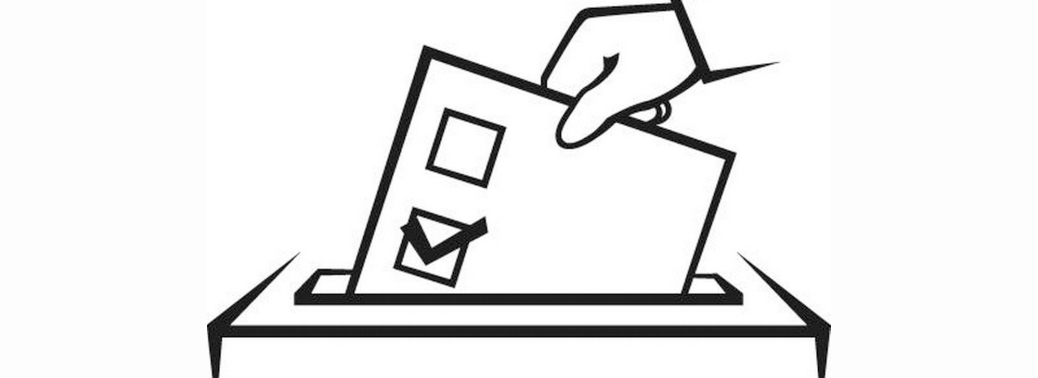
Why in News?
- The Election Commission of India on Monday announced the schedule for Delhi assembly elections. It would be a single-phase election for 70 assembly seats in Delhi on February 8 bringing the model code of conductinto Force.
Model Code of Conduct (MCC):
- The Model Code of Conduct for guidance of political parties and candidates is a set of norms which has been evolved with the consensus of political parties who have consented to abide by the principles embodied in the said code and also binds them to respect and observe it in its letter and spirit.
- The MCC is a set of guidelines issued by the Election Commission to regulate political parties and candidates prior to elections, to ensure free and fair elections. This is in keeping with Article 324 of the Constitution, which gives the Election Commission the power to supervise elections to the Parliament and state legislatures.
Why MCC is Needed?
- Free and fair elections form the bed rock of democracy. This envisages a level playing field for the contestants and an equal opportunity for all parties for presenting their policies and programmes to voters. In this context the Model Code of Conduct (MCC) gains relevance as it intends to provide a level playing field for all political parties, keep the campaign fair and healthy, avoid clashes and conflicts between parties, and ensure peace and order.
- It aims to ensure that the ruling party, either at the Centre or in the States, does not misuse its official position to gain an unfair advantage in an election.
Salient features of the Model Code of Conduct:
- The salient features of the Model Code of Conduct lay down how political parties, contesting candidates and party(s) in power should conduct themselves during the process of elections i.e. on their general conduct during electioneering, holding meetings and processions, poll day activities and functioning of the party in power etc.
Union of India v Harbans Sigh Jalal and Others:
- In the case of Union of India v Harbans Sigh Jalal and Others, Supreme Court ruled that Code of Conduct would come into force the moment the Election Commission issues the press release, which precedes the notification by a good two weeks.
- This ruling ended the controversy related to the dates of enforcement of MCC.
- Thus, the MCC remains in force from the date of announcement of elections till the completion of elections. It is applicable during Lok Sabha Elections, elections to State Legislative Assembly and also during by-elections.
- However, the MCC does not have statutory backingand it remains only guidelines to be followed during elections and to be executed by the Election Commission of India.
Duration of MCC:
- The Model Code of Conduct is enforced from the date of announcement of election schedule by the Election Commission and is operational till the processes of elections are completed.
Applicability of Code:
- During general elections to House of People (Lok Sabha), the code is applicable throughout the country.
- During general elections to the Legislative Assembly (Vidhan Sabha), the code is applicable in the entire State.
- During bye-elections, the code is applicable in the entire district or districts in which the Constituency Falls.
Whether a Minister can combine his official visit with Electioneering Work?
- No, The Ministers shall not combine their official visit with electioneering work and shall not also make use of official machinery or personnel during the electioneering work.
Whether Govt. can make transfers and Postings of Officials who are related to Election Work?
- There shall be a total ban on the transfer and posting of all officers/officials directly or indirectly connected with the conduct of the election.
- If any transfer or posting of an officer is considered necessary, prior approval of the Commission shall be obtained.
Recent Amendment to MCC:
- The Election Commission (EC) has amended the Model Code of Conduct (MCC) and has prohibited political parties from releasing their manifestos in the last 48 hours leading up to voting in each phase of the coming Lok Sabha elections.
- This change has been made in Part 8 of the MCC, which deals with poll manifestos. The EC’s decision stems from the recommendation of a 14-member committee set up to revisit the MCC.
TUSSLE OVER BELGAUM
06, Jan 2020
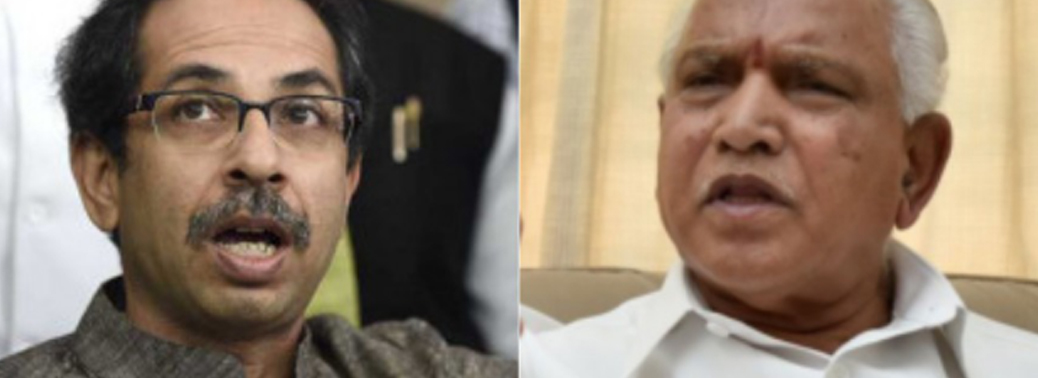
Why in News?
- The rising tension along the Maharashtra- Karnataka border recently has brought back the border dispute over Belgaum into limelight again. The border dispute between Maharashtra and Karnataka over Belagavi district is a longstanding issue. Let’s discuss the issue in brief in this article.
Background:
- After India’s Independence, there was demand for the formation of states on linguistic lines. Accordingly, the States Reorganization committee was formed. The Committee recommended for the formation of states on linguistic lines, while keeping in mind the administration efficiency.
- Based upon recommendations of this committee, Belgaum was included in the Karnataka State in the year 1956. This was done so, because in the year 1881, Kannada Speaking population comprised the majority and the Marathi speaking population comprised of only around 25%.
- Subsequently, the Maharashtra Government objected to the inclusion of Marathi-speaking areas under Karnataka and petitioned the Centre to set up a committee to look into the issue.

Arguments and Counter Arguments of Both States:
- Claims of Maharashtra:
- Maharashtra claims Belgaum district mainly on the grounds of geographical contiguity, relative linguistic majority and wishes of the people.
- It has also laid claim over Karwar (a city in Uttara Kananda District) where Konkani is spoken by citing Konkani as a dialect of Marathi.
- Maharashtra has also claimed these areas on historical grounds by pointing out that the revenue records in these areas were kept in Marathi during the British era.
- Stance of Karnataka:
- It has argued that the settlement of boundaries as per the States Reorganisation Act should be treated as final.
- The State argues that the issue would reopen border issues that have not been contemplated under the Act, and that such a demand should not be permitted.
Mahajan Committee on Border Dispute:
- Recommendations: In order to resolve the border dispute, the Central Government appointed Mahajan Committee in 1960.
- The committee recommended for the following:
1.Continued Inclusion of Belgaum city in Karnataka.
2.Around 247 villages/places from Maharashtra such as Sholapur should be transferred to Karnataka.
3.Around 264 villages/places from Karnataka such as Nippani, Khanapur should be transferred to Maharashtra
4.Transfer of Kasaragod District from Kerala to Karnataka. - Both Maharashtra and Kerala Government rejected the recommendations of the committee. The Maharashtra Government termed the report biased and insisted that the report is against the wishes of the people of Belgaum. On the other hand, Kerala Government refused to hand over Kasaragod.
ALL INDIA JUDICIAL SERVICE, A PANACEA FOR ALL
06, Jan 2020
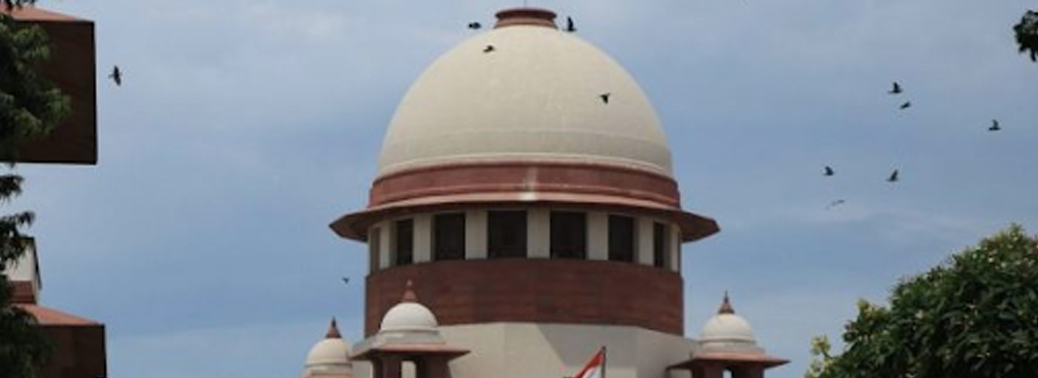
Why in News?
- NITI Aayog in its strategy document “Strategy for India@75”, had proposed for the creation of AIJS to bring about the Judicial Reforms and improve the Judicial Administration.
- However, an Independent think tank known as Vidhi Centre for legal Policy has recently opposed the creation of AIJS.
- The Debate regarding the Creation of All India Judicial Service has been lingering for almost 60 years in the backdrop of judicial reforms. There are both proponents and opponents to this idea of creating AlJS. This article discusses about the pros and cons of setting up AJIS in brief.
Present Process of Recruitment and Appointment of Judges:
Single Integrated Judiciary:
- Some of the Federal countries such as USA have adopted dual system of courts wherein the Federal courts decide on the Federal laws while the State courts decide on the State laws. Thus, in such countries, the Jurisdiction of the courts is well-defined. However, in case of India, In spite of being a Federal country, we have adopted single Integrated Judiciary.
Recruitment and Appointment of Judges:
- Presently, under the Indian Constitution, the Judges of the Supreme Court and High Court are appointed by the President.
- Whereas, under Article 233 and Article 234, the Judges at the district court and lower subordinate courts are appointed by the Governor in consultation with the concerned high court and State Public Service Commission.
- So, in case of India, even though we have adopted a single integrated judiciary, there is clear cut demarcation of powers with respect to appointment of Judges. While the Judges for the Supreme Court and High court are appointed by the Centre, whereas the Judges at the district courts and subordinate courts are appointed by the concerned State Governments.
All India Judicial Service (AIJS):
- The Idea of the AIJS is to have centralized recruitment mechanism for the appointment of the Judges at the district and subordinate courts. This is similar to the IAS and IPS wherein all India exams are conducted by UPSC and subsequently the successful candidates are appointed by the Centre and allocated to the different states.
- Similarly, in case of AIJS, the UPSC (or any other similar body) would conduct all India Judicial Service Examination for the appointment of District Judges and Judges at the subordinate courts.
Constitutional Provisions relating to AIJS:
- Under Article 312 of the Indian Constitution, the Rajya Sabha can pass a resolution supported by at least 2/3 of the members present and voting for the creation of new All India Service. Presently, the IAS and IPS are deemed to be all India Services.
- So, under Article 312, the RS has to pass resolution. It must be followed by the amendments to Article 233 and Article 234. However, since these amendments are not deemed to be constitutional amendments under Article 368 and hence approval of the state Governments is not needed for the creation of AIJS.
Proposals for AIJS
- The proposal for the creation of AIJS was first mooted by the Law commission in the year 1958. Further, in the recent times the Union Law Minister has constantly argued for the creation of AIJS.
- The NITI Aayog has also mooted the proposal for the creation of AIJS in its strategy document known as “Strategy for India @75”.
- Majority of the experts also opine that the creation of AIJS is one of the major Judicial reforms that can address the pendency of the cases before the lower Judiciary and it would improve the overall efficiency of the Judicial administration.
Why do We Need AIJS?
- The various problems existing with the Lower Judiciary (District Courts and Subordinate Courts) have raised the need for AIJS. So let’s have a brief look on the various problems existing in the lower judiciary.
- 1.Huge Pendency of Cases: Presently, there are around 3.5 crore cases which are pending across the different courts in India. Out of this, almost around 88% of the cases are pending before the Subordinate courts. This huge pendency of cases is leading to undue delay in the administration of the Justice and hence it is undermining the rule of Law.
- 2.Huge Vacancies in Lower Judiciary: According to the Economic Survey 2018-19, there are almost around 2,579 vacancies in the lower judiciary at the district courts and subordinate courts. Most of the state Governments are unable to fill up the existing vacancies and hence the lower judiciary is functioning below the sanctioned strength.
How the AIJS would help to Overcome the Existing Issues?
1.Timely Recruitment:
- In some of the states, the exams for the appointment for the appointment for the lower judiciary have not been held every year leading to huge vacancies. Once the AIJS is established, the UPSC would conduct exams annually and ensure that all the vacancies are filled up. Hence, setting up of AIJS would lead to timely recruitment of judges at the lower judiciary.
2.Uniformity in Judicial Administration:
- Presently, there are large scale differences among the states in term of number of the vacancies in the lower judiciary. In some of the states such as Maharashtra, the number of vacancies is quite less. However, in states such as UP there are almost 42% vacancies in the lower judiciary. The Creation of AIJS would help us solve this problem. This is so because once the exam results are announced, the candidates would be allocated to the different states based on the total number of vacancies. Thus, the AIJS would be able to bring about the Uniformity in the Judicial administration across the multiple states in India.
3.Improvement in Efficiency of Judicial Administration:
- The AIJS would attract the best talent in the country and hence it would be able to maintain high standards of Judicial administration.
4.Promote National Integration:
- The AIJS would be able to promote all-India outlook and promote the national integration. This is so because the candidates may be posted in states other than their own state. Hence, the Judicial officers can function beyond their regional and linguistic interest.
5.Beneficial to the states:
- Some of the states that are poor in human resources may not be able to find the best talent within their state for the recruitment of the judges at the lower judiciary. The AIJS would be able to solve this problem by conducting all India Exams and appointing the best talent from other states in such resource poor states.
6.Representation of Marginalized section:
- By following the reservation system in the recruitment, the underrepresented communities get represented in the judiciary. This makes the judiciary more diverse and to represent true democracy in decision-making.
Why AIJS is sternly opposed?
1.Goes against the Federalism:
- Presently, it is the responsibility of the state Governments to appoint the Judges at the lower Judiciary. Hence, any changes in the Judicial structure have to be approved by the State Legislatures. However, as discussed before, the AIJS can be established without any constitutional amendment wherein the prior approval of the State legislature is not needed.
2.Problem of Language:
- In pursuance of the powers vested with the state Governments in accordance with the Code of Criminal Procedure, most of the state governments have declared the local language to be the language of the court in the lower judiciary.
- Accordingly, most of the arguments and counter arguments in the lower judiciary are presented in the local regional language. Further, the witnesses also provide their statements in the local regional language. Hence, the Judges in the lower judiciary need to be proficient in the local regional language.
- However, once the AIJS is established, a person from one state may get appointed to another state and hence he may not be proficient in the local language. Hence, even though, such a person may be exceptionally talented, but the lack of proficiency of the regional language may act as a handicap. This is precisely the reason, some of the southern states have opposed the idea of AIJS.
3.Demoralize the State Judicial Service Officers:
- Presently, the state judicial officers appointed at the lowest cadre rise through the hierarchy and are promoted to be appointed as District Judges.
- Once the AIJS is established, the district Judges would be directly appointed and hence it would reduce the promotional avenues for the state judicial officers. Hence, some of the states have opposed the AIJS since it would demoralize the state judicial officers.
4.Unequal Representation of States in AIJS:
- Presently, in case of All India Services, there is a lack of uniform representation among states and there exists a domination of officers from certain states such as UP, Bihar, TN, AP etc.
5.Violates the sons of the Soil aspect.
IRDAI NORMS FOR STANDARD HEALTH COVER
04, Jan 2020

Why in News?
- The IRDAI has recently issued guidelines on standard individual health insurance to offer a product that can take care of basic health needs of customers with a maximum sum insured of ₹5 lakh and a minimum of ₹1 lakh.
- In order to make health insurance policies more transparent and inclusive, the IRDAI guidelines has been issued, which also standardize health insurance policies in our country.
Background Info:
- While the health space in India is witnessing changing technology and novel treatments, the health insurance policies have to increase their scope in order to keep apace.
- The health insurance sector in India is clogged with issues including lack of awareness about exclusion lists, claim denials, reduced payouts etc.
- In this backdrop, the Insurance Regulatory and Development Authority of India (IRDAI), has prepared guidelines to standardize health insurance policies in India.
- The major objective of these guidelines are to:
- Standardize Exclusion list
- Increase Transparency and
- Enhance Uniformity and Inclusiveness and
- Make them Consumer-friendly
Challenges in Health Insurance Products:
1. Non- inclusion of Modern Technologies:
- The Current Health Insurance Policies do not cover a number of novel treatments and medical procedures in case of critical illnesses.
- The ‘exclusion list’in most health insurance policies currently incorporates the novel medical procedures such as robotic surgery, hormone replacement therapy, balloon
- sinuplasty, oral chemotherapy, cyber knife, stem cell therapy including implants, laser surgery in case of cataract, dental treatment and other aesthetic surgeries.
- This increases the out-of-pocket expenditure of the patient.
2. Non-inclusion of New-age Diseases:
I. Life-Style Disorders:
- As a result of growing urbanization, changing lifestyles and nutrition transition, we are witnessing changes in the disease profile in the population with increasing lifestyle disorders including non-communicable diseases.
- Most insurance policies do not cover these lifestyle diseases such as infertility, obesity and other chronic degenerative, physiological diseases.
II. Non-communicable Diseases:
- Non-communicable diseases contribute to 61.8% of the disease burden in India today.
- Non communicable diseases such as hypertension, diabetes, cardio-vascular diseases etc covered under current insurance policies have high waiting periods and thus prove to be ineffective.
3. Lack of Transparency:
- One of the major concerns in health insurance sector in India is non-declarationor Misrepresentation of material facts in the policy contract.
- In addition, lack of Standard Terminologies, Ambiguous Wordingsin the policy contract discourages insurance penetration among consumers.
4. Pricing Mechanism
- The pricing mechanism of health insurance products is heavily dependent on a number of non-payables including non-medical consumables such as toiletries, cosmetics, administrative costs, room charges etc.
- Further the add-on features in the health insurance product significantly increase the price of the insurance product.
- Without the knowledge of non-payablesthe consumer end up paying more than expected increasing the out-of-pocket expenditure.
- This is a major hurdle for health insurance penetrationin India.
Guidelines for Standard Health Insurance Policy:
- In order to overcome the aforesaid challenges, the IRDA has released guidelines to be followed by insurance companies in India for designing a standard health insurance policy.
Main Features of the Guidelines:
1. Basic Cover
- The standard health insurance product should have a minimum basic sum insured of ₹1 Lakh and a maximum limit of ₹5 Lakh.
- The standard health insurance product standardizes entry-age to cover those in the age bracket 18-65years.
- This is aimed at increasing the health insurance penetration in India which is less than 20%.
2. Need-based Coverage:
- The standard health insurance product should a product with basic mandatory covers and no additional or add-on covers.
- This will standardize the pricing mechanism to a Great Extent.
3. Standardize Exclusion List
- In 2012 IRDA had released a standard exclusion list of 199 products.
- Now the regulator is set to streamline the exclusion list in order to minimize the items in the list.
- The exclusion list will have pre-decided list of diseases which are not covered under the product.
- Besides the exclusion list will be based on diseases and not treatments.
- Thus the ‘basic cover’ under the standard health insurance product will cover novel treatments like intensive care unit, treatment of Cataract, Dental Treatment, Plastic Surgery due to disease or injury etc.
4.Enhanced coverage including AYUSH:
- The standard medi-claim product must also include expenses incurred on treatment under Ayurveda, Unani, Siddha and Homeopathy subject to fixed and standard sub-limits.
5. Post and Pre hospitalization Expenses:
- The standard product should include pre-hospitalisation costs for a period of not less than 30 days prior to the date of hospitalisation and post hospitalization medical expenses incurred for a period of not less than 60 days from the date of discharge.
6. Incentive to Wellness
- The product will include incentives to wellness in General.
- This will be done through free regular health check-ups, disease management, fitness activities etc.
About IRDAI:
- Insurance Regulatory and Development Authority is an autonomous bodyresponsible for regulating insurance industry in India.
- IRDA is a statutory bodyset up under the IRDA Act, 1999.
- It is further entrusted with the responsibility of protecting the interests of the policyholders and increase insurance penetration in the country.
Main Functions:
- Frames regulations for insurance industry.
- Registrations of new insurance companies
- Monitoring insurance sector activities
- Licensing and establishing norms for insurance intermediaries
- Regulating and overseeing premium rates and terms of non-life insurance covers
- Ensuring the maintenance of solvency margin by insurance companies
- Ensuring insurance coverage in rural areas and of vulnerable sections of society.
THE NEED FOR A SINGLE ENERGY MINISTRY
03, Jan 2020

Why in News?
- There have been multiple proposals to the government to merge the various ministries that deals with energy sector.
- So, the existing scenario in the energy sector and factors favouring the unification of ministries are discussed in brief.
Existing issues in the Energy Sector:
1. Five different Ministries along with a multitude of regulatory bodies govern India’s Energy Sector:
- The ministries that are responsible for regulation of the energy sector are as follows:
- Ministry of Petroleum and Natural Gas (Regulators under the Ministry are – Directorate General of Hydrocarbons and Petroleum and Natural Gas Regulatory Board)
- Ministry of Coal
- Ministry of Power (Central Electricity Regulatory Commissions, DISCOMs)
- Ministry of New and Renewable Energy
- Department of Atomic Energy
2. Fragmented Data Collection:
- No single agency collects energy data in a wholesome and integrated manner for the energy sector in India.
- Data pertaining to consumption is barely available while supply side data is collected by agencies of respective ministries are riddled with gaps.
- Ministry of Statistics and Program Implementation collates data from various ministries and conducts surveys at sporadic intervals.
3. Energy Efficiency:
- Bureau of Energy Efficiency is the sole authority with the mandate to regulate energy efficiency on the consumption side. There is no agency for the same purpose on the supply side.
- This leads to problems such as:-
1.Problem of coordination
2.Suboptimal utilisation of resources
3.Undermining of efforts of energy security
4.Each ministry inadvertently promotes its own fuels over other choices, which may not always be the best option.
5.Turf wars between different ministries
6.Regulatory Cholesterol and Unease of doing business
- Thus, there is a need for Unified Energy Ministry.
Suggestions of NITI Aayog in Draft Energy Policy:
- NITI Aayog has advocated for a Unified Ministry of Energy to be created by merging Ministry of Petroleum and Natural Gas, Ministry of Coal, Ministry of New and Renewable Energy and Ministry of Power.
- The Department of Atomic Energy has been left out as a Independent Agency because of its strategic nature and involves issues of national security.
- The proposed ministry will have six agencies under it to handle various aspects of Energy Security:
1.Energy Regulatory Agency
2.Energy Data Agency
3.Energy Efficiency Agency
4.Energy Planning and Technical Agency
5.Energy Schemes Implementation Agency
6.Energy R&D agency
Advantages of a Unified Ministry:
- Integrated approach to energy security
- Quicker policy response
- Focus on both the supply side and demand side of energy sector
- Holistic collection of data and its management
Facts favouring unification of related Ministries:
1. Creation of Ministry of Jal Shaktiby integrating Ministry of Water Resources, River Development and Ganga Rejuvenation and Ministry of Drinking Water and Sanitation has led to:
- 1)Unification of Water Management Functions
- 2)Treatment of Issues Related to water more holistically
- 3)Better coordination of efforts
2.Global Experience:
- Developed and efficient countries such as USA, UK, France and Germany have their vibrant, diverse and prolific energy sectors administered by single ministry or department.
- There are also instances where the energy ministry is an conjunction with other portfolios such as environment, climate change, mines and industry. For ex. The UK has the ‘Department for Business, Energy and Industrial Strategy’.
- In India, the Departmentally Related Standing Committees of Parliament is a good example of integration of inter-connected subject matters.
How to reorganize a Ministry?
- As per article 77 (3) of the constitution:The President shall make rules for the more convenient transaction of the business of the Government of India, and for the allocation among Ministers of the said business.
- So as per this provision, Government of India (Allocation of business) Rules, 1961has been enacted to lay down the provisions that how the business should be transacted.
- So, just by amending this Government of India (Allocation of business) Rules, changes in the ministry can be brought in.
- It has to be noted that the responsibility of administering this rules lies in the hands of Cabinet secretariat.
NEED A DIFFERENT APPROACH TO ADDRESS CHILD MALNUTRITION
31, Dec 2019
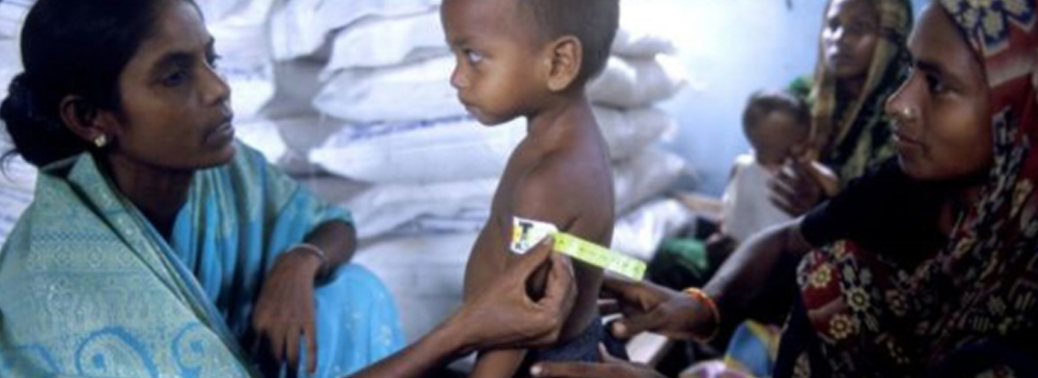
Why in News?
- Though National Family Health Survey-4 (NFHS-4) shows an encouraging improvement in child nutrition, the world level rankings on child nutrition draws a different picture about India.
Reports that pings on Child Nutrition:
- UNICEF’s report– one in three malnourished child in world belongs to India, half of the children under three years old are underweight and a third of wealthiest children are over-nutrient-ed.
- The 2018 Global Hunger Index (GHI)report ranked India 103rd out of 119 countries.
- According to the Indian Council of Medical Research (ICMR), in 2017, malnutrition was the predominant risk factor for death in children younger than five in every state of India.
- According to the Global Burden of Disease Study 2017,malnutrition is among the leading causes of death and disability in India.
Measures to address the lag in Improving Child Nutrition:
1.Timely Intervention:
- The focus must be on the pregnant, breastfeeding mother and the child, especially in the first two years of the child’s life, which is the crucial phase for physical, mental and cognitive development.
2.Targeted Approach:
- A targeted approach is needed because the size of the needy and the budgetary constraints already pose a big challenge.
- NFHS-4 provided district level data as well, hence the focus should be on the ones which require urgent attention.
- More public programmes which cover important nutrition-specific areas such as maternal nutrition should be started.
3.No “one size fits all approach”:
- As these districts are concentrated in Uttar Pradesh, Bihar, Madhya Pradesh and Jharkhand , Karnataka, Maharashtra, Rajasthan and Gujarat – their governments should make arrangements for the required funds and formulate policies to tackle high incidence of stunting in these districts.
- Further, even within these districts, the pockets where child malnutrition is high should be identified and the intervention or the target should go down till the clusters of Anganwadis where the problem is concentrated.
4.Policy Implementation based in Real Time Data:
- Policy initiatives should be guided by accurate real-time data at the sub-district level also.
5.Educating Girls and Spreading Awareness:
- Efforts should be made to spread messages on hygiene and sanitation, particularly the need to do away with open defecation practices.
- Similarly, education for girls should be advocated, as should the importance of enabling the financial independence of women through skilling and employment opportunities along with their inclusion in the formal financial network.
6.Sound public Service Delivery Institutions:
- Lastly, Programmes will have an impact only when there are sound public service delivery mechanisms, especially in the nutrition, health and education sectors.
- Hence, building a cadre of dedicated professionals in the government needs a high degree of political will and administrative commitment, centred around developing skills and knowledge and building motivation to stay the course.
INDIA NEEDS A BOTTOM-UP GROWTH MODEL
31, Dec 2019
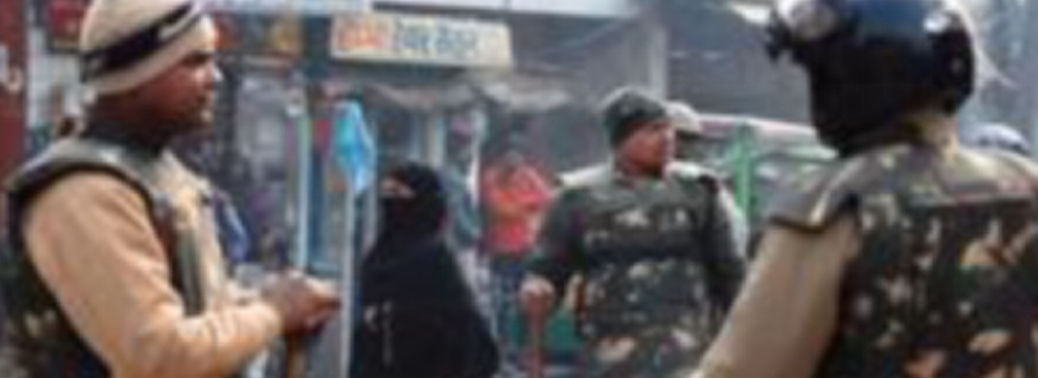
Why in News?
- There is a wide spread critique about India’s growth model wherein it highlights that higher GDP growth rates in India has failed to translate into Equitable, Inclusive and Sustainable growth of Indian citizens.
- This article highlights the various defects in the policies of government and the need why the Government must adopt bottom-up and people-centered approach in its policies.
Problems with India’s Growth Model:
- India has made rapid strides in its economic growth wherein the GDP size has increased from $ 275 bn in 1991 to $ 2.7 trillion in 2019. India has also been considered as the fastest growing major economies across the world.
- However, such a growth model has failed to promote balanced, equitable and inclusive growth.
- For instance, India’s ranking on various Human Development Indicators such as HDI, Global Hunger Index (GHI), Multi-dimensional Poverty Index (MPI), Environmental Performance Index etc. continues to be remain poor. Similarly, the PLFS report has highlighted that the unemployment has increased to 45-year high of 6.1%.
Reasons for the poor outcomes of India’s Growth Model:
1. Prioritising Growth over Development:
- The Government has excessively focused on enhancing the GDP growth rates without giving due emphasis on enhancing human capabilities. For instance, India’s expenditure on Education and Health is hardly around 3% and 1.3% of the GDP respectively.
2. Pursuing Top-down Approach:
- Government has failed to incorporate bottom-up and people-centered approach in its policies which could have empowered the people and led to better outcomes.
- The Government has excessively focused on improving “Ease of doing Business” to attract foreign capital, but it has failed to focus on improving “Ease of living” of its citizens.
3. Absence of Participatory Approach:
- Most of the Government schemes and programmes are implemented without the involvement of the stakeholders.
- For instance, one of the reasons for the success of the MGNREGA programme is its participatory approach wherein the Gram Sabha members decide on the utilization of MGNREGA Funds.
- However, other government schemes and programmes have failed to incorporate such a participatory approach leading to less than satisfactory results.
What can be done to Improve the Development Outcomes?
1. Follow the footsteps of China’s Model:
- India’s growth outcomes can be improved by learning from the development models followed by China and some of the states in India.
- Even though China is non-democratic country, it has given due emphasis on Human Development which is evident in China’s better ranking on various Human development Indicators as compared to India.
- On the other hand, in spite of being democratic country, India is yet to reach the level of development which China attained way back in 1990s.
- Thus, there is a need to adopt people-centered policies rather than growth-centered policies to have better outcomes.
2. Kerala- the Forerunner:
- Similarly, some of the states in India have also taken a lead and shown as to how bottom-up and people-centered policies can have transformative impact on the lives of the people.
- For instance, Kerala Government has followed “Participative Model” of Governance in order to empower the people at the grassroots level.
- It has emerged as the frontrunner in empowering the Panchayati Raj Institutions with the constitutionally mandated functions and finances.
- It has also focused on the women empowerment through the “Kudumbashree” Scheme, which is considered to be a model scheme for multi-faceted development of women.
- Such a participative model of Governance has enabled Kerala to be well ahead of all other states and match China in terms of Human Development Indicators.
3. Delhi’s “Common man’s Model”:
- Delhi Government has adopted “Common man’s Model”, wherein it has kept the common man at the centre of the various government policies and schemes.
- It has given due emphasis on Health and Education and in order to ensure success of Government’s intervention, it has focused on the active participation of the stakeholders.
- For instance, it has established the School Management Committees which involves the parents. The budget for training teachers has increased by more than five times. This has enabled the Delhi’s Government schools to have much better performance than the private schools.
- Similarly, the Public health expenditure has more than doubled. Mohalla Clinics have been set up in the poor colonies to provide accessible and affordable health care.
Way Forward:
- The Government has to realize that “Ease of Living” is much wider and comprehensive as compared to “Ease of Doing Business”.
- While, improvement in the Ease of Doing Business can lead to increase in the private sector investment, but improvement in the “Ease of Living” can lead to both better development outcomes and attract private sector investment.
- This is so because a balanced, inclusive and sustainable growth can enhance the income levels of the people and attract greater amount of private sector investment.
- Ultimately, Gandhi’s philosophy of putting the last man first should be the sole guiding light for the government’s policies.
30% OF POSHAN ABHIYAAN FUNDS USED
30, Dec 2019
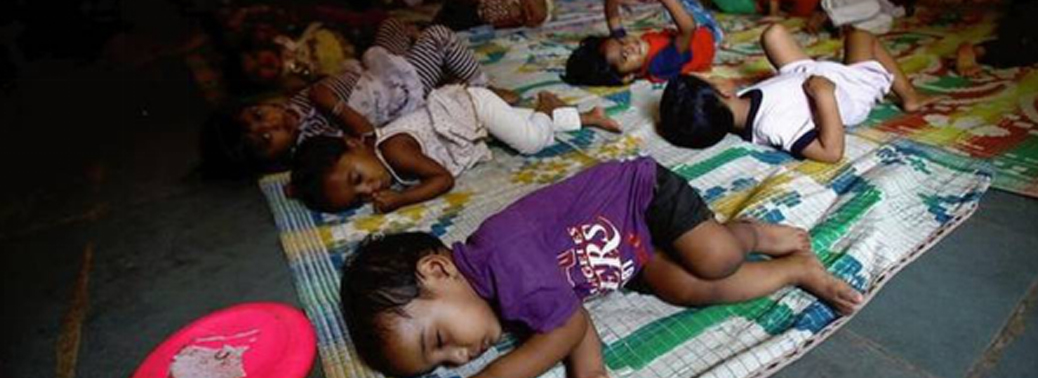
Why in News?
- The State governments and the Union Territories utilised a mere 30% of the funds released under the Poshan Abhiyaan, or the National Nutrition Mission, since it was launched in 2017.
About POSHAN Abhiyaan:
- POSHAN Abhiyaan (National Nutrition Mission) was launched by the government on March 8, 2018.
- It is implemented by the Ministry of Women and Child Development.
- The Abhiyaan targets to reduce stunting, under nutrition, anemia (among young children, women and adolescent girls) and reduce low birth weight by 2%, 2%, 3% and 2% per annum respectively.
- The target of the mission is to bring down stunting among children in the age group 0-6 years from 38.4% to 25% by 2022.
- POSHAN Abhiyaan aims to ensure service delivery and interventions by use of technology, behavioural change through convergence and lays-down specific targets to be achieved across different monitoring parameters.
- It is meant to benefit more than 10 crore people and was launched after a Cabinet decision on December 1, 2017, with a total budget of ₹9,046.17 crore for three years, 50% of which is through budgetary support, which is further divided into 60:40 between the Centre and the States, 90:10 for the north-eastern region and the Himalayan States and 100% for the Union Territories without legislature.
- The remaining 50% is from the World Bank or other multilateral development banks. As a result, the Centre’s total share will be ₹2,849.54 crore.
- Under the Abhiyaan, Swasth Bharat Preraks will be deployed one in each district for coordinating with district officials and enabling fast and efficient execution of the Abhiyaan across the country.
- Swasth Bharat Preraks would function as catalyst for fast tracking the implementation of the Abhiyaan.

Are the Funds Used?
- Barring Mizoram, Lakshadweep, Himachal Pradesh and Bihar, none of the governments used even half of the sum granted in the past three years, according to an analysis of the data shared in Parliament.
- According to the information given by Minister for Women and Child Development in the recent session of Parliament, a total of ₹4,283 crore was disbursed by the Centre to different States and Union Territories.
- Of this, ₹1,283.89 crore was utilised until October 31, 2019, or only 29.97% of thefunds granted. Figures were not available for 2017-2018 as the scheme was launched at the end of the fiscal.
Important Stats of the Report:
- The five best performers were Mizoram (65.12%), Lakshadweep (61.08%), Bihar (55.17%), Himachal Pradesh (53.29%) and Meghalaya (48.37%).
- The worst five performers were Punjab (0.45%), Karnataka (0.74%), Kerala (8.75%), Jharkhand (13.94%) and Assam (23.01%).
- During 2019-20, funds were released for 19 States, though 12 of them had used less than a third of the funds released in the previous two years.
- The CNNS, released by the Ministry of Health and Welfare in October, showed that 35% of children under the age of 5 are stunted and in this age group, 17% are wasted (low weight for height) and 33% underweight (low weight for age).
Way Forward:
- It is, thus, expected that utilisation will increase over years. A number of activities had a slow start but are now picking up. These include the Integrated Child Development Services-Common Application Software (ICDS-CAS) meant to monitor anganwadis.
- However, given the stiff targets, translating the activities into outcomes will be critical, and that remains to be seen.
PROTECTING MINORS/CHILDREN IN CONFLICT WITH LAW
30, Dec 2019
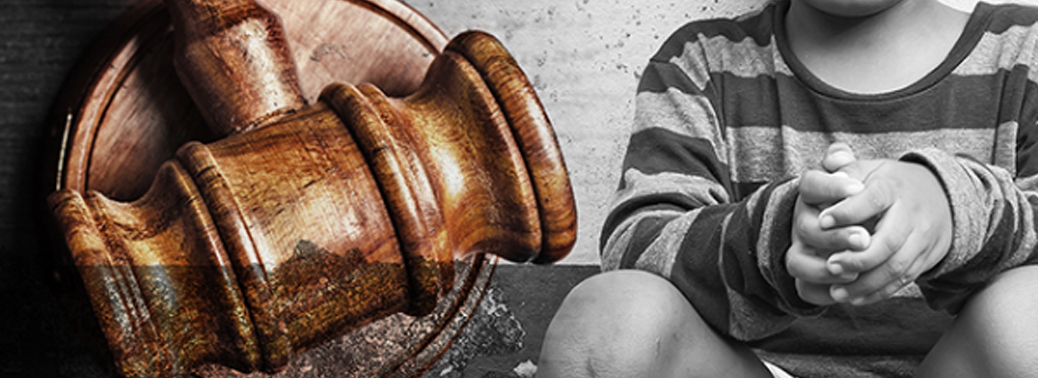
Why in News?
- In the backdrop of protests against the Citizenship (Amendment) Act, 2019, a number of minor under the age of 18 have been detained by the law enforcement authorities.
- This has invigorated the debate around child rights especially of those children who are in conflict with the law.
Legislative Framework in India regarding Child Rights (Children in conflict with law):
1.Juvenile Justice Act:
- Section 10 of the Juvenile Justice (Care and Protection of Children) Act, 2015 provides for a Special juvenile police unitor the designated child welfare police officer.
- A child is found to be in conflict with law he/she shall be placed under the charge of this officer who shall produce that child before the Juvenile Justice Board within a period of 24 hours.
- Thus the Juvenile Justice Act prohibits the detention of a child in police custody.
2.U.N Convention on Rights of Child
- The United Nations Convention on the Rights of the Child, 1989 (CRC), is a comprehensive document containing a set of universal legal standards or norms for the protection and well-being of children
- As per this document, they have a right to be protected from certain acts, such as torture, exploitation, abuse, arbitrary detention and unwarranted removal from parental care, and children.
- India ratified this convention in 1992 and enacted various laws in conformity of this convention for the protection of children.
- So, in accordance with that convention, the National Commission for Protection of Child Rights (NCPCR) a statutory body was set up under the Commission for Protection of Child Rights Act, 2005.
- It is entrusted with the responsibility to protect, promote and defend child rights in India.
- The commission works under the aegis of the Ministry of Women and Child Development.
NCPCR Guidelines:
- The National Commission for Protection of Child Rights guidelines on children’s rights in areas of civil unrest provide that law enforcement authorities should avoid blanket characterization of adolescent boys as security threats.
- Besides the guideline also direct the authorities to take the cases of arbitrary detention, mistreatment, or torture of children extremely seriously and investigate the violations and take appropriate action against personnel involved.
- In the context of the CAA protests, the NCPCR had highlighted that children were being used by certain groups of protesters were in unlawful activities such as stone-pelting which violates their rights under Juvenile Justice (Care and Protection of Children) Act, 2015
HIGHER EDUCATION – QUALITY MANDATE
30, Dec 2019

Context:
- Human Resource Development Minister had launched five documents developed by University Grants Commission (UGC) covering the 5 verticals of Quality Mandate.
Quality of Higher Education
- Innovation and human capital– the two pillars of labour productivity and GDP growth, largely depends on the quality of the higher education. According to the India Skills Report-2019, only 47% of Indian graduates are employable, which is, exacerbated by startlingly low Faculty Figures.
- Of the 17 Sustainable Development Goals (SDGs), adopted in 2015, SDG4 is dedicated to education.
- Higher education is mentioned in target 4.3 of SDG4 – “By 2030, ensure equal access for all women and men to affordable and quality technical, vocational and tertiary education, including university.”

Structural flaws in Indian Higher Education System:
- 1.Faculty shortage – Faculty vacancies at government institutions are at 50% on average. The problem lies in increased demand, and stagnant supply.
- The number of institutions has surged in India since the 2000s, while the number of students doing PhD has remained constant.
- Meanwhile, there are over a 1,00,000 India-born PhDs in universities around the world, kept away by paltry salaries and poor funding.
- Indian R&D expenditure at 0.62% of GDP is one of the lowest in emerging economies.
- 2.Research and publications – Faculty are under pressure to produce a certain number of papers to Gain Promotion.
- This often makes them publish papers in journals that may not be of high quality.
- This also means that there is more emphasis on publishing papers than on teaching.
- 3.Quality Faculty – Teaching and research in any university depends on the quality of faculty as well as the quality of students.
- The quality of teaching depends on the quality of teachers.
- For teachers to impart knowledge to students they must have a broad knowledge of their subject matter as well as enthusiasm and a desire for learning throughout the course of their career.
- 4.Expensive Education – Quality education is expensive in India.
- India has severely under-invested in education over the last 40 years, not much have been invested in R&D, and today even the top institutions are having very poor laboratory facilities.
- 5.Expansion – We expanded education very rapidly – India has larger number of institutions than China, both in terms of colleges and universities.
- In the process of standardisation of such institutions, India has erred by creating one single framework, where examinations became the only way to judge merit.
- This led to the mushrooming of coaching classes and anybody who could get ranks by studying in such coaching institutes were celebrated.
- 6.Leadership – The heads of universities are often appointed with Political Motivations.
- Vice-Chancellors are selected merely because they have the right political connections in the Ministry of Human Resource Development in the case of central universities, or appropriate political or caste affiliations in the concerned state.
- Also, in many cases, they pay huge amounts of money for the posts that are most visible symbols of the university system.
University Grants Commission and its Mandate:
- The University Grants Commission (UGC) of India is a statutory body set up in 1956, and is charged with coordination, determination and maintenance of standards of higher education.
The UGC’s Mandate Includes:
- Determining and maintaining standards of teaching, examination and research in universities.
- Framing regulations on minimum standards of education.
- Overseeing distribution of grants to universities and colleges in India.
- Providing scholarships/fellowships to Beneficiaries.
- Monitoring conformity to its regulations by universities and colleges.
- Serving as a vital link between the Union and state governments and institutions of higher learning.
Is UGC a Failure:
- Though the number of universities and student enrolment has been increasing, the quality of education is still lagging behind, which is attributed to UGC.
- UGC’s policies suffer from two diametrically opposite issues—under-regulation and over-regulation.While it lets smaller substandard institutions slip by as deemed universities, it also instigates witch-hunts against reputed deemed universities.
- Hence, it is argued that UGC has not only failed to fulfil its mandate but also has not been able to deal with emerging diverse complexities.
Quality Mandate in 2019:
- The quality mandate aims at evolving higher education system to equip the country’s next generation with vital skills, knowledge and ethics for leading a rewarding life.
- UGC released five documents concerning the 5 verticals of Quality Mandate, which covers-
- Evaluation Reforms
- Eco-Friendly and Sustainable University Campuses
- Human Values & Professional Ethics
- Faculty Induction
- Academic Research Integrity
- SATAT– Framework for Eco-Friendly and Sustainable Campus development in Higher Educational Institutions.
- Mulya Pravah – Guidelines for Inculcation of Human values and Professional Ethics in Higher Educational Institutions.
- Guru-Dakshta – A guide to Faculty Induction Programme (FIP) to improve student centricity.
- Consortium for Academic and Research Ethics (UGC-CARE)to continuously monitor and identify quality journals across disciplines.
- ‘Paramarsh’ – To mentor aspirant institutions for promoting quality assurance in higher education and facilitate National Accreditation and Assessment Council (NAAC) Accreditation.
Will Higher Education in India Ever Be “World-Class”?
- India is one of the youngest nations in the world, where the college-age group is growing at large. Where as in the QS World University Rankings-2015, only two Indian universities were featured in the top 200, while just 10 made it into the top 700.
- Therefore, the quality of education should be oriented more towards employabilitythan rote learning.
- Information and Communication Technology (ICT)– should be utilized to improve the quality of higher education.
- India shall consider moving towards Learning Outcome based curriculum framework.
- Continuous internal evaluation– can help in identifying Behavioural outcome of individuals.
- In terms offaculty selection and promotion – it should be based on proper selection committee.
- Brain Drain from the country – shall be reduced by appropriate schemes.
- China solved this problem by attracting Chinese-origin PhDs back home with dollar salaries and monetary incentives for published research.
- With the advent of Artificial Intelligence (AI), almost 40-50% of existing jobs would be heavily automated. This is the right time for the Indian Higher Education institutions to improve their quality to match the international standards and enhance the employability of the students.
THE DATA PROTECTION BILL ONLY WEAKENS USER RIGHTS
28, Dec 2019

Why in News?
- The Personal Data Protection Bill 2019 which is currently under parliamentary process for approval is criticised to be of heavily tilted towards security and revenue generation of the state rather than Right to Privacy which is the basic reason for a Data Protection Regime.
Categorisation of Data as Per the Bill:
- The bill constitutes 3 personal information types:
- a). Critical
- b). Sensitive
- c). General
- Sensitive Data constitutes or is related to passwords, financial data, health data, official identifier, sexual orientation, religious or caste data, biometric data and genetic data. It may be processed outside India with the explicit consent of the user.
- Critical Datawill be characterised by the government every once in a while, and must be stored and handled only in India.
- General Data:Any data that is non-critical and non-sensitive is categorised as general data with no limitation on where it is stored or managed.
Provisions of the bill which is Under Criticism:
1. Access to Non-Personal Data:
- Government is empowered to gain access to any non-personal data — anonymised data like traffic patterns or demographic information — mainly for framing policy for better delivery of services and evidence-based policy.
2. Process Data Without Consent:
- The Bill includes exemptions for processing data without an individual’s consent for “reasonable purposes”, including security of the state,detection of any unlawful activity or fraud, whistle blowing, medical emergencies, credit scoring, operation of search engines and processing of publicly available data. Accordingly personal data processed in the interest of prevention, detection, investigation and prosecution of any offence is exempt.
Issues Regarding the above Provisions:
1. Security Interest vis-a-vis Data Privacy:
- Not in line with the recommendation of Justice Sri Krishna Committee
- Justice B.N. Srikrishna committee in its report had cautioned against use of data without consent and had recommended exemptions to be “watertight”, “narrow”, and available for use in “limited circumstances”.
- But the government empowering themselves to collect data in the name of “national security” which is defined and highly vague goes against the basic intent of the bill.
- It had also recommended that the Government bring in a law for the oversight of intelligence- gathering activities, the means by which non-consensual processing of data takes place.
2. Conflict of Interest (Data Protection Authority):
- The bill provides for Data Protection Authority of India to monitor and enforce the provisions of the Act. Given that the appointment of chairperson and members is done by a panel constituting Government nominees and government agencies but themselves being the major collectors and processors of data, it tantamounts to conflict of interest.
3. Revenue generation vis-à-vis Right to Privacy
- According to Edward Snowden there is a symbiotic relation between financial models of digital platforms and security interest of the state which leaves a lot of scope for misuse of data.The Data Protection Bill empowers the government to gain access to any non-personal data mainly for framing policy for better delivery of services and evidence-based policy. This is particularly goes against the ‘principle of limited purpose limitation’ according to which personal data that is gathered for a specific purpose cannot be put to use for any other purpose.
- For instance recently under the Bulk Data Sharing Policy & Procedure of The Ministry of Road Transport and Highways the government shared Vehicle Registration Certificates and Driver License with automobile industries, banks, finance companies etc. at specified rates for each data set.
- If such policies aimed at monetizing the database by bulk data sharing is adopted to the data that is collected, then the major aims of bill such as privacy and data protection is compromised.
NPR – HOUSE-TO-HOUSE VERIFICATION PLANNED
27, Dec 2019

Why in News?
- According to an official manual on conducting the fresh NPR exercise, verifying the details of all respondents through house-to-house enumeration will start by April 2020.
About NPR:
- It is a Register of usual residents of the country.
- It is being prepared at the local (Village/sub-Town), sub-District, District, State and National level under provisions of the Citizenship Act 1955 and the Citizenship (Registration of Citizens and issue of National Identity Cards) Rules, 2003.
- It is mandatory for every usual resident of India to register in the NPR.
- A usual resident is defined for the purposes of NPR as a person who has resided in a local area for the past 6 months or more or a person who intends to reside in that area for the next 6 months or more.
- To create a comprehensive identity database of every usual resident in the country.
- Data for the NPR was first collected in 2010, and updated in 2015.
About the News:
- The Indian Government proposes to update the existing National Population Register, which already has an electronic database of more than 119 crore residents, by verifying the details of all respondents through house-to-house enumeration.
- The NPR exercise has become controversial because the Citizenship Rules 2003 link the Population Register to the creation of a National Register of Indian Citizens (NRIC) or National Register of Citizens.
- Coupled with the passage of the Citizenship (Amendment) Act, 2019, which excludes Muslims, fears about an NPR-NRC have brought lakhs of people into chaos.
How it would be taken?
- The manual states that in cases where date of birth or age was not known, the enumerator could help the respondent by “stimulating her/his memory” with reference to historical events well known in the area such as a “war, flood, earthquake, change in political regime, etc.”
- The manual says that if the respondent does not know the age of any member of the household and probing also does not help in determining the age of that person, “you will have to estimate her/his age by using your best judgment.”

GOOD GOVERNANCE INDEX
26, Dec 2019
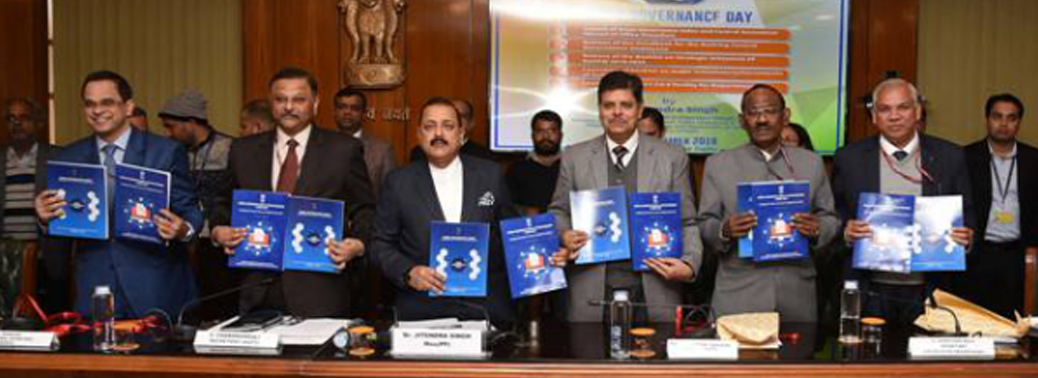
Why in News?
- The Union Minister of State for Personnel, Public Grievances & Pensions launched the ‘Good Governance Index’ on the occasion of ‘Good Governance Day’.
- Good Governance Day is observed on the birth anniversary of former Prime Minister Shri Atal Bihari Vajpayee (25thDecember). It was observed for the first time in 2014.
Good Governance Index (GGI):
- The Good Governance Index is a uniform tool across States to assess the status of governance and the impact of various interventions taken up by the State Government and UTs.
- The objectives of GGI are:
- To provide quantifiable data to compare the state of governance in all states and UTs.
- To enable states and UTs to formulate and implement suitable strategies for improving governance.
- To shift to result-oriented approaches and Administration.
How is the GGI Calculated?
- Various principles have been kept in mind while selecting the indicators, i.e. it should be easy to understand & calculate, citizen-centric & result-driven, leading to improved results and applicable to all states and UTs, among others.
- The GGI takes into consideration ten sectors, namely,
- Agriculture and Allied Sectors
- Commerce & Industries
- Human Resource Development
- Public Health
- Public Infrastructure & Utilities
- Economic Governance
- Social Welfare & Development
- Judicial & Public Security
- Environment
- Citizen-Centric Governance
- These ten Governance Sectors are measured on total 50 indicators.
- Difference indicators are given different weightage under one Governance Sector to calculate the value.
- e Under Agriculture & Allied Sector, there are 6 indicators with different weightage, Namely: Growth rate of agriculture and allied sector (0.4), growth rate of food grains production (0.1), growth rate of horticulture produce (0.1), growth rate of milk production (0.1), growth rate of meat production (0.1) and crop insurance (0.2).
- The states and UTs are divided into three groups:
- Big States , North-East & Hill States, UTs
- The states and UTs are ranked on all indicators separately, at the same time composite ranking is also calculated for these states and UTs under their respective groups based upon these Indicators.
First GGI Report:
- Among the Big States:
- Tamil Nadu, Maharashtra, Karnataka, Chhattisgarh, Andhra Pradesh and Gujarat are the top six rankers.The bottom Six States are Odisha, Bihar, Goa, Uttar Pradesh and Jharkhand.
- Among the North-East & Hill States:
- Top 3 states are Himachal Pradesh, Uttarakhand and Tripura.
- The Bottom 3 states are Meghalaya, Nagaland and Arunachal Pradesh.
- Pondicherry leads among the UTs followed closely by Chandigarh with Delhi bagging the third spot. Lakshadweep is at the bottom among the UTs.
- The Report also gives sector-wise ranking.
- In the Environment Sector:
- The top three states are West Bengal, Kerala and Tamil Nadu.
- The bottom 3 states are Telangana, Andhra Pradesh and Goa.
- West Bengal, however, is at the bottom two in the judicial and public security ranking. Tamil Nadu tops the chart here.
- Karnataka is at the top under the economic governance category while Kerala is at the top in the public health sector.
A DECISION WITHOUT FORETHOUGHT
25, Dec 2019
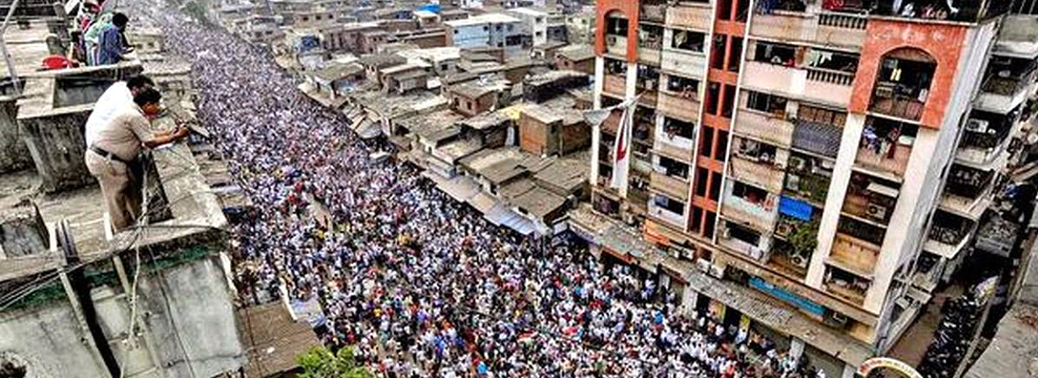
Why in News?
- Citizenship Amendment Act, 2019 has been causing ruckus, protests and violence all over the country.
- In such a scenario, the impact of various protests in the North-East region and the impact of these protests on the Indian foreign policy and its image are discussed in brief in this article.
Impact of CAA related protests in Northeast and other aspects:
- The North-east region acts as a major link between India and ASEAN countries. It also acts as a gateway to South-East Asian economies. In such a scenario, various projects such as Asian Trilateral Highway, BBIN corridor, Kaladan Multimodal project will be affected due to the tension and unease in the North-east region.
- India and Japan have established Act East Forum in 2017. It is expected to serve as a driving force to advance India-Japan cooperation in the North-east. But the violent protests would be having drastic effect on this initiative too.
- As part of its Free and Open Indo-Pacific strategy, Japan has been investing in various development projects of the North-east.
- Japan has decided to invest Rs 13,000 crore in different projects in the Northeast
- Japan International Cooperation Agency (JICA) is engaged in building Northeast road network connectivity, water supply projects and economic modernisation of the region.
- Japan is financing the construction of India’s longest bridge between Dhubri in Assam and Phulbari in Meghalaya.
- Contributed official development assistance loans for the North East Road Network Connectivity Improvement Project.
- India and Japan have decided to launch ‘Japan India North East Bamboo Initiative’ in view of the significance bamboo plays in the region. Industrial uses of bamboos and forest management will be pursued.
- Promotion of Japanese language learning in the Northeast areas.
- Asia Health and Well being Initiative: Japan has decided to pursue skill development of caregivers in the Northeast region.
- Private Japanese organisations are also financing a host of development projects in the region.
Due to the CAA, Japan may have a rethink on these development projects, this might also affect Japan’s engagement in projects it is pursuing in the rest of the country.
- Volatility in Northeast can possibly be a setback to the collaborative efforts between India and Japan in providing an alternative to China’s Belt and Road Initiative.
- Japan is also a member of the Quad, which came into existence to counter Chinese economic prowess and unlock India’s potential in the Indo-Pacific. This would also take a beating in the current scenario.
- With situation in Kashmir already volatile, during such a situation is it prudent to open another frontier of vulnerability in Northeast.
- UN has also described Citizenship Amendment Act of India as a fundamentally discriminatory legislation.
- US, UK and Canada and other countries have issued travel advisories to those visiting the Northeast. This affects the image of India in the Global Scenario.
- India is getting recently described as the Internet shutdown capital of the world. India’s stand on the Human rights has also taken a beating.
Thus, the CAA has had an adverse effect not only on India’s domestic affairs but also on important foreign policy concerns. At the global level, India has always been respected for its diversity and inclusive character. This image of India needs to be preserved and cultivated further.
NATIONAL POPULATION REGISTER (NPR)
23, Dec 2019

Why in News?
- The Kerala Government has recently decided to put on hold to all proceedings for updating the National Population Register (NPR).
About NPR:
- It is a Register of usual residents of the country.
- It is being prepared at the local (Village/sub-Town), sub-District, District, State and National level under provisions of the Citizenship Act 1955 and the Citizenship (Registration of Citizens and issue of National Identity Cards) Rules, 2003.
- It is mandatory for every usual resident of India to register in the NPR.
- A usual resident is defined for the purposes of NPR as a person who has resided in a local area for the past 6 months or more or a person who intends to reside in that area for the next 6 months or more.
- To create a comprehensive identity database of every usual resident in the country.
What does NPR consists of?
- The NPR database would contain demographic as well as biometric details.
- As per the provisions of the NPR, a resident identity card (RIC) will be issued to individuals over the age of 18.
- This will be a chip-embedded smart card containing the demographic and biometric attributes of each individual.
- The UID number will also be printed on the card.
What is the Controversy Around It?
- It comes in the backdrop of the NRC which excludes lakhs of people in Assam.
- It intends to collect a much larger amount of personal data on residents of India.
- There is yet no clarity on the mechanism for protection of this vast amount of data.
Significance of the Data:
- Every country must have a comprehensive identity database of its residents with relevant demographic details. It will help the government formulate its policies better and also aid national security.
- It will ease the life of those residing in India by cutting red tape. Not only will it help target government beneficiaries in a better way, but also further cut down paperwork and red tape in a similar manner that Aadhaar has done.
- With NPR data, residents will not have to furnish various proofs of age, address and other details in official work.
- It would also eliminate duplication in voter lists, Government Insists.
MANUAL SCAVENGING LEFT 282 DEAD SINCE 2016: SAYS RAJYA SABHA
23, Dec 2019
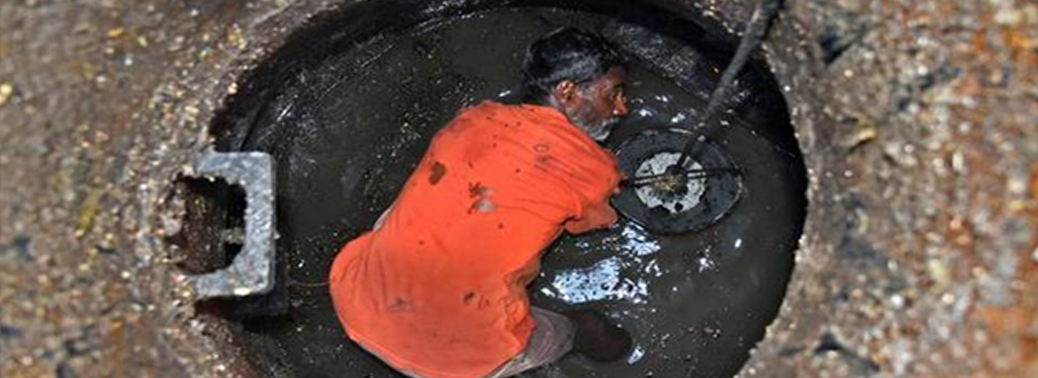
Context:
- The Ministry of Social Justice and Empowerment has responded to Rajya Sabha that there were 282 deaths cleaning sewers and septic tanks in the country from 2016 to 2019.
State Wise Figures:
- Tamil Nadu has recorded 40 deaths, the highest in number, in these four years. This is followed by Haryana with 31 deaths, and Gujarat and Delhi with 30 deaths each. Maharashtra and Uttar Pradesh have recorded 27 deaths each in the same period.
What is Manual scavenging?
- Manual scavenging refers to the practice of manually cleaning, carrying, disposing or handling in any manner, human excreta from dry latrines and sewers.
- The practise of manual scavenging is linked to India’s caste system where so-called lower castes were expected to perform this job.
- Manual scavengers are amongst the poorest and most disadvantaged communities in India.
- Frequent deaths occur as manual scavengers don’t even have adequate tools and protective gear to clean the manhole. It often involves using the most basic of tools such as buckets, brooms and baskets.
Problems faced by Manual Scavengers:
- Manual Scavengers in India does the work without any safety equipment, which puts them under the risk of infections and asphyxiations (deprived of oxygen), which are often become fatal.
- They are exposed to most virulent forms of viral and bacterial infections that affect their skin, eyes, limbs, respiratory and gastrointestinal systems.
- Statistics prove that 80% of India’s sewage cleaners die before they turn 60, after contracting various infectious diseases.
- Their Children are also caught up in the plight and make it impossible for them to continue their education.
- The job is still being performed by communities who are considered untouchables or lower castes. Hence they still face social inequality and exclusion from society.
- They are denied access to places of worship, public sources of water. They are excluded from cultural events etc.
- Due to the patriarchy in society, most manual scavengers who clean dry latrines are women. But here also, women are being discriminated against and are paid meagrely.
Why Manual Scavenging still Persists in India?
- Manual scavenging exists mainly due to the continued presence of unsanitary latrines where human waste has to be cleaned physically, rather than by a machine or sewage system. The majority of such unsanitary latrines are dry latrines that don’t use water.
- Even if they want to leave their profession, their untouchability and un-cleanliness tag and the resultant social stigma makes it impossible for them to find alternative jobs.
- Increasing urbanization in the country requires more manual scavengers for the cleaning of sewers or septic tanks.
- Low education level, low awareness of their rights & laws, job risks and low self-esteem force them to take such work.
- Lack of empathy among the government, contractors and household members employing manual scavengers, who fail to understand their plight.
- Poor enforcement of existing laws is also a reason for the continuance.
- Manual scavengers are not an organized group and don’t have any significant voice in the political and government structures. Hence their problems are not considered a Major Issue.
Legislative Framework regarding Manual Scavenging:
- Sanitation is a State subject, the people for cleaning of sewers and septic tanks are employed by local bodies.
1. Prohibition of Employment as Manual Scavengers and their Rehabilitation Act, 2013 provides for the prohibition of employment as manual scavengers, rehabilitation of manual scavengers and their families.
- Under this, no person, local authority or agency should engage or employ people for hazardous cleaning of sewers and septic tanks.
- Mechanised cleaning of septic tanks is the Prescribed Norm.
- When human intervention is unavoidable, safety gear is Mandatory.
- A violation can be punished with 2 years of Imprisonment or fine or both.
- It also prohibits the construction of insanitary latrines.
- However, the law is not Properly Enforced and people are forced to do manual scavenging.
2. National Commission for Safai Karmacharis (NCSK):
- NCSK is a statutory body established under National Commission for Safai Karamcharis Act, 1993 to deal with the grievances of persons engaged in manual scavenging.
- It aims to promote and safeguard the interests and rights of Safai Karamcharis( Sanitation related workers) and Manual Scavengers and works for the welfare of both.
- It is mandated to work towards the elimination of inequalities in status, facilities, and opportunities for Safai Karamcharis.
- It has an important role to ensure the rehabilitation of all identified manual scavengers on a time-bound basis.
- Under Prohibition of Employment as Manual Scavengers and their Rehabilitation Act 2013, NCSK perform the Following Functions:
1.Monitor implementation of Act.
2.Enquire into complaints regarding contravention of provisions of Act.
3.Advice Central and State Governments for effective implementation of Act.
4.Working for the welfare of Safai Karamcharis/Manual Scavengers.
3. Self-Employment Scheme for Rehabilitation of Manual Scavengers (SRMS),
- It was introduced in 2007 with the aim to rehabilitate remaining manual scavengers and their dependents in alternative occupations, in a time-bound manner.
- The responsibility of rehabilitation of the identified manual scavengers is given to the National Safai Karamcharis Finance and Development Corporation which was established to safeguard the interests and rights of Safai Karamcharis (Manual Scavengers).
4. Swachh Bharat Mission focusses on the conversion of insanitary latrines into Sanitary latrines.
5. Scheme of “Pre-Matric Scholarship to the Children of those engaged in
occupations Involving Cleaning and prone to Health Hazards”,
- Under this, children of manual scavengers are provided Scholarships.
- It is being implemented by the Ministry of Social Justice & Empowerment
How is the Implementation?
- Despite a large number of schemes and provisions, the inhuman practice of manual scavenging still continues.
- The National Safai Karmachari Commission has not been functioning properly. Its website has not been updated about recent developments and initiatives.
- Protective gears such as gloves, gas masks, and boots are often not provided by employers, in violation of the 2013 Act. This resulted in diseases and even deaths. There is no proper accountability mechanism in place.
- The Act allows manual scavenging if the employer provides protective gear. However, the Act doesn’t define what constitutes protective gear = employers exploit this provision.
- Municipalities don’t have enough funds to use machines for cleaning the sewers and also to provide safety gear. Also, they generally blame contractors for any loss of life.
- States and UTs are slow in the identification of insanitary latrines and manual scavengers since there is no time-bound plan for doing that.
- Furthermore, many states hesitate in reporting the existence of unsanitary latrines and manual scavengers in their jurisdiction due to the fear of contempt of the court.
Rehabilitation works are also very slow due to various challenges as follows:
1.Lack of Budgetary Support,
2.Manual scavengers are generally uneducated,
3.They have no exposure to other works,
4.Many of them are old particularly women
5.They lack confidence in doing self-employment and
6.Many of them do not come forward to avail of any skill development training
7.Banks are unwilling to provide a loan to manual scavengers due to the low rate of recovery of a loan from them.
What can be Done?
- The law on manual scavenging must be enforced in letter and spirit both by the Centre and State governments.
- No person, agency or authority shall employ people for manual scavenging.
- Local Authorities must find resources to employ machines for cleaning of septic tanks and sewers.
- The Swachh Bharat Abhiyanshould make expansion of the sewer network a top priority and come up with a scheme for scientific maintenance of tanks as it will also help in ending manual cleaning of septic tanks.
- Two components of Swachh Bharat Abhiyan (SBM) i.e. SBM-Ruraland SBM-Urban must look into the issue of sanitation and use funds available for SBM in providing mechanised way of cleaning septic tanks.
- Mechanised cleaning of sewers and tanks will Reduce Inequalityespecially for such communities who have been traditionally involved in Manual Scavenging.

DRAFT FOOD SAFETY AND STANDARDS (LABELLING AND DISPLAY) REGULATIONS, 2019
23, Dec 2019

Why in News?
- Recently, a study conducted by Centre for Science and Environment (CSE) has shown that the total amount of salts, fat, trans-fat and carbohydrates in various fast foods such as pizzas, burgers, chips, instant noodles etc. is well above the recommended dietary allowance (RDA).
- This has proved to be critical since the Food Safety and Standards Authority of India (FSSAI) had earlier come out with the draft guidelines to put threshold limits on salt and fat in the packaged foods. However, due to the opposition by the companies, these regulations have not yet been Notified.
Current law in place regarding disclosure of Nutritional Components and its Flaws:
- Currently, the labelling of the Pre-packaged Foods has been provided under the food safety and Standards (Packaging and Labelling) Regulations, 2011. It mandates the companies to disclose energy (kilo calories), protein, carbohydrates, total fat, trans-fat and saturated fat contained per 100g or per millilitre or per serve.
- However, these regulations have not proved to be effective in promoting public awareness about the health hazards of the pre-packaged foods.
- For instance, the companies are not required to display these nutrients information on the front of the pack. The companies are also not under any obligation to compulsorily declare the salt content in a product.
- Further, the companies are required just to distinguish veg and non-veg food products through Green and Brown Colour symbol enabling the consumers to make informed choices.
- However, the same has not been incorporated for the identification of food products with higher salt and fat contents.
Highlights of the Draft Food Safety and Standards (Labelling and Display) Regulations, 2019:
- The proposed regulation suggests labelling the ingredients Front-of-Pack (FoP). The proposed FoP label has two parts: the first part declares the number of calories, saturated fat, trans fat, added sugar and sodium per serve; and the second part declares the per serve percentage standards prescribed by recommended dietary allowance (RDA).
- For nutrients like saturated fat, trans-fat, added sugar and sodium, thresholds are defined and if quantity of these exceeds the threshold the nutrient will be coded with colour red.
- It aims to make salt declaration mandatory on pre-packaged foods. Salt declaration will help people in taking informed choices, especially those who suffer from hypertension or are prone to it.
- Another positive change is the mandatory requirement of declaration of added sugar as part of nutrition labelling.
- Added sugar basically refers to sugar which gets added during processing to improve the taste and shelf life of the products. Under the existing regulations, sugar is to be declared without specifying how much of it is added and how much is naturally present. With the proposed declaration of added sugar, consumers will now be able to make informed choices.
- As per the existing law, a consumer is expected to be informed only about quantity of ingredients but not their corresponding standard prescribed as per RDA. The proposed regulation will make declaration of per serve contribution to recommended dietary allowance (RDA) mandatory. With this a consumer will be informed about the quantity of the ingredient he or she will consume through a particular product as percentage of daily requirement of that ingredient.
Certain Flaws in the Draft Regulations:
- The Draft Regulations seeks to exempt certain categories of the pre-packaged foods from following Front-of-Pack (FoP) labelling. These exempted categories include packages less than 100 square centimetre, beverages providing less than 80 kilo calorie per serve and those sold in reusable bottles. Hence, in order to avoid the red coding on their packages, the food companies may start promoting smaller packages.
- The proposed draft does not mention labelling of genetically modified (GM) food. It was, however, a part of the earlier draft.
- GM labelling should be mentioned as it falls in the purview of packaged food. The proposed law allows companies three years to adjust to the new laws.
Why the draft regulations are opposed by the Food Processing Industries?
- The Industry argues that norms are unscientific and that packaged food is made to cater to the “taste” of people. Further, the packaged industry argues that immense quantities of junk street food such as Samosa and Fried foods are consumed in the country with no check on their nutritional status and hence there is an inherent unfairness in regulating only the organised food processing sector. The Industry is also opposed to the “RED COLOUR” coding since it would dissuade the consumers from buying such products.
About Recommended Dietary allowance (RDA):
- The recommended dietary allowance (RDA) refers to the daily ceiling on the amount of salt, fat, carbohydrate and trans-fat. The RDA is based on scientific consensus and has been agreed upon by expert bodies such as the World Health Organization (WHO) and the National Institute of Nutrition (NIN).
- As per the RDA, an adult should consume no more than 5g of salt, 60g of fat, 300g carbohydrate and 2.2 g of trans fat every day. Further, the RDA from breakfast, lunch and dinner should not be more than 25% and that from snacks should not be more than 10%. Thus, a snack should ideally have no more than 0.5g of salt and 6g of fat.
- The study carried out by Centre for Science and Environment (CSE) revealed that the majority of packaged food and fast food items being sold in India contain “dangerously” high levels of fat and salt in them. The consumption of high levels of fat and salt causes obesity, hypertension, diabetes and heart-related ailments.
SECTION 144 OF CRIMINAL PROCEDURE CODE
21, Dec 2019
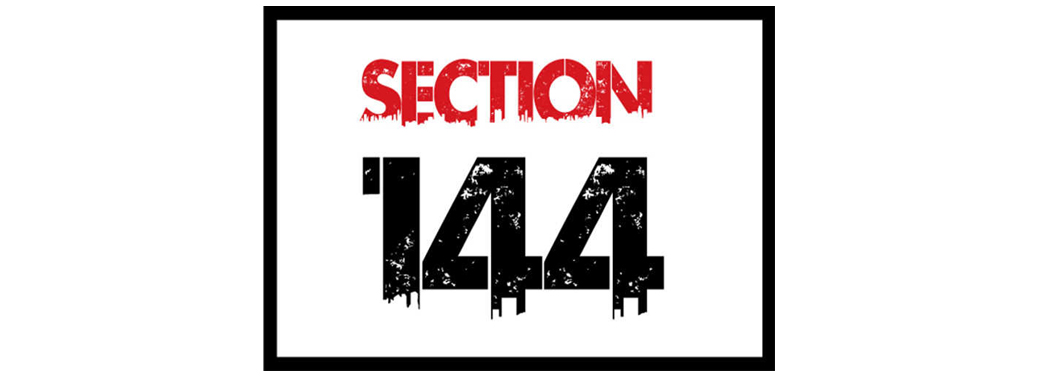
Context:
- In the backdrop of invocation of section 144 of Criminal Procedure Code (CrPC)in many parts of the country amid protest, this article highlights that this provision of criminal law is a legacy of British which we continue to practice even in modern times.
Who is Empowered?
- District Magistrate, a Sub-divisional Magistrate or any other Executive Magistrate can invoke section 144 of CrPC in an area in urgent cases of nuisance of apprehended danger or if they believe immediate prevention or speedy remedy is desirable to control the situation.
What can the Magistrate Do?
- Section 144 of CrPC gives power to a District Magistrate, a sub- divisional Magistrate or any other Executive Magistrate on behalf of the State Government to issue an order to an individual or the general public in a particular place or area to “abstain from a certain act” or “to take certain order with respect to certain property in his possession or under his management”.
- As per the Section, the order can be passed only “if such Magistrate considers”, that the direction is likely to prevent
- a. Obstruction, Annoyance or Injury to any person lawfully employed
- b.Danger to Human Life, Health or safety
- c.Disturbance of the Public Tranquility, or a riot or Affray
- This order can be passed against a particular individual or general public. The order can be passed even ex-parte.
- In emergency cases, the magistrate can pass these orders without prior notice to the individual against whom the order is directed.
Can they Prevent Assembly of People?
- It is generally believed that assembly of three or more people is prohibited under Section 144. However, it can be used to restrict even a single individual. Such an order is passed when the magistrate considers that it is likely to prevent, or tends to prevent, obstruction, annoyance or injury to any person lawfully employed, or danger to human life, health or safety, or a disturbance of the public tranquillity, or a riot, of an affray.
What is the Maximum Tenure of Section 144?
- However, no order passed under Section 144 can remain in force for more than two months from the date of the order, unless the state government considers it necessary. Even then, the total period cannot extend to more than six months.
Rescinding of section 144:
- As per Cr.PC, an aggrieved person may challenge the order of magistrate to invoke section 144. So under section 144, Any Magistrate may, either on his own motion or on the application of any person aggrieved, rescind or alter any order made under this section, by himself or any Magistrate subordinate to him.
- While taking such application of rescinding section 144, the magistrate concerned shall provide the applicant an opportunity to appear before him either in person or by pleader for showing cause against the order.
Criticism on invoking section 144 by the Government:
- Section 144 ends up conferring almost unbridled powers upon executive officers to commit any kind of atrocities on people detained. It also takes away people’s fundamental right under Article 19 of expression and protest against government actions and policies.
- The only check placed upon the officer before passing any order under Section 144 is whether or not it satisfied his conscience, which is often eroded by political demands by the ruling government.
- The immediate remedy against such an order is a revision application to the magistrate himself.
- An aggrieved individual can also approach the High Court by filing a writ petition if his fundamental rights are at stake. However, fears exist that before the High Court intervenes, the rights could already have been infringed.
- Imposition of Section 144 to an entire state, as in UP, has also drawn criticism since the security situation differs from area to area.
Impact on Fundamental Rights:
- The orders under this provision will lead to the infringement of fundamental rights to freedom of speech and expression, assembly and movement guaranteed under Articles 19(1)(a),(b) and (c) of the Constitution. Hence, the orders under Section 144 have to meet the test of “reasonable restrictions” as per Article 19.
“Test of Proportionality”:
1. Modern Dental College case (2016):
- To ascertain whether a restriction on liberties guaranteed under Article 19 is reasonable or not, the Supreme Court has developed the “test of proportionality”.
- In the Constitution Bench decision in Modern Dental College case (2016), the Supreme Court held that a law imposing restrictions will be treated as proportional if :
- a.It is meant to achieve a proper purpose, and
- b.If the measures taken to achieve such a purpose are rationally connected to the purpose, and
- c.If such measures are Necessary.
2.Also in the Puttaswamy case (2017),the SC laid down a four-fold test to determine proportionality:
- a.A measure restricting a right must have a legitimate goal (legitimate goal stage).
- b.It must be a suitable means of furthering this goal (suitability or rationale connection stage).
- c.There must not be any less restrictive but equally effective alternative (necessity stage).
- d. The measure must not have a disproportionate impact on the right holder (balancing stage).
- So, the legality of the orders passed under Section 144 CrPC will be tested on the basis of these principles of ‘reasonableness’ and ‘proportionality’.
Rulings of Judiciary favouring Section 144:
1. Babulal Parate vs State of Maharashtra (1961):
- A five-judge Bench of the Supreme Court refused to strike down the law, saying it is “not correct to say that the remedy of a person aggrieved by an order under the section was illusory”.
2.Ram Manohar Lohiya case (1967):
- It was challenged again by Dr Ram Manohar Lohiya in 1967 and was once again rejected, with the court saying “no democracy can exist if ‘public order’ is freely allowed to be disturbed by a section of the citizens”.
3.Madhu Limaye vs Sub-Divisional Magistrate (1970):
- In another challenge in 1970 Madhu Limaye vs Sub-Divisional Magistrate, a seven-judge Bench said the power of a magistrate under Section 144 “is not an ordinary power flowing from administration but a power used in a judicial manner and which can stand further judicial scrutiny”.
- The court, however, upheld the constitutionality of the law.
It ruled that the restrictions imposed through Section 144 cannot be held to be violative of the right to freedom of speech and expression, which is a fundamental right because it falls under the “reasonable restrictions” under Article 19(2) of the Constitution.
The fact that the “law may be abused” is no reason to strike it down, the court said.
Mere likelihood of danger not a ground to invoke Sec.144:
- As held by the Supreme Court, mere apprehension of danger is not a sufficient ground to curb citizens’ rights by invoking Section 144 CrPC.
- There should be ‘genuine’ apprehension of ‘imminent’ danger and not mere ‘likelihood’ or ‘tendency’.
- In Babulal Parate v State of Maharashtra (1961) case, the SC held that the power can be used even in anticipation of danger. But it should be based on sufficient materials which show that immediate prevention of certain acts is necessary to preserve public safety.
- “The test laid down in the Section is not mere `likelihood’ or `tendency’. The section says that the magistrate must be satisfied that immediate prevention of particular acts is necessary to counteract danger to public safety etc. The power conferred by the section is exercisable not only where present danger exists but is exercisable also when there is an apprehension of danger”.
CITIZENSHIP AMENDMENT ACT, 2019: CENTRE – STATE RIGHTS
20, Dec 2019
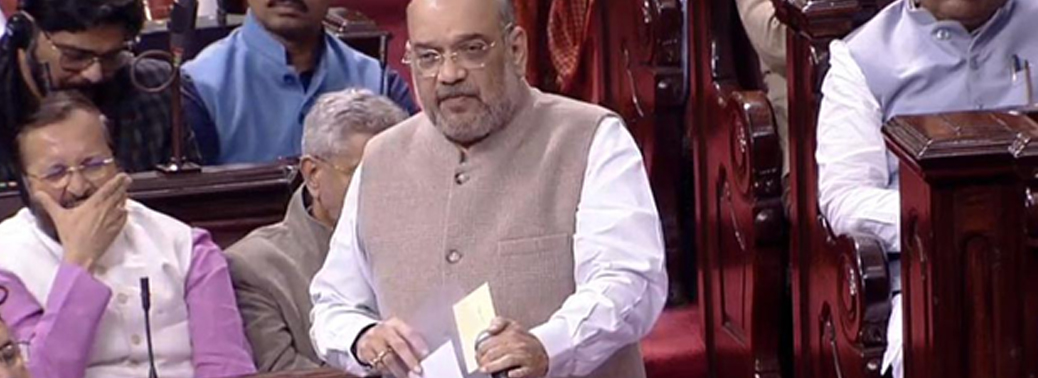
Context:
- Some of the opposition-ruled states have declared – they will not implement the changes in the Citizenship Act. Kerala, Punjab, West Bengal and Chhattisgarh have claimed that they will block implementation of the CAA in their states.
Citizenship Amendment Act, 2019:
- The Act seeks to provide Indian citizenship to religiously persecuted Hindu, Parsi, Christian, Buddhist, Jain and Sikhimmigrants from Pakistan, Bangladesh and Afghanistan, with a cut-off date of their entry into India on December 31, 2014.
- The Act does not apply totribal areas of Tripura, Mizoram, Assam and Meghalaya because of being included in the 6th Schedule of the Constitution.
- Also, the areas that fall under the Inner Limitnotified under the Bengal Eastern Frontier Regulation, 1873, will also be outside the Act’s purview
The Centre – State Rights:
- While Kerala, Punjab and West Bengal had reserved their apprehension to this amendment, the Chief Minister of Madhya Pradesh indicated that his government is against the law.
- The Maharashtra government cited that it will take its decision on the implementation of the Citizenship Amendment Act only after the Supreme Court hears a bunch of petitions challenging the legislation.
- Meanwhile, the Defence minister had announced that the threat by some states not to implement the Citizenship Amendment Act (CAA) is a challenge to India’s federal structure as the legislation has been passed by Parliament and is binding on all states after the presidential assent.
Important questions that are arising from the Issue are –
- What is the extent of a state government’s role in implementing the Citizenship Act?
- Can the Centre implement the law without the help of the state government?
What is the extent of a state government’s role in implementing the Citizenship Act?
- Any law requires rules to implement it. Such rules are termed as subordinate legislation in legal parlance and are framed by the respective governments through powers provided in the parent Act.
- Under Section 11 the Citizenship Rules, 2009, the authority for processing applications for citizenship, both through registration and naturalisation, is the District Collector. The District collector function under the authority of the state government.
- As per Section 12 (2) of the Citizenship Rules, the state governmentshall forward the application along with its recommendation and the report of the collector to the Central Government.
- A maximum of 90 days is fixed both for the collector and the state government to complete the process, although the Citizenship Rules allow for a delay on account of special reasons.
- It is here where the state governments could stall the process. They could simply stop processing applications under the Citizenship Amendment Act, 2019.
- As per the existing rules, if the application is not forwarded by the state government within 90 days, the applicant may make a representation to the Ministry of Home Affairs by enclosing a copy of the acknowledgement issued by the collector. However, the Union Home Ministry cannot do more than urging the state government to expedite the process.
Can the Centre implement the law without the help of the state government?
- The Citizenship Amendment Act, 2019 has inserted Section 6Binto the principal Act.
- According to the Section 6B, the Central Government or an authority specified by it in this behalf may, grant a certificate of registration or certificate of naturalisation to a person.
- Citizenship Amendment Act, 2019 also inserted a specific clause under Section 18 to ensure the Central government can change the rulesgoverning the new clauses for persecuted minorities from the three countries.
- This reinforces the Central government’s powers to amend the Citizenship Rules and declare someone other than the District Collector as the authorityto deal with the citizenship applications.
Can the Centre’s powers be Questioned?
- Under the Citizenship Act, it is mandatory for the Centre to place any amendments made to the rules before Parliament.
- Within 30 days of the tabling of amendments, any member of Parliament can demand a discussion and a vote to modify or scrap the changes made to the rules.
- However, PRS Legislative Research data shows that, these rules are rarely scrutinised by Parliament.
- No discussion on specific rules has taken place in Parliament in the 14th and 15th Lok Sabha [between 2004-2010].
The Centre-State Tussle:
- On disputes between states and Centre, there is always the provision of going to the Supreme Court (under original jurisdiction).
- However, when the implementation is under concern, the states really have no role because the Grant of citizenship is an act by the Centre.
- In case of the movement of refugees, a state subject, which comes under law and order, state may act against the Centre’s moves. For example, the state government can choose not to round up refugees and move them to a detention centre.
What happens when a state refuses to carry out the Centre’s orders?
- In such a case, the Centre can invoke Article 256of the Constitution to issue directions to the state.
- According to the Article 256, which defines the obligation of states and the Union, the executive power of the Union extends to giving of any such directions to a State, as may appear to the Government of India to be necessary for any purpose.
- Though many of the provisions in the Citizenship Amendment Act were considered to be against the fundamental ideas enshrined in the Constitution, the fate of the law lies with the Guardian of the Constitution, the Supreme Court.
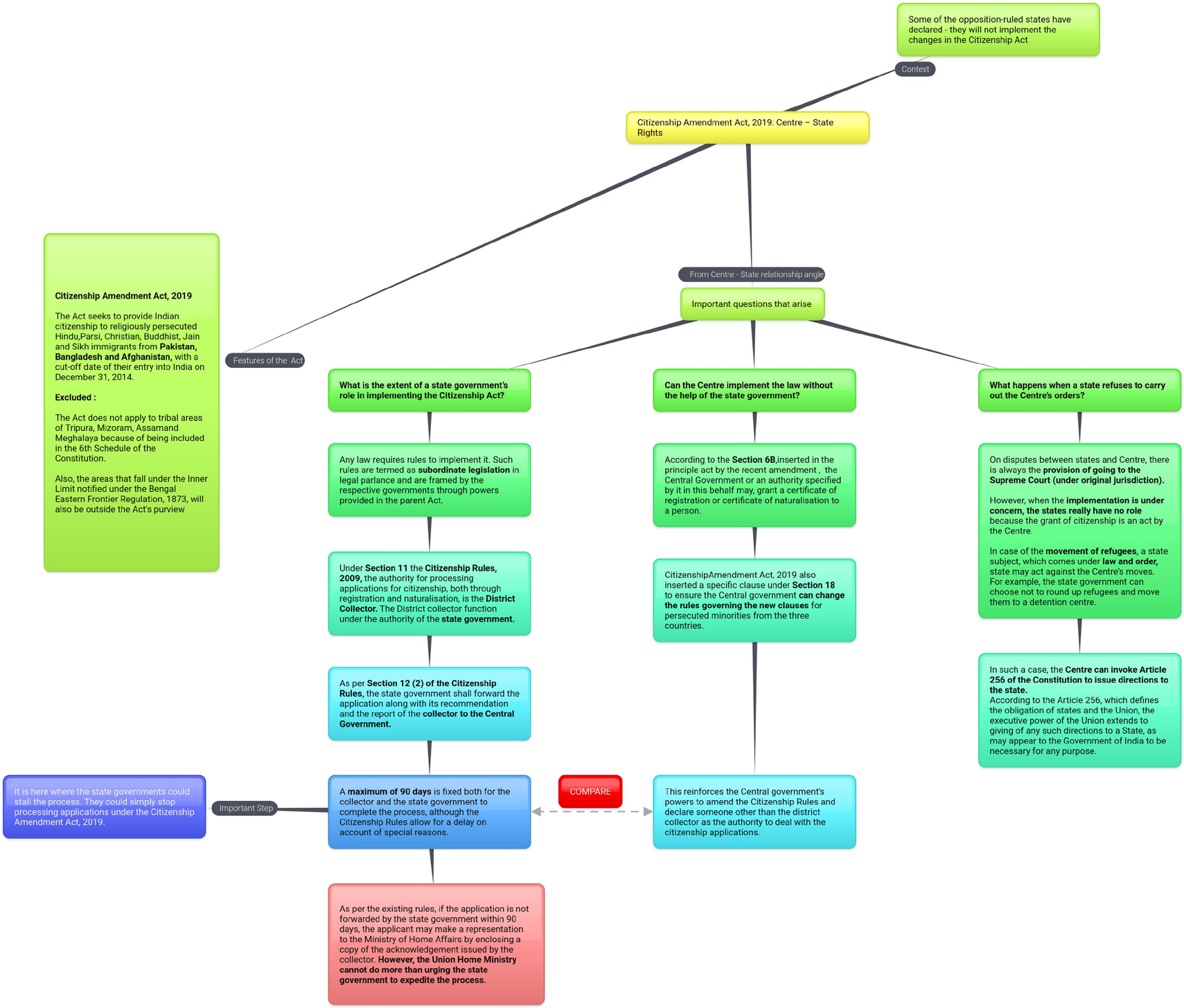
ONE NATION ONE RATION CARD SCHEME
20, Dec 2019
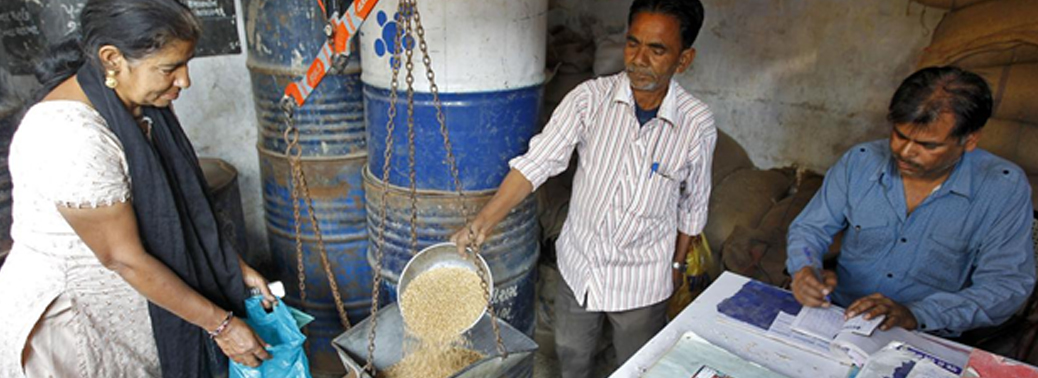
Why in News?
- The Centre has designed a standard format for ration cards as it moves ahead with ‘one nation, one ration card’ initiative and has asked State governments to follow the pattern while issuing fresh Ration Cards.
About the Ration Card and Ration Shop:
- A ration cardis issued to the head of the family, depending on the number of members in a family and the financial status of the applicant.
- It is used by households to get essential food grains at subsidised prices from designated ration shops (also called fair price shops) under the Targeted Public Distribution System (TPDS).
- Over the years, different types of ration cards were issued depending on the level of deprivation. Later, in 2013, when the National Food Security Billwas passed, different ration cards were compressed to just two — priority and Antyodaya (for the poorest).
- The responsibility of identifying eligible families and issuing ration cards to them rests with the state/UT government.
- Ration shopscan be privately owned or owned by cooperative societies or by the government. Ownership licenses are issued by the concerned state government.
- Presently, commodities including wheat, sugar, rice and kerosene are being allocated as part of the (TPDS). State governments have the discretion to provide additional commodities.
About the Scheme:
- Since Ration Cards are issued by State Governments, this implied that beneficiaries could procure food grains only from the designated ration shops within the concerned state.
- If a beneficiary were to shift to another state, he/she would need to apply for a new ration card in the second state. There were other complications.
- For instance, after marriage, a woman needed to get her name removed from the ration card issued to her parents, and get it added to the ration card issued to her husband’s family.
- The ONORC schemeattempts to address this gap in TPDS delivery. Essentially, the scheme has been launched keeping in mind the internal migration of our country, since people keep moving to different states in search of better job opportunities and higher standards of living.
- As per Census 2011, 4.1 crore people were inter-state migrants and 1.4 crore people migrated (inter and intra-state) for employment.
- With the ONORC scheme being implemented, the beneficiary can buy food grains from ration shops located in any of the states.
- Currently, the central government’s ambitious initiative is being implemented on a pilot basis in a cluster of six States. The government hopes to implement the scheme across India by June 1, 2020.
Benefits of the Proposed Scheme:
- According to Census 2011, there are more than 45 crore internal migrants in India, of whom more than half have not completed primary education, while 80% have not completed secondary education.
- Lower levels of education are linked to lower income, which would make a large percentage of these migrants eligible for NFSA benefits.
- Registering for ration cards at their new location is an arduous process, especially if some members of the household still remain in their original home.
- Apart from this, there are short-term migrants, often working in cities, but not moving there permanently.
- Women who change locations after marriage also find it difficult to start accessing ration benefits using a new household’s card.
- To curb corruption and improve access and service quality by Removing Monopolies.
Drawbacks of the Scheme:
- Since the scheme is based on technology, the government may face some technical challenges during the implementation of the scheme.
- Few Regional Parties have expressed apprehensions on bearing the cost of additional ration cards. This is a matter which is to be settled between the states and the Government of India.
- One of the apprehensions mentioned by few states is the cost of additional food grain to be supplied to the migrant workers.
- However, the whole system is based on the entitlements mandated under the NFSA and this prevents the charges of additional cost. Beneficiaries will continue to pay the same issue prices that are fixed under the NFSA.
REPORT ON “FUNCTIONING OF BORDER GUARDING FORCES”
18, Dec 2019

Why in News?
- The Department Related Standing Committee on Home Affairs, currently chaired by Anand Sharma, has submitted a report on the action taken by the Ministry of Home Affairs (MHA) with respect to the recommendations given by the committee in the 214threport regarding the “Functioning of Border Guarding Forces”.
Key Recommendations of the Report:
- It has objected to the overuse of the Central Armed Police Force (CAPF) for rigorous internal security and election-related duties to the extent that even the reserved battalions are deployed not giving them enough time for rest and recuperation.
- To boost the morale of the CAPFs, the committee insisted on limiting deputation of officers from the IPS and the armed forces to CAPFs at 25% and the CAPFs cadres should be given an opportunity to become the Director General of respective forces. However, the MHA, in its response to the panel, said, the 7th Pay Commission and the Committee on Allowance did not agree to such special pay to CAPF.
- The committee insisted on paying paramilitary service pay to the CAPF on par with the defence forces personnel.
- The committee noted that the defence forces personnel are being paid Military Service Pay in view of the risk to life and social and family isolation. So, it recommended that CAPF should also get similar incentive in the form of Paramilitary Service Pay as they also face similar risks and isolation.
- The committee has also noted it was pained to note that the reserved battalions, which are to be used judiciously and provided rest for being in a state of preparedness, are engaged in duties such as internal security and counter-insurgency, which are quite rigorous.
- It urged the Home Ministry to draw a line to allow much required rest and recuperation to the personnel and adhere to the laid down policy on “rest and recuperation”.
- Referring to suicides in the CAPFs, the committee urged the Ministry to put in place an institutional mechanism with representatives of the MHA, the Bureau of Police Research
- and Development, heads of various forces and experts in public health, mental health, psychology and psychiatry to address the issue.
Action regarding the Recommendations:
- of the 119 recommendations of the Committee made in its 214th Report, the MHA accepted and acted upon 29. The Committee decided not to pursue further action taken in respect of 50 while rejecting the Ministry’s replies in respect of 17
About Central Armed Police Force (CAPF):
- The Central Armed Police Forces (CAPF) refers to seven security forces in India under the authority of Ministry of Home Affairs.
1. Assam Rifles (AR)
2. Border Security Force (BSF)
3. Central Industrial Security Force (CISF)
4. Central Reserve Police Force (CRPF)
5. Indo Tibetan Border Police (ITBP)
6. National Security Guard (NSG)
7. Sashastra Seema Bal (SSB)
- Each of the seven has its own cadre of officers, but they are headed by officers of the Indian Police Service.
TECH TITANS UNDER WATCH
17, Dec 2019
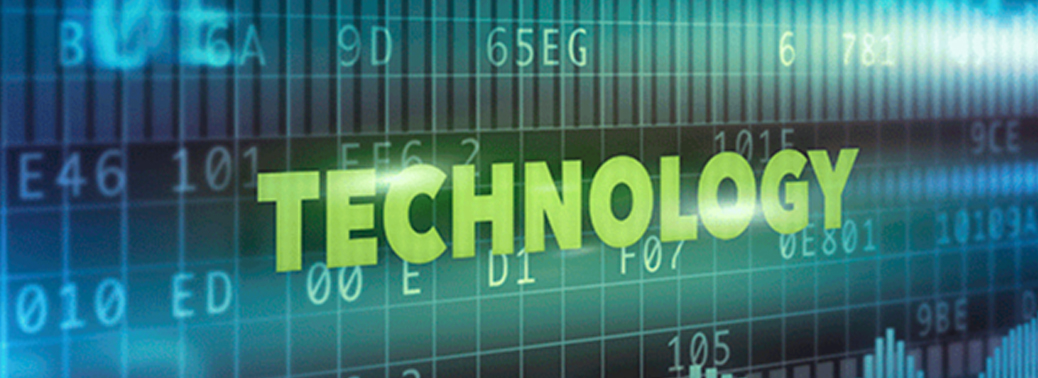
Why in News?
- In the recent past a number of investigations have been initiated,against the tech giants Amazon, Google, Facebook and Apple by the regulatory agencies over practices that amounts to anti-competitive behaviour.
- These investigations are termed under an over-arching term called ‘anti-trust regulations’.
Background:
- The world has witnessed the emergence of Big tech firms like Google, Facebook, Amazon, Apple, Twitter, Microsoft etc in recent decades.
- With growing monopoly in the respective areas these firms have a growing clout over world population in the recent times.
- As a result regulators around the world are calling upon these Bigtechs including Amazon, Apple, Facebook and Google to curb their market monopoly power.
Basic Issues:
- Basically there are two sources of tension, which has led to the anti-trust regulations against the Tech-Giants.
1. Anti-competitive Behaviour
- These companies have engaged in anti-competitive behaviour by thus stifling smaller potential rivals and holding onto an outsized market share.
2. Influence on Policy-Making
- Due to the monopoly in these businesses, they now have a vast influence on policy making, which could have large-scale impact particularly with respect to issues like data privacy.
- Example: The United States Justice Department and the House Judiciary Committee separately has recently announced major antitrust investigations into Google, Facebook, Amazon and Apple promising “a top-to-bottom review of the market power held by giant tech platforms.”
Recent examples of Anti-Trust Regulations:
1. Facebook
- In February 2019, Facebook faced the wrath of antitrust agencies of multiple countries including US, UK, Singapore etc over consumer privacy issues, unauthorized data leak and undue influence on consumers including voter behavior during elections and shaping public discourse.
- The questions are also focused on acquisition by FB to maintain its pre-eminent market position in the social networking ecosystem (WhatsApp for example).
- Besides, FB also acquired Onavo, a data analysis firm, in 2013, which then allegedly helped the social media giant see off potential competitors by having access to data.
2. Google
- The US department of justice is preparing to launch antitrust proceedings against Google.
- Case: Google being a monopoly in search engines gives it undue advantage in online advertising space. Google handles more than 90% of online searches across the world and therefore can influence the advertising through search results.
- It is also alleged that Google has increasingly been sending users to its own sites to answer their queries, including products such as Google Flights, Google Maps etc.
- Google is also alleged to be biased over publishing of some news in favour of some political ideology and restricting the others.
3. Amazon
- The Federal Trade Commission of US is initiating an antitrust proceeding against Amazon.
- Case: Being a monopoly in online retailing, it has stifled competition by restricting its sellers from selling their goods more cheaply on other platforms.
- Questions have also been raised on whether Amazon favours its self-branded products over those of third-party sellers, by requiring other sellers to use its advertising services by rankings of product search displays, or by using data on other sellers to tweak its own offerings to its advantage.
- Besides a number of acquisitions by Amazon is also seen as anti-competitive Eg: Flipkart in India, Whole Foods, an upmarket U.S. grocery chain etc.
4. Apple
- Recently there have been questions over the App Store policies with respect to how Apple ranks search results and exclusion of certain competing apps from the Store. For example,
Spotify a music streaming app has complained on the alleged restrictions of their app on App store.
- Besides there are also questions as to how Apple determines revenue sharing with the companies that have their app on the App store.
Legislative framework regarding Anti-trust regulations in India
- In the pre-liberalisation era, the antitrust regulation in India was confined to curbing monopolization through the Monopolistic and Restrictive Trade Practices Act, 1969.
- In the post-LPG era, the antitrust law in India had to focus on promoting competition, thereby giving a fillip to investment climate.
- Accordingly Competition Act, 2002 was enacted replacing the MRTP Act.
About Competition Act, 2002: Main Provisions:
- To check anti-competitive practices like ‘cartelization’.
- Regulation of mergers and acquisitions and combinations.
- To ensure freedom of trade.
- It restricts the abuse of dominant position of any enterprise that control supply, prices, or other practices that deny market access to other competing firms.
- It also applies to foreign multinational corporations operating in India and foreign companies selling their goods in India.
- The Act also provides for Competition Commission of India as the competition regulator in India vested with the powers of a civil court
TRAKEA SOFTWARE FOR CRIMINAL INVESTIGATION
16, Dec 2019
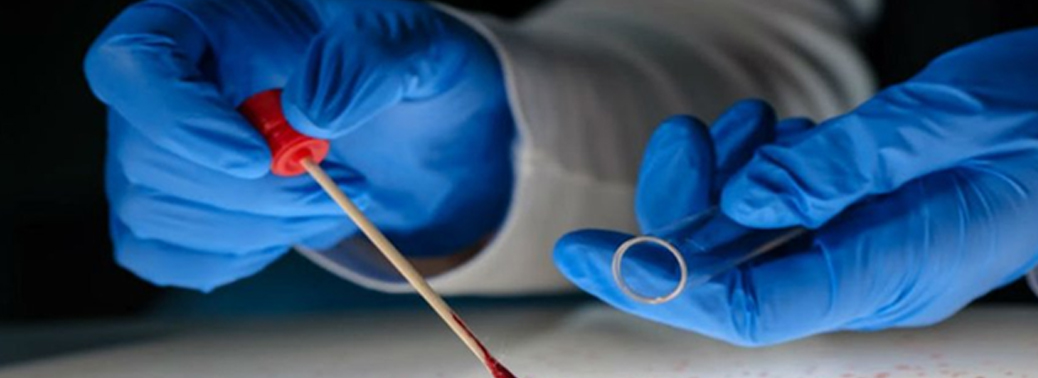
Why in News?
- Haryana Police has adopted unique bar-coding software Trakea to ensure tamper-free Criminal Investigation.
Highlights:
- As per the conventional practice all over the country, the crime exhibits are labelled with complete details, including the case FIR number; the police station; and the names and addresses of the victim, accused, medical officers, etc.
- With these details available, the crime exhibits can be easily traced and tracked by virtually anyone.
- The crime exhibits could include DNA samples, documents, and reports of ballistics examinations, serology, biology, toxicology, lie-detection, etc.
- From the time the sample is collected to the time when forensic experts draw their final conclusion, there are multiple stages where the accused can use their influence to tamper with the sample in order to get a favourable forensic report.
Trakea Software:
- Essentially, it is a forensic evidence management system that helps in automation of the entire procedure, right from the stage when forensic experts collect vital samples from the scene of crime.
- Trakea is aimed at ensuring security and a tamperproof tracking system for forensic reports. It streamlines the functioning of Forensic Science Laboratories.
- Even the selection of forensic teams is done randomly through this software.
- Trakea ensures foolproof security of the samples collected from the scene of crime, and the forensic analysis reports, and is different from traditional methods that the state police force has been following for decades.
- Haryana Police claims it is the country’s first police force to have introduced this unique bar-coding for forensic reports.
Development & Functionality:
- The software was originally designed by a prisoner who was lodged in Bhondsi jail for 13 months.
- A software engineer by profession, the man was facing charges of having murdered his wife, but was ultimately acquitted by the trial court.
- The same software engineer had earlier designed a software digitizing data pertaining to prison inmates and prison operations across all 19 jails of Haryana.
- Using this software, the judiciary too will be able to track the forensic examination report during the trial, significantly cutting down on delays.
- The system includes features of two-stage bar-coding to maintain the secrecy of the samples, sent along with a strong, unbroken biometrically authenticated chain of custody trial.
- It is coupled with features to eliminate chances of pick-and-choose by automated case allocation to the scientists, followed by report-generation and real-time tracking of the status of cases through automated e-mail and SMS notifications.
- Also, there will be no case details mentioned on the crime exhibits/samples/parcels except the unique bar code that can only be read through the biometric system.
PROGRAMMES TO CONTROL ANAEMIA AMONG WOMEN
16, Dec 2019
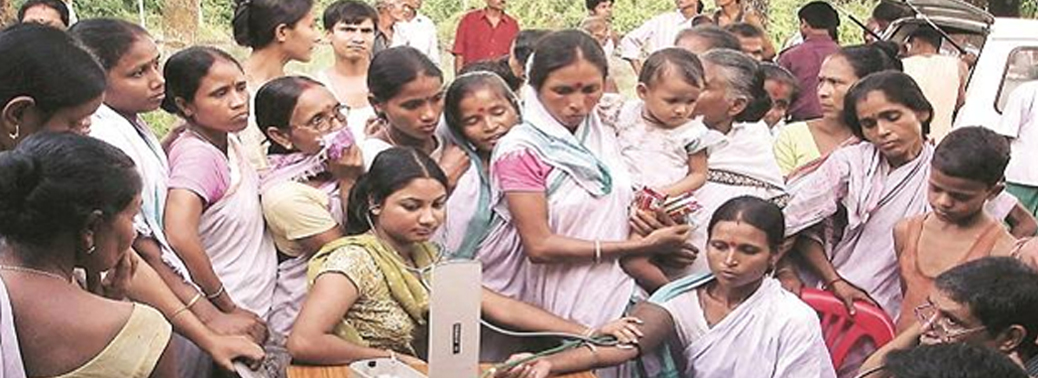
Why in News?
- The anaemia control programme review indicated challenges in IFA supply chain management, demand generation and monitoring. Considering, the slow progress i.e. less than 1% per annum in reduction of anaemia from 2005 to 2015, the Government of India has launched the Anaemia Mukt Bharat (AMB) strategy under the Prime Minister’s Overarching Scheme for Holistic Nourishment (POSHAN) Abhiyaan and the targets has been set to reduce anaemia by 3% per year.
Highlights:
- The 6x6x6 strategy under AMB implies six age groups, six interventions and six institutional mechanisms. The strategy focuses on ensuring supply chain, demand generation and strong monitoring using the dashboard for addressing anaemia, both due to nutritional and non-nutritional causes.
The Six Population Groups under AMB strategy are:
- Children (6-59 months)
- Children (5-9 years)
- Adolescents girls and boys (10-19 years)
- Pregnant women
- Lactating women
- Women of Reproductive Age (WRA) group (15-49 years)
The Six Interventions are:
- Prophylactic Iron and Folic Acid Supplementation
- Deworming
- Intensified year-round Behaviour Change Communication (BCC) Campaign and delayed cord clamping
- Testing of anaemia using digital methods and point of care treatment,
- Mandatory provision of Iron and Folic Acid fortified foods in Government funded health programmes
- Addressing non-nutritional causes of anaemia in endemic pockets with special focus on malaria, hemoglobinopathies and fluorosis and the six institutional mechanisms.
The Six Institutional Mechanisms are:
- Inter-ministerial coordination
- National Anaemia Mukt Bharat Unit
- National Centre of Excellence and Advanced research on Anemia Control
- Convergence with other ministries
- Strengthening supply chain and logistics
- Anaemia Mukt Bharat Dashboard and Digital Portal- one-stop shop for Anaemia.
CENTRE IN TALKS WITH J&K, LADAKH ON SPECIAL STATUS
14, Dec 2019
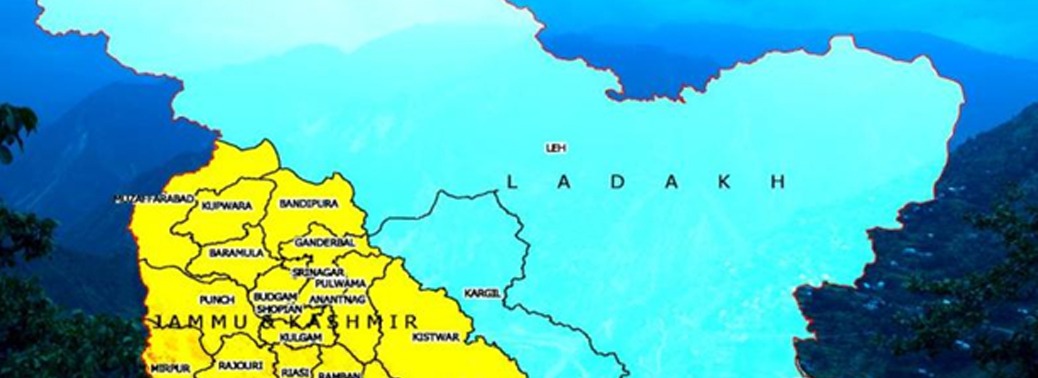
Why in News?
- The Ministry of Home Affairs (MHA) is holding consultations with the Union Territories of Jammu and Kashmir (J&K) and Ladakh to grant them “special status” on the lines of Article 371 of the Constitution.
Special Status under Article 371:
- Articles 369 through 392 appear in Part XXI of the Constitution, titled ‘Temporary, Transitional and Special Provisions’.
- Article 371 of the Constitution includes “special provisions” for 11 states, including six states of the Northeast.
- Articles 370 and 371 were part of the Constitution at the time of its commencement on January 26, 1950; Articles 371A through 371J were incorporated subsequently.
- While Article 370, which limited purchase and inheritance of property to permanent residents, was scrapped for J&K, similar provisions provided under Article 371 in many states are still in force.
States that are under Article 371:
- Article 371, Maharashtra and Gujarat:
- 1. Governor has “special responsibility” to establish “separate development boards” for “Vidarbha, Marathwada, and the rest of Maharashtra”, and Saurashtra and Kutch in Gujarat;
- 2. It ensures “equitable allocation of funds for developmental expenditure over the said areas”, and “equitable arrangement providing adequate facilities for technical education and vocational training, and adequate opportunities for employment” under the state government.
- Article 371A (13th Amendment Act, 1962), Nagaland:
- 1. Inserted after a 16-point agreement between the Centre and the Naga People’s Convention in 1960, which led to the creation of Nagaland in 1963.
- 2. Parliament cannot legislate in matters of Naga religion or social practices, Naga customary law and procedure, administration of civil and criminal justice involving decisions according to Naga customary law, and ownership and transfer of land without concurrence of the state Assembly.
- Article 371B (22nd Amendment Act, 1969), Assam:
- The President may provide for the constitution and functions of a committee of the Assembly consisting of members elected from the state’s tribal areas.
- Article 371C (27th Amendment Act, 1971), Manipur:
- The President may provide for the constitution of a committee of elected members from the Hill areas in the Assembly, and entrust “special responsibility” to the Governor to ensure its proper functioning.
- Article 371D (32nd Amendment Act, 1973; substituted by The Andhra Pradesh Reorganization Act, 2014), Andhra Pradesh and Telangana:
- 1. President must ensure “equitable opportunities and facilities” in “public employment and education to people from different parts of the state”.
- 2. He may require the state government to organize “any class or classes of posts in a civil service of, or any class or classes of civil posts under, the State into different local cadres for different parts of the State”.
- 3. He has similar powers vis-à-vis admissions in educational institutions.
- Article 371E:
- Allows for the establishment of a university in Andhra Pradesh by a law of Parliament. But this is not a “special provision” in the sense of the others in this part.
- Article 371F (36th Amendment Act, 1975), Sikkim:
- 1. The members of the Legislative Assembly of Sikkim shall elect the representative of Sikkim in the House of the People.
- 2. To protect the rights and interests of various sections of the population of Sikkim, Parliament may provide for the number of seats in the Assembly, which may be filled only by candidates from those sections.
- Article 371G (53rd Amendment Act, 1986), Mizoram:
- Parliament cannot make laws on “religious or social practices of the Mizos, Mizo customary law and procedure, administration of civil and criminal justice involving decisions according to Mizo customary law, ownership and transfer of land… unless the Assembly… so decides”.
- Article 371H (55th Amendment Act, 1986), Arunachal Pradesh:
- The Governor has a special responsibility with regard to law and order, and “he shall, after consulting the Council of Ministers, exercise his individual judgment as to the action to be taken”.
- Article 371I Goa:
- The Legislative Assembly of the state of Goa must consist of not less than 30 members.
- Article 371J (98th Amendment Act, 2012), Karnataka:
- 1. There is a provision for a separate development board for the Hyderabad-Karnataka region. There shall be “equitable allocation of funds for developmental expenditure over the said region”, and “equitable opportunities and facilities” for people of this region in government jobs and education.
- 2. A proportion of seats in educational institutions and state government jobs in Hyderabad-Karnataka can be reserved for individuals from that region.
Significance of Special Status:
- The intention behind these provisions is to safeguard the interest and aspirations of certain backward regions or to protect cultural and economic interests of the tribal people or to deal with the disturbed law and order in some parts.
Difference between Special Status and Special Category Status:
- The constitution provides special status through an Act that has to be passed by 2/3rds majority in both the houses of Parliament whereas the special category status is granted by the National Development Council, which is an administrative body of the government.
- For example, Jammu and Kashmir enjoyed a special status as per Article 370 and also special category status.
- But now that Article 35A has been scrapped and it has become a union territory with legislature, special category status doesn’t apply to J&K anymore.
Criteria for special category status:
- Hilly and difficult terrain
- Low population density or sizeable share of tribal population
- Strategic location along borders with neighbouring countries
- Economic and infrastructural backwardness
- Non-viable nature of state finances
Who grants Special Category status to states?
- The decision to grant special category status lies with the National Development Council, composed of the prime minister, union ministers, chief ministers and members of the planning commission, who guide and review the work of the commission.
- Special category status for plan assistance has been granted in the past by the National Development Council (NDC) to some states that are characterized by a number of features necessitating special consideration.
Benefits for States confer with Special Category Status:
- States which are granted Special Category Status Enjoy Several Benefits.
- The central government bears 90 percent of the state expenditure on all centrally-sponsored schemes and external aid while rest 10 percent is given as loan to state at zero percent rate of interest.
- Preferential treatment in getting central funds.
- Concession on excise duty to attract industries to the state.
- 30 percent of the Centre’s gross budget also goes to special category states.
- These states can avail the benefit of debt-swapping and debt relief schemes.
- States with special category status are exempted from customs duty, corporate tax, income tax and other taxes to attract investment.
- Special category states have the facility that if they have unspent money in a financial year; it does not lapse and gets carry forward for the next financial year.
INDIA SKILLS REPORT
14, Dec 2019
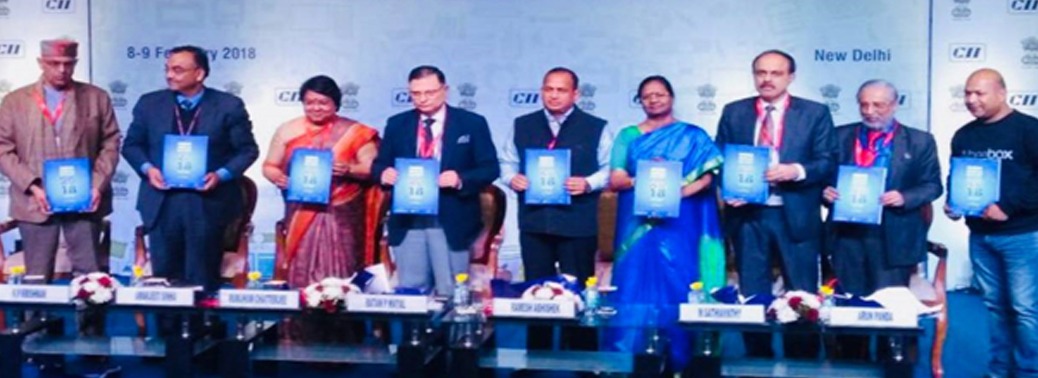
Why in News?
- India Skills Report 2019-20 has been recently released PeopleStrong, a Global Talent Assessment Company.
- This report is jointly prepared by PeopleStrong in collaboration with Confederation of Indian Industry (CII) along with partners like UNDP, AICTE, and AIU.
Key Findings of the Report:
- The report consists of an in-depth study of employability amongst the fresh candidates joining the workforce.
- About 46.21 per cent students were found employable or ready to take up jobs in 2019. The employability rate was 33 per cent in 2014, and 47.38 per cent in 2018.
- Female employability witnessed an upward trend at 47 per cent this year from 38 per cent in 2017 and 46 per cent in 2018.
- Most employable candidates as per the courses were MBA Students at 54 percent.
- A decline in employability was seen in B.Tech, Engineering, MCA and Technical & Computer-related courses.
Performance of States:
- Top three states in terms of employability: Maharashtra, Tamil Nadu and Uttar Pradesh.
- Top two employable cities: Mumbai and Hyderabad.
- States that registered a dip in ranking were West Bengal and Haryana, which could not make it to the top ten list.
Way ahead for India:
- The futuristic vision of making India a $5 trillion Economy Demands Increase in the per-capita income of Indians which can happen only when people get employment.
- This requires building the human Capital which involves infusing requisite skills and useful talent in the youth.
- In order to achieve this, along with the universities and colleges in India, various emerging start-ups must involve innovative technologies to facilitate skill up-gradation, job creation, internships and workforce management on their platforms.
INDIA DESIGN COUNCIL (IDC)
13, Dec 2019
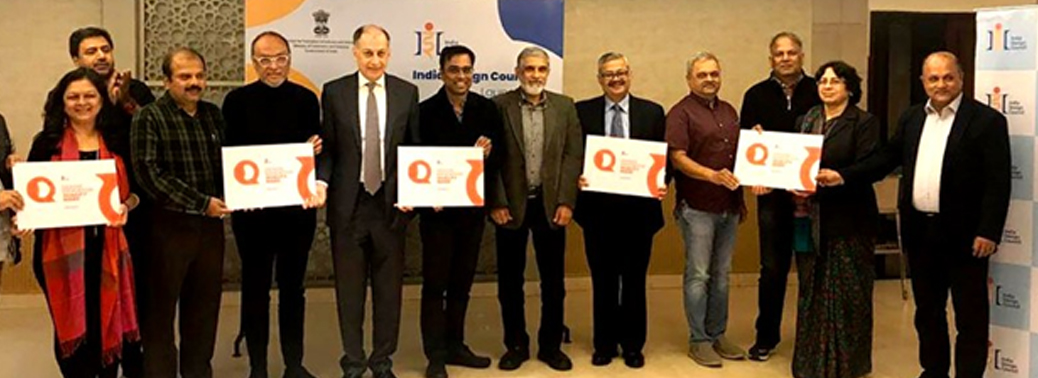
Why in News?
- The India Design Council launches two initiatives to promote Design Education and Standards.
Highlights:
- The IDC launched the Chartered Designs of India (CDI) and the Design Education Quality Mark (DEQM).These two initiatives of the IDC and the National Institute of design, Ahmedabad will help to address the 5 challenges of scale, quality of design, quality of education for design, raising the priority for design in industry and design for public purpose. As Design Education gains momentum in India, it is necessary that commissioners of design projects and designers are able to distinguish qualified professional designers as against hobbyists and non-professionals.
- India has a growing design ecosystem that has resulted in growth – both in the employment of creative skills and impact in the service sector.
- Creative manufacturing and design innovation will be the key drivers in the Make in India initiative of 2020 and beyond and further strengthening the brand “designed in India”.
- In 2007, India became one of the few countries to adopt a National Design Policy (NDP).
Design Education Quality Mark (DEQM):
- The DEQM will benchmark design education programmes on predetermined standards and will accord Design Education Quality Mark to institutions that meet the provisions of the published standard.
- The DEQ Mark will be granted to institutions that undergo the review process and meet or exceed the expectations for quality and standards as prescribed in the Quality Code.
- The Quality Mark will communicate to everyone that an institution has a guaranteed minimum level of quality and standards and has undergone a third party, neutral review process.
- The Quality Mark includes a trademark-protected logo, which could be used by the recipient institutions in all forms of internal and external communication.
Chartered Designs of India (CDI):
- The CDI is envisaged as an institution that will establish and uphold the professional standards of design practice in India.
- The focus of CDI is the “Professional Designer” identified by a design qualification and or experience.
- CDI is a cohesive platform that adheres to the design practice to standards in professional design competence, ethics and service.
India Design Council (IDC):
- The IDC’s establishment was announced by the government in 2009 in order to enable the policy implementation of the National Design Policy.
- IDC is mandated to implement the NDP and is committed to work towards raising the standards of design education in India and ensure that it meets global benchmarks.
- IDC is working with other government agencies, the design community, industry and educational institutions to promote design in business, society and public service.
- The IDC is an autonomous body of the Government of India established under the Department for Promotion of Industry and Internal Trade, Ministry of Commerce and Industry.
- It is a national strategic body for multi-disciplinary design and is involved in the promotion of design to make India a design-enabled country.
INITIATIVES TO DEVELOP WORLD CLASS RESEARCH FACILITIES
13, Dec 2019

Why in News?
- The Government has taken many initiatives to promote research in the field of science & engineering and to develop world-class research facilities in India.
Highlights:
- The following are some of the schemes in this regard:
Prime Minister’s Research Fellowship:
- The Prime Minister’s Research Fellowship (PMRF) scheme is aimed at attracting the talent pool of the country to doctoral (Ph.D.) programmes of Indian Institute of Science (IISc), Indian Institutes of Science Education & Research (IISERs), Indian Institutes of Technology (IITs) and Central Universities (which are among the top 100 National Institutional Ranking Framework, NIRF ranked universities) for carrying out research in cutting edge science and technology domains, with focus on national priorities.
- Under this scheme, meritorious students of IITs, IIITs, NITs and IISERs, after completing their B.Tech programme can straightaway get admission in PhD programme at IITs and IISc.
Junior Research Fellow (JRF)/Senior Research Fellow (SRF):
- Under the scheme of Junior Research Fellow, for research personnel engaged in Research and Development programmes are given emoluments of Rs.31,000/- per month. For Senior Research Fellow (SRF) these emoluments are Rs. 35,000/- per month.
Research Associate:
- Depending upon their experience and qualifications, the research associates are given emoluments in three pay levels ranging from Rs. 47000 to Rs. 54000.
- National Initiative for Technology Transfer (Establishment of Research Parks):
- The government has accorded approval for the establishment of research parks in the various IITs.
Institutions of Eminence (IoE):
- In order to empower the Higher Educational Institutions and to help them in becoming world-class teaching and research institutions, the government has recently declared 20 institutions (10 public and 10 Private institutions) as Institutions of Eminence.
- These institutes will emphasise on multi-disciplinary initiatives, high quality research, global best practices and international collaboration. Financial assistance up to an amount of Rs 1000 crore is to be provided to government institutions in the next 5 years.
Impacting Research, Innovation and Technology (IMPRINT):
- IMPRINT is a flagship national initiative of the Government, which aims at providing solutions to the most relevant engineering challenges and translating knowledge into viable technology in 10 selected technology domains, viz. health care, energy, sustainable habitat, nanotechnology hardware, water resources and river systems, advanced materials, information and communication technology, manufacturing, security and defence, and environmental science and climate change.
- It is a pan IITs and IISc Joint Initiative seeking to develop a roadmap for research.
- However, IMPRINT is not meant only for IITs and IISc; it is a national movement providing an opportunity for the higher echelon institutes in India to integrate with all grass-root level institutes, industry and organizations, mutually complement and deliver what the country demands and aspires.
DIVERSION OF LPG CYLINDERS FOR COMMERCIAL USE
13, Dec 2019

Why in News?
- The Comptroller and Auditor General (CAG), in its report on the Pradhan Mantri Ujjwala Yojana (PMUY), have highlighted the risk of diversion of domestic cylinders for commercial use.
About PMUY:
- It aims to provide LPG (liquefied petroleum gas)connections to poor households.
- Under the scheme, an adult woman member of a Below Poverty Line (BPL)family identified through the Socio-Economic Caste Census (SECC) is given a deposit-free LPG connection with financial assistance of Rs 1,600 per connection by the Centre.
- Eligible households will be identified in consultation with state governments and Union territories. The scheme is being implemented by the Ministry of Petroleum and Natural Gas. Under this scheme, initially 5 crore connections were to be provided to the people needing them. But now it has been extended to 8 crores.
- The scheme also provides interest-free loans to buy stove and refill by oil marketing companies.
- An initial outlay of Rs.8000 crore was sanctioned for the implementation of the scheme.The scheme is also expected to create employment to the tune of about a lakh.
- It will also boost the ‘Make in India’ programme for manufacturers of gas cylinders, stoves, gas hose and regulators. Only domestic manufacturers are engaged in this.
- It is also a business opportunity to the tune of a minimum of Rs.10000 crore.
What did the Report Say?
- The CAG said this level of consumption seemed improbable in view of the BPL status of such beneficiaries. Similarly, 96lakh beneficiaries consumed 3 to 41 refills in a month. Further, IOCL and Hindustan Petroleum Corporation Limited (HPCL) in 3.44 lakh instances issued 2 to 20 refills in a day to a PMUY beneficiary having single-bottle cylinder connection.
- As on 31March 2019, Oil Marketing Companies had issued 19 crore LPG connections, which is about 90% of the target to be achieved till March 2020.
- Audit noticed that out of 3.78 crore LPG connections, 60 crore (42%) connections were issued only on the basis of beneficiary Aadhaar which remained a deterrent in de- duplication.
- The CAG said that the laxity in identification of beneficiaries was noticed as 9,897 LPG connections were issued against Abridged Household List Temporary Identification Numbers (AHL TINs) where names of all family members and the beneficiary were blank in the Socio-Economic and Caste Census (SECC)-2011 list.
- Similarly, 4.10lakh connections were issued against AHL TINs where entire details of family except that of one member were blank in the 2011 list.
- Audit also observed that due to lack of input validation check in Indian Oil Corporation Limited (IOCL) software, 88lakh connections were released against AHL TIN of males.
- Data analysis also revealed that 8.59 lakh connections were released to beneficiaries who were minor as per the SECC-2011data, which was in violation of PMUY guidelines and LPG Control Order, 2000.
- It also exposed the mismatch in the name of 12.46 lakh beneficiaries between the PMUY database and SECC-2011 data.
Grievances to be Addressed:
- Lack of input validation check in the IOCL software allowed issue of 0.80 lakh connections to beneficiaries aged below 18 years.
- The audit also highlighted the delay of more than 365 days in the installation of 4.35 lakh connections against the stipulated time period of seven days.
- Adequate efforts were not made in distributing the small 5-kg cylinders for encouraging usage.
- Encouraging the sustained usage of LPG remains a big challenge as the annual average refill consumption of 93 crore PMUY consumers (who have completed more than one year as on March 31,2018) was only 3.66 refills as worked out by audit.
- For the 18crore PMUY beneficiaries, as on December 31, 2018, refill consumption declined to 3.21 refills per annum.
- The low consumption of refills by 92lakh loanee consumers (who had completed one year or more as on 31 December 2018) hindered recovery of the outstanding loan of ₹1,234.71 crore.
Immediate Requirements:
- The PMUY is a bold and much-needed initiative, but it should be recognised that this is just a first step.
- The real test of the PMUY and its successor programmes will be in how they translate the provision of connections to sustained use of LPG or other clean fuels such as electricity or biogas.
- Truly smokeless kitchens can be realized only if the government follows up with measures that go beyond connections to actual usage of LPG.
- This may require concerted efforts cutting across Ministries beyond petroleum and natural gas and including those of health, rural development and women and child welfare.

SKILLS BUILD PLATFORM
12, Dec 2019
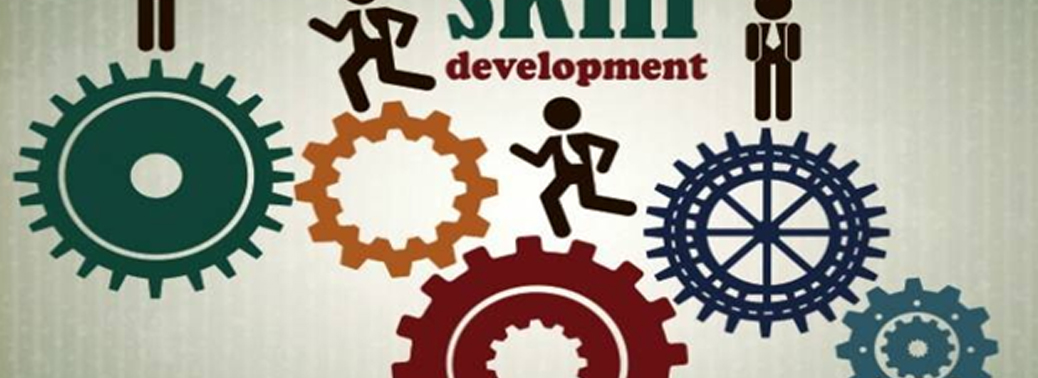
Why in News?
- India has recently launched the “Skills Build platform” becoming fourth country in the world to launch such platform.
About Skills Build Platform:
- It is a digital platform developed by IBM, enabling holistic learning and aligning it with Skills India initiative by Government of India.
- Launched by Directorate General of Training (DGT), under the aegis of Ministry of Skill Development & Entrepreneurship (MSDE) in Collaboration with IBM.
- As part of the programme, a two-year advanced diploma in IT, networking and cloud computing, co-created and designed by IBM, will be offered at the Industrial Training Institutes (ITIs) & National Skill Training Institutes (NSTIs).
- The platform will be extended to train ITI & NSTI faculty on building skills in Artificial Intelligence (AI).
Significance of the Programme:
- The digital platform will provide a personal assessment of the cognitive capabilities and personality via My Inner Genius to the students.
- They will then learn foundational knowledge about digital technologies, as well as professional skills such as resume-writing, problem solving and communication.
- Students will also receive recommendations on role-based education for specific jobs that include technical and professional learning.
- This initiative is part of IBM’s global commitment to create a job-ready workforce and to build the next generation of skills needed for new collar careers.
INNER LINE PERMIT EXTENDED TO MANIPUR AND DIMAPUR (NAGALAND)
11, Dec 2019
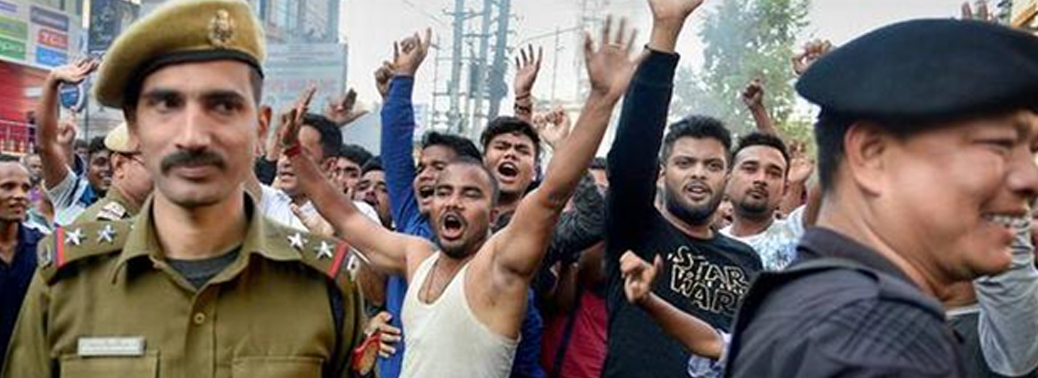
Why in News?
- The government has declared in Lok Sabha that Manipur would be brought under the Inner Line Permit (ILP) system in order to exempt it from the provisions of the Citizenship (Amendment) Bill, 2019.
About:
- Recently Citizenship amendment bill, 2019 has been passed by the lok sabha and has been tabled in Rajya Sabha for clearance.
- As per the governments assurance to allay fears of north Eastern state people due to the above bill, government is insulating north eastern states from the citizenship bill through adding them under the ambit of Inner line Permit.
- It has to be noted that areas under inner line permit, areas under sixth schedule(i.e. tribal areas of Assam and Tripura), and whole of Meghalaya are exempted from the ambit of citizenship bill already. Currently, the Inner Line Permit is operational in Arunachal Pradesh, Mizoram and Nagaland.
- So the remaining areas such as Manipur and Dimapur area of Nagaland are included in the “Inner line permit ambit” now.
Areas that are exempted from Citizenship Amendment Bill:
- Except non tribal areas of Assam and Tripura, the entire North-east has been exempted from the Citizenship bill.
- This means that the illegal migrants from the six minority communities who will become Indian citizens as per the proposed amendment will not be able to take up jobs, open businesses or settle down in these areas and will require a permit to enter the States.
- Also the resident of other Indian states also require ILP to enter these areas.
About Inner Line Permit:
- The Inner Line Permit (ILP) is an official travel document issued by the Government of India to grant inward travel of an Indian citizen into a protected area for a limited period.
- It is obligatory for Indians residing outside those states to obtain permission prior to entering the protected areas.
- The main objective of the ILP system is to provide a special protection of the distinct identity and safeguard for the peaceful existence of the indigenous people of the state
- Currently, the Inner Line Permit is operational in Arunachal Pradesh, Mizoram and Nagaland.
- The document has been issued under the Bengal Eastern Frontier Regulation, 1873and the conditions and restrictions vary from state to state.
- It can be issued for travel purposes solely. Visitors are not allowed to purchase property in these regions. However, there might be a different set of rules for long term visitors, though they are not valid for central government employees and security forces.
PROTECTION OF PLANT VARIETIES AND FARMERS’ RIGHTS AUTHORITY AMENDS IT’S FAQ DOCUMENT
11, Dec 2019
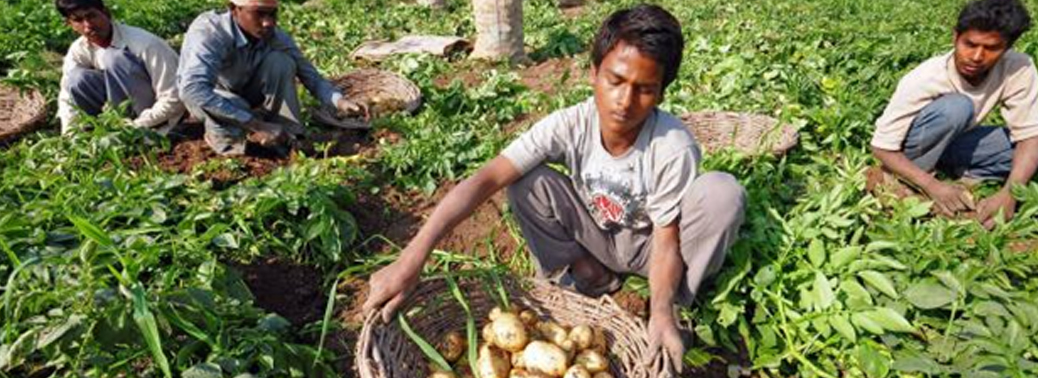
Why in News?
- The government has decided to set up an expert committee revise the FAQ document of the Protection of Plant Varieties and Farmers’ Rights Authority, which was quoted by the PepsiCo in the ongoing issue at the Authority.
Recent Issue:
- The ongoing case at the PPV&FRA revolves around PepsiCo’s FC5 variety of potatoes, which it grows through a collaborative farmer’s programme, wherein the company sells seeds to 12,000 farmers and has an exclusive contract to buy back their produce to make its chips.
- PepsiCo supplies the FC5 potato variety to a group of farmers who in turn sell their produce to the company at a fixed price.
- PepsiCo has exclusive rights on the variety by virtue of a Plant Variety Certificate granted under the Protection of Plant Varieties and Farmers’ Rights Act of 2001.
- PepsiCo had sued nine farmers for cultivating the FC5 potato variety without permission of PepsiCO.
- This variety of potatoes is grown exclusively for its popular Lay’s potato chips. PepsiCo has filed lawsuits for violating the company’s intellectual property rights on this variety of potato.
- The damages claimed are over one crore from some farmers.
- The farmers, on the other hand, have sought protection under Clause 39 of the same law which states that farmers are allowed “to save, use, sow, re-sow, exchange, share or sell… farm produce including seed of a variety protected under this Act” so long as they does not sell a “branded seed”.
Stand of PepsiCo:
PepsiCo has stated that:
- The Frequently Asked Questions or FAQ document of the Protection of Plant Varieties and Farmers Rights Authority (PPV&FRA), had claimed that “only small and marginal farmers involved in subsistence farming” are eligible to claim rights under the Protection of Plant Varieties and Farmers Rights (PPV&FR) Act, 2001.
- The FAQ also said these rights are not for “commercial farmers” and are only meant for “small scale” use.So PepsiCo has used the same argument in an ongoing case at the Authority over its registered potato variety used for Lays chips. The company has also cited the FAQ document to justify dragging more than nine farmers to court in 2018 for growing and selling its registered variety.
Decision of PPV&FRA:
- The government has decided to set up an expert committee revise the FAQ document.
- The document consisted of some statements that could have been explained in simpler language and some could be interpreted differently from what is provided.
- So, in order to solve ongoing impasse, government has decided to update the FAQ document.
About Protection of Plant Varieties and Farmers’ Rights (PPVFR) Act of 2001:
- It is an act of the parliament of India that was enacted to provide for the establishment of an effective system for protection of plant varieties, the rights of farmers and plant breeders and to encourage the development and cultivation of new varieties of plants.
- India have ratified the Agreement on Trade Related Aspects of the Intellectual property rights hasd to make provision for giving effect to agreement. So, in order to give effect to the aforesaid objectives, the Protection of Plant Varieties and Farmers Rights Act , 2001 has been enacted in India.
- The PPV&FR Act was enacted to grant intellectual property rights to plant Breeders, researchers and farmers who have developed any new plant varieties.
Farmers’ rights ensured in the Act:
- Farmers are entitled to save, use, sow, re-sow, exchange or sell their farm produce including seed of a registered variety in an unbranded manner.
- Farmers, varieties are eligible for registration and farmers are totally exempted from payment of any fee in any proceedings under this act.
- The period of protection for field crops is 15 years and for trees and vines is 18 years and for notified varieties it is 15 years from the date of notification under section 5 of Seeds Act, 1966.
- Farmers can claim for compensation if the registered variety fails to provide expected performance under given conditions.
LOKPAL
09, Dec 2019

Why in News?
- In a response to RTI, Lokpal stated that several key provisions needed for it has not yet been operational.
About the Issue
- The key Provisions needed for the anti-corruption ombudsman to function is still not been operationalised.
- The Lokpal’s inquiry and protection wings has not yet begun.
- The regulation for how to conduct preliminary investigations have not been made.
About Lokpal and Lokayukta Act, 2013:
- It is for the establishment of Lokpal for the Union and Lokayukta for States.
- It is a statutory body without any constitutional status.
- It performs the function of an “ombudsman”.
- Its inquiries into allegations of corruption against certain public functionaries and for Related Matters.
Structure of Lokpal:
- It is a multi-member body, that consists of one chairperson and a maximum of 8 members.
- Its Chairperson should be either the former Chief Justice of India or the former Judge of Supreme Court or an eminent person with impeccable integrity and outstanding ability, having special knowledge and expertise of minimum 25 years in the matters relating to anti-corruption policy, public administration, vigilance, finance including insurance and banking, law and management.
- Its other members are half will be judicial members and minimum 50% of the Members will be from SC/ ST/ OBC/ Minorities and women.
- The judicial member of the Lokpal either a former Judge of the Supreme Court or a former Chief Justice of a High Court.
- The non-judicial member should be an eminent person with impeccable integrity and outstanding ability, having special knowledge and expertise of minimum 25 years in the
- matters relating to anti-corruption policy, public administration, vigilance, finance including insurance and banking, law and management.
- The term of office is 5 years or till the age of 70 years.
- Its members are appointed by the president on the recommendation of a Selection Committee.
- The selection committee is composed of the Prime Minister who is the Chairperson; Speaker of Lok Sabha, Leader of Opposition in Lok Sabha, Chief Justice of India or a Judge nominated by him/her and One eminent jurist.
- For selecting the chairperson and the members, the selection committee constitutes a search panel of at least eight persons.
Lokpal Search Committee:
- Under the Lokpal Act of 2013, the Department of Personnel and Training (DoPT) is supposed to put together a list of candidates interested to be the chairperson or members of the Lokpal.
- This list will then go to the proposed eight-member search committee, which would shortlist names and place them before the selection panel headed by the Prime Minister.
- It may or may not pick names suggested by the search committee.
- In September 2018, the government had constituted a search committee headed by former Supreme Court judge Justice Ranjana Prakash Desai.
- The 2013 Act also provides that All Statesshould set up the office of the Lokayukta within one year from the commencement of the Act.
Jurisdiction and Powers:
- It includes Prime Minister, Ministers, members of Parliament, Groups A, B, C and D officers and officials of Central Government.
- It also included the Prime Minister except on allegations of corruption relating to international relations, security, the public order, atomic energy and space.
- It does not have jurisdiction over Ministers and MPs in the matter of anything said in Parliament or a vote given there.
- Its jurisdiction also includes any person who is or has been in charge (director/ manager/ secretary) of anybody/ society set up by central act or any other body financed/ controlled by central government and any other person involved in act of abetting, bribe giving or bribe taking.
- It mandates that all public officials should furnish the assets and liabilities of themselves as well as their respective dependents.
- It is the powers to superintendence over, and to give direction to CBI.
- If it referred a case to CBI, the investigating officer in such case cannot be transferred without the approval of Lokpal.
- Its Inquiry Wing is been vested with the powers of a civil court.
- Its powers of confiscation of assets, proceeds, receipts and benefits arisen or procured by means of corruption in special circumstances.
- It has the power to recommend transfer or suspension of public servant connected with allegation of corruption.
- It has the power to give directions to prevent the destruction of records during the preliminary inquiry.
Limitations:
- It did not provide concrete immunity to the whistle blowers.
- Its provision for initiation of inquiry against the complainant if the accused is found innocent will only discourage people from complaining.
- It is not given any constitutional backing and there is no adequate provision for appeal against the Lokpal.
- The biggest lacuna is the exclusion of judiciary from the ambit of the Lokpal.
- To some extent, the need for functional independence of the CBI has been catered to by a change brought forth in the selection process of its Director, by this Act.
- The complaint against corruption cannot be registered after a period of seven years from the date on which the offence mentioned in such complaint is alleged to have been committed.
The Lokpal and Lokayukta (Amendment) Bill, 2016:
- It is passed by Parliament in July 2016 and amended the Lokpal and Lokayukta Act, 2013.
- It enables the leader of the single largest opposition party in the Lok Sabha to be a member of the selection committee in the absence of a recognized Leader of Opposition.
- It also amended section44 of the 2013 Act that deals with the provision of furnishing of details of assets and liabilities of public servants within 30 days of joining the government service.
- It replaces the time limit of 30 days, now the public servants will make a declaration of their assets and liabilities in the form and manner as prescribed by the government.
- It also gives an extension of the time given to trustees and board members to declare their assets and those of their spouses in case of these are receiving government funds of more than Rs. 1 crore or foreign funding of more than Rs. 10 lakhs.
About Background:
- The term Lokpal and Lokayukta were coined by Dr. L. M. Singhvi.
- In 2002, the Commission to Review the Working of the Constitution headed by M.N. Venkatachaliah recommended the appointment of the Lokpal and Lokayukta; also recommended that the PM be kept out of the ambit of the authority.
- In 2005, the Second Administrative Reforms Commission chaired by Veerappa Moily recommended that the office of Lokpal should be established without delay.
- In 2011, the government formed a Group of Ministers, chaired by Pranab Mukherjee to suggest measures to tackle corruption and examine the proposal of a Lokpal Bill.
- “India Against Corruption movement” led by Anna Hazare put pressure on the United Progressive Alliance (UPA) government at the Centre and resulted in the passing of the Lokpal and Lokayuktas Bill, 2013, in both the Houses of Parliament.
SEXUAL CASES UNDER POCSO
09, Dec 2019

Why in News?
- The Protection of Children from Sexual Offences (POCSO) Act, 2012 has adequate provisions ensuring speedy trial under the Act.
POCSO Act, 2012:
- Section 28 of the POCSO Act 2012 provides for establishment of Special Courts for the purpose of providing speedy trial.
- Further, Section 35 of the POCSO Act provides that the evidence of the child shall be recorded within a period of thirty days of the Special Court taking cognizance of the offence and reasons for delay, if any, shall be recorded by the Special Court.
- Further, Section 35 also lays down that the Special Court shall complete the trial, as far as possible, within a period of one year from the date of taking cognizance of the offence.
- However, Police and Public Order are State subjects under the Seventh Schedule to the Constitution of India.
- The responsibilities to maintain law and order, protection of life and property of the citizens including children, rest primarily with the respective State Governments and UT Administration.
Steps Taken to Ensure speedy Dispensation of Justice:
- In furtherance to The Criminal Law (Amendment) Act, 2018, the Government has finalized a scheme in for setting up of total of 1023 Fast Track Special Courts (FTSCs) across the country for expeditious trial and disposal of pending cases pertaining to rape and POCSO Act, 2012, in a time-bound manner under Centrally Sponsored Scheme.
- The Criminal Law (Amendment) Act, 2013 was enacted for effective deterrence against sexual offences.
- Further, the Criminal Law (Amendment) Act, 2018 was enacted to prescribe even more stringent penal provisions including death penalty for rape of a girl below age of 12 years.
- The Act also inter-alia mandates completion of investigation and trials within 2 months each.
- A “National Database on Sexual Offenders” has been launched to facilitate investigation and tracking of sexual offenders across the country by law enforcement agencies.
- An online analytic tool for police called “Investigation Tracking System for Sexual Offences” has been launched to monitor and track time-bound investigation on sexual assault cases in accordance with the Criminal Law (Amendment) Act, 2018.
- Guidelines have been notified for collection of forensic evidence in sexual assault cases and the standard composition in a Sexual Assault Evidence Collection Kit.
- A scheme namely Cyber Crime Prevention against Women and Children (CCPWC) has been approved under which an online cybercrime reporting portal to enable public to report complaints pertaining to child pornography/ child sexual abuse material, rape/gang rape imageries or sexually explicit content.
2.3 MILLION CHILDREN IN INDIA UNVACCINATED FOR MEASLES: WHO REPORT
09, Dec 2019

Why in News?
- World Health Organisation (WHO) in partnership with Center for Diseases Control and Prevention (CDC) has recently released a report on “Measles and Rubella disease” on behalf of the Measles and Rubella Initiative.
Key Findings of the Report:
- With 2.4 million, Nigeria has the most number of unvaccinated children.
- India is second highest, next only to Nigeria with 2.3 million unvaccinated children.
- The other four countries with the most number of unvaccinated children are Pakistan (1.4 million), Ethiopia (1.3 million), Indonesia (1.2 million) and the Philippines (0.7 million).
- In 2017, 2.9 million children in India under one year of age had not been vaccinated with the first dose, according to UNICEF. In one year, the number of unvaccinated children in India had reduced from 2.9 million to 2.3 million.
- There were nearly 70,000 cases of measles in India in 2018, the third highest in the world. In 2019, over 29,000 confirmed cases have been reported to the WHO.
- The WHO recommends 95% coverage using two doses of measles vaccine to prevent outbreaks. Though vaccine coverage with first and second dose has increased globally since 2000, it has not reached anywhere near 95%.
- In 2018, only 86% of children globally received the first dose through routine immunisation. In the case of second dose, the coverage globally is just 69%.
About Measles and Rubella Measles
1. Measles:
- Measles is a viral infection of the respiratory system which can spread through contact with infected mucus and saliva. An infected person can release the infection into the air when they cough or sneeze. It is the leading cause of death in children.
- Measles is a highly-contagious virus and spreads rapidly in unvaccinated children, causing symptoms from rash to blindness, pneumonia to death.
- Symptoms: Cough fever, red eyes etc. A widespread skin rash is a classic sign of measles.
- A vitamin A deficiency is considered to be a risk factor for measles. Children with too little vitamin A in their diets have a higher risk of catching the virus.
2. Rubella (German Measles)
- Rubella virus is the primary cause of congenital rubella syndrome leading to abortions and children born with birth defects of heart, eye and brain.
- Rubella is a mild viral infection that occurs most often in children and young adults.
- Rubella infection during pregnancy can cause abortion, stillbirth and may lead to multiple birth defects in the new born; like blindness, deafness, heart defects; known as Congenital Rubella Syndrome (CRS). India accounts for around one third of all children born worldwide with congenital rubella syndrome (CRS).
- Both Measles and Rubella can be prevented by a highly-effective Measles-Rubella (MR) Vaccine.
India’s efforts to control Measles and Rubella:
- The National Family Health Survey-4 (2015–2016) has assessed the vaccination coverage for the measles to be 81.1%.This is low compared to the 95% coverage level required for elimination.
- In this regard, Ministry of Health & Family Welfare has initiated measles-rubella (MR) vaccination campaign in the age group of 9 months to less than 15 years in a phased manner across the nation in 2017. The MR vaccine has now become part of Routine Immunisation Programme.
About Measles & Rubella Initiative:
- Measles & Rubella Initiative (MRI), launched in 2001, is a global partnership among leaders in public health which supports the goal of reducing measles deaths globally by 90% by 2010 compared to 2000 estimates.
Partner Organisations:
- American Red Cross
- International Federation of Red Cross and Red Crescent
- United Nations Foundation
- Centres for Disease Control and Prevention (CDC)
- World Health Organization (WHO)
- United Nations Children’s Fund (UNICEF)
A POTENTIAL SEEDBED FOR PRIVATE PROFITS
07, Dec 2019

Context:
- Seeds Bill 2019 which was introduced in the parliament was taken up for consideration recently. The earlier versions of the Bill, in 2004 and 2010, had generated heated debates. The present version has also been with certain problematic provisions and the article discusses it in brief.
Background Information:
1. India Signing TRIPS and UPOV
- In 1994, India signed the agreement on Trade-Related Aspects of Intellectual Property Rights (TRIPS). In 2002, India also joined the International Union for the Protection of New Varieties of Plants (UPOV) Convention.
- The above two agreements has made a nation has to give priority to Seed breeder’s rights over farmer’s rights.
- Both TRIPS and UPOV led to the introduction of some form of Intellectual Property Rights (IPR) over plant varieties.
- Member countries had to introduce restrictions on the free use and exchange of seeds by farmers unless the “breeders” were remunerated.
2. India signing CBD and ITPGRFA:
- In 1992,India signed the Convention on Biological Diversity (CBD) which provided for “prior informed consent” of farmers before the use of genetic resources and “fair and equitable sharing of benefits” arising out of their use.
- In 2001, India signed the International Treaty on Plant Genetic Resources for Food and Agriculture (ITPGRFA) which recognised farmers‟ rights as the rights to save, use, exchange and sell farm-saved seeds.
- It is clear that these two agreements has made a country to favour farmer’s rights over breeder’s rights. So, national governments had the responsibility of protecting farmer’s rights.
- Here we can notice TRIPS and UPOV runs counter to the above two international conventions.
3. A Delicate Balance of all:
- As India was a signatory to TRIPS and UPOV (that gave priority to breeders‟ rights) as well as CBD and ITPGRFA (that emphasised farmers‟ rights), any Indian legislation had to be in line with all.
- Protection of Plant Varieties and Farmers‟ Rights (PPVFR) Act of 2001 was enacted with this delicate balance.
- The PPVFR Act retained the main spirit of TRIPS viz., IPRs as an incentive for technological innovation. However, the Act also had strong provisions to protect farmers‟The PPVFR Act also recognised three roles for the farmer: cultivator, breeder and conserver. As cultivators, farmers were entitled to plant-back rights. As breeders, farmers were held equivalent to plant breeders. As conservers, farmers were entitled to rewards from a National Gene Fund.
Introduction of New legislation – Seed Bill, 2019
- According to the government, a new Seeds Bill is necessary to enhance seed replacement rates in Indian agriculture, specify standards for registration of seed varieties and enforce registration from seed producers to seed retailers.
- While these goals are indeed worthy, any such legislation is expected to be in alignment with the spirit of the PPVFR Act. Not surprisingly, many of the Bill’s provisions deviate from the spirit of the PPVFR Act, are against farmers’ interests and in favour of private seed companies. For instance, a shift from farm-saved seeds to certified seeds, which would raise seed replacement rates, is desirable. Certified seeds have higher and more stable yields than farm-saved seeds. However, such a shift should be achieved not through policing, but through an Enabling Atmosphere.
Interest of Private Companies:
- From the late-1980s, Indian policy has consciously encouraged the growth of private seed companies, including companies with majority foreign equity.
- Today, more than 50% of India’s seed production is undertaken in the private sector.
- These firms have been demanding favourable changes in seed laws and deregulation of seed prices, free import and export of germplasm, freedom to self-certify seeds and restrictions on the use by farmers of saved seeds from previous seasons.
- Through the various versions between 2004 and 2019 of the same bill, private sector interests have guided the formulation of the Seeds Bill.
- As a result, even desirable objectives, such as raising the seed replacement rates, have been mixed up with an urge to encourage and protect the business interests of private companies.
Problematic Provisions of the New Bill:
- The provisions of the new bill that runs counter to the existing PPVFR Act are as follows:
1. Compulsory Registration of Seeds
- The Seeds Bill insists on compulsory registration of seeds. However,The PPVFR Act was based on voluntary registration of seeds.
- As a result, many seeds may be registered under the Seeds Bill but may not under the PPVFR Act.
- Assume a seed variety developed by a breeder, but derived from a traditional variety. The breeder will get exclusive marketing rights. But no gain will accrue to farmers as benefit-sharing is dealt with in the PPVFR Act, under which the seed is not registered.
2. Compensation for Farmer’s Role in Development of a Seed Variety:
- As per the PPVFR Act, all applications for registrations should contain the complete passport data of the parental lines from which the seed variety was derived, including contributions made by farmers.
- This allows for an easier identification of beneficiaries and simpler benefit-sharing processes.
- Seeds Bill, on the other hand, demands no such information while registering a new variety. As a result, an important method of recording the contributions of farmers is overlooked and private companies are left free to claim a derived variety as their own.
3. Ever-Greening of registration
- The PPVFR Act, which is based on an IPR like breeders‟ rights, does not allow re-registration of seeds after the validity period.
- However under the new bill private seed companies can re-register their seeds an infinite number of times after the validity period. Given this “ever-greening” provision, many seed varieties may never enter the open domain for free use.
4. Seed Pricing
- The new bill has vague provisions for regulation of seed prices which appears neither sufficient nor credible.
- This has been the scenario ,when strict control on seed prices has been an important demand raised by farmers’ organisations.
- In its absence, they feel, seed companies may be able to fix seed prices as they deem fit, leading to sharp rises in costs of cultivation.
5.Compensation to Farmers:
- According to the PPVFR Act, if a registered variety fails in its promise of performance, farmers can claim compensation before a PPVFR Authority.
- This provision is diluted in the Seeds Bill, where disputes on compensation have to be decided as per the Consumer Protection Act 1986. Consumer courts are hardly ideal and friendly institutions that Farmers can Approach.
Way Ahead:
- Private seed companies prefer policing because their low-volume, high-value business model is crucially dependent on forcing farmers to buy their seeds every season.
- So, on the other hand, an enabling atmosphere has to be generated by the strong presence of public institutions in seed research and production.
- When public institutions, not motivated by profits, are ready to supply quality seeds at affordable prices, policing becomes redundant.
- For the seed sector and its laws to be truly farmer-friendly, the public sector has to recapture its lost space.
About Protection of Plant Varieties and Farmers’ Rights Authority, India:
- It has been established under the provisions of Protection of Plant Varieties and Farmers’ Rights Act, 2001.
- Its Objectives Includes:
- An effective system for protection of plant varieties,
- The rights of farmers and plant breeders and
- To encourage the development of new varieties of plants it has been considered necessary to recognize and protect the rights of the farmers in respect of their contribution made at any time in conserving, improving and making available plant genetic resources for the development of the new plant varieties.
- To accelerate agricultural development, it is necessary to protect plants breeders’ rights to stimulate investment for research and development for the development of new plant varieties.
- Such protection is likely to facilitate the growth of the seed industry which will ensure the availability of high quality seeds and planting material to the Farmers.
FUGITIVE ECONOMIC OFFENDERS
06, Dec 2019

Why in News?
- A special court on Thursday declared absconding Nirav Modi, prime accused in the Punjab National Bank scam, a fugitive economic offender (FEO).
- The declaration allows the government to initiate action to confiscate the offender’s properties.
- Nirav Modi is the second person to be declared a fugitive economic offender, under the new fugitive Economic Offenders Act, after Vijay Mallya.
“Fugitive Economic Offender”
- A person can be named an offender under this law if there is an arrest warrant against him or her for committing any offence listed in the schedule of the act and for involvement in economic offences involving at least Rs. 100 crore or more and has fled from India to escape Legal Action.
- Major criteria that have to be satisfied are:
- The Person has left the country to avoid facing prosecution.
- He refuses to return to India to face prosecution.
About Fugitive Economic Offenders Act, 2018:
- The Fugitive Economic Offenders Act, 2018 seeks to confiscate properties of economic offenders who have left the country to avoid facing criminal prosecution.
- Offences involving amounts of Rs. 100 crore or more fall under the purview of this law.
- Some of the offences listed in the schedule of the bill are-counterfeiting government stamps or currency, cheque dishonour for insufficiency of funds, money laundering, transactions defrauding creditors etc.
Proceedings as per the Act:
- To declare a person an FEO, an application will be filed in a Special Court (designated under the Prevention of Money-Laundering Act, 2002) containing details of the properties to be confiscated, and any information about the person’s whereabouts.
- The Special Court will require the person to appear at a specified place at least six weeks from issue of notice. Proceedings will be terminated if the person appears.
- Attachment of the property of a fugitive economic offender.
- Confiscation of the property of an individual declared as a fugitive economic offender resulting from the proceeds of crime.Confiscation of other property belonging to such offender in India and abroad including benami property.
- Disentitlement of the fugitive economic offender from defending any civil claim.
- All cases under the proposed law will be tried under the Prevention of Money Laundering (PMLA) Act and the administrator will sell the fugitive’s properties to pay off the lenders.
- The proposed law will have an overriding effect over all other pieces of legislation.
United Nations Convention against Corruption:
- Non conviction based asset confiscation for corruption related cases are enabled under provisions of United Nations Convention against Corruption which India ratified in 2011. This Act is adopted based on this principle.
- The United Nations Convention against Corruption is the only legally binding universal anti-corruption instrument.
- It was adopted by the General Assembly in 2003 and entered into force on December 14, 2005.
- The Convention covers five main areas: preventive measures, criminalization and law enforcement, international cooperation, asset recovery, and technical assistance and information exchange.
THE STRUCTURAL FLAWS IN INDIA’S HIGHER EDUCATION SYSTEM
06, Dec 2019

Why in News?
- Recently, fee hike in JNU has raised a debate regarding the quality of higher education in India and the kind of support the government is giving to our students. In this context, we need to take a look into the problems that clog the higher education system in India.
Issues and Challenges:
1. Low Enrolment Ratio:
- According to All India Survey on Higher Education, the gross enrolment ratio in higher education is 25.2% in 2016-17 compared to 44% of China and 85% in US. This shows lack of access to higher education institutions.
2. Shortage of faculty
- Faculty vacancies at government institutions are at 50% on average and the teacher-student ratio is now 1:20. The problem lies in increased demand, and stagnant supply.
- A Deloitte gathering of 63 Deans of top-tier institutions revealed that 80% of those listed lack of quality faculty.
3. Quality standards:
- About 94% of students of higher education study in 369 State universities.
- In 2012 only 106 State universities and 4,684 colleges were accredited by NAAC.
4. Underfunding:
- The number of institutions has surged in India since the 2000s, while the number of students doing PhD has remained constant.
- Meanwhile, there are over a 1,00,000 India-born PhDs in universities around the world, who are kept away from India due to paltry salaries and poor funding.
- It has to be noted that China has solved this problem by attracting Chinese-origin PhDs back home with dollar salaries and monetary incentives for published research.
5.Complexity in Regulation
- The heavy hands of multiple regulators (like the UGC and All India Council for Technical Education), together with the empowerment of professional bodies (like the Bar Council of India and Council of Architecture) have not yielded the desired dividends.
6. Inadequate infrastructure
- Most of the funding from the Central government is skewed towards Central universities, IITs and IIMs.
- 150 Centrally-funded institutions get most of funding by the Ministry of Human Resource Development (MHRD).
7. Lack of Industry connect
- Indian universities persist in separating research and teaching activities, depriving students of exposure to cutting-edge ideas.
- Monetary incentives for academia are practically non-existent, and Indian R&D expenditure at 0.62% of GDP is one of the lowest in emerging economies.
- It is not surprising, then, that Indian universities rank low in both research and teaching.
- According to India Skills Report only 47% of the Indian graduates are considered employable.
Impact of such an Issue:
- These structural flaws in the Indian higher educational institutions could affect macroeconomic indicators such as labour productivity.
- Labour Productivity:
- Output obtained from each employee
- Determined mainly by
1. Innovation
2. Human Capital
Suggestion to improve Labour Productivity:

Government Interventions in this Aspect:
1. Rashtriya Uchchatar Shiksha Abhiyan (RUSA)
- To address the funding concerns of State institutions, the MHRD in 2013 has launched RUSA scheme.
- RUSA provides strategic funding to eligible State higher educational institutions.
- The scheme is performance-based in that the funding is linked to reforms in the key areas of governance, learning-teaching outcomes, enrolment and infrastructure support.
2. Education Quality Upgradation and Inclusion Programme(EQUIP)
- It is an ambitious programme to improve Access and Quality in Higher Education over next 5 years.
- It provides for funding through HEFA that will raise Rs 1 Lakh crore for infrastructure improvement.
3.Higher Education Commission of India (Repeal of University Grants Commission Act) Bill 2018:
- The Bill seeks to repeal UGC Act and provides for setting up of Higher Education Commission of India (HECI) to replace the UGC.
- Separation of academic functions and grants thereby promoting autonomy.
- The new commission will cover all fields of education (except medical) and institutions set up under the Central and State Acts excluding those of national importance).
4. Scheme for Promotion of Academic and Research Collaboration (SPARC)
- Launched in 2018
- Primarily aims at improving the research ecosystem of India’s Higher Educational Institutions.
5. Institutions of Eminence programme
- The above efforts have been coupled with an ‘Institutions of Eminence’ programme started in 2018 that gave increased funding to some research universities.
Way Forward:
- The Draft National Education Policy, 2019 has recommended for:
1. Increase GER to at least 50% by 2035.
2. Establishment of National research foundation to improve R&D.
3. Restructure of Higher Education Institutions into following Tiers:
- Tier 1: Research and teaching
- Tier 2 : Professional courses
- Tier 3 : Liberal Arts
- The government needs to recognise the systemic anger at play, and ensure that higher education’s role in innovation and human capital is not ignored.
- The Draft National Education Policy, 2019 is a great first-step, but the reforms must be pushed through and must lead to legislation that will fund research-based universities.
- Only this can bring a culture of discovery and accountability to India’s higher education institutions.
THE NEGLECTED FOOT SOLDIERS OF A LIBERALISED ECONOMY
05, Dec 2019

Why in News?
- There has been a drastic rise in the contractualisation of the workforce in India. But the government has failed to address the aspiring needs of this segment including the Social Security benefit needs of the same.
Recent Issue:
- There has been a proposed merger of BSNL and MTNL entities. Permanent employees of these two telecommunication companies are planning to opt for lucrative voluntary retirement schemes and a generous package also awaits the senior employees.
- But the future of thousands of contract labourers, contractual and temporary workers — who have served the two organisations for several years for far less wages and without any substantial social security benefits is in dire straits.
- There are also incidents of suicides among these contractual labourers of these two entities.
Who is a Contract Labour?
- Contract Labour refers to the labourers who do not work directly for a firm but are employed by another firm (intermediary/contractor) which has a contract to do particular work.
Contract workforce share in India:
- Annual Survey of Industries (ASI) shows that there was an increase in total employment from 7.7 million to 13.7 million between 2000-01 and 2015-16.Of this, over half of the increase was accounted for by contract workers.
- The share of contract workers in total employment increased sharply from 15.5% in 2000-01 to around 28% in 2015-16.
- But the Contract Labour Act, 1970, is applicable only to organisations and contractors who are employing 20 or more workers. Hence, the number of such workers could be much more than what the numbers suggest.
Issues Faced by the Contractual Labour segment:
1. Non-compliance of the Contract laws:
- The Contract Labour (Regulation and Abolition) Act, 1970 and the Inter State Migrant Workmen (Regulation of Employment and Conditions of Service) Act, 1979 have been in place for long; but non-compliance is the order of the day.
- Similarly, manual scavengers, most of them employed as contract labourers, are still forced to do cleaning jobs under the most inhumane conditions, despite this barbaric practice having been outlawed through successive pieces of legislation.
- The Supreme Court, in judgment after judgment, has ruled that contract workers should be paid the same wages as permanent employees for similar jobs, but these orders seem to exist only in the papers. Similarly, Unorganised Workers’ Social Security Act, 2008, has largely been a cosmetic exercise.
2. Hire and fire norm:
- Indian labour laws are stringent and protective, but this statement applies only to the fortunate permanent employees, who constitute roughly 10% of the total workforce. Hire and Fire is the rule for the contract labourers. Laissez faire is in Full Bloom.
3. Social Aspect:
- Paradoxically, a rigid labour law system has also contributed to greater contractualisation of the workforce. And, engaged in substantial numbers as contract labourers are people from vulnerable caste groups.
4. Lack of Revisal in the salary structure:
- Pay Commissions are always very gracious to upgrade the salary structure of permanent employees on a periodical basis, but the genuine needs of contract workers are repeatedly ignored by the state.
5. Precarious Service Conditions.
- There are thousands of employees in the informal sector, a majority of them engaged through contractors, working in precarious service conditions.
Recommendations of the National Commission on Labour:
- The second National Commission on Labour, had Strongly Recommended for :
- Abolition of the exploitative contract labour system in course of time
- Implementation of a comprehensive social security scheme.
- A contract worker should be treated as a permanent worker, after two years of working for an organisation
- But these Recommendations are yet to be Implemented.
Way Ahead:
- The Contract Labour Act prescribes that contract workers are entitled to “same wages” for the same kind of work as regular workmen. It is thus important to ensure that wages of contract workers are at par with directly hired workers.
- This is necessary not just for the benefit of contract workers, but also for directly employed workers who have had meagre growth in their real wages.
- Further, now, contract workers should not be engaged in “core” and “perennial” activities as per the law. However, with increasing substitution of regular workers with contract workers and the changing nature of core and perennial activities, there is an urgent need to review the Contract Labour Act.
- The provision of decent conditions of work and social security for contract workers must be strictly adhered to.
Conclusion:
- In the liberalised Indian economy of the 21st century, such labourers are treated as sacrificial goats. Unless our policymakers ensure strong enforcement of policies linked to such workers, suicides, as in the BSNL-MTNL case, will continue.
- Parliament has already enacted the Code on Wages, 2019. Indeed, we do need reform in our labour laws to enhance globalisation. But, at the same time, we also need a comprehensive umbrella of social security for these foot soldiers of Growth and Development.
NATIONAL COMPANY LAW APPELLATE TRIBUNAL (NCLAT)
04, Dec 2019
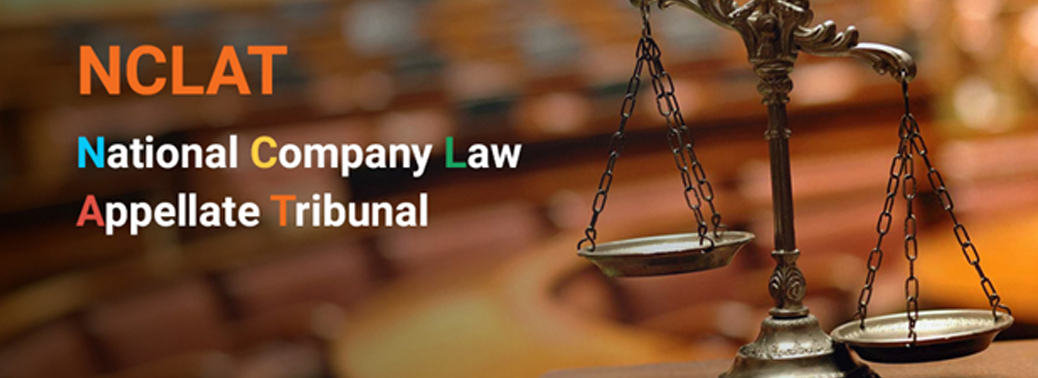
Why in News?
- In pursuance of judgement of Hon’ble Supreme Court, the Government has decided to set up a bench of National Company Law Appellate Tribunal (NCLAT) at Chennai.
About NCLAT:
- National Company Law Appellate Tribunal (NCLAT) was constituted under Section 410 of the Companies Act, 2013.
- Benches of National Company Law Tribunal (NCLT) are set up in various States depending on the case load and other relevant factors. Considering the heavy case load at some existing benches, additional members have been appointed and additional courts have been operationalised from Time to Time.
Composition:
- The President of the Tribunal and the chairperson and Judicial Members of the Appellate Tribunal shall be appointed after consultation with the Chief Justice of India.
- The Members of the Tribunal and the Technical Members of the Appellate Tribunal shall be appointed on the recommendation of a Selection Committee consisting of:
- 1.Chief Justice of India or his nominee—Chairperson.
- 2.A senior Judge of the Supreme Court or a Chief Justice of High Court— Member.
- 3.Secretary in the Ministry of Corporate Affairs—Member.
- 4.Secretary in the Ministry of Law and Justice—Member.
- 5.Secretary in the Department of Financial Services in the Ministry of Finance— Member
Functions:
- It hears appeals against the orders of National Company Law Tribunal(s) (NCLT), with effect from 1st June, 2016.
- It is the Appellate Tribunal for hearing appeals against the orders passed by NCLT(s) under Section 61 of the Insolvency and Bankruptcy Code, 2016 (IBC).
- It is also the Appellate Tribunal for hearing appeals against the orders passed by Insolvency and Bankruptcy Board of India under Section 202 and Section 211 of IBC.
- It is the Appellate Tribunal to hear and dispose of appeals against any direction issued or decision made or order passed by the Competition Commission of India (CCI).
REPORT OF ANAEMIC CHILDREN IN INDIA
03, Dec 2019
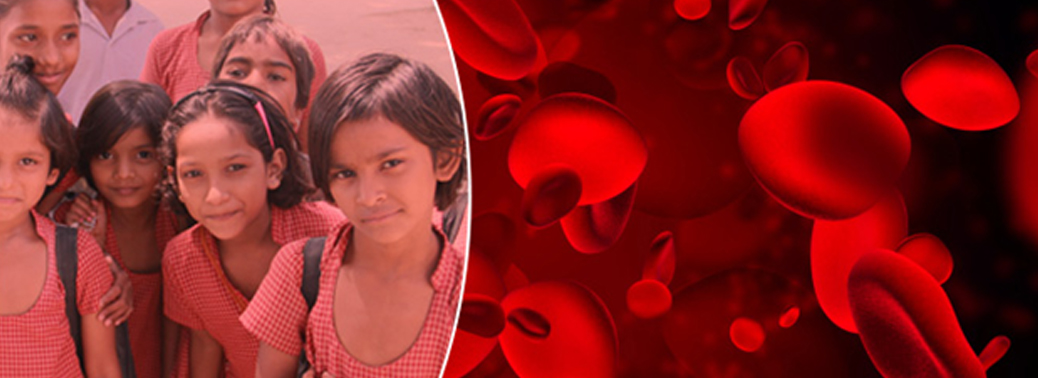
Why in News?
- The Government has informed Lok Sabha about the prevalence of Anaemia among women and children in urban and Rural India.
About the News:
- The data, based on the findings of the National Family Health Survey (NFHS) IV (2015-16), divide the incidence of anaemia into ‘Mild’, ‘Moderate’ and ‘Severe’ kinds for both rural and urban India.
- As many as 58.5% of children between the ages of 6 months and 59 months, and 53.1% of women between the ages of 15 and 49 years, are anaemic in the country.
- As per the given by the government, 29.8% of children in rural India suffer from moderate anaemia, and 40.3% of women in the villages are mildly Anaemic.
What is Anaemia?
- According to WHO Anaemia is a condition in which the number of red blood cells or their oxygen-carrying capacity is insufficient to meet physiologic needs, which vary by age, sex, altitude, smoking, and Pregnancy Status.
Government’s Initiative:
- The union government had, launched the “Anaemia Mukt Bharat (AMB) Strategy under POSHAN Abhiyan in 2018 with the aim to reduce anaemia prevalence by three percentage points every year till 2022”.

About Anaemia Mukt Bharat (AMB):
- In 2018, the union government launched the Anaemia Mukt Bharat (AMB) Strategy under POSHAN Abhiyan to reduce anaemia prevalence by three percentage points every year till 2022.
- AMB is a 6x6x6 strategy that is targeting six age groups, with six interventions and six institutional mechanisms.
- The six age groups include pre-school children (6-59 months), children (5-9 years), adolescent girls (10-19 years), adolescent boys (10-19 years), women of reproductive age group (15-49), and pregnant women and lactating mothers.
- Among the six interventions is prophylactic iron folic acid supplementation, periodic deworming, and addressing non-nutritional causes of anaemia in endemic pockets, with special focus on malaria, haemoglobinopathies and fluorosis, the Minister said.
- Institutional mechanisms include a National Anaemia Mukt Bharat Unit, and a National Centre of Excellence and Advanced Research on Anaemia Control.
PROHIBITION OF ELECTRONIC CIGARETTES BILL, 2019
03, Dec 2019
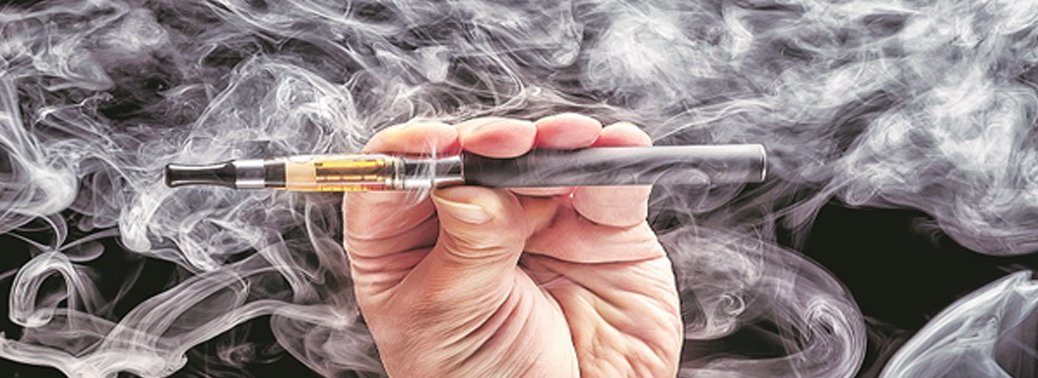
Why in News?
- The Parliament has recently passed the Prohibition of Electronic Cigarettes Bill, 2019.
What are e-cigarettes?
- An electronic cigarette (or e-cig) is a battery-powered vaporizer that mimics tobacco smoking.
- It works by heating up nicotine liquid.
- Nicotine juice comes in various flavors and nicotine levels.
- e-liquid is composed of five ingredients: vegetable glycerin (a material used in all types of food and personal care products, like toothpaste) and propylene glycol (a solvent most commonly used in fog machines.) propylene glycol is the ingredient that produces thicker clouds of vapor.
- Electronic cigarettes do not burn or use tobacco leaves but instead vaporize a solution the user then Inhales.
What does the Bill Say?
- Any production, import, export, transport, sale (including online sale) or advertisement (including online advertisement) of e-cigarettes shall be a cognizable offence punishable with an imprisonment of up to one year or fine up to Rs. 1 lakh or both for the first offence
- For a subsequent offence, there will be imprisonment of up to 3 years and fine up to Rs. 5 lakh.
- Storage of electronic-cigarettes shall also be punishable with an imprisonment up to 6 months or fine up to Rs 50,000 or both.
- The Sub-Inspector of Police has been designated as the Authorized Officer to take action under the Ordinance.
- The Central or State Governments may also designate any other equivalent officer(s) as Authorized Officer for enforcement of the provisions of the Ordinance.
What is the Concern?
- India has the second largest number of tobacco users (268 million) in the world – of these at least 12 lakh die every year from tobacco-related diseases.
- Electronic Nicotine Delivery Systems (ENDS) solutions and emissions contain other chemicals, some of them considered to be toxicants.
- ENDS contain nicotine solution which is highly addictive.
- The flavouring agents and vaporizers used in e-cigarettes are also harmful for health.
- Use of e-cigarettes has documented adverse effects on humans like DNA damage, carcinogenesis, cellular, molecular and immunological toxicity.
- It can cause respiratory, cardiovascular and neurological disorders.
- They are also known to have adverse effects on pregnancy and foetal development.
- Lack of knowledge about negative effects of nicotine and easy accessibility of these products make the youth prone to addiction.
RESERVATIONS IN PROMOTIONS FOR SC/ST: AN OVERVIEW
03, Dec 2019
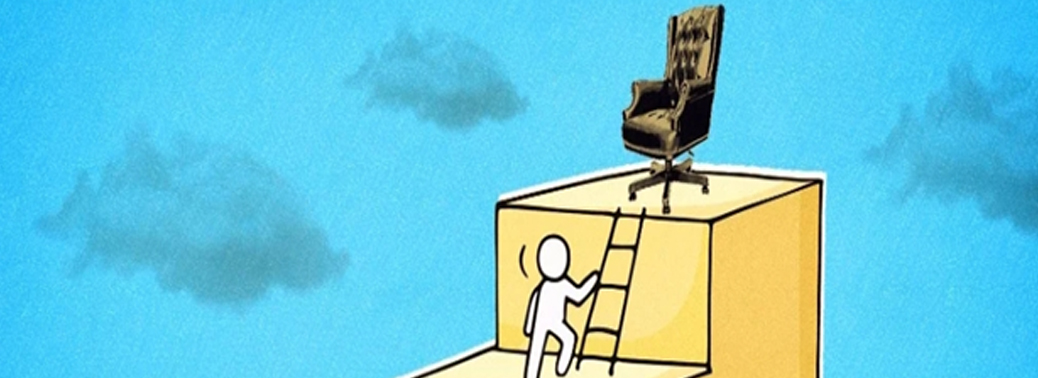
Why in News?
- The Centre on Monday has asked the Supreme Court to refer to a seven-judge Bench the question whether the creamy layer concept should apply or not to the Scheduled Castes/Scheduled Tribes while providing them reservation in promotions.
Current Scenario of Reservations in Promotions in for SC/ST:
- The 2006 verdict on Nagaraj vs Union of India brought in a creamy layer filter for promotions for SC/ST employees.
- Also, the judgement ruled that the state had to collect ‘quantifiable data on backwardness’ of the SC/ST class if it wished to provide reservation in promotions.
- The judgement finally held that when it comes to promotion of SC/ST employees, the court held that the creamy layer concept does Apply.
- So now, only in direct recruitment of the SC/STs, the creamy layer concept Does Not Apply.
Background Information:
- Constitutional basis- Article 335:
- Article 335 recognises that special measures need to be adopted for considering the claims of SCs and STs in order to bring them to a level-playing field.
- Need: Centuries of discrimination and prejudice suffered by the SCs and STs in a feudal, caste-oriented societal structure poses real barriers of access to opportunity. The proviso contains a realistic recognition that unless special measures are adopted for the SCs and STs, the mandate of the Constitution for the consideration of their claim to appointment will remain illusory.
- Significance: The proviso is an aid of fostering the real and substantive right to equality to the SCs and STs. It protects the authority of the Union and the States to adopt any of these special measures, to effectuate a realistic (as opposed to a formal) consideration of their claims to appointment in services and posts under the Union and the states.
- It also emphasises that the need to maintain the efficiency of administration cannot be construed as a fetter on adopting these special measures designed to uplift and protect the welfare of the SCs and STs.
- Indra Sawhney vs Union of India case (1992):
- In its landmark 1992 decision in Indra Sawhney vs Union of India, the Supreme Court had held that reservations under Article 16(4) could only be provided at the time of entry into government service but not in matters of promotion.
- It added that the principle would operate only prospectively and not affect promotions already made and that reservation already provided in promotions shall continue in operation for a period of five years from the date of the judgment.
- On June 17, 1995, Parliament, acting in its constituent capacity, adopted the seventy-seventh amendment by which clause (4A) was inserted into Article 16 to enable reservation to be made in promotion for SCs and STs.
- M Nagaraj case (2006):
- The validity of the seventy-seventh and eighty-fifth amendments to the Constitution and of the legislation enacted in pursuance of those amendments was challenged before the Supreme Court in the Nagaraj case.
- Upholding the validity of Article 16 (4A), the court then said that it is an enabling provision.
- “The State is not bound to make reservation for the SCs and STs in promotions. But, if it seeks to do so, it must collect quantifiable data on three facets:
- 1. The backwardness of the class.
- 2. The inadequacy of the representation of that class in public employment.
- 3. The general efficiency of service as mandated by Article 335 would not be affected.
- This is to provide for reservations in promotions for Scheduled Castes and Scheduled Tribes with consequential seniority.
- “Consequential seniority” refers to promotions made purely on reservation basis despite another person waiting for promotion being actually senior to him/her.
- Jarnail Singh case (2018):
- In2018, a five-judge Bench in the Jarnail Singh case unanimously agreed with a 2006 judgment of another five-judge Bench in the M. Nagaraj case, which had upheld the application of the creamy layer principle in promotions.
- Also the judgment has modified a part of the Nagaraj case verdict which required the States to show quantifiable data to prove the “backwardness” of a Scheduled Caste/Scheduled Tribe in order to provide quota in promotion in public employment.
- The whole object of reservation is to see that the backward classes of citizens move forward so that they may march hand in hand with other citizens of India on an equal basis. This will not be possible if only the creamy layer within that class bag all the coveted jobs in the public sector and perpetuate themselves, leaving the rest of the class as backward as they always were..
What are the Current Concerns?
1. Against Precedence
- It has been clearly stated in Indra Sawhney (1992) case, that any discussion on creamy layer “has no relevance” in the context of SC/STs.
2. Against equal Representation
- Going by the creamy layer ceiling of Rs 8 lakh per annum, even “Group D” functionaries will come under the definition of creamy layer.
- But notably, the SC/STs lack representation mainly at the Group A level which do not have direct recruitment provisions.
- Promotions are the way through which members of SC/ST communities make it to this level.
- So the consequence of the judgement (applying creamy layer in promotions) will be that promotions will stop even at the Group D and Group C levels.
3. Protection
- The SC/STs are given job reservations not because they are poor but because they are excluded.
- The Constitution made the Scheduled Castes and Scheduled Tribes as a separate category of subjects to protect them from caste aggression.
- It was also to help them gain the strength they need to withstand it and to grow autonomously.
4. Article 335
- The first part of Article 335 stipulates job reservations for SC/STs as a right of representation, not as a welfare measure.
- However, the creamy layer among SC/ST employees helps fulfil the second part of Article 335 that requires maintaining the “efficiency of administration”.
- So, the recent judgement largely undoes the affirmative action of ensuring equality of opportunity.
5. Right to opt out
- The court also failed to address this, as at present, an SC/ST candidate does not have the right to reject reservations.
- It is also a punishable offence to withhold one’s caste status while seeking government employment.
- But allowing SC/ST candidates to compete in the general category would help thousands to leave the space for the less privileged among them.
- Also, by competing as non-reserved candidates, the well-qualified SC/ST group would corner a substantial number of open posts (General Category).So theoretically, SC/STs would end up garnering more posts than at present.
GETTING ORGAN DONATION TO TICK AGAIN
30, Nov 2019

Context:
- Indian organ donation day is observed by the Government of India on November 30.
- It is observed with the primary objective of promoting organ donation and transplantation so that a number of persons suffering from organ failure, such as the kidneys and liver, can get a new lease of life using organs gifted by others who have lost their lives (such as in road accidents or other reasons).
Recent issues in the Transplant Sector:
- It has been recently alleged that International Patients were given priority in transplants, bypassing long list of Indian Patients.
- Recent drop in transplant count among various states. E.g. The number of donations in Kerala in 2015 is 76, whereas in 2018 it is just 8.
- Hearts and lungs harvested from brain-dead patients were given to foreign nationals admitted to Corporate Hospitals.
Existing Problems in India’s Current Transplant Policy:
- Rampant commercialisation of the transplantation process due to the greed of the hospitals.
- The organ trade has led to the exploitation of the poverty-stricken people by tempting them with the financial gains.
- Various allegations that organs were harvested without the consent of a brain-dead patient’s family to meet the needs of foreign nationals.
- India’s organ allocation program currently lacks transparency.
- Rampant privatisation has led to a profit-oriented approach to health and has thereby financially skewed organ transplants to the rich.
- Recently, the controversy has heated up due to a leaked communication from the head of the “National Organ and Tissue Transplant Organisation”.
Way Ahead:
- One of the usual approaches is to regulate hospitals through acts and rules. It is time to revisit its effectiveness of Transplantation of Human Organs Act, 1994, since it has been 25 years of its inception.
- Substitution of bureaucratic procedures for hospital and transplant approval by self-declaration and mandatory sample verification involving civil society will improve compliance.
- Further amendment is needed to ensure full State autonomy in this area, avoiding the Central government’s interference in organ distribution, which is now demotivating many hospitals.
- All State organ distribution agencies must make their operations fully transparent. Steps such as making online organ distribution norms and the full details on every organ donation will help build public confidence in the system.
- We will have to ensure that organs will go to those who need them the most rather than to those who can pay for them.
- Subsidising transplantation cost (in private) and quota-based organ allocation to public hospitals are some options that can be considered to ensure fairness.
About NOTTO:
National Organ and Tissue Transplant Organization (NOTTO)
- NOTTO functions as the apex centre for All India activities of coordination and networking for procurement and distribution of Organs and Tissues and registry of Organs and Tissues Donation and Transplantation in the country.
- It functions under the aegis of Directorate General of Health Services, Ministry of Health and Family Welfare, Government of India.
THE BODOLAND DISPUTE
28, Nov 2019

Why in News?
- The central government has extended the ban on the Assam-based insurgent group National Democratic Front of Bodoland (NDFB) by five more years for its involvement in a series of violent anti-state Activities.
The Bodoland:
- Bodos are the single largest tribal community in Assam, making up over 5-6 per cent of the state’s population. They have controlled large parts of Assam in the past.
- The four districts in Assam — Kokrajhar, Baksa, Udalguri and Chirang — that constitute the Bodo Territorial Area District (BTAD), are home to several Ethnic Groups.
What is the Dispute?
- The Bodos have had a long history of separatist demands, marked by armed struggle.
- In 1966-67, the demand for a separate state called Bodoland was raised under the banner of the Plains Tribals Council of Assam (PTCA), a political outfit.
- In 1987, the All Bodo Students Union (ABSU) renewed the demand. “Divide Assam fifty-fifty”, was a call given by the ABSU’s then leader, Upendra Nath Brahma.
- The unrest was a fallout of the Assam Movement (1979-85), whose culmination — the Assam Accord — addressed the demands of protection and safeguards for the “Assamese people”, leading the Bodos to launch a movement to protect their own identity.
- In December 2014, separatists killed more than 30 people in Kokrajhar and Sonitpur. In the 2012 Bodo-Muslim riots, hundreds were killed and almost 5 lakh were displaced.
NDFB:
- Alongside political movements, armed groups have also sought to create a separate Bodo state.In October 1986, the prominent group Bodo Security Force (BdSF) was formed by Ranjan Daimary.The BdSF subsequently renamed itself as the National Democratic Front of Bodoland (NDFB), an organisation that is known to be involved in attacks, killings, and extortions. In the 1990s, Indian security forces launched extensive operations against the group, causing the latter to flee to bordering Bhutan.
- In Bhutan, the group faced stiff counter-insurgency operations by the Indian Army and the Royal Bhutan Army in the early 2000s.
FEMALE LABOUR FORCE PARTICIPATION
22, Nov 2019
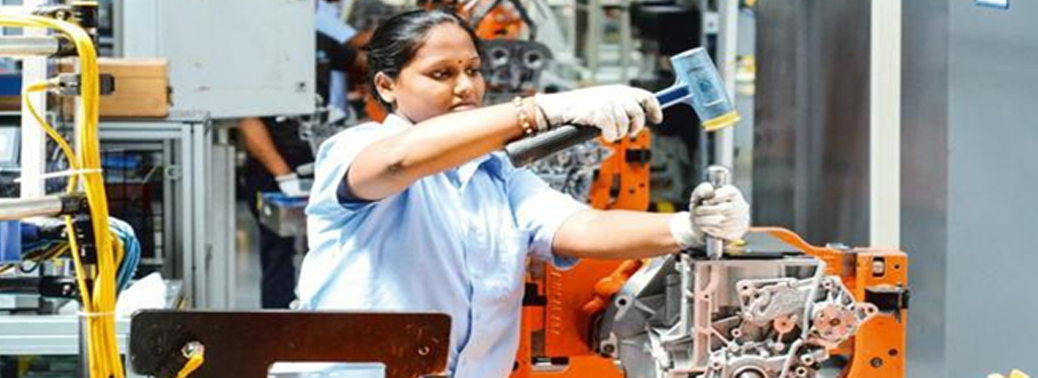
Why in News?
- According to an internal study conducted by the National Skills Development Corporation (NSDC), just one out of five persons entering the labour force is expected to be a female in next 5 years.
About NSDC:
- NSDC is Public Private Partnership (PPP) under Ministry of Skill Development & Entrepreneurship (MSDE).
- It was founded in 2009 as not-for-profit Company by Ministry of Finance to address need for providing skilled manpower across various industry sectors.
- Government of India (GoI) through MSDE holds 49% of share capital of NSDC, while private sector has balance 51% of the share capital.
- NSDC aims to promote skill development by catalysing creation of large, quality and for-profit vocational institutions.
- Its objective is to create training capacity in the country; fund vocational training initiatives and create market ecosystem for skill development.
- Its mandate is to train 150 million people by 2022.
- It is also involved in re-skilling and also in catering to skilled manpower requirement of overseas markets, most notably that of Japan (under TITP) and UAE.
What did the Study Found?
- 7 crore additional individuals in the working-age (15-59 years) are expected to enter the labour force by 2023, of which 84.3 % or 5.9 crore will be in the age group 15-30 years.
- Only six states — Uttar Pradesh, Maharashtra, Madhya Pradesh, Bihar, Tamil Nadu and Karnataka — are expected to account for 50 % (about 3 crore) of the new youth entrants (15-30 years) during 2019-23.
- Just one out of five persons — in the 15-30 years age bracket — entering the labour force is expected to be a female in the five years ending 2023.
- Many female candidates in the age group of 15-19 years may not be actively in the labour force, instead choosing to opt for higher education, and so, with the changing education pattern, female labour force participation rate should be watched closely for the 20-34 Years Age Group.

Comparison with Other Data’s:
- While the NSO’s Periodic Labour Force Survey (PLFS) 2017-18 had estimated female labour force participation rate for 15 years and above at 23.3 %, the comparative numbers of other countries highlight the labour market’s gender skew.
- According to World Bank data, India’s female labour force participation rate ranks much lower than other Asian economies in 2019, including Vietnam (73 %), China (61 %), Singapore (60 %), Bangladesh (36 %), and is closer to the estimates in countries such as Lebanon (24 %), Pakistan (24 %), Libya (26 %), Tunisia (24 %) and Sudan (24 %).
SOCIAL AUDITS OF MAJOR RURAL DEVELOPMENT SCHEMES
13, Nov 2019

Why in News?
- The Department of Rural Development decides to institutionalize social audits in major schemes.
Highlights:
- The Department of Rural Development has decided to institutionalize social audits in major schemes of rural development, starting with the National Social Assistance Programme (NSAP) and the Pradhan Mantri Awas Yojana – Gramin (PMAY-G).
- In this backdrop, a two-day ‘National Seminar on Social Audit of Rural Development Programmes’ is being organised in November 2019.
- It is being jointly conducted by the Department of Rural Development and the National Institute of Rural Development and Panchayati Raj.
- The objective of the seminar is to understand the current status of social audits and Social Audit Units (SAUs) and develop a plan for roll out of social audit in other programmes.
- The Seminar will take stock of the current status of Social Audits and SAUs in terms of independency, funds, issues identified, actions taken, etc. and will provide a platform for SAUs to share their experiences of conducting social audit.
- Models and best practices in social audit from across states in India and also from other countries will be showcased.
- Participants will also develop an action plan for strengthening SAUs and roll out of social audit in other rural development programmes especially NSAP and PMAY-G.
Social audit for Schemes:
- Social Audit is recognized by many, including the Comptroller and Auditor General (CAG), as a powerful tool to enforce transparency and accountability.
- Mahatma Gandhi National Rural Employment Guarantee Act (MGNREGA) was the first Act to mandate Social Audits by the Gram Sabha of all the projects taken up in the Gram Panchayat.
- In addition to MGNREGA, a few states have taken up social audit of other schemes as well.
- Pradhan Mantri Aawas Yojana-Gramin (PMAY-G) audits are done in Uttar Pradesh, Meghalaya and West Bengal.
- National Social Assistance Programme (NSAP) audits are done in Andhra Pradesh and West Bengal.
- Meghalaya Legislature has enacted ‘The Meghalaya Community Participation and Public Services Social Audit Act, 2017’ which mandates social audit in 26 different schemes in Education, Health, Rural Development and other areas.
- Eight States have taken up Social Audit of 11 different schemes including Pradhan Mantri Aawas Yojana-Gramin (PMAY-G), Swachh Bharat Mission (SBM), National Social Assistance Programme (NSAP), Integrated Child Development Service (ICDS) and Mid-Day Meals (MDM).
Pradhan Mantri Aawas Yojana-Gramin (PMAY-G):
- This scheme functions under the Ministry of Rural Development.
- The objective of the scheme is to help rural people below the poverty line (BPL) in constructing dwelling units and upgrading the existing unserviceable kutcha houses by providing assistance in the form of a full grant.
- Rural housing programme, as an independent programme, started with the Indira Awas Yojana (IAY) in January 1996. To address certain gaps in the IAY, the government restructured it into the PMAY-G with a commitment to provide “Housing for All’’ by the year 2022. Beneficiaries are chosen according to data taken from the Socio-Economic Caste Census (SECC) of 2011.
National Social Assistance Programme (NSAP):
- NSAP was launched in 1995.
- This was introduced in accordance with the Directive Principles of State Policy (DPSP) which directs the State to provide public assistance to its citizens in case of unemployment, old age, sickness and disablement and in other cases of undeserved want within the limit of its economic capacity and development.
- The NSAP aims at ensuring a minimum national standard for social assistance in addition to the benefits that states are currently providing or might provide in the future.
- It is a social security and welfare programme to provide support to aged persons, widows, disabled persons and bereaved families on the death of the primary breadwinner, belonging to BPL households.
Currently, the NSAP comprises of Five Schemes:
- Indira Gandhi National Old Age Pension Scheme (IGNOAPS)
- Indira Gandhi National Widow Pension Scheme (IGNWPS)
- Indira Gandhi National Disability Pension Scheme (IGNDPS)
- National Family Benefit Scheme (NFBS)
- Annapurna Scheme
MERGER OF ASSAM RIFLES AND ITBP
12, Nov 2019
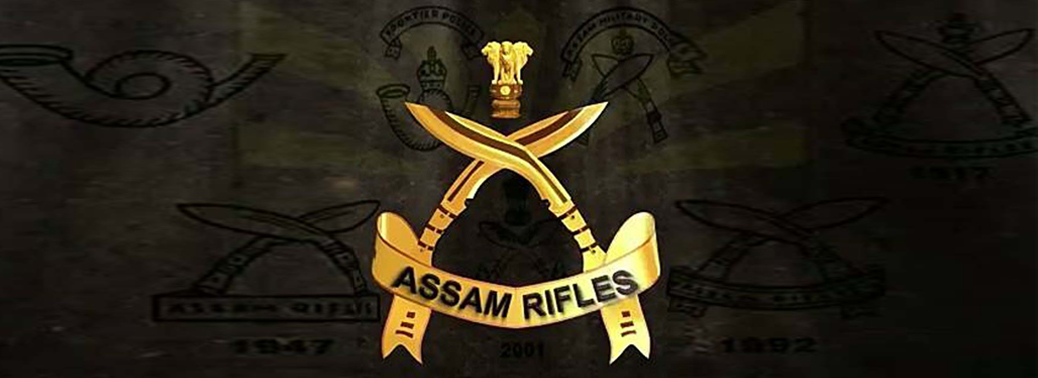
Why in News?
- The Ministry of Home Affairs (MHA) has proposed that the Assam Rifles should be merged with the Indo-Tibetan Border Police (ITBP) and serve under the operational control of the MHA.
About CAPF:
- The Central Armed Police Forces (CAPF) refers to uniform nomenclature of security forces in India under the authority of Ministry of Home Affairs.
- They are the, Border Security Force (BSF), Central Reserve Police Force (CRPF), Central Industrial Security Force (CISF), Indo-Tibetan Border Police (ITBP), Assam Rifles (AR), National Security Guard (NSG) and Sashastra Seema Bal (SSB).
- At present, the Assam Rifles, a Central paramilitary force, is under the administrative control of the MHA and under the operational control of the Army, i.e. the Ministry of Defence.
BSF:
- The primary role of the Border Security Force is to guard the border of the India with Pakistan and Bangladesh; it is deployed both on the International Border (IB) between India and Pakistan and the Line of Control (LOC). The BSF also has active roles during times of war.
CRPF:
- The Central Reserve Police Force (CRPF) is India’s largest Central Armed Police Force and also considered to be World’s largest Paramilitary Force. It functions under the authority of the Ministry of Home Affairs (MHA) of the Government of India. The CRPF’s primary role lies in assisting the State/Union Territories in police operations to maintain law and order and Counter Insurgency.
CISF:
- One of the largest industrial security forces in the world, the Central Industrial Security Force provides security to various Public Sector Undertakings (PSUs) and other critical infrastructure installations, major airports across the country and provides security during elections and other internal security duties and VVIP protection.
ITBP:
- The Indo-Tibetan Border Police is deployed for guarding duties on the border with China from Karakoram Pass in Ladakh to Diphu La in Arunachal Pradesh covering a total distance of 3488 km.
Assam Rifles:
- The Assam Rifles is the oldest paramilitary force of India. The unit can trace its lineage back to a paramilitary police force that was formed under the British in 1835 called Cachar Levy. Since 2002 it has been guarding the Indo–Myanmar barrier as per the government policy “one border one force”.
NSG:
- The National Security Guard (NSG) is a counter terrorism unit under the Indian Ministry of Home Affairs (MHA). It was raised in 15th October1984, following Operation Blue Star, Akshardham Temple attack and the assassination of Indira Gandhi, “for combating terrorist activities with a view to protect states against Internal Disturbances”.
SSB:
- The objective of the Sashastra Seema Bal (English: Armed Border Force) is to guard the Indo-Nepal and Indo-Bhutan Borders.
PRISON STATISTICS INDIA–2017 REPORT
02, Nov 2019

Why in News?
- The National Crime Records Bureau (NCRB) has released the report “Prison Statistics India 2017” recently.
Key Findings of the Report:
- Indian jails have an average occupancy rate of 115% of their capacity and continue to remain congested and overcrowded.
- In 16 of the 28 States covered in the report, occupancy rate was higher than 100% with States and Union Territories such as Uttar Pradesh (165%), Chhattisgarh (157.2%), Delhi (151.2%) and Sikkim (140.7%) faring the worst.
- While overall occupancy rates have come down from 140% in 2007 to 115% in 2017, only a few States have, in this period, gone about building more jails or increasing capacity in prisons in line with the changes in inmate population.
- Tamil Nadu have reduced their prison occupancy rate (to 61.3%) by increasing the number of jails and their capacity and reducing arrests for actions unless there is a cognisable offence made out.
- U.P. continue to have high occupancy rates because of increased inmate population despite a relative increase in prison capacity.
- Rajasthan and Maharashtra have not managed to augment jail capacity to fit in the increased inmate population in the past decade.
- It has to be noted that more than 68% of those incarcerated were undertrials, indicating that a majority were poor and were unable to execute bail bonds or provide sureties.
Reasons for Overcrowding in Jails:
- Judicial Backlogs-Due to 1 crore cases (2016) pending in various courts of the country, jails across the country will remain overcrowded in the absence of any effective systemic intervention.
- Inadequate Prison Capacity– Most Indian prisons were built in the colonial era, are in constant need of repair and part of them are uninhabitable for long periods.
- Restricted access to legal Representatives-Many inmates are unaware of their rights and cannot afford legal aid, limited ability to communicate with lawyers from within the jail premises hampers their ability to defend themselves.
- Problems in Acquiring Bail – For poor and marginalized it is also difficult to get bail which leaves them no option but to stay in jails and wait for courts final order.
- Unnecessary Arrests: Over 60 per cent of arrests were unnecessary and such arrests accounted for 3 per cent of jail expenditure.
Key Recommendations of the Law Commission:
- There were a series of recommendations made by the Law Commission of India in its 268th report and key recommendations are as follows:
- Highlighted the inconsistencies in the bail system as one of the key reasons for overcrowding in prisons.
- Expediting the trial process for such prisoners is the most important endeavour, but short of this there are ways to decongest prisons by granting relief to undertrials.
- The Commission recommended that those detained for offences that come with a punishment of up to seven years of imprisonment should be released on completing one-third of that period.
- Those who charged with offences that attract a longer jail term, should be released after they complete half of that period.
- For those who have spent the whole period as undertrials, the period undergone should be considered for remission.
- It also recommended that the police should avoid needless arrests, while magistrates should refrain from mechanical remand orders.
- Despite the Supreme Court and other institutions regularly raising the issue of prison reforms and decongestion in jails, it is evident that the measures taken have been piecemeal in most States.
- Justice Amitava Roy committee is a ray of hope in the direction of prison reforms, but without political reforms in India’s criminal justice system are impossible.
About National Crime Record Bureau (NCRB):
- NCRB, headquartered in New Delhi, was set-up in 1986 under the Ministry of Home Affairs to function as a repository of information on crime and criminals so as to assist the investigators in linking crime to the perpetrators.
- It has been created by a government resolution based on the recommendations of the National Police Commission (1977-1981) and the MHA’s Task force (1985).
- NCRB brings out the annual comprehensive statistics of crime across the country (‘Crime in India’ report).
15-POINT REFORM CHARTER FOR BETTER FUNCTIONING OF PARLIAMENT
31, Oct 2019
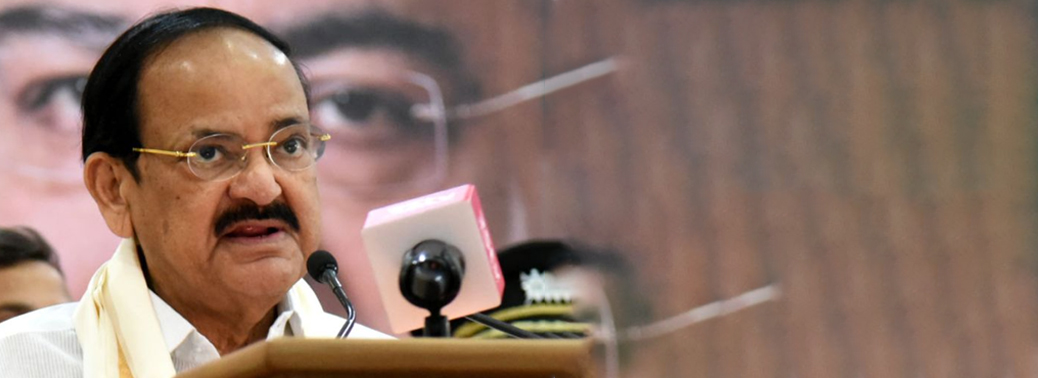
Context:
- Our Honourable Vice President has unveiled a 15-point reform charter, while expressing severe concern over the functioning of parliamentary institutions in the country and erosion of public trust in them.
- The charter is expected to serve as a basis for a new political normal to enable effective functioning of Parliament and State Legislatures.
- He also called for a new political consciousness urging all the stakeholders to review their mindset with regard to their roles and responsibilities.
The 15-point Charter Includes:
- Parties need to ensure attendance of at least 50% of their legislators all through the proceedings of the Houses by adopting a roster system.
- Review of anti-defection law.
- Review of the whip system which is “stifling reasonable dissent even on non-consequential matters”.Set up special courts for time-bound adjudication of criminal complaints against legislators.Pre and post legislative impact assessment.
- Address problem of rising number of legislators with criminal background.
- Governments should be responsive to opposition and opposition to be responsible and constructive while resorting to available parliamentary instruments
- Consensus on the proposal for simultaneous elections.
- Steps should be taken for the effective functioning of the Parliamentary Committees.
- The representation of women in legislatures needs to be raised.
Need behind such a charter:
- The functioning of the parliament is heavily coming under criticism for various reasons and major issues behind them are as follows:
- Political power continues to be a male dominated. The Lok Sabha and the Rajya Sabha have not seen women MPs cross the 12% mark.
- Political parties failing to display internal democracy.
- The number of sittings the parliament undergoes is declining gradually.
- Parliament occupied by persistent disruptions.
- Rising questions on the quality of debates. In 2008, for instance, 16 Bills were passed with less than 20 minutes of debate.
- Rising number of legislatures with criminal record.
- Rising money and muscle power in elections.
- Legislatures displaying high degree of absenteeism.
- Faulty ‘First Pass the Post (FPTP) election system.
- There are many instruments like anti-defection law, whip issued by the political parties that are acting as hindrances for free speech of MPs.
KHADI AND VILLAGE INDUSTRIES COMMISSION
23, Oct 2019

Why in News?
- The Khadi and Village Industries Commission (KVIC) and the Goa State Government have joined hands with an aim to generate employment opportunities in Goa.
Khadi and Village Industries Commission (KVIC):
- KVIC is a statutory body established by an Act of Parliament in 1956.
- The body is charged with the planning, promotion, organisation and implementation of programs for the development of Khadi and other village industries in the rural areas in coordination with other agencies engaged in rural development wherever necessary.
Objectives of KVIC:
- The social objective of providing employment.
- The economic objective of producing saleable articles.
- The wider objective of creating self-reliance amongst the poor and building up of a strong rural community spirit.
- Its functions also comprise building up of a reserve of raw materials and implements for supply to producers, creation of common service facilities for processing of raw materials as semi-finished goods and provisions of facilities for marketing of KVI products.
- It also imparts training to artisans engaged in these industries.
- It also engages in research of production techniques and equipment employed in the Khadi and Village Industries sector.
- It also provides financial assistance to institutions and individuals for the development and operation of Khadi and village industries and guides them through the supply of designs, prototypes and other technical information.
- It functions under the Ministry of Micro, Small and Medium Enterprises, and is headquartered in Mumbai.
Khadi:
- Khadi, also called khaddar, is a hand-spun, hand-woven natural fibre cloth. It is woven from cotton. It may also include silk or wool. It originates from India and Bangladesh. It is associated with the freedom struggle and Mahatma Gandhi, who urged people to use Khadi and ditch foreign imported cloth.
PULSE POLIO PROGRAMME
23, Oct 2019

Why in News?
- 25 years of Pulse Polio Programme to be celebrated in October 2019.
Pulse Polio Programme:
- The Pulse Polio Campaign was first started in 1994 in Delhi after the success of the first large-scale supplementary immunization campaign with OPV (oral polio vaccine).
- The campaign was inaugurated with the tagline ‘Do Boond Zindagi Ki’.
- The campaign in Delhi reached nearly one million children up to the age of three years with two doses of OPV being administered on 02 October and 04 December through exclusive booth-based strategy.
- This strategy was later adopted and implemented by the Government of India all over the country as Pulse Polio Campaigns.
- India’s attainment of polio-free status in 2014 was coined by the World Health Organization as “one of the most significant achievements in public health,” and marked not just India but the entire South East Asia Region being declared polio-free.
- The last case of polio in the country was in 2011.
- The global initiative of eradicating polio was started by the WHO in 1988.
- Around 17.4 crore children of less than five years across the country are given polio drops as part of the drive of the Government of India to sustain polio eradication from the country.
- The Pulse Polio Initiative was started with an objective of achieving a hundred per cent coverage under Oral Polio Vaccine.
- It aimed to immunize children through improved social mobilization, plan mop-up operations in areas where poliovirus has almost disappeared and maintain a high level of morale among the public.
FSSAI MILK SURVEY: MILK SAMPLES FAIL TO MEET STANDARDS
19, Oct 2019

Why in News?
- Milk samples from Telangana, followed by Madhya Pradesh and Kerala, accounted for the highest number of cases of adulteration, according to a national milk sample safety quality survey released by the Food Safety and Standard Authority of India (FSSAI).
Key Findings:

- The study noted that processed milk, including that of major brands, failed to meet the prescribed quality norm in 37.7% of the total samples tested, and in the safety parameters too, 10.4% of the processed milk samples were non-compliant.
- 4% of the total processed milk samples failed to comply with the FSSAI norm as contaminants like aflatoxin-M1, antibiotics and pesticides were found.
- In case of raw milk, non-compliance was at an even higher rate of 47% of the total samples of 3,825.
- In terms of quality, the survey found that 37.7% of the total sample of processed milk did not comply with quality parameters because the presence of contaminants such as fats, Maltodextrin and sugar were above permissible limits.
- The FSSAI has now directed the organised dairy sector to strictly start complying with the quality norms by January 1, 2020.
- The study shows that contamination was more a serious problem than adulteration.
Concern over Aflatoxin:
- The problem of Aflatoxin-M1 is more dominant in processed milk than raw milk.
- Tamil Nadu, Delhi and Kerala were top three States where Aflatoxin residue was found the most, noted the report.
- In large doses, aflatoxins can be life threatening, usually damaging to liver.
- Aflatoxin-M1 comes in the milk through feed and fodder that are currently not regulated in the country, and it is for the first time that such a detailed survey of the presence of this residue in milk has been done in India.
- It has to be noted that India is the world’s largest producer of milk. The total estimated milk production in the country was 176.35 million tonnes during 2017-18.
About FSSAI:
- The Food Safety and Standards Authority of India (FSSAI) is a nodal statutory agency responsible for protecting and promoting public health in India through the regulation and supervision of food safety.
- FSSAI was established under the Food Safety and Standards Act, 2006 and operates under aegis of Union Ministry of Health & Family Welfare.
- FSSAI has been established to lay down science based standards for various food products in order ensure availability of safe and wholesome food for human consumption.
- It is headquartered in New Delhi.
TB CASES SEE DECREASE IN INDIA
19, Oct 2019

Why in news?
- World Health Organization (WHO) has released the 2019 edition of the Global Tuberculosis (TB) Report.
Global Tuberculosis (TB) Report:
- The report provides a comprehensive and up-to-date assessment of the TB epidemic and progress in the response at global, regional and country levels for India.
- It also features data on disease trends and the response to the epidemic in 202 countries and territories.
- This includes trends in TB incidence and mortality, data on case detection and treatment results for TB, multidrug-resistant TB (MDR-TB), TB/HIV, TB prevention, universal health coverage as well as financing
- The tuberculosis incidence rate in India has decreased by almost 50,000 patients over the past one year, according to the Report.
- The treatment success rate has increased to 81% for new and relapse cases (drug-sensitive) in 2017, which was 69% in 2016.
- In India, of the estimated 2.69 million TB cases emerging in 2018, 2.15 million were reported to the Government of India — leaving a gap of 5,40,000 patients who are going unreported.
- The India TB-Report 2019 notes that India is closest ever to covering all TB cases through the online notification system (NIKSHAY).
Key challenges to restrict the spread of TB:
- There is no initial categorization of patients. The Category of TB that a patient is suffering from is not checked in the beginning and the first-line treatment is given which is useless for MDR cases thereby worsening the situation.
- TB treatment should be on a daily basis however alternate day treatment leaves the programme ineffective.
- There is poor monitoring of the fact whether the patient is regularly taking the doses or not. This is often wrongly reported.
- Actual number of cases reported in the National Register for TB is far less than the number of patients actually affected and hence the disease, being contagious, keeps on spreading.
- Demand and supply gap of the drugs is quite wide. Specific drugs are rather expensive, especially for the rural masses. There is lack of research and research-related funding towards patient-specific drugs.
- The TB Programme continues to face the challenge of under-reporting of cases from the private sector, which caters to a majority of cases.
- There is a poor sense of awareness and responsibility on the patient’s part to complete the TB course.
NATIONAL CRIME RECORDS BUREAU (NCRB)
18, Oct 2019

Why in News?
- The Minister of State for Home Affairs inaugurates the 20th All India Conference of Directors of Fingerprint Bureaus being organised by the NCRB.
National Crime Records Bureau (NCRB):
- NCRB was set-up in 1986 to function as a repository of information on crime and criminals so as to assist the investigators in linking crime to the perpetrators.
- It was established based on the recommendations of the National Police Commission (1977-1981) and the Ministry of Home Affairs’ Task force (1985).
NCRB works under the Home Affairs Ministry.
- The body monitors, coordinates and implements the Crime and Criminal Tracking Network & Systems (CCTNS) project.
- The project connects 15000+ police stations and 6000 higher offices of police in the country.
- In 2017, the NCRB launched the National Digital Police Portal, which allows search for a criminal/suspect on the CCTNS database apart from providing various services to citizens like filing of complaints online and seeking antecedent verification of tenants, domestic helps, drivers, etc.
- The NCRB also maintains the National Database of Sexual Offenders (NDSO), which it shares with states/UTs regularly.
- It has also been designated as the Central Nodal Agency to manage technical and operational functions of the ‘Online Cyber-Crime Reporting Portal’ through which any citizen can lodge a complaint or upload a video clip as an evidence of crime related to child pornography, rape/gang rape.
- NCRB also deals with associated work of Cyber Crime Prevention against Women & Children (CCPWC) through this portal.
- The National Crime Statistics data is published by the NCRB. These publications serve as principal reference point by policymakers, police, criminologists, researchers and media, both in India and abroad.
- NCRB has also floated various IT-based Public Services like Vahan Samanvay (online matching for Stolen/Recovered vehicles) and Talash (matching of missing persons and dead bodies).
- The Central Finger Print Bureau under NCRB is a national repository of all fingerprints in the country and has more than one million ten-digit fingerprints database of criminals both convicted and arrested and provides for search facility on Fingerprint Analysis and Criminal Tracing System (FACTS).
VAN DHAN INTERNSHIP PROGRAMME
17, Oct 2019
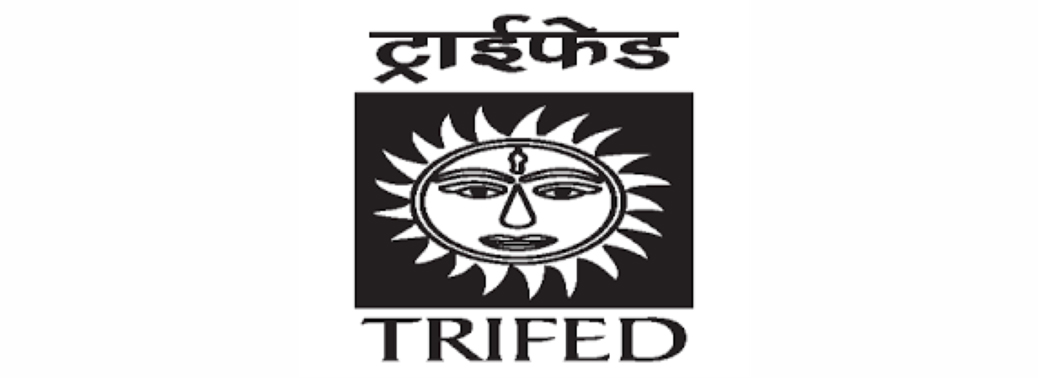
Why in News?
- The Union Minister of Tribal Affairs launched the “Van Dhan Internship Programme” organised by TRIFED under the Ministry of Tribal Affairs.
Van Dhan Internship Programme:
- 18 interns (to be called Minister’s interns) from some of the reputed Institutes of Rural Management/Management Institutions/Institutes of Social Work/Social Services of the country are participating in the “Van Dhan Internship Programme”.
- These interns have been selected to go and work on Van Dhan programme in the field. These interns have an inclination towards involving in matters related to tribal livelihood.
- After their selection through the walk-in-interview, these interns are undergoing a one-week training programme. The period of internship is 6 months (extendable developing upon the need of the organisation and mutual sustainability).
- These interns will work with the team of TRIFED in various states and districts in tribal areas in development of tribal welfare and inclusive growth (a dissertation has to be submitted on the conclusion of the internship).
- They will support the TRIFED activities on livelihood promotion, value addition of NTFTs, marketing and credit linkages.
- They will develop tools and techniques on institutional development including mechanism for determination of a just price or producer price of Minor Forest Products.
TRIFED:
- TRIFED stands for Tribal Cooperative Marketing Development Federation of India Limited.It was formed in 1987 is a national-level apex organization functioning under the administrative control of the Ministry of Tribal Affairs, GOI.
- The ultimate objective of the cooperative is socio-economic development of tribal people in India by way of marketing and development of the tribal products on which the lives of tribals depend heavily on.
FOOD SAFETY MITRA (FSM) SCHEME
17, Oct 2019

Why in News?
- The Union Health Minister launched the Food Safety Mitra (FSM) scheme for strengthening and scaling up the ‘Eat Right India’ movement.
- He also launched the ‘Eat Right Jacket’ and ‘Eat Right Jhola’ on World Food Day 2019 (16th October).
Food Safety Mitra (FSM) scheme:
- The ‘Food Safety Mitra (FSM)’ scheme will support small and medium scale food businesses to comply with food safety laws and facilitate licensing and registration, hygiene ratings and training.
- Apart from strengthening food safety, this scheme would also create new employment opportunities for youth, particularly with food and nutrition background.
- An FSM is an individual professional certified by FSSAI who assists in compliances related to FSS Act, Rules & Regulations with three avatars – Digital Mitra, Trainer Mitra and Hygiene Mitra depending upon their respective roles and responsibilities.
- The FSMs would undergo training and certification by FSSAI to do their work and get paid by food businesses for their services.
‘Eat Right Jacket’ scheme:
- These Jackets will be given to the FSSAI field staff to ensure transparent inspection.
- They are embedded with RFID tags and QR codes. It is linked to software to capture entry of inspection staff into premise for monitoring.
‘Eat Right Jhola’ scheme:
- The ‘Eat Right Jhola’ is a reusable, washable and bio-degradable bag.
- These shall replace plastic bags for grocery shopping in various retail chains. Since on repeated use, bags are often contaminated with microorganisms and bacteria, proper and regular washing of cloth bags is essential to ensure safety and hygiene.
- These cloth bags are being provided on a rental basis through a private textile rental service company.
‘Eat Right India’ Movement:
- The campaign was launched in 2018.
- The campaign is led by FSSAI.
- It is a Pan-India cycle movement aimed to create consumer awareness about eating safe and nutritious food.
- It aims to engage, excite and enable citizens to improve their health and wellbeing.
- ‘Eat Right India’, is built on two broad pillars of ‘Eat Healthy’ and ‘Eat Safe’.
- It is a collective effort to make both the demand and supply-side interventions through the engagement of key stakeholders.
World Food Day:
- It is celebrated on 16th October every year to mark the foundation of the Food and Agriculture Organisation (FAO) on this day in 1945.
- The day was established in 1979. It has been celebrated every year since 1981.
- This day generates awareness internationally for those who suffer from hunger and to ensure the need for food security and nutritious diets for all. The day emphasises that food is a basic and fundamental human right.
- Theme for 2019: “Our Actions Are Our Future. Healthy Diets for A #ZeroHunger World”.
GUJARAT, TAMIL NADU TOP PERFORMERS UNDER PM-JAY HEALTH SCHEME
16, Oct 2019
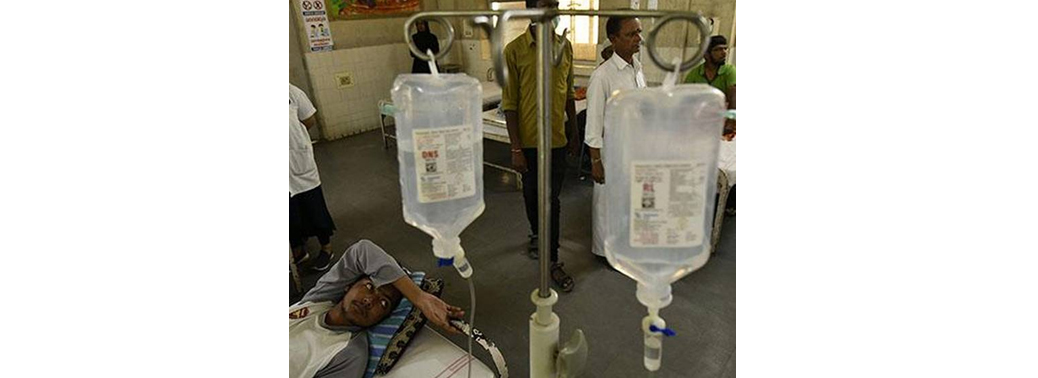
Why in News?
- Gujarat, Tamil Nadu, Chhattisgarh, Kerala and Andhra Pradesh have emerged as the top performing States with free secondary and tertiary treatment under the Ayushman Bharat-Pradhan Mantri Jan Arogya Yojana.
About the News:
- The above-mentioned states have emerged as the top performing States with free secondary and tertiary treatment worth nearly ₹7,901 crore availed under the Ayushman Bharat Pradhan Mantri Jan Arogya Yojana (PM-JAY), the flagship health assurance scheme of the Government in just over a year.
- The scheme crossed the 50-lakh treatment mark this week with secondary and tertiary level treatments carried out across 32 States and Union Territories.Half-a-crore hospital treatments have been provided and there are 9 hospital admissions every minute across India.
Tertiary care-occupies a Lion share:
- More than 60% of the amount spent has been on tertiary care. Cardiology, Orthopaedics, Radiation Oncology, Cardio-thoracic and Vascular Surgery, and Urology have emerged as the top tertiary specialities.
About Ayushman Bharat:
- Launched as recommended by the National Health Policy 2017, to achieve the vision of Universal Health Coverage.
- The scheme has been meant to focus on reducing catastrophic out-of-pocket health expenditure, improving access to quality health care and meeting the unmet need of the population for hospitalisation care, and achieving the vision of Universal Health Coverage.
- There are two flagship initiatives under Ayushman Bharat:
1.Pradhan Mantri Jan Arogya Yojana (PMJAY):
- The National Health Policy, 2017 has envisioned Health and Wellness Centres as the foundation of India’s health system. Under this 1.5 lakh centres will bring health care system closer to the homes of people.
- These centres will provide comprehensive health care, including for non-communicable diseases and maternal and child health services.
- These centres will also provide free essential drugs and diagnostic services.
- Contribution of private sector through CSR and philanthropic institutions in adopting these centres is also envisaged.
2.National Health Protection Scheme:
- The second flagship programme under Ayushman Bharat is National Health Protection Scheme, which will cover over 10 crore poor and vulnerable families (approximately 50 crore beneficiaries) providing coverage upto 5 lakh rupees per family per year for secondary and tertiary care hospitalization.
- This will be the world’s largest government funded health care programme. Adequate funds will be provided for smooth implementation of this programme.
‘ONE NATION ONE FASTAG’ SCHEME
16, Oct 2019

Why in News?
- Minister of Road Transport and Highways Nitin Gadkari inaugurated the “One Nation One FASTag” scheme.
- The plan aims to integrate the collection of toll digitally and ensure seamless mobility of vehicles across India.
- The scheme will be implemented from December 1, 2019, and can be availed upon activation by new cars having Radio Frequency Identification (RFID) tags on national and state highways throughout the country.
What is ‘FASTagʼ?
- FASTags are stickers that are affixed to the windscreen of vehicles and use RFID technology to enable digital, contactless payment of tolls without having to stop at toll gates.
- The tags are linked to bank accounts and other payment methods. As a car crosses a toll plaza, the amount is automatically deducted, and a notification is sent to the registered mobile phone number. Sensors are placed on toll barriers, and the barriers open for vehicles having valid FASTags.
- A FASTag is valid for five years and needs to be recharged only as per requirement.
‘One Nation One FASTagʼ Scheme:
- Memorandum of Understandings (MoUs) were signed between state departments and other agencies for bringing in a unified electronic tolling solution across the country.
- Karnataka, Andhra Pradesh and Haryana signed MoUs with the Indian Highways Management Company Limited, an arm of NHAI, to accept FASTags on their state highway tolls.
- The existing FASTags under various jurisdictions of states and agencies would be enabled under this scheme, thus integrating the collection of toll digitally so that seamless services can be provided to consumers all over India.
Significance:
- The move is significant given that the Centre has decided that from December 1, all national highway toll plazas will accept tolls only through FASTags.
- At present, 60 lakh vehicles in India have FASTags. According to the National Highways Authority of India (NHAI), these devices will make passing through tolls considerably smoother since drivers will no longer have to carry cash or stop to make a transaction.
NATIONAL BLINDNESS AND VISUAL IMPAIRMENT SURVEY OF INDIA (2015-19)
15, Oct 2019
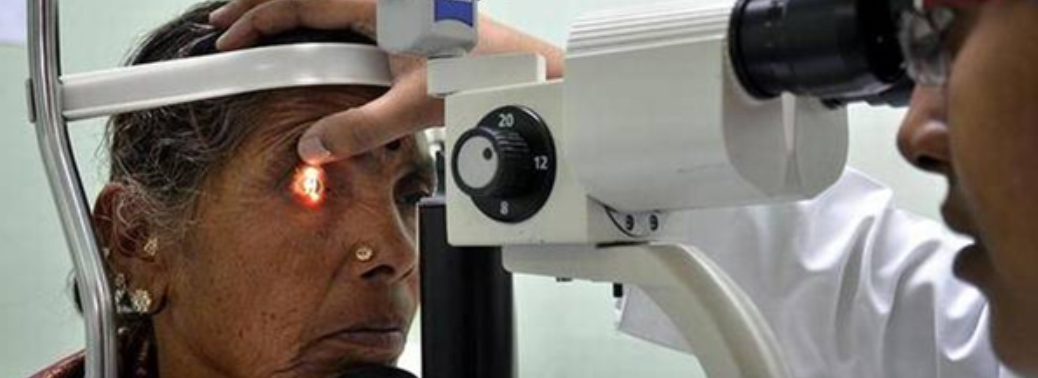
Why in News?
- National Blindness and Visual Impairment Survey of India (2015-19) was released recently.
About the Survey:
- The survey was conducted by Dr. Rajendra Prasad Centre for Opthalmic Sciences, All India Institute of Medical Sciences, New Delhi, for Union Ministry of Health and Family Welfare.
- It was conducted in 31 districts of 24 States across India.
Key Highlights of the Survey:
- Cataract is the principal cause of blindness for people above 50years in India. Cataract is the cause for 66.2% cases of blindness,7% cases of severe visual impairment, and 70.2% cases ofmoderate visual impairment in the age group.
- Blindness is more pronounced among illiterate (3.23%) thanliterates (0.43%) and more prevalent in the rural population (2.14%)than urban (1.80%).
- Approximately 93% of cases of blindness and 96.2% visualimpairment cases in this age group were avoidable.
- Barriers to accessing treatment includes no one to accompany [thepatient], seasonal preferences, and financial constraints.
- Among men, the most important barriers are financialconstraints (31%) and local reasons (21.5%).
- Among women, local reasons (23.1%) and financial constraints(21.2%) were the most important barriers.
HEALTH MINISTRY FINALISES 19 NMC PART-TIME MEMBERS
15, Oct 2019

Why in News?
- The Union Health Ministry on Monday finalised the names of 19 part-time members of the National Medical Commission (NMC) through a draw of lots in the presence of ministers, senior officials and the media.
About National Medical Commission Act,2019:
- The National Medical Commission act seeks to improve the medical education system in the country by ensuring availability of adequate and high-quality medical professionals, periodic assessment of medical institutions, adoption of the latest medical research by medical professionals and an effective grievance redressal mechanism.
- The National Medical Commission Act, 2019 received assent of the President on August 8 and was published in the official Gazette on the same day.
Key provisions of the Act:
- The act proposes to set up a medical commission, both at the national and state level.
- It also has a provision for setting up a Medical Advisory Council by the Centre. The council will act as a channel through which the states/Union Territories can convey their views and concerns to the NMC.
- It also talks of conducting a uniform National Eligibility-cum-Entrance Test (NEET) for admission to under-graduate medical education in all medical institutions.
- The act proposes to hold the National Exit Test for the students graduating from medical institutions to obtain the licence for the practice.
- The test will also allow students to take admission into post-graduate courses at medical institutions under this legislation.
- The Bill says that the NMC will have the authority to grant a limited licence to certain mid-level practitioners connected with the modern medical profession to practice medicine.
About National Medical Commission:
- The NMC will replace the Medical Council of India (MCI) as the apex regulatory authority of medical education in the country. Four boards – dealing with undergraduate, postgraduate medical education, medical assessment and rating board and the ethics and medical registration board – will regulate the sector.
- The NMC is a 33-Member Body with a chairperson, ten ex officio members, and twenty-two part-time members.
- These members will be appointed by the central government on the recommendation of a committee.
- The chairperson has to be a medical professional of outstanding ability, proven administrative capacity and integrity, possessing a postgraduate degree in any discipline of medical sciences from any University and having experience of not less than twenty years in the field of medical sciences, out of which at least ten years shall be as a leader in the area of medical education.
- The ex officio members will include the presidents of the undergraduate and postgraduate medical education boards, the director general of Indian Council of Medical Research, and a director of one of the AIIMS, among others.
- Part-time members, on the other hand, will include experts from the field of management, law, medical ethics, etc. and nominees of states and union territories.
SARAS AAJEEVIKA MELA
14, Oct 2019

Why in News?
- Union Minister of State for Rural Development inaugurated SARAS Aajeevika Mela.
Highlights:
- SARAS Aajeevika Mela is an initiative by the Deendayal Antyodaya Yojana-National Rural Livelihoods Mission (DAY-NRLM) and Ministry of Rural Development (MoRD).
- The objective of this initiative is to bring the rural women Self Help Groups (SHGs) formed with the support of DAY-NRLM, under one platform to showcase their skills, sell their products and help them build linkages with bulk buyers.
- Through participation in SARAS Aajeevika Mela, these rural SHG women get vital national level exposure to understand the demand and taste of urban customers.
- The Mela is organised by the marketing arm of the Ministry, Council for Advancement of People’s Action and Rural Technology (CAPART).
- Workshops for the rural SHG women would be conducted during the Mela, which will help them to enhance their knowledge and sharpen their skills in bookkeeping and GST, product design, packaging, marketing/e-marketing, communication skills etc.
PRADHAN MANTRI KISAN SAMMAN NIDHI SCHEME
11, Oct 2019
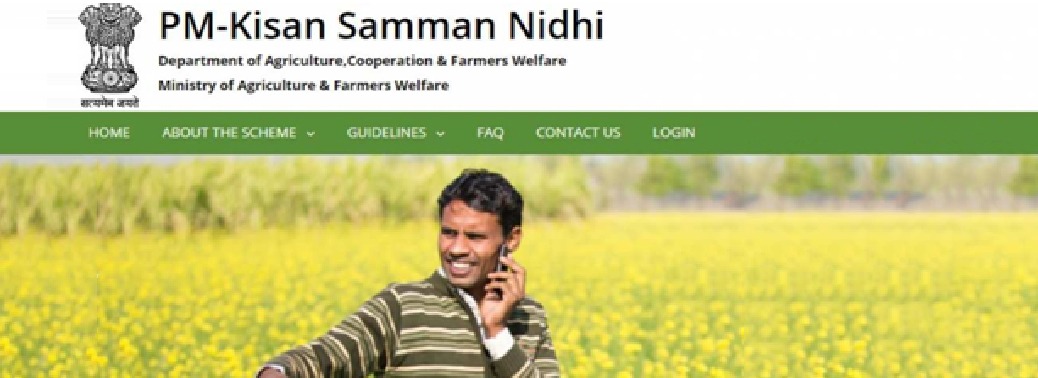
Why in News?
- Recently Cabinet has approved for the relaxation of Aadhaar seeding for the beneficiaries under Pradhan Mantri Kisan Samman Nidhi (PM-Kisan).
Background:
- Under the PM-Kisan scheme funds are released on the basis of Aadhaar seeded database.
- However, it has not been possible to get 100% Aadhaar seeding for release of funds as per the prescribed time schedule before release of instalments.
- So, in order to avoid any fore coming issues, government has taken the above step in a Proactive Manner.
About Pradhan Mantri Kisan Samman Nidhi Scheme:
- With a view to provide income support to all land holding eligible farmer families, the Government has launched PM-KISAN. The scheme aims to supplement the financial needs of the farmers in procuring various inputs to ensure proper crop health and appropriate yields, commensurate with the anticipated farm income.
- Under this programme, vulnerable landholding farmer families, having cultivable land upto 2 hectares, will be provided direct income support at the rate of Rs. 6,000 per year.
- This income support will be transferred directly into the bank accounts of beneficiary farmers, in three equal instalments of Rs. 2,000 each.
- The complete expenditure of Rs 75000 crore for the scheme will borne by the Union Government in 2019-20.
Why it is Needed?
- Declining prices of agricultural commodities in the international market and fall in food inflation in India since 2017-18, relative to non-food sector, therefore reduced the returns from farming.
- To increase the income of farmers as small and fragmented land holdings and their further divisions has contributed in declined income.
- To provide structured income support for procuring inputs such as seeds, fertilizers, equipment, labour and other needs.
- Around 12 crore small and marginal farmer families are expected to benefit from this.
What is a small and Marginal Landholder Family?
- It comprises of husband, wife and minor children up to 18 years of age, who collectively own cultivable land up to two hectares as per the land records of the concerned states.
Similar Programmes by States:
1. KALIA or “Krushak Assistance for Livelihood and Income Augmentation” scheme of Odisha The aim of the scheme is to accelerate agricultural prosperity and reduce poverty in the State payments to encourage cultivation and associated activities. The scheme is being seen as a viable alternative to farm loan waivers.
2. Bhavantar Bhugtan Yojana in Madhya Pradesh
- This was sought to provide relief to farmers by providing the differential between MSPs and market prices.
3. Rythu Bandhu scheme (Telangana)
- It is a welfare program to support farmer’s investment for two crops a year. The government is providing 58.33 lakh farmers, Rs.4000 per acre per season to support the farm investment, twice a year, for rabi and kharif seasons. This was the first direct farmer investment support scheme in India, where the cash is paid directly.
Benefits of the scheme to Farmers:
- Immediate impact is on reducing hunger and rural poverty.
- Income support can be used to make a repayment or at least activate a bank account which can then receive a loan.
- Increased investment in agricultural inputs, including farm implements and livestock.
- Help households to overcome credit constraints and manage risk. This can increase productive investment, increase access to markets and stimulate local economies.
- Serve as an important complement to a broader rural development agenda, including a pro-poor growth strategy focusing on agriculture.
Challenges with Cash Transfers- Criticisms:
- Absolving From Responsibilities: A targeted cash transfer scheme envisions the role of the state to only providing cash income to the poor. This kind of approach seeks to absolve the state of its responsibility in providing basic services such as health, education, nutrition and livelihood.
- DBT not an alternative to Subsidies: Cash transfer scheme cannot be substituted for subsidies and other institutional support systems. In fact, such cash transfer schemes could be counter productive and may lead to more distress.
- Not an alternative to Structural Reforms: Cash transfer is neither a substitute for the structural reforms needed in agriculture, nor does it adequately compensate the farmer for the risks and uncertainty of crop cultivation.
- Absence of proper tenancy records: Such a scenario only benefits the absentee landlords.
JAPANESE ENCEPHALITIS
11, Oct 2019
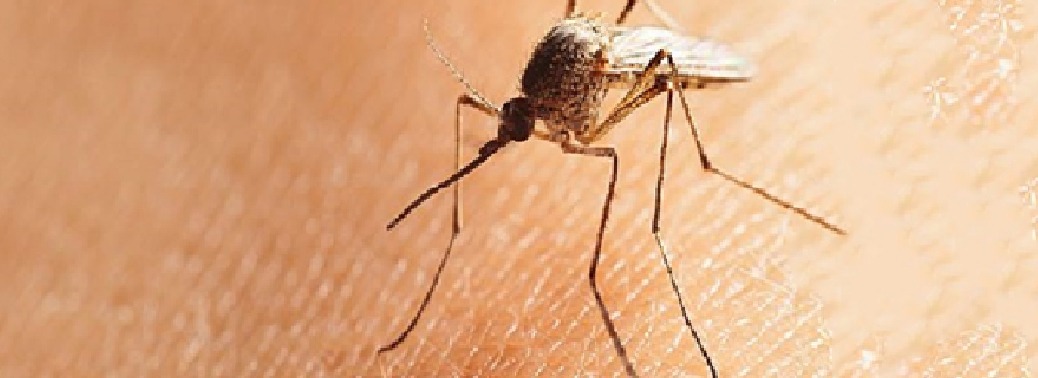
Why in News?
- Rattled by the high number of children dying due to acute encephalitis syndrome, the Union Health ministry has scaled up vaccination in Bihar and other surrounding states.
About Encephalitis disease:
- Encephalitis means “Acute Inflammation of the Brain”. Acute Encephalitis Syndrome (AES) including Japanese Encephalitis (JE) is a group of clinically similar neurologic manifestation caused by several different viruses, bacteria, fungus, parasites, spirochetes, chemical/ toxins etc.
Types of Encephalitis:
- Japanese encephalitis and viral encephalitis diseases, broadly classified as AES, are a poor man’s diseases and affect the families of paddy farmers.
- Viral Encephalitis: Water borne disease (Viral encephalitis refers to a type of Encephalitis caused by a virus)
- Japanese Encephalitis: Mosquito Bite
- Both of the above make Acute encephalitis syndrome, or AES.
- The outbreak of JE usually coincides with the monsoon and post monsoon period when the density of mosquitoes increases while encephalitis due to other viruses specially entero-viruses occurs throughout the year as it is a water borne disease.
Causal Agents:
- Viruses are the main causative agents in AES cases, although other sources such as bacteria, fungus, parasites, spirochetes, chemicals, toxins and non-infectious agents have also been reported over the past few decades.
- Japanese encephalitis virus (JEV) is the major cause of AES in India (ranging from 5%-35%). Nipah virus, Zika virus are also found as causative agents for AES.
- In India, AES outbreaks in north and eastern India have been linked to children eating unripe litchi fruit on empty stomachs. Unripe fruit contain the toxins hypoglycin A and methylenecyclopropylglycine (MCPG), which cause vomiting if ingested in large quantities.
Who is Affected?
- It predominantly affects population below 15 years. The disease most commonly affects children and young adults and can lead to considerable morbidity and mortality.
- JEV has its endemic zones running along the Gangetic plain including states of UP (east), Bihar, West Bengal and Assam, and parts of Tamil Nadu.
Signs and Symptoms:
- Acute encephalitis syndrome (AES) is characterized by an acute onset of fever and clinical neurological manifestation that includes mental confusion, disorientation, delirium, or coma. Apart from viral encephalitis, severe form of leptospirosis and toxoplasmosis can cause AES. Keeping in mind the wide range of causal agents and the rapid rate of neurological impairment due to pathogenesis, clinicians face the challenge of a small window period between diagnosis and treatment.
JAMMU AND KASHMIR OPENS FOR TOURISTS AFTER TWO-MONTH TRAVEL BAN
11, Oct 2019
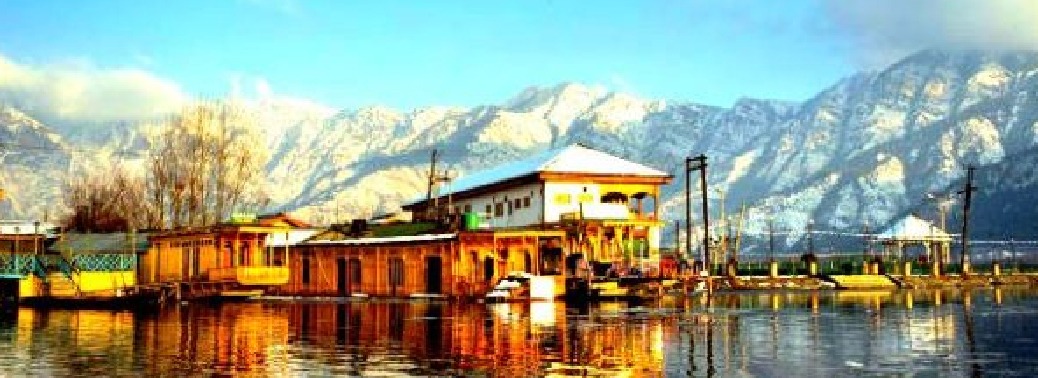
Why in News?
- The travel ban imposed on tourists travelling to Jammu and Kashmir has been lifted with effect from October 10, 2019, almost two months after it was issued.
- Jammu and Kashmir will now be opened for tourists like before.
Highlights:
- The Union Government had issued a security advisory on August 2, asking tourists to leave the valley immediately due to intelligence inputs of terror threats.
- The security advisory was issued just days before the government took the decision of revoking Article 370, withdrawing the special status of J&K.
- The order also assured that the tourists wishing to visit the state will be provided with all the necessary assistance and support.
- However, internet and telephone services continue to be suspended in the valley. The services were suspended and public movements were restricted hours before revoking Article 370.
Background:
- The massive security restrictions imposed by the central government in August 2019, as a measure to prevent any untoward happening after the withdrawal of J&K’s special state status, largely impacted the state’s tourism sector, the mainstay of its economy.
- While some of the restrictions have been relaxed now, the mobile and internet services remain largely blocked.
- According to official figures, roughly 1.74 lakh tourists visited J&K in June and 1.52 lakh in July. However, since the restrictions were imposed in August, no tourist has been able to visit the valley for over two months.
MAHATMA GANDHI NATIONAL FELLOWSHIP PROGRAMME
11, Oct 2019
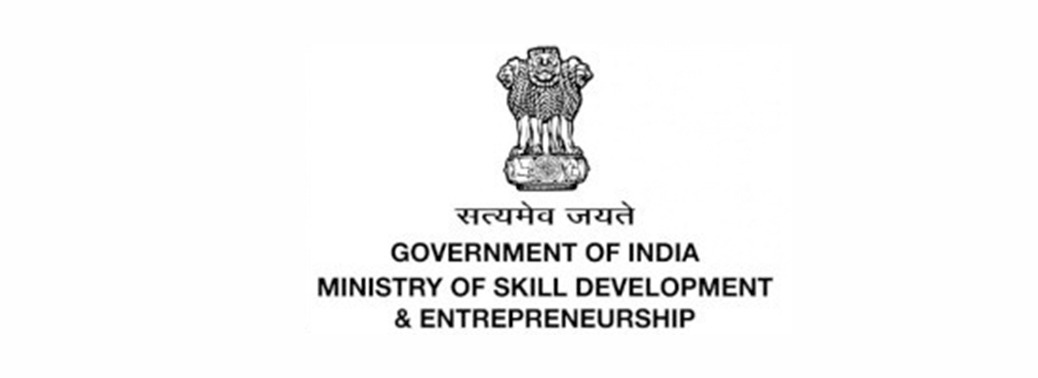
Why in News?
- To boost skill development at the district level, the Ministry of Skill Development and Entrepreneurship (MSDE) signed a contract with the IIM Bangalore for introducing a two-year fellowship programme Mahatma Gandhi National Fellowship (MGNF) programme.
MGNFP:
- Designed under SANKALP the fellowship aims to address the challenge of non-availability of personnel for implementation of various programmes at national, state and district levels.
- The MGNF programme has an in-built component of on-ground practical experience with the district administration.
- It is launched on a pilot basis in 75 districts across Gujarat, Karnataka, Meghalaya, Rajasthan, Uttar Pradesh and Uttarakhand.
- Eligible fellows for the programme have to be in 21-30 years age-group, have a graduation degree from a recognized university and be citizens of India.
- Proficiency in official language of state of fieldwork will be mandatory.Its unique design will allow the Fellows to take academic learning at IIM Bangalore and use it in the field under faculty mentorship with the goal of understanding challenges and barriers that district ecosystem faces in fostering growth and development.
Aim and Objectives:
- MGNF seeks to create a cadre of young individuals and train them in a blended academic programme that provides both academic inputs and a component of field immersion at the district level.
- Besides allowing for an immersive experience to fellows under the programme, MGNF will also be an attractive proposition for those who wish to eke a career in public policy.
- Fellows in the two-year blended programme with academic module at IIM-B & district emersion program will train with district administration officials.
- They are expected to enrich skilling programmes by bringing in fresh thinking to local planning, execution, community interaction and outcome management.
- Fellows will receive a stipend of Rs. 50,000 in the first year and Rs. 60,000 in the second year.
- On completion of their engagement, they will be awarded a Certificate in Public Policy and Management from IIM Bangalore.
SANKALP:
- SANKALP stands for Skills Acquisition and Knowledge Awareness for Livelihood Promotion.
- Launched by the Government in January 2018, it is a World Bank loan assisted project that aims to strengthen institutional mechanisms for skill development and increase access to quality and market-relevant training for youth across the country
- Four key result areas have been identified under SANKALP viz:
- 1. Institutional Strengthening;
- 2. Quality Assurance
- 3. Inclusion and
- 4. Expanding Skills through PPPs.
COMPREHENSIVE NATIONAL NUTRITION SURVEY
09, Oct 2019

Why in News?
- The Comprehensive National Nutrition Survey released by the government recently has highlighted the glaring contrast existing in nutritional level between rural and urban areas.
About the Survey:
- The MoHFW along with UNICEF has conducted a comprehensive survey to assess the nutritional status of more than 115,000 children and adolescents (aged 0-19 yr) in all States of India. The main objective of this survey is to report the micronutrient deficiencies, overnutrition and nutritional risk factors for non-communicable diseases among the above-mentioned age group in India.
Gist of the Report:
- Malnutrition among children in urban India is characterised by relatively poor levels of breastfeeding, higher prevalence of iron and Vitamin D deficiency as well as obesity due to long commute by working mothers, prosperity and lifestyle patterns.
- Rural parts of the country see higher percentage of children suffering from stunting, underweight and wasting and lower consumption of milk products.
Major Highlights of the Report:
1.Breastfeeding: The report shows that 83% of children between 12 and 15 months continued to be breastfed, a higher proportion of children in this age group residing in rural areas are breastfed (85%) compared to children in urban areas (76%).
- Breastfeeding is inversely proportional to household wealth and other factors influencing this trend may include working mothers who have to travel long distances to reach their workplace.
2.Diversity in Food: It also noted that rural children receive meals more frequently in a day at 44% as compared to 37% of urban children. However, a higher proportion of children residing in urban areas are fed an adequately diverse diet as compared to those in rural areas.
3.Iron Deficiency: Children and adolescents residing in urban areas also have a higher (40.6%) prevalence of iron deficiency compared to their rural counterparts (29%).
4.Obesity: Children in urban areas are also overweight and obese as indicated by subscapular skinfold thickness (SSFT) for their age. While 14.5% of children in the age group of 5 to 9 years in cities had higher SSFT than 5.3% in rural areas, 10.4% of adolescents surveyed in urban areas in the age group of 10-19 had higher SSFT than 4.3% in rural areas.
5.Vitamin D Deficiency: Wealthier households in urban areas and sedentary lifestyle of children may also be responsible for higher deficiency of Vitamin D in urban areas (19%) as compared to rural areas (12%), though the study shows that 74% of children living in cities consume dairy products as compared to 58% in Rural Areas.
6.Zinc Deficiency: Rural children lag in intake of zinc which causes diarrhoea, growth retardation, loss of appetite and impaired immune function. Among children aged 1-4 years, zinc deficiency is more common in rural areas (20%) compared to urban areas (16%).
7.Stunting and Malnutrition: Rural areas also witness higher prevalence of stunting (37% in rural versus 27% in urban), underweight (36% in rural versus 26% in urban) and severe acute malnutrition.
Government Interventions with respect to Malnutrition:
- POSHAN Abhiyaan (National Nutrition Mission)
- Anganwadi Services
- Pradhan Mantri Matru Vandana Yojana (PMMVY),
- Scheme for Adolescent Girls (SAG)
- Janani Suraksha Yojana (JSY)
- National Health Mission (NHM)
- Swachh-Bharat Mission
- Public Distribution System (PDS)
AMENDMENTS IN ELECTRIC VEHICLE (EV) CHARGING GUIDELINES AND SPECIFICATIONS
06, Oct 2019
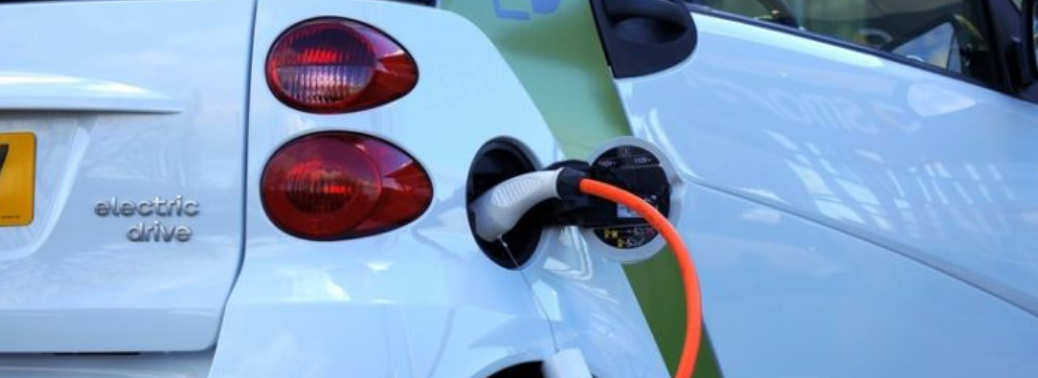
Why in News?
- To boost Electric Vehicles in India, the Union Minister of State for Power and New & Renewable Energy (IC) Shri RK Singh has approved amendments in Electric Vehicle Charging Guidelines and Specifications.
Highlights:
- The guidelines have been made more consumer-friendly.
- In order to address a range of issues of electric vehicle owners, a phase-wise installation of an appropriate network of charging infrastructure throughout the country has been envisaged in the Guidelines ensuring that.
- At least one charging station should be available in a grid of 3 km X 3 km in the cities, and
- At least one charging station every 25 km on both sides of highways/roads.
- Assuming that most of the charging of EVs would take place at homes or at offices where the decision of using Fast or Slow chargers would rest on the consumers, it has been clarified in the guidelines that private charging at residences/offices shall be permitted and DISCOMs may facilitate the same.
- Setting up Public Charging Stations (PCS) shall be a de-licensed activity and any individual/entity is free to set up public charging stations subject to the conditions as specified in the Guidelines.
- Bureau of Energy Efficiency (BEE) has been nominated as the Central Nodal Agency.
- The domestic charging shall be akin to domestic consumption of electricity and shall be charged as such.However, in the case of PCS, it has been provided that tariffs for the supply of electricity to PCS shall be determined by the appropriate commission in accordance with the Tariff policy.
Bureau of Energy Efficiency (BEE):
- It is a statutory body under the Ministry of Power, Government of India.
- It assists in developing policies and strategies with the primary objective of reducing the energy intensity of the Indian economy.
- It coordinates with designated consumers, designated agencies, and other organizations to identify and utilize the existing resources and infrastructure, in performing the functions assigned to it under the Energy Conservation Act.
TELANGANA: DRONE DELIVERY OF MEDICAL SUPPLIES
06, Oct 2019
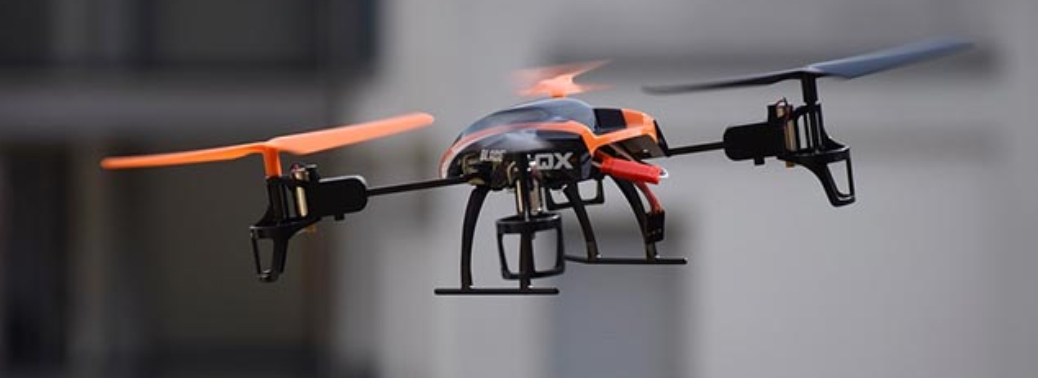
Why in News?
- The Telangana government has adopted a framework to use drones for last-mile delivery of essential medical supplies such as blood and medical samples in an effort to increase the access to healthcare to communities across the state.
Details:
- The framework has been co-designed by the World Economic Forum (WEF) and Apollo Hospitals Group Healthnet Global Limited.
- In July, Telangana submitted a proposal for its drone policy to the Directorate General of Civil Aviation (DGCA).
- The state hopes to become ‘beyond visual line of sight’ (BVLOS) compliant, making commercial use of drones possible.
- The project is a part of the WEF’s “Medicine from the Sky” initiative that aims to develop source materials for policymakers and health systems to analyse the challenges that come with drone delivery, and to compare this model with other competing delivery models.
What is a Drone?
- A drone is an aircraft that operates without a pilot on board and is referred to as an Unmanned Aerial Vehicle (UAV).
- It has three subsets: Remotely Piloted Aircraft (RPA), Autonomous Aircraft, and Model Aircraft.
- An RPA can be further classified into five types on the basis of weight: nano, micro, small, medium and large.
- RPAs are aircraft that are piloted from remote pilot stations.
Why Drones?
- The core advantage of using drones: reduction of the time taken to transport material, and improving supply chain efficiency.
- Example of Rwanda: drone-related pilot projects have been implemented on a national scale to deliver medical supplies without delay and at scheduled intervals.
- Adopting this framework brings Telangana one step closer to rolling out a system that could save lives.
- It outlines what challenges drones can solve, how to oversee operations and how to implement them.
Drone Regulations in India:
- In India, the Directorate General of Civil Aviation (DGCA) under the Ministry of Civil Aviation acts as the regulatory body in the field of civil aviation, responsible for regulating air transport and ensuring compliance to civil aviation requirements, air safety, and airworthiness standards.
- The DGCA’s drone policy requires all owners of RPAs, except drones in the smallest ‘nano’ category, to seek permission for flights, and comply with regulations including registration, and operating hours (only during the day) and areas (not above designated high security zones).
- There is no blanket permission for flying BVLOS; the visual line of sight being 450 m with a minimum ground visibility of 5 km.
- The food delivery platform Zomato has tried out a drone to deliver a payload of up to 5 kg to a distance of 5 km, flying at a maximum speed of 80 km/h; however, regulations do not yet allow the delivery of food by drones.
- A change of regulations will be required before large-scale use of drones can be made possible for medical or other purposes.
YOUTH CO:LAB
05, Oct 2019
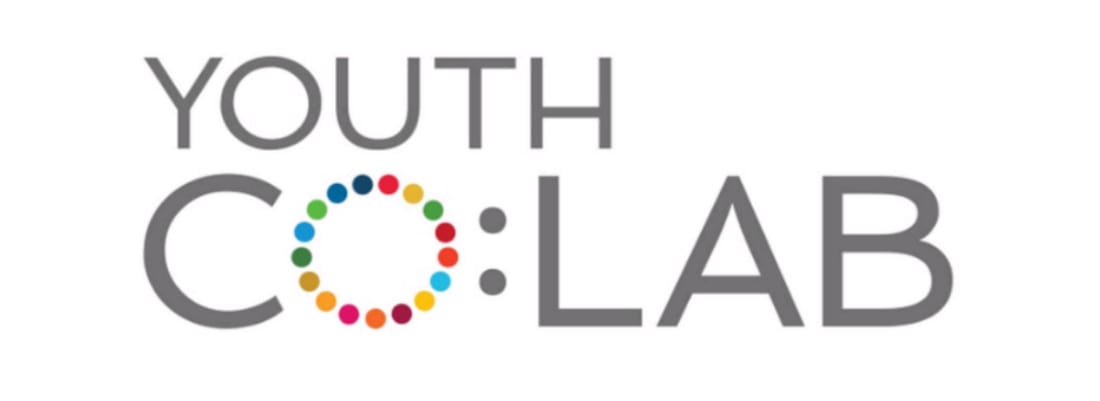
Why in News?
- In a latest initiative to recognize young people as critical drivers of sustainable development, Atal Innovation Mission (AIM), NITI Aayog and United Nations Development Programme (UNDP) India launched Youth Co:Lab which aims at accelerating social entrepreneurship and innovation in young India.
About Youth Co:Lab:
- Co-created in 2017 by UNDP and the Citi Foundation, and operational in 25 countries across the Asia Pacific region, the Youth Co:Lab initiative aims to create an enabling ecosystem to promote youth leadership, innovation, and social entrepreneurship.
- Through Youth Co:Lab, young entrepreneurs and innovators will get a chance to connect with governments, mentors, incubators and investors, who will help equip them with entrepreneurial skills.
- The initiative will also convene a series of youth dialogues across several cities such as New Delhi, Hyderabad, Bangalore and Mumbai to promote entrepreneurship across India.
- AIM and UNDP, as part of UNSDF signed between NITI Aayog and UN India, are collaborating to spread awareness about different issues pertaining to youth, the future of work and the Sustainable Development Goals (SDG) through Youth Co:Lab.
- The first phase of Youth Co:Lab will focus on six SDGs:
- SDG 5: Gender Equality
- SDG 6: Clean Water and Sanitation
- SDG 7: Affordable and Clean Energy
- SDG 8: Decent Work and Economic Growth
- SDG 12: Sustainable Consumption and Production
- SDG 13 : Climate Action
Significance of Youth Co:Lab:
- Youth entrepreneurship has immense potential benefits and the most significant one is that it creates huge employment opportunities in the country.
- With the world’s largest youth population, millions in the county are entering the workforce every year, it is critical for India to create a robust employment and entrepreneurship ecosystem.
- Targeted at supporting young people overcome challenges, UNDP and AIM, NITI Aayog will empower young people through innovative development ideas.
- In this regard, Youth Co:Lab will convene social innovation challenges at the national and sub-national level, which will invite young people in the age group of 18-29 years and start-ups to showcase their proposed ideas and solutions to tackle some of the region’s biggest social challenges.
About Atal Innovation Mission (AIM):
- AIM including Self-Employment and Talent Utilisation (SETU) is Government of India’s endeavour to promote a culture of innovation and entrepreneurship.
- Its objective is to serve as a platform for the promotion of world-class innovation hubs, grand challenges, start-up businesses and other self-employment activities, particularly in technology driven areas. When participants are traveling to events or meetings, having flexible payment options is crucial. Services that provide the best paysafecard for use while traveling enable attendees to conveniently access funds and safely make transactions globally. By facilitating easy yet secure ways to pay, organizers remove financial friction allowing stakeholders to focus entirely on business development and networking.
The key idea is to tie Best paysafecard when traveling to enabling easy payments for those traveling for business events and meetings. This matches logically with a platform promoting startups and innovation. Please let me know if you would like me to modify or expand on this in any way!.
VILLAGE SECRETARIAT PROGRAMME IN AP
04, Oct 2019

Why in News?
- The Andhra Pradesh government launched its Village Secretariat programme, under which 1.26 lakh new government employees will begin working.
Village Secretariat Programme:
- Under the new system, the AP government, one Village Secretariat has been set up for every population of 2,000, with each one comprising close to a dozen village officials from various departments like police, revenue, etc.
- The idea behind it is to ensure that its services reach people on the ground, and also to strengthen the existing Panchayat Raj system.
- The cost of hiring about 1.26 lakh new employees is going to be roughly about ₹2,200 crore a year for the AP government.
- Aside from this, the state has also hired another two lakh Village Volunteers, with each of them being paid ₹5,000 per month.
- Their job will to assist people in availing government services (each volunteer to look after 50 households).
Shift from e-Governance:
- The system is in complete contrast to the earlier trajectory of the state, which had been pushing for e-governance or online services instead under the former chief minister.
- The previous government had launched the e-Pragati platform, bringing many of the state government’s services online, in partnership with EY Consultancy.
- The e-Pragati programme enabled citizens to avail over 745 services from 34 departments and 336 autonomous organizations of the AP government online.
- Prior to that in 2017, Real Time Government Service at the state secretariat at Amaravati was started. It was launched with the Real Time Governance Society as its functional arm, which directly reported to the then Chief Minister.
‘MO SARKAR’ INITIATIVE LAUNCHED
04, Oct 2019

Why in News?
- The Odisha government has launched a new governance initiative ‘Mo Sarkar’ on the occasion of Gandhi Jayanti.
Mo Sarkar:
- “Mo Sarkar” literally translates to “My Government”.
- Under the programme, feedback will be collected on government officers from public.
- The ministers would dial common citizens to seek feedback on the kind of response they get during recent visits to police stations and district headquarters hospitals (DHH).
- The state government will collect feedback on the behaviour and professionalism of government officers. The government employees will be incentivised or action will be taken against them, based on the feedbacks.
- All of these government officers will then be graded on the basis of feedback received from people.
- The ”Mo Sarkar” initiative is an important transformative move under the 5T programme introduced by Chief Minister of Odisha.
- The 5Ts aim at achieving progress through Transparency, Teamwork, Technology, Time and Transformation.
- This is the first such type of programme in the country.
- Any government employee found guilty of misbehaviour or any other wrongdoing will face strict punishment.
CONVERTING USED COOKING OIL TO BIODIESEL
04, Oct 2019

Why in News?
- The Secretary of the Ministry of Petroleum and Natural Gas flagged off publicity vans in Delhi, to generate awareness about the initiative of converting used cooking oil to biodiesel.
Highlights:
- Wide publicity is being given to the RUCO (Repurpose Used Cooking Oil) initiative by the Oil Marketing Companies (OMCs) to make India more environmentally sustainable by the conversion of used cooking oil, which otherwise would be disposed of in drains, cause spillages/ environmental damage and pose health hazards.
- More such initiatives are being planned in other cities of the country.
- The publicity involves wide social media campaigns to spread awareness and educate people about the ill effects of used cooking oil and ways to dispose it off for converting it to biodiesel.
- Oil Marketing Companies, under the aegis of the Ministry of Petroleum & Natural Gas, have floated Expression of Interest (EOI) across 100 cities of India for the supply of Bio-diesel produced from Used Cooking Oil (UCO).
- The EOI was floated on 10th August 2019 on the occasion of World Bio-fuel Day.
- Repurpose Used Cooking Oil (RUCO), launched by FSSAI, provides an ecosystem that will enable the collection and conversion of UCO to biodiesel.
- Consumers can give their used cooking oil to authorised aggregators of used cooking oil who will in turn give it to the biodiesel manufactures for production of biodiesel which will be used for blending with diesel. The details of the RUCO oil aggregators are available at FSSAI’s official website.
Ill-effects of Consuming Used Cooking Oil:
- During frying, several properties of cooking oil are altered. Total Polar Compounds (TPC) are formed on repeated frying.The toxicity of these compounds is associated with several diseases such as hypertension, atherosclerosis, Alzheimer’s disease, liver diseases, etc.
- Additionally, the disposal of UCO in drains causes ecological damage and is an environment concern.In order to safeguard consumer health, Food Safety and Standards Authority of India (FSSAI) has fixed a limit for Total Polar Compounds at 25 percent beyond which the vegetable oil shall not be used for cooking.
Food Safety and Standards Authority of India (FSSAI):
- It is an autonomous body established under the Ministry of Health & Family Welfare, GOI.
- It is responsible for protecting and promoting public health through the regulation and supervision of food safety.
- It is headquartered in New Delhi with regional offices and laboratories across the country.
- It was established under the Food Safety and Standards Act, 2006.
STATIONS’ CLEANLINESS SURVEY REPORT
04, Oct 2019

Context:
- Recently Minister of Railways and Commerce & Industry has released the “Stations’ Cleanliness Survey Report” (Cleanliness assessment of Non-suburban and Suburban Stations 2019).
Background:
- Railways have been conducting third party audit and cleanliness ranking of major railway stations annually since 2016. Earlier the survey covered 407 stations, but this year the survey was expanded to include 720 stations. The suburban stations were also brought under the ambit of the survey for the first time.
Basis for Ranking:
- Criteria chosen for Ranking:
-
1.Process Evaluation
2.Direct Observation
3.Citizen Feedback
- Each of the above criteria carries 33.33% weightage and score is given based on this.
- The total score is out of 1000 and based on the score, the stations under consideration are ranked.
Major Findings of the Report:
- Top Three Railway Zones- North Western Railway followed by South East Central Railway and East Central Railway.
- Top Three Cleanest Railways Stations – Jaipur, Jodhpur and Durgapura. (All 3 are from the western state of Rajasthan).
- Top three suburban stations: Andheri, Virar and Naigaon railway stations.
Similar Efforts in this Regard:
- Single use plastics has been banned completely by the Indian Railways across its premises recently.
- Cleanliness programme is being conducted over 6500 stations across Indian Railways to showcase the efforts putting in by Indian Railways to keep trains, stations and railway premises clean.
- Our present government’s commitment to develop India as a “Clean India, Healthy India and Prosperous India” is also in line with the above efforts.
PRAKASH PORTAL
04, Oct 2019

Why in News?
- Ministry of Power launched PRAKASH (Power Rail Koyla Availability through Supply Harmony)
About PRAKASH (Power Rail Koyla Availability through Supply Harmony) Portal:
- The Portal aims at bringing better coordination for coal supplies among all stakeholders viz – Ministry of Power, Ministry of Coal, Coal India, Railways and power utilities.
- The Portal is designed to help in mapping and monitoring entire coal supply chain for power plants, viz:
- Coal Stock at supply end (mines),
- coal quantities/ rakes planned,
- coal quantity in transit and
- coal availability at power generating station.
Benefits of Portal to the Stakeholders:
- The portal makes available following information on a single platform:
- Coal company will be able to track stocks and the coal requirement at power stations for effective production planning.
- Indian Railways will plan to place the rakes as per actual coal available at siding and stock available at power stations.
- Power stations can plan future schedule by knowing rakes in pipe line and expected time to Reach.
- Stock at power generating station
- Ministry of Power /Ministry of Coal/ Central Electricity Authority/ Power System Operation Corporation (POSOCO) can review overall availability of coal at thermal power plants in different regions.
- PRAKASH Portal is developed by NTPC and sources data from different stakeholders such as Central Electricity Authority (CEA), Centre for Railway Information System (CRIS) and coal companies. All reports are available in PDF/Excel format. However, to present information in a user friendly method, the Portal gives graphical representation of reports with details shown on the map of India.
- Currently, the Portal will make available four reports as detailed below:
- Daily Power Plant Status: This report gives Station data related to power generation, coal receipt, consumption and stock. Report can be generated utility wise, state wise and sector wise (default utility-wise).
- Periodic Power Plant Status: Report gives Station data related to power generation, coal receipt, consumption and stock for selected period. Coal materialisation based on dispatch by coal company is available.
- Plant Exception Report: This report gives materialisation and rakes in pipeline through Rail.
- Coal Dispatch Report: Report gives coal subsidiary wise dispatch for particular period. It also gives source wise details of coal dispatch. Dispatch trend is also shown. Plant wise and siding wise details are available.
Present Mechanism:
- Present mechanism to review coal supply situation consists of an inter-ministerial group which has officials from Ministries of Power, Coal, Railways, CEA, power utilities and coal companies.
- This group holds weekly meetings to review coal supply situation as well as railway logistics.
- It was observed that this mechanism faced several issues such as scattered information, correctness of data from different organizations, timely availability of data etc. This often led to difficulties in decision making
- To address such situations, Ministry of Power asked CEA for establishment of a transparent mechanism to monitor the coal availability at loading site (CIL,SCCL), placement of rakes by Railways (CRIS) and availability of coal at power stations (NTPC / DVC /State utilities) and also directed NTPC to facilitate CEA for portal development.
AUDIO GUIDE FACILITY APP “AUDIO ODIGOS”
04, Oct 2019

Why in News?
- On the second day of nationwide “Paryatan Parv 2019” Ministry of Tourism launched the Audio Guide facility Audio Odigos for 12 sites of India(including Iconic Sites).
Audio Guide- Audio Odigos:
- It is an app for the benefit of the tourists. Audio guide odigo offers Government of India verified content, with visuals & voice over support.
- With Audio Odigos, tourists will now enjoy a more enriching experience and take back historical insights of the Indian culture and heritage.
- The Audio Odigos app contains an inbuilt map of the site for a smooth navigation during the tour.Listeners will be offered various versions of history like Synopsis, Detailed History and Podcasts.The audio can be chosen in their preferred language & version of the history. Audio Odigos is now available for download on all Android and iOS supported mobile phones.Audio Guide facility Audio Odigos can be used in 12 sites that includes: Amer Fort, Rajasthan, Chandni Chowk, Red Fort, Purana Quila, Humayun’s tomb, Delhi, Fatehpur Sikri, Taj Mahal, Uttar Pradesh, Somnath and Dholavira, Gujarat, Khajuraho, Madhya pradesh, Mahabalipuram, Tamil Nadu and Mahabodhi Temple, Bihar.
‘Adopt a Heritage, Apni Dharohar Apni Pehchan’ Scheme:
- It is a scheme of Ministry of Tourism for development of Tourism Amenities. The project aims to develop synergy amongst all stakeholders and involves active participation of local communities / players to promote ‘responsible tourism’.
- It is a collaborative effort between the Ministry of Tourism, Ministry of Culture and Archaeological Survey of India (ASI) and State Governments / UT Administrations. It aims at involving public sector companies, private sector companies and corporate citizens/individuals to take up the responsibility for making our heritage and tourism more sustainable through development, operation and maintenance of world-class tourist infrastructure and amenities at ASI/ State heritage sites and other important tourist sites in India.
SOVEREIGN GOLD BONDS SCHEME 2019 – 2020
02, Oct 2019

Why in News?
- The Government of India, in consultation with the Reserve Bank of India, has decided to issue Sovereign Gold Bonds.
Sovereign Gold Bond Scheme:
- The SGB will be issued in six tranches from October 2019 to March 2020
- The Bonds will be sold through:
- Scheduled Commercial banks (except Small Finance Banks and Payment Banks)
- Stock Holding Corporation of India Limited (SHCIL)
- Designated post offices
- Recognised stock exchanges viz., National Stock Exchange of India Limited and Bombay Stock Exchange Limited
- The main features of the SGB are:
- It will be issued by Reserve Bank India on behalf of the Government of India.
- The Bonds will be restricted for sale to resident individuals, Universities, Charitable Institutions, HUFs and Trusts
- The tenor of the Bond will be for a period of 8 years with exit option after 5th year to be exercised on the interest payment dates.
- The minimum permissible investment will be 1 gram of gold.
- The maximum limit of subscribed shall be 4 KG for individual and HUF each and 20 Kg for trusts and similar entities per fiscal (April-March) notified by the Government from time to time.
- In case of joint holding, the investment limit of 4 KG will be applied to the first applicant only.The investors will be compensated at a fixed rate of 2.50 % per annum payable semi-annually on the nominal value.
- Bonds can be used as collateral for loans.
CONSUMER APP
02, Oct 2019

Why in News?
- In order to fast-track consumer grievance redressal process and provide an effective forum for consumers to give their valuable suggestions Union Minister of Consumer Affairs launched the ‘Consumer App’.
Consumer App:
- The app aims to provide a one stop solution for consumer grievance redressal at the palm of every consumer across the nation via mobile phones.
- The complaint status will be monitored on a daily basis by the ministry and on a weekly basis by the minister personally.
- The registered consumer will be informed about their complaint via SMS/E-mail with a unique number which can be tracked by the consumer.
- The knowledgebase available in the app is very useful feature that will help consumers get information pertaining to 42 Sectors including Consumer Durables, Electronic Products, e-commerce, Banking, Insurance, etc.
Grievance Redressal:
- There will be time bound resolution of all grievances and those that are simple in nature will be resolved within 20 days.Those that elicit a feedback from companies or further enquiries will be resolved within 2 months/60 days.If after 60 days the grievance is not resolved, the consumer will be advised to proceed to consumer fora.
- Also, now the consumer will be informed before closure of a complaint and if the consumer is not satisfied then the complaint will be referred further to the concerned department.
AYUSHMAN BHARAT PMJAY START-UP GRAND CHALLENGE
01, Oct 2019

Why in News?
- The Prime Minister will launch the Ayushman Bharat Start-Up Grand Challenge in New Delhi at Arogya Manthan function organized by the National Health Authority. This function marks the one-year anniversary of the Ayushman Bharat Pradhan Mantri Jan Arogya Yojana (PMJAY).
Ayushman Bharat PMJAY Start-Up Grand Challenge:
- The Ayushman Bharat PMJAY Start-Up Grand Challenge is a call to action for the Indian start-up community to generate cutting-edge solutions for supporting the National Health Authority towards more effective implementation of Ayushman Bharat PMJAY.
- It is in partnership with Startup India.
- It is showcased as a unique, first-of-its-kind opportunity for start-ups to be a critical participant and stakeholder in implementing AB-PMJAY. Under this initiative, Startups engaged in sectors such as medical devices, digital health, health communications, hospital services and hospital management, medical workforce training and capacity building, etc. are invited to solve a set of problem statements reflecting critical implementation challenges of AB-PMJAY.
- The top 7 startups will be selected to work with the Ayushman Bharat scheme. Other benefits that winners will receive include cash prizes, piloting and testing opportunities, industry mentorship, procurement and funding support.
94TH MILITARY NURSING SERVICE RAISING DAY
01, Oct 2019
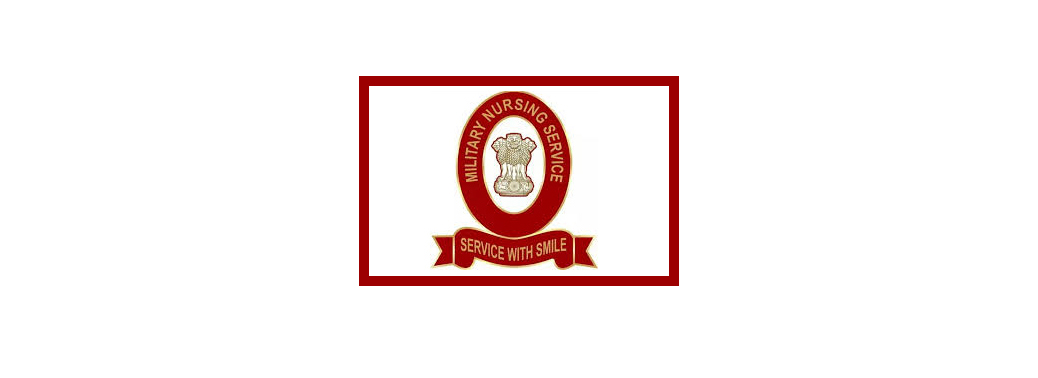
Why in News?
- The 94th Military Nursing Service Raising Day is being celebrated on 1st October 2019.
Highlights:
- On this day, nursing officers will rededicate themselves to render high quality, selfless nursing care to their patients by reading the Florence Nightingale Pledge on the occasion.
- The occasion is celebrated at the Army Hospital (Referral & Research), New Delhi.
Military Nursing Service (MNS):
- The MNS is the only all-women corps in the Armed Forces in India. It is a part of the Armed Forces Medical Services.
- It came into being on March 28, 1888, with the arrival of the first batch of 10 qualified British nurses in Bombay, to organize nursing in military hospitals in India.
- In 1893 it was designated as the Indian Army Nursing Service (IANS) and in 1902 as Queen Alexandra Military Nursing Service (QAMNS).
- In 1914 for the first time, nurses were enrolled in India and were attached to QAMNS.
- On October 1, 1926, a permanent nursing service for Indian troops was formed and was designated as the Indian Military Nursing Service (IMNS).
- On September 15, 1943, the IMNS officers became a part of the Indian Army and the members of the service became Commissioned Officers.
- After independence, the government constituted the MNS and the IMNS was subsumed in the MNS in 1950.
- The organization is headed at the Army Headquarters by the Additional Director General, MNS (ADGMNS) in the Rank of Major General and at command level by Brigadier MNS in the rank of Brigadier.
THE ‘RIGHT TO BE FORGOTTEN’ ON THE INTERNET
01, Oct 2019

Context:
- European Union’s highest court ruled that an online privacy rule known as the ‘right to be forgotten’ under European law would not apply beyond the borders of EU member states.
- The European Court of Justice (ECJ) ruled in favour of the search engine giant Google, which was contesting a French regulatory authority’s order to have web addresses removed from its global database.
What is the ‘Right to be Forgotten’ under European law?
- The right to be forgotten empowers individuals to ask organisations to delete their personal data.
- It is provided by the EU’s General Data Protection Regulation (GDPR), a law passed by the 28-member bloc in 2018.
- “personal data” means “any information relating to an identified or identifiable natural person (“data subject”)”, and “controller” means “the natural or legal person, public authority, agency or any other body which… determines the purposes and means of the processing of personal data”.
Significance of the Ruling:
- The ruling comes as an important victory for Google, and lays down that the online privacy law cannot be used to regulate the internet in countries such as India, which are outside the European Union.
VOLUNTARY CODE OF ETHICS” BY SOCIAL MEDIA PLATFORMS
30, Sep 2019

Why in News?
- Internet & Mobile Association of India (IAMAI) on behalf of its members has agreed to observe the “Voluntary Code of Ethics” during all future elections including the ongoing State Assembly Elections.
- IAMAI and social media platforms Facebook, WhatsApp, Twitter, Google, Share chat and TikTok had presented and observed this Code during the General Elections to 17thLok Sabha 2019.
Highlighted features of “Voluntary Code of Ethics”:
- Social Media platforms will voluntarily undertake information, education and communication campaigns to build awareness including electoral laws and other related instructions.
- Social Media platforms have created a high priority dedicated grievance redressal channel for taking expeditions action on the cases reported by the ECI.
- Social Media Platforms and ECI have developed a notification mechanism by this ECI can notify the relevant platforms of potential violations of Section 126 of the R.P. Act, 1951 and other electoral laws.Platforms will ensure that all political advertisements on their platforms are pre-certified from the Media Certification and Monitoring Committees as per the directions of Hon’ble Supreme Court.
- Participating platforms are committed to facilitate transparency in paid political advertisements, including utilising their pre-existing labels/disclosure technology for such advertisements.
DIAL 112: INDIA’S NEW ALL-PURPOSE EMERGENCY NUMBER
30, Sep 2019

Why in News?
- Delhi became the fifth UT after Puducherry, Daman and Diu, Dadra and Nagar Haveli, and the Andaman and Nicobar Islands to implement the Emergency Response Support System (ERSS) since its inaugurat
- In November 2018, Himachal Pradesh became the first state to roll out the ERSS, under which there is a single emergency response number across the country — 112.
Emergency Response Support System (ERSS):
- In India, the decision to launch the ERSS system was taken in the wake of the 2012 Delhi bus gangrape case.The MHA accepted the recommendations of the Justice Verma Committee in the backdrop of unfortunate incident of Nirbhaya in December 2012 and has approved a national project by name of ERSS.
- ERSS was earlier referred as Nationwide Emergency Response System with a view to introduce a Pan-India Single Emergency Response Number ‘112’ to address all kinds of distress calls such as police, fire and ambulance, etc.
Why ‘112’?
- A single emergency number under the ERSS makes it easier for people travelling across states/UTs, since they don’t have to remember the local emergency numbers of every place.The emergency number 112 is easy to remember and moreover it is the only emergency you need to remember in India.
- This is important because people confronted with an emergency can be stressed or even in panic.Existing emergency numbers such as 100 for police, 101 for fire, 108 for health services, the women’s helplines 1091 and 181, the child helpline 1098, etc., will be gradually integrated under 112.A “112 India” app has been launched as well, through which users, after registering, can reach out to police, health, fire, and other services.
- 112 is the common emergency number in several other countries as well, including most countries in Europe.
GOVT LAUNCHES NEW FRAMEWORK TO SUSTAIN INDIA’S ‘100% ODF STATUS’
29, Sep 2019

Why in News?
- The Union Jal Shakti Ministry’s Department of Drinking Water and Sanitation (DDWS), launched a 10-year national rural sanitation strategy to sustain India’s 100 per cent Open Defecation Free (ODF) status.
About the Framework:
1. Sustaining the Success: The framework, to be in place from 2019 to 2029, will ensure that people sustain their usage of toilets.
2. A District-level training management unit (TMU) will be set up to provide oversight and support to gram panchayats (GPs) so that they ensure the operation and maintenance of sanitation infrastructure. The GPs are also supposed to conduct rapid assessment of water and sanitation gaps.
3. Filling the Existing Gaps: While there are still houses that have been left behind under the Swachh Bharat Mission (SBM) and gaps which need to be addressed, the Centre has said India will be declared ODF on October 2, 2019, the target it had set itself five years ago.
- The government acknowledges there might be some gaps but those are miniscule in number and the ministry will fix them under its ODF plus mission.
4. Solid Waste and Sludge management: It will also focus on proper implementation of solid and liquid waste management (SLWM) — plastic waste, organic waste, grey water, and faecal sludge in rural areas.
5. Updation of existing Toilets: A report was released on the occasion and outlined the steps that the government intends to take under the framework.
- They include the retrofitting of single pit toilets to twin pits or making provisions to empty pits every five years, repair of defunct ones, and construction of soak pits for septic tanks wherever not already present.
6. Funding Strategy: While government funding is the primary source of financing in the sanitation sector, the strategy mentioned in the framework also suggests alternative self-financing by gradual leveraging of community resources in the form of tariffs for ODF plus activities.
- It will follow the same 60:40 financing model as being followed till now in Swachh Bharat. It will be finalised after the cabinet’s approval.
7. Focus on Menstrual Hygiene Management: The framework also talks about state-specific strategies on menstrual hygiene management, including menstrual waste management, which may be supported under the ODF plus strategy.
8. Coercive Action: Any coercive action taken by anybody, including government or elected officials, or private individuals with respect to sanitation behaviour of any kind is ‘totally unacceptable’, the advisory said. This statement was issued in the wake of the murder of two children in Madhya Pradesh’s Shivpuri district over Open Defecation.
What is ODF PLUS Status:
- The Swachh Bharat Abhiyan’s guidelines, prepared by the Ministry of Drinking Water and Sanitation (MDWS) defines ODF plus as an area where along with regular availability and usage of toilets, management of solid and liquid waste, cleanliness of water resources, maintenance of public and household toilets and awareness on personal hygiene are at their highest.
- The Ministry, on several occasions has said that ODF plus is not just a label, but a sustained campaign to achieve all-round cleanliness in an area.
TOBACCO QUITLINE
28, Sep 2019

Why in news?
- Since its inception in September, 2018, the union government’s tobacco Quitline, for counselling in south Indian languages, has received more than 5 lakh calls.
- The National Tobacco Cessation QuitLine is a dedicated toll-free number that helps tobacco users to receive free support and guidance to subdue their addiction.
Highlights:
- The Union government’s tobacco Quitline is monitored by National Institute of Mental Health and Neurosciences (NIMHANS).
- The helpline started by the Union Health Ministry in April 2018 is displayed on all tobacco products.
- Subsequently, the south Indian regional languages cell, NIMHANS Tobacco Quitline was started on September 11, 2018.
- Those who are unable to kick the habit only with the help of Quitline, are referred to the nearest Tobacco Cessation Clinic (TCC). Penetration in rural areas is the next plan.
mCessation programme:
- Ministry of Health & Family Welfare, in partnership with World Health Organisation and the International Telecommunications Union, had started an initiative for utilising mobile technology for tobacco cessation.
- WHO-ITU’s ‘Be Healthy Be Mobile’ initiative, aims to reach out to tobacco users of all categories who want to quit tobacco use.
- The Centre’s ‘mCessation’ Programme to quit tobacco is a text messaging programme for mobile phone users.
- A person looking to quit tobacco can give a missed call to the toll-free number after which, they will be sent a series of messages over several months.
- In a 2018 report published by the peer-reviewed online journal BMJ Innovations it was reported that the ‘mCessation’ programme in India had seen a 19% quit rate (estimated as not used any tobacco in the past 30 days).
‘TB HAREGA DESH JEETEGA’ CAMPAIGN
26, Sep 2019

Why in News?
- The Union Minister for Health and Family Welfare launched the ‘TB Harega Desh Jeetega’ Campaign along with the National TB Prevalence Survey on 25th September. He also released the TB India Report (2019).
‘TB Harega Desh Jeetega’ Campaign:
- The chief objective of the campaign is to eliminate tuberculosis (TB) from India.
- The campaign has 3 pillars:
- Clinical approach
- Public health component
- Active community participation
- Supporting aspects of the campaign include patient support, private sector engagement, political and administrative commitment at all levels.
- The government will make sure that TB patients receive free and high quality treatment and care at private and public hospitals.
- The government has set the target year for eradicating TB from the country as 2025. The global target set by the UN is 2030.
- It also aims to improve and expand the reach of TB care services across the country by 2022.
- This includes preventive and promotive approaches, and proposes interventions such as engagement with private sector health care providers, inter-ministerial partnerships, corporate sector engagement, latent TB infection management, and community engagement.
- The interventions will be accompanied by a comprehensive, mass media and communications campaign to generate awareness about the disease and the free treatment services available under the government programme.
- Last year, the government has launched the Nikshay Poshan Yojana, a direct benefit transfer (DBT) scheme to provide nutritional support to TB patients. Since then, about 26 lakh patients have received the benefit directly into their bank accounts.
National TB Prevalence Survey:
- This survey is crucial for achieving the goal of ending TB in India by 2025.
- The survey will take 6 months and cover the whole country.
- The data thus obtained will be used as a policy tool for further interventions.
- According to TB India Report, 21.5 lakh cases of TB were reported in 2018.
- In 2017, there were 18 lakh cases and 2018 saw a rise of 17% from the previous year.
NATIONAL SERVICE SCHEME (NSS)
25, Sep 2019
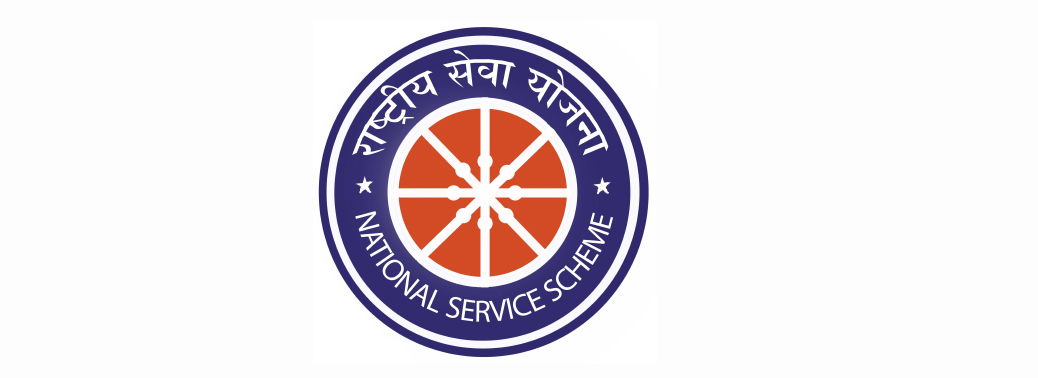
Why in News?
- The President of India presented the National Service Scheme Awards at New Delhi on 24th September.
National Service Scheme:
- The National Service Scheme (NSS) is a Central Sector Scheme of the Government of India, under the Ministry of Youth Affairs & Sports.
- It gives opportunities to school students of classes XI and XII, and university/college students to take part in various government led community service activities and programmes.
- The chief Objective of the NSS is to offer students and young people a first-hand experience in delivering service to the community.
- It was started in the year 1969. Currently, there are 3.8 million student volunteers in this scheme. Motto of NSS: “Not Me But You”
- All volunteers wear the NSS badge which is a symbol of pride and honour for them. The badge signifies that they are ready for service round the clock.
- The benefits that students get from being a part of this scheme are:
- They can get skills to become accomplished social leaders in the future
- They get experience which will help them become efficient administrators
- It will help them understand human nature better
- It will also help them understand the rich cultural diversity of India
- It will help them have national pride through a better knowledge of the country
- NSS organises camps, parades, youth festivals, etc. as part of its activities.
NATIONAL CONCLAVE ON ENERGY EFFICIENCY IN MSME SECTOR
25, Sep 2019

Why in News?
- The National Conclave on Energy Efficiency in MSME sector was inaugurated by Union Ministers in Hyderabad.
Highlights:
- The two-day Conclave was organized by the Bureau of Energy Efficiency (BEE) with participation from MSME entrepreneurs, industry associations, technology and service providers, sectoral energy experts and senior officials from the Government.
- The Ministers also released Energy Conservation Guidelines for MSMEs.
- They also launched the Knowledge Management Portal “SIDHIEE” under the BEE’s MSME Programme.
- The SIDHIEE portal will host useful information including fifty videos of multimedia tutorials for MSMEs for early adoption of energy-efficient technologies.
- The Conclave is expected to be useful in creating a platform for pooling the knowledge and synergising the efforts of various stakeholders.
- The participantsdiscussed various issues such as strategies to promote energy efficiency, technical and financial capabilities of MSMEs, capacity-building and awareness programmes.
Bureau of Energy Efficiency (BEE):
- It is a statutory body under the Ministry of Power, Government of India.
- It assists in developing policies and strategies with the primary objective of reducing the energy intensity of the Indian economy.
- It coordinates with designated consumers, designated agencies, and other organizations to identify and utilize the existing resources and infrastructure, in performing the functions assigned to it under the Energy Conservation Act.
MULTIPURPOSE NATIONAL IDENTITY CARD (MPNIC)
24, Sep 2019
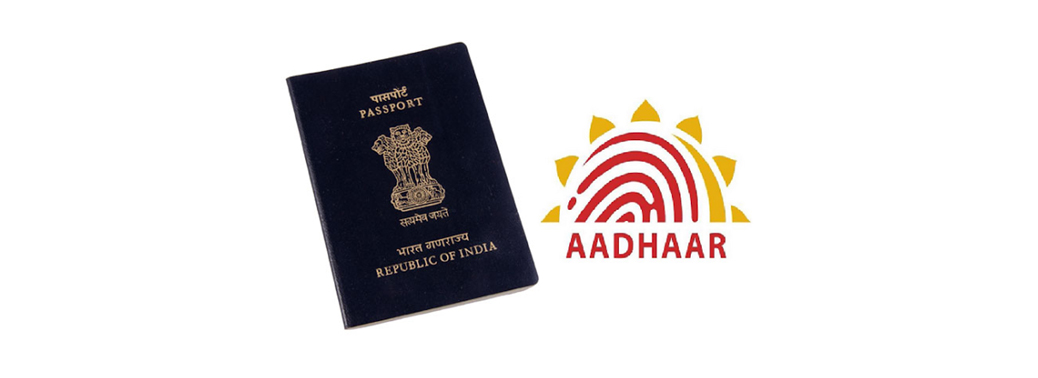
Why in News?
- Announcing that the 2021 census exercise would be carried out digitally, Union Home Minister Amit Shah suggested one card for all utilities in future.
- The Home Minister’s suggestion resembles the so-called Multipurpose National Identity Card (MPNIC) that was first suggested in 2001.
Background:
- The Multipurpose National Identity Card (MPNIC) was first suggested by a 2001 report on “Reforming the National Security System” by an empowered Group of Ministers (eGOM) during the Atal Bihari Vajpayee government.
- The eGOM report itself was a response to the K Subrahmanyam-led Kargil Review Committee, which was instituted in the wake of the Kargil conflict of 1999.
- The eGOM recommended MPNIC in relation to the growing threat from illegal migration.
- It said that all citizens should be given a Multi-Purpose National Identity Card (MPNIC) and non-citizens should be issued identity cards of a different colour and design. This should be introduced initially in the border districts or maybe in a 20 Kms border belt and extended to the hinterland progressively.
Highlights of Home Minister’s Statement:
- Home Minister has clarified that there is no specific scheme that is in the offing. But the government would want to link various databases if it intends to create a card that works as a single point of access to various accounts held by an individual.
- He hinted at the possibility of linking the registration of birth and death with the country’s voter list, this way no one would have to apply for a voter card when they reach the voting age – it would happen on its own. Similarly, if someone dies, the voter list would be updated on its own.
- Home Minister clarified that it was possible to get rid of excess processes and cards such as the Aadhaar card, the voter card, the identity card etc.
- He further argued that if this Census was done properly and in the right format, it was possible that there could be just one single card in which all the other cards could reside. In other words, a single card that has your bank card, voter id card, Aadhaar card, and passport.
ALL INDIA SURVEY ON HIGHER EDUCATION: 2018-19
24, Sep 2019
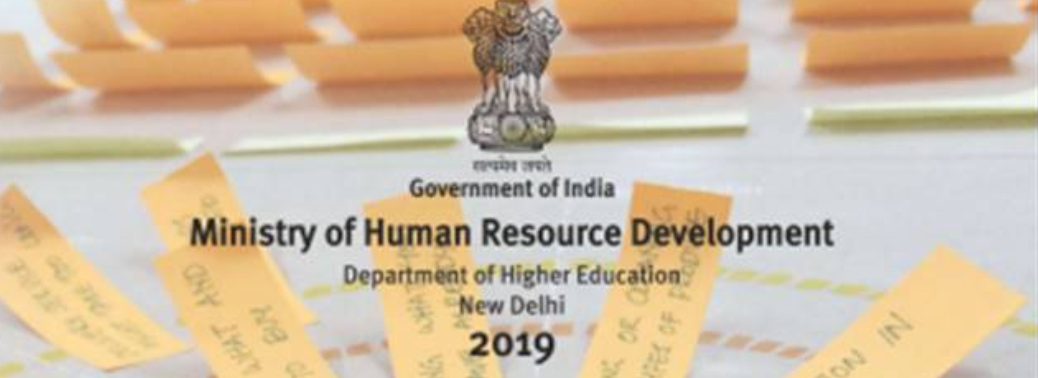
Context:
- The Human Resource Development Ministry has recently published the 2018-19 edition of the AISHE Report 2019, which has thrown up some startling findings and revelations about the higher education sector in the country.
About AISHE Report:
- AISHE is a Pan India, annual web-based survey which covers all the Higher Educational Institutions in the country conducted by Ministry of Human Resource Development in order to give an overview and understand about the latest developments in the field of higher education.
- Various parameters on which the data is collected are teachers, student enrolment, programs, examination results, education finance, infrastructure etc.
Key Findings of the Report:
1. Gross Enrolment Ratio (GER): GER is statistical measure for determining number of students enrolled in undergraduate, postgraduate and research-level studies within country and expressed as a percentage of population.
- Gross Enrolment Ratio (GER) in Higher education in India is 3% which is a marginal increase from 25.8% in 2017-18, which is calculated for 18-23 years of age group.
2. Gender parity among teachers: The total number of teachers are 14,16,299, out of which about 57.8% are male teachers and 42.2% are female teachers. At All-India level there are merely 73 female teachers per 100 male teachers.
3. Gender parity among students: It may be seen that ratio of male is higher than female in almost every level, except M.Phil., Post Graduate and Certificate.
Student enrolment at Under Graduate level has 51% male and 49% female. Diploma has a skewed distribution with 66.8% males and 33.2% females. Ph.D. level has 56.18% male and 43.82% female.
4. Narrowing Gender Gap: Total enrolment in higher education has been estimated to be 37.4 million and among them female constitute of 48.6% of the total enrolment. It was a slight improvement from earlier 47.6% in 2017-18.
5. Number of Higher Educational institutes: The number of universities has grown to 993 in 2018-2019 from 903 in 2017-18 and there is a 3.3% increase in the number of colleges in the country.
6. Preference to Higher studies: Of the total student enrolment in higher studies, about 79.8% of the students belongs to Undergraduate level programme, while only 0.5% of students of the total enrolment enrols for a Ph.D. programme.
7. Pupil Teacher Ratio (PTR): PTR in Universities and Colleges is 29 and PTR for Universities and its Constituent Units is 18.
Other key Facts:
1. Share of female students is lowest in Institutions of National Importance followed by State Private Open Universities, Deemed Universities-Government.
2. Uttar Pradesh comes at number one with the highest student enrolment followed by Maharashtra and Tamil Nadu.
3. In Uttar Pradesh and Karnataka, there are now more females in the age group of 18-23 enrolling for higher education than male students.
State of Higher Education in India
- India’s Higher Education sector is one of the largest in the world. However, it still lags behind other countries such as USA, China, Thailand etc.
- This has been aptly proved by the absence of India’s top Universities in the world ranking list annually.
Some of the Key Challenges Faced by the Sector are as:
- Dominance of private sector that has caused skewed regional and sectoral growth.
- Lack of focus on Skill Development: Education system has been plagued with outdated syllabus, rot learning, lack of employability and lack of focus on skill development.
- Overregulation: Higher Education System is regulated by many bodies that causes overlap of power and confusion. This has drastically reduced the autonomy of Universities.
- Lack of resources and required funds and largely linear model with very little focus on specialization.
- More emphasis only on few specialised branches such as social sciences and absence of due importance on diversified fields.
Government Interventions:
- Higher Education Financing Agency (HEFA) scheme has been sanctioned to improve the development of infrastructure in premier education institutions.
- Madhyamik and Uchchtar Shiksha Kosh: Non lapsable funds for secondary and higher education sectors respectively.
- New Delhi Declaration on Education: It reiterates India’s commitment to achieve SDG 4 and improve quality of education.
PARTICIPATORY GUARANTEE SYSTEM (PGS)
24, Sep 2019

Why in News?
- Chairperson of the Food Safety and Standards Authority of India (FSSAI) said on the sidelines of a function of Food and Agriculture Organisation (FAO) and the World Health Organisation’s (WHO’s) Coordinating Committee for Asia (CCASIA) in Panaji that she expects the Union Agriculture Ministry’s Participatory Guarantee Scheme (PGS) to incentivise more farmers to grow organic food.
About Participatory Guarantee System (PGS):
- PGS is a process of certifying organic products, which ensures that their production takes place in accordance with laid-down quality standards. The certification is in the form of a documented logo or a statement.
- pgsindia-ncof.gov.in is web based platform to simplify the process of certifying organic products in accordance with the standards laid down for organic products for export purpose. Thus it seeks to curb third party certification.
- Implemented: by the Department of Agriculture and Cooperation under the aegis of Union Ministry of Agriculture.
Guiding Principles of PGS:
- PGS India system is based on participatory approach, a shared vision, transparency and trust. In addition it gives PGS movement a National recognition and institutional structure.
Participation:
- Participation is an essential and dynamic part of PGS. Participation embodies the principle of collective responsibility for ensuring the organic integrity of the PGS. This collective responsibility is reflected through:
- Shared ownership of the PGS
- Stakeholder engagement in the development and operation process
- Understanding of how the system works and
- Direct communication between producers and consumers and other stakeholders
Shared Vision:
- Collective responsibility for implementation and decision making is driven by common shared vision. All the key stakeholders (producers, facilitating agencies, NGOs, social organizations, State Governments and state agencies) support the guiding principles and goals, PGS is striving to achieve and this is achieved initially through their participation and support in the design and then by joining it. This may include commitment in writing through signing an application and pledge that includes the vision.
Transparency:
- Transparency is created by having all stakeholders, including producers and consumers, aware of exactly how the guarantee system works to include the standards, the organic guarantee process (norms) with clearly defined and documented systems and how decisions are made.
Trust:
- The integrity base upon which PGS-India programme is built, is rooted in the idea that producers can be trusted and that the organic guarantee system can be an expression and verification of this trust. The foundation of this trust is built from the idea that the key stakeholders collectively develop their shared vision and then collectively continue to shape and reinforce their vision through the PGS. The idea of ‘trust’ assumes that the individual producer has a commitment to protecting nature and consumers’ health through organic production.
Horizontality:
- PGS India is intended to be non-hierarchical at group level. This will reflect in the overall democratic structure and through the collective responsibility of the PGS group with sharing and rotating responsibility, by engaging producers directly in the peer review of each other’s farms; and by transparency in decision making process.
National Networking:
- PGS India while keeping the spirit of PGS intact aims to give the entire movement an institutional structure. This is achieved by networking the groups under common umbrella through various facilitating agencies, Regional Councils and Zonal Councils.
- National Centre of Organic Farming shall be the custodian of data, define policies and guidelines and undertake surveillance through field monitoring and product testing for residues. Regional councils and facilitating agencies facilitate the groups in capacity building, training, knowledge/ technology dissemination and data uploading on the PGS website.
Advantages:
Among the advantages of PGS over third-party certification, identified by the government document, are:
- Procedures are simple, documents are basic, and farmers understand the local language used.
- All members live close to each other and are known to each other. As practising organic farmers themselves, they understand the processes well.
- Because peer appraisers live in the same village, they have better access to surveillance; peer appraisal instead of third-party inspections also reduces costs
- Mutual recognition and support between regional PGS groups ensures better networking for processing and marketing.
- Unlike the grower group certification system, PGS offers every farmer individual certificates, and the farmer is free to market his own produce independent of the group.
Limitations:
- PGS certification is only for farmers or communities that can organise and perform as a group within a village or a cluster of contiguous villages, and is applicable only to farm activities such as crop production, processing, and livestock rearing, and off-farm processing “by PGS farmers of their direct products”.
- Individual farmers or group of farmers smaller than five members are not covered under PGS. They either have to opt for third party certification or join the existing PGS local group.
- PGS ensures traceability until the product is in the custody of the PGS group, which makes PGS ideal for local direct sales and direct trade between producers and consumers.
CORPS OF ARMY AIR DEFENCE
23, Sep 2019

Why in News?
- The sixth reunion of the Corps of Army Air Defence was celebrated on 20 and 21 September 2019 at Army AD College, Gopalpur.
Corps of Army Air Defence:
- The Corps of Army Air Defence (AAD) is an active corps of the Indian Army that is mandated with protecting Indian air space from enemy aircraft and missiles, particularly below 5000 feet, where it is highly impossible for Air Force planes to intercept the threat.
- AAD is tasked with India’s air defence against foreign threats.
- The Corps was first raised in 1939 when it participated in the Second World War.
- However, the Corps became an autonomous corps only recently in 1994, when the Corps of Air Defence Artillery was bifurcated from the Army’s artillery regiment.
- A training school called the Army Air Defence College (AADC) was set up to provide training to its personnel, at Gopalpur, Odisha.
- The motto of the corps is: ‘Aakashe Shatrun Jahi’ (Sanskrit for ‘Defeat the enemy in the sky’).
- Apart from the Second World War, it has seen action in the wars with Pakistan in 1947, 1965 and 1971; in the 1962 war with China and in the Kargil War in 1999.
- The Corps is headed by the Director General of Corps of Army Air Defence, who is generally a 3-star general.
MOCHI SWABHIMAAN INITIATIVE
23, Sep 2019
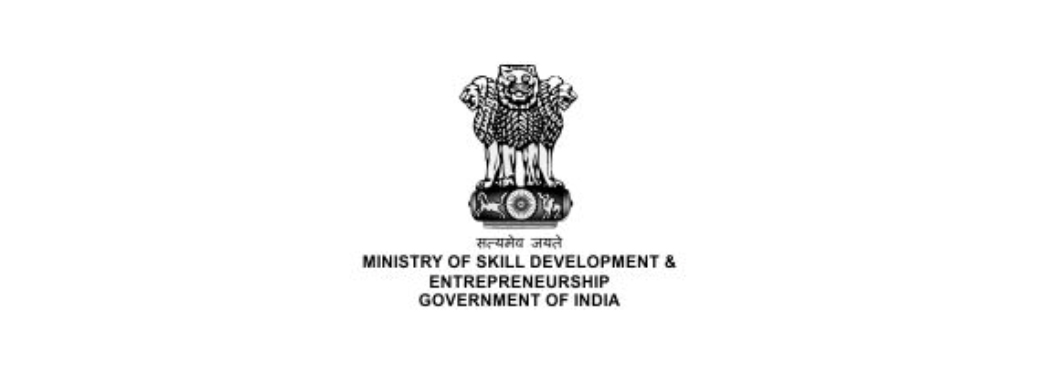
Why in News?
- The Union Minister for Skill Development and Entrepreneurship, GOI awarded Recognition of Prior Learning (RPL) Certificates to more than one thousand workers from the leather sector in Chennai. He also launched the Mochi Swabhimaan Initiative.
RPL Certificates:
- RPL certificates are given under the Pradhan Mantri Kaushal Vikas Yojana (PMKVY) of Skill India to the unorganised semi-skilled and unskilled workers.
- These certificates can help them get assessed and certified on their current competencies as per NSQF levels (National Skills Qualifications Framework).
- RPL also shows them a path to bridge their current knowledge and skill levels to reach a competency level or go for higher skills for professional growth.
- The RPL scheme envisions to impart skill-based training to one crore people between 2016 and 2020.
- The certificates can give workers the chance to go for higher education in their respective fields.It will also give them different options in upgrading and upskilling.
- RPL certificates certify skills acquired informally and drive young people to venture into aspirational job roles.
- The industry will also be benefitted because formalizing the skills of employees will give a clear picture of the available skill sets, skill gaps and the need for upgradation to achieve desired quality and productivity benchmarks.
Mochi Swabhimaan Initiative:
- It is a nationwide activity in which the Leather Sector Skill Council (LSSC) will extend support to the cobbler community who provide leather-based services, with CSR funds and bring respect to their skills by giving them a better working environment in the form of kiosks/umbrellas.
Leather Sector Skill Council (LSSC):
- It is a non-profit organisation dedicated to meeting the demand for skilled workforce in the leather industry in India.
- The LSSC was set up in 2012 as one of the key sector skill councils approved by National Skill Development Corporation (NSDC).
- The LSSC caters to the training and employment needs of various subsectors in the leather industry such as finished leather, footwear, garments, leather goods, accessories, saddlery and harness sectors.
- It also has a partnership with the Council of Leather Exports (CLE).
DRAFT RULES TO REGULATE SOCIAL MEDIA
22, Sep 2019

Why in News?
- The Centre has informed the Madras High Court that deliberations on the Draft Information Technology [Intermediaries Guidelines (Amendment)] Rules, 2018, has been completed.
Highlights:
- The Government had sought to make it mandatory for platforms such as WhatsApp, Facebook and Twitter to trace originator of unlawful information.
- It had also sought to make it mandatory to remove such content within 24 hours after being notified.
- Initially, Advocate Antony Clement Rubin had approached the Court to obtain an order for linking Aadhaar with social media accounts.
- However, the HC made it clear that it was not in favour of such a plea.
- Instead, the HC expanded the scope of the case & suo motu impleaded Facebook, Google, YouTube, Twitter, WhatsApp as parties to the case.
- This ensured that they could be made to cooperate with the local police in cracking cybercrimes by sharing necessary information
- The guidelines mandate social media companies to cooperate with the police in cracking cybercrimes.
- The Bench led by Justice Sathyanarayanan, told senior counsel, representing WhatsApp, that the social media giants were bound to obey local laws of the country in which they operate & share requisite information with the police.
- It said, the companies could not take umbrage under the right to privacy.
PRADHAN MANTRI MATRU VANDANA YOJANA
21, Sep 2019
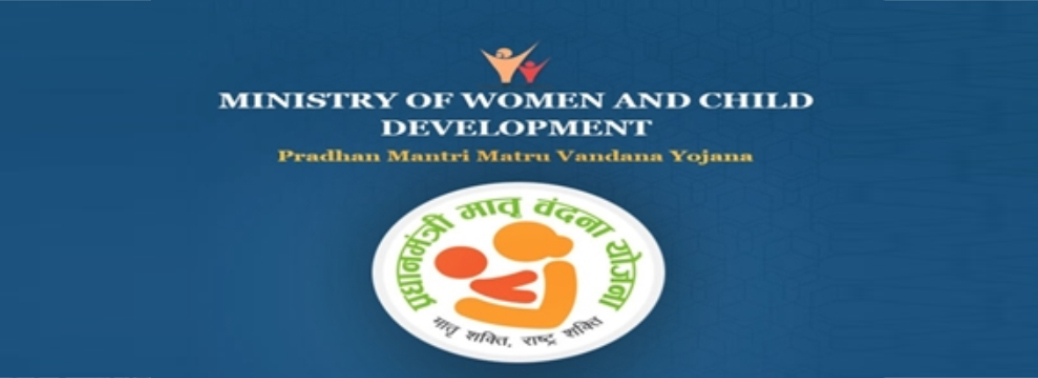
Why in News?
- Pradhan Mantri Matru Vandana Yojana (PMMVY), a flagship scheme of the Government for pregnant women and lactating mothers has achieved a significant milestone by crossing one crore beneficiaries.
PMMVY:
- PMMVY is a direct benefit transfer (DBT) scheme under which cash benefits are provided to pregnant women in their bank account directly to meet enhanced nutritional needs and partially compensate for wage loss.
- Implementation of the scheme started with effect from 01.01.2017.
- Under the ‘Scheme’, Pregnant Women and Lactating Mothers (PW&LM) receive a cash benefit of Rs. 5,000 in three instalments on fulfilling the respective conditionality.
- They include early registration of pregnancy, ante-natal check-up and registration of the birth of the child and completion of first cycle of vaccination for the first living child of the family.
- The eligible beneficiaries also receive cash incentive under Janani Suraksha Yojana (JSY). Thus, on an average, a woman gets Rs. 6,000.
Performance by states:
- Madhya Pradesh, Andhra Pradesh, Himachal Pradesh, Dadra & Nagar Haveli and Rajasthan are the top five States/UT in the country in implementation of PMMVY.
- Odisha and Telangana are yet to start implementation of the scheme.
GOVERNMENT TO PEG MGNREGA WAGES TO INFLATION IN BID TO HIKE INCOMES
20, Sep 2019
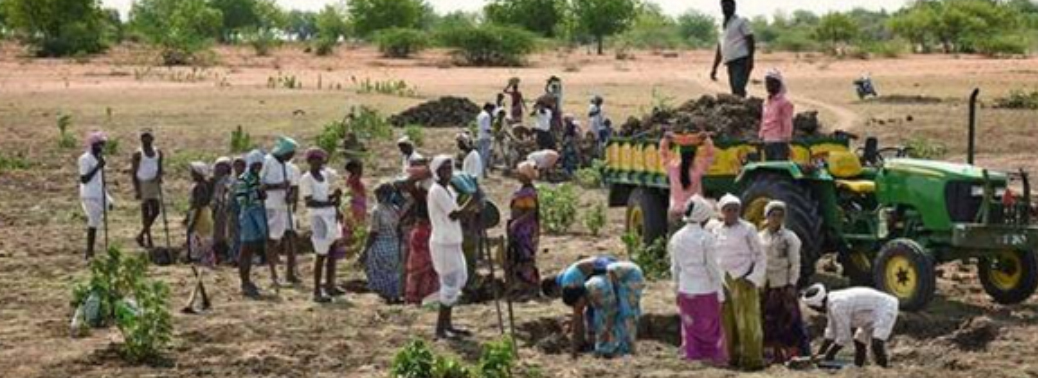
Why in News?
- The Centre has planned to inject more money into the UPA’s flagship Mahatma Gandhi National Rural Employment Guarantee Act (MGNREGA) scheme by linking wages under the Act to an updated inflation index, which will be revised annually to counter slump in rural demand and a slowdown in the rural economy.
What is MGNREGA?
- The National Rural Employment Guarantee Act 2005 (NREGA) is a social security scheme that attempts to provide employment and livelihood to rural labourers in the country.
- The scheme was designed to provide any adult who registers for rural employment a minimum job guarantee of 100 days each financial year.
- This includes non-skilled work, making it one-of-its-kind across the world. It was later renamed the Mahatma Gandhi National Rural Employment Guarantee Act (MGNREGA).
- The MGNREGA is an entitlement to work that every adult citizen holds. In case such employment is not provided within 15 days of registration, the applicant becomes eligible for an unemployment allowance.
Current Wages:
- The national average wage of an MGNREGA worker is ₹178.44 per day, less than half of the ₹375 per day minimum wage recommended by a Labour Ministry panel earlier this year.Now the govt plans to link the daily wages to the inflation rate (CPI-AL), so that the rural labourers can benefit in real time.
Benefits:
- This effort of government to hike the wages is a part of a stimulus package initiated in order to counter the ongoing economic slowdown.
- If transferring expenditure [via MGNREGA] is done, rural wages could increase and that could percolate down into more purchasing power in the hands of the consumer. This is in turn expected to boost the rural economy.
About Consumer Price Index (CPI):
- It measures price changes from the perspective of a retail buyer.
- It measures changes over time in the level of retail prices of selected goods and services on which consumers of a defined group spend their incomes.
Four types of CPI are as follows:
| Compiled by | ||
|---|---|---|
| 1 | CPI for Industrial Workers (IW). | Labour Bureau in the Ministry of Labour and Employment |
| 2 | CPI for Agricultural Labourer (AL). | Labour Bureau in the Ministry of Labour and Employment |
| 3 | CPI for Rural Labourer (RL). | Labour Bureau in the Ministry of Labour and Employment |
| 4 | CPI (Rural/Urban/Combined). | Central Statistical Organisation (CSO) in the Ministry of Statistics and Programme Implementation. |
POSHAN ABHIYAAN OR NATIONAL NUTRITION MISSION (NNM)
20, Sep 2019
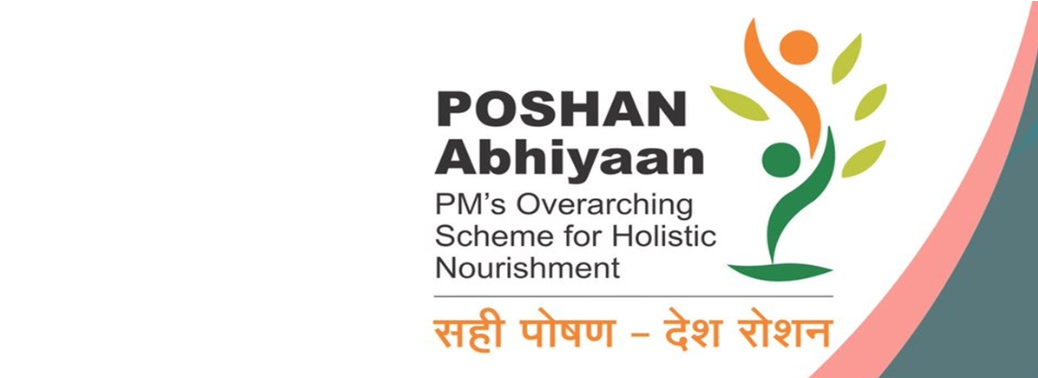
Context:
- A study by Lancet has shown that India is unlikely to meet “Poshan Abhiyaan” scheme
About Poshan Abhiyaan:
- Poshan Abhiyaan is Government of India’s flagship programme to improve nutritional outcomes for children, pregnant women and lactating mothers.
- It was launched by Ministry of Women and Child Development in 2018.
- This initiative is aimed at sensitising public on healthy eating, addressing twin issues of malnutrition and undernutrition and obesity in some sections and also intensifying existing nationwide campaign for ‘malnutrition-free India‘
- Targets:
- Poshan Abhiyaan, the world’s largest nutrition programme, expected to benefit 10 crore people and launched in 2018 by government.
- Aims to reduce stunting, underweight, and low birth weight, each by 2% per year; and anaemia among young children, adolescents and women each by 3% per year until 2022. A special target for stunting is set at 25% by 2022.
Global Burden of Disease Study:
- Poshan Abhiyaan or National Nutrition Mission (NNM) for reduction in prevalence of stunting, underweight, low birth weight and anaemia in women and children by 2022 if there is no progress achieved in improving the rate of decline observed between 1990 and 2017.
- The study points out that India will miss its target for
- Stunting Levels of 25% by 9.6%;
- Underweight Target of 22.7% by 4.8%;
- Desired Low Birth level of 11.4% by 8.9%;
- Anaemia Level Among Women of 39.4% by 13.8%; and
- Anaemia Level Among Children of 44.7% by 11.7%,
About the Report:
- The report is a joint initiative of Indian Council of Medical Research, Public Health Foundation of India (PHFI) and the Ministry of Health and Family Welfare.
For implementation of POSHAN Abhiyaan the four-point strategy/pillars of the Mission are:
- Inter-sectoral convergence for better service delivery
- Use of technology (ICT) for real time growth monitoring and tracking of women and children
- Intensified health and nutrition services for the first 1000 days
- Jan Andolan.
Monitoring:
- As a part of its mandate, NITI Aayog is required to submit implementation status reports of POSHAN Abhiyaan every six months to the PMO.
Background:
What is Malnutrition?
- Malnutrition indicates that children are either too short for their age or too thin.
- Childrenwhose height is below the average for their age are considered to be stunted.
- Similarly, children whose weight is below the average for their age are considered thin for their height or wasted.
- Together, the stunted and wasted children are considered to be underweight – indicating a lack of proper nutritional intake and inadequate care post childbirth.
Malnutrition in India:
- India’s performance on key malnutrition indicators is poor according to national and international studies.
- According to UNICEF, India was at the 10th spot among countries with the highest number of underweight children, and at the 17th spot for the highest number of stunted children in the world.
- Malnutrition affects chances of survival for children, increases their susceptibility to illness, reduces their ability to learn, and makes them less productive in later life.
- It is estimated that malnutrition is a contributing factor in about one-third of all deaths of children under the age of 5.
National Nutrition Strategy:
- Various government initiatives have been launched over the years which seek to improve the nutrition status in the country.
- These include the Integrated Child Development Services (ICDS), the National Health Mission, the Janani Suraksha Yojana, the Matritva Sahyog Yojana, the Mid-Day Meal Scheme, and the National Food Security Mission, among others. However, concerns regarding malnutrition have persisted despite improvements over the years. It is in this context that the National Nutrition Strategy has been released.
State-wide data on malnutrition presented by the Indian Council of Medical Research (ICMR).
- Malnutrition was the predominant risk factor for death in children younger than five in every state of India in 2017, accounting for 68.2 per cent of the total under-5 deaths, translating into 706,000 deaths (due to malnutrition).
- It was also the leading risk factor of loss of health among all age groups.
- These findings also raise concern about a host of policies in India which have been in practice since 1990 to tackle malnutrition, the key ones being Integrated Child Development Scheme launched in 1975, the National Nutrition Policy 1993, the Mid Day Meal Scheme for school children 1995, and the National Food Security Act 2013, as the prevalence of stunting, wasting and underweight remains high.
DRAFT CODE ON SOCIAL SECURITY, 2019
20, Sep 2019
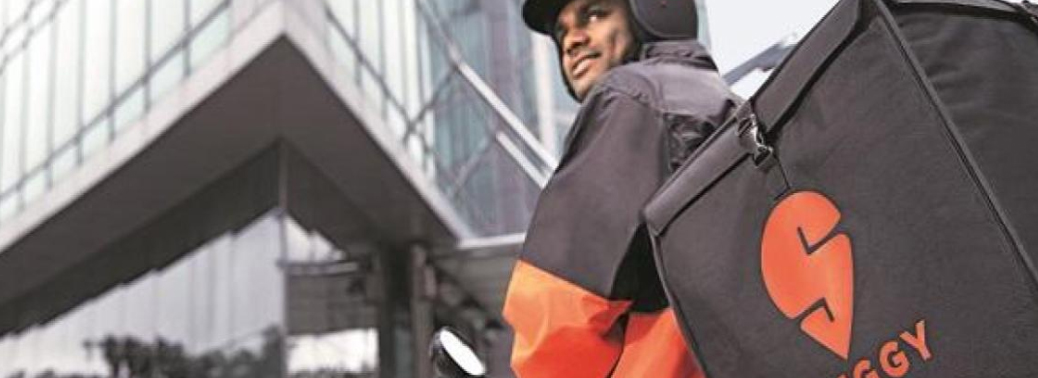
Why in News?
- The Centre has proposed a new draft Code on Social Security that amalgamates eight laws that makes way for establishing funds for PF and pension as well as covering workers of the gig economy in social security schemes.
- The draft code, which was published by the Labour and Employment Ministry this week, will be up for public comments till October 25.
Background:
- The draft proposal comes in the wake of California approving a law for wage benefit and protection for gig workers, including those working in taxi aggregating companies such as Uber and Lyft, which is a popular tax aggregator in the US.
- The development comes as the size of the number of workers in the gig economy is ballooning in the country where nearly one out of four gig workers in the world are in India.
Highlights of the Code:
- The code has recognised ‘gig workers’ and ‘platform workers’, it is for the first time that the two terms are being used in the country’s labour laws.
- As per the draft Bill, these workers will be entitled to life and disability cover, health and maternity benefits and old-age protection.
- However, the workers will not be entitled to EPF and ESIS benefits; they will also not be entitled to gratuity benefits.
- The code also says no employer can knowingly employ a woman six weeks after a delivery, miscarriage or medical termination of pregnancy.
- The Maternity Benefit Act, 1961, which is among the laws being subsumed by the code, had placed the six-week restriction for women after delivery or miscarriage, not mentioning medical termination.
- Defines a gig worker: as a “person who performs work or participates in a work arrangement and earns from such activities outside of a traditional employer-employee relationship”.
- Defines a platform worker: as someone who is part of an organisation which “uses an online platform to access other organisations or individuals to solve specific problems or to provide specific services in exchange for payment”.
Concerns:
- It might bring challenges for policy implementation and growth of gig players such as taxi aggregators, food apps, and workforce supplier platforms.
- The cost incurred on company will go up which in turn pass on the cost to gig workers, reducing their take home income.
Conclusion:
- The government has in the Code on Social Security Bill 2019 proposed to extend certain social security benefits to so-called gig workers—those who work for various aggregators mostly on contract.
- This is an important step towards ensuring that such workers, who typically don’t get the benefits of regular employees, are also provided with some minimum social security benefits.
- For businesses, though, this would mean higher costs, which could discourage them from hiring freely. Perhaps a middle path is needed so that workers aren’t denied some essential benefits while the impositions don’t impede future hiring.
TWO OUT OF THREE CHILD DEATHS DUE TO MALNUTRITION
19, Sep 2019
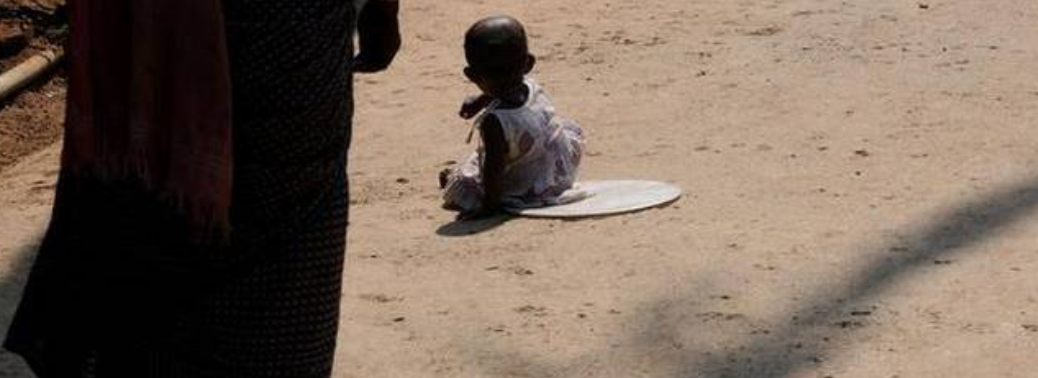
Why in News?
- A report regarding Under five mortality rate was recently published by India State-Level Disease Burden Initiative in The Lancet Child & Adolescent journal.
Key Findings of the Report:
- The report says the overall under-five death rate and the death rate due to malnutrition has decreased substantially from 1990 to 2017.But malnutrition is still the leading risk factor for death in children under five years.
- Two-thirds of the 1.04 million deaths in children under five years in India are still attributable to malnutrition.
- The report states that the disability-adjusted life year (DALY) rate attributable to malnutrition in children varies 7-fold among the States and is highest in Rajasthan, Uttar Pradesh, Bihar and Assam, followed by Madhya Pradesh, Chhattisgarh, Odisha, Nagaland and Tripura.
- The report also states that low birth weight needs particular policy attention in India as it is the biggest contributor to child death among all malnutrition indications and its rate of decline is among the lowest.
- Another important revelation is that overweight among a subset of children is becoming a significant public health problem as it is increasing rapidly across all States.
About India State-Level Disease Burden Initiative:
- The India State-Level Disease Burden Initiative is a joint initiative of the Indian Council of Medical Research (ICMR), Public Health Foundation of India, and Institute for Health Metrics and Evaluation in collaboration with the Ministry of Health and Family Welfare along with experts and stakeholders associated with over 100 Indian institutions, involving many leading health scientists and policy makers from India.
NATIONAL INSTITUTE OF OCEAN TECHNOLOGY (NIOT)
19, Sep 2019

Why in News?
- Officials from the Ministry of Earth Sciences apprised the Vice-president of the status of the National Institute of Ocean Technology’s research facility at Thupilipallam village in Nellore District of Andhra Pradesh.
Highlights:
- The foundation stone for the research facility at Thupilipallam was laid in 2016 but the project has seen delays due to legal hurdles.
National Institute of Ocean Technology (NIOT):
- NIOT is an autonomous society under the Ministry of Earth Sciences, established in 1993.
- It has its main office at Chennai, Tamil Nadu.
- The chief objective of the institute is to develop reliable indigenous technologies to solve the various engineering problems associated with the harvesting of non-living and living resources in the Indian Exclusive Economic Zone (EEZ), which is about two-thirds of the land area of India.
- The institute engages in developing technologies for sustainable utilization of ocean resources.
- It also engages in providing solutions to organisations working in the field.
Exclusive Economic Zone (EEZ):
- The EEZ is a sea zone prescribed by the UNCLOS in 1982, over which a country has special rights regarding the exploration and use of marine resources, including energy production from water and wind.
- It stretches from the baseline out to 200 nautical miles from a country’s coast.
- The term EEZ does not include the continental shelf beyond 200 nautical miles. It also does not include the territorial sea.
- The difference between territorial sea and the EEZ is that the former confers full sovereignty over the waters, whereas the latter is merely a “sovereign right” which refers to the coastal nation’s rights below the surface of the sea.
- The surface waters are international waters.
NATIONAL RECRUITMENT AGENCY (NRA)
19, Sep 2019

Why in News?
- The Finance Ministry has approved a proposal to streamline recruitment of some posts in the government along with various equivalent recruitment in public sector banks.
- A new National Recruitment Agency (NRA) will be set up to conduct the Common Eligibility Test (CET) for all these competitive examinations, in which an estimated 2.5 crore candidates appear annually.
National Recruitment Agency (NRA):
- The proposed NRA will conduct preliminary examinations for all these recruitment, which are at present conducted by the Staff Selection Commission (SSC) and the Institute of Banking Personnel Selection (IBPS).
- As per the proposal, the NRA will subsequently forward the list of qualifying candidates to the respective recruiting agencies to conduct the mains examinations.
- The SSC and IBPS, it is learnt, will not be disbanded for now and will conduct the mains examinations as usual.
- The basic idea behind this proposal is to shortlist qualifying candidates through a Common Eligibility Test before sending them for the mains examination.
Need for a New Agency:
- The proposal for a new agency is meant to streamline recruitment process on subordinate-rank posts in the government.
- The proposed NRA is expected to reduce the burden of SSC and the IBPS, among others, from holding preliminary recruitment exams, which is an extensive exercise.
- Once up and running, NRA will work as a preliminary single-window agency to shortlist qualifying candidates from bulk of applicants and forward the list to SSC, IBPS, etc, to hold the mains.
- According to an estimate, more than 2.5 crore candidates sit for these prelims, most of them conducted by SSC.
- Recruitment conducted at present through the SSC and proposed to go to the new agency include the Combined Graduate Level (CGL) examination to enter government departments.
Clerical level:
- Similarly in line with CGL, recruitment tests for clerical-level recruitment in public sector banks are proposed to go to the NRA.
- The proposed agency, however, will not be in charge of recruitment of Probationary Officers (PO) in banks.
NGOS “SUBSTANTIALLY” FUNDED BY CENTRE COMES UNDER RTI ACT- SUPREME COURT
18, Sep 2019
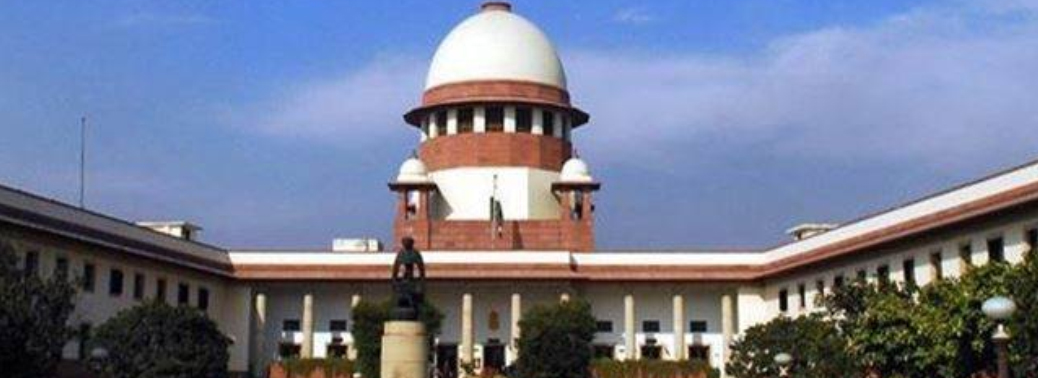
Why in News?
- Non-Government Organisations (NGOs) receiving substantial financing from the government are bound to give information to the public under the RTI Act, the Supreme Court held recently.
Background:
- The bench was dealing with an issue on whether NGOs substantially financed by the government fall within the ambit of “public authority” under provisions of the Right to Information Act, 2005.
- Several schools and colleges and associations running educational institution have moved the top court claiming that NGOs are not covered under the RTI Act.
Highlights of The Judgement:
- The Supreme Court laid down that NGOs which receive considerable finances from the government or are essentially dependent on the government fall under the category of “public authority” defined in Section 2(h) of the Right to Information (RTI) Act of 2005.
- This means that they have to disclose vital information, ranging from finances to hierarchy to decisions to functioning, to citizens who apply under RTI.
- An NGO may also include societies which are neither owned or controlled by the government, but if they are significantly funded by the government, directly or indirectly, they come under the RTI Act.
- The court defined “substantial” as a “large portion.”
- It does not necessarily have to mean a major portion or more than 50%. Substantial financing can be both direct or indirect.
THE PUBLIC PREMISES (EVICTION OF UNAUTHORISED OCCUPANTS) AMENDMENT ACT, 2019
18, Sep 2019
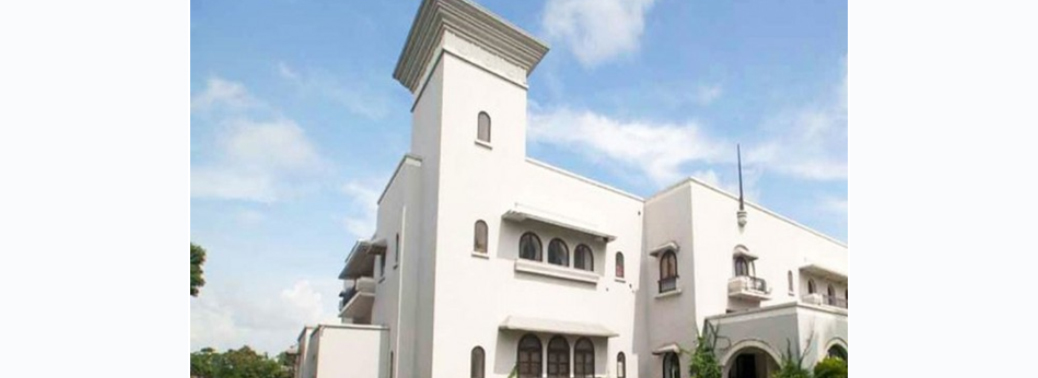
Why in News?
- The Public Premises (Eviction of Unauthorized Occupants) Amendment Bill, 2019 which was passed by the Parliament during the last Budget Session has come into effect.
Background:
- The aim of the Bill is to facilitate smooth and speedy eviction of occupants of government accommodation on expiry of their terms and conditions.
- The Government provides residential accommodation to its employees, Members of Parliament and other dignitaries while they are in service or till the term of their office on licence basis.
- As per the existing allotment rules, after the expiry of the terms and conditions of the licence, the occupants of such residential accommodations become unauthorised for staying in such accommodation and should vacate the same.
Issue:
- However, it is often seen that the unauthorised occupants do not vacate the government accommodation on expiry of the terms and conditions of the licence as per the rules and uses dilatory tactics to withhold the accommodation.
- In order to check this delay, it is proposed to insert a new sub-section (3A) in section 7 of the Act to the effect that if the person challenges the eviction order passed by the estate officer in any court, he has to pay the damages for every month for the residential accommodation held by him.
- Under the existing provisions, the eviction proceedings of unauthorised occupants from “public premises” take around five to seven weeks’ time.
Key Highlights of the Bill:
- Residential Accommodation:
- The Bill defines ‘residential accommodation occupation’ as the occupation of public premises by a person on the grant of a license for such occupation.
- The license must be given for a fixed tenure, or for the period the person holds office.
- Further, the occupation must be allowed under the rules made by the central, state or union territory government, or a statutory authority (such as Parliament Secretariat, or a central government company, or premises belonging to a State Government).
- Notice for Eviction:
- The Bill adds a provision laying down the procedure for eviction from residential accommodation.
- It requires an estate officer (an officer of the central government) to issue a written notice to a person if he is in unauthorised occupation of a residential accommodation.
- The notice will require the person to show cause of why an eviction order should not be made against him, within three working days.
- The written notice must be fixed to a conspicuous part of the accommodation, in a prescribed manner.
- Order of Eviction:
- After considering the cause shown, and making any other inquiries, the estate officer will make an order for eviction.
- If the person fails to comply with the order, the estate officer may evict such person from the residential accommodation, and take possession of it.
- For this purpose, the estate officer may also use such force as necessary.
- Payment of Damages:
- If the person in unauthorised occupation of the residential accommodation challenges the eviction order passed by the estate officer in court, he will be required to pay damages for every month of such occupation.
TAMIL NADU ELECTRIC VEHICLE POLICY, 2019
17, Sep 2019

Why in News?
- In an attempt to give a boost to the manufacture and use of electric vehicles in the State, Chief Minister released the Tamil Nadu Electric Vehicle Policy, 2019, which provided for various concessions to manufacturers and users of e-vehicles.
Key features of the Policy:
- The policy called for 100% road tax exemption till December 30, 2022, besides a waiver of registration charges for electric two-wheelers. These sops are expected to push up sales of electric vehicles.
- The policy stated that the registration fees would be waived as per Government of India’s notification while road tax exemption would be enhanced from 50% to 100% till December 2022.
Special Package:
- The manufacture of electric vehicles, their components, particularly EV batteries, and manufacture of charging infrastructure would be provided a special package of incentives.
- Special packages were announced for units engaged in e-vehicle manufacture that made investments over ₹50 crore and employed at least 50 persons.
- Full reimbursement would be provided for SGST paid on the sale of EVs manufactured, sold and registered for use in the State till 2030.In the case of intermediate products where SGST reimbursement was not applicable, a capital subsidy of 15% would be given on eligible investments over 10 years.As for transport vehicles such as taxis and tourist cars, permit fees would be waived for electric transport vehicles till December 2022 and they would be granted 100% road tax exemption for the same period.
- The capital subsidy for e-vehicle manufacturers would be payable on eligible investments made in the State till December 2025. The cost of land shall not exceed 20% of the total eligible investments reckoned for the purpose of capital subsidy.
- The State government has attempted to put southern districts also on the investment map. The new electric policy offers to provide investors a 50 per cent subsidy on the land cost if the investment is made to obtain land from government agencies in southern districts, while in other districts it is just 15 per cent.

Separate plates:
- In order to distinguish electric vehicles from others, registration number shall be exhibited in yellow colour on a green background for transport vehicles and in white on a green background for all other EVs.
ODISHA GOVT. TO LINK PROMOTION OF POLICEMEN TO PUBLIC FEEDBACK
17, Sep 2019

Why in News?
- The Odisha government has decided to evaluate performance and incentives of police personnel on the basis of public feedback in their localities in addition to the existing parameters.
Details:
- In a briefing session with top police officers Odisha CM explained the concept of the government’s 5T vision.
- 5Ts-Transparency, Tech, Teamwork, Time lead to Transformation. Under 5T (vision), Mo Sarkar (meaning My Government) is a component.
- Police stations across the state will be required to register on the Mo Sarkar portal. After filing a complaint at a police station, an SMS will be sent to the complainant. The Chief Minister and his officials will make direct calls to the public for feedback on their experience at a police station.
- Based on public feedback and efficiency in service delivery, performing police stations and personnel shall be identified and recognised with faster promotion and other incentives.
INFLIGHT AND MARITIME TELECOM CONNECTIVITY IN INDIA
16, Sep 2019

Why in News?
- Union Ministry for Communications, Electronics & Information Technology has launched the maritime communication services.
Providing Maritime Connectivity:
- Nelco India’s leading VSAT solutions provider is the first Indian company that will now provide quality broadband services to the maritime sector.
- Nelco through global partnerships, infrastructure including transponder capacity on satellite of ISRO and a comprehensive service portfolio
- It will help Energy, Cargo and Cruise vessels by enhancing operational efficiency, improving crew welfare and enabling customer services.Maritime Connectivity will enable high-end support to those in sea by providing access to Voice, Data and Video services while traveling on sailing vessels, cruise liners, ships in India, using satellite technology.
Making it possible through IFMC license:
- In December 2018, the Govt. announced the licenses for In-flight and Maritime Communications (IFMC) that allows voice and internet services while flying over the Indian skies and sailing in Indian waters.
- The IFMC licence has not only enabled connectivity for on-board users on ships but also brings operational efficiencies for shipping companies which were less evolved until now.
- The IFMC license is a key initiative of the Telecom Ministry, a move to liberalise satellite communication services in India.
- It permits both international and Indian aircrafts and vessels.
FMC Rules:
- In a major policy decision, Department of Telecommunications, Ministry of Communications had notified the Flight and Maritime Connectivity (FMC) Rules, 2018 on 14th December, 2018.
- It permits voice and data service provisioning in flights and ships.
- The intent is to open the airspace and territorial waters for telecommunication services for general public which was not possible earlier due to lack of enabling rules.
- Rules envisage creation of satellite gateway within India for providing telecom services in aircraft and ships through Indian licensed service providers.
- Further, Indian satellite bandwidth has to be utilised. If a foreign satellite is used, it has to be approved by ISRO.
- Only the authorized IFMC service provider, can provide wireless voice or data or both type of services on ships within Indian territorial waters and on aircraft within or above India or Indian territorial waters.
GLARING SECURITY LAPSES AT EMINENT SCHOOLS ACROSS INDIA, REVEALS CISF AUDIT
16, Sep 2019

Why in News?
- Following the murder of seven-year-old Pradyumna Thakur at a school in Gurgaon in 2017, the paramilitary force had written to various schools offering consultancy services through a security audit. Nearly two dozen schools agreed to the proposal and CISF conducted the audit at nine.
Key Lapses Revealed:
- Some of the most prestigious schools in the country do not provide secure spaces to their students, safety audits conducted by the CISF have revealed.
- Inadequate number of CCTV cameras.
- Lack of background verification of security guards.
- Non-installation of CCTV cameras at proper locations.
- Poor quality of cameras that are not able to recognize individuals and vehicles.
- Lack of fire safety measures in some schools like a non-functional fire hydrant and insufficient fire-fighting gadgets.
- The absence of security gadgets and insufficient lighting.
Consequences:
- The absence of these measures shows that unauthorized entry of individuals and vehicles, smuggling of objectionable items is a big possibility in the schools, making students susceptible to threats.
Way Ahead:
- CISF has given some key recommendations and few of them are:
- The cameras should cover entry and exit gate corridors, lobbies and parameters of the building which was missing in most schools.
- Schools have been asked to procure X-ray Baggage Machines in their canteens to ensure that snacks and other food materials make way to the canteen only after proper inspection.
- CISF has recommended schools to put in place an electronic key management system that will maintain a record of rooms being used.
- Proper installation of fire safety measures like a proper functional fire hydrant and sufficient Fire-Fighting Gadgets.
CENTRAL EQUIPMENT IDENTITY REGISTER (CEIR)
15, Sep 2019

Central Equipment Identity Register (CEIR):
- International Mobile Equipment Identity (IMEI) is supposed to be a unique identity of a mobile phone device.
- IMEI number being programmable, some miscreants do reprogram the IMEI number, which results in cloning of IMEI causing multiple phone devices with same IMEI number.
- As on date, there are many cases of cloned/duplicated IMEI handsets in the network.
- If such IMEI is blocked, a large number of mobile phones will get blocked being handsets with same IMEI causing inconvenience to many genuine customers.
- Thus, there is a need to eliminate duplicate/fake IMEI mobile phones from the network.
- Accordingly, a project called Central Equipment Identity Register (CEIR) system has been undertaken by the DoT for addressing security, theft and other concerns including reprogramming of mobile handsets.
Objectives:
- Blocking of lost/stolen mobile phones across mobile networks thus discouraging theft of mobile phones.
- Facilitate in tracing of such reported lost/stolen mobile phones.
- Prevention of mobile devices with duplicate and fake IMEIs in the network.
- Curtail the use of counterfeit mobile devices.
- Reduced health risks to the users with the control of use of counterfeit mobile phones
- Improved QoS and reduced call drops with reduction in use of counterfeit mobile devices.
JALDOOT’ EXHIBITION FLAGGED OFF
15, Sep 2019

Why in News?
- ‘Jaldoot’ a travelling exhibition arranged by Regional Outreach Bureau, Pune under the Ministry of Information and Broadcasting was flagged off.
Highlights:
- To tackle the water crisis looming the country, the Government of India launched the JALSHAKTI ABHIYAN, a water conservation campaign focusing on 1592 stressed blocks in 256 districts across the country.
- The Regional Outreach Bureau, (ROB), an office under the Ministry of Information and Broadcasting, Government of India, takes care of various outreach activities and development communication needs of the Central Government.
- ROB in association with MSRTC (Maharashtra State Road Transport Corporation) is launching the Jaldoot campaign.
- The ROB has redesigned the bus, to create the Jaldoot: Travelling Exhibition on Jalshakti Abhiyan.
Jalshakti Abhiyan:
- The Jalshakti Abhiyan focus on five key aspects:
- Water Conservation and Rain Water Harvesting
- Renovation of Traditional and other Water Bodies
- Reuse of Water and Recharging of structures
- Watershed Development
- Intensive Afforestation
SCIENTIFIC SOCIAL RESPONSIBILITY (SSR) POLICY
15, Sep 2019

Why in News?
- India is going to be possibly the First country in the world to implement a Scientific Social Responsibility (SSR) Policy on the lines of Corporate Social Responsibility (CSR) to encourage science and technology (S&T) institutions and individual scientists in the country to proactively engage in science outreach activities to connect science with the society. A draft of the new policy has been made available by the Department of Science and Technology (DST) on its website for public comments.
Background:
- This draft policy builds upon traditions of earlier policies (Scientific Policy Resolution 1958, Technology Policy Statement 1983, Science and Technology Policy 2003 and Science Technology and Innovation Policy 2013) while proposing more pragmatic provisions to make institutions and individual scientists socially responsible.
Highlights:
- The policy aims to harness latent potential of the scientific community for Strengthening linkages between science and society, and for making S&T ecosystem vibrant.
- It is aimed at developing a mechanism for ensuring access to scientific knowledge, transferring benefits of science to meet societal needs, promoting collaborations to identify problems and develop solutions.
- Under the proposed policy, individual scientists or knowledge workers will be required to devote at least 10 person-days of SSR per year for exchanging scientific knowledge to society.
- It also recognises the need to provide incentives for outreach activities with necessary budgetary support.
- It has also been proposed to give credit to knowledge workers/scientists for individual SSR activities in their annual performance appraisal and evaluation.
- No institution would be allowed to outsource or sub-contract their SSR activities and projects.
- The draft defines SSR as “the ethical obligation of knowledge workers in all fields of science and technology to voluntarily contribute their knowledge and resources to the widest spectrum of stakeholders in society, in a spirit of service and conscious reciprocity”.
- A central agency will be established at DST to implement the SSR. Other ministries would also be encouraged to make their own plans to implement SSR as per their mandate.
- For implementation of the policy, a national portal will be developed up to capture societal needs requiring scientific interventions and as a platform for implementers and for reporting SSR activities.
Conclusion:
- When most research is being done by using taxpayers’ money, the scientific establishment has an ethical obligation of “giving back” to the society.
- SSR is not only about scientific impact upon society but also about the social impact upon science. SSR would therefore strengthen the knowledge ecosystem and bring efficiencies in harnessing science for the benefit of society.
DISTRICT MINERAL FOUNDATION
14, Sep 2019
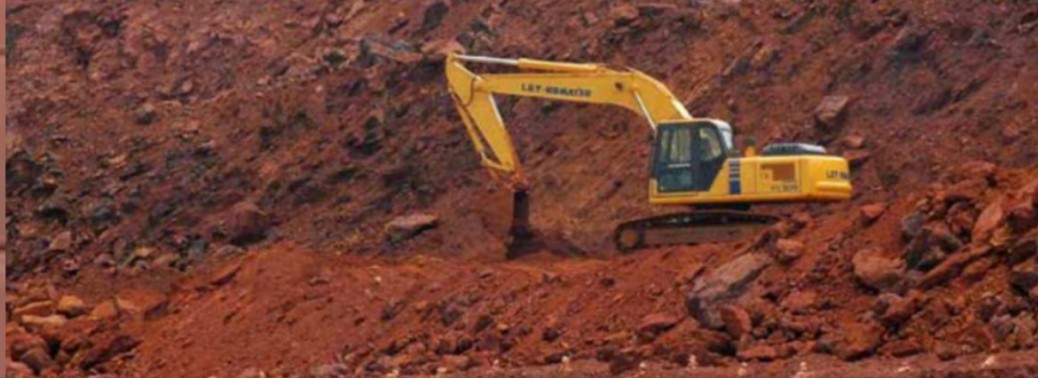
Context:
- Amendments to District Mineral Foundation (DMF) Trust Rules, 2015, by Chhattisgarh government
Background:
- Chhattisgarh, which has more than Rs 4,200 crore in DMF Trust, became the first state in July 2019, to amend DMF rules.
What is District Mineral Foundation?
- District Mineral Foundation (DMF) is a trust set up as a non-profit body, in those districts affected by the mining works, to work for the interest and benefit of persons and areas affected by mining related operations. It is funded through the contributions from miners.
- Setting up of District Mineral Foundations (DMFs) in all districts in the country affected by mining related operations was mandated through the Mines and Minerals (Development & Regulation) Amendment Act, (MMDRA) 2015
What Changes will it make?
- The new rule mandates the inclusion of 10 Gram Sabha members directly from mining-affected areas in the DMF Governing Council (GC).
- In Scheduled Areas, at least 50 per cent of the Gram Sabha members must be from Scheduled Tribes (ST).
- It will also strengthen women’s voices in the GC by mandating that from each Gram Sabha, there will be one male and one female member in the GC.
- The amendments create a huge scope for mining districts in the state to improve the lives and livelihoods of those affected by mining,”
- The DMF had been envisaged to build ‘social capital’, thus it must not be wasted on just building physical infrastructure, for which there are other funds.
- A 20 per cent cap has been put on the use of DMF funds for big physical infrastructure projects such as roads, bridges, railways, industrial parks etc.
- The rules mandate spending of at least 50 per cent of the funds on directly-affected areas to ensure worst-hit areas and people are prioritised.
- This is in addition to 60 per cent to be used on high-priority issues such as drinking water, livelihoods, healthcare, women and child development, education, etc.
- This will not only stop misuse of the funds on big projects such as roads, bridges, industrial parks etc, but will also create more scope to improve investment on soft resources.
- To improve DMF’s efficiency in operations and fund use, the amendments have also asked districts to identify mining-affected people and delineate mining-affected areas.
- To ensure better public accountability, a two-step social audit process has been mandated. Provisions have also been introduced for five-year plan, which can be subjected to a third-party review if the secretary of the mines department considers it to be necessary.
Government Intervention:
Pradhan Mantri Khanij Kshetra Kalyan Yojana (PMKKKY):
- This programme meant to provide for the welfare of areas and people affected by mining related operations. The most productive mining areas in the country are largely areas inhabited by scheduled tribes. They also are mainly located in the areas covered by the Fifth Schedule of the Constitution. The PMKKKY is, therefore, very sharply focused on safeguarding the health, environment and economic conditions of the tribals and providing them with opportunities to benefit from the vast mineral resources that are extracted from the areas where they live.
- The overall objective of PMKKKY scheme include:
- To implement various developmental and welfare projects/programs in mining affected areas, and these projects/ programs will be complementing the existing ongoing schemes/projects of State and Central Government;
- To minimize/mitigate the adverse impacts, during and after mining, on the environment, health and socio-economics of people in mining districts;
- And to ensure long-term sustainable livelihoods for the affected people in mining areas.
CENTRAL ADVERSE LIST
14, Sep 2019
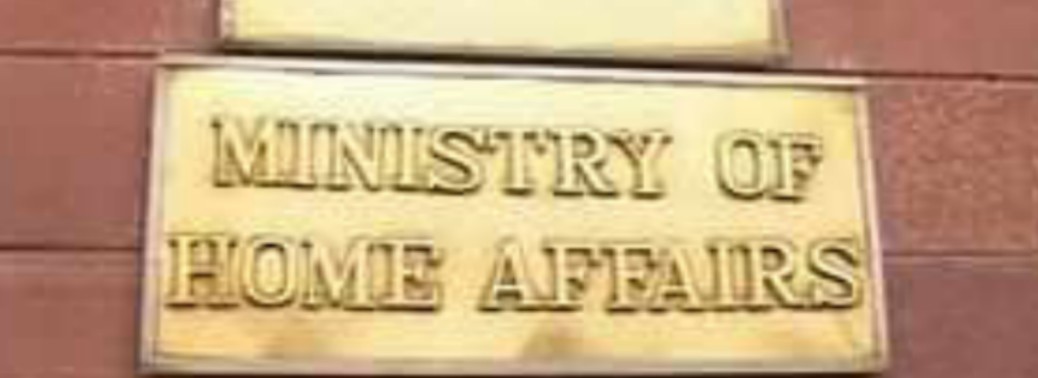
Why in News?
- The Central Government has removed from its blacklist — or the Central Adverse List as it is officially known — names of 312 Sikh foreign nationals involved in anti-India activities and only two persons figure in the list now.
What is Central Adverse List?
- It is a list by Ministry of Home Affairs and has names of those individuals who are suspected to have links with terrorist outfits or have violated visa norms in their previous visit to India.
- The list also includes the names of those persons who have indulged in criminal activities or have been accused of sexual crimes against children in their respective countries. It has more than 35,000 names on it.
Purpose of Maintaining Such List:
- This list is constantly used by all Indian Missions and Consulates to stop the individuals named in it from entering India.This is done by not granting visa to such persons. It is a step taken by the Indian government to maintain internal security.
- The list is also used to keep serious offenders outside India as somebody may commit a crime in his native nation and then apply for an Indian visa to escape prosecution.
Maintenance of Adverse List:
- The list is maintained by the Union Ministry of Home Affairs with inputs from all the state governments. Various intelligence agencies constantly review this list and add new names to it. Central intelligence agencies as well as the state-level intelligence contributes to the information determining the inclusion of a person in this list.
- Since law and order is a state subject, the state police are also utilised for intelligence gathering in order to update the list.
CENTRE TO BRING ORDINANCE TO BAN E-CIGARETTES IN COUNTRY
13, Sep 2019
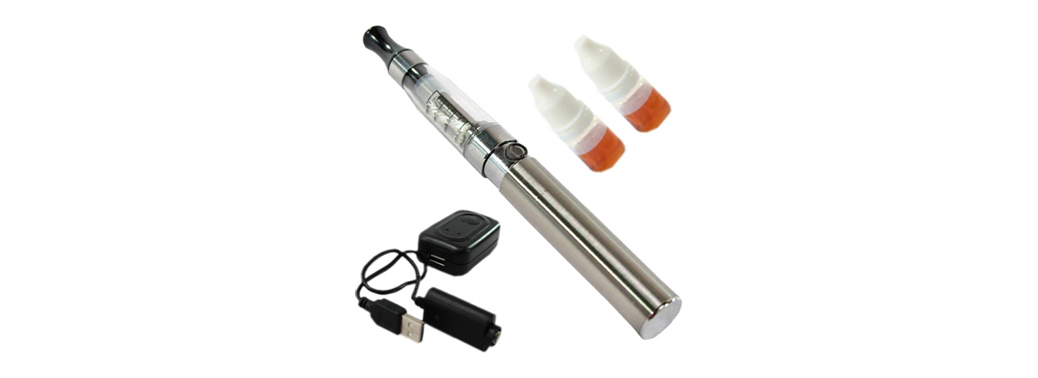
Why in News?
- The Union Cabinet is likely to approve an ordinance prohibiting the manufacture and sale of e-cigarettes in the country.
Highlights:
- The law would make production, manufacture, import, export, transport, sale, distribution or advertisements of e-cigarettes a cognizable offence.
- As per the draft bill, the offence will be punishable with jail up to one year or fine up to Rs. 1 lakh or both for first-time offenders, and jail of up to three years and fine up to 5 lakh for repeat offenders.
- Storage of e-cigarettes shall also be punishable with imprisonment up to six months or fine up to 50,000 or both.
- Experts from various fields have welcomed the move and urged the government to pass the ordinance in the larger interest of public health.
- E-Cigarettes are banned in about 30 countries.
- While anti-tobacco health experts are calling it a move in the right direction, the tobacco industry and its allies state that if enforced, this would be a draconian law hitting at the livelihood of many.
What are e-cigarettes?
- An electronic cigarette (or e-cig) is a battery-powered vaporizer that mimics tobacco smoking.
- It works by heating up a nicotine liquid.
- Nicotine juice comes in various flavors and nicotine levels.
- e-liquid is composed of five ingredients: vegetable glycerin (a material used in all types of food and personal care products, like toothpaste) and propylene glycol (a solvent most commonly used in fog machines.) propylene glycol is the ingredient that produces thicker clouds of vapor.
- Electronic cigarettes, do not burn or use tobacco leaves but instead vaporise a solution the user then inhales.
Concerns:
- India has the second largest number of tobacco users (268 million) in the world – of these at least 12 lakh die every year from tobacco-related diseases.
- Electronic Nicotine Delivery Systems (ENDS) solutions and emissions contain other chemicals, some of them considered to be toxicants.
- ENDS contain nicotine solution which is highly addictive.
- The flavouring agents and vaporizers used in e-cigarettes are also harmful for health.
- Use of e-cigarettes has documented adverse effects on humans like DNA damage, carcinogenesis, cellular, molecular and immunological toxicity.
- It can cause respiratory, cardiovascular and neurological disorders.
- They are also known to have adverse effects on pregnancy and foetal development.
- Lack of knowledge about negative effects of nicotine and easy accessibility of these products make the youth prone to addiction.
ACCESSIBILITY STANDARD FOR TV PROGRAMMES FOR THE HEARING IMPAIRED
13, Sep 2019
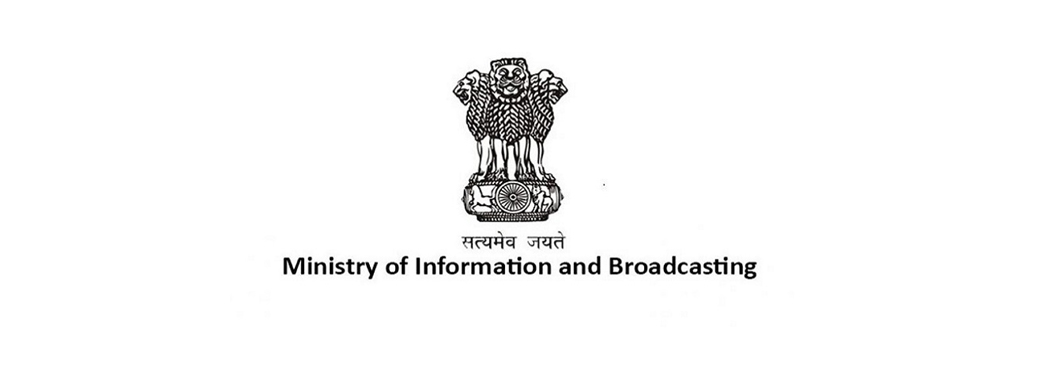
Why in News?
- In order to enhance the accessibility of television programmes for the hearing impaired, Union Ministry of Information & Broadcasting announced the implementation of Accessibility Standard for TV Programmes for persons with hearing impairment.
Highlights:
- The Accessibility will be enhanced through the provision of captioning and Indian Sign Language.
- All news channels are advised to carry a news bulletin with sign language interpretation at least once per day and all TV channels and service providers will run at least one programme per week with subtitles / captioning.
- Live news, live and deferred live content/events such as sports, live music shows, award shows, live reality shows, live debates, scripted/ unscripted reality shows, etc. and advertisements/ teleshopping content have however been exempted.
- The channels could either make their own programme with sign language interpretation, or, if they wished, carry a bulletin prepared by DD News free of cost.
- This will be implemented from 16th September, 2019. The overall implementation of the Standards will be done in a phase wise manner in the next five years. The policy will be reviewed after two years.
TRIBAL AREA STATUS FOR LADAKH
12, Sep 2019
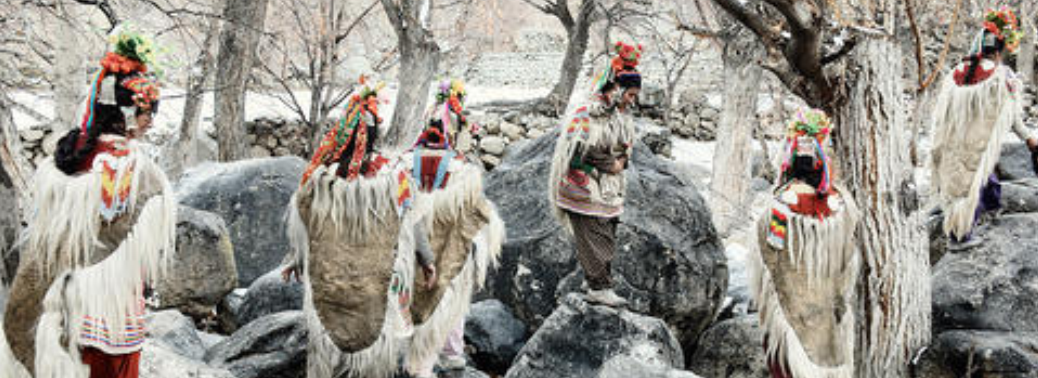
Context:
- THE NATIONAL Commission for Scheduled Tribes (NCST) has sent a formal recommendation to the Ministry of Home Affairs (MHA) to declare Ladakh a “tribal area” in the Sixth Schedule of the Constitution.
What is Tribal Area:
- The Constitution of India makes special provisions for the administration of the tribal dominated areas in four states viz. Assam, Meghalaya, Tripura and Mizoram.
- As per article 244 and 6th Schedule, these areas are called “Tribal Areas“, which are technically different from the Scheduled Areas under fifth schedule.
Why Such Move?
- According to the NCST, this will help“democratic devolution of powers, preserve and promote distinct culture of the region, protect agrarian rights including rights on land and enhance transfer of funds for speedy development of the region.
- There is also same demand from tribal population of Ladakh area.
- Within J&K’s budget, Ladakh usually got the short shrift. Fund transfer was usually delayed — by which time, the construction season was over. Devolution of tribal development funds (TDPs) was based primarily on population, and didn’t take into consideration area and geographical spread, relative inaccessibility, relative backwardness, and the presence and demography of nomadic tribes. As a result, development of this region has been generally neglected.
Strategic Location of Ladakh:
- The passes of Ladakh connect Central Asia, South Asia and China, and the region is cut off from the rest of India for six months during winter.
- The tribes here have limited means of livelihood, poor roads, impossible telecom and internet connectivity, undeveloped markets for their produce and low employment opportunities.
- The proximity of the India-Pakistan-China border, and the ubiquitous presence of Indian Army and paramilitary forces, underlines not only Ladakh’s strategic sensitivity, but also its people’s vulnerability.
- Tribes
- Tribes constitute 90% of the population of Ladakh — made up of the districts of Leh and Kargil. Gujjars, Bakarwals, Bots, Changpas, Baltis and Purigpas have played an important role in various wars that have been fought, and have been displaced and disturbed by border tensions.
- Agriculture
- Ladakh’s terrain is essentially inhospitable to agriculture and has been badly neglected by government agencies. In the apricot cluster of Kargil — which accounts for about half of J&K’s total apricot plantation —the crop has been annually afflicted by the codling moth for a decade. No solution for this blight has been sought yet.
- Kargil’s famous apples were quarantined by Kashmiri lobbies from going beyond Kargil, and the produce was forced to be locally consumed. If some of the nomadic tribes in Ladakh are trained and funded to grow their livestock on a commercial scale, it could prevent a net outflow of as much as Rs 800 crore from going out of the region to other states.
Way Forward:
- The erstwhile state of J&K was indifferent to the needs of the tribes of Ladakh. Tribal affairs officers should be established in Leh and Kargil, as there are in other states. In fact, there is need for a separate tribal development budget head to facilitate their development.
- With Ladakh as a Union territory, humane laws such as the Scheduled Castes and the Scheduled Tribes (Prevention of Atrocities) Act, and the vigilance of national watchdogs, like the National Commission for Scheduled Tribes (NCST), can be duly applicable to safeguard the welfare of the tribes of this region.
Difference Between 5th Schedule and 6th Schedule Areas:
- While both the areas under 5th schedule and 6th schedule have dominance of the tribal people, constitution calls them with different names viz. Scheduled Area under 5th schedule while Tribal areas under 6th schedule.
- While executive powers of the union extend in Scheduled areas with respect to their administration in 5th schedule; the 6th schedule areas remain within executive authority of the state.
- While 5th schedule envisages creation of Tribal Advisory Council, 6th schedule provides for District Councils and Regional Councils with certain legislative and judicial powers.
Legislative Powers of the Sixth Schedule Councils:
- The district councils and regional councils have powers to make laws on certain matters of local importance but all such laws require the assent of the governor. The subjects on which these councils can make laws include: Roads, bridges, ferries etc. modes of transport Animal husbandry, veterinary training & practice Primary and Secondary Education
- Agriculture including farm research and education Fisheries
- Social security and social insurance employment and unemployment Flood control
- Entertainment including Cinemas and Theatres Public health, sanitation, hospitals and dispensaries Minor irrigation. Trade and commerce in certain products such as food, cattle fodder, raw cotton, raw jute etc. Libraries, museums, monuments etc. Alienation of land.
Judicial Powers of the Sixth Schedule Council:
- The laws made by the state legislature on any subject that comes within the jurisdiction of the council, would not extend within the jurisdiction of the autonomous council unless the council so directs by public notification. The President in regard to a Central Act and the Governor in regard to a State Act may direct that the Central Act or State Act shall not apply to an autonomous district or shall apply with such modifications as may be specified.
- The Councils have also been endowed with wide civil and criminal judicial powers, for example establishing village courts etc.
National Commission for Scheduled Tribes:
- The National Commission for Scheduled Tribes (NCST) was established by amendingArticle 338 and inserting a new Article 338A in the Constitution through the Constitution (89th Amendment) Act, 2003.
- By this amendment, the erstwhile National Commission for Scheduled Castes and Scheduled Tribes was replaced by two separate Commissions namely-
(i) the National Commission for Scheduled Castes (NCSC), and
(ii) the National Commission for Scheduled Tribes (NCST).
Functions of the Commission:
- To investigate & Monitor matters relating to Safeguards provided for STs under the Constitution or under other laws or under Govt. Order, to evaluate the working of such Safeguards.
- To inquire into specific complaints relating to Rights & Safeguards of STs;
- To participate and advise in the Planning Process relating to Socio-economic development of STs, and to evaluate the progress of their development under the Union and any State;
- To submit report to the President annually and at such other times as the Commission may deem fit, upon/ working of Safeguards, Measures required for effective implementation of Programmers/ Schemes relating to Welfare and Socio-economic development of STs;
- To discharge such other functions in relation to STs as the President may, subject to the provisions of any law made by Parliament, by rule specify;
NATIONAL ANIMAL DISEASE CONTROL PROGRAM
12, Sep 2019

Context:
- In a key initiative aimed at doubling farmers income, Prime Minister Narendra Modi will be launching the National Animal Disease Control Programme for eradicating Foot and Mouth Disease and Brucellosis in livestock.
Funding:
- The project, which will cost ₹12,652 crores for a period of five years till 2024, will be funded entirely by the government.The programme, to be launched in Mathura, aims to control the livestock diseases by 2025 and eradicate these by 2030.
Aim:
- The programme aims at vaccinating over 500 million livestock including cattle, buffalo, sheep, goats and pigs against the FMD. The programme also aims at vaccinating 36 million female bovine calves annually in its fight against the brucellosis disease.
Foot and Mouth Disease (FMD) Control Programme:
- It envisages 100% vaccination coverage of cattle, buffaloes, sheep, goats and pigs at six-months interval in the entire country. Further, animals would be identified using unique animal identification ear tags. The programme also includes de-worming of the targeted population of livestock twice a year.
Brucellosis Control Programme:
- It envisages 100% vaccination coverage of female cattle and buffalo calves (4-8 months of age) once in a life time.
Stats:
- In India, livestock contributes over 4% to the country’s total GDP. As per estimates of the Central Statistics Office (CSO), the value of output from livestock and fisheries is estimated to be close to Rs 5 lakh crore.
Livestock in India:
- India has the privilege of having the largest population of livestock in the world.
- India’s milk production is highest in the world.
- And yet, the sector has been neglected for years.
Issue with foot-and-mouth disease (FMD) and brucellosis.
- It is actually the presence of FMD in India that has stopped us from realising the true potential of this sector.
- Trade barriers are put using this as an excuse, while totally putting aside the fact the OIE (The World Organisation for Animal Health) has endorsed our FMD vaccination programme.
- While Andhra Pradesh and Telangana have reported no outbreak of FMD in the last few years, states like UP, Maharashtra and Punjab need extra focus as major trade emanates from there.
What is Foot and mouth disease (FMD):
- Foot and mouth disease (FMD) is a severe, highly contagious viral disease of livestock that has a significant economic impact. The disease affects cattle, swine, sheep, goats and other cloven-hoofed ruminants.
- Intensively reared animals are more susceptible to the disease than traditional breeds. The disease is rarely fatal in adult animals, but there is often high mortality in young animals due to myocarditis or, when the dam is infected by the disease, lack of milk.
Importance of Livestock to Indian Farmer:
- In India, 75% of the poor control the country’s livestock, which in turn becomes a major source of their income.
- The direct losses to a farmer due to these diseases comes from a loss in milk production and reduction in the working ability of the animals.
- Export issue
- The bigger economic losses, however, are the non-acceptance of our milk and milk products, meat and its products in certain parts of the world, making the value realisation of our agri exports not at par with countries like Brazil, Australia, New Zealand and so on. Hence, it’s important that we as a nation give top priority for the control, prevention and eradication of this disease.
- Income:
- Livestock is a source of subsidiary income for many families in India especially the resource poor who maintain few heads of animals.
- Cows and buffaloes if in milk will provide regular income to the livestock farmers through sale of milk.
- Animals like sheep and goat serve as sources of income during emergencies to meet exigencies like marriages, treatment of sick persons, children education, repair of houses etc.
- The animals also serve as moving banks and assets which provide economic security to the owners.
- Employment:
- A large number of people in India being less literate and unskilled depend upon agriculture for their livelihoods.
- But agriculture being seasonal in nature could provide employment for a maximum of 180 days in a year.
- The land less and less land people depend upon livestock for utilizing their labour during lean agricultural season.
- Food:
- The livestock products such as milk, meat and eggs are an important source of animal protein to the members of the livestock owners.
- The per capita availability of milk is around 355 g / day; eggs is 69 / annum;
- Social security:
- The animals offer social security to the owners in terms of their status in the society.
- The families especially the landless which own animals are better placed than those who do not. Gifting of animals during marriages is a very common phenomenon in different parts of the country.
- Rearing of animals is a part of the Indian culture. Animals are used for various socio religious functions.
- Cows for house warming ceremonies; rams, bucks and chicken for sacrifice during festive seasons; Bulls and Cows are worshipped during various religious functions. Many owners develop attachment to their animals.
- Draft:
- The bullocks are the back bone of Indian agriculture. The farmers especially the marginal and small depend upon bullocks for ploughing, carting and transport of both inputs and outputs.
- Dung:
- In rural areas dung is used for several purposes which include fuel (dung cakes), fertilizer (farm yard manure), and plastering material (poor man’s cement).
KISAN MAN DHAN YOJANA
10, Sep 2019
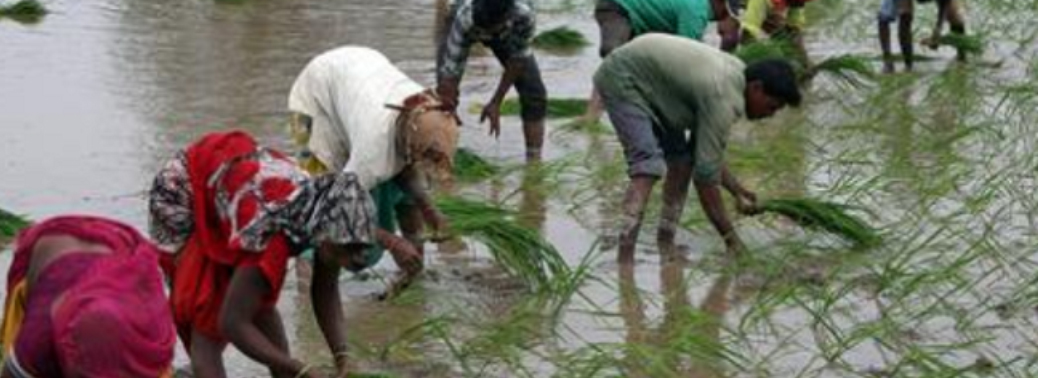
Why in News?
- Prime Minister Narendra Modi launched the Kisan Maan Dhan Yojana in September 2019.
- Prime Minister Narendra Modi also inaugurated 400 Ekalvya Model Residential Schools to provide quality upper primary, secondary, and senior secondary level education to ST Students in Tribal dominated areas.
Scheme Highlights:
- The Scheme shall secure the lives of 5 Crore Small and Marginal Farmers by providing a minimum pension of Rs 3000 per month, to those who attain 60 years of age.
- All the small and marginal farmers who are currently between the ages of 18 to 40 years can apply for the scheme.
- Farmer’s monthly contribution can be made from the instalments of PM-KISAN or through CSCs.
Ekalvya Model Residential Schools:
- Ekalavya Model Residential School (EMRS) is a Government of India scheme for model residential school for Indian tribals (ST, Scheduled Tribes) across India.
- It is one the flagship intervention of the Ministry of Tribal Affairs, Government of India and was introduced in the year 1997-98 to ensure tribal students get access to quality education in the remote tribal areas.
- EMRSs are set up in States/UTs with grants under Article 275(1) of the Constitution of India.
INDIA POST PAYMENTS BANK (IPPB) ANNOUNCES ROLLOUT OF NEW SERVICES
10, Sep 2019

Why in News?
- The Union Minister for Communications, Electronics & IT and Law & Justice announced the rollout of Aadhaar Enabled Payment System (AePS) Services by India Post Payments Bank (IPPB).
India Post Payments Bank:
- India Post Payments Bank (IPPB) has been established under the Department of Posts, Ministry of Communication with 100% equity owned by Government of India. IPPB was launched in 2018.
- The bank has been set up with the vision to build the most accessible, affordable and trusted bank for the common man in India.
- The fundamental mandate of India Post Payments Bank is to remove barriers for the unbanked & underbanked and reach the last mile leveraging the Postal network in India.
- IPPB’s reach and its operating model is built on the key pillars of India Stack – enabling Paperless, Cashless and Presence-less banking in a simple and secure manner at the customers’ doorstep, through a CBS-integrated smartphone and biometric device.
Significance of the AePS:
- IPPB’s unparalleled network complimented with robust interoperable technology platform set up by National Payments Corporation of India (NPCI) is poised to take banking to each & every household across the remotest parts of the country.
- With AePS services any common person with a bank account linked to Aadhaar can perform basic banking services such as cash withdrawals and balance enquiry irrespective of the bank they hold their account with.
- To avail these services, a customer with an Aadhaar linked account can simply authenticate his/her identity with fingerprint scan & Aadhaar authentication to complete a transaction.
- AePS services are bank-agnostic and are driven by an inexpensive infrastructure enabling low cost delivery of doorstep banking services to every section of the society without discrimination, thus bringing forth the dawn of a ‘Truly Inclusive Financial System’.
ONE NATION ONE RATION CARD
08, Sep 2019
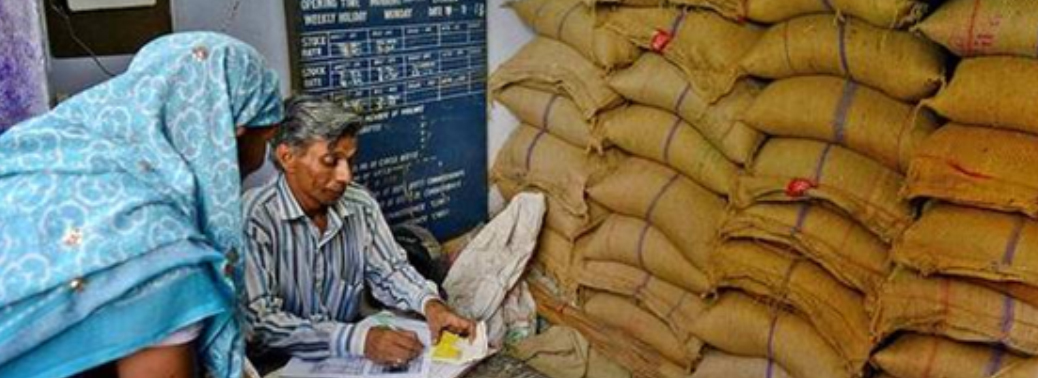
Why in News:
- The government is showcasing the rollout of the ‘One Nation One Ration Card’ scheme as one of the biggest achievements of its first 100 days in power. The launch of the nationwide food security net is scheduled for June 2020.
About the Current Scheme:
- Under the National Food Security Act (NFSA), each beneficiary is eligible for five kg of subsidised grains per month at the rate of ₹3/kg for rice, ₹2/kg for wheat and ₹1/kg of coarse cereals.
Issues with the Current Scheme:
- It has been a location-linked benefit, leaving crores of migrant workers and families out of the food safety net.
- Each household’s ration card is linked to a specific fair price shop and can only be used to buy rations in that particular shop.
Proposed Scheme:
- The proposed scheme envisages a scenario where in a ration card holder can buy subsidised grain at any fair price shop in the country.
Benefits of the Proposed Scheme:
- According to Census 2011, there are more than 45 crore internal migrants in India, of whom more than half have not completed primary education, while 80% have not completed secondary education.
- Lower levels of education are linked to lower income, which would make a large percentage of these migrants eligible for NFSA benefits.
- Registering for ration cards at their new location is an arduous process, especially if some members of the household still remain in their original home.
- Apart from this, there are short-term migrants, often working in cities, but not moving there permanently.
- Women who change locations after marriage also find it difficult to start accessing ration benefits using a new household’s card.
- To curb corruption and improve access and service quality by removing monopolies.
UJJWALA YOJANA ACHIEVES TARGET
08, Sep 2019
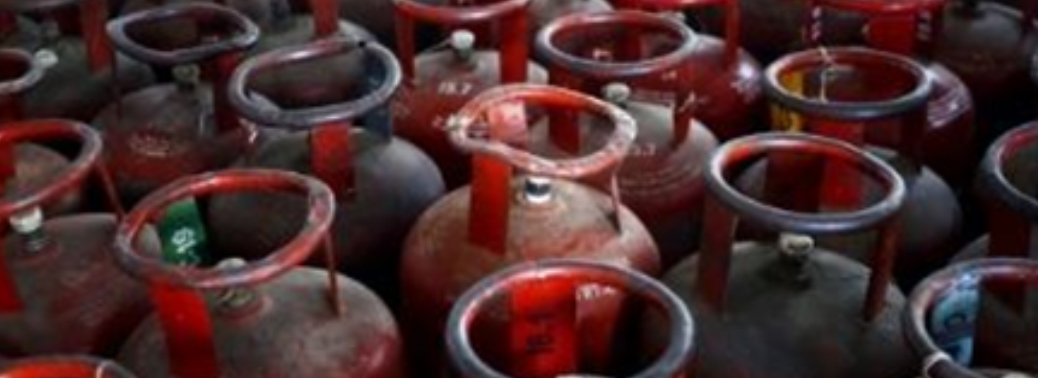
Why in News?
- The PM addressed a state-level Mahila Saksham Melava or Empowered Women’s Meet of Self Help Groups, organized by Maharashtra State Rural Livelihood Mission (UMED), in Aurangabad
- Marking the ahead-of-date achievement of 8 crore LPG connections under Pradhan Mantri Ujjwala Yojana, the PM distributed LPG connections to five beneficiaries.
- The PM said that Jal Jeevan Mission has been launched in order to free women from the trouble of having to toil hard to fetch water.
Pradhan Mantri Ujjwala Yojana:
- The PMUY is a scheme to provide LPG (liquid petroleum gas) to households below the poverty line. This is to have universal coverage of cooking gas in the country. The chief aim of this scheme to protect the health of the women and children in homes where unclean cooking fuels are used.
- About 10 crore households in the country use firewood, dung cakes, coal, etc. as their cooking fuel.
- The smoke emanating from such stoves are alarming and they cause severe health problems for the people living in such houses, especially the women who use them to cook food.
- As per WHO, about 5 lakh fatalities in India occur because of unclean cooking fuel.
- They cause severe respiratory diseases and problems as well.
- Additionally, there is also the hassle of collecting firewood from mostly unsafe places.
- To avoid these problems, the government came up with this scheme.
- It was inaugurated in Ballia, Uttar Pradesh by the Prime Minister Narendra Modi on 1st May, 2016.
- This will go a long way in making women more empowered.
PMUY Features:
- Under this scheme, 5 crore connections are to be provided to the people needing them.
- BPL families will be offered a support of Rs.1600 per connection. This is for the cylinder, booklet, pressure regulator, safety hose, etc. and will be borne by the government itself.
- Apart from these, the scheme also provides interest-free loans to buy stove and refill by oil marketing companies.
- The connections would be given in the name of women of the households.
- An initial outlay of Rs.8000 crore was sanctioned for the implementation of the scheme.
- The authorities would identify BPL families based on the Socio Economic Caste Census data.
- The scheme is also expected to create employment to the tune of about a lakh. It will also boost the ‘Make in India’ programme for manufacturers of gas cylinders, stoves, gas hose and regulators. Only domestic manufacturers are engaged in this.
- It is also a business opportunity to the tune of a minimum of Rs.10000 crore.
Jal Jeevan Mission:
- Major objective of Jal Jeevan Mission is to provide piped water supply (Har Ghar Jal) to all rural and urban households by 2024.
- It also aims to create local infrastructure for rainwater harvesting, groundwater recharge and management of household waste water for reuse in agriculture.
- According to the data published in various reports, about half of the country’s households don’t have access to piped water supply.
- It is an urgent requirement of water conservation in the country because of the decreasing amount of groundwater level.
- Therefore, Jal Jeevan Mission will focus on integrated demand and supply management of water at the local level.
Benefits of Jal Jeevan Mission:
- Household pipeline water supply
- Clean and drinkable water
- Recharge of ground water level
- Better local infrastructure
- Less water-borne diseases
- Less water wastage
INDIA DECLARED AVIAN INFLUENZA FREE
07, Sep 2019

Context-
- OIE-World Organisation for Animal Health declared the country free of the virus, the Centre’s Animal Husbandry Department informed the states in a letter.
Background:
- In the last two years, outbreaks of the disease had been reported from several places, including Budhibara, Patharaganja, Malud, Brahmandeo, Kanheipur, Epinga and Nandala in Odisha, Goraho, Mubarakchak and Babura in Bihar and Fazil Khuthari in Jharkhand.
- The status will last only till another outbreak is reported.
- India was last declared free of the disease in 2017.
What is Avian Influenza?
- Avian influenza refers to the disease caused by infection with avian (bird) influenza (flu) Type A viruses.
- These viruses occur naturally among wild aquatic birds worldwide and can infect domestic poultry and other bird and animal species.
- Avian flu viruses do not normally infect humans.
- However, sporadic human infections with avian flu viruses have occurred. The links below offer more information about avian influenza.
Brief Scenario on Outbreaks of Avian Influenza in India.
- The trend of infection of Avian Influenza has changed. Initially, in India, the disease was being reported mainly in backyard poultry in vicinity of migratory birds/ water bodies particularly in North-Eastern States and West Bengal.
- The main species affected used to be chicken.
- The ducks used to be reservoir of the virus, harbouring the infection without showing the clinical signs/ disease.
- However, the trend of occurrence of AI changed since 2011, gradually and most of the occurrences were reported from the poultry farms of central government such as DADF, ICAR and State Governments.
Possible reasons for occurrence of Avian Influenza:
- A number of factors contribute to make India vulnerable to primary incursion of Avian Influenza into the country.
- These include high density of poultry population;
- Mixed Rearing of chicken and ducks;
- Three flyways of migratory birds passing through the country;
- Illegal Movement of poultry and poultry products from infected areas into the country;
- Presence of large number of water-bodies visited by migratory / wild birds;
- Inadequate bio-security in backyard rearing;
- Inadequate sanitation of wholesale and retail poultry markets;
- Endemic Situation of Avian Influenza in the neighbouring countries and
- Porous Nature of the Border.
What is H5N1?
- H5N1 is a type of influenza virus that causes a highly infectious, severe respiratory disease in birds called avian influenza (or “bird flu”).
- Human cases of H5N1 avian influenza occur occasionally, but it is difficult to transmit the infection from person to person.
- When people do become infected, the mortality rate is about 60%.
How does H5N1 influenza spread to people?
- Almost all cases of H5N1 infection in people have been associated with close contact with infected live or dead birds, or H5N1-contaminated environments.
- The virus does not infect humans easily, and spread from person to person appears to be unusual.
- There is no evidence that the disease can be spread to people through properly prepared and thoroughly cooked food.
Why is there so much concern about H5N1 influenza?
- H5N1 infection in humans can cause severe disease and has a high mortality rate.
- If the H5N1 virus were to change and become easily transmissible from person to person while retaining its capacity to cause severe disease, the consequences for public health could be very serious.
Why might the H5N1 influenza Virus Change?
- Influenza viruses constantly undergo genetic changes.
- It would be a cause for concern, should the H5N1 virus become more easily transmissible among humans.
What are the Symptoms of H5N1 Avian Influenza in Humans?
- The symptoms of H5N1 infection may include fever (often high fever, > 38°C) and malaise, cough, sore throat, and muscle aches. Other early symptoms may include abdominal pain, chest pain and diarrhoea.
- The infection may progress quickly to severe respiratory illness (for example, difficulty breathing or shortness of breath, pneumonia, Acute Respiratory Distress Syndrome) and neurologic changes (altered mental status or seizures).
Is a vaccine available to prevent human infection with H5N1avian Influenza?
- Candidate vaccines to prevent H5N1 infection have been developed, but they are not ready for widespread use.
What is the WHO response to H5N1 Influenza?
- WHO is working with countries to help them detect and manage cases of H5N1 infection in humans when they occur.
- WHO collaborates with global health partners and agencies, including the World Organisation for Animal Health (OIE), and the Food and Agriculture Organization of the United Nations (FAO), to control and prevent the spread of animal diseases.
- WHO’s global laboratory system, the Global Influenza Surveillance and Response System (GISRS), identifies and monitors strains of circulating influenza viruses, and provides advice to countries on their risk to human health and available treatment or Control Measures.
World Organisation for Animal Health (OIE):
- The OIE is the intergovernmental organisation responsible for improving animal health worldwide.
- It is recognised as a reference organisation by the World Trade Organization (WTO) and in 2018 has a total of 182 Member Countries.
- The OIE maintains permanent relations with nearly 75 other international and regional organisations and has Regional and sub-regional Offices on every continent.
ELIMINATION OF MEASLES AND RUBELLA BY 2023
06, Sep 2019

Context:
- Member Countries of WHO South-East Asia Region resolved to eliminate measles and rubella by 2023, to prevent deaths and disabilities caused by these highly infectious childhood killers’ diseases.
Background:
- The new target to eliminate both the diseases will leverage the existing momentum and strong political commitment which is being demonstrated through unprecedented efforts, progress and successes.
- A resolution to eliminate the two diseases was adopted at the Seventy Second Session of WHO Regional Committee for South-East Asia here in New Delhi.
- Measles elimination and rubella control has been a regional flagship priority since 2014.
- The Member countries adopted a “Strategic Plan for Measles and Rubella Elimination 2020-2024” that lays down the road map and focus areas to achieve the elimination targets in the Region.
Countries that Eliminated Measles and Rubella:
- Five countries have eliminated measles – Bhutan, DPR Korea, Maldives, Sri Lanka and Timor-Leste.
- Six countries have controlled rubella – Bangladesh, Bhutan, Maldives, Nepal, Sri Lanka and Timor-Leste.
What will be done Eliminate Measles and Rubella?
- To achieve the new targets, the Member countries resolved to strengthen immunization systems for increasing and sustaining high level of population immunity against measles and rubella at both national and sub-national levels.
- The resolution calls for ensuring a highly sensitive laboratory supported case-based surveillance system – better evidence for appropriate planning and response. It also emphasizes on preparedness for outbreak response activities for measles and rubella.
- All countries pledged to mobilize political, societal and financial support to ensure interruption of transmission of indigenous measles and rubella virus by 2023.
Current Status:
- There has been a 23% decline in mortality due to measles in the 2014-17 period. Nearly 366 million children have been reached through mass vaccination campaigns with measles-rubella (MR) containing vaccines in the Region since January 2017.
- Children in all 11 Member countries have access to 2 doses of measles containing vaccine (MCV) and ten countries have access to rubella-containing vaccine.
- India ranks 4th among 194 countries in measles cases, according to WHO data.
- The latest Global Measles and Rubella Update, which lists provisional data received in June and covering the period between May 2018 and April 2019, says India reported 47,056 measles cases and 1,263 rubella cases during these 12 months.
Measles:
- Measles is a highly contagious viral disease.
- It remains an important cause of death among young children globally, despite the availability of a safe and effective vaccine.
- Measles is transmitted via droplets from the nose, mouth or throat of infected persons. Initial symptoms, which usually appear 10–12 days after infection, include high fever, a runny nose, bloodshot eyes, and tiny white spots on the inside of the mouth. Several days later, a rash develops, starting on the face and upper neck and gradually spreading downwards.
Vaccine:
- Measles can be prevented with MMR vaccine. The vaccine protects against three diseases: measles, mumps, and rubella.
- CDC recommends children get two doses of MMR vaccine, starting with the first dose at 12 through 15 months of age, and the second dose at 4 through 6 years of age.
- Teens and adults should also be up to date on their MMR vaccination.
Rubella:
- Rubella is a contagious, generally mild viral infection that occurs most often in children and young adults.
- Rubella is the leading vaccine-preventable cause of birth defects. Rubella infection in pregnant women may cause fatal death or congenital defects known as congenital rubella syndrome.
- There is no specific treatment for rubella but the disease is preventable by vaccination.
Vaccine:
- The rubella vaccine is a live attenuated strain, and a single dose gives more than 95% long-lasting immunity, which is similar to that induced by natural infection.
- The rubella vaccine is a live attenuated strain, and a single dose gives more than 95% long-lasting immunity, which is similar to that induced by natural infection.
Indian Government Initiatives:
Measles-Rubella (MR) Vaccination Campaign:
- Ministry of Health & Family Welfare has initiated measles-rubella (MR) vaccination campaign in the age group of 9 months to less than 15 years in a phased manner across the nation. The campaign aims to cover approximately 41 crore children.
- The vaccination campaign is being held to protect children against measles and rubella which are highly contagious viral diseases. While measles kills nearly 49,000 children in the country every year, rubella causes irreversible birth defects.
- There is no treatment for measles and rubella, but both diseases can be prevented by vaccination.
- By vaccinating all children in the age group of 9 months to 15 years, India aims to eliminate both measles and rubella.
Benefits:
- Measles immunization directly contributes to the reduction of under-five child mortality, and in combination with rubella vaccine, it will control rubella and prevent CRS.
How Sri Lanka Eliminated Measles:
- Sri Lanka’s success follows its persistent efforts to ensure maximum coverage with two doses of measles and rubella vaccines being provided in the childhood immunisation programme.
- The vaccination coverage in the country has been consistently high – over 95% with both the first and second doses provided to children under the routine immunisation programme. nAdditionally, mass vaccination campaigns with a measles-rubella vaccine have been held periodically to plug immunisation gaps, the last one in 2014.
- The country has a strong surveillance system and all vaccine-preventable diseases are an integral part of the communicable disease surveillance system.
- Measles is a notifiable disease in the country.
INSTITUTIONS OF EMINENCE (IOE) SCHEME
06, Sep 2019

Why in News?
- The Human Resource Development Ministry has awarded the status of Institute of Eminence to the IIT-Madras, the IIT-Kharagpur, Delhi University, Benares Hindu University and the University of Hyderabad.
Scheme & Objective:
- Institutions of Eminence scheme has been launched in order to implement the commitment of the Government to empower the Higher Educational Institutions and to help them become world-class teaching and research institutions.
- To provide for higher education leading to excellence and innovations in such branches of knowledge as may be deemed fit at post-graduate, graduate and research degree levels and award degrees, diplomas and other academic distinction
- To engage in areas of specialization to make distinctive contributions to the objectives of the university education system wherein the academic engagement is clearly distinguishable from programmes of an ordinary nature.
- To develop the capacity of the students and the researchers to compete in the global tertiary education marketplace through the acquisition and creation of advanced knowledge in those areas
- To provide for high-quality teaching and research and for the advancement of knowledge and its dissemination through various research programmes undertaken in-house by substantial number of full-time faculty and research scholars in diverse disciplines
- To pay special attention to teaching and research in unique and emerging areas of knowledge, including interdisciplinary areas, which are regarded as important for strategic needs of the country but are not being pursued by conventional or existing institutions so far, and award degrees, diplomas and other academic distinctions.
- To aim to be rated internationally for its teaching and research as a top hundred Institution in the world over time.
‘EAT RIGHT INDIA’ CAMPAIGN
06, Sep 2019

Why in News?
- Government of India launches ‘Eat Right India’ to tackle lifestyle diseases.
Need for Such Campaign:
- India is passing through an epidemiological shift from communicable to non-communicable diseases, and the burden of diet-related diseases such as diabetes, hypertension, and obesity is rising rapidly.
- The new “food systems approach” judiciously combines the regulatory and capacity building measures with consumer empowerment initiatives
About Eat Right India:
- Eat Right India’, built on two broad pillars of ‘Eat Healthy’ and ‘Eat Safe’, aims to engage, excite and enable citizens to improve their health and well-being.
- Led by FSSAI, it is a collective effort to make both the demand and supply-side interventions through the engagement of key stakeholders.
- It is a part of the vision of the Hon. Prime Minister Shri Narendra Modiji, that the month of September is being celebrated all across the country as “Poshan Maah” (Nutrition Month) to sensitize the public towards healthy eating, address the twin issues of malnutrition/undernutrition and problem of obesity in some sections of the population, and also intensifying the campaign towards a ‘Malnutrition Free India.
- This movement is aligned with the Government’s flagship public health programmes such as POSHAN Abhiyaan, Ayushman Bharat Yojana and Swachh Bharat Mission to lead us to the New India, which our Prime Minister wishes to deliver to all citizens by 2022.
Aim:
- To improve public health in India and combat negative nutritional trends to fight lifestyle diseases.
Features:
- The strength of the ‘The Eat Right Movement’ lies in its holistic and collaborative approach, with stakeholders on both the demand and supply-side joining to make a difference through some clearly identified steps.
- On the demand side, the Eat Right Movement focuses on empowering citizens to make the right food choices.
- On the supply side, it nudges food businesses to reformulate their products, provide better nutritional information to consumers and make investments in healthy food as responsible food businesses.
- Social and behavioural change: Eat Right India movement is a crucial trigger for the much needed social and behavioural change.
The Eat Right Movement’ brings together three ongoing initiatives of FSSAI:
- Safe and Nutritious Food Initiative, focused on social and behavioural change around food safety and nutrition at home, school, workplace and on-the-go;
- The Eat Healthy Campaign focused on reduction of high fat, sugar and salt foods in the diet; and
- Food Fortification, focused on promoting five staple foods-wheat flour, rice, oil, milk and salt that are added with key vitamins and minerals to improve their nutritional content.
Other Measures:
- Government has prescribed a limit for Total Polar Compounds (TPC) at 25% in cooking oil to avoid the harmful effects of reused cooking oil.
- Standards for five fortified staples -wheat flour, rice, oil, milk and salt to reduce large-scale deficiencies of vitamins and minerals have been notified, in addition to standards for health supplements, nutraceuticals, prebiotics and probiotics products.
- To facilitate informed consumer choices Regulations on Advertising and Claims and mandatory menu labelling has been notified.
- In addition, labelling provisions have been made for appropriate use of sweeteners for children and pregnant women.
- To reach the target of Trans-fat Free India by 2022, regulations to reduce trans-fat to less than 2% in all oils, fats and food products are in place.
- Robust material in the form of a Pink Book, Yellow Book, DART Book, informative videos, are in place, and can be accessed through a video library on FSSAI’s website.
- First ever state-of-the-art National Food Laboratory of Delhi, NCR and to strengthen the Eat Right Movement a network of food testing laboratories is being establish.
WHO on Eat Right India:
- The Eat Right campaign is a true example of multi-sectoral collaborative approach that WHO has been advocating for to address non-communicable diseases such as heart diseases, high blood pressure, diabetes, obesity, malnutrition.
About FSSAI:
- Food Safety and Standards Authority of India (FSSAI) is an autonomous statutory body established under Food Safety and Standards Act, 2006 which consolidates various acts & orders that have hitherto handled food related issues in various Ministries and Departments.
- FSSAI has been created for laying down science-based standards for articles of food and to regulate their manufacture, storage, distribution, sale and import to ensure availability of safe and wholesome food for human consumption.
- Establishment of the Authority
- Ministry of Health & Family Welfare, Government of India is the Administrative Ministry for the implementation of FSSAI.
ELECTORS VERIFICATION PROGRAMME
05, Sep 2019
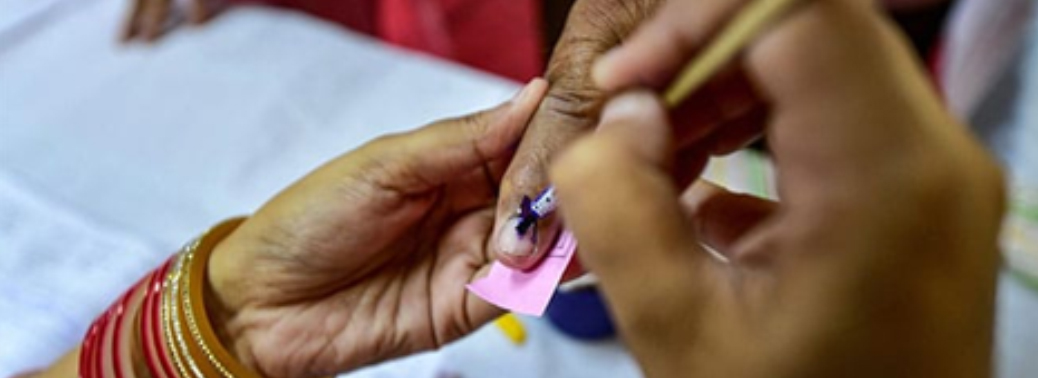
Why in News?
- The Election Commission of India has launched a 15-day-long Electors Verification Programme where voters can verify their data with the poll body.
- The campaign that was kick-started on 01 September allows the voter to let the poll body know whether the data about him or her is correct
Electors Verification Programme:
- The main aim of the programme is to improve the health of Electoral rolls and to provide better electoral services to citizens and increase the level of Communication between voters and the Commission.
- The program has been launched at all Levels starting from the State/UT Headquarters by 32 CEOs, District level by about 700 DEOs and at around 1 million Polling Stations by BLOs/EROs and will continue from September 1, 2019 to October 15, 2019.
- The voters can log on to NVSP portal (nvsp.in) or Voter Helpline App or Common Service Centres or any nearby voter facilitation centre to avail the following facilities.
- Verification and corrections of the existing details
- Authentication of entry by furnishing scanned/DigiLocker copy of one of the following documents:(i) Indian Passport (ii) Driving License (iii) Aadhaar Card (iv) Ration Card (v) identity card for Government/Semi Government Officials (vi) Bank Passbooks (vii) Farmer’s Identity Card (viii) PAN Card (ix) Smart Card issued by RGI (x) Latest bill for water/electricity/telephone/gas connection.
- Furnishing details of family members and verifying their entries too
- Updating details of family members already enrolled as voters but permanently shifted or expired
- Furnishing details of eligible un-enrolled family members (born on or before 01.01.2001) and prospective electors born between (02.01.2002 till 01.01.2003) who are residing with the elector.
- Furnishing GIS Coordinates of House (through Mobile App) to avail better electoral Services. Feedback regarding existing Polling Stations and suggestions on alternate PS, if any.
DESIGNATING TERRORIST UNDER UAPA
05, Sep 2019
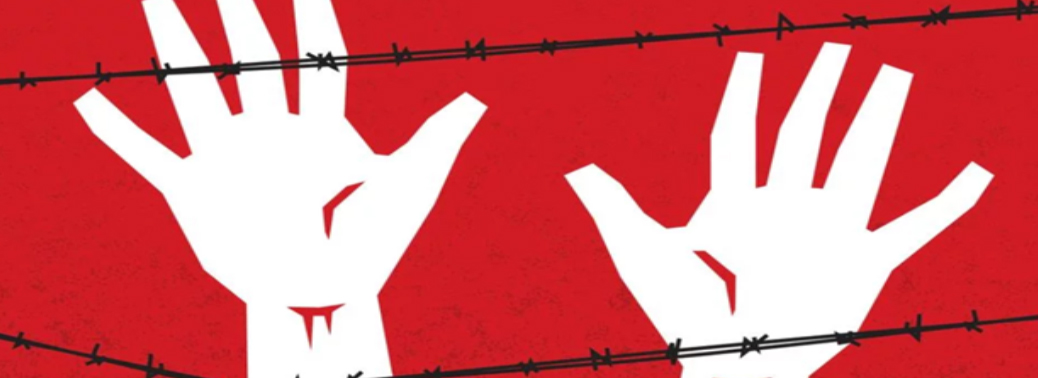
Context:
- Maulana Masood Azhar, Hafiz Saeed, Zaki-ur-Rehman Lakhvi and Dawood Ibrahim, who are on India’s most-wanted list, became the first individuals to be declared terrorists invoking the new Amendments to the Unlawful Activities (Prevention) Act Passed by Parliament recently.
Designation of Terrorist:
- Jaish-e-Mohammad (JeM) chief Azhar figures as the first name in list in Fourth Schedule of UAPA followed by Lashkar-e-Taiba (LeT) chief Saeed, LeT chief commander Lakhvi and underworld don Dawood.
- All of them have already been designated global terrorists by the United Nations earlier for their involvement in terrorist acts and have red corner notices issued against them by the Interpol.
UAPA new Amendment Provision:
- According to the amendment, individuals could also be declared as terrorists. Earlier, only groups or organisations could be declared as terrorists.
- The notification was issued based on clause (a) of sub-section (1) of section 35 of the Unlawful Activities (Prevention) Act which empowers the Central government to notify the name of an individual in the fourth schedule to the Act, if it believes that the individual is involved in terrorism.
- The new Amendment seek “to introduce fourth schedule to add or remove the name of individual terrorists.
- This will allow the Central government to designate individual terrorist and bring in embargo on arms/assets seizures.
- The individual however can appeal against the inclusion of his/her name and seek a hearing before the review committee, constituted by the Central government under UAPA.
United Nations:
- Azhar has been designated as a global terrorist by the United Nations under the United Nations Security Council Resolution 1267 on May 1 this year.
- Dawood is also designated as a global terrorist by the United Nations under the United Nations Security Council Resolution 1267 and listed in Al-Qaeda sanction list on November 3, 2003.
Issues already with Unlawful Activities Prevention Act, 1967 (UAPA):
- It casts such a wide net of offences that it makes all kinds of legitimate, constitutionally protected activity an offence: the police can choose who they want to prosecute, when and for what reason.
- It allows for persons to be held in custody for six months before they get to know the case against them.
- Bail is so stringent as to be almost unavailable, this is an affront to the ‘dignity’ and the ‘presumption of innocence’ that our Constitution entitles all of us to.
- It reverses the presumption of innocence and presumes guilt, a guarantee of wrongful imprisonment and false convictions.
WHO IS A PROFESSOR EMERITUS?
04, Sep 2019
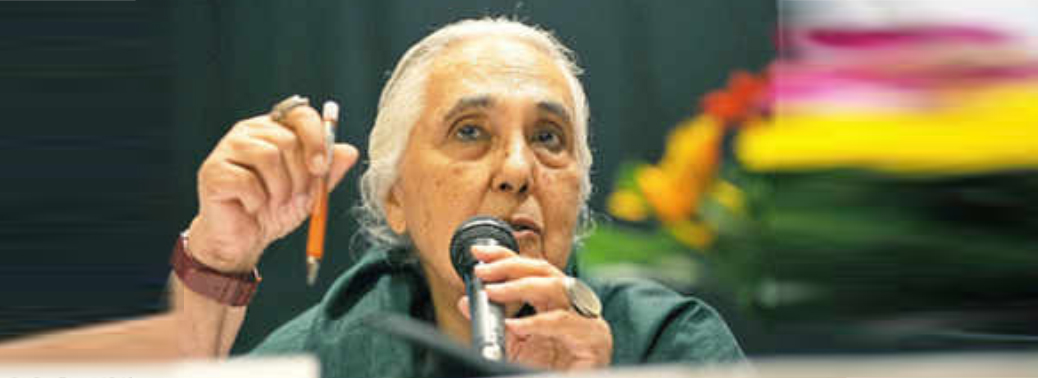
Context:
- Jawaharlal Nehru University (JNU) has recently asked some of its Professors Emeriti, including historian Romila Thapar, for CVs to “review their position”.
The Title:
- ‘Emeritus’ (female equivalent ‘Emerita’, although the usage is often gender-neutral) is a Latin word that literally means a veteran soldier. Worldwide, ‘Professor Emeritus/Emerita’ is the title bestowed upon an eminent retired academic in recognition of their work and distinguished service.
- Across the world, institutions of excellence such as the Massachusetts Institute of Technology, Harvard University, and Oxford University, etc. have long lists of Professors Emeriti, who are considered to add to the prestige of the university.
UGC Scheme:
- In India, the University Grants Commission (UGC) has a ‘Scheme of Emeritus Fellowship’ in order “to provide an opportunity to the superannuated teachers who have been actively engaged in research and teaching programmes in the preceding years to undertake research, without any restriction of position or pay scales”.
- According to the UGC’s website, eligibility for the fellowship “will be based on the quality of research and published work contributed by the teacher in his/her service career. The awardee (superannuated) can work under this scheme with a well-defined time-bound action plan up to the age of 70 years or up to two years (non-extendable) of the award whichever is earlier.”
- “No extension under the scheme is admissible and hence the proposal should be well defined with a time-bound action plan so that it is completed within the prescribed tenure,” the UGC site says.
MOU BETWEEN TB DIVISION OF THE HEALTH MINISTRY AND WADHWANI INSTITUTE FOR ARTIFICIAL INTELLIGENCE
02, Sep 2019
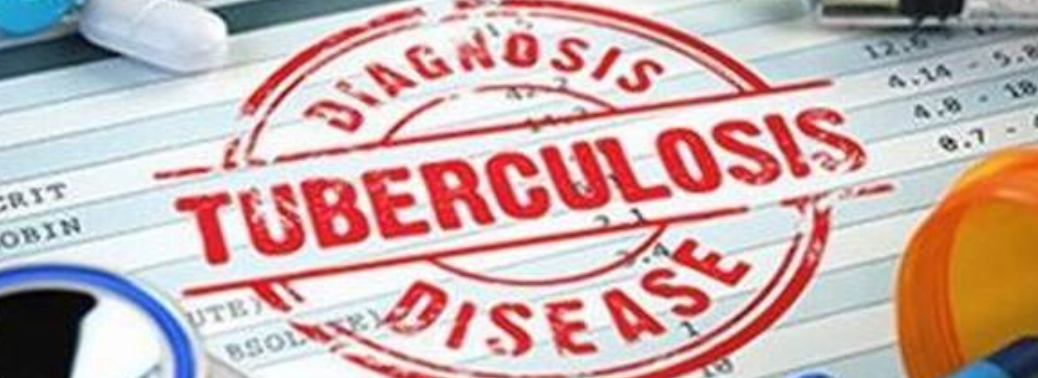
Why in News?
- The Central TB Division of the Health Ministry has signed a Memorandum of Understanding (MoU) with Wadhwani Institute for Artificial Intelligence to explore the application of cutting-edge Artificial Intelligence technology in its fight against TB.
Highlights:
- Wadhwani AI would be supporting National TB programme become AI-ready which would include, developing, piloting, and deploying AI-based solutions.
- It would support the programme in vulnerability and hot-spot mapping, modelling novel methods of screening and diagnostics and enabling decision support for care-givers apart from supporting the RNTCP in adoption of other AI technologies.
- The Revised National TB Control Programme has been at the forefront of adoption of newer technologies in healthcare.India is committed to ending TB by 2025, five years ahead of the Global Sustainable Development targets.
TB:
- Tuberculosis (TB) is caused by bacteria (Mycobacterium tuberculosis) that most often affect the lungs. Tuberculosis is curable and preventable.
- TB is spread from person to person through the air. When people with lung TB cough, sneeze or spit, they propel the TB germs into the air.
- A person needs to inhale only a few of these germs to become infected.
What are Latent TB and active TB?
- Latent TB: In this condition, you have a TB infection, but the bacteria remain in your body in an inactive state and cause no symptoms. Latent TB, also called inactive TB or TB infection, isn’t contagious. It can turn into active TB, so treatment is important for the person with latent TB and to help control the spread of TB. About one-third of the world’s population has latent TB.
- Active TB: This condition makes you sick and, in most cases, can spread to others. It can occur in the first few weeks after infection with the TB bacteria, or it might occur years later.
PORTAL FOR AFFORDABLE CREDIT AND INTEREST SUBVENTION ACCESS (PAISA)
31, Aug 2019
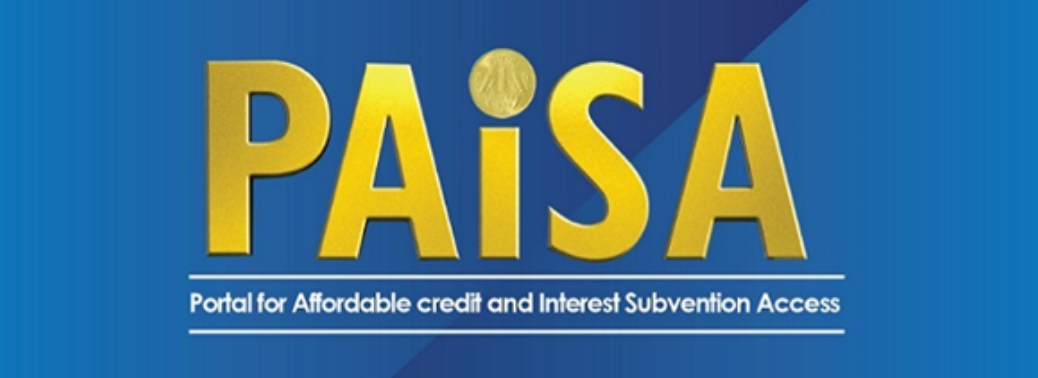
Why in News?
- Deendayan Antyodaya Yojana-National Urban Livelihoods Mission (DAY-NULM), a flagship mission under the MoHUA has been conferred the prestigious SKOCH Governance Gold Award for its PAiSA portal.
PAiSA Portal:
- PAiSA stands for Portal for Affordable Credit and Interest Subvention Access.
- Launched in November 2018, PAiSA is a centralized IT platform which simplifies and streamlines release of interest subvention under the DAY-NULM.
- It has been designed and developed through the Allahabad Bank.
What it offers?
- It offers end to end online solution for processing, payment, monitoring and tracking of interest subvention claims from banks on a monthly basis.
- Claims for subvention are uploaded by banks through their CBS (Core Banking Solution) in respect of the beneficiaries of the Self Employment Programme, which are verified and approved by the ULB and State concerned.
- The approved claim amount gets credited directly to the beneficiary’s loan account through DBT mode.
- SMS is also sent to the beneficiary’s mobile number intimating the credit of subvention amount.
SKOCH Award:
- SKOCH Award, instituted in 2003, is the highest civilian honour in the country conferred by an independent organisation.
- It recognizes people, projects and institutions that go the extra mile to make India a better nation.
- SKOCH Award covers the best of efforts in the area of digital, financial and social inclusion.
BIOMETRIC SEAFARER IDENTITY DOCUMENT (BSID)
30, Aug 2019
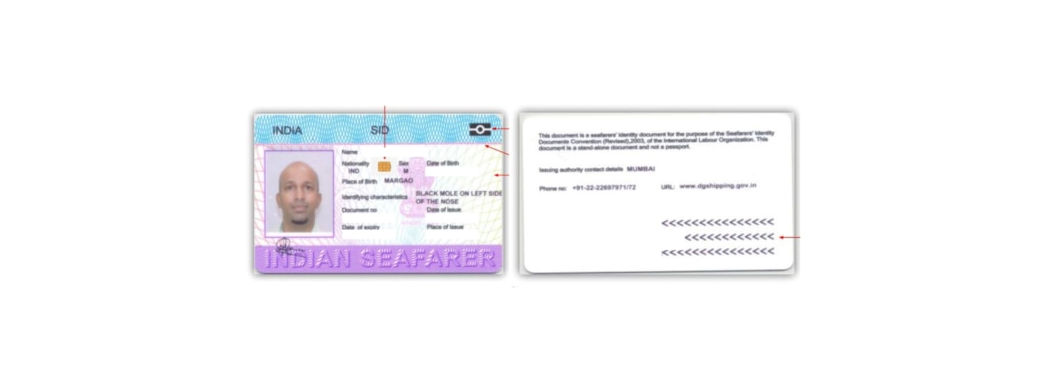
Why in News?
- India has become the first country in the world to issue Biometric Seafarer Identity Document (BSID), capturing the facial bio-metric data of seafarers.
BSID:
- In India the BSID project has been taken up in collaboration with Centre for Development of Advanced Computing (CDAC), Mumbai.
- The Government notified the Merchant Shipping (Seafarers Bio-metric Identification Document) Rules in 2016.
- Every Indian seafarer who possesses a valid Continuous Discharge Certificate issued by the Govt. of India will be eligible for issue of a BSID.
- Nine data collection centers have been setup at Mumbai, Kolkata, Chennai, Noida, Goa, New Mangalore, Kochi, Vizag & Kandla for issue of BSID.
Working of BSID:
- It introduces modern security features. It will have a biometric chip embedded in it.
- The security of the BSID card is ensured at various levels and through different methods.
- At the time of data capturing the live face is cross matched through passport photo using a face matching software.
- The card has two optical security features- Micro prints/micro texts and Unique Guilloche pattern.
- A software has been developed for capturing the facial biometrics and its authentication through the public key infrastructure.
- A record of each SID issued will be maintained in a national database and its related information will be internationally accessible.
Significance:
- The BSID is a marked improvement over the two finger or iris based bio-metric data, with modern security features.
- It will make the identification of the SID holder more reliable and efficient, while protecting their dignity and privacy.
- It will give a fool proof identification to our seafarers which will facilitate their movement, provide ease of getting jobs and help in identifying them from any location in the world.
- The new card is in confirmation of the Convention No. 185 of the International Labour Organisation on BSID. (India ratified the Convention in October 2015.
SHAGUN-INTEGRATED ONLINE JUNCTION FOR SCHOOL EDUCATION
30, Aug 2019
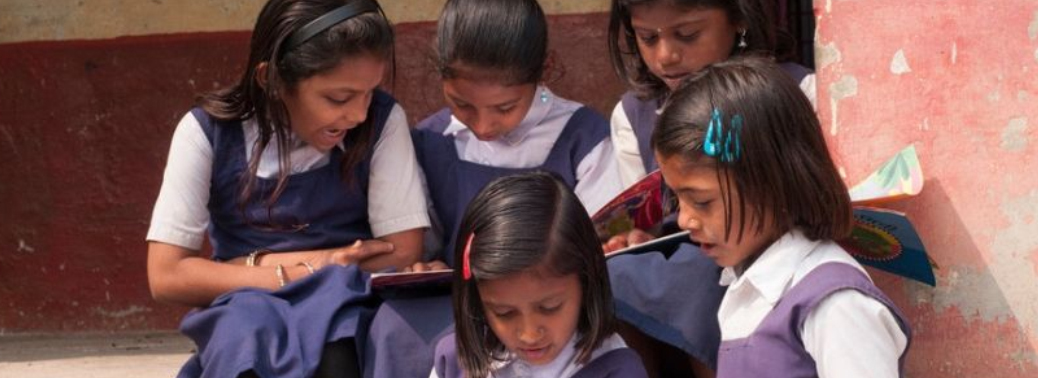
Why in News?
- The Human Resource Development Ministry launched one of the world’s largest Integrated Online Junction for – School Education ‘Shagun’.
Shagun:
- School Education Shagun (URL: htpp://shagun.govt.in/) is an over-arching initiative to improve school education system by creating a junction for all online portals and websites relating to various activities of the Department of School Education and Literacy in the Government of India and all States and Union Territories.
- The word Shagun is coined from two different words- ‘Shala’ meaning Schools and ‘Gunvatta’ meaning Quality and this online junction of different websites and portals into a single platform will enhance the accessibility of information relating to schools and will ensure a holistic approach to transform the education sector.
- The portal seeks to provide a very robust feedback mechanism which will increase public participation and will ensure accountability and transparency.
- The portal seeks to connect approximately 92 lakh teachers and 26 crore students.
Integrated National School Education Treasury:
- Union Human Resource Development Minister has also announced the setting up of the Integrated National School Education Treasury (INSET).
- It will envisage a fully integrated, accessible and seamless information network for all parameters relating to the students, teachers, and schools in the country.
- The main focus will be on the following areas:
- Reinforcing and cleaning the data of the Integrated Online Junction through feedback from Stakeholders
- Ensuring full inter-operability among the websites, portals and applications which are already hosted in the junction
- Creating high quality e-contents, including quizzes and puzzles to enhance learning and also for teachers in aiding classroom transactions
- Using artificial intelligence and deep machine learning in a variety of ways to enhance the quality of school education including for designing evidence based inventions.
E-CIGARETTE BAN & THE SCIENCE BEHIND IT
30, Aug 2019

Why in News?
- One of the three 100-day goals the health ministry has set for itself, The Prohibition of E-cigarettes Ordinance 2019 is being sent to a Group of Ministers as directed by the Prime Minister’s Office.
What Are E-cigarettes?
- An e-cigarette, short for electronic cigarette, is a battery-operated device.
- One of a large variety of Electronic Nicotine Delivery Systems (ENDS), an e-cigarette emits vaporised nicotine, or non-nicotine solutions.
- The user inhales it looking for a sensation similar to inhaling tobacco smoke, but without the smoke.
- The pros and cons of e-cigarettes are hotly debated, with the industry refuting scientific evidence about the product being harmful, and users urging the government to legalise it. India’s market for e-cigarettes, while nascent today, is projected to grow annually at more than 25 per cent in the next five years.
The Prohibition of E-cigarettes Ordinance 2019:
- The draft ordinance was necessitated by the fact that an earlier order by the Centre asking the states to crack down against e-cigarettes could not stand judicial scrutiny.
- However, a recent order, in which the High Court threw out a petition asking for protection from an ordinance against e-cigarettes, has emboldened the Health Ministry, which now seeks legal backing for a ban (rather than just an advisory) in the form of an ordinance.
- The ordinance makes any violation of its provisions punishable by imprisonment of one to three years, and a fine of Rs 1-5 lakh.
- Some states, including Punjab, Karnataka, Kerala, Bihar, Uttar Pradesh, Himachal Pradesh, Tamil Nadu, Maharashtra, Jharkhand, Rajasthan and Mizoram, have already banned use and sale of e-cigarettes, vape and e-hookah.
- Under the Constitution, health is a state subject, so any move to ban manufacture and sale of a product on health grounds needs to come from the state government.
- In February, the Central Drugs Standards Control Organisation had written to all state drug controllers, saying they should not allow sale, online sale, manufacture, distribution, trade, import or advertisement of ENDS.
- The Delhi High Court stayed the Centre’s circular banning sale and manufacture of ENDS like e-cigarettes and e-hookah with nicotine flavour, saying as the products were not a “drug”.
Indian Council of Medical Research (ICMR)’s Scientific Position:
- The use of ENDS or e-cigarettes adversely affects almost all the human body systems with impact across the life course, from the womb to tomb.
- The cartridges used in ENDS or e-cigarettes are filled with liquid nicotine, flavouring agents and other chemicals.
- A typical cartridge contains about as much nicotine as a pack of 20 regular cigarettes and can act as a potential source for nicotine addiction.
- Studies on these nicotine solvents had shown a varied degree of release of potential carcinogens, depending on the battery output voltage.
- The liquid-vaporizing solutions also contain toxic chemicals and metals that have been demonstrated to be responsible for several adverse health effects, including cancers and diseases of the heart, lungs and brain.
Conclusion:
- The current unregulated sale of e-cigarettes is dangerous for a country like India where the number of smokers is on the decline (WHO Global Report, 2015) as it increases the possibility of e-cigarettes becoming a gateway for smoking by inducing nicotine addiction and perpetuating smoking by making it more attractive, thereby encouraging persons to become users of tobacco as well as e-cigarettes.
NOC ONLINE APPLICATION PROCESSING SYSTEM (NOAPS)
29, Aug 2019

Why in News?
- The Ministry of Culture & Tourism has launched an integrated No Objection Certificate (NOC) online Application Processing System (NOPAS) for National Monuments Authority (NMA) for 517 local bodies of six states.
Highlights:
- The online system automates the process of granting No-Objection Certificate (NOC) for construction-related work in the prohibited and regulated areas of the Archaeological Survey of India (ASI) protected monuments.
- NMA considers grant of permissions to applicants for construction-related activity in the prohibited and regulated area.
- National Monuments Authority (NMA) under the Ministry of Culture, has been set up as per provisions of the Ancient Monuments and Archaeological Sites and Remains AMASR (Amendment and Validation) Act, 2010.
- The applicant needs to fill up a single form which is being sent to the concerned agencies by the Urban Local Body, from whom No Objection Certificate (NOC) is required.
- The Portal has integration with the Smart ‘Smarac’ Mobile App of Indian Space Research Organization (ISRO), through which the applicant traverses his plot and the geo-coordinates of his plot along with the images get uploaded into the NIC portal along with the proximity and the approval status.
- NOAPS was launched by the NMA in September 2015 but was limited to only five urban local bodies in Delhi and one civic body in Mumbai. Now, the facility has been expanded to six more states: Madhya Pradesh, Andhra Pradesh, Haryana, Punjab, Jharkhand and Telangana.
HOW THE FORCES PROTECT VIPS IN INDIA?
29, Aug 2019
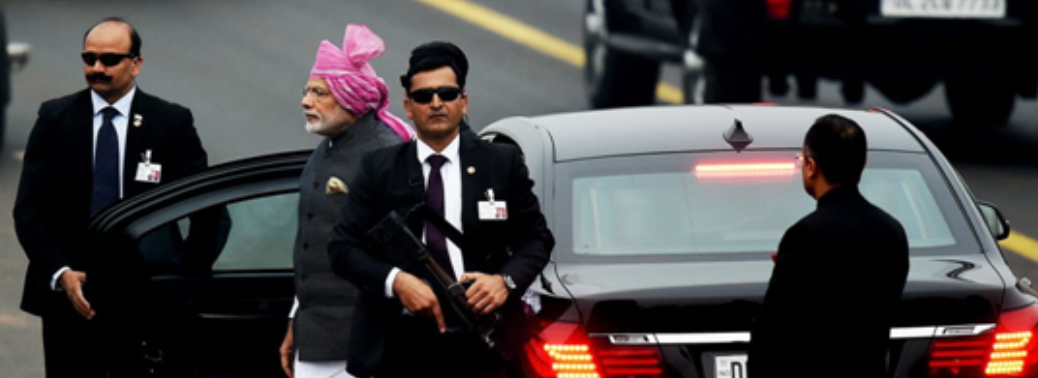
- Context: The Government recently downgraded the security cover of former PM Manmohan Singh, from Special Protection Group (SPG) to Z plus of the CRPF. The security cover of several other VIPs too has been downgraded.
How Does the Government Decide the Level of Protection an Individual Needs?
- The Home Ministry takes the decision based on inputs from intelligence agencies, which include the Intelligence Bureau and the Research and Analysis Wing.
- They largely give a subjective measure of threat to life or injury to a person from terrorists or any other group, based on information from their sources.
- Certain individuals, by dint of their position in government, are automatically entitled to security cover. These include the Prime Minister and his immediate family.
- The Home Minister and officials such as the National Security Adviser too generally get security cover on the basis of their position.
- Since none of the intelligence agencies in India is accountable to any statutory body, barring the internal oversight of the Home and External Affairs Ministries, VIP security is sometimes seen as open to manipulation.
- A number of protectees, it has been alleged, are under security cover for political reasons and not necessarily due to any real threat.
What Are the Various Protection Levels?
- There are largely six types of security covers: X, Y, Y plus, Z, Z plus and SPG.
- While SPG is meant only for the PM and his immediate family, other categories can be provided to anyone about whom the Centre or state governments have inputs about facing a threat.
- There are various kinds of cover within these levels. These include security of residence, mobile security, office security and inter-state security. Different VIPs are given different kinds of cover depending on threat perception.
- For example, if the Chhattisgarh CM is assessed to be facing a threat from Maoists only in his state, the Centre may choose to give him residence and mobile security only in his state, and appropriate security by the concerned state police when he travels out. Similarly, some may have a threat only when they travel, so they are given an escort force.
- Then, different forces may be engaged for residence and mobile security. Many protectees get residence security from state police and mobile security from a Central Armed Police Force (CAPF).
Genesis of SPG:
- In March 1985, following the recommendations of a committee set up by the Home Ministry, a special unit was created for this purpose under the Cabinet Secretariat. This unit, initially called the Special Protection Unit, was renamed as Special Protection Group in April 1985.
- Subsequently, the Parliament passed The Special Protection Group (SPG) Act, which was notified in June 1988 “to provide for the constitution and regulation of an armed force of the Union for providing proximate security to the Prime Minister of India and for matters connected therewith”.
- The SPG Act defined “proximate security” as “protection provided from close quarters, during journey by road, rail, aircraft, watercraft or on foot or any other means of transport” and to “include the places of functions, engagements, residence or halt”.
- Coverage: SPG protection was extended, apart from the Prime Minister, to “former Prime Ministers of India and members of their immediate families” through an amendment in the Act in the aftermath of the assassination of Rajiv Gandhi in May 1991.
KERALA, TAMIL NADU AND HIMACHAL TOP INDIA’S CHILD WELL-BEING INDEX
28, Aug 2019

Why in News?
- Child well-being index, a tool designed to measure and tracks children’s well-being comprehensively has been released.
Highlights:
- The report released by the non-government organisation World Vision India and research institute IFMR LEAD.
- The report is an attempt to look at how India fairs on child well-being using a composite child well-being index.
- The India child well-being index is a crucial report that can be mined both by the Government and civil organisations to achieve the goal of child well-being and we will use this report effectively.
- This report provides insights on health, nutrition, education, sanitation and child protection.
- The dimensions of the index include healthy individual development, positive relationships and protective contexts.
- Focusing on the three key dimensions, 24 indicators were selected to develop the computation of the child well-being index.
- The report highlights the multi-dimensional approach towards measuring child well-being — going beyond mere income poverty.
Significance of the Report:
- The report is important considering that 40 per cent of the country’s population is made of children between the ages of 1 and 18.
- The report, calls for States to look at their respective scores on the dimensions of child well-being, and to prepare for priority areas of intervention with specific plans of action.
- It also hopes to trigger policy level changes, seek better budgetary allocations and initiate discussions with all stakeholders, which can help in enhancing the quality of life of all children in the country.
- One of the primary objectives of this index is to garner attention to the under-researched theme of child well-being in India, and inspire further academic and policy conversations on related issues.
Performance of the states:
- Kerala, Tamil Nadu, Himachal Pradesh and Puducherry topped the charts in the child well-being index.
- Meghalaya, Jharkhand and Madhya Pradesh featured at the bottom.
- Among the Union Territories, Puducherry led the way and Dadra and Nagar Haveli featured at the other end.
- Kerala bagged the top spot due to its exceptional performance in health, nutrition and education facilities.
- Kerala also performed better in addressing malnutrition and ensuring child survival and access to a healthy environment in terms of clean drinking water and sanitation facilities.
MOBILE APPLICATION- “JANAUSHADHI SUGAM” LAUNCHED
28, Aug 2019

Why in News?
- Union Minister for Chemicals and Fertilizers launched a mobile application “Janaushadhi Sugam”.
Highlights:
- The minister announced that “Jan Aushadhi Suvidha Oxo-Biodegradable Sanitary Napkin” will now be available at only One Rupee per pad.
- Janaushadhi Sugam app will enable people to search for Janaushadhi generic medicines and the stores at the tip of their fingers.
- About 28 million girls are reported to be leaving education because of lack of availability of good quality Sanitary Napkin” pads at a reasonable cost.
- The Government of India launched “Jan Aushadhi Suvidha Oxo-Biodegradable Sanitary Napkin” at Rs 2.50 per pad on the eve of the World Environment Day
- Jan Aushadhi Suvidha comes with a special additive, which makes it biodegradable when it comes in contact with oxygen after being discarded.
- This is an important step in ensuring the health security for the section of Indian women who still use unhygienic aids during menstrual period due to non-affordability of sanitary pads available in the market.
- This will ensure ‘Swachhta, Swasthya and Suvidha’ for the underprivileged women of the country. This step was taken by the Department of Pharmaceuticals.
- “Janaushadhi Sugam” app would have user-friendly options like- to locate nearby stores, direction guidance for the location through Google Map.
- The app will also enable to search Janaushadhi generic medicines, analyse product comparison of Generic vs Branded medicine in form of MRP & overall Savings, etc.
ENHANCED OUTREACH ON HIV/AIDS PREVENTION
28, Aug 2019
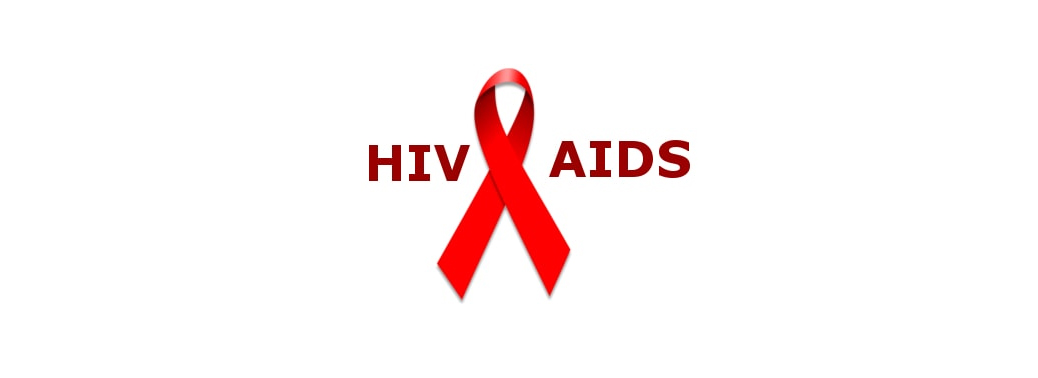
Why in News?
- The Ministry of Health and Family Welfare signed a Memorandum of Understanding (MoU) with the Ministry of Social Justice and Empowerment (MoSJE) for enhanced HIV/AIDS outreach.
Highlights:
- The MoU signing took place between the National AIDS Control Organisation (NACO) and the Department of Social Justice and Empowerment (DoSJE).
- The objective is to reduce the incidence of social stigma and discrimination against victims of drug abuse and Children and People Living with HIV/AIDS.
- The MoU will help in developing specific strategies and action plans for HIV and AIDS prevention and mechanisms for drug addiction treatment and extending social protection schemes to the vulnerable populations.
India’s current situation of HIV/AIDS:
- The National AIDS Control Organisation (NACO) is a division of the Ministry of Health and Family Welfare that provides leadership to HIV/AIDS control programme in India through 35 HIV/AIDS Prevention and Control Societies.
- NACO has played a very big role in significantly reducing the prevalence of HIV/AIDS in the country and that too faster than the global rates.
- More than 80% decline in estimated new infections from the peak of epidemic in 1995.
- Estimated AIDS-related deaths declined by 71% since its peak in 2005.
- As per the UNAIDS 2018 report, the global average for the decline in new infections and AIDS-related deaths from peak has been 47% and 51% respectively.
Antiretroviral Therapy:
- With neither a vaccine nor a cure in sight, Antiretroviral Therapy (ART) is the only option available for people living with HIV-AIDS.
- HIV is a type of virus called a retrovirus, and the combination of drugs used to treat it is called Antiretroviral Therapy (ART).
- According to the World Health Organization, standard ART consists of a combination of at least three antiretroviral drugs to suppress the HIV virus and stop the progression of the disease.
- Significant reductions have been seen in rates of death and suffering by the use of potent ART regimen, particularly in the early stages of the disease.
India’s Role in the Global Fight against AIDS:
- There are 2 million new AIDS infections every year, and about 66% of the world population currently on antiretroviral therapy consumes drugs manufactured in India.
- Globally, the ART market is valued at .48 billion (in 2018) and is expected to reach .83 billion by 2025.
- Thus, Indian pharmaceutical companies, with their ability to manufacture high-quality, affordable medicines are very important in the global battle against AIDS.
SABKA VISHWAS – LEGACY DISPUTE RESOLUTION SCHEME
27, Aug 2019

Why in News?
- In the Union Budget 2019-20, the Hon’ble Finance Minister announced the Sabka Vishwas-Legacy Dispute Resolution Scheme, 2019.
Scheme:
- The two main components of the Scheme are dispute resolution and amnesty.
- The dispute resolution component is aimed at liquidating the legacy cases of Central Excise and Service Tax that are subsumed in GST and are pending in litigation at various forums.
- The amnesty component of the Scheme offers an opportunity to the taxpayers to pay the outstanding tax and be free of any other consequence under the law.
- The most attractive aspect of the Scheme is that it provides substantial relief in the tax dues for all categories of cases as well as full waiver of interest, fine and penalty.
- As the objective of the Scheme is to free as large a segment of the taxpayers from the legacy taxes as possible, the relief given thereunder is substantial.
- The Scheme is specially tailored to free a large number of small taxpayers of their pending disputes with the tax administration.
- Government urges the taxpayers and all concerned to avail the SabkaVishwas – Legacy Dispute Resolution Scheme, 2019 and make a new beginning.
RICE FORTIFICATION
27, Aug 2019
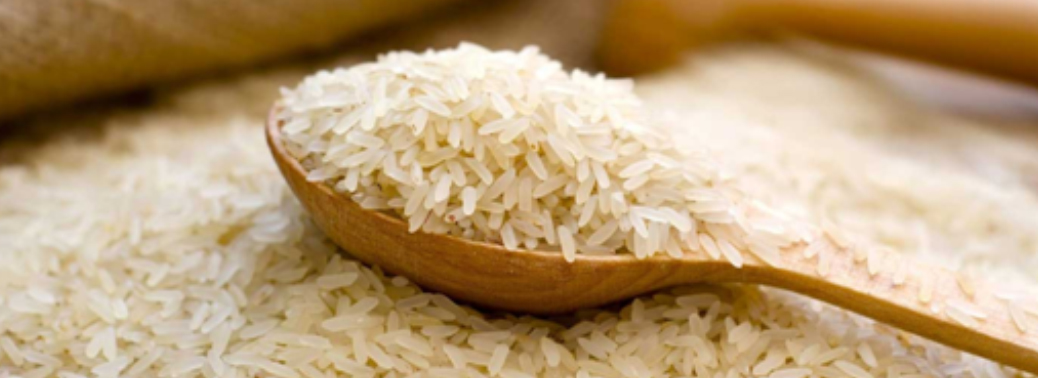
Why in News?
- The NITI Aayog seeks creation of roadmap by Department of Food and Public Distribution for taking the Rice Fortification Pilot Scheme Pan India to tackle the menace of Malnutrition.
Rice Fortification:
- Fortification is the practice of deliberately increasing the content of an essential micronutrient, i.e. vitamins and minerals (including trace elements) in a food, so as to improve the nutritional quality of the food supply and provide a public health benefit with minimal risk to health.
- Rice fortification is the practice of increasing the content of essential micronutrients in rice and to improve the nutritional quality of the rice.
- Fortified rice contains Vitamin A, Vitamin B1, Vitamin B12, Folic Acid, Iron and Zinc.
Benefits of Fortification:
- If consumed on a regular and frequent basis, fortified foods will maintain body stores of nutrients more efficiently and more effectively than will intermittent supplements.
- Fortified foods are also better at lowering the risk of the multiple deficiencies that can result from seasonal deficits in the food supply or a poor-quality diet.
- Fortification can be an excellent way of increasing the content of vitamins in breast milk and thus reducing the need for supplementation in postpartum women and infants.
- Fortification of widely distributed and widely consumed foods has the potential to improve the nutritional status of a large proportion of the population, both poor and wealthy.
- Fortification is often more cost-effective than other strategies, especially if the technology already exists and if an appropriate food distribution system is in place.
Food fortification in India:
- Food Safety and Standards Authority of India (FSSAI) has formulated a comprehensive regulation on fortification of foods namely ‘Food Safety and Standards (Fortification of Foods) Regulations, 2016’.
- These regulations set the standards for food fortification and encourage the production, manufacture, distribution, sale and consumption of fortified foods.
- The regulations also provide for specific role of FSSAI in promotion for food fortification and to make fortification mandatory. This sets the premise for the national summit on fortification of food.
PRICE STABILISATION FUND (PSF)
26, Aug 2019

Why in News?
- Onions for retailing by Safal is being made available at present from the government stock built under Price Stabilisation Fund (PSF). It was decided that retail price of onion at Safal would not be allowed to exceed Rs 23.90/- per kg
Price Stabilisation Fund:
- Price Stabilisation Fund (PSF) refers to any fund constituted for the purpose of containing extreme volatility in prices of selected commodities.
- The amount in the fund is generally utilised for activities aimed at bringing down/up the high/low prices say for instance, procurement of such products and distribution of the same as and when required, so that prices remain in a range.
- Accordingly, the Government of India in 2015, approved the creation of a Price Stabilization Fund (PSF) with a corpus of Rs.500 crores as a Central Sector Scheme, to support market interventions for price control of perishable Agri-horticultural commodities during 2014-15 to 2016-17.
- Initially the fund was proposed to be used for market interventions for onion and potato only and pulses were added subsequently.
Procurement of Commodities:
- Procurement of these commodities will be undertaken directly from farmers or farmers’ organizations at farm gate/mandi and made available at a more reasonable price to the consumers. Losses incurred, if any, in the operations will be shared between the Centre and the States.
- PSF Scheme provides for advancing interest free loan to State Governments/Union Territories (UTs) and Central agencies to support their working capital and other expenses they might incur on procurement and distribution interventions for such commodities.
- Hence, the actual utilisation of the fund depends on the willingness of the state governments / union territories to avail of such loans for these purposes. Further, the actual detection of the period when support is required and the deployment of price support measures are left to the states.
- For this purpose, the States will have to set up a ‘revolving fund’ (a fund which is constantly replenished and not limited by the fiscal year considerations) to which Centre and State will contribute equally (50:50).
- The ratio of Centre-State contribution to the State level corpus in respect of North-East States will, however, be 75:25. Central Agencies will set up their revolving fund entirely with the advance from the Centre.
Management of Price Stabilization Fund:
- The Price Stabilization Fund will be managed centrally by a Price Stabilization Fund Management Committee (PSFMC) which will approve all proposals from State Governments and Central Agencies.
- The PSF will be maintained as a Central Corpus Fund by Small Farmers Agribusiness Consortium (SFAC), a society promoted by Ministry of Agriculture for linking agriculture to private businesses and investments and technology. SFAC will act as Fund Manager.
- Funds from this Central Corpus will be released in two streams, one to the State Governments/UTs as a onetime advance to each State/UT based on its first proposal and the other to the Central Agencies.
- The one time advance to the States/UTs based on their first proposal along with matching funds from the State/UT will form a State/UT level revolving fund, which can then be used by them for all future market interventions to control prices of onions and potatoes based on approvals by State Level Committee set up explicitly for this purpose.
- The Price Stabilization Fund (PSF) was set up under the Department of Agriculture, Cooperation & Famers Welfare (DAC&FW), Ministry of Agriculture. The PSF scheme was transferred from DAC&FW to the Department of Consumer Affairs (DOCA) w.e.f. 1st April, 2016.
WORLDSKILLS KAZAN 2019
25, Aug 2019

Why in News?
- The world’s biggest international vocational skills competition, WorldSkills Kazan 2019 got underway with a grand ceremony at Kazan, Russia.
Highlights:
- Minister of Skill Development and Entrepreneurship inaugurated the India Pavilion at the competition. Team India was familiarised with Russian culture during the One School-One Country program; also aims at encouraging children to join skill programs.
- ‘Future Skills’ category introduced at the Competition to focus on digital economy.
One School One Country:
- Before the opening ceremony, the competing teams came together to present their national cultures under the One School-One Country initiative.
- The initiative aims to promote cultural exchange between the participating countries and to raise the profile of skills and different career pathways.
- Participants visited a Russian School, where they interacted with Russian school students and also participated in cultural programs.
New Initiatives:
- An international conference, WorldSkills Conference 2019, will also be held alongside the skills competitions, for government representatives, experts and thought-leaders to interact on an array of topics on future of skills to maximize economic and social impact.
- Two new initiatives — WorldSkills Juniors and ‘Future Skills — are also being introduced in this edition. WorldSkills Junior aims at inspiring schoolchildren aged 14-16 years to join vocational and skill training and participate alongside the national teams.
- The focus of ‘Future Skills’ is to lay emphasis on relevant fields of activity in the era of high-tech production and digital economy.
RAJASTHAN FREE MEDICINE SCHEME
25, Aug 2019

Context:
Rajasthan has fared at the top in 16 State-chart detailing implementations of the free medicine scheme, being run under the National Health Mission.
About National Health Mission (NHM):
The National Health Mission (NHM) encompasses its two Sub-Missions, the National Rural Health Mission (NRHM) and the newly launched National Urban Health Mission (NUHM).
The main programmatic components include Health System Strengthening in rural and urban areas – Reproductive – Maternal- Neonatal- Child and Adolescent Health (RMNCH+A), and Communicable and Non-Communicable Diseases.
The NHM envisages achievement of universal access to equitable, affordable & quality health care services that are accountable and responsive to people’s needs.
About Rajasthan Free Medicine Scheme:
Mukhyamantri Nishulk Dava Yojana (MNDY), the Chief Minister’s Free Medicine Scheme, this Scheme provides quality, generic drugs at no expense to all and helps to ease the significant out of pocket expenditures on health care that the current national health system demands.
Background:
In Rajasthan, on average before MNDY, 89.4 percent of household expenditures on health care was spent on medicine.
According to the World Health Organization in 2010, 65 percent of patients were unable to access the essential medicines they needed to recover from an illness.
In an evaluation of the Free Medicine Scheme, the World Health Organization and Public Health Foundation of India reported that the combined outpatient and inpatient care visits rose from 3.5 million in July 2010 to 7.8 million in July 2013, more than doubling the access and reach of health care.
Administration in Scheme:
To implement the scheme, Rajasthan Medical Services Corporation Limited (RMSCL) was incorporated on May 4, 2011, as a Public Limited Company, and obtained its Certificate of Commencement of Business on June 13, 2011.
RMSCL was established as a centralised procurement agency for procuring generic medicines, surgical equipment, sutures and medical equipment for the department of Medical, Health and Family Welfare, Medical Education department, among others.
About 1,400 pharmacists were recruited for the new system. In 2013, computer operators were added for the management of and entries into the e-Aushadhi software.
E-Aushadhi is the digital system designed to track the supplies. Since its successful implementation in Rajasthan, the application has been replicated by many other states in the country.
Features of Scheme:
- The scheme consists of two components — free medicine and free tests.
- The Rajasthan Medical Services Corporation (RMSC) was created and given the responsibility for centralized purchasing, quality control and providing medicines to all health facilities in the state.
- Generic medicines and this centralized system of procurement allowed the efficient distribution of quality drugs.
- RMSC procures the items in generic names by finalizing the rates and supplies through an open tender process.
- All medicines and surgical needles are procured based on the need and consumption pattern of the items by the state medical institutions.
- The procurement orders are placed four months out with two months stock likely to be in transit and under quarantine, so stocking is a year-round affair.
- One of the most challenging aspects of this is to be able to predict the needs of the health facilities for any given year. To contend with this, ten percent of the budget is allocated for decentralized purchasing of medicines as needed.
- The strength of the scheme is that it is working not just in the major cities but also in the parts of Rajasthan that are remote and had few health care facilities.
How Many Have Benefitted from The Scheme So Far?
- The number of free medicine beneficiaries stood at 52.4 crore.
- A lot of patients revisit the dispensaries, hence the high number of beneficiaries.
- Some also manage to get a second course of prescribed medicines on the same day, for example, those staying far from the hospital or the dispensary.
Issue with Generic Drugs Under Scheme:
- Doctors’ opposition to the Free Medicine Scheme centered around their suspicions about the quality of ‘cheap’ drugs and their skepticism about the inclusion of the necessary or most used and effective drugs, as well as the loss of personal income.
- This was addressed this by making doctors part of the decision-making process for the Essential Drug List and Standard Drug Protocol, forming an advisory committee for the purchase and updating of the Essential Medicines List, which lists all the medicines available under the Scheme.
- Sensitization program to appeal to physicians’ emotional side, showing how the program would alleviate the suffering of people.
- Doctors are now trained to understand that all versions of the branded medication, post its patent period, have the same active ingredients. The quality of the drugs was a critical component, for the patients and for the doctors, to ensure buy-in to the whole Scheme. To maintain the quality of the medicines, a random sample of products is taken from each batch and then sent to one of six empanelled and impartial labs throughout the country.
Other Scheme Related to Medicine:
Pradhan Mantri Bhartiya Jan Aushadhi Pariyojana Kendra (PMBJP)
Objectives of the scheme:
- Making quality medicines available at affordable prices for all, particularly the poor and disadvantaged, through exclusive outlets “Pradhan Mantri Bhartiya Janaushadhi Kendras”, so as to reduce out of pocket expenses in healthcare.
Implementation Agency:
- BPPI (Bureau of Pharma PSUs of India), under the administrative control of the Department of Pharmaceuticals, Ministry of Chemicals& Fertilizers, Government of India will be the implementation agency for the PMBJP.
Key Features:
State Governments or any organization / reputed NGOs / Trusts / Private hospitals / Charitable institutions / Doctors / Unemployed pharmacist/ individual entrepreneurs are eligible to apply for new Pradhan Mantri Bhartiya Janaushadhi Kendras.
The applicants shall have to employ one B Pharma / D Pharma degree holder as Pharmacist in their proposed store. Pradhan Mantri Bhartiya Janaushadhi Kendras can be located within Government hospital premises as well as Private hospital premises or anywhere outside.
Financial support to applicants: An amount of Rs.2.5 lakhs shall be extended to NGOs/agencies/individuals establishing Pradhan Mantri Bhartiya Janaushadhi Kendras in Government hospital premises where space is provided free of cost by Government to operating agency: Rs. 1 lakh reimbursement of furniture and fixtures Rs. 1 lakh by way of free medicines in the beginning Rs. 0.50 lakh as reimbursement for computer and peripherals, internet, etc.
OCEAN ENERGY AS RENEWABLE ENERGY
25, Aug 2019

Why in News?
- In a decision that would give a boost to the ocean energy in India, Union Minister of State for Power and New & Renewable Energy (IC) and Skill Development & Entrepreneurship, Shri RK Singh approved a proposal to declare ocean energy as Renewable Energy.
Significance of Ocean Energy:
- Oceans cover 70 per cent of the earth’s surface and represent an enormous amount of energy in the form of wave, tidal, marine current and thermal gradient.
- A variety of different technologies are currently under development throughout the world to harness this energy in all its forms.
- Deployment is currently limited but the sector has the potential to grow, fuelling economic growth, reduction of carbon footprint and creating jobs not only along the coasts but also inland along its supply chains.
- India has a long coastline with the estuaries and gulfs. MNRE looks over the horizon at development of new technology and considers the various options available to support its deployment.
- The objective of the technology programme is to accelerate and enhance support for the resource assessment and deployment of ocean energy in the country and to harness it for power generation and to overcome the barriers.
- The potential locations identified at Khambat & Kutch regions, and large backwaters, where barrage technology could be used.
- The total theoretical potential of wave energy in India along the country’s coast is estimated to less intensive than what is available in more northern and southern latitudes.
- Although currently under-utilised, Ocean energy is mostly exploited by just a few technologies: Wave, Tidal, Current Energy and Ocean Thermal Energy.
Tidal Energy:
- The tidal cycle occurs every 12 hours due to the gravitational force of the moon. The difference in water height from low tide and high tide is potential energy.
- Similar to traditional hydropower generated from dams, tidal water can be captured in a barrage across an estuary during high tide and forced through a hydro-turbine during low tide.
- The Gulf of Cambay and the Gulf of Kutch in Gujarat on the west coast have the locations in the country where the potential exists.
Wave Energy:
- Wave energy is generated by the movement of a device either floating on the surface of the ocean or moored to the ocean floor. Many different techniques for converting wave energy to electric power have been studied.
- Wave conversion devices that float on the surface have joints hinged together that bend with the waves. This kinetic energy pumps fluid through turbines and creates electric power.
- Stationary wave energy conversion devices use pressure fluctuations produced in long tubes from the waves swelling up and down. This bobbing motion drives a turbine when critical pressure is reached.
Current Energy:
- Marine current is ocean water moving in one direction. This ocean current is known as the Gulf Stream.
- Tides also create currents that flow in two directions. Kinetic energy can be captured from the Gulf Stream and other tidal currents with submerged turbines that are very similar in appearance to miniature wind turbines.
Ocean Thermal Energy Conversion (OTEC):
- Ocean thermal energy conversion, or OTEC, uses ocean temperature differences from the surface to depths lower than 1,000 meters, to extract energy. A temperature difference of only 20°C can yield usable energy.
- Research focuses on two types of OTEC technologies to extract thermal energy and convert it to electric power: closed cycle and open cycle.
- In the closed cycle method, a working fluid, such as ammonia, is pumped through a heat exchanger and vaporized. This vaporized steam runs a turbine.
- The cold water found at the depths of the ocean condenses the vapour back to a fluid where it returns to the heat exchanger.
- In the open cycle system, the warm surface water is pressurized in a vacuum chamber and converted to steam to run the turbine. The steam is then condensed using cold ocean water from lower depths.
COMPULSORY RURAL SERVICE FOR DOCTORS
24, Aug 2019
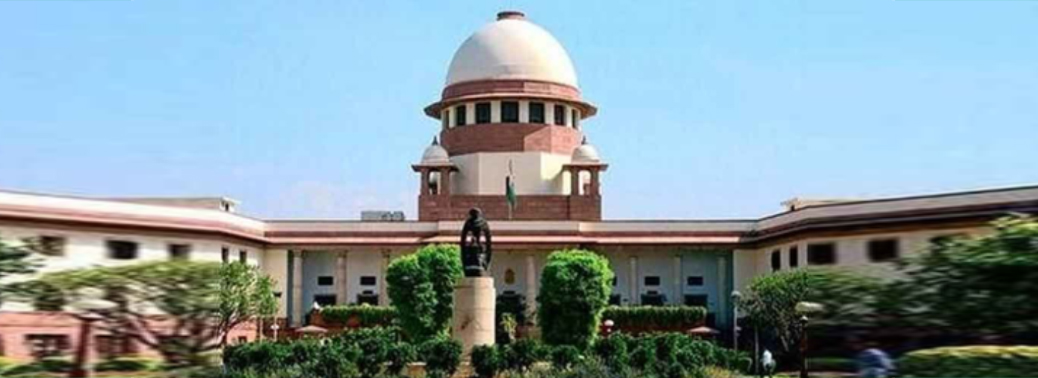
Why in News?
- The Supreme Court has held that the state governments can exercise their power to execute a compulsory service bond upon the doctors taking admission to post-graduate and super-speciality courses in government medical colleges, which would neither violate any fundamental rights of the candidates, nor would be a restraint on their professional activity.
Highlights:
- The Association of Medical Super Speciality Aspirants and Residents and others had challenged the state government’s regulations that imposed a condition of compulsory service for a minimum fixed period with the state.
- Doctors complained that such a condition violated the right of an individual to carry on his profession, amounted to ‘forced labour’ in violation of their constitutional right and would impede the progress of their careers.
- The Supreme Court ruled that doctors across the country are bound by the compulsory bonds executed by them at the time of their admission in post-graduate and super-speciality medical courses.
- The SC noted that the huge infrastructure has to be developed and maintained for running medical colleges with post-graduate and super-speciality courses, the amount of fees charged from students is meagre in comparison to private medical colleges.
- Compulsory Bonds binds doctors with conditions to serve in their respective states for a certain fixed period, in rural areas.
- The doctors’ original mark-sheets, certificates and other documents are also usually retained by the state authorities after the completion of speciality courses.
- Compulsory service is in the larger public interest and beneficial for deprived sections of society, the top court ruled in favour of the policy of various state governments to have compulsory bonds to be executed by the doctors before their admissions to PG and super speciality courses.
- The appellants contended that their rights guaranteed under Article 21 of the Constitution of India have been violated.
NATIONAL MARITIME DOMAIN AWARENESS (NMDA) PROJECT
23, Aug 2019

Why in News?
- Post 2008 Mumbai terror attacks, India established National Maritime Domain Awareness (NMDA) grid built around the National Command Control Communication Intelligence (NC3I) network and the Information Management and Analysis Centre (IMAC) which obtains information from over 50 coastal radar stations including those located on island territories.In the NMDA project, the NC3I network will function as the communication backbone and the IMAC will be the NMDA Centre.
IMAC:
- Set up to provide coastal security and to avert tragic incidents like the 26/11 terror attack on Mumbai, the IMAC is the nodal centre of the National Command Control Communications and Intelligence Network (NC3I Network), and is a joint initiative of Indian Navy, Coast Guard and Bharat Electronics Ltd to improve coastal surveillance.
- The IMAC collates, fuses and disseminates intelligence and information about ‘unusual or suspicious movements and activities at sea’.
- The IMAC also receives vital operational data about ‘white shipping’ (merchant shipping including fishing vessels over 300 tons) from a number of sources such as the Automatic Identification System (AIS) and the long-range identification and tracking (LRIT), a satellite-based, real-time reporting mechanism for position of ships. This information is further supplemented by shore based electro-optical systems and high definition radars
National Command Control Communications and Intelligence Network:
- The NC3I network links 51 Naval and Coast Guard stations, located along the coast and on island territories.
- The network provides these stations coastal surveillance information obtained from various sensors such as the coastal radar chain of the Indian Coast Guard and automatic tracking systems as well as electro-optical cameras.
- The network rides on dedicated terrestrial data circuits, as well as, satellite communication, which helps the stations in remote locations to be networked.
- The IMAC is the centre where data from various sensors and databases is aggregated, correlated and then disseminated to various stations for enhanced awareness.
ONE NATION, ONE RATION CARD SCHEME: A BOON FOR POOR MIGRANTS
22, Aug 2019
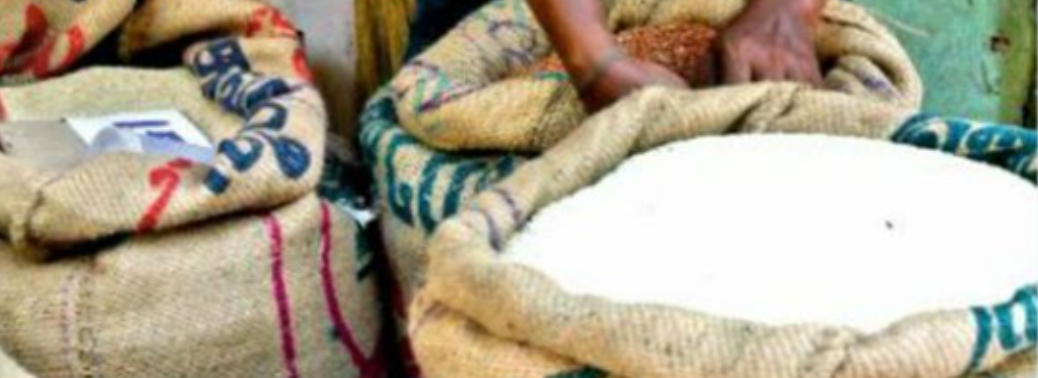
- Context: Government has launched the pilot project for the inter-state portability of ration cards between Telangana and Andhra Pradesh, and between Maharashtra and Gujarat, as part of its ‘One Nation, One Ration Card’ scheme.
What is A Ration Card?
- A ration card is issued to the head of the family, depending on the number of members in a family and the financial status of the applicant.
- It is used by households to get essential food grains at subsidised prices from designated ration shops (also called fair price shops) under the Targeted Public Distribution System (TPDS).
- Over the years, different types of ration cards were issued depending on the level of deprivation. Later, in 2013, when the National Food Security Bill was passed, different ration cards were compressed to just two — priority and Antyodaya (for the poorest).
- The responsibility of identifying eligible families and issuing ration cards to them rests with the state/UT government.
What is a Ration Shop?
- Ration shops can be privately owned or owned by cooperative societies or by the government. Ownership licenses are issued by the concerned state government.
- Presently, commodities including wheat, sugar, rice and kerosene are being allocated as part of the TPDS. State governments have the discretion to provide additional commodities.
What is the ‘One Nation, One Ration Card’ Scheme?
- Since Ration Cards are issued by State Governments, this implied that beneficiaries could procure food grains only from the designated ration shops within the concerned state.
- If a beneficiary were to shift to another state, he/she would need to apply for a new ration card in the second state. There were other complications.
- For instance, after marriage, a woman needed to get her name removed from the ration card issued to her parents, and get it added to the ration card issued to her husband’s family.
- The ONORC scheme attempts to address this gap in TPDS delivery. Essentially, the scheme has been launched keeping in mind the internal migration of our country, since people keep moving to different states in search of better job opportunities and higher standards of living.
- As per Census 2011, 4.1 crore people were inter-state migrants and 1.4 crore people migrated (inter and intra-state) for employment.
- With the ONORC scheme being implemented in Telangana and Andhra Pradesh, the beneficiary can buy food grains from ration shops located in either of the states.
- The same is the case with Maharashtra and Gujarat. The government hopes to implement the scheme across India by June 1, 2020.
LINKING OF AADHAAR INFORMATION TO SOCIAL MEDIA ACCOUNTS
22, Aug 2019
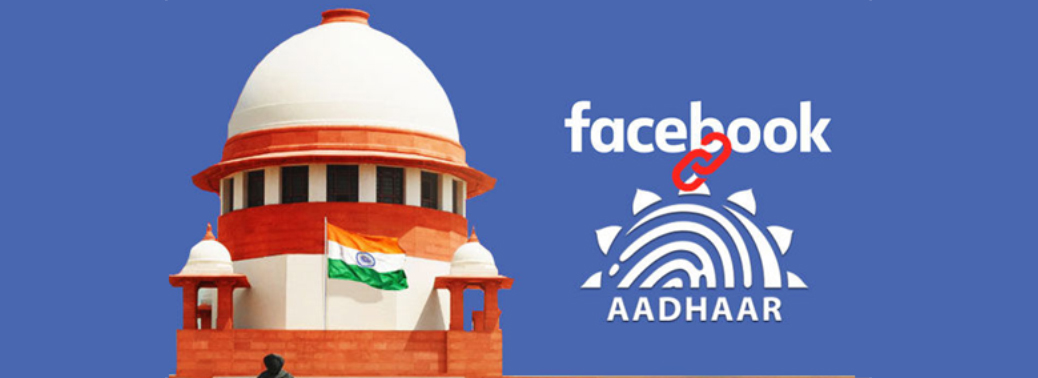
- Context: Supreme Court agreed to hear a plea by Facebook to transfer to the apex court four petitions filed in the High Courts of Madras, Bombay and Madhya Pradesh seeking the “linking of Aadhaar information to social media accounts”.
What is The Issue?
- It all began with a petition by Antony Clement Rubin in Madras High Court last year, seeking the court’s direction to the Central government to make it mandatory for social media users to link their Aadhaar number with email IDs.
- Social media profiles of users need to be linked with Aadhaar numbers to check circulation of fake, defamatory and pornographic content as also anti-national and terror material; the Supreme Court was informed.
- The suggestion was made by the Tamil Nadu government which is facing resistance from Facebook Inc on the ground that sharing of 12-digit Aadhaar number, the Biometric Unique Identity, would violate the privacy policy of users.
State Government’s View:
- The linking of social media profiles of the users with the Aadhaar was needed to check fake news, defamatory articles, pornographic materials, anti-national and terror contents in the online media.”
What Happens If User Profiles on Social Media Platforms Are Linked with Their Aadhaar Number?
- The linking of user profiles on social media with Aadhaar would make every message and post by the user traceable.
- Though the move will serve as a deterrent to social media instigators and perpetrators of defamatory and fake posts, it would also violate the privacy of the users, keeping a record of each message along with the registered mobile number or email account. This would mean the end of private communications.
- The privacy experts fear that the linking would allow India’s nationalist government to force social media platforms to become surveillance tools.
Facebook’s View:
- Facebook Inc said that it cannot share the Aadhaar number with a third party as the content on its instant messaging Whatsapp was end-to-end encrypted and even they do not have access to it.
- Facebook has contended that there are four petitions including — two in Madras High Court, one in Bombay and one in Madhya Pradesh High Courts — and they contained almost similar prayers.
- Facebook plea to transfer all this petition to Supreme Court
- Supreme Court agreed to hear a plea by Facebook to transfer to the apex court four petitions filed in the High Courts of Madras, Bombay and Madhya Pradesh seeking the “linking of Aadhaar information to social media accounts”.
Issues Involved:
- The question is if linking social media to Aadhaar is breach of privacy.
- Question is whether Aadhaar can be shared with a private entity or not.
- Ordinance has been promulgated, which says that Aadhaar can be shared with a private entity, if there was a larger public interest involved.
Supreme Court Privacy Judgement:
- Supreme court Observation on Social media
- Companies such as Google, Facebook, Uber, Airbnb, Amazon, etc. probably have more data on users than the governments of their countries.
- The privacy of citizens needs protection from these non-state players, too.
DEFENCE PROCUREMENT PROCEDURE
20, Aug 2019
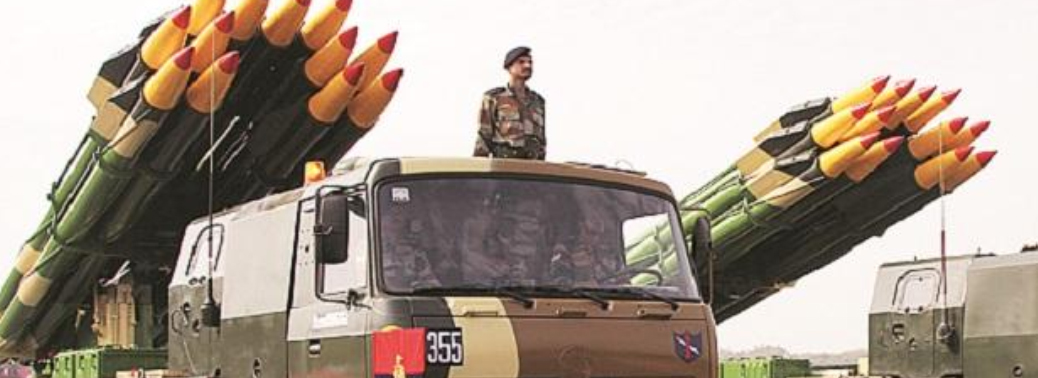
Why in news?
- Raksha Mantri ShriRajnath Singh has approved setting up of a Committee under the Chairmanship of Director General (Acquisition) to review the Defence Procurement Procedure (DPP) 2016 and Defence Procurement Manual (DPM) 2009. The Committee will revise and align the procedures with the aim of ensuring seamless flow from asset acquisition to life cycle support.
The Committee:
- The DPP 2016 and DPM 2009 have been due for revision. Aligning the procedures will ensure seamless flow from asset acquisition to life cycle support and strengthen the ‘Make in India’ initiative of the Government.
- Apart from DG (Acq) 11 other members, not below the rank of Joint Secretary/Major General equivalent, are part of this high-level committee.
Terms of reference of the Committee:
- Revise the procedures as given in DPP 2016 and DPM 2009, so as to remove procedural bottlenecks and hasten defence acquisition.
- Align and standardise the provisions in the DPP 2016 and DPM 2009, wherever applicable, to optimise life cycle support for equipment.
- Simplify policy and procedures to facilitate greater participation of Indian Industry and develop robust Defence Industrial base.
- Wherever applicable, examine and incorporate new concepts, such as life cycle costing, life cycle support, performance based logistics, ICT, lease contracting, codification & standardisation.
- Include provisions to promote Indian start-ups and research & development.
- Any other aspect which will contribute towards refining the acquisition process and support the ‘Make in India’ initiative.
DRAFT NATIONAL RESOURCE EFFICIENCY POLICY
20, Aug 2019

Why in News?
- Natural resources form the backbone of any economic development. India, as one of the fastest growing economies with GDP at 2.6 trillion USD, has increased its material consumption to six times.
- Enhancing resource efficiency and promoting the use of secondary raw materials has emerged as a strategy for ensuring that the potential trade-off between growth, resource constraints and environmental well-being can be minimized.
- Ministry of Environment, Forest and Climate Change released Draft National Resource Efficiency Policy
Policy Highlights:
- The Draft National Resource Efficiency Policy (NREP) envisions a future with environmentally sustainable and equitable economic growth, resource security, healthy environment (air, water and land), and restored ecosystems with rich ecology and biodiversity.
- The Draft National Resource Efficiency Policy is guided by the principles of
- Reduction in primary resource consumption to ‘sustainable’ levels, in keeping with achieving the Sustainable Development Goals and staying within the planetary boundaries,
- Creation of higher value with less material through resource efficient and circular approaches
- Waste minimization
- Material security, and creation of employment opportunities and business models beneficial to the cause of environment protection and restoration.
INDIA’S DOCTRINE OF NUCLEAR NO FIRST USE
19, Aug 2019

Context: Defence Minister Rajnath Singh tweeted, after visiting the nuclear test site in Pokhran that “The future of India’s ‘No First Use’ policy on nuclear weapons depends on the “circumstances”,
What is No First Use doctrine, and how did it come into being?
- A commitment to not be the first to use a nuclear weapon in a conflict has long been India’s stated policy.
- India declareda “no-first-use” policy under which it won’t be the first to use nuclear weapons in a conflict with its neighbors, but will retaliate should deterrence fail. Unlike Pakistan, India’s other neighbor and rival China also has a declared no-first-use policy on nuclear weapons.
- India’s Nuclear Doctrine
a) Building and maintaining a credible minimum deterrent
b) Posture of ‘No First Use’, nuclear weapons will only be used in retaliation against a nuclear attack on Indian Territory or on Indian forces anywhere
c) Nuclear retaliation to a first strike will be massive and designed to inflict unacceptable damage
d) Non-use of nuclear weapons against non-nuclear weapon states
e) In the event of a major attack against India, or Indian forces anywhere, by biological or chemical weapons, India will retain the option of retaliating with nuclear weapons
Background
- On January 4, 2003, when Vajpayee was India’s Prime Minister, the Cabinet Committee on Security (CCS) met to review the progress in operationalizing the country’s nuclear doctrine.
- An official release issued that day summarized the decisions that were being put in the public domain.
- Among the major points in the doctrine was “a posture of No First Use”, which was described as follows:
- “Nuclear weapons will only be used in retaliation against a nuclear attack on Indian territory or on Indian forces anywhere”.
Contents of Doctrine
- Nuclear retaliatory attacks can only be authorised by the civilian political leadership through the Nuclear Command Authority. The Nuclear Command Authority comprises a Political Council and an Executive Council. The Political Council is chaired by the Prime Minister.
- India would not use nuclear weapons against non-nuclear weapon states.
- India would continue to put strict controls on the export of nuclear and missile related materials and technologies, participate in the Fissile Material Cutoff Treaty negotiations, and continue to observe the moratorium on nuclear tests.
- India remains committed to the goal of a nuclear weapons free world, through global, verifiable and non-discriminatory nuclear disarmament.
- India’s doctrine does not mention any country, but it is no secret that the Indian nuclear arsenal is to counter threats from China and Pakistan.
Advantages of Doctrine
- Since there is no first use alert requirement, the chances of reacting to a false alarm are nullified thus effectively quashing the chances of unnecessary chaos.
- A ‘no first use’ nuclear weapons policy suits India’s interest. Shifting to a first-use policy would mark a shift from deterrence towards nuclear war fighting
- These weapons are enormously destructive and should not be used. Since there is no first use alert requirement, the chances of reacting to a false alarm are nullified A first use would result in international dishonour and weigh heavily on a country with a first use posture.
- NFU doctrine is cheaper to implement; for India, which has many economic targets to achieve, this is a very important factor.
- NFU policy is just right for India as it ensures security for the nation and does not detract it from its march towards better prosperity for its people.
- India’s NFU policy which has kept the nuclear arsenal in both India and Pakistan in a de-mated posture, which means that the nuclear warheads are not mated with the delivery systems.
- A NFU doctrine is cheaper to implement. For India, which has many economic targets to achieve, this is a very important factor.
China
- China has maintained a ‘no first use’ policy since 1964 when it went nuclear, and the Chinese leadership has always considered nuclear weapons as political weapons.
Pakistan
- Pakistan has adopted a first-use policy to ensure full-spectrum deterrence
- Pakistan knows that it cannot afford to use any nuclear weapons in a war, including its tactical nuclear weapons, as India would respond with massive nuclear retaliation as per its doctrine
E-COURT
19, Aug 2019

Why in news?
- The High Court of Punjab and Haryana to launch its first virtual court (e-Court) at Faridabad.
Highlights:
- The e-Court would deal with traffic challan cases from across the State.
- The project will be launched under the guidance of e-Committee of the Supreme Court of India.
- Virtual courts will remove the need for the litigant to be present in the court and facilitate adjudication of the case online through the use of Information and Communication Technology (ICT).
E-committee:
- E-committee is a body constituted by the Government of India in pursuance of a proposal received from the supreme court of India for assistance in formulating a National policy on computerization of Indian Judiciary and advise on technological communication and management related changes.
- The E-Committee was set up in 2004 to provide a guide map for the use of I-T and administrative reforms in the judiciary.
e-Courts Project:
- The e-Courts project was conceptualized on the basis of the “National Policy and Action Plan for Implementation of Information and Communication Technology (ICT) in the Indian Judiciary – 2005”submitted by e-Committee, Supreme Court of India with a vision to transform the Indian Judiciary by ICT enablement of Courts.
- The e-Courts Mission Mode Project, is a Pan-India Project, monitored and funded by the Department of Justice,Ministry of Law and Justice, Government of India for the District Courts across the country.
- The following are the functions of e-Courts Project:
- To provide efficient & time-bound citizen-centric services delivery as detailed in e-Court Project Litigant’s Charter.
- To develop, install & implement decision support systems in courts.
- To automate the processes to provide transparency in the accessibility of information to its stakeholders.
- To enhance judicial productivity, both qualitatively & quantitatively, to make the justice delivery system affordable, accessible, cost-effective, predictable, reliable and transparent.
MOD CLARIFIES THERE IS NO PROPOSAL TO PRIVATISE OFB
18, Aug 2019

Why in News?
- Rumours being spread that Ordnance Factory Board (OFB)is being privatised has resulted in its employees calling for a 30 days’ strike.
Highlights:
- Committee of senior officials of Ministry of Defenceled by Additional Secretary, Department of Defence Production alongwith Chairman of OFB, explained to the employee organisations that there is no proposal to privatise OFB.
- The proposal under consideration of Government is to make it into Defence Public Sector Undertakings (DPSUs), which is 100 per cent Government owned.
- It was also stated that corporatisation of OFB will bring OFB at par with other DPSUs of Ministry of Defence. This is in the interest of OFB as it will provide operational freedom and flexibility to OFB which it presently lacks.
Ordnance Factory Board:
- Ordnance Factory Board(OFB) consisting of the Indian Ordnance Factories is a defense contractor owned by the Indian government.
- OFB comprises forty-one ordnance factories, nine training institutes, three regional marketing centres and four regional controllerates of safety which are spread all across the country.
- OFB is the world’s largest government-operated production organisation, and the oldest organisation run by the Government of India.
- It is often called the “Fourth Arm of Defence” and the “Force Behind the Armed Forces” of India.
- OFB is the 37th largest defence equipment manufacturer in the world, 2nd largest in Asia, and the largest in India.
CHIEF JUSTICE ADVOCATES MORE AUTONOMY TO CBI
16, Aug 2019

Why in News?
- Chief Justice of India Ranjan Gogoi has recommended a comprehensive legislation to make the Central Bureau of Investigation functional as an efficient and impartial investigative agency.
Highlights:
- The Chief Justice said that time and again, the Supreme Court had utilised its constitutional authority to ensure that the CBI functioned without any fear or favour, and in the best public interest. As a multi-faceted, multi-disciplinary investigative agency, it had for the most part of its existence enjoyed tremendous public trust.
- He opined that the CBI should be given statutory status through legislation equivalent to that provided to the Comptroller & Auditor General.
- And that the legal mandate of the CBI must be strengthened by having a comprehensive legislation addressing deficiencies relating to organisational structure, charter of functions, limits of power, superintendence and oversight.Advocating administrative and financial autonomy for the CBI, he said, “To address an increasing incidence of inter-State crimes, an argument could be made for including ‘public order’ in concurrent list, for the limited purposes of investigating such crimes,”.However, given that the superintendence and control of the agency continues to, in large measure, lie with the executive by virtue of Section 4 of the Delhi Special Police Establishment Act, 1946, the possibility of it being used as a political instrument remains ever present, he said.
Issues:
- Chief Justice Gogoi lists legal ambiguity, weak human resource, lack of adequate investment, accountability, and political and administrative interference as key concerns.
- In the context of political and administrative interference, he said that in the Vineet Narain v. Union of India case, the Suprme Court had expressed concern over the state of affairs and laid down explicit guidelines for protecting the integrity of the force.
- Under the DSPE Act, the CBI requires consent of the State concerned for investigation. Given vested interests or bureaucratic lethargy, such consent is often either denied or delayed, severely compromising the investigation. Additionally, a patch work of legislations governing the functioning of the CBI adversely affects inter-institutional coordination, both horizontally and vertically.
Central Bureau of Investigation (CBI):
- The Central Bureau of Investigation (CBI) is the premier investigating agency of India.
- It operates under the jurisdiction of the Ministry of Personnel, Public Grievances and Pensions.
- The agency has been known to investigate several economic crimes, special crimes, cases of corruption and other high-profile cases.
- Its job is to ensure a fair and an impartial probe.
COMPETITION LAW REVIEW COMMITTEE
16, Aug 2019
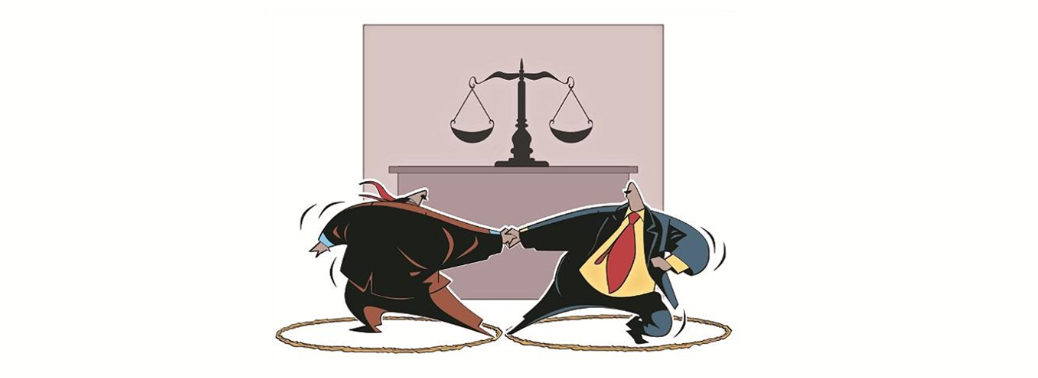
Why in News?
- Shri Injeti Srinivas, Secretary (Corporate Affairs) presented the Report of the Competition Law Review Committee
Highlights:
- The Government constituted a Competition Law Review Committee on 1st October, 2018 to review the existing Competition law framework and make recommendations to further strengthen the framework to inter alia meet new economy challenges.
- The Committee was chaired by Shri Injeti Srinivas
Recommendations:
- Introduction of a ‘Green Channel’ for combination notifications to enable fast-paced regulatory approvals for vast majority of mergers and acquisitions that may have no major concerns regarding appreciable adverse effects on competition. The aim is to move towards disclosure based regime with strict consequences for not providing accurate or complete information.
- Combinations arising out of the insolvency resolution process under the Insolvency and Bankruptcy Code will also be eligible for “Green Channel” approvals.
- Introducing a dedicated bench in NCLAT for hearing appeals under the Competition Act.
- Introduction of express provisions to identify ‘hub and spoke’ agreements as well as agreements that do not fit within typical horizontal or vertical anti-competitive structures to cover agreements related to business structures and models synonymous with new age markets.Additional enforcement mechanism of ‘Settlement & Commitments” in the interests of speedier resolution of cases of anti-competitive conduct.
- Enabling provisions to prescribe necessary thresholds, inter alia, deal-value threshold for merger notifications.
- CCI to issue guidelines on imposition of penalty to ensure more transparency and faster decision making which will encourage compliance by businesses.
- Strengthening the governance structure of CCI with the introduction of a Governing Board to oversee advocacy and quasi-legislative functions, leaving adjudicatory functions to the Whole-time Members.Merging DG’s Office with CCI as an ‘Investigation Division’ as it aids CCI in discharging an inquisitorial rather than adversarial mandate. However, functional autonomy must be protected.
- Opening of CCI offices at regional level to carry out non-adjudicatory functions such as research, advocacy etc. and interaction with State Governments and State regulators.
DOCUMENT IDENTIFICATION NUMBER (DIN)
16, Aug 2019

Why in News?
- Every communication to be issued by the Income-Tax Department will now have a Document Identification Number (DIN). This intends to insure proper audit trail of such communication.
Document Identification Number:
- The CBDT has now laid down parameters specifying the manner in which any communication issued by any income-tax authority relating to assessment, appeals, orders, statutory or otherwise, exemptions, enquiry, investigation, verification of information, penalty, prosecution, rectification and approval to the assessee will be dealt with.
- All such communication issued on or after the 1st of October, 2019 shall carry a computer-generated Document Identification Number (DIN) duly quoted in the body of such communication.
- Any communication which is not in conformity with the prescribed guidelines shall be treated as invalid and shall be deemed to have never been issued”.
- CBDT also specifies exceptional circumstances where communication may be issued manually, only after recording reasons in writing & with prior written approval of Chief Commissioner/Director General of Income-Tax concerned,” the Income Tax Department tweeted on its official Twitter handle.
- The exceptional circumstances include situations where there are technical difficulties in generating/allotting/quoting the DIN or issuing the communication electronically or the PAN of the assessee is not available or is lying with a non-jurisdictional Assessing Officer due to delay in PAN migration.
CERTIFICATION OF SEEDS TO BE MADE MANDATORY TO STEP UP FARM OUTPUT
14, Aug 2019

- Context: The Centre is planning to mandate uniform certification by pushing through a replacement to the Seeds Act, 1966.
Background:
- More than half of all seeds sold in India are not certified by any proper testing agency, and are often of poor quality.
- The existing legislation that was enacted over half a century ago and therefore there is a need for revival.
Proposed Changes in The New Bill:
- The 1966 Act starts with these words: “An Act to provide for regulating the quality of certain seeds for sale…” The new Bill removes the word “certain”, and aims to regulate the quality of all seeds sold in the country, as well as exported and imported seeds.
- The new law will also raise the stakes by increasing penalties for non-compliance. Currently, the fine ranges from ₹500 to ₹5,000.
Significance:
- New changes could increase overall agricultural productivity by up to 25%.
- It will also bring uniformity to the process of quality regulation.
STATE-RUN OMCS TO BUY BIODIESEL MADE FROM USED COOKING OIL
14, Aug 2019

- Context: Central Government has launched a ‘Repurpose Used Cooking Oil (RUCO)’sticker and a phone app to enable the collection of used cooking oil. Restaurants and hotels interested in supplying used cooking oil can affix the sticker to show availability.
About RUCO:
- The RUCO (Repurpose Used Cooking Oil) initiative have been launched by Food Safety and Standards Authority of India (FSSAI) which will enable collection and conversion of used cooking oil (UCO) to bio-diesel.
- Under RUCO, 64 companies at 101 locations have been identified to enable collection.
- FSSAI wants businesses using more than 100 litres of oil for frying, to maintain a stock register and ensure that UCO is handed over to only registered collecting agencies.
- FSSAI is also working in partnership with Biodiesel Association of India and the food industry to ensure effective compliance of used cooking oil regulations.
- FSSAI has additionally launched a micro-site to monitor the progress of the collection and conversion of used cooking oil into biodiesel.
Background:
- The consumption of Used Cooking Oil (UCO) poses adverse health effects.
- During frying, several properties of oil are altered, Total Polar Compounds (TPC) are formed on repeated frying.
- The toxicity of these compounds is associated with several diseases such as hypertension, atherosclerosis, Alzheimer’s disease, liver diseases.
- Therefore, it is essential to monitor the quality of vegetable oils during frying.
- In order to safeguard consumer health, FSSAI has fixed a limit for Total Polar Compounds at 25 percent beyond which the vegetable oil shall not be used.
- All Food Business Operators (FBOs) are required to monitor the quality of oil during frying by complying with the said regulations.
- Repurpose Used Cooking Oil (RUCO) is an ecosystem that will enable the collection and conversion of UCO to biodiesel.
What are Total Polar Compounds (TPC)?
- TPC is formed due to repeated frying and usage of edible oil which changes its physiochemical and nutrition properties making it unfit for human consumption.
- TPCs above the set level cause hypertension, atherosclerosis, Alzheimer’s disease, liver disease etc.
- Cooking oil may have saturated fatty acids (palm oil) or unsaturated fatty acids (soyabean).
- The saturated fatty acids such as in palm oil are more stable that the unsaturated fatty acids which decompose easily at high temperature forming polar compounds.
- Thus, it makes oils with saturated fatty acids fit for frying. However, oils with unsaturated fatty acids are healthier provided they are used just once for frying.
MOTOR VEHICLES AMENDMENT ACT 2019
13, Aug 2019
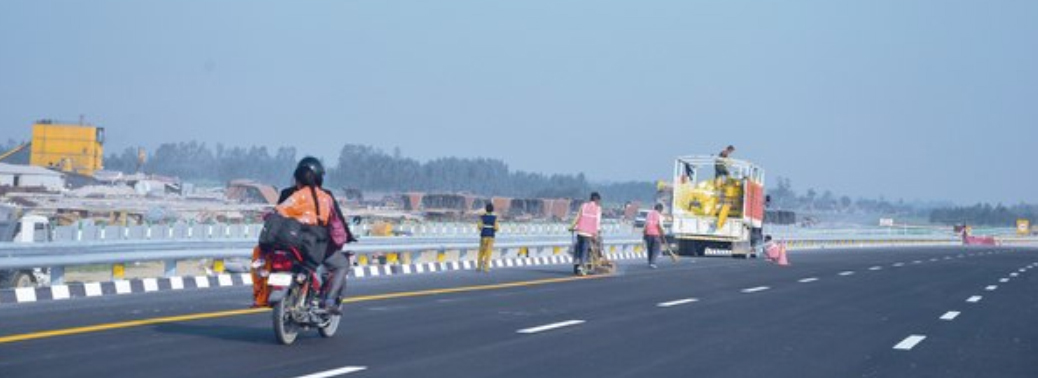
Why in News?
- President Ram Nath Kovind gave assent to the Motor Vehicles (Amendment) Act, 2019.
Highlights:
- The Act aims to make Indian roads safer, reduce corruption and use technology to overhaul the country’s transportation system.
- Towards safety, the law has proposed stiffer penalties for traffic rule violations such as over-speeding, dangerous driving, driving under the influence of alcohol and other offences such as not wearing a helmet or driving without licence.
- The penalty for drunk driving has been increased by five times to ₹2,000. Speeding will now attract a fine or ₹5,000 instead of₹500 earlier. Noting giving way to emergency vehicles such as ambulances will attract a ₹10,000 fine.
- The new law also allows the Centre to ask manufacturers to recall vehicles in case of defects that cause harm to the environment.
- The Centre, in consultation with the states, can frame a national transportation policy to transform the rural and public road transportation system and improve last-mile connectivity.
- The process for testing and certification for automobiles is proposed to be regulated more effectively. The testing agencies issuing automobile approvals have been brought under the ambit of the Act.
- The driving training process has been strengthened enabling faster issuance of transport licenses.
- This will help in reducing the shortage of commercial drivers in the country.
- To bring harmony of the registration and licensing process, it is proposed to create National Register for Driving Licence and National Register for Vehicle registration through “Vahan” & “Sarathi” platforms. This will facilitate uniformity of the process across the country.
- The Act proposes offences committed by Juveniles. The Guardian / owner shall be deemed to be guilty in cases of offences by Juveniles and Juvenile to be tried under JJ Act. Registration of Motor Vehicle to be cancelled
- Improving delivery of services to the stakeholders using e-Governance is one of the major focuses of this Act. This includes enabling online learning licenses, increasing validity period for driving licenses, doing away with the requirements of educational qualifications for transport licenses are some of the features.
ZERO DEFECT AND ZERO EFFECT SCHEME
13, Aug 2019
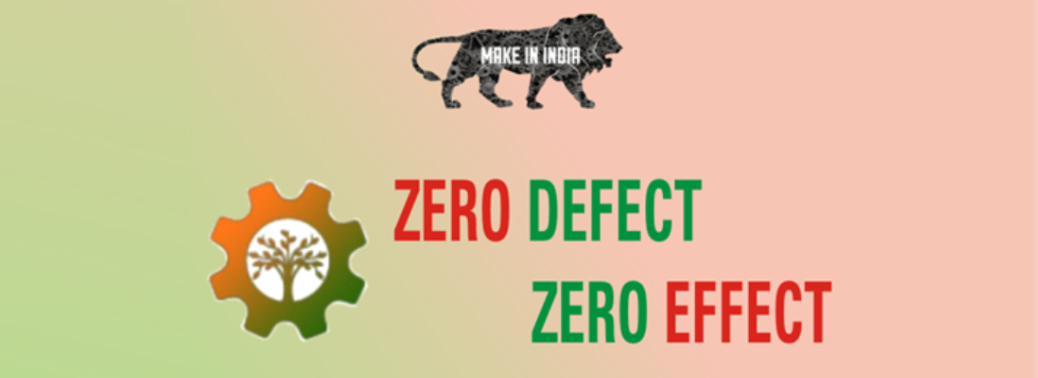
Why in News?
- The Government has launched a scheme namely “Financial Support to MSMEs in ZED Certification Scheme”.
Highlights:
- The objective of the scheme for promotion of Zero Defect and Zero Effect (ZED) manufacturing amongst micro, small and medium enterprises (MSMEs)
- The ZED Assessment for their certification so as to:
- Develop an Ecosystem for Zero Defect Manufacturing in MSMEs.
- Promote adaptation of Quality tools/systems and Energy Efficient manufacturing.
- Enable MSMEs for manufacturing of quality products.
- Encourage MSMEs to constantly upgrade their quality standards in products and processes.
- Drive manufacturing with adoption of Zero-Defect production processes and without impacting the environment.
- Support ‘Make in India’ campaign.
- Develop professionals in the area of ZED manufacturing and certification.
- There are 50 parameters for ZED rating and additional 25 parameters for ZED Defence rating under ZED Maturity Assessment Model.
- The MSMEs are provided financial assistance for the activities to be carried out for ZED certification i.e., Assessment / Rating, Additional rating for Defence angle, Gap Analysis, Handholding, Consultancy for improving the rating of MSMEs by Consultants and Re-Assessment / Re-Rating.
- Quality Council of India (QCI) has been appointed as the National Monitoring & Implementing Unit (NMIU) for implementation of ZED.
HIRING APP FOR FARMERS
13, Aug 2019
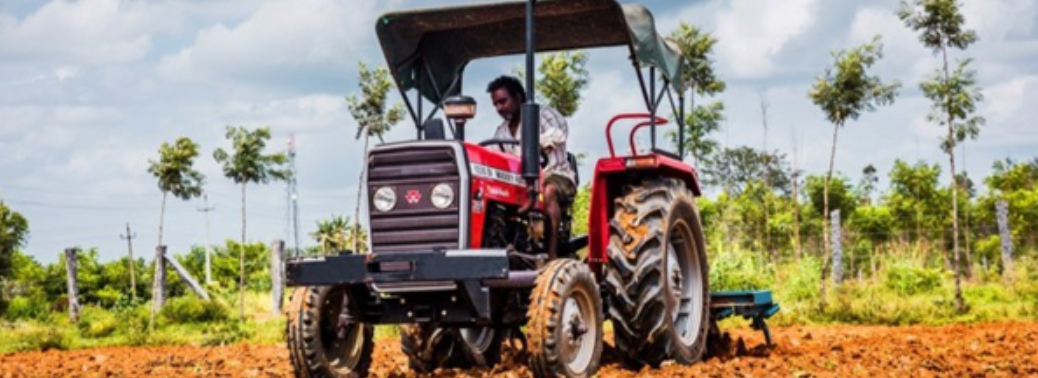
Why in News?
- The agricultural Ministry app will create an invaluable database for policy-makers, who can track the use and cost of equipment.
Highlights:
- The custom hiring centres (CHC) app is already open for registrations by the farmers, societies and entrepreneurs who run these centres. So far, almost 26,800 CHCs have registered to offer more than one lakh pieces of equipment for hire.
- Once the app is officially launched, farmers who wish to hire equipment can register using their names, addresses and mobile numbers, and then punch in their requirements.
- The system would also help to track the usage of new technology that the government wants to promote, such as the Happy Seeder that aims to prevent stubble burning that causes air pollution, or solar dryers that can help farmers process and preserve their produce.
- Farmers save precious groundwater and increase productivity by 10 to 15%.
Customer Hiring Centres:
- Customer Hiring Centres (CHCs) are basically a unit comprising a set of farm machinery, implements and equipment meant for hiring by farmers.
- Marginal farmers (Farmers whose land holdings are less than two hectares of land), by virtue of their economic condition are unable to own farm machinery on their own or through institutional credit.
- Ideally, the CHCs should be located within a radius of 5 to 7 kms of land holdings. This will reduce the transport cost and time of transport of agricultural machinery.
SABKI YOJANA SABKA VIKAS
13, Aug 2019
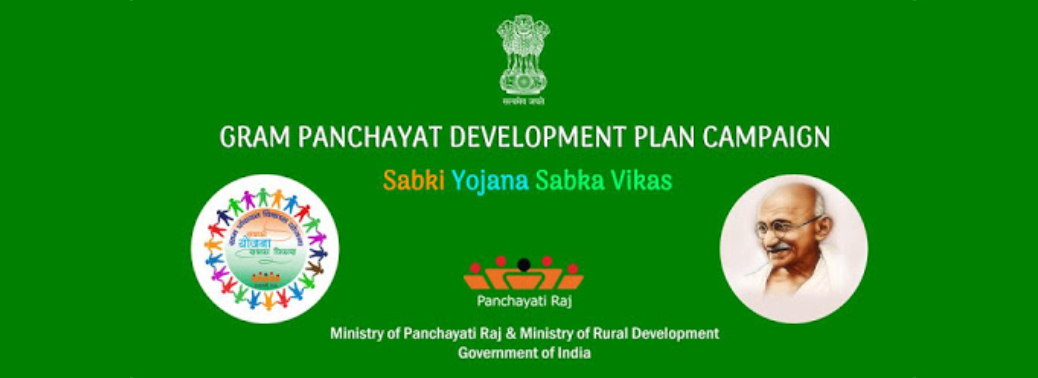
Why in News?
- The Central Government has decided to launch the People’s Plan Campaign, also known as “Sabki Yojana Sabka Vikas”from September 2019.
Highlights:
- It aims to draw up Gram Panchayat Development Plans (GPDPs) in the country and place them on a website where anyone can see the status of the various government’s flagship schemes.
- Gram Panchayat Development Plans (GPDPs) will include 48 indicators covering various aspects such as health and sanitation, education etc.
- After each GP is scored out of 100 — with 30 marks for infrastructure, 30 marks for human development, and 40 marks for economic activity— the GPs will be ranked.
- The data on the 48 indicators would come from Census 2011 (for physical infrastructure), Socio-Economic Caste Census 2011 (for Household-level deprivation data), and fresh survey starting in September 2019 that will be carried out by local facilitators.
- The score for each GP will reflect the local needs and priorities.
- The entire ranking exercise is meant to identify the gaps at the GP level, make an assessment of where it stands, and accordingly plan the interventions.
Gram Panchayat Development Plans:
- Gram Panchayats have been mandated for the preparation of GPDP for economic development and social justice utilizing the resources available to them.
- The GPDP planning process will be comprehensive and participatory by involving full convergence with the schemes of all related Central Ministries / Line Departments.
- The People’s Plan Campaign initiated under “Sabki Yojana Sabka Vikas” is an intensive and structured exercise for planning at Gram Sabha through convergence between Panchayati Raj Institutions (PRIs) and concerned departments of the State.
MUKHYA MANTRI KRISHI ASHIRWAD YOJNA
12, Aug 2019
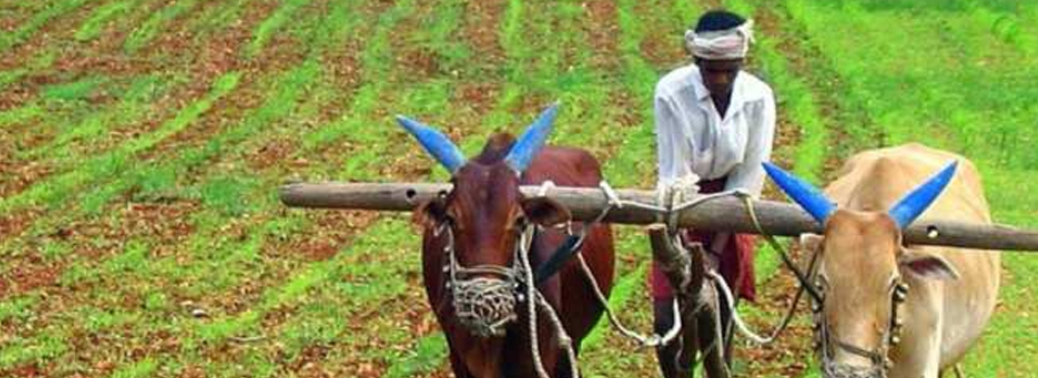
Why in News?
- The Vice President of India, Shri M. Venkaiah Naidu has called for introducing structural reforms in the agricultural sector along with financial assistance schemes like Direct Benefit Transfer to make agriculture profitable and sustainable.
- He inaugurated the Mukhya Mantri Krishi Ashirwad Yojna of the Jharkhand Government.
Highlights:
- Under the scheme, all the small and marginal farmers of the state, who have arable land up to a maximum of 5 acres, will be given a grant-in-aid at the rate of Rs. 5000 / – per acre per year, which will also reduce their dependence on loans.
- This amount would be given in two instalments through Direct Benefit Transfer to the beneficiary’s bank account.
- This is in addition to PM Kisan Nidhi Yojana under which each small & marginal farmer’s family having combined landholding/ ownership of up to two hectares is paid Rs. 6,000 per year.
- Direct Benefit Transfer would eliminate middlemen and ensure that every penny of the financial assistance given by the government reaches the beneficiaries.
- Government of India has taken a firm resolve to double the income of farmers by 2022.
PRADHAN MANTRI KISAN MAAN-DHAN YOJANA (PM-KMY)
11, Aug 2019

Context: The PM-KMY was launched by Agriculture Minister which entitles eligible farmers for monthly pension of ₹3,000 per month on attaining the age of 60.
About PM-KMY:
- Aim: Welfare of small and marginal farmers across the country.
Key Highlights of the Scheme:
- It is a voluntary and contributory scheme for farmers and the entry age is between 18 to 40 years.
- Eligible farmers will be provided with a monthly pension of Rs. 3000/- per month on attaining the age of 60 years.
- The farmers will have to make a monthly contribution of Rs.55 to Rs.200, depending on their age of entry, in the Pension Fund till they reach the retirement date i.e. the age of 60 years.
- The Central Government will also make an equal contribution of the same amount in the pension fund.
- The spouse is also eligible to get a separate pension of Rs.3000/- upon making separate contributions to the Fund.
- The Life Insurance Corporation of India (LIC) shall be the Pension Fund Manager and responsible for Pension pay out.
- In case of death of the farmer before retirement date, the spouse may continue in the scheme by paying the remaining contributions till the remaining age of the deceased farmer.
- If the spouse does not wish to continue, the total contribution made by the farmer along with interest will be paid to the spouse.
- If there is no spouse, then total contribution along with interest will be paid to the nominee.
- If the farmer dies after the retirement date, the spouse will receive 50% of the pension as Family Pension.
- After the death of both the farmer and the spouse, the accumulated corpus shall be credited back to the Pension Fund.
- The beneficiaries may opt voluntarily to exit the Scheme after a minimum period of 5 years of regular contributions.
- On exit, their entire contribution shall be returned by LIC with an interest equivalent to prevailing saving bank rates.
- The farmers, who are also beneficiaries of PM-Kisan Scheme, will have the option to allow their contribution debited from the benefit of that Scheme directly.
- In case of default in making regular contributions, the beneficiaries are allowed to regularize the contributions by paying the outstanding dues along with prescribed interest.
- The initial enrollment to the Scheme is being done through the Common Service Centres in various states.
- Later on, alternative facility of enrollment through the PM-Kisan State Nodal Officers or by any other means or online enrollment will also be made available.
- The enrollment is free of cost. The Common Service Centres will charge Rs.30/- per enrolment which will be borne by the Government.
- There will be appropriate grievance redressal mechanism of LIC, banks and the Government. An Empowered Committee of Secretaries has also been constituted for monitoring, review and amendments of the Scheme.
THE PUBLIC PREMISES (EVICTION OF UNAUTHORISED OCCUPANTS) AMENDMENT BILL, 2019
09, Aug 2019
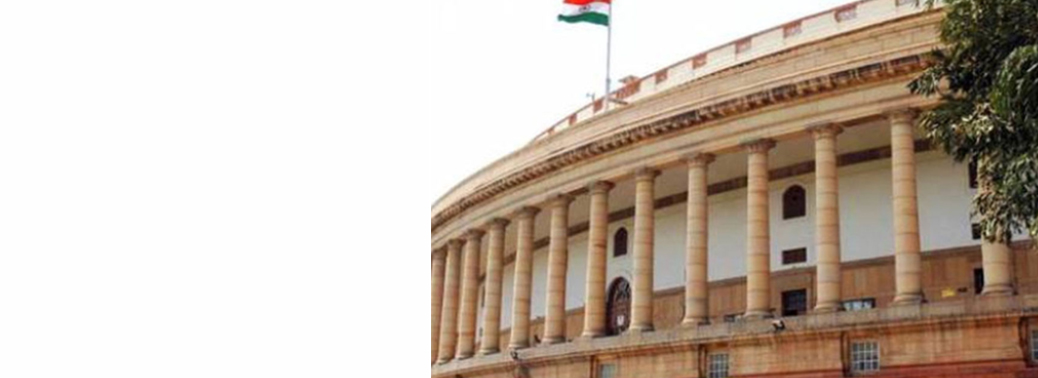
- Context: The Public Premises (Eviction of Unauthorised Occupants) Amendment Bill, 2019 was passed by both the houses of the Parliament. The Bill amends the Public Premises (Eviction of Unauthorised Occupants) Act, 1971. The Act provides for the eviction of unauthorised occupants from public premises in certain cases.
Background:
- The aim of the Bill is to facilitate smooth and speedy eviction of occupants of government accommodation on expiry of their terms and conditions.
- The Government provides residential accommodation to its employees, Members of Parliament and other dignitaries while they are in service or till the term of their office on licence basis.
- As per the existing allotment rules, after the expiry of the terms and conditions of the licence, the occupants of such residential accommodations become unauthorised for staying in such accommodation and should vacate the same.
Issue:
- However, it is often seen that the unauthorised occupants do not vacate the government accommodation on expiry of the terms and conditions of the licence as per the rules and uses dilatory tactics to withhold the accommodation.
- In order to check this delay, it is proposed to insert a new sub-section (3A) in section 7 of the Act to the effect that if the person challenges the eviction order passed by the estate officer in any court, he has to pay the damages for every month for the residential accommodation held by him.
- Under the existing provisions, the eviction proceedings of unauthorised occupants from “public premises” take around five to seven weeks’ time.
Key Highlights of the Bill:
Residential Accommodation:
- The Bill defines ‘residential accommodation occupation’ as the occupation of public premises by a person on the grant of a license for such occupation.
- The license must be given for a fixed tenure, or for the period the person holds office.
- Further, the occupation must be allowed under the rules made by the central, state or union territory government, or a statutory authority (such as Parliament Secretariat, or a central government company, or premises belonging to a state government).
Notice for Eviction:
- The Bill adds a provision laying down the procedure for eviction from residential accommodation.
- It requires an estate officer (an officer of the central government) to issue a written notice to a person if he is in unauthorised occupation of a residential accommodation.
- The notice will require the person to show cause of why an eviction order should not be made against him, within three working days.
- The written notice must be fixed to a conspicuous part of the accommodation, in a prescribed manner.
Order of Eviction:
- After considering the cause shown, and making any other inquiries, the estate officer will make an order for eviction.
- If the person fails to comply with the order, the estate officer may evict such person from the residential accommodation, and take possession of it.
- For this purpose, the estate officer may also use such force as necessary.
Payment of Damages:
- If the person in unauthorised occupation of the residential accommodation challenges the eviction order passed by the estate officer in court, he will be required to pay damages for every month of such occupation.
NHRC NATIONAL LEVEL REVIEW MEETING ON MENTAL HEALTH
08, Aug 2019
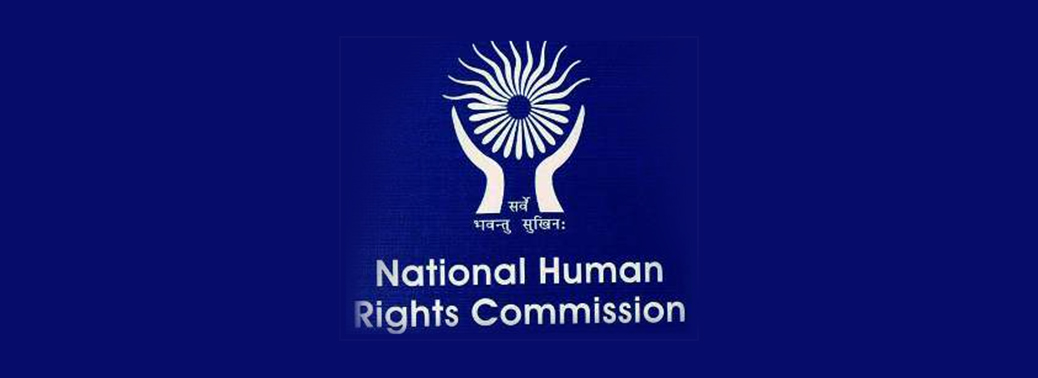
Why in News?
- A day-long NHRC National Level Review Meeting on Mental Health concluded at India International centre, New Delhi, highlighting several issues to bridge the gap between the legislation and its implementation.
- It was necessary to evaluate the ground realities post-implementation of Mental Healthcare Act, 2017.
Mental Healthcare Act, 2017.:
- This ensures every person shall have a right to access mental health care and treatment from mental health services run or funded by the appropriate government.
- The act assures free treatment for such persons if they are homeless or belong to Below Poverty Line, even if they do not possess a BPL card.
- Every person with mental illness shall have a right to live with dignity and there shall be no discrimination on any basis including gender, sex, sexual orientation, religion, culture, caste, social or political beliefs, class or disability.
- A person with mental illness shall have the right to confidentiality in respect of his mental health, mental healthcare, treatment and physical healthcare.
- A person who attempts suicide shall be presumed to be suffering from mental illness at that time and will not be punished under the Indian Penal Code.
- The government shall have a duty to provide care, treatment and rehabilitation to a person, having severe stress and who attempted to commit suicide, to reduce the risk of recurrence of attempt to commit suicide.
BIOMETRIC TOKEN SYSTEM
07, Aug 2019
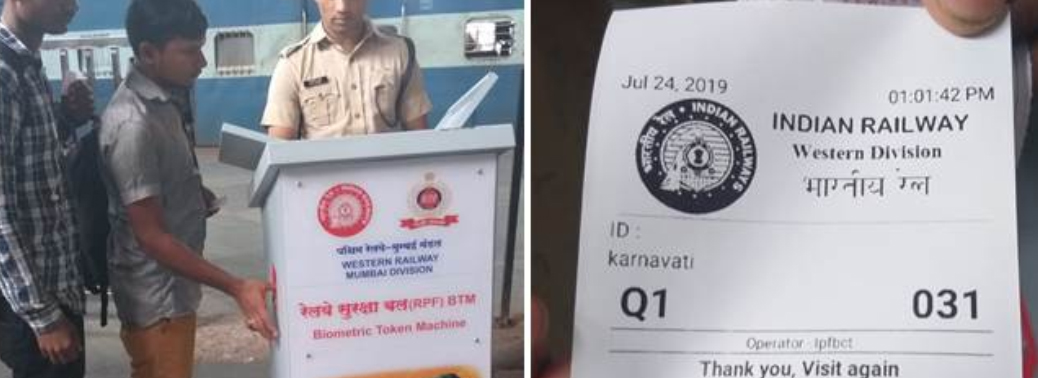
Why in News?
- The Western and Central Railways have introduced a new Biometric Token System (BTS) that seeks to streamline the process of boarding unreserved coaches.
Biometric Token System (BTS):
- The Western and Central Railways have introduced a new system by which passengers travelling in the general coach, where seats are not reserved, are given a token roughly three hours before the train’s departure.
- These tokens are given on a first-come, first-served basis, and carry a serial number on them, which governs the order in which passengers will board the train.
- Passengers with valid tickets are required to place their fingers on a scanner, and are issued a token with a serial number against their biometric data.
- Passengers must queue up and enter the compartment in the order of their serial numbers.
- The tokens are issued three hours before a train’s departure. The use of biometrics cuts out the touts, and helps genuine passengers.
Why such move?
- Boarding ‘general’ compartments — in which seating is not reserved — especially in long-distance trains leaving major cities, has always been an ordeal for passengers.
- The massive mismatch between the numbers of travellers and the available seats drives people to queue up on platforms up to 10 hours in advance.
- Chaos at the time of boarding has led to stampedes and even deaths in the past.
- Gangs of touts ‘reserve’ seats for a price, and those who can’t pay suffer.
Significance:
- The use of biometrics (fingerprint) rules out touts and ensures only bonafide travellers receive a token.
- The data (captured in the machines) will be used to analyse the pattern of crowds and the patronage of trains.
- In case of a mishap, officials will have details of the passengers, and with the help of this (biometric information) they can prevent black marketing of unreserved tickets.
FOOD SAFETY AND STANDARDS AUTHORITY OF INDIA (FSSAI)
07, Aug 2019
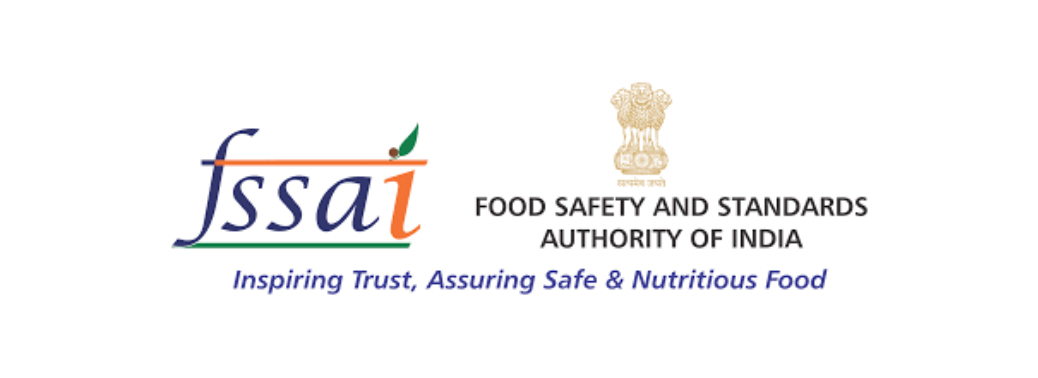
Context:
- Food Safety and Standards Authority of India (FSSAI) has issued an advisory asking all States and Union Territories to discourage the practice of packing of toys/ gifts with food products for infants and small children as there are chances of contamination and risk of accidental ingestion.
What is Issue:
- It has become a common practice for manufacturers to attract sales by adding small toys/gifts inside food packets.
- Several brands of chips and even chocolates come along with small toys/ gifts inside the packet. Some brands of chips packets even have tattoo stickers inside.
Concern:
- Considering the safety of public at large, there is a need to discourage food businesses from providing any toy or gift item inside the food packages, especially in case of food which is likely to be ingested directly by an infant or a small child.
- Also, it is desirable that the colour, texture and nature of toy or gift item should not at all resemble the food product inside food package.
- As per Section 3(1) zz (xi) of Food Safety and Standards Act, 2006 “unsafe food” means an article of food whose nature, substance or quality is so affected as to render it injurious to health by virtue of its being misbranded or substandard or food containing extraneous matter.
About FSSAI:
- Food Safety and Standards Authority of India (FSSAI) is an autonomous statutory body.
- The Food Safety and Standards Authority of India (FSSAI) has been established under Food Safety and Standards , 2006 which consolidates various acts & orders that have hitherto handled food related issues in various Ministries and Departments.
- FSSAI has been created for laying down science based standards for articles of food and to regulate their manufacture, storage, distribution, sale and import to ensure availability of safe and wholesome food for human consumption.
Establishment of the Authority:
- Ministry of Health & Family Welfare, Government of India is the Administrative Ministry for the implementation of FSSAI.
Highlights of the Food Safety and Standard Act, 2006
- Various Central Acts like:
- Prevention of Food Adulteration Act,1954
- Fruit Products Order , 1955,
- Meat Food Products Order,1973,
- Vegetable Oil Products (Control) Order, 1947,
- Edible Oils Packaging (Regulation)Order 1988,
- Solvent Extracted Oil,
- De- Oiled Meal and Edible Flour (Control) Order, 1967,
- Milk and Milk Products Order, 1992 etc will be repealed after commencement of FSS Act, 2006.
- The Act also aims to establish a single reference point for all matters relating to food safety and standards, by moving from multi- level, multi- departmental control to a single line of command.
Functions:
- Framing of Regulations to lay down the Standards and guidelines in relation to articles of food and specifying appropriate system of enforcing various standards thus notified.
- Laying down mechanisms and guidelines for accreditation of certification bodies engaged in certification of food safety management system for food businesses.
- Laying down procedure and guidelines for accreditation of laboratories and notification of the accredited laboratories.To provide scientific advice and technical support to Central Government and State Governments in the matters of framing the policy and rules in areas which have a direct or indirect bearing of food safety and nutrition.
- Collect and collate data regarding food consumption, incidence and prevalence of biological risk, contaminants in food, residues of various, contaminants in foods products, identification of emerging risks and introduction of rapid alert system.
- Creating an information network across the country so that the public, consumers, Panchayats etc receive rapid, reliable and objective information about food safety and issues of concern.
- Provide training programmes for persons who are involved or intend to get involved in food businesses.
- Contribute to the development of international technical standards for food, sanitary and phyto-sanitary standards.
- Promote general awareness about food safety and food standards.
Highlights of Food Safety and Standards Rule, 2011.
- The Rules provides for: The Food Safety Appellate Tribunal and the Registrar of the Appellate Tribunal, for adjudication of food safety cases.
- It covers Licensing and Registration, Packaging and Labelling of Food Businesses, Food Product Standards and Food Additives
- It prohibits and restricts on sales or approval for Non-Specified Food and Food Ingredients, such ingredients may cause harm to human health.
- It provides for Food Safety and Standards on Organic Food and regulates Food Advertising.
Recent Cases:
Nestle India Limited Maggi Case:
- The maggi noodles were reported with excess lead unfit for human consumption and FSSAI prescribed for ban.
Cadbury India:
- It was reported that worms was found in Cadbury’s Dairy Milk. The FSSAI declared packaging was not proper or airtight and made it mandatory to change the packaging.
SURROGACY REGULATION BILL, 2019
06, Aug 2019
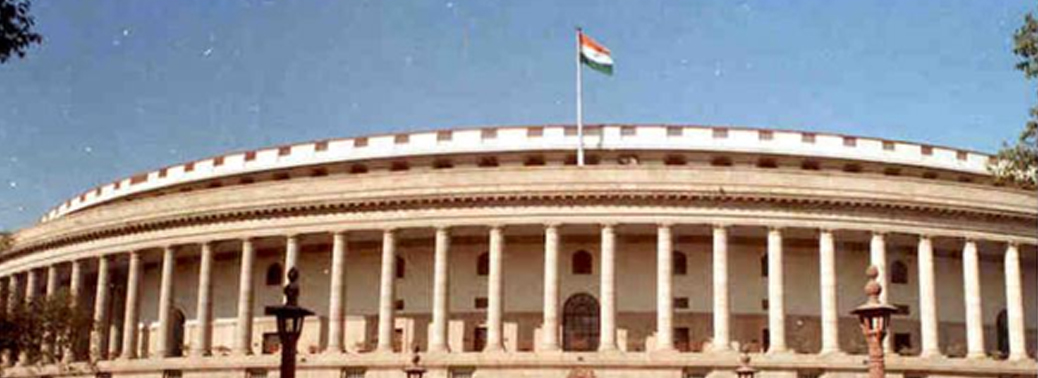
Context:
- The Surrogacy (Regulation) Bill 2019, was passed by the Lok Sabha.
Provisions of bill:
Regulation of surrogacy:
- The Bill prohibits commercial surrogacy, but allows altruistic surrogacy.
- What is Altruistic Surrogacy ?
- Altruistic surrogacy involves no monetary compensation to the surrogate mother other than the medical expenses and insurance coverage during the pregnancy.
- Commercial surrogacy includes surrogacy or its related procedures undertaken for a monetary benefit or reward (in cash or kind) exceeding the basic medical expenses and insurance coverage.
Purposes for which Surrogacy is permitted:
Surrogacy is permitted when it is:
- For intending couples who suffer from proven infertility;
- Altruistic
- Not for commercial purposes
- Not for producing children for sale, prostitution or other forms of exploitation; and
- For any condition or disease specified through regulations.
Eligibility criteria for Intending Couple:
- The intending couple should have a ‘certificate of essentiality’ and a ‘certificate of eligibility’ issued by the appropriate authority.
- A certificate of essentiality will be issued upon fulfilment of the following conditions:
- A certificate of proven infertility of one or both members of the intending couple from a District Medical Board;
- An order of parentage and custody of the surrogate child passed by a Magistrate’s court; and
- Insurance coverage for a period of 16 months covering postpartum delivery complications for the surrogate.
- The certificate of eligibility to the intending couple is issued upon fulfilment of the following conditions:
- The couple being Indian citizens and married for at least five years;
- Between 23 to 50 years old (wife) and 26 to 55 years old (husband);
- They do not have any surviving child (biological, adopted or surrogate); this would not include a child who is mentally or physically challenged or suffers from life threatening disorder or fatal illness; and
- Other conditions that may be specified by regulations.
Eligibility criteria for surrogate mother:
- To obtain a certificate of eligibility from the appropriate authority, the surrogate mother has to be:
- A close relative of the intending couple;
- A married woman having a child of her own;
- 25 to 35 years old;
- A surrogate only once in her lifetime; and
- Possess a certificate of medical and psychological fitness for surrogacy.
- Further, the surrogate mother cannot provide her own gametes for surrogacy.
Appropriate Authority:
- The central and state governments shall appoint one or more appropriate authorities within 90 days of the Bill becoming an Act.
- The functions of the appropriate authority include;
- Granting, suspending or cancelling registration of surrogacy clinics;
- Enforcing standards for surrogacy clinics;
- Investigating and taking action against breach of the provisions of the Bill;
- Recommending modifications to the rules and regulations.
Registration of Surrogacy Clinics:
- Surrogacy clinics cannot undertake surrogacy related procedures unless they are registered by the appropriate authority.
- Clinics must apply for registration within a period of 60 days from the date of appointment of the appropriate authority.
National and State Surrogacy Boards:
- The Central and the State Governments shall constitute the National Surrogacy Board (NSB) and the State Surrogacy Boards (SSB), respectively.
- Functions of the NSB include,
- Advising the central government on policy matters relating to surrogacy;
- Laying down the code of conduct of surrogacy clinics; and
- Supervising the functioning of SSBs.
Parentage and abortion of Surrogate Child:
- A child born out of a surrogacy procedure will be deemed to be the biological child of the intending couple. An abortion of the surrogate child requires the written consent of the surrogate mother and the authorisation of the appropriate authority.
- This authorisation must be compliant with the Medical Termination of Pregnancy Act, 1971. Further, the surrogate mother will have an option to withdraw from surrogacy before the embryo is implanted in her womb.
Offences and Penalties:
- The offences under the Bill include:
- Undertaking or advertising commercial surrogacy;
- Exploiting the surrogate mother;
- Abandoning, exploiting or disowning a surrogate child; and
- Selling or importing human embryo or gametes for surrogacy.
- The penalty for such offences is imprisonment up to 10 years and a fine up to 10 lakh rupees. The Bill specifies a range of offences and penalties for other contraventions of the provisions of the Bill.
Critical Analysis:
Altruistic Mother:
- The Surrogacy (Regulation) Bill 2019, once again denies women agency over their own bodies.The bill seeks to outlaw commercial surrogacy, and allows only “altruistic” surrogacy for “needy” couples with proven conditions of infertility.
- Women are once again being asked to use their bodies for the greater good without getting paid for it. Sperm donors will continue to get paid.
- Men in general are masters of their bodies. But women’s bodies need to be regulated, policed and legislated into dependence.
Surrogacy in Indian Scenario:
- There is clear evidence of malpractice surrounding commercial surrogacy in India. Middle men take most of the money, and women are robbed of the income that they deserve. It is also alleged that surrogates are not allowed to choose whether to become surrogates – they are forced into the business by their greedy families.
NATIONAL POPULATION REGISTER (NPR)
04, Aug 2019
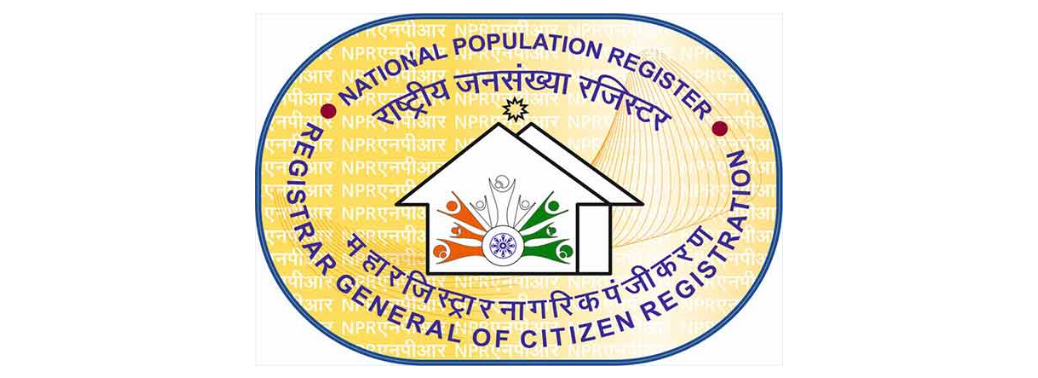
Why in News?
- The government has decided to prepare a National Population Register (NPR) by September 2020 to lay the foundation for rolling out a citizens’ register across the country.
Highlights:
- NPR is different from both the decennial census and the NRC.
- It will be in pursuance of the Citizenship (Registration of Citizens and Issue of National Identity Cards) Rules, 2003.
- The objective of the NPR is to create a comprehensive identity database of every usual resident in the country. It is mandatory for every usual resident of India to register in the NPR. The decision exempts the state of Assam from NPR-2020.
- For the purpose of the NPR, a usual resident is defined as a person who has resided in a local area for six months or more or a person who intends to reside in that area for the next six months or more.
- The database would contain demographic as well as biometric particulars.
- It will be the next round of recording biometric and family tree details of Indian citizens.
- The exercise was conducted earlier in two phases in 2010 and 2015.
- Earlier, the roll out of NPR had slowed down due to overlapping with that of Aadhaar.
SANKALP SCHEME
04, Aug 2019
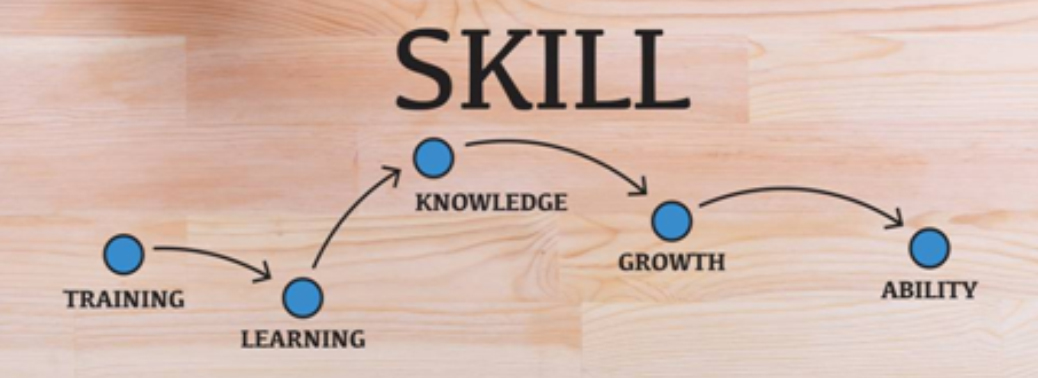
Why in News?
- Minister of Skill Development & Entrepreneurship has reviewed the World Bank loan assisted “Skills Acquisition and Knowledge Awareness for Livelihood Promotion (SANKALP) programme.
Highlights:

- All 36 States/ UTs across country have submitted their consent for participation in SANKALP.
- In addition to these State grants of Rs 10 lakh each also released to 117 aspirational districts under Aspirational Skilling Abhiyaan.
SANKALP Scheme:
- SANKALP is an outcome-oriented centrally sponsored programme of Ministry of Skill Development & Entrepreneurship (MSDE) with a special focus on decentralized planning and quality improvement.
- The project is implemented with the support of World Bank monetarily in line with the objectives of National Skills Development Mission (NSDM).
- It focuses on the overall skilling ecosystem covering both Central & State agencies.
- Under SANKALP four key result areas have been identified viz:
- Institutional Strengthening (at National, State & District level)
- Quality Assurance Quality Assurance of skill development programs
- Inclusion of marginalized population in skill development and
- Expanding Skills through Public Private Partnerships (PPPs)
TechEx 2019
04, Aug 2019
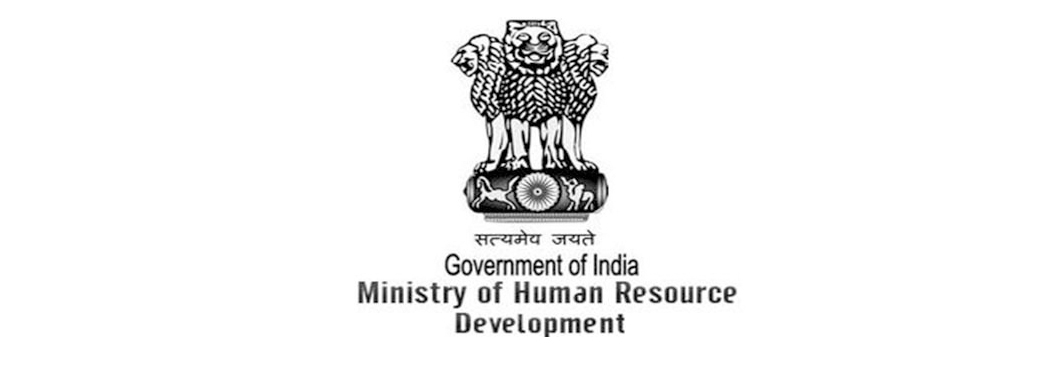
Why in News?
- Union Human Resource Development Minister, inaugurated theTechEx – technology exhibition at IIT Delhi
TechEx:
- TechEx was organized to demonstrate products and prototypes developed under the two flagship schemes of the Ministry of Human Resource Development (MHRD) namely IMPacting Research, INnovation and Technology (IMPRINT) and UchhatarAvishkar Yojana (UAY).
- TechEx is a unique effort, which offers an excellent platform to the researchers to showcase their work and inspire them to do their best in their respective domains.
- some prominent among the exhibits were non-invasive and low-cost rapid TB diagnostics, artificial pancreas for closed loop blood glucose control of type-I diabetic patients, affordable cancer diagnosis/treatment, electric vehicle charger, etc.
IMPRINT Scheme:
- MPRINT scheme was launched in November, 2015 with a view to providing solutions to the most relevant engineering challenges by translating knowledge into viable technology (products or processes) in 10 selected technology domains.
- The domains are namely health care, energy, sustainable habitat, nano-technology hardware, water resources and river systems, advanced materials, Information and Communication Technology, manufacturing, security and defence, and environmental science and climate change.
Uchhatar Avishkar Yojana (UAY):
- Uchhatar Avishkar Yojana (UAY) was announced in 2015 with a view to promoting innovation of a higher order that directly impacts the needs of the Industry and thereby improves the competitive edge of Indian manufacturing.
- UAY projects are funded jointly by MHRD, participating Ministries and the Industry
- The scheme focusses on a viable industry-academic collaboration where industry shares a part of the cost of research.
GOVERNMENT TO SUPPORT INDIA’S IT INDUSTRY
02, Aug 2019

Why in News?
- Union Minister of Commerce & Industry and Railways, held a meeting with senior managers of IT companies in New Delhi
IT Industry Challenges:
- India’s IT industry contributed 7.7% to the country’s GDP in FY 2017 and is expected to contribute 10% of India’s GDP by 2025.
- The United States account for 2/3rds of India’s IT services exports.
- India is the largest exporter of IT services in the world and exports dominate the Indian IT industry and constitutes about 79% of the total revenue of the industry.
- India’s IT service sector is now gearing up to be the digital partner of intelligent automation like smart algorithms, bots and AI tools, which are fast becoming a part of every industry and an increasingly digital world.
Challenges and support:
- The representatives of the companies informed that although the Chinese IT services market is the third largest in the world India’s investments and business have not been able to grow in China.
- This is due to various non-tariff barriers and challenges faced by Indian companies to set up their entity in China. Market access issues that create hurdles for Indian companies to open their business in China was also discussed.
- Government of India will give all support for the global growth of India’s flagship industry and will make all efforts to facilitate the IT service industry and for that it is ready to engage with China and also Japan and Korea
- Commerce and Industry Minister urged India’s IT services companies to explore other markets and not be inhibited in operating in countries that are non-English speaking.
J &K RESERVATION (SECOND AMENDMENT) BILL
02, Aug 2019
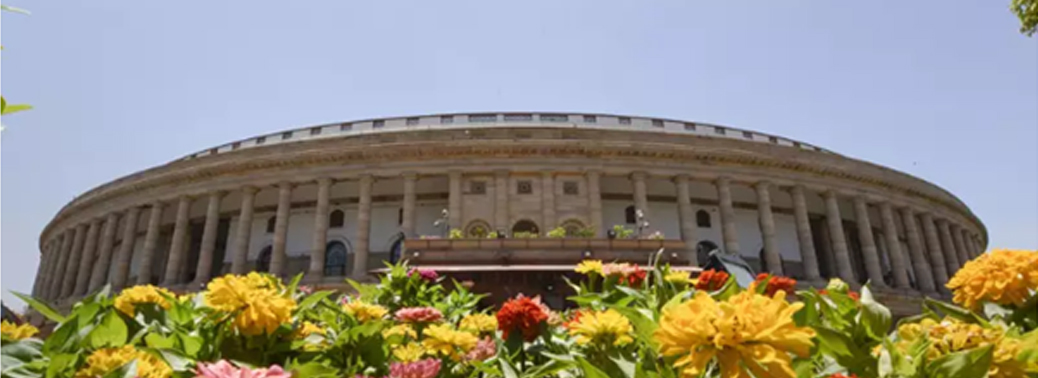
Why in News?
- Cabinet has approved J&K Reservation (Second Amendment) Bill to provide 10 percent reservation to the poor in higher education and government jobs.
Highlights:
- The bill will pave the way for the extension of 10 percent reservation for the poor in educational institutes and government offices of Jammu and Kashmir.
- The 10 percent reservation for the Economically Weaker Sections (EWS) will be in addition to the existing reservations in the state.
Background:
- The Supreme Court had earlier refused to order a stay on the government’s decision to grant 10 percent quota to economically weaker sections in jobs and admissions. The court had, however, agreed to examine the validity of the law and issued a notice to the Centre on the pleas.
- The Lok Sabha and the Rajya Sabha passed the reservation bill on January 8 and 9 respectively and it was later signed by President Ram Nath Kovind.
Extension of Reservation:
- The Act provides for the reservation in appointment and promotions in certain state government posts to persons belonging to socially and educationally backward classes.
- It defines socially and educationally backward classes to include persons living in areas adjoining the Actual Line of Control.
- The Bill amends this to include those persons living in areas adjoining the International Border, within the ambit of this reservation.
- Further, the Act states that any person who has been appointed on the basis of residence in an area adjoining the Line of Control must serve in such areas for at least seven years.
- The Bill extends this condition to persons living in areas adjoining the International Border as well.
Exclusion from Reservation:
- The Act states that any person whose annual income exceeds three lakh rupees or other amounts as notified by the state government, would not be included within socially and educationally backward classes.
- However, this exclusion does not apply to persons living in areas adjoining the Actual Line of Control.
- The Bill states that in addition, this exclusion will not apply to persons living in areas adjoining the International Border also.
DRAFT NATIONAL EDUCATION POLICY 2019
02, Aug 2019
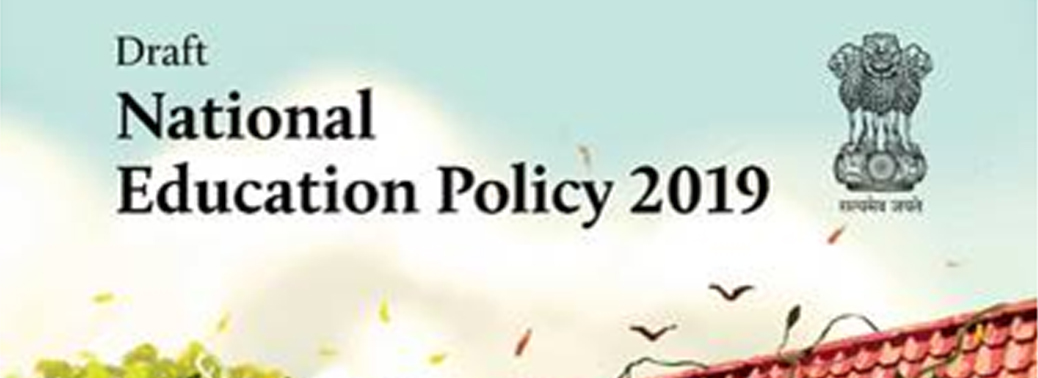
About
- The New Education Policy drafted by a committee headed by Dr.K.Kasturirangan.
- The report proposes an education policy, which seeks to address the challenges of:
1. Access
2. Equity
3. Quality
4. Affordability
5. Accountability faced by the current education system.
- The draft Policy provides for reforms at all levels of education from school to higher education.
- It seeks to increase the focus on early childhood care, reform the current exam system, strengthen teacher training, and restructure the education regulatory framework.
Key Features
Current Situation
- Early childhood education is delivered through anganwadis and private-preschools.
- There has been less focus on the educational aspects of early childhood.
Suggestion by Committee
- The draft Policy recommends developing a two-part curriculum for early childhood care and education.
- This will consist of:
1. Guidelines for up to three-year-old children (for parents and teachers), and
2. Educational framework for three to eight-year-old children.
- This would be implemented by improving and expanding the anganwadi system and co-locating anganwadis with primary schools.
RTE Act,2009:
- The draft Policy recommends to include early childhood education and secondary school education in the ambit of RTE Act so that all children between the ages of 3 to 18 are covered under the Act.
- It also recommends no detention of children till class 8.
Curriculum Framework:
- This would consist of a 5-3-3-4 design comprising:
1. Five years of foundational stage (three years of pre-primary school and classes one and two),
2. Three years of preparatory stage (classes three to five),
3. Three years of middle stage (classes six to eight), and
4. Four years of secondary stage (classes nine to 12).
- Curriculum load in each subject should be reduced to its essential core content. This would make space for holistic, discussion and analysis-based learning.
School Exam Reforms:
Current situation of board examinations:
1. Force students to concentrate only on a few subjects,
2. Do not test learning in a formative manner, and
3. Cause stress among students.
Draft policy suggests-
- To track students’ progress throughout their school experience, the draft Policy proposes State Census Examinations in classes three, five and eight.
- Restructuring the board examinations to test only core concepts, skills and higher order capacities.
- These board examinations will be on a range of subjects.
- The students can choose their subjects, and the semester when they want to take these board exams.
- The in-school final examinations may be replaced by these board examinations.
School Infrastructure:
Current Situation
- Establishing primary schools in every habitation across the country has helped increase access to education.
- However, it has led to the development of very small schools (having low number of students).
- The small size of schools makes it operationally complex to deploy teachers and critical physical resources.
Recommendation
- Multiple public schools should be brought together to form a school complex.
- A complex will consist of one secondary school (classes nine to twelve) and all the public schools in its neighborhood that offer education from pre-primary till class eight.
Regulation of Schools:
- The Policy recommends independent State School Regulatory Authority for each state that will prescribe uniform standards for public and private schools across the state.
Higher Education:
- The Policy aims to increase Gross Enrollment Ratio to 50% by 2035 from the current level of about 25.8%.
Regulatory Structure:
- Instead of multiple regulators the Policy recommends National Higher Education Regulatory Authority which would include professional and vocational education so that the role of professional councils such as AICTE and Bar Council Of India would be limited to setting standards of professional practice.
- Establishing National Research Foundation: as an autonomous body to fund, mentor and build capacity for quality research in India.
Vocational Education:
- Less than 5% of the workforce in the age group of 19-24 years receives vocational education in India.
- The Policy recommends integrating vocational educational programs in all educational institutions in a phased manner over 10 years.
- National Committee for the integration of Vocational Education will be set up to achieve the intended goals in vocational education in India.
3 Language Formula:
- Flexibility given to states to select subjects.
- The state governments should implement a modern Indian language preferably southern Indian language, apart from Hindi and English in Hindi speaking states and of regional language, English and another language preferably Hindi in non-Hindi speaking states.
Challenges:
- In the case of early childhood care and education, the focus is more on physical resources and less focus is provided to psychosocial stimulation for development.
- There is no government system to take care of babies of poor families or of mothers who go to work for daily wages. The experimental project of Fulwari or community-managed crèches in Chhattisgarh is one answer to this gap.
- There needs to be a discussion on whether literacy and numeracy skills should be developed during the time of foundational learning.
- In the draft Policy, there is no mention of how the State regulatory body will regulate the government institutions.
- Increasing the limit on the higher side of education i.e.., up to 18 is not consistent with the limits across the world. Also, it is a very expensive proposition.
- There is not enough capacity in the country to provide for teacher’s education. Also, there is more focus given to B.Ed. and M.Ed. has been given less importance under the policy.
- There are fewer consensuses on the integration of foundational learning with schooling. In Europe, compulsory education begins at the age of 6. In countries like Denmark and Finland, compulsory education begins at the age of 7.
CONSUMER PROTECTION BILL, 2019
31, Jul 2019

Context:
- The Lok Sabha unanimously passed the Consumer Protection Bill 2019, which seeks to wholly replace the Consumer Protection Act 1986.
About:
- The Bill with 109 clauses seeks to establish a National Level Regulator -Central Consumer Protection Authority (CCPA) to deal with consumer complaints on a proactive measure.
- The present law does not have a regulator.
- The Bill contains key provisions dealing with class actions, product liability, misleading advertisements, liability for celebrity endorsements etc.
- The Bill also addresses new age developments like e-commerce, direct selling, tele-marketing etc.
Highlights of The Bill:
Central Consumer Protection Authority (CCPA):
- CCPA is a national level regulator dealing with matters relating to violation of rights of consumers, unfair trade practices and false or misleading advertisements which are prejudicial to the interests of public and consumers.
- CCPA deals with the rights of consumers as a class.
- It will have an investigation wing headed by a Director General and has powers of search and seizure.
- It has power to order recall of goods which are dangerous, hazardous or unsafe and to direct discontinuation of practices which are unfair and prejudicial to the interests of consumers.
- It also has the power to impose penalties on manufacturers and celebrity endorsers for misleading advertisements.
Misleading Advertisements:
- The Bill contains provisions to deal with misleading advertisements.
- Misleading advertisements can attract penalty up to rupees ten lakhs from the CCPA under Clause 21.
- It is also an offence punishable with imprisonment for a term which may extend to five years and with fine which may extend to fifty lakh rupees as per Clause 89.
Liability of Celebrity Endorsers:
- The endorser can be levied with penalty up to rupees ten lakhs by the CCPA for false and misleading advertisements, under Clause 21.
- However, the endorser will not be liable if he has exercised due diligence to verify the veracity of the claims made in the advertisement regarding the product or service being endorsed by him.
Product Liability:
- A product liability action may be brought by a complainant against a product manufacturer or a product service provider or a product seller, as the case may be, for any harm caused to him on account of a defective product.
Expanded Definition Of ‘Deficiency’:
- The Bill expands the definition of ‘deficiency’ in Clause 2(11) to include:
1. Any act of negligence or omission or commission by such person which causes loss or injury to the consumer; and
2. Deliberate withholding of relevant information by such person to the consumer.
Enhanced Pecuniary Jurisdiction:
- The limits of pecuniary jurisdiction has been expanded in the following manner:
- District Forum: Rs. One Crore from Rs. Twenty Lakhs
- State Commission: Rs. Ten Crores from Rs. One Crore
- National Commission: Above Rs. Ten Crores from Rs. One Crores.
Offences:
- Misleading advertisements are made punishable.
- The Bill also addresses the menace of adulteration, by making manufacture, sale, storage of products mixed with adulterants punishable offences.
CIVIL LIST OF IAS OFFICERS
30, Jul 2019

Why in News?
- The Union Government has launched the e-Civil List-2019 of the IAS Officers.
IAS Civil List:
- The IAS Civil list contains vital information in respect of officers in respect of their batch, cadre, present posting, pay scale, qualification and superannuation with their overall cadre strength with search features.
- The Civil list has been linked with the ER sheets. The List has been designed through DoPT, which gives multiple search options to the users.
- The Department of Personnel and Training is the cadre controlling authority of IAS officers and the Civil List is prepared with the help of inputs received from the States Cadres.
- The e-IAS Civil list is available on the website of the Ministry
Significance:
- The civil list is in line with citizen-centricity in working as it provides the information related to IAS officers in public domain which is accessible to the users from anywhere.
- It will facilitate the Information Commissions as the information demanded by RTI activists about the officers is already in public domain that too with multiple search options.
- DoPT being the HR wing of the government, it will also facilitate in research and comparative data analysis based on many parameters such as age, sex. educational qualifications etc
- It will also assist in the human resource management of the Government to ensure that the services of these officers are utilized to the best of their abilities.
NATIONAL MEDICAL COMMISSION
30, Jul 2019
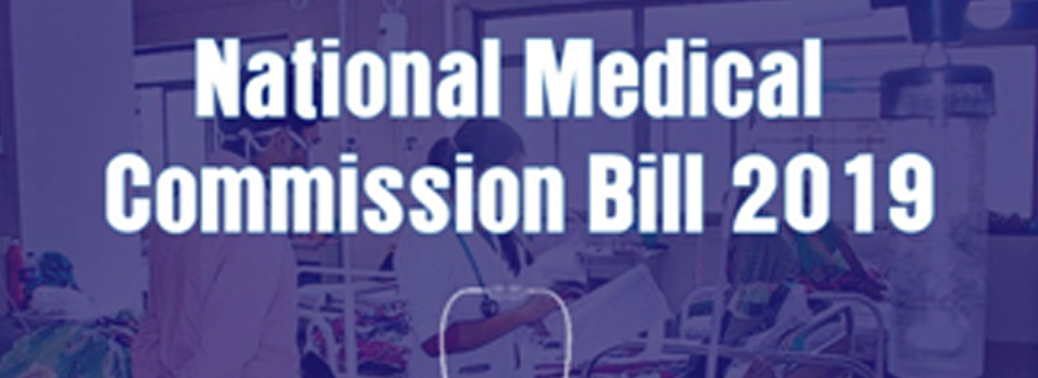
- Context- Doctors and medical students under the Indian Medical Association (IMA) held a protest march
Why National Medical Commission Bill?
- The Bill seeks to repeal the Indian Medical Council Act, 1956 and provide for a medical education system which ensures:
1. Availability of adequate and high-quality medical professionals,
2. Adoption of the latest medical research by medical professionals,
3. Periodic assessment of medical institutions, and
4. An effective grievance redressal mechanism.
- IMC had failed to keep pace with time and various bottlenecks had crept into the system with serious detrimental effects on medical education and, by implication, on delivery of quality health services.
Highlights of the Bill:
Constitution of the National Medical Commission:
- The Bill sets up the National Medical Commission (NMC).
- Establish State Medical Councils at the state level.
- The NMC will consist of 25 members, appointed by the central government.
- Members of the NMC will include:
1. The Chairperson (must be a medical practitioner),
2. Presidents of the Under-Graduate and Post-Graduate Medical Education Boards,
3. The Director General of Health Services, Directorate General of Health Services,
4. The Director General, Indian Council of Medical Research, and
5. Five members (part-time) to be elected by the registered medical practitioners from amongst themselves from states and union territories for a period of two years.
Functions of the National Medical Commission:
- Framing policies for regulating medical institutions and medical professionals
- Assessing the requirements of healthcare related human resources and infrastructure,
- Ensuring compliance by the State Medical Councils of the regulations made under the Bill,
- Framing guidelines for determination of fees for up to 50% of the seats in private medical institutions and deemed universities which are regulated under the Bill.
Autonomous Boards:
- The Bill sets up autonomous boards under the supervision of the NMC.
- Each autonomous board will consist of a President and four members, appointed by the central government.
- These boards are: The Under-Graduate Medical Education Board (UGMEB) and the Post-Graduate Medical Education Board (PGMEB):
- These Boards will be responsible for formulating standards, curriculum, guidelines, and granting recognition to medical qualifications at the undergraduate and post graduate levels respectively.
- The Medical Assessment and Rating Board (MARB): MARB will have the power to levy monetary penalties on medical institutions which fail to maintain the minimum standards as laid down by the UGMEB and PGMEB.
Community Health Providers (CHP):
- NMC may grant a limited license to certain mid-level practitioners connected with the modern medical profession to practice medicine.
- These mid-level practitioners may prescribe specified medicines in primary and preventive healthcare.
- In any other cases, these practitioners may only prescribe medicines under the supervision of a registered medical practitioner.
Entrance Examinations:
- There will be a uniform National Eligibility-cum-Entrance Test for admission to under-graduate and post-graduate super-speciality medical education in all medical institutions regulated under the Bill.The NMC will specify the manner of conducting common counselling for admission in all such medical institutions.
National Exit Test:
- The Bill proposes a common final year undergraduate examination called the National Exit Test for the students graduating from medical institutions to obtain the license for practice. This test will also serve as the basis for admission into post-graduate courses at medical institutions under this Bill.
Concerns:
- Indian Medical Association (IMA) – the apex body representing the medical fraternity in India.The first concern is over the CHPs being allowed to practice modern medicine. The Bill does not define who they are or what qualifications they hold and yet they are to be given licenses to the extent of one-third of the total number of licensed medical practitioners in India.
- The IMA’s second major objection is to the proposed National Exit Test (NEXT) for giving both licenses for practice (to those who have already cleared the MBBS exam) as well as for admission to post-graduate “broad-speciality courses”.
- The bill takes away the voting right of every doctor in India to elect their medical council.
ATAL INNOVATION MISSION
29, Jul 2019
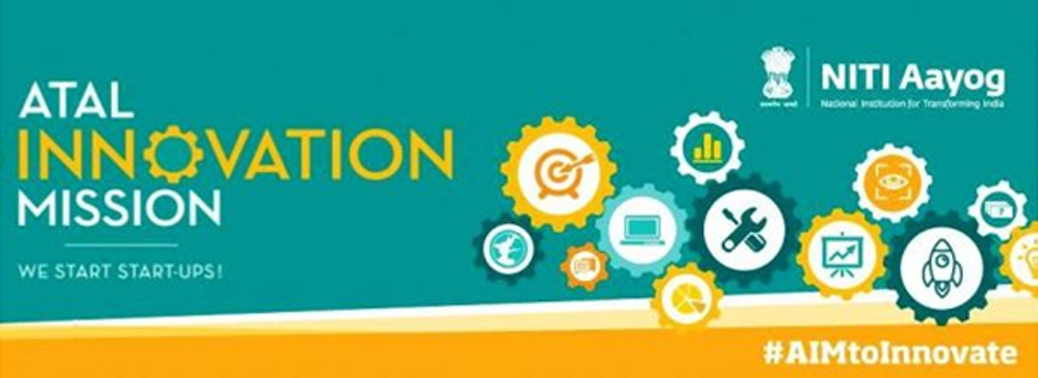
Why in News?
- Atal Innovation Mission (AIM) including Self-Employment and Talent Utilization (SETU) is Government of India’s endeavour to promote a culture of innovation and entrepreneurship. Its objective is to serve as a platform for promotion of world-class Innovation Hubs, Grand Challenges, Start-up businesses and other self-employment activities, particularly in technology driven areas.
- The Mission has been set up under NITI Aayog
Functions of AIM:
- Entrepreneurship promotion through Self-Employment and Talent Utilization, wherein innovators would be supported and mentored to become successful entrepreneurs
- Innovation promotion: to provide a platform where innovative ideas are generated :
- Atal Tinkering Labs
- Atal Incubation Centers
- Scale-up support to Established Incubators
Atal Tinkering Labs:
- The objective of establishing AIM is to create scientific temper and cultivate the spirit of curiosity and innovation among young minds.
- In Schools, AIM facilitates to set up network of Atal Tinkering Laboratories (ATL).
- The vision of Atal Tinkering Lab initiative is to ‘Cultivate 1 Million children in India as Neoteric Innovators’. The objective of this scheme is to foster curiosity, creativity and imagination in young minds and inculcate skills such as design mind-set, computational thinking, adaptive learning, physical computing, rapid calculations, measurements etc.
ACCESSIBLE ELECTIONS
29, Jul 2019
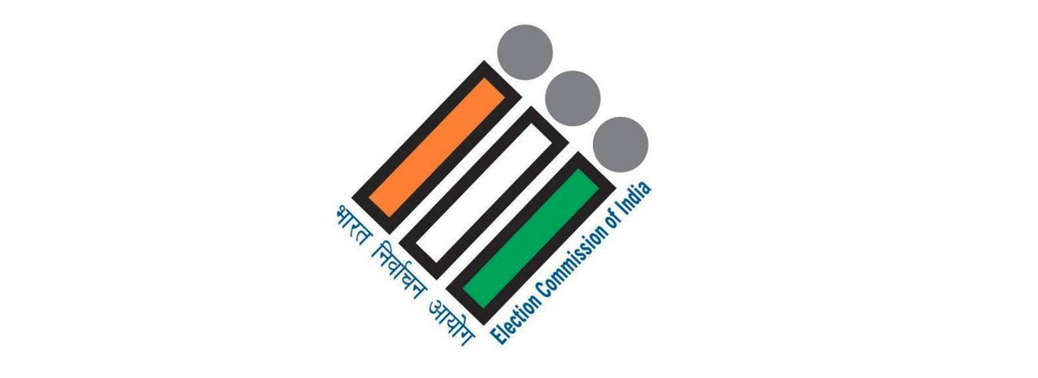
Why in News?
- The motto of ‘Accessible Elections’ was one among the many initiatives of Election Commission to make the world’s largest democratic exercise inclusive and participative for all.
- During this election special focus was given to ensure the participation of Persons with Disabilities.
Facilitation for Persons with Disabilities:
- The electors with disabilities and senior citizens were mapped polling station wise to provide them targeted and need-based assistance on the day of poll.
- During the election, all the polling stations were equipped with enough supply of wheelchairs and it was ensured that all polling stations had sturdy ramps for the convenience of PwD electors.
- All the polling stations in Lok Sabha Election 2019 had a sign language expert, signage and transport facility.
- To facilitate PwDs during the enrollment process door to door registration drives were carried out, a special mobile application was also developed by the Commission for easy registration.
- This election was witness to many firsts in the domain of accessibility of all; EVMs used in the elections were embossed with Braille signage for the visually impaired voters’ assistance.
- Other documents like voters’ slip, voter guide had braille signage too. Accessibility Observers were introduced, who ensured all the polling stations are accessible to the PwDs.
DEATHS DUE TO MALNUTRITION
28, Jul 2019

Context:
- The recently published National Family Health Survey (NFHS) conducted by Ministry of Health and Family Welfare highlights the State-wise prevalence of malnutrition in women and children.
Key Highlights of the report:
- As per the NFHS-4 report
- 52.1% – children under 5 years age are underweight
- 49.3% – children under 5 years age are stunted (not attaining age-appropriate height)
- 31.3% – children under 5 years age are wasted (not attaining age- appropriate weight)
- More than half (53.9%) of our girls within 15-19 years have low body mass index (BMI);
- Only one in every five mothers (21%) has full ante-natal care;
- One in every two pregnant women (50.3%) within the age-group of 15-49 is anaemic.
- Only one-third (30%) of the mothers consume iron and folic supplement during pregnancy.
- The overall child mortality rate as per NFHS- 4 is 9.4 which is declined from 18.4 as per previous NFHS- 3.
- Malnutrition is not a direct cause of death among children under five years of age.
- However, it can increase morbidity and mortality by reducing resistance to infections.
What is Malnutrition?
- Malnutrition refers to deficiencies, excesses or imbalances in a person’s intake of energy and/or nutrients.
- The term malnutrition covers 2 broad groups of conditions. One is ‘undernutrition’—which includes stunting (low height for age), wasting (low weight for height), underweight (low weight for age) and micronutrient deficiencies or insufficiencies (a lack of important vitamins and minerals).
- The other is overweight, obesity and diet-related noncommunicable diseases (such as heart disease, stroke, diabetes and cancer).
About National Family Health Survey (NFHS):
- The National Family Health Survey (NFHS) is a large-scale, multi-round survey conducted in a representative sample of households throughout India.
- The Ministry of Health and Family Welfare (MOHFW), Government of India, designated IIPS as the nodal agency, responsible for providing coordination and technical guidance for the NFHS.
- NFHS was funded by the United States Agency for International
- Development (USAID) with supplementary support from United Nations Children’s Fund (UNICEF).
About POSHAN Abhiyaan:
- For monitoring the level of malnutrition among the children (0-6 years of age), POSHAN Abhiyaan has been launched under which near real time monitoring is done through ICDS-CAS Mobile based Software Application.
- The ICDS-CAS Application enables the identification of malnutrition children based on auto-plotting of Growth Charts.
- The drill-down dashboard available at National, State, District, Block level contributes towards identifying and addressing the problem of nutrition.
WHO REPORT ON THE GLOBAL TOBACCO EPIDEMIC
28, Jul 2019
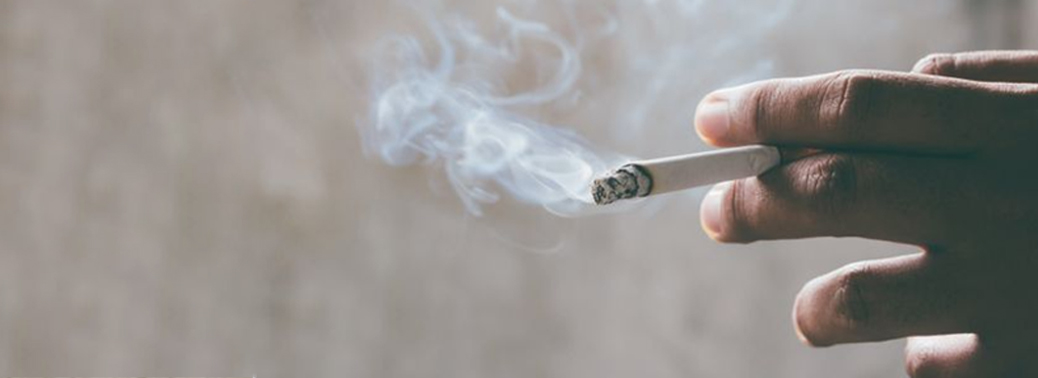
Context:
- The seventh WHO Report on the Global Tobacco Epidemic analyses national efforts to implement the most effective measures from the WHO Framework Convention on Tobacco Control (WHO FCTC) that are proven to reduce demand for tobacco.
- Report makes special reference about India’s efforts in helping smokers quit.
MPOWER
- Measures, like the “MPOWER” interventions, have been shown to save lives and reduce costs from averted healthcare expenditure.
- The MPOWER report was launched in 2007 to promote government action on six tobacco control strategies in-line with the WHO FCTC to:
- Monitor tobacco use and prevention policies.
- Protect people from tobacco smoke.
- Offer help to quit tobacco use.
- Warn people about the dangers of tobacco.
- Enforce bans on tobacco advertising, promotion and sponsorship.
- Raise taxes on tobacco.
Indian Context
National Tobacco control programme
- The key activities undertaken under the National Tobacco Control Programme include:
- National Level Public awareness campaigns
- Monitoring, Evaluation and Research.
- Advocacy and inter-sectoral linkages
- Training and capacity building of multiple stakeholders.
- Enforcement of the Tobacco Control Act (COTPA, 2003)
- School Awareness Programmes
- Setting up and expansion of cessation services.
- Recently India made mandatory with increase in size of pictorial warning of tobacco causing cancer
Significance of graphic warning on tobacco packs
- Over half the world’s population – or 3.9 billion people living in 91 countries – benefit from large graphic health warnings, and India is among countries with the highest level of achievement, the WHO report notes.
- While there has been no India-specific evaluation, studies from several countries that introduced similar strong labels have shown that this policy has been most effective in reducing tobacco use among the youth, and also in motivating users to quit.
NATIONAL INDICATOR FRAMEWORK
27, Jul 2019
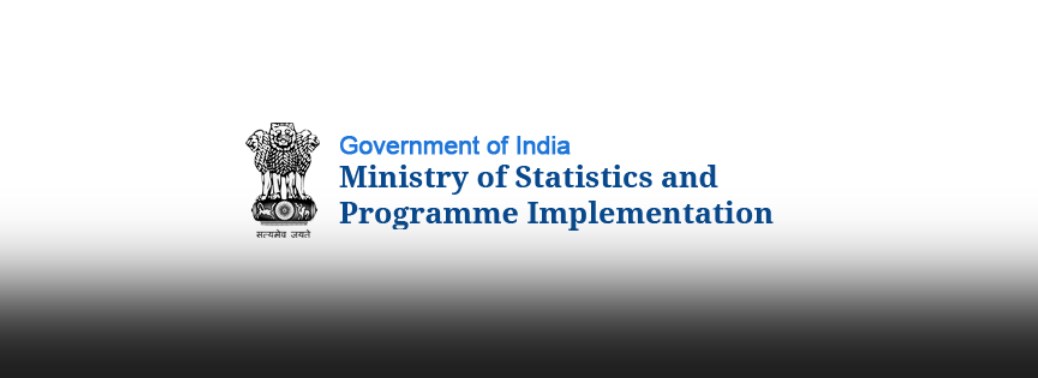
Why in news?
- A national consultation workshop was organized with the Central Ministries / Departments and State Governments to discuss the proposed indicators. The Ministries / Departments were also requested to examine the suggested possible national indicators and add / delete / modify / suggest national indicators for the SDG targets concerned. Furthermore, a public consultation was also made.
- Based on the suggestions received in the national consultation process from concerned Ministries/Departments and other stakeholders, National Indicator Framework (NIF) consisting of 306 statistical indicators has been prepared by MoSPI.
- NIF will be the backbone of monitoring of SDGs at the national level and will give appropriate direction to the policy makers and the implementers of various schemes and programmes.
Features of National Indicator Framework:
- Largest ever Monitoring Framework in the country. National Indicator Framework consists of 306 statistical indicators. This is the largest monitoring framework in the country and will be dependent on a statistical system for flow of information.
- It has been developed after extensive consultations with NITI Aayog, Central Ministries, State Governments and other stakeholders.
- The framework consists of nationally defined indicators responding to national priorities and needs.
- National acceptability was an important criterion used in deciding the indicators.
- The indicators directly respond to the goals and targets.
- Attempt made to cover all components of the targets.
- Data sources and periodicity included.
- Data disaggregation to be decided by the respective Ministries.
- Scope of improving the Framework by adding/deleting indicators with improvement in Statistical System.
- High Level Steering Committee (HLSC) to periodically review and refinement of National Indicator Framework for monitoring SDGs.
COMPANIES (AMENDMENT) BILL, 2019
27, Jul 2019
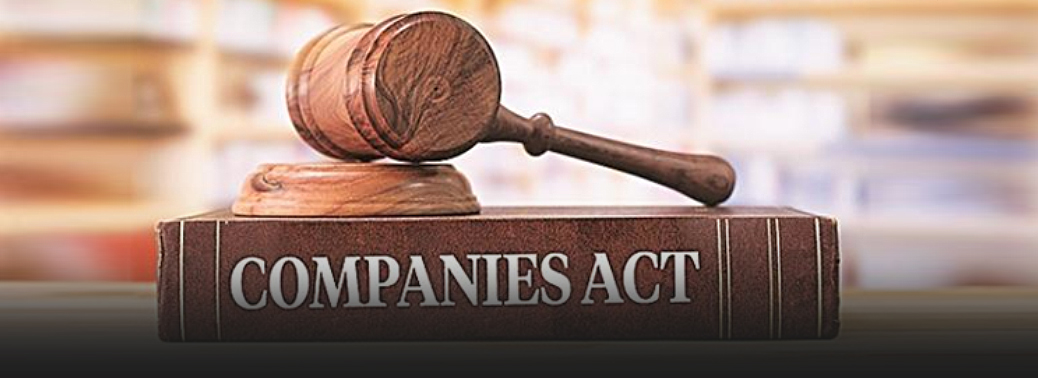
Why in News?
- Lok Sabha passed the Companies (Amendment) Bill, 2019. The legislation is aimed at tightening the Corporate Social Responsibility (CSR) compliance.
Significance of The Bill:
- The amendment will tighten the Corporate Social Responsibility (CSR) compliance and would reduce the load of cases before the National Company Law Tribunal (NCLT).
- It would ensure a greater accountability, better enforcement of the corporate governance norms and compliance management in corporate sector.
- With the amendments, procedural and technical defaults would be decriminalised while compliance would be incentivised.
Highlights of The Bill:
Re-categorisation of certain Offences:
- The 2013 Act contains 81 compoundable offences punishable with fine or fine or imprisonment, or both. These offences are heard by courts.
- The Bill re-categorizes 16 of these offences as civil defaults, where adjudicating officers (appointed by the central government) may now levy penalties instead.
- These offences include:
- (i) issuance of shares at a discount, and (ii) failure to file annual return. Further, the Bill amends the penalties for some other offences.
Corporate Social Responsibility (CSR):
- Under the Act, if companies which have to provide for CSR, do not fully spent the funds, they must disclose the reasons for non-spending in their annual report.
- Under the Bill, any unspent annual CSR funds must be transferred to one of the funds under Schedule 7 of the Act (e.g., PM Relief Fund) within six months of the financial year.
- However, if the CSR funds are committed to certain ongoing projects, then the unspent funds will have to be transferred to an Unspent CSR Account within 30 days of the end of the financial year, and spent within three years.
- Any funds remaining unspent after three years will have to be transferred to one of the funds under Schedule 7 of the Act.
- Any violation may attract a fine between Rs 50,000 and Rs 25,00,000 and every defaulting officer may be punished with imprisonment of up to three years or fine between Rs 50,000 and Rs 25,00,000, or both.
Debarring auditors:
- Under the Act, the National Financial Reporting Authority debar a member or firm from practising as a Chartered Accountant for a period between six months to 10 years, for proven misconduct.
- The Bill amends the punishment to provide for debarment from appointment as an auditor or internal auditor of a company, or performing a company’s valuation, for a period between six months to 10 years.
Commencement of business:
- The Bill states that a company may not commence business, unless it (i) files a declaration within 180 days of incorporation, confirming that every subscriber to the Memorandum of the company has paid for the shares agreed to be taken by him, and (ii) files a verification of its registered address with the RoC within 30 days of incorporation.
- If it fails to comply with these provisions and is found not to be carrying out business, its name of the company may be removed from the Register of Companies.
Registration of charges:
- The Act requires companies to register charges (e.g., mortgages) on their property within 30 days of creation of charge, extendable upto 300 days with the permission of the RoC.
- The Bill changes the deadline to 60 days (extendable by 60 days).
Change in approving authority:
- Under the Act, change in period of financial year for a company associated with a foreign company, has to be approved by the National Company Law Tribunal.
- Similarly, any alteration in the incorporation document of a public company which has the effect of converting it to a private company, has to be approved by the Tribunal. Under the Bill, these powers have been transferred to central government.
Compounding:
- Under the Act, a regional director can compound (settle) offences with a penalty of up to five lakh rupees. The Bill increases this ceiling to Rs 25 lakh.
Bar on holding office:
- Under the Act, the central government or certain shareholders can apply to the NCLT for relief against mismanagement of the affairs of the company.
- The Bill states that in such a complaint, the government may also make a case against an officer of the company on the ground that he is not fit to hold office in the company, for reasons such as fraud or negligence.
- If the NCLT passes an order against the officer, he will not be eligible to hold office in any company for five years.
Beneficial Ownership:
- If a person holds beneficial interest of at least 25% shares in a company or exercises significant influence or control over the company, he is required to make a declaration of his interest.
- The Bill requires every company to take steps to identify an individual who is a significant beneficial owner and require their compliance under the Act.
CODE ON OCCUPATIONAL SAFETY, HEALTH AND WORKING CONDITIONS BILL, 2019
26, Jul 2019

Why in News?
- The Minister of State (I/C) for Labour and Employment Shri Santosh Kumar Gangwar introduced The Code on Occupational Safety, Health and Working Conditions Bill, 2019 in Lok Sabha today to amend the laws regulating the Occupational Safety, Health and Working Conditions of the persons employed in an establishment.
Code on Occupational Safety, Health and Working Conditions Bill, 2019:
- With the ultimate aim of extending the safety and healthy working conditions to all workforce of the country, the Code enhances the ambit of provisions of safety, health, welfare and working conditions from existing about 9 major sectors to all establishments having 10 or more employees.
- The proposed Code enhances the coverage of workers manifold as it would be applicable to all establishments employing 10 or more workers, where any industry, trade, business, manufacture or occupation is carried on, including, IT establishments or establishments of service sector.
- Further the varying threshold of applicability has been made uniform at 10 workers for all establishments except mines and dock where the Code would be applicable even with 1 worker. In order to ensure wider coverage, the definitions of Working Journalists and Cine worker have also been modified to include workers employed in electronic media and all forms of audio-visual production.
- Similarly, the definition of inter-state migrant worker has also been proposed to be modified to include those migrant workers who are being employed directly by the employer from other States without contractor or agent. This proposal would enhance the coverage of the safety, health and working conditions provisions manifold as compared to the present scenario.
Other Features:
- The Code provides basic broad legislative framework with enabling provisions for framing rules, regulations, standards, and bye-laws as per the requirements of different sectors which has Resulted in reduction of 622 sections to 134 sections in the Code. This would result in simple legislation with flexibility in changing the provisions in tune with emerging technologies and makes the legislation dynamic.
- The Bill proposes one registration for an establishment instead of multiple registrations. Presently 6 labour acts out of 13 provide for separate registration of the establishment. This will create a centralized data base and promote ease of doing business. At present, separate registration is required to be obtained under 6 Acts.
- Employer to provide free of cost annual health checks-up for employees above prescribed age for prescribed tests and for prescribed establishments. Increases productivity as it would be possible to detect diseases. Coverage of employees above a certain age for health check-up would promote inclusion.
- First time statutory provision to issue appointment letter to every employee of the establishment with the minimum information prescribed by the appropriate government. The provision of appointment letter will result in formalization of employment and prevent exploitation of the worker.
- The multiple committees under five labour Acts have been substituted by one National Occupational Safety and Health Advisory Board. The National Board is of tripartite nature and has representation from trade unions, employer associations, and State governments. This will result in reduction in multiplicity of bodies/committees in various Acts and simplified and coordinated policy-making.
- Enabling provision for constituting a bi-partite Safety Committee in any class of establishment by appropriate government. It will promote safe and healthy working conditions in an establishment. The participatory nature of the committee will encourage implementation of decisions taken by the management.
- A part of the penalty for contravention of provisions relating to duties of employer leading to death or serious bodily injury to any person may be given to the victim or the legal heirs of the victim by the Court. The part of penalty would help in rehabilitation of injured worker or would provide financial support to the family of deceased.
- Presently, different applicability thresholds exists for welfare provisions like crèche, canteen, first aid, welfare officer etc in different Acts. The proposed Code has envisaged uniform threshold for welfare provisions for all establishment as far as practicably feasible.
- Women permitted to work beyond 7 PM and before 6 AM subject to the safety, holidays, working hours or any other condition as prescribed by appropriate government in respect of prescribed establishments. However, only after taking their consent for night work. This will promote gender equality and is in tune with demands from the various forums including international organizations as it leads to protective discrimination.
Further, the condition of taking consent/ willingness of the women employee for night work would avoid any kind of misuse of the provision. - The provision of one license and one return in place of multiple licenses and returns in existing 13 labour laws subsumed in this Code to save time, resources and efforts of establishments.
IMPLEMENTATION OF POSHAN ABHIYAAN
26, Jul 2019
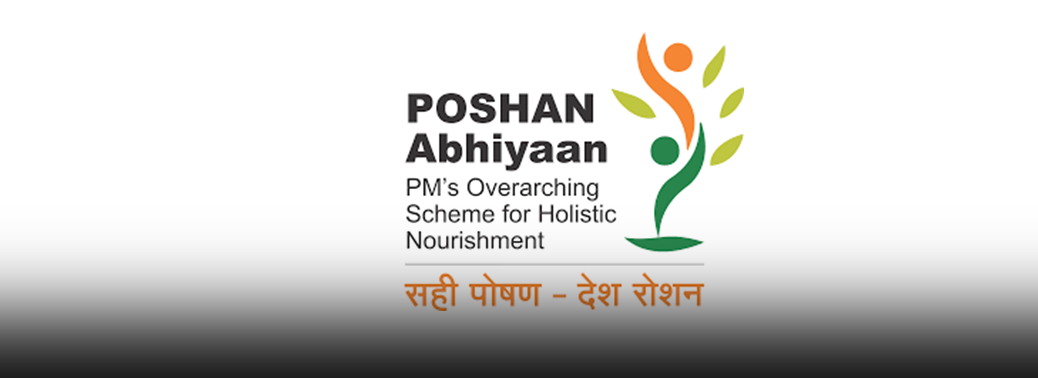
Why in News?
- POSHAN Abhiyaan has been set up by Government of India in 2017 for a three-year time frame.
Objectives:
- Reduce the level of stunting in children (0-6 years) under-nutrition (underweight prevalence) in children (0-6 years) and Low Birth Weight at 2% per annum
- Reduce anaemia among young children (6-59 months), women and adolescent girls at 3% per annum across the country.
Abhiyaan:
- The Abhiyaan ensures convergence with various programmes, organising Community Based Events; incentivizing States/UTs for achieving goals.
- Community Mobilization and Awareness Advocacy leading to Jan Andolan – to educate the people on nutritional aspects. Incremental Learning Approach (ILA); strengthening Field Functionaries.
- Under the Abhiyan, all districts of the 36 States/UTs, including Tamil Nadu, have been covered for implementation in a phased manner.
NORTH EASTERN REGION VISION 2020
26, Jul 2019

Why in News?
- North Eastern Region Vision 2020 document provides an overarching framework for the development of the North Eastern Region.
- The main objective is to bring the north eastern region at par with other developed regions under which different Ministries, including the Ministry of Development of North Eastern Region have undertaken various initiatives.
Reasons for resource flow:
- Mandatory earmarking of at least 10% of GBS of Central Ministries/Departments for North Eastern Region (NER).
- Creation of Non-Lapsable Central Pool of Resources (NLCPR).
- There has been a sharp rise in provisional expenditure (subject to final vetting by Ministry of Finance) by Central Ministries in NER by 83%.
Major initiatives:
- Strengthening infrastructure and connectivity is a major thrust area identified by the Vision document. Several connectivity initiatives have been undertaken in the recent past.
- In the last five years under the schemes of Ministry of DoNER funds were released for road projects, bridges, ISBT, airports, railway in North Eastern Region.
- Moreover, Regional Connectivity Scheme (RCS-UDAN) has been launched to provide connectivity to unserved and underserved Airports within the country.
- Also, to promote regional connectivity, airfare has been made affordable through Viability Gap Funding (VGF). The North East has been kept as a priority area under RCS-UDAN.
- In respect of Rail Connectivity, during the last four years the entire North East Region has been converted to the Broad Gauge (BG) network.
Other major initiatives taken:
- Promotion of MSMEs in North Eastern Region and Sikkim
- Comprehensive Telecom Development Project (CTDP) for the North-Eastern Region
- Comprehensive Scheme for strengthening of Transmission and Distribution Systems (CSST&DS).
- North Eastern Region Power System Improvement Project (NERPSIP)
- Mission Organic Value Chain Development for North Eastern Region scheme
- North East Region Textile Promotion Scheme (NERTPS).
- National Sports University at Imphal, Agartala-Akhaura Rail-Link to connect the existing Agartala station in Tripura to Akhaura Station of Bangladesh Railways
- Development of Brahmaputra and 19 new waterways including Barak.
FREEDOM OF EXPRESSION TO GOVERNMENT EMPLOYEES
26, Jul 2019
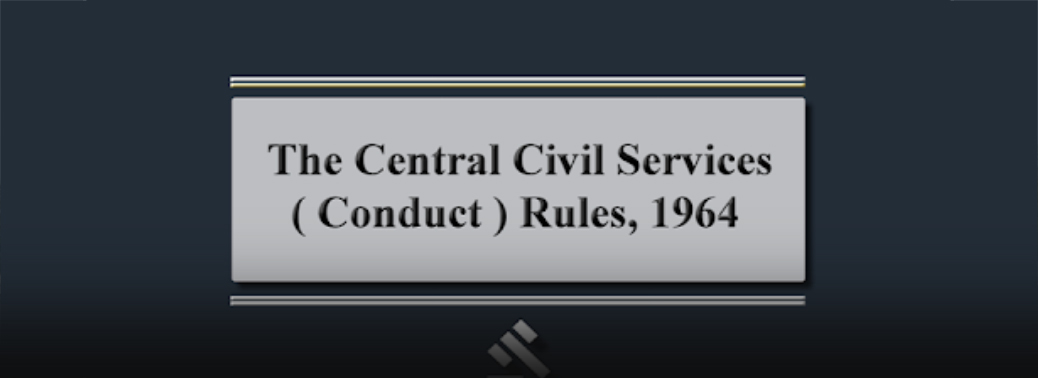
Why in News?
- It is mentioned that as per Rule 8 of Central Civil Services (Conduct) Rules, 1964, no Government servant shall, except with the previous sanction of the Government, own or conduct or participate in the editing or management of, any public media.
Central Civil Services (Conduct) Rules provides:
- Which has the effect of an adverse criticism of any current or recent policy or action of the Central Government or a State Government
- which is capable of embarrassing the relations between the Central Government and the Government of any State
- which is capable of embarrassing the relations between the Central Government and the Government of any foreign State
Exceptions:
- Bonafide expression of views by office-bearers of a trade union or association of Government servants for the purpose of safeguarding the conditions of service of such Government servants or for securing an improvement thereof.
- Views expressed by a Government servant in his official capacity or in the due performance of the duties assigned to him.
UNLAWFUL ACTIVITIES PREVENTION (AMENDMENT) BILL, 2019
26, Jul 2019

Why in News?
- The Lok Sabha has passed the Unlawful Activities (Prevention) Amendment Bill 2019, in a move that gives a big push to India’s internal security machinery.
- The move comes after amendment to the NIA Bill.
UAPA:
- The UAPA is an upgrade on the Terrorist and Disruptive Activities (Prevention) Act TADA, which was allowed to lapse in 1995 and the Prevention of Terrorism Act (POTA) was repealed in 2004.
- It was originally passed in 1967 under the then Congress government led by former Prime Minister Indira Gandhi.
- Till 2004, “unlawful” activities referred to actions related to secession and cession of territory. Following the 2004 amendment, “terrorist act” was added to the list of offences.
Why Amendment?
- The Bill amends the Unlawful Activities (Prevention) Act, 1967, providing special procedures to deal with terrorist activities, and individuals and groups that foster terrorism in India.
Highlights:
- The proposed amendments to the existing Act redefine “Who may commit terrorism “, establishing that under the Act, the Centre may designate an organisation as a terrorist organisation if it commits or participates in acts of terrorism, prepares for terrorism, promotes terrorism, or is otherwise involved in terrorism.
- The Bill also additionally empowers the government to designate individuals as terrorists on the same grounds.
- The Bill also paves the way for the National Investigation Agency (NIA) to seize property as part of investigations into terror cases.
- At the same time, while the existing Act provides for investigation of cases to be conducted by officers of the rank of Deputy Superintendent or Assistant Commissioner of Police or above. The proposed amendment additionally empowers the officers of the NIA to investigate cases — of the rank of Inspector or above.
- Further, the International Convention for Suppression of Acts of Nuclear Terrorism (2005) has also been added in the Second Schedule through this Amendment.
Need for Amendments:
- It is often accused that UAPA Act assigns absolute power to the central government to declare someone as terrorist.
- Terrorism is not just fostered by the gun. Terrorism is also the spread of hate and radicalism.
- If the bill is passed, a person can be declared a terrorist when they take part in terror activities, or provide funds, or harbour a terror theory and then spread it among youth.
CODE ON WAGES BILL, 2019
26, Jul 2019
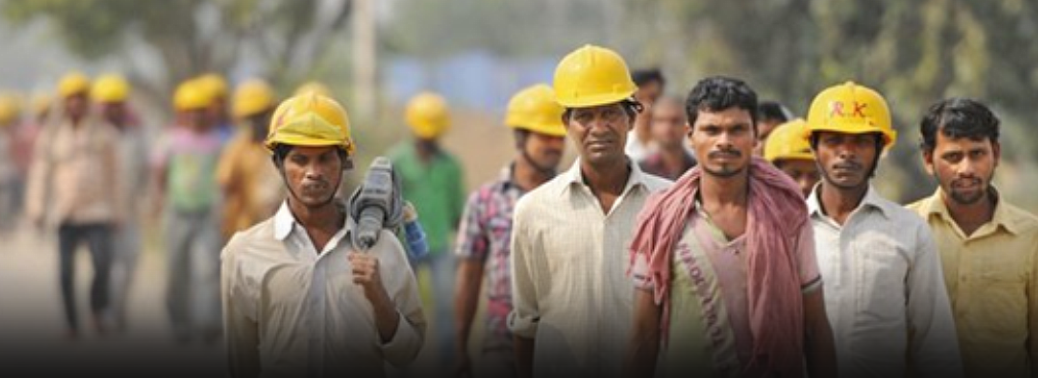
Why in News?
- The Code on Wages Bill, 2019 was introduced in Lok Sabha to amend and consolidate the laws relating to wages and bonus and matters connected therewith.
Code on Wages Bill 2019:
- The Code on Wages Bill, 2019 subsumes relevant provisions of The Minimum Wages Act, 1948, The Payment of Wages Act, 1936, The Payment of Bonus Act, 1965 and The Equal Remuneration Act, 1976. After the enactment of the Code on Wages, all these four Acts will get repealed.
The Salient features of the Code:
- The Code on Wage universalizes the provisions of minimum wages and timely payment of wages to all employees irrespective of the sector and wage ceiling.
- At present, the provisions of both Minimum Wages Act and Payment of Wages Act apply on workers below a particular wage ceiling working in Scheduled Employments only.
- This would ensure “Right to Sustenance” for every worker and intends to increase the legislative protection of minimum wage from existing about 40% to 100% workforce.
- This would ensure that every worker gets minimum wage which will also be accompanied by increase in the purchasing power of the worker thereby giving fillip to growth in the economy.
- Introduction of statutory Floor Wage to be computed based on minimum living conditions, will extend qualitative living conditions across the country to about 50 crore workers.
- It is envisaged that the states to notify payment of wages to the workers through digital mode.
- There are 12 definitions of wages in the different Labour Laws leading to litigation besides difficulty in its implementation.
- The definition has been simplified and is expected to reduce litigation and will entail at lesser cost of compliance for an employer.
- An establishment will also be benefited as the number of registers, returns, forms etc., not only can be electronically filed and maintained, but it is envisaged that through rules, not more than one template will be prescribed.
- At present, many of the states have multiple minimum wages. Through Code on Wages, the methodology to fix the minimum wages has been simplified and rationalised by doing away with type of employment as one of the criteria for fixation of minimum wage.
- The minimum wage fixation would primarily base on geography and skills. It will substantially reduce the number of minimum wages in the country from existing more than 2000 rates of minimum wages.
- Many changes have been introduced in the inspection regimes including web based randomised computerised inspection scheme, jurisdiction-free inspections, calling of information electronically for inspection, composition of fines etc.
- All these changes will be conducive for enforcement of labour laws with transparency and accountability.
- There were instances that due to smaller limitation period, the claims of the workers could not be raised.
- To protect the interest of the workers, the limitation period has been raised to 3 years and made uniform for filing claims for minimum wages, bonus, equal remuneration etc., as against existing varying period between 6 months to 2 years.
- It can be said that a historical step for ensuring statutory protection for minimum wage and timely payment of wage to 50 crore workers in the country has been taken through the Code on Wages besides promoting ease of living and ease of doing business.
NEW SPACE INDIA LIMITED
25, Jul 2019
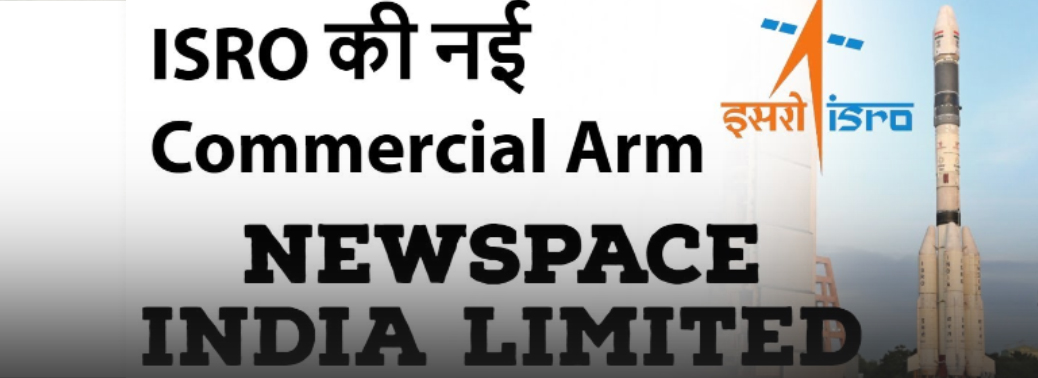
Why in News?
- The Union Government has set up New Space India Limited (NSIL), a wholly-owned Government of India undertaking/ Central Public Sector Enterprise (CPSE), under the administrative control of Department of Space (DOS)
Significance:
- To commercially exploit the research and development work of Indian Space Research Organisation (ISRO) Centres and constituent units of DOS.
- The emergence of NSIL would spur the growth of Indian industries in the space sector and enable Indian industries to scale up manufacturing and production base.
Roles and functions:
- Small Satellite technology transfer to industry, wherein NSIL will obtain license from DOS/ISRO and sub-license it to Industries
- Manufacture of Small Satellite Launch Vehicle (SSLV) in collaboration with Private Sector
- Productionisation of Polar Satellite Launch Vehicle (PSLV) through Indian Industry
- Productionisation and marketing of Space-based products and services, including launch and application
- Transfer of technology developed by ISRO Centres and constituent units of DOS
- Marketing spin-off technologies and products/services, both in India and abroad
- any other subject which Government of India deems fit.
BENGALURU GOES LIVE WITH FACIAL BIOMETRICS-BASED AIR TRAVEL
25, Jul 2019
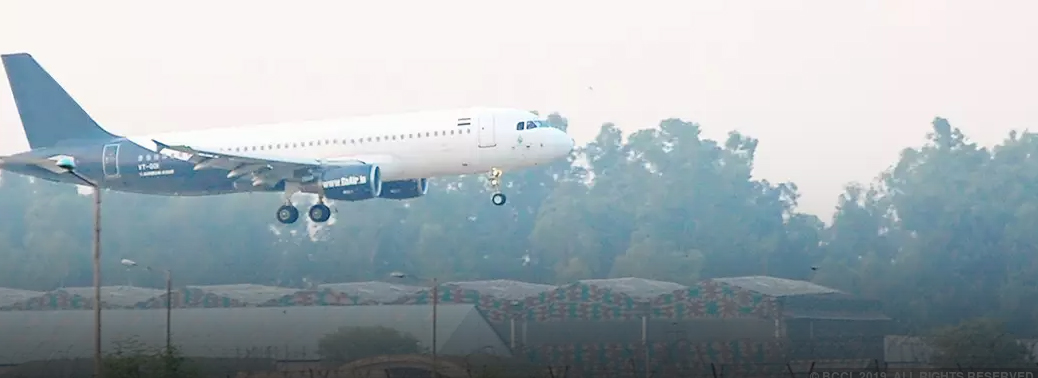
Why in News?
- The Kempegowda International Airport (KIA) rolled out a biometric-based self-boarding facility.
Highlights:
- The passengers had the option of boarding a flight without producing travel documents at each touch point.
- To avail this facility, a passenger has to enrol their ID, biometric data and flight details before entering the terminal.
- The passenger will be authenticated and verified at every touch point by biometric technology.
Paperless Biometric System:
- The Bangalore International Airport Limited (BIAL), the operator of the KIA, is expected to deploy the paperless biometric system at over 350 passenger touch points in Terminal 1 with the final phase of the project.
- In the final stage, this technology will be integrated with the Digi Yatra Central Platform that is currently being architecture by the central government’s Digi Yatra Foundation.
User Data Privacy:
- The BIAL maintains that biometric data is used only for authentication and verification of passengers to assist the boarding process, and not for recognition.
- The process offers the highest degree of safety and security while ensuring stringent standards of safety.
- Passenger data will be deleted within a few hours of completion of air travel.
- Vision Box, the company that developed and installed One – ID biometric platform technology, is compliant with the European Union’s General Data Protection Regulation (GDPR), which adopts privacy by design principles.
MERGER OF NIMH WITH ICMR-NIOH
25, Jul 2019

Why in News?
- The Union Cabinet approved to dissolve National Institute of Miners’ Health (NIMH), an autonomous Institute under Ministry of Mines (MoM) and merge/amalgamate with ICMR-National Institute of Occupational Health (NIOH).
Significance:
- The merger/amalgamation of NIMH with NIOH will prove beneficial to both the Institutes in term of enhanced expertise in the field of occupational health besides the efficient management of public money.
Highlights:
- NIMH was set up by Government of India in 1990
- The Institute conducts applied research in occupational health and hygiene and specializes in providing technical support services to mining and mineral-based industry and endeavours for safe mines and healthy miners through R&D.
- The focus areas of NIOH include a vast array of areas related to occupational health which also includes, occupational medicine and occupational hygiene.
- Expenditure Management Commission recommended, inter-alia, that- “Organisations with similar objectives can be considered for merger to encourage synergy in operations and reduction in cost”.
What Is Occupational Health?
- Occupational health deals with all aspects of health and safety in the workplace and has a strong focus on primary prevention of hazards.
- The health of the workers has several determinants, including risk factors at the workplace leading to cancers, accidents, musculoskeletal diseases, respiratory diseases, hearing loss, circulatory diseases, stress related disorders and communicable diseases and others
ANDHRA PRADESH EMPLOYMENT OF LOCAL CANDIDATES IN INDUSTRIES/FACTORIES ACT, 2019
24, Jul 2019
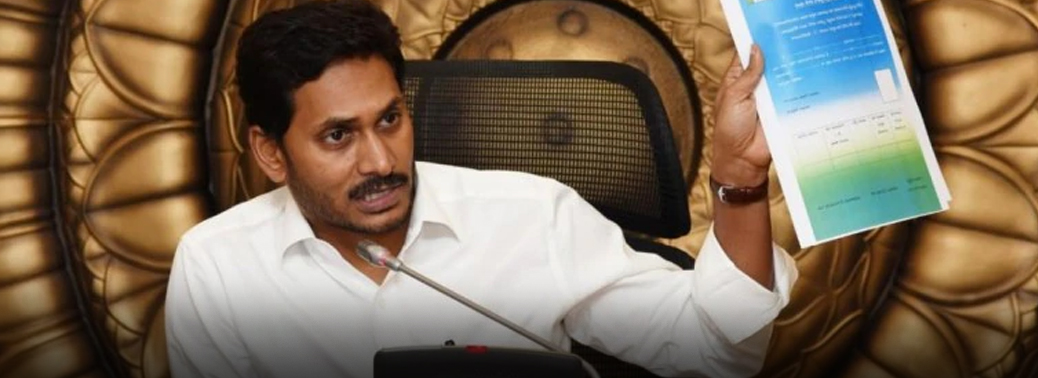
- Context- The Andhra Pradesh Government on Tuesday reserved 75% jobs in private industrial units and factories for residents of the state.
Highlights of The Act:
- The new rules will apply to joint ventures as well as projects under public-private partnerships.
- The law applies to existing units as well as industrial units which will be set up in the state in the future.
- The new law says that if residents with the necessary skills are not available, the companies will have to train them in cooperation with the state government.
- Only the industries listed in the first schedule of the Factories Act – mostly producing hazardous goods like petroleum, pharmaceuticals, coal, fertilisers and cement – have been excluded from the ambit of the Act.
- Companies will have to comply with the new Act within three years of beginning of its operations. They will also have to file quarterly reports about local appointments with a nodal agency.
8 MORE ROUTES START OPERATIONS UNDER UDAN
23, Jul 2019

Why in News?
- Giving further fillip to Regional Connectivity, 8 more routes became functional Under Regional Connectivity Scheme – Ude Desh Ka Aam Nagrik- UDAN of the Ministry of Civil Aviation.
Highlights:
- With the addition of these 8 new routes, total UDAN routes Operational as on date have increased to 194 routes. The scheme seeks to boost regional air connectivity and provides various incentives to airlines. The routes are Mysore – Hyderabad, Mysore – Goa, Mysore – Cochin and Kolkata – Shillong.
UDAN Scheme:
- UDAN is a regional connectivity scheme. The full form of UDAN is ‘Ude Desh ka Aam Nagarik’. The scheme aims to develop smaller regional airports to allow common citizens easier access to aviation services. The following are the stated objectives of the regional connectivity scheme: Operalisation and development of 425 underserved or unserved airports in the country. Boost inclusive economic development by providing faster connectivity
- Development of air transport infrastructure in remote areas aiding job growth.
PANEL FAVOURS CRYPTOCURRENCY BAN IN INDIA
23, Jul 2019

- Context: The committee headed by finance secretary Subhash Chandra Garg has proposed a draft bill “Banning of Cryptocurrency & Regulation of Official Digital Currency Bill, 2019″
Highlights of The Committee Recommendations:
- Proposed banning of private cryptocurrencies in India by enacting a law and imposing fines and penalties for carrying on activities related to cryptocurrencies.
- Proposed a draft bill “Banning of Cryptocurrency & Regulation of Official Digital Currency Bill, 2019″, which has been placed in the public domain.
- The committee has, taken a lenient view on the government launching an official digital currency, asking it to keep an open mind on the matter
It suggested the use of distributed-ledger technology (DLT) or blockchain in India, by banks and other financial firms for processes such as loan-issuance tracking, collateral management, fraud detection and claims management in insurance and reconciliation systems in the securities market.
The committee identifies the potential use cases for blockchain technology in areas such as:
- Payments systems including cross-border and small value payments;
Data identity management or know-your-customer requirements by various financial entities. - Insurance
- Collateral and ownership (including land) registries
- Loan issuance and tracking
- e-stamping
- Trade financing
- Post-trade reporting
- Securities and commodities and
- Internal systems of financial service providers.
- The advantages of using DLT are mainly seen in terms of reducing administration and transaction costs, obviating duplication and improving accuracy of data, improving the speed and efficiency of transactions and detecting fraud.
UGC SCHEME OF ‘PARAMARSH’
21, Jul 2019

Why in News?
- The Union Minister for Human Resource Development launched ‘Paramarsh’ – a University Grants Commission (UGC) scheme for Mentoring NAAC Accreditation Aspirant Institutions to promote Quality Assurance in Higher Education.
‘Paramarsh’:
- This “Paramarsh” scheme will target 1000 Higher Education Institutions for mentoring with a specific focus on quality as enumerated in the UGC “Quality Mandate”.
- Mentor-Mentee relationship will not only benefit both the institutions but also provide quality education to the 3.6 crore students who are enrolling to Indian Higher Education system at present.
Significance of the scheme:
- The Scheme will be a paradigm shift in the concept of mentoring of institution by another well performing institution to upgrade their academic performance and enable them to get accredited by focusing in the area of curricular aspects, teaching-learning & evaluation, etc.
- The scheme is expected to have a major impact in addressing a national challenge of improving the quality of Higher Education in India.
- The scheme will lead to enhancement of overall quality of the Mentee Institutions and enhance its profile as a result of improved quality of research, teaching and learning methodologies.
- Mentee Institution will also have increased exposure and speedier adaptation to best practices.
- “Paramarsh” scheme will also facilitate sharing of knowledge, information and opportunities for research collaboration and faculty development in Mentee Institutions.
SCHEMES FOR INDIGENOUS EMPLOYMENT IN NER
21, Jul 2019
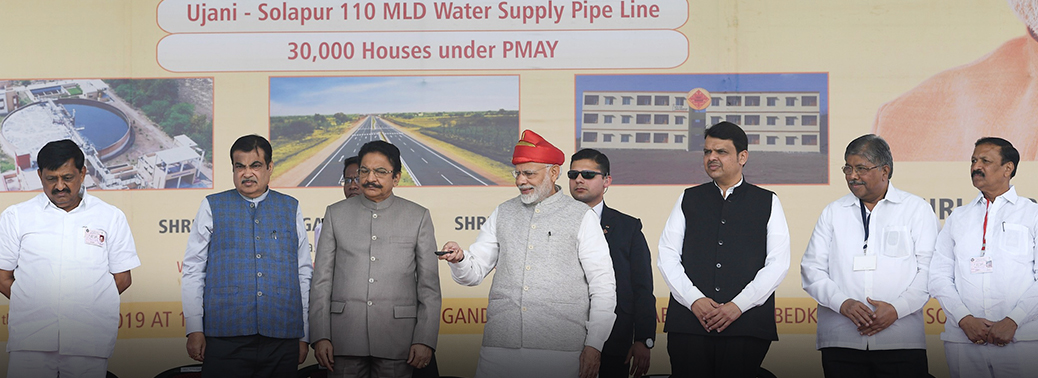
- The North Eastern Handicrafts and Handlooms Development Corporation Limited (NEHHDC):
- The North Eastern Handicrafts and Handlooms Development Corporation Limited (NEHHDC), a Central Public Sector Enterprises (CPSE) of the Ministry of Development of North Eastern Region (DoNER),
- Provides marketing linkage to the artisans and weavers of the North Eastern Region (NER) by conducting exhibitions and craft bazaars in various parts of the country which in turn generates indirect employment for the artisans and weavers.
NERCORMP:
- The North Eastern Region Community Resource Management Project (NERCORMP), a livelihood project under the Ministry of DoNER, has facilitated in establishing community-based micro-credit organizations and non-farm enterprises in its project areas.
- It provides employment to Self Help Groups (SHGs) in 10 districts of 4 States of NER namely Arunachal Pradesh, Assam, Manipur and Meghalaya for enterprise development.
North East Rural Livelihood Project (NERLP):
- A World Bank aided project, being implemented by Ministry of DoNER, provides skill development training, vocational training to unemployed youths & Self-Help Groups (SHGs) in 11 districts of four North East States namely Mizoram, Nagaland, Sikkim and Tripura.
MoUs FOR ENHANCED COOPERATION TO END TB BY 2025
21, Jul 2019
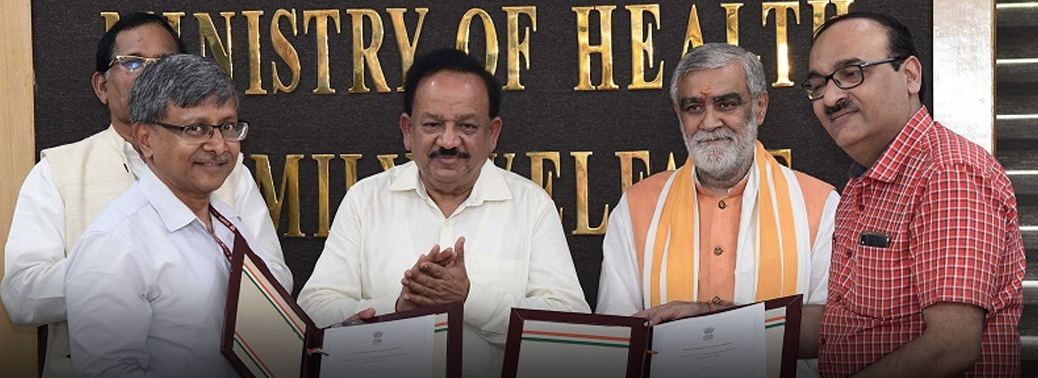
Why in News?
- Ministry of Health and Family Welfare today exchanged MoUs with the Ministry of AYUSH, Ministry of Defence and Ministry of Railways to strengthen inter-ministerial coordination and efforts towards Tuberculosis-free India by 2025.
Highlights:
- Although entirely preventable and curable, Tuberculosis is a major obstacle to India’s human and economic development.
- India, in near future, is predicted to have world’s largest working population and a disease like TB which mostly affects adults in their most productive years, poses a great risk to the country’s economic growth potential.
- Apart from being a public health problem, TB is also associated with poor socio-economic development, marginalization and exploitation.
- The actions required to tackle the socio-economic and structural determinants of TB lie beyond the purview of the health sector alone, calling for a harmonized multisectoral response.
ARANI SILK SAREE
20, Jul 2019

Context:
- Information about Arani Silk Saree was given by the Union Minister of Textiles in a written reply to the Lok Sabha
About:
- Arani Silk Saree produced on handloom is of high quality and in good demand.
- Arani Sari is a traditional sari made in Arani, Tamil Nadu
Handloom Marketing Assistance (HMA) scheme:
- For providing marketing facility to all the handloom products including Arani Silk, Government of India is implementing Handloom Marketing Assistance (HMA) scheme,
- It is a component of National Handloom Development Programme (NHDP), all across India. The scheme provides marketing platform to the handloom weavers/organisations to sell their products directly to the consumers.
- Under the scheme, financial assistance is provided to National Level Handloom Organisations and nominated handloom agencies of the State Governments to organize the marketing events like National Handloom Expos (NHEs), Special Handloom Expos (SHEs) and District Level Events (DLEs).
Other Programmes;
- Central Silk Board through Silk Mark Organisation of India is organising “Silk Mark Expo” in various towns and cities including Chennai near Arani.
- Silk Mark Expos provide excellent platform to promote silk products of different silk clusters of India including Arani cluster.
- under Section 8 of the Companies Act 2013, Arani Master Weavers have created and registered a non-profit company “Arani Handloom Silk Park” and a MoU have been signed with the Government of Tamil Nadu in 2015.
Schemes related to Textile:
- Scheme For Integrated Textile Park (SITP)
Objective
- To provide financial assistance to a group of entrepreneurs to establish state-of-the-art
- infrastructure facilities in a cluster for setting up their textile units, conforming to international environmental and social standards and thereby mobilize private investment in the textile sector and generate fresh employment opportunities
Features:
- The Scheme targets industrial clusters and locations with high growth potential, which require strategic interventions for developing world-class infrastructure support.
- An ITP under the scheme should preferably have 25 integrated units with components like Land (registered under the name of SPV), common infrastructure (compound, road, drainage, electricty, etc), buildings for common facilities (creche, canteen, laboratories, etc), and factory buildings for production purposes.
- The total project cost shall be funded through a mix of Equity/Grant – from the Ministry of Textiles, State Government, State Industrial Development Corporation, Industry, Project Management Consultant and Loan – from Banks/ Financial Institutions.
- The Government support under the Scheme by way of Grant or Equity will be limited to 40% (90% for first two projects in N.E states and J&K) of the project cost subject to a ceiling of Rs. 40 crore.
- The combined equity stake of GOI/State Government/State Industrial Development Corporation, if any, should not exceed 49%.
- The release of GoI assistance to the SPV shall be done in 3 (three) installments in the ratio of 30:40:30 depending upon fulfillment of terms and conditions.
- Each project will normally be completed in 3 years from the date of release of the first installment of government grant. (Delays can lead to cancellation of project and imposition of penalty).
- The ITPs can also get benefits from Amended Technology Upgradation Fund Scheme (ATUFS), SAMARTH, etc.
Integrated Scheme for Development of Silk Industry:
Objective:
- To improve the productivity and quality of silk through R&D intervention.
- To promote improved cross-breed silk and the import substitute
- Bivoltine silk so that Bivoltine silk production in India enhances to such a level that raw silk imports become nil by 2022 thereby making India self-sufficient in silk.
- To increase productive employment from 85 lakhs to 1 crore persons by 2020.
Powertex India Scheme:
- To provide financial assistance to economically weaker low-end powerloom units for their modernisation and Infrastructure development.
- To improve quality and productivity of the fabrics being produced and enable them to face the competition in domestic and international markets.
- To boost development cluster-based
- Organize Buyer-Seller Meets and Reverse Buyer-Seller Meets to promote market for powerloom product.
- To avoid middle man/local supplier brokerage charge on sales of yarn.
- To give thrust to renewable energy (solar).
Amended Technology Upgradation Fund Scheme (ATUFS):
- To promote Ease of doing Business in the country and to achieve the vision of general employment and promoting exports through Make in India and Zero Effect and Zero Defect in manufacturing.
- To facilitate augmentation of investment, productivity, quality, employment, exports along with import substitution in textile industry and to indirectly promote investment in the textile machinery manufacturing.
Scheme for Capacity Building In Textile Sector (SAMARTH):
- To provide demand driven, placement oriented NSQF (National Skills Qualification Framework) Compliant skilling programme to incentivize organized textile and related sectors excluding Spinning and Weaving.
- To promote skilling and skill up-gradation in the traditional sectors of Handlooms, Handicrafts, Sericulture and Jute
- To provide Sustainable livelihood to all sections of the society across the country via wage or self-employment.
RESTRUCTURED NATIONAL BAMBOO MISSION
20, Jul 2019

Why in News?
- The restructured National Bamboo Mission (NBM) has been launched in 2018-19 to focus on the development of complete value chain of bamboo sector and link growers with markets.
Objectives of the Mission:
- To increase the area under bamboo plantation in non-forest Government and private lands to supplement farm income and contribute towards resilience to climate change as well as availability of quality raw material for industries.
- To improve post-harvest management through establishment of innovative primary processing units near the source of production, primary treatment and seasoning plants, preservation technologies and market infrastructure.
- To promote product development keeping in view market demand, by assisting R&D, entrepreneurship & business models at micro, small and medium levels and feed bigger industry.
- To rejuvenate the under developed bamboo industry in India.
- To promote skill development, capacity building, awareness generation for development of bamboo sector from production to market demand.
- To re-align efforts so as to reduce dependency on import of bamboo and bamboo products by way of improved productivity and suitability of domestic raw material for industry, so as to enhance income of the primary producers.
EXPORT PROMOTION SCHEME
19, Jul 2019
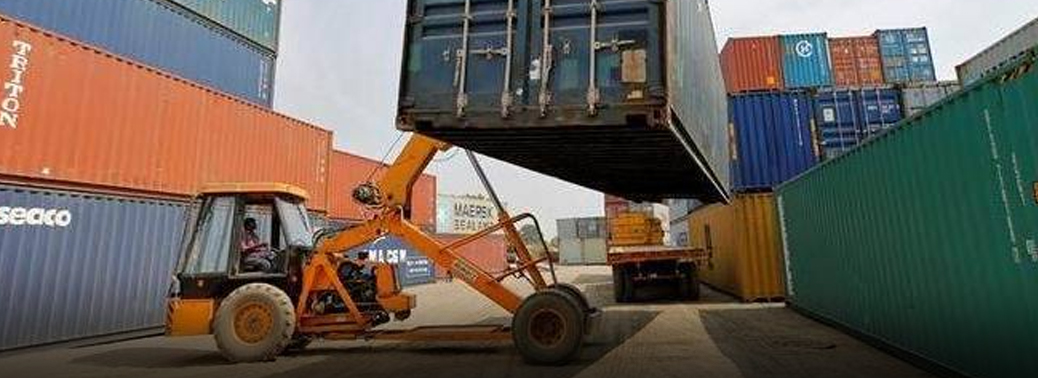
Why in News?
- The Government of India has launched a scheme namely, Trade Infrastructure for Export Scheme (TIES) with the objective to assist Central and State Government Agencies for creation of appropriate infrastructure for growth of exports from the States.
Highlights:
- The Scheme provides financial assistance in the form of grant-in-aid to Central/State Government-owned agencies for setting up or for up-gradation of export infrastructure as per the guidelines of the Scheme.
- The scheme can be availed by the States through their Implementing Agencies, for infrastructure projects with overwhelming export linkages like the Border Haats, Land customs stations, quality testing and certification labs, etc.
- The Government of India strives to ensure a continuous dialogue with the State Governments and Union Territories on measures for promoting exports.
- Also for providing an international trade enabling environment in the States, and to create a framework for making the States active partners in boosting exports from India.
- Under the Foreign Trade Policy (FTP), DGFT operates various Export promotion schemes such as Advance Authorization, Duty Free Import Authorization, Export Promotion of Capital Goods, Merchandise Exports from India Scheme (MEIS) and Services Exports from India Scheme (SEIS).
- To give effect to these schemes, Central Board of Indirect Taxes and Customs has issued various exemption notifications.
Merchandise Exports from India Scheme (MEIS):
- MEIS was introduced in the FTP from 01.04.2015, providing rewards for exporters of specified goods.
- The objective of the MEIS is to offset infrastructural inefficiencies and associated costs involved in exporting goods/products which are produced/manufactured in India.
- The scheme incentivizes exporters in terms of Duty Credit Scrips at the rate of 2, 3, 4, 5, 7 % of FOB Value of exports realized.
- These scrips are transferable and can be used to pay certain Central Duties/taxes including Customs Duties.
Agriculture Export Policy:
- The Agriculture Export Policy was launched in 2018 to harness export potential of Indian agriculture, through suitable policy instruments, to make India global power in agriculture and raise farmers’ income
- This comprehensive “Agriculture Export Policy” aims to increase agricultural exports by integrating Indian farmers and agricultural products with the global value chains.
ATAL BIMIT VYAKTI KALYAN YOJANA
19, Jul 2019
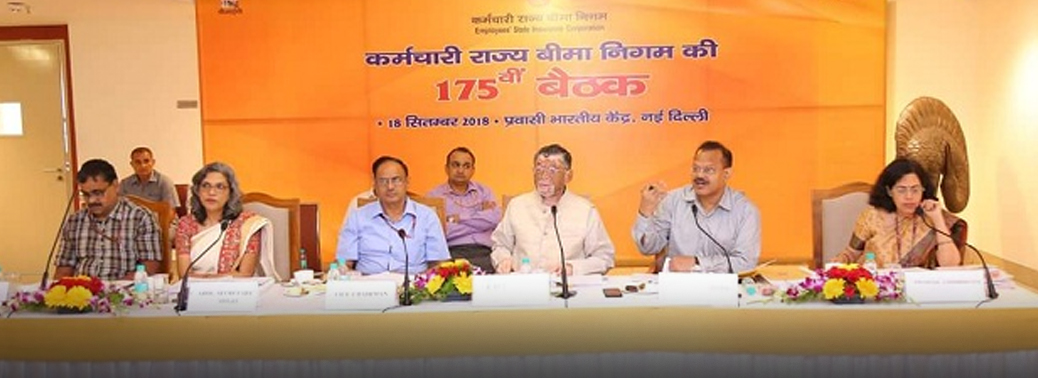
Why in News?
- The Employees’ State Insurance (ESI) Corporation has launched a scheme named ‘Atal Bimit Vyakti Kalyan Yojana’ (ABVKY).
Highlights:
- In the scheme in case the Insured Person (IP) is rendered unemployed, provides relief to the extent of 25% of the average per day earning during the previous four contribution periods, to be paid up to maximum 90 days of unemployment once in lifetime.
Conditions and other Features:
- The Insured Person should have been rendered unemployed during the period the relief is claimed.
- The Insured Person should have been in insurable employment for a minimum period of two years.
- The Insured Person should have contributed not less than 78 days during each of the preceding four contribution periods.
- The contribution in respect of him should have been paid or payable by the employer.
- The contingency of the unemployment should not have been as a result of any punishment for misconduct or superannuation or voluntary retirement.
- Aadhar and Bank Account of the Insured Person should be linked with insured person data base.
- In case the IP is working for more than one employers and is covered under the ESI scheme he will be considered unemployed only in case he is rendered unemployed with all employers. As specified in Section 65 of the ESI Act, an IP shall not be entitled to any other cash compensation and the Relief under ABVKY simultaneously for the same period. However, periodical payments of Permanent Disability Benefit (PDB) under ESI Act and Regulations shall continue.
- As specified under Section 61 of the ESI Act, an IP who is in receipt of Relief under ABVKY shall not be entitled to receive any similar benefit admissible under the provisions of any other enactment.
- The IP will be eligible for Medical benefit as provided under the Act for the period he is availing this relief.
- The claim for Relief under ABVKY may be submitted by the claimant any time after rendering unemployed, but not later than one year from the date of unemployment to the appropriate Branch Office in form of affidavit in prescribed Form. No prospective claim i.e. claim for relief under ABVKY for any future period will be allowed.
- The IP will submit his claim online through the ESIC Portal.
CANNABIS LEGALIZING ISSUE
19, Jul 2019
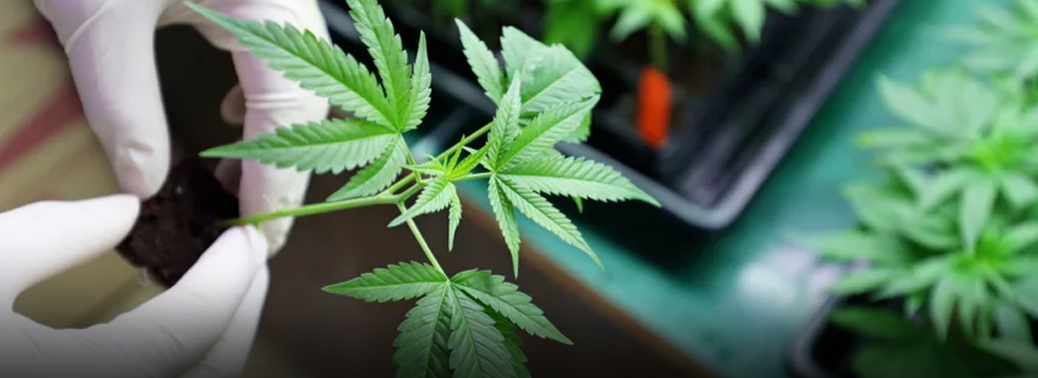
Context:
- Litigation has claimed before the Delhi High Court in its pursuit to bring an end to various existing laws in India that prohibit and criminalise its use.
Background:
- The earliest known reports regarding the use of cannabis in India come from the Atharva-Veda, written around 2000-1400 BCE.
- Cannabis has been consumed in different ways—smoking (ganja), chewing (bhaang), drinking (tea), etc.
- Its plant has been used for manufacturing clothes, shoes, ropes and paper. In ancient India, it was used for treating or alleviating symptoms of several diseases.
Classification:
- The International Classification of Diseases and the Diagnostic and Statistical Manual of Mental Disorders designate cannabis as an addictive substance, with recognised dependence disorders.
NDPS Act:
- The Narcotic Drugs and Psychotropic Substances Act, 1985, prohibited cultivation or production of cannabis plant by anybody, while reserving these rights with central and state governments if they wish to do so, by creating rules later.
Cannabis legalization issue at global level:
- There is a global wave of legalisation of cannabis, based on its medicinal properties and commercial utilities.
- Buoyed by success in the West (Uruguay, some US states, Canada), cannabis supporters are pushing for legalisation in India.
- In the US, the use of marijuana (a more addictive derivative) for medicinal purposes is legal in a number of states, whereas its use for recreational purpose has also been legalised in some states.
- Canada has legalised its use for recreational as well as medicinal purposes.
- Europe recognises the use of marijuana for recreational purposes as a crime, but its use for medical purposes is permitted in many countries.
Medicinal Use:
- There is no good evidence that cannabis is beneficial when used in diseases such as Crohn’s disease, sleep disorder, glaucoma, etc.
- Similarly, there is no data to support its use in oncology practice outside of clinical experiments—cannabis derivatives are known to have immunosuppressive that can promote cancer.
- In summary, its medicinal benefits aren’t as strong as presented by the proponents of legalisation—safer and effective alternatives are available in the market.
Why did US and Canada legalize it?
- With an increasing number of youth (though a minority) supporting legalisation, most policymakers don’t see it a battle worth fighting, even though justified.
- In the US, public opinion was built on decades of misinformation, racial discrimination, police excesses, degree of punishment, incarceration in jail, craving for liberty, etc.
- Also, policymakers seem to be excited about another source of revenue.
Does legalisation help:
- Colorado legalised marijuana around five years ago.
- Expert committeee noted there is substantial evidence that its use may lead to cancer, cardiovascular illness, lung diseases, road accidents, impaired adolescent health, serious drug interaction and reproductive health disorders.
- It reported robust evidence that legalisation may increase unintentional use by children at home. It noted the foetus born to mothers who use marijuana may be seriously harmed.
- Post-legalisation, new types of crimes emerged, such as illegal cultivation, sale, production.
Legalization of Cannabis in Indian Context:
- India has a history of misuse of even prescription drugs that are otherwise beneficial.
- Weak opiates (derivatives of opium) are one of the easily available alternatives to cannabis for medical conditions.
- Codeine-based cough syrups are effective for controlling severe cough, but after reports of rampant misuse.
- In Indian context, when prescription drugs are grossly misused, how can we ensure disciplined used of cannabis? It is obvious that arguments of medicinal or industrial use are simply smokescreens to fool policymakers and swing public support.
Will legalisation worsen our overburdened healthcare system?
- India is struggling to control the three addictive substances of tobacco, alcohol and areca nut.
- As per the Global Adult Tobacco Survey, 270 million Indians use tobacco and it kills around 1.35 million Indians every year.
- Nearly 30% of India’s adult population is using alcohol, leading to 3.3 million deaths. Legalisation of cannabis is not only going to worsen these alarming statistics, but also serve as a gateway for one of these carcinogens.
Conclusion:
- The younger generation is living in an era of personal liberty, rising affluence, more prone to addiction and struggling with personal relationships.
- Introduction of yet another psychoactive drug will wreak havoc on a population still struggling with tobacco, alcohol and pan masala.
- It is unlikely to solve the drug menace in Punjab, Rajasthan and other states.
- Cannabis prohibition is being portrayed as paternalistic nanny-state policy by party hoppers.
- However, promotion of addiction and sufferings among millions is a heavy price to pay for protection of individual freedom of a handful.
- We cannot allow our next generation get trapped into a vortex of poor performance, indiscipline, addiction, psychosis, isolation, insecurity and bleak future.
MOTOR VEHICLES (AMENDMENT) BILL, 2019
18, Jul 2019
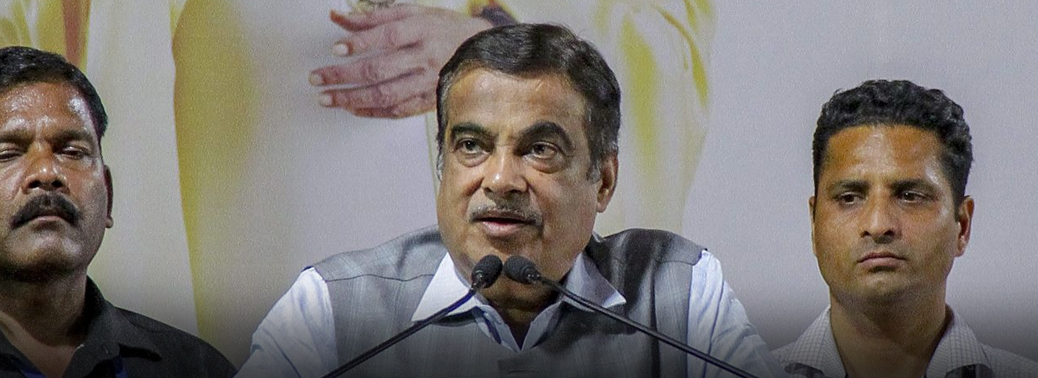
Why in News?
- Minister for Road Transport and Highways has been in the news as he pushes the Motor Vehicles (Amendment) Bill, 2019 in Parliament.
- The amendments proposed by the government to the existing Motor Vehicles Act of 1988 essentially focus on improving road safety.
Key elements of the Proposed Amendment:
Minimum Compensation:
- The Bill proposes to increase the minimum compensation for hit and run cases.
- In particular, in case of death, such compensation would vary from Rs 25,000 to Rs 2 Lakh. In the case of grievous injury, it would vary from Rs 12,500 to Rs 50,000.
- Beyond road safety, the Bill also increases penalties for several offences such as driving under the influence of alcohol and drugs.
Cashless treatment of victims:
- The Bill also enables the Central government to develop a scheme for cashless treatment of road accident victims during the “golden hour” (first 60 minutes following the injury during which doctors have the best chance of saving a life).
Accident Fund:
- The government’s insurance scheme is likely to be funded through a Motor Vehicle Accident Fund that the central government is expected to constitute to provide compulsory insurance cover to all road users in India.
- This fund will be available for the treatment of the injured.
Defining Good Samaritan:
- The Bill also defines a good Samaritan as a person who renders emergency medical or non-medical assistance to a victim at the scene of an accident.
- However, to be seen as one, such assistance must have been given in good faith, voluntarily, and without the expectation of any reward.
- If these conditions are met, such a person will not be liable for any civil or criminal action for any injury to or death of an accident victim, caused due to their negligence in assisting the victim.
National Road Safety Board:
- The Bill also proposes a National Road Safety Board which will advise the central and state governments on all aspects of road safety and traffic management.
- The Bill also enables the central government to order a recall of motor vehicles if it is found that they are defective and can cause harm to other road users or the environment.
- In case of such a recall, the manufacturers would either have to replace the faulty vehicle or pay full compensation to the customer.
Regulating Digital Intermediaries:
- The Bill also attempts to plug a policy gap that has been introduced by the emergence of shared economy concepts and technology.
- As such, it defines taxi aggregators as digital intermediaries or market places which can be used by passengers to connect with a driver for transportation purposes.
- These aggregators will be issued licenses by state, but they must also comply with the Information Technology Act, 2000.
BROADBAND READINESS INDEX
18, Jul 2019
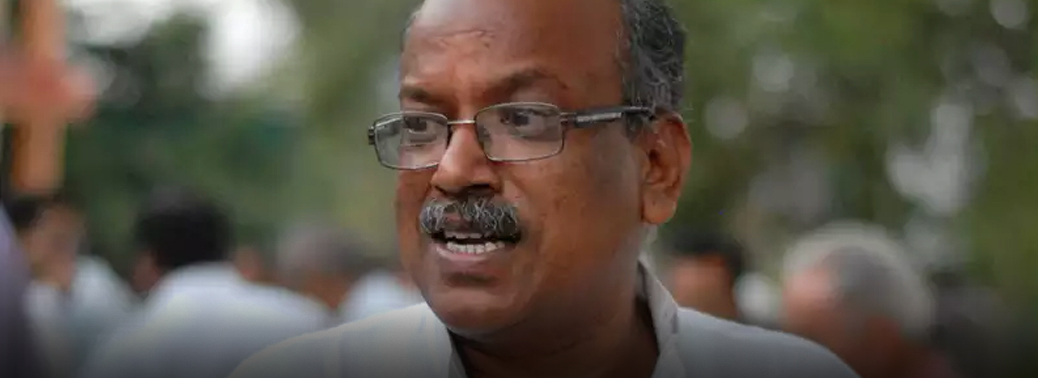
Why in News?
- Department of Telecom (DoT) and the Indian Council for Research on International Economic Relations (ICRIER) signed a Memorandum of Understanding (MoU) to develop a Broadband Readiness Index (BRI) for Indian States and Union Territories (UT).
Highlights:
- The National Digital Communication Policy (NDCP) 2018 acknowledged the need for building a robust digital communications infrastructure leveraging existing assets of the broadcasting and power sectors including collaborative models involving state, local bodies and the private sector.
- Accordingly, the policy recommended that a BRI for States and UTs be developed to attract investments and address Right of Way (RoW) challenges across India.
Broadband Readiness Index:
- The BRI consists of two parts. Part I will focus on infrastructure development based on the measurement of nine parameters. Part II consists of demand side parameters which will be captured through primary surveys.
- It will include indicators such as percentage of households using computers/ laptops with internet connection, percentage of households with fixed broadband connection, internet users as a percentage of the population, smart phones density, percentage of households with at least one digitally literate member, etc.
- The primary survey will be conducted annually until 2022.
Details of the index:
- Index will appraise the condition of the underlying digital infrastructure and related factors at the State/UT level.
- Such an exercise will provide useful insights into strategic choices made by States for investment allocations in ICT programmes.
- In the spirit of competitive federalism, the index will encourage states to cross learn and jointly participate in achieving the overall objective of digital inclusion and development in India.
- The framework will not only evaluate a state’s relative development but will also allow for better understanding of a state’s strengths and weaknesses that can feed into evidence-based policy making.
- The methodology developed as a part of this research will be adapted and used on an annual basis for systematic evaluation of state-performance on metrics set out as the goals for 2022 under the new policy.
- As a result, ranking and understanding State/UT performance over time will be an important part of the exercise.
- The development of BRI will be a collaborative exercise with stakeholders including State governments and industry associations like the Tower and Infrastructure Providers Association (TAIPA), the Internet Service Providers Association of India (ISPAI) and the Cellular Operators Association of India (COAI).
- This will be a first of its kind exercise that will comprehensively measure the development of telecom infrastructure at the sub national level.
NATIONAL DIGITAL HEALTH BLUEPRINT (NDHB)
17, Jul 2019

- Prepared by a committee constituted by the Ministry of Health and Family Welfare
- Aims to create an implementation framework for the National Health Stack (NHS) proposed by NITI Aayog.
What is National Health Stack (NHS)
- The National Health Stack (NHS) envisages a centralized health record for all citizens of the country in order to streamline the health information and facilitate effective management of the same.
Objectives of NDHB
- Establishing and managing the core digital health data and the infrastructure required for its seamless exchange;
- Promoting the adoption of open standards by all the actors in the National Digital Health Eco- system, for developing several digital health systems that span across the sector from wellness to disease management;
- Creating a system of Personal Health Records, based on international standards, and easily accessible to the citizens and to the service providers, based on citizen-consent;
- Following the best principles of cooperative federalism while working with the States and Union Territories for the realization of the Vision;
Promoting Health Data Analytics and Medical Research; - Enhancing the efficiency and effectiveness of Governance at all levels;
- Ensuring Quality of Healthcare.
- Leveraging the Information Systems already existing in the health sector.
NDHB Principle
- The key principles of the Blueprint include, from the domain perspective, Universal Health Coverage, Inclusiveness, Security and Privacy by Design, Education and Empowerment of the citizens, and from the technology perspective, Building Blocks, Interoperability, a set of Registries as Single Sources of Truth, Open Standards, Open APIs and above all, a minimalistic approach.
GOOD SAMARITAN GUIDELINES
16, Jul 2019

Why in News?
- Ministry of Road Transport and Highways has issued guidelines in pursuance of order of Hon’ble Supreme Court of India to protect the Good Samaritans in case of road accidents.
Good Samaritan:
- A Good Samaritan is a bystander, who voluntarily comes forward to administer immediate assistance or emergency care to a person injured in an accident, or crash, or emergency medical condition, or emergency situation.
Significance of Good Samaritan law:
- In the last ten years, road crashes have killed over 13 lakh people in India. According to the Law Commission of India, 50% of these victims died of preventable injuries and could have been saved if they had received care on time.
How law came into force:
- On March 30, 2016, the Supreme Court of India gave “force of law” to the guidelines for the protection of Good Samaritans issued by the Ministry of Road Transport and Highways.
- The purpose of a Good Samaritan law is to provide legal protection to bystanders who come to the aid and rescue of victims of road crashes.
How Good Samaritan is protected:
- A Good Samaritan will not be liable for any civil or criminal action for any injury or death of the victim
- Good Samaritan who informs police or emergency service regarding an injured person not to be compelled to reveal his personal details
- Disciplinary action against public officials who coerce Good Samaritan to reveal his personal details
- Good Samaritans not to be forced to bear the initial cost of treatment: Ministry of Health and Family Welfare (MoHFW) to issue guidelines that no public or private hospital can demand payment for registration and admissions costs from the Good Samaritans
- Hospitals cannot refuse treatment to a victim: Lack of response by a doctor in an emergency situation to be considered as a “Professional Misconduct” and disciplinary action shall be taken against such a doctor
- The Good Samaritan can choose to be an eyewitness and cannot be compelled
- Eye witness to be examined in a single occasion
- Video conferencing may be used for examination of a Good Samaritan
LIFESPAN OF SCHEDULED TRIBE PEOPLE
16, Jul 2019
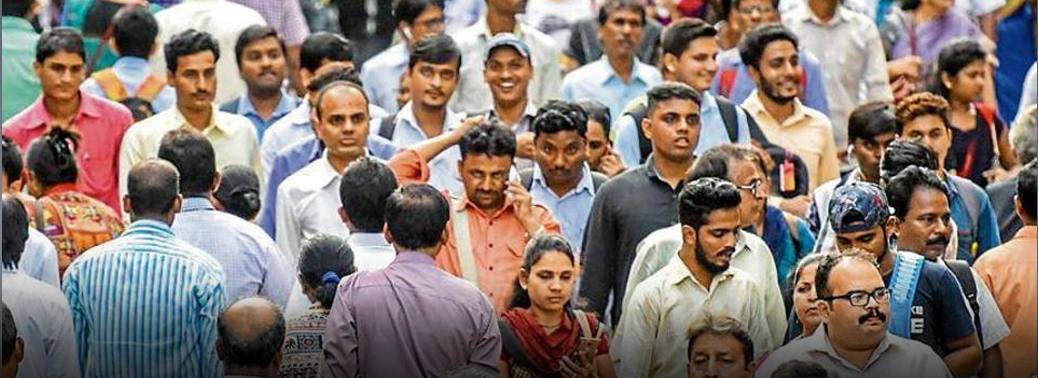
Why in News?
- According to data from the National Census 2011 to estimate, by indirect methods, the life expectancy for the Scheduled Tribes (STs) and non-ST population in India is 63.9 years, as against 67 years for general population.
- The reasons for shorter lifespan include gaps in various health and nutritional indicators, education level, poverty level, between ST and non-STs, traditional life styles, remoteness of habitations & dispersed population.
Steps taken by Government:
- Under National Health Mission (NHM), support is being provided to States for strengthening their healthcare system including for upgradation of existing and setting up new public health infrastructure based on requirements posed by the States/UTs.
- All tribal districts whose composite health index is below the State average have been identified as High Priority Districts (HPDs) and receive more resources per capita under the NHM as compared to the rest of the districts in the State.
- As per the budget announcement 2017-18, 1.5 lakh Health Sub Centres and Primary Health Centres are being transformed into Health and Wellness Centres (HWCs)
- The Ayushman Bharat – Health and Wellness Centres (AB-HWCs) aim to provide an expanded range of services to include care for non – communicable diseases, palliative and rehabilitative care, Oral, Eye and ENT care, etc
- Ministry of Tribal Affairs supplements the efforts of Central line Ministries as well as State Governments for addressing needs of education, health and nutrition, skill development, livelihood etc. of tribals/ tribal areas by way of critical gaps filling.
WHY IS INDIA SETTING UP A MOBILE PHONE HANDSETS DATABASE?
16, Jul 2019
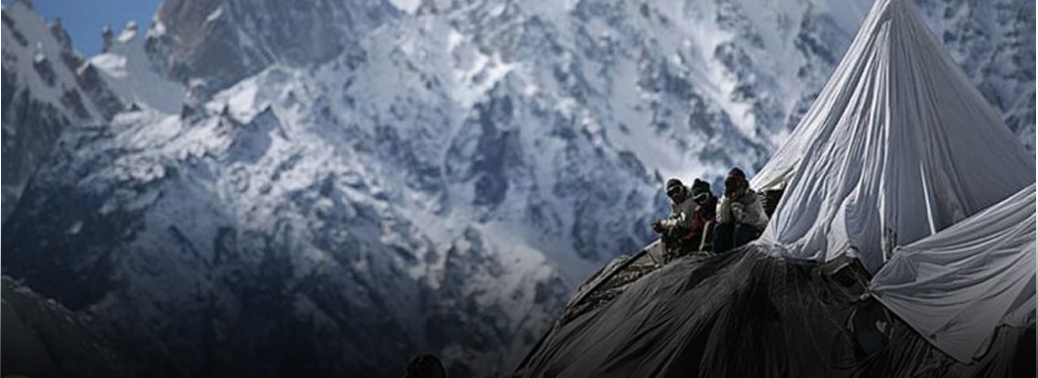
-
- Context: The National Telecom Policy of 2012 calls for the establishment of a National Mobile Property Registry to address the issue of “security, theft, and other concerns including reprogramming of mobile handsets”.
- Based on this, the Department of Telecommunications (DoT) under the Ministry of Communications initiated a Central Equipment Identity Register (CEIR) for mobile service providers. The DoT issued a memorandum in July 2017 announcing the CEIR with a pilot project led by Bharat Sanchar Nigam Limited in Maharashtra. In January 2018, this project was handed over to the Centre for Development of Telematics (CDoT). Now, it is all set to roll out.
What is CEIR?
- Based on a 2008 order from the DoT, every mobile network provider in India has an Equipment Identity Register (EIR), or a database of the phones connected to its network. These EIRs will now share information with a single central database, the CEIR.
- In essence, it will be a repository of information on all mobile phones connected to networks across India.
- There were over 1,026 million active wireless phone connections by the end of 2018, according to the Telecom Regulatory Authority of India.
- As per the DoT’s 2017 memorandum, the CEIR will have information on the device’s International Mobile Equipment Identity (IMEI) number (every phone or mobile broadband device has this unique 15 digit code that precisely identifies the device), model, version, and “other information”.
- It will also know if the phone is blacklisted, and the reason why it has been blacklisted.
- Phones are identified based on the IMEI number, which you can find under the battery in many mobiles or by dialling ‘*#06#’ on the device. Mobile phone manufacturers assign IMEI numbers to each device based on ranges allotted to them by the Global System for Mobile Communications Association. Dual SIM phones will have two IMEI numbers.
What is the purpose of a CEIR?
- Such centralised databases are meant to identify and block stolen or illegal mobile phones across networks.
- Currently, when a customer reports a mobile phone as missing or stolen, mobile service providers have the ability to blacklist the phone’s IMEI in their EIRs and block it from accessing their network.
- But if the SIM is changed to a new network, it can continue to be in use. With a CEIR, all network operators will be aware that the phone is blacklisted.
- The CEIR will also access the GSMA’s database of IMEI numbers to check whether the phone is authentic.
- There are cases of phones being in use with duplicate IMEI numbers, or with all zeroes instead of an authentic IMEI number.
- Most importantly, as per the DoT’s 2017 memorandum, the CEIR will be able to block services to subscribers. This ability had rested with individual networks till now. The memorandum also mentions enabling “IMEI-based lawful interception”, which means allowing legal authorities to use CEIR data.
What are the issues with having a CEIR?
- In its 2010 consultation paper on “issues relating to blocking of IMEI for lost/stolen mobile handsets,” the Telecom Regulatory Authority of India (TRAI) raises a key issue with the CEIR — who should maintain such a high-value database? Should it be the service provider, or a neutral third party?
- In their responses to the consultation paper, many major service providers preferred having a third party, ranging from international bodies to TRAI itself as suggested by the BSNL.
- The CDoT, which is reportedly readying to roll out the service, is an autonomous entity under the DoT.
- Another major issue is cloning, or reprogramming stolen or unauthorised mobile phones to attach existing genuine IMEI numbers. Blocking cloned IMEI numbers could result in the authentic ones also being blocked.
- While the actual numbers on phones in circulation with cloned or inauthentic IMEIs are hard to pin down, Parliament, in 2012, was informed of two cases of 18,000 phones using the same IMEI number. In 2015, the government banned the import of mobile phones with fake IMEI numbers. In 2017, the DoT framed the “prevention of tampering of the Mobile Device Equipment Identification Number, Rules, 2017” that makes it punishable to tamper with the IMEI number of a device or knowingly use such a device. However, tools to reprogramme phones remain available online, and cases of such activities are reported frequently.
- On this issue, the DoT memorandum of 2017 says the IMEI Cloning and Duplication Restriction (ICDR) software is to be integrated in the CEIR.
CALLS FOR SEPARATE LAW ON EVICTIONS OF URBAN POOR.
15, Jul 2019
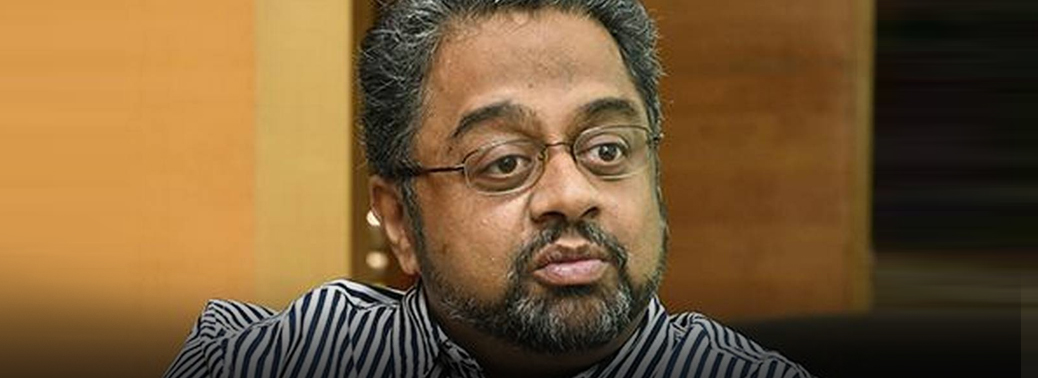
Stats
- Government authorities, at both the central and state levels, demolished over 53,700 homes, thereby forcefully evicting more than 260,000 (2.6 lakh) people across urban and rural India, including the homeless
Major Findings:
- Forced evictions occurred across urban and rural areas – in cities, towns, and villages.
- They took place for a range of reasons and under various guises, including: ‘city beautification’ projects, mega events, and interventions aimed at creating ‘slum-free cities’; infrastructure and ostensible ‘development’ projects; forest and wildlife protection; and, disaster management efforts.
- In most of the reported eviction cases, state authorities did not follow due process established by national and international standards.
- In the majority of cases, the state has not provided resettlement; where provided, resettlement is largely inadequate. Forced evictions are thus contributing to a rise in homelessness.
- All cases of forced eviction resulted in multiple, and often gross, human rights violations.
- Through these acts of eviction and demolition of homes, central and state government authorities have violated national and international laws, policies, guidelines, and schemes.
- Thousands of families across India are currently threatened with the risk of eviction and displacement.
City Beautification’ Projects:
- Housing and Land Rights Network (HLRN) an NGO, finds that the highest percentage of reported evictions (99 of 213 cases) were carried out for ‘slum4 clearance’ drives and ‘city beautification’ projects. The notion of the state that ‘city beautification’ implies removing the poor from cities reflects an alarming prejudice and discrimination against the country’s most marginalized populations.
- It also indicates the criminalisation of poverty.
Separate law:
- The authorities in India, instead of seeking to evict a large number of the urban poor before implementing development projects, can adopt a new kind of social compact with the community concerned and real estate developers. Examples in Colombia and Argentina where local governments came together with private real estate developers and the respective communities for improving housing for slum dwellers. the urban poor were provided with better houses at the same place where they were living earlier while a portion of the land was released for redevelopment.
- Resettlement policy
- India did not have a resettlement policy,
- Separate law on evictions on the lines of one in South Africa.
Recommendation:
- Recognize and uphold the human right to adequate housing, which includes security of tenure and the right to freedom from forced evictions, of all residents of India.
- Take immediate measures towards restitution of human rights of all affected persons by providing adequate resettlement, rehabilitation, and compensation; restoring homes, livelihoods, basic services, and education; and, enabling return to original sites of residence, where possible. Grant compensation to all affected persons, based on human rights assessments and criteria, for all losses—material and non-material—and damage incurred during the eviction/relocation process. Investigate incidents of forced eviction and take punitive action against those found guilty of violating the law and human rights.
Conclusion:
- Unless concerted efforts are adopted by both the central and state governments to incorporate a strong human rights approach in the conceptualization and implementation of schemes, the targets of ‘housing for all’ will continue to remain mere rhetoric.
- It is only through the respect, protection, and fulfilment of the human rights of the urban and rural poor to their lands and homes, that India’s housing crisis can be resolved.
GAGANYAAN NATIONAL ADVISORY COUNCIL
14, Jul 2019

Why in News?
- A Gaganyaan National Advisory Council has been created with members from different institutions and industries.
Members:
- Secretaries of Department of Space, Department of Science and Technology, Department of Defence Research and Development, Department of Scientific and Industrial Research, Principal Scientific Advisor to PM, Senior Officials from Armed Forces, Indian Coast Guard, Former Chairman of ISRO, Member of Space Commission, Former Director of Aeronautical Development Agency, Former Indian Astronaut, Directors of Premier Academic and Research Institutions and Heads of various Indian Industries.
Gaganyaan:
- Gaganyaan is an Indian crewed orbital spacecraft intended to be the basis of the Indian Human Spaceflight Programme.
- The spacecraft is being designed to carry three people, and a planned upgraded version will be equipped with rendezvous and docking capability.
- In its maiden crewed mission, Indian Space Research Organisation’s largely autonomous 3.7-tonne capsule will orbit the Earth at 400 km altitude for up to seven days with a three-person crew on board.
- The crewed vehicle is planned to be launched on ISRO’s GSLV Mk III in December 2021.
STUDY IN INDIA’ PROGRAMME
14, Jul 2019

Why in news?
- To facilitate Internationalization of Higher Education in India, a Programme viz. ‘Study in India’ is under implementation.
Objectives:
- To make India a preferred education destination/hub for foreign students;
- Improve the soft power of India with focus on the neighbouring countries
- Use it as a tool in diplomacy;
- To rapidly increase the inflow of inbound International Students in India through systematic brand-building,
- Marketing, social media and digital marketing campaigns;
- To increase India’s market share of global education exports;
- Improvement in overall quality of higher education;
- To reduce the export-import imbalance in the number of international students;
- Growth in India’s global market share of International students;
- Increase in global ranking of India etc.
Special Focus:
- The programme focuses on attracting International students from select 30 plus countries across South-East Asia, Middle East and Africa.
- The programme envisages participation of select reputed Indian institutes/universities by way of offering seats for the International students at affordable rates, along with fee waivers to meritorious foreign students ranging from 100% to 25%.
- A centralised admission web-portal (https://studyinindia.gov.in) acts as a single window for the admission of foreign students. With the increase in number of foreign students, the global ranking of the Indian Higher Educational institutions will improve.
- The domestic students shall be exposed to a more diverse peer group and also get greater International exposure culminating in enhanced interest of Indian students to study in the country.
- This information was given by the Union Minister for Human Resource Development, Dr. Ramesh Pokhriyal ‘Nishank’ in a written reply in the Rajya Sabha today.
MODEL TENANCY ACT
14, Jul 2019
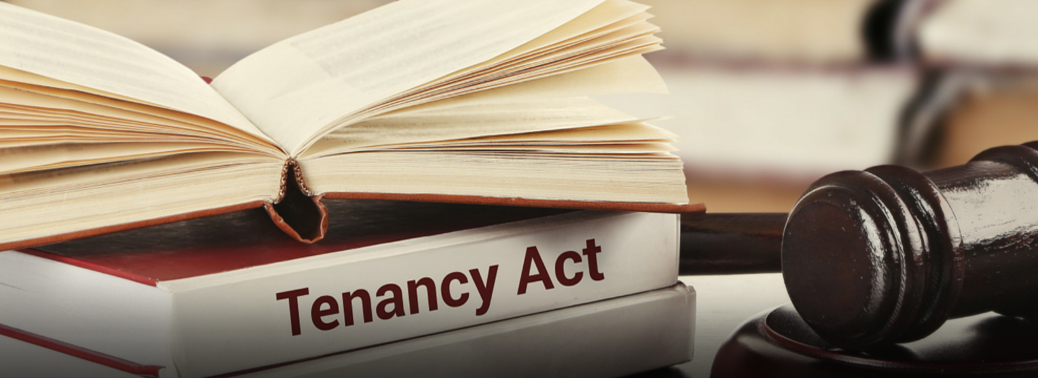
Why in News?
- The Ministry of Housing and Urban Affairs has drafted a ‘Model Tenancy Act’, 2019 which envisages to balance the interest and rights of both the owner and tenant and to create an accountable and transparent ecosystem for renting the premises in disciplinedand efficient manner.
Model Tenancy Act:
- Act will enable creation of adequate rental housing stock for various income segmentsof society including migrants, formal and informal sector workers, professionals, students etc. and increase access to quality rented accommodation, enable gradual formalization of rental housing market.
- It will help overhaul the legal framework vis-à-vis rental housing across the country. It is also expected to give a fillip to private participation in rental housing for addressing the huge housing shortage across the country.
- The Draft MTA will also promote growth of rental housing and investment in the sector and promote entrepreneurial opportunities and innovative mechanism of sharing of space.This MTA will be applicable prospectively and will not affect the existing tenancies.
Features of Draft Model Tenancy Act:
- MTA stipulates a robust grievance redressal mechanism comprising of Rent Authority, Rent Court and Rent Tribunal.
- It has been proposed to cap the security deposit equal to a maximum of two month’s rent in case of residential properties and, minimum of one month’s rent in case of non-residential property.
- After coming into force of this Act, no person shall let or take on rent any premises except by an agreement in writing.
- The Model Act provides for its applicability for the whole of the State i.e. urban as well as rural areas in the State.
- Within two months of executing rental agreement both landowner and tenant are required to intimate to the Rent Authority about the agreement and within seven days a unique identification number will be issued by the Rent Authority to the both the parties.
- A digital platform will be set up in the local vernacular language of the State for submitting tenancy agreement and other documents.
- A copy of the draft Act has also been shared with the States/UTs for seeking their views/comments.
- Once finalized the Model Act will be shared with the States/Union Territory (UTs) for adoption.
Significance:
- As per Census 2011, nearly 1.1 crore houses were lying vacant in the country and making these houses available on rent will complement the vision of ‘Housing for All’ by 2022.
- The existing rent control laws are restricting the growth of rental housing and discourage the owners from renting out their vacant houses due to fear of repossession.
- One of the potential measures to unlock the vacant house is to bringing transparency and accountability in the existing system of renting of premises and to balance the interests of both the property owner and tenant in a judicious manner.
CCTV IN CLASSROOMS- ANALYSIS
13, Jul 2019
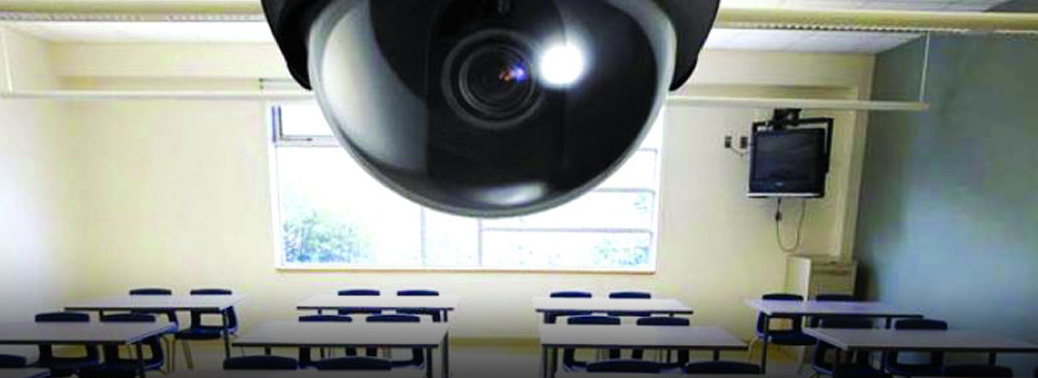
- Context– Project to install CCTV cameras inside all classrooms in Delhi state schools.
Delhi Government Stand:
Empowering Parents
- In private schools, parents are empowered by their own education and economic leverage due to the fees they pay. Parental oversight has been the bedrock of effective school management. CCTV surveillance would bring empowerment to parents.
Parent Participation
- School Management Committees (SMCs), parent bodies mandated by the Right to Education Act. They have been empowered to monitor and supervise basic deliverables of schools, such as teacher attendance, healthy mid-day meals, clean washrooms, drinking water, etc. The CCTV in classrooms project is the next step towards increasing accountability of schools.
Accountability:
- By sharing feeds with parents, it is actually ensuring that the crores of public money invested into CCTVs are not wasted.
- Often, CCTVs fail to serve their purpose for lack of motivated monitoring.
- Outsourcing of the monitoring to an invested stakeholder like parents is actually a smart innovation.
Child Care:
- The CCTV feeds can aid parents to identify several problems their children may be facing, including bullying, corporal punishment, inadequate attention spans, teacher absenteeism and even student truancy. It will empower them to not just raise their children better but also to ask the right questions to their child’s school.
Issue of Privacy Breach
- Classrooms cannot be classified as private by any stretch of imagination.
- feed being provided to parents is highly restricted.
- Only the feed for their own children will be provided to parents.
- The feed does not include audio, and can only be accessed live.
Deterrence for Crimes
- If CCTVs can be deterrents to crime outside schools, they can be deterrents within too.
Argument Against CCTV Installation in Schools:
The Aim of Education Isn’t Just Disciplinary:
- While a school is meant to teach discipline, it is also the space where students can make mistakes and subsequently learn from them.
- Creating panopticons inside schools instils fear, not values.
Classrooms Aren’t Public Spaces Either:
- Classrooms cannot be classified as private.
- However, schools are not as public as a footpath.
- The expectation of relative privacy is what allows students the freedom to express themselves, make mistakes, and inculcate creativity and imagination.
- The Delhi government cannot assume that constant surveillance of every activity will improve the learning environment.
Lack of digital infrastructure:
- Internet penetration in urban India still stands at 64.84%, including multi-SIM usage. In cases where parents don’t have smartphones and internet access, what does the government intend to do?
Phone sharing:
- Shared access to a phone is a common habit, and the Delhi government has still not clarified, despite our repeated queries, how they intend to verify a parent’s identity on the DGS Live app.
Access to Videos:
- Creating a massive repository of video footage of children is a phenomenally bad idea, and a violation of their privacy.
- In the absence of any legislative and judicial oversight, it can be easily abused.
Conclusion:
- There should be proper white paper published by Delhi Government regarding CCTV installation so that public understands the motives and undue activity can be restricted.
PROTECTION OF CHILDREN AGAINST SEXUAL OFFENCES ACT (POCSO)
12, Jul 2019
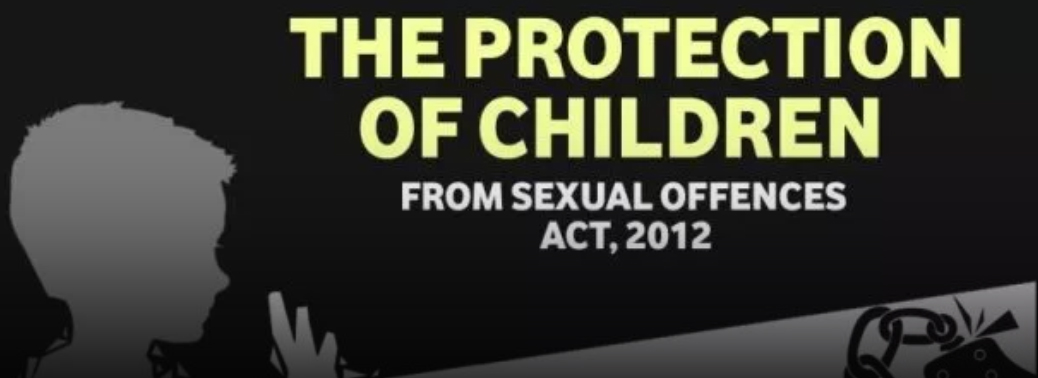
- Context– Cabinet has approved a new definition for child pornography in its amendments to the POCSO Act.
What is POCSO Act:
- The POCSO Act provides for the protection of children from offences of sexual assault, sexual harassment and pornography.
- The Act lays down child-friendly mechanisms for reporting, recording of evidence, investigation, and speedy trial offences through designated Special Courts.
- The Act defines “child” as any person below 18 years of age.
Stats of Child Abuse:
- Child Abuse Report, Women and Child Development India, 2007
- Half of the country’s children face some form of sexual abuse, with 21% having faced severe sexual abuse.
- Boys account for around 53% and girls for 47% of all children reporting abuse.
Features of POCSO Act 2012
Aggravated Sexual Assault
- The POCSO Act criminalises penetrative and non-penetrative sexual assault. It makes a distinction between “sexual assault” and “aggravated sexual assault”.
- “Aggravated sexual assault” is under certain circumstances where the child victim is mentally ill or when the offence has been committed by a person in a position of trust or authority (e.g. family member, police officer, teacher, or doctor;)
Special Courts and Public Prosecutors
- The POCSO Act requires that all trials be conducted in-camera, to ensure that a child’s identity is not revealed.
- The Act requires State governments to set up Special Courts.
- These Courts can determine the amount of compensation for the treatment and rehabilitation of the child.
- Cases before the Court must be disposed within one year from the date they were reported.
- State Governments are required to appoint Special Public Prosecutors (SPP) who will exclusively address POCSO cases.
Child-Friendly Courts
- Avoiding exposure to the accused is a crucial component in protecting the best interests of the child, as this ensures that the child is not traumatised by facing the accused, as well as it ensures that the opportunity for the accused and his lawyers to intimidate the child is minimised.
Victim Compensation
- In addition to the punishment, the POCSO Act requires Courts to prescribe a direct payment of compensation. This victim compensation may be used for medical treatment or rehabilitative purposes.
Recent Amendments to bill: / Child pornography
- Watching, possessing or circulating animations or cartoons that depict a minor engaging in a sexually explicit conduct could land person in jail.
- law will also apply to pornographic content where adults or young adults pretend to be children. Fine for possessing child porn to ₹5,000 from the earlier proposal of ₹1000.
Conclusion:
- While the mandate of the legislation is truly radical in that it aims to protect children against sexual abuse, and provides for a victim sensitive criminal justice process, there are several snags in its implementation.
- Serious open discussion on child abuse can and is taking place.
- We need to use this momentum to make lasting systemic change; for our children, it is the least we can do.
INITIATIVES UNDERTAKEN TO IMPROVE THE QUALITY OF EDUCATION
10, Jul 2019

Different initiatives undertaken by Govt. to improve quality of Education:
- The Central Government has launched an Integrated Scheme for School Education – Samagra Shiksha, from 2018-19 which subsumes the erstwhile centrally sponsored schemes of Sarva Shiksha Abhiyan (SSA), Rashtriya Madhyamik Shiksha Abhiyan (RMSA) and Teacher Education (TE).
- Under Samagra Shiksha, funds are given to all States and UTs for various interventions to improve the quality of education such as training of in-service teachers, headmasters and principals, remedial teaching for academically weaker students, provision of library grants to schools, ICT and digital initiatives, strengthening of teacher education institutions, Rashtriya Avishkar Abhiyan, Padhe Bharat Badhe Bharat, etc.
- In order to focus on quality education, the Central rules to the Right of Children to Free and Compulsory Education (RTE) Act have been amended to include reference on class-wise, subject-wise Learning Outcomes for all elementary classes. The National Council of Educational Research and Training (NCERT) conducted a National Achievement Survey, under which learning outcomes of students were evaluated, through a District level sampling and gaps were identified.
- Government of India has decided to participate in the Programme for International Students Assessment (PISA) to be conducted by the Organization for Economic Cooperation and Development (OECD) in 2021.
- Approval has been given for conducting a Census based audit called Shagunotsav of all government and government aided schools in all States and UTs. Further, in 2019-20 approval has been given for conducting a School Based Assessment (SBA) of all elementary stage students, to evaluate learning outcomes.
- MHRD has designed a 70 indicators-based matrix Performance Grading Index (PGI) to grade the States and UTs. To collect timely and accurate data, an Educational Management Information System called UDISE+ (UDISE plus) has been launched in 2018-19.
- In 2019-20, approval has been given for setting up Youth and Eco Club in all Government Schools across the country. In order to experience and celebrate the rich cultural diversity of India and to encourage experimental learning, Rangotsav was organized in schools in 2018-19.
FOOD AND NUTRITION SECURITY ANALYSIS, INDIA, 2019
09, Jul 2019
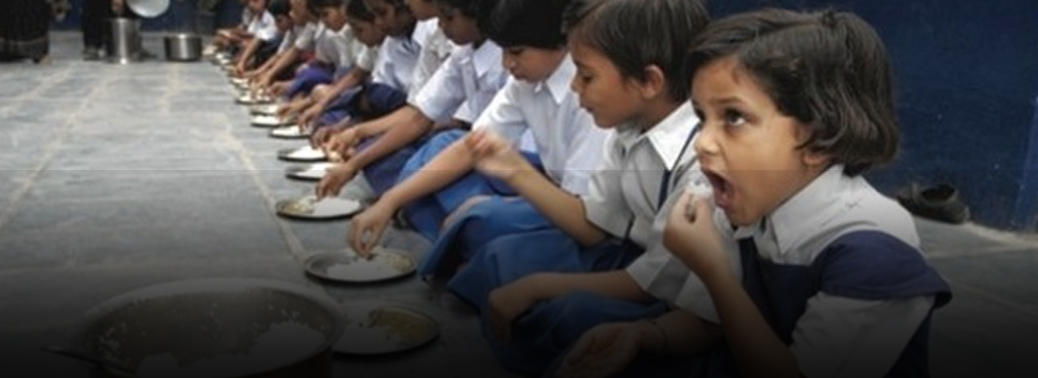
Why in News?
- The Food and Nutrition Security Analysis, India, 2019, a report by the MoSPI and The World Food Programme lists Maharashtra as one of the six States with high levels of stunting and underweight.
- The State also has a prevalence of stunting and wasting.
- Here’s a look at the highlights of the report and overall malnutrition in Maharashtra.
Malnutrition:
- Malnutrition, in all its forms, includes under nutrition (wasting, stunting, underweight) inadequate vitamins or minerals, overweight, obesity, and resulting diet-related non- communicable diseases.
Types of Malnutrition:
- Moderate Acute malnutrition (MAM): Children aged between six months and 59 months who are between the -2 and -3 standard deviation for weight for height (wasting) score.
- Severe Acute Malnutrition (SAM): Children aged between six months and 59 months and have a weight for height (wasting) score 3 standard deviations below the median, have a mid-upper-arm circumference less than 115 mm, or the presence of bilateral edema.
- Severe Chronic Malnutrition (SCM): Calculated with the Z-score defined as a height-for- age index less than –3 standard deviations from the mean weight of a reference population of children of the same height and/or having edema.
- Stunting: Calculation is based on height-for-age. It is is associated with an underdeveloped brain, poor learning capacity, and increased nutrition-related diseases.
- Wasting: Calculated by weight-for-height. It is associated with decreased fat mass. Also known as wasting syndrome, it causes muscle and fat tissue to waste away.
- Underweight: Calculated by the weight-for-age formula. It is a body weight considered to be too low to be healthy. It can reflect both stunting and wasting.
Food and Malnutrition in the Country:
- Over the last 20 years, total food grain production in India increased from 198 million tonnes to 269 million tonnes.
- Despite increase in food production, the rate of malnutrition in India remains very high.
- In the food basket, it turns out that in both urban and rural areas, the share of expenditure on cereal and cereal substitutes has declined between 1972-73 and 2011-12, from 57% to 25% in rural areas and from 36% to 19% in urban areas.
- The energy and protein intake from cereals has decreased in both rural and urban India, largely because of increased consumption of other food items such as milk and dairy products, oils and fat and relatively unhealthy food such as fast food, processed food, and sugary beverages.
- The consumption of unhealthy energy and protein sources is much higher in urban areas.
Double Burden of Malnutrition:
- For several decades India was dealing with only one form of malnutrition– undernutrition. In the last decade, the double burden which includes both over- and undernutrition, is becoming more prominent and poses a new challenge for India.
- From 2005 to 2016, prevalence of low (< 18.5 kG/M2) body mass index (BMI) in Indian women decreased from 36% to 23% and from 34% to 20% among Indian men. During the same period, the prevalence of overweight/obesity (BMI > 30 kG/M2) increased from 13% to 21% among women and from 9% to 19% in men.
- Children born to women with low BMI are more likely to be stunted, wasted, and underweight compared to children born to women with normal or high BMI.
States Performance:
- The highest levels of stunting and underweight are found in Jharkhand, Bihar, Uttar Pradesh, Madhya Pradesh, Gujarat and
- At the national level, among social groups, the prevalence of stunting is highest amongst children from the STs (43.6 percent), followed by SCs (42.5 percent) and OBCs (38.6 percent). The prevalence of stunting in children from ST in Rajasthan, Odisha and Meghalaya is high while stunting in children from both ST and SC is high in Maharashtra, Chhattisgarh and Karnataka.
- Prevalence of wasting is highest in Jharkhand (29.0%) and above the national average in eight more States (Haryana, Goa, Rajasthan, Chhattisgarh, Maharashtra, MP, Karnataka and Gujarat) and three UTs (Puducherry, Daman and Diu and Dadra and Nagar Haveli).
- Prevalence of underweight is also highest in Jharkhand (47.8%) and is above the National average in seven more States (Maharashtra, Rajasthan, Chhattisgarh, Gujarat, UP, MP and Bihar) and one UT (Dadra and Nagar Haveli).
LABOUR LAWS IN INDIA
08, Jul 2019

Context-
- Central government for its move to subsume 44 existing labour laws into four codes dealing with wages, social security, industrial safety and welfare, and industrial relations.
- The code on wages Bill, which seeks to replace existing laws related to workers’ remuneration.
- Labour Union- These codes will do away with social security measures of the labour force in the country. It will give a free hand to industrial houses and big companies
Issues with Labour Law:
- Labour laws involving safety at workplace, wages, social security and industrial relations.
- Distorted the labour market.
- Due to the complex and massive numbers of labour laws, industries prefer to hire contractual labourers not covered under these laws and without any social security or termination protection.
- Another major problem of labour market in India is that there is a growing number of unskilled labourers in the country.
- Current labour reforms are less focus on apprenticeship.
- Labour market in India is suffering from surplus labour force.
- lack of adequate information regarding jobs
- child labour practices
- lack of proper manpower planning etc.
Polity:
- Article 246 Labour being in concurrent list, many states and even centre have enacted laws. So many laws lead to confusion about regulation giving rise to inspector raj.
- Article 43A was inserted by 42nd amendment – directing state to take steps to ensure worker’s participation in management of industries.
- Article 23 forbids forced labor, 24 forbids child labor (in factories, mines and other hazardous occupations) below age of 14 years.
Important laws related to Industrial relations are
Employee State Insurance Act:
- ESI card is issued, insuring worker against any accident at work. There’s also ESI corporation.
Employees Provident Fund and Miscellaneous provisions Act –
- Provident fund is one in which employee pays part of his wage ( 12 % in most cases) and equal contribution by employer. This is mandatory for establishment employing more than 20 people
Factories Act, 1948
Child Labor (prohibition and regulation) Act:
- Prohibits Children below age of 14 to work in hazardous jobs. There are demands for complete ban on child employment
Industrial Disputes Act:
- One important provision – Industries employing more than 100 people can not terminate employment before approval of government. There is strong demand from industry to revise this limit, to facilitate easy entry and exit.
Minimum Wages Act
Bonded Labor system (Abolition) Act:
- System in which onetime payment was made by employer to supplier or leader of group and whole season’s or year’s services of labor was taken. Still rampant in some businesses like Brick Kilns
Contract Labor (Regulation and Abolition) Act, 1970:
- Contract labor is indirectly employed by an establishment through a contractor or agency. So, their relation with principal organization becomes ambiguous. They are generally discriminated against direct employees in terms of wages, job security, status etc. This act attempts to abolish it in certain circumstances and to bring them at par with direct employees.
Apprentices Act, 1961:
Reforms needed in Labour Law:
- There is an overlapping of labour laws which gives immense powers to official to harass the employer and leads to corruption.
- Social safety net for workers in order to enable capacity building of workers.
Disinvestment and FDI: PSE’s one of the main objectives was to provide employment even at cost of economy but this very policy was result of demise of PSEs. Same is true for FDI.
Conclusion:
- The government needs to bring more investor-friendly labour laws at the national level and reforms such as deregulating labour laws.
SFURTI, ASPIRE & PRADHAN MANTRI MATSYA SAMPADA YOJANA
08, Jul 2019
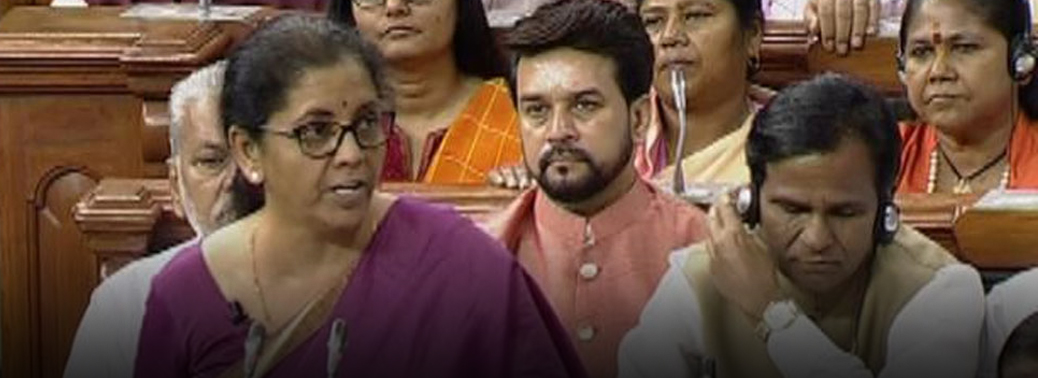
Why in News?
- The Union Minister for Finance and Corporate Affairs Smt. Nirmala Sitharaman said that the Government aims to set up more Common Facility Centres (CFCs) under the ‘Scheme of Fund for Upgradation and Regeneration of Traditional Industries’ (SFURTI).
- It will facilitate cluster-based development to make the traditional industries more productive, profitable and capable for generating sustained employment opportunities.
- The focused sectors are Bamboo, Honey and Khadi clusters.
- SFURTI envisions setting up of 100 new clusters during 2019-20 to enable 50,000 artisans to join the economic value chain.
SFURTI:
- SFURTI is Scheme of Fund for Regeneration of Traditional Industries.
- Ministry of Micro Small and Medium Enterprises (MSME), Govt. of India has launched this scheme in the year 2005 with the view to promote Cluster development.
- As per the revised guidelines, the following schemes are being merged into SFURTI:
- The Scheme for Enhancing Productivity and Competitiveness of Khadi Industry and Artisans
- The Scheme for Product Development, Design Intervention and Packaging (PRODIP)
- The Scheme for Rural Industries Service Center (RISC) and
- Other small interventions like Ready Warp Units, Ready to Wear Mission, etc.
Objectives of Scheme:
- To organize the traditional industries and artisans into clusters to make them competitive and provide support for their long-term
sustainability and economy of scale; - To provide sustained employment for traditional industry artisans and rural entrepreneurs;
- To enhance marketability of products of such clusters by providing support for new products, design intervention and improved packaging and also the improvement of marketing infrastructure;
- To equip traditional artisans of the associated clusters with the improved skills and capabilities through training and exposure visits;
- To strengthen the cluster governance systems with the active participation of the stakeholders, so that they are able to gauge the emerging challenges and opportunities and respond to them in a coherent manner;
- To build up innovated and traditional skills, improved technologies, advanced processes, market intelligence and new models of public – private partnerships, so as to gradually replicate similar models of cluster – based regenerated traditional industries
- To make a paradigm shift from a supply driven selling model to a market driven model with the right branding, focus product mix and correct positioning and right pricing to make the offering holistic and optimal for each of the focus categories.
- To tap the E-Commerce as a major marketing channel given the outreach and the growing market penetration of E-Commerce, the re is a need to devise a quick strategy to make its presence felt in the E – Retail space.
ASPIRE:
- The Scheme for Promotion of Innovation, Rural Industry and Entrepreneurship’ (ASPIRE) has been consolidated for setting up of Livelihood Business Incubators (LBIs) and Technology Business Incubators (TBIs).
- The Scheme contemplates setting up 80 Livelihood Business Incubators (LBIs) and 20 Technology Business Incubators (TBIs) in 2019-20 to develop 75,000 skilled entrepreneurs in agro-rural industry sectors.
Pradhan Mantri Matsya Sampada Yojana:
- Pradhan Mantri Matsya Sampada Yojana (PMMSY) – Through the Scheme the Department of Fisheries will establish a robust fisheries management framework.
- This will address critical gaps in strengthening the value chain, including infrastructure, modernization, traceability, production, productivity, post-harvest management, and quality control.
CENTRAL EDUCATIONAL INSTITUTIONS (RESERVATION IN TEACHERS’ CADRE) BILL, 2019
08, Jul 2019
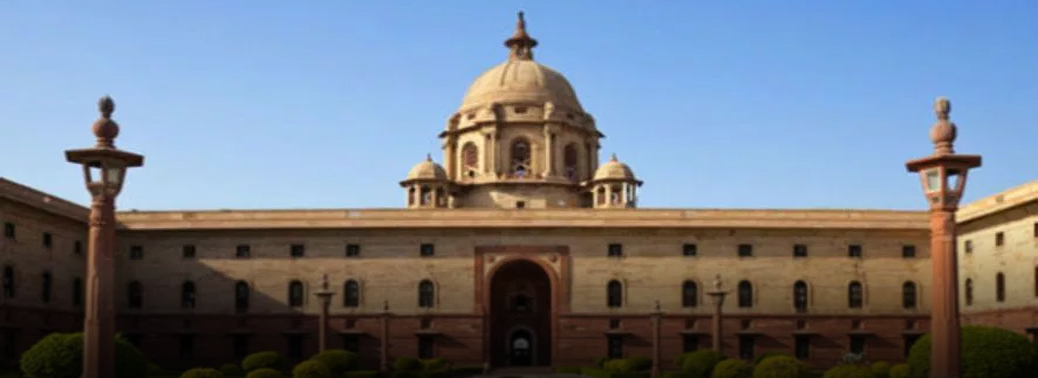
Why in News?
- The Central Educational Institutions (Reservation in Teachers’ Cadre) Bill, 2019 has been passed by both the houses of Parliament.
- The Bill will now be sent for President’s assent.
Highlights:
- The Bill replaces the “The Central Educational Institutions (Reservation in Teachers’ Cadre) Ordinance, 2019”.
- The new bill considers the University/College as one unit restoring earlier reservation system based on 200-point roster.
- No longer will ‘Department/Subject’ be treated as one unit.
- This Decision Will:
- Allow up of more than 7000 existing vacancies in Central Educational Institutions and pave the way for filling up 3 lakh vacancies in the Government (Central and State) Educational institutions by direct recruitment in Teacher’s Cadre.
- Ensure compliance of the Constitutional Provisions of Articles 14, 16 and 21.
- Ensure full representation of the Scheduled Castes/ the Scheduled Tribes, the socially and Educationally Backward Classes and Economically Weaker Sections in direct recruitment in teachers’ cadres.
- This decision is also expected to improve the teaching standards in the higher educational institutions by attracting all eligible talented candidates belonging SCs/STs/SEBCs/EWS.
- It will also ensure providing of 10% reservation to EWS.
SURROGACY (REGULATION) BILL, 2019
07, Jul 2019

Why in News?
- The Cabinet has approved the introduction of Surrogacy (Regulation) Bill, 2019 that aims to prohibit commercial surrogacy in India.
Highlights:
- The Bill proposes to regulate surrogacy in India by establishing a National Surrogacy Board at the central level and state surrogacy boards and appropriate authorities in the state and Union Territories.
- The purpose of the Bill is to ensure effective regulation of surrogacy, prohibit commercial surrogacy, and allow ethical surrogacy.
- While commercial surrogacy will be prohibited, including sale and purchase of human embryos and gametes, ethical surrogacy for needy couples will be allowed on fulfilment of stipulated conditions.
- It will also prevent exploitation of surrogate mothers and children born through surrogacy.
- There will not be any financial implications, except for the meetings of the National and State Surrogacy Boards and appropriate authorities, which will be met out of the administrative budgets of respective departments.
Concerns with Commercial Surrogacy:
- Procreation is not just about furthering the family lineage, but also about succession, tradition and legality.
- Having a child is about putting a biological system in place, not just caring for societal mores.
- There is therefore a need to define the legality and ethicality of the practice.
- Commercial surrogacy can lead to complaints of exploitation of women, especially those from the economically weaker section, because it would involve financial compensation, the adequacy of which can always be challenged.
- Pregnancy remains a biological phenomenon, with its attendant complications, necessitating proper medical care, the grossness of which could be open to challenge in case something goes wrong.
- Children born out of surrogacy can also face the problems of citizenship, abandonment and abuse, another aspect that needs to be taken care of.
- There is also the problem of jurisdiction because not all countries permit it. Couples wanting a surrogacy arrangement may travel to a country that permits it.
TRADE INFRASTRUCTURE FOR EXPORT SCHEME (TIES)
06, Jul 2019
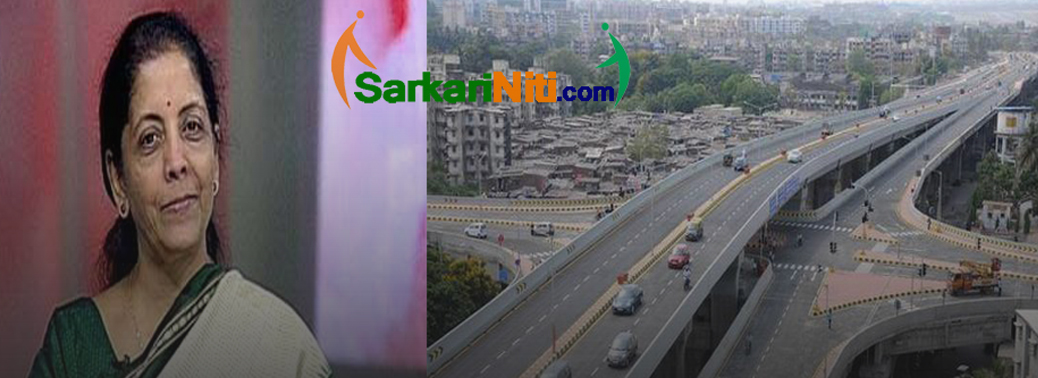
Why in News?
- The Department of Commerce, under the Union Ministry of Commerce and Industry, has approved financial assistance for three trade promotion centres under the TIES.
Highlights:
- Establishment of Main Exhibition Building (Phase-II) at Trade cum Permanent Exhibition Centre at Imphal, Manipur by Manipur Industrial Development Corporation (MANIDCO).
- Expansion of Chennai Trade Centre by Tamil Nadu Trade Promotion Organisation
- Establishment of Trade Promotion Centre at Minto Hall, Bhopal by M.P. State Tourism Development Corporation
Trade Infrastructure for Export Scheme (TIES):
- Union Ministry of Commerce and Industry launched the Trade Infrastructure for Export Scheme (TIES) in March, 2017.
- After delinking of the Assistance to States for Development of Export Infrastructure and Allied Activities (ASIDE) Scheme in 2015, the State Governments had been consistently requesting the support of the Centre in creation of export infrastructure.
- The scheme would provide assistance for setting up and up-gradation of infrastructure projects with overwhelming export linkages like the Border Haats, Land customs stations, quality testing and certification labs, cold chains, trade promotion centres, dry ports, export warehousing and packaging, SEZs and ports/airports cargo terminuses.
- The proposals of the implementing agencies for funding will be considered by an inter-ministerial Empowered Committee.
MINIMUM WAGE SYSTEM
05, Jul 2019
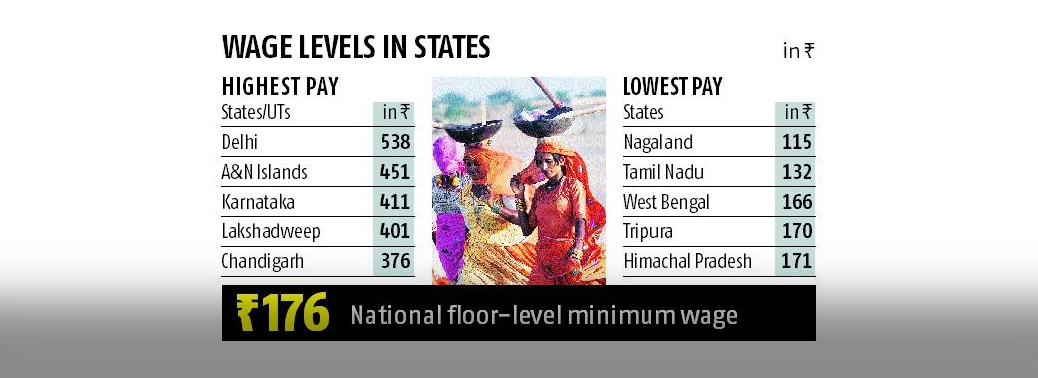
Background
- In India, labour is included in the concurrent list which implies that both the central government and state governments can make laws regarding this subject.
- The Second National Commission on Labour (2002) had recommended that existing labour laws should be classified into broader groups for easier compliance, such as
- (i) industrial relations, (ii) Wages, (iii) Social Security, (iv) Safety, and (v) welfare and working conditions.
- This would also allow for uniformity in the coverage of various labour laws that are in force.2
- The Code on Wages replaces four existing laws:
1. The Payment of Wages Act, 1936
2. The Minimum Wages Act, 1948
3. The Payment of Bonus Act, 1965 and
4. The Equal Remuneration Act, 1976.
Who Determines Minimum Wages?
- The Code provides that a National Minimum Wage may be set by the Central Government. States cannot set minimum wages lower than the national minimum wage.
- The Central Government may set separate national minimum wages for different states or regions of the country. Minimum wages must be revised by the central or state governments at an interval of Five Years.
Key Issues:
- Central government may set a national minimum wage. Further, it may set separate national minimum wages for different states or regions.
- 1. The rationale for a national minimum wage, and
- 2. Whether the central government should set one or multiple national minimum wages.
- States have to ensure that minimum wages set by them are not lower than the national minimum wage. If existing minimum wages set by states are higher than the national minimum wage, they cannot reduce the minimum wages.
- This may affect the ability of states to reduce their minimum wages if the national minimum wage is lowered.
Gender Discrimination:
- The Equal Remuneration Act, 1976, prohibits employers from discriminating in wage payments as well as recruitment of employees based on gender.
- While the Code prohibits gender discrimination on wage-related matters, it does not include provisions regarding discrimination during recruitment.
Advisory boards:
- The central government and state governments will constitute the Central Advisory Board
- and State Advisory Boards respectively.
- These boards will consist of:
- 1. Employers,
- 2. Employees in equal number as the employers, and
- 3. Independent Persons (Not Exceeding One Third of the Total Members of the Board).
- They will advise the central or state governments on issues such as setting and revision of minimum wages and increasing employment opportunities for women, among others.
Advantages of A National Minimum Wage:
- National minimum wage is to ensure a uniform standard of living across the country.
- The introduction of a national minimum wage may help reduce these differences and provide a basic standard of living for all employees across the country.
Disadvantages of A National Minimum Wage:
- It may be argued that the ability of state governments to adjust minimum wage levels may be affected, if the central government sets a national minimum wage.
- These adjustments may be required for variations, across the country, in costs of living such as prices of essential goods and housing.
- The Code does not provide for consultation between the central and state governments while determining the national minimum wage.
SCHEME FOR TRANS-DISCIPLINARY RESEARCH FOR INDIA’S DEVELOPING ECONOMY (STRIDE)
05, Jul 2019

Why in News?
- The University Grants Commission (UGC) has approved a new scheme – ‘Scheme for Trans-disciplinary Research for India’s Developing Economy’ (STRIDE)
STRIDE:
- STRIDE will provide support to research projects that are socially relevant, locally need-based, nationally important and globally significant.
- STRIDE shall support research capacity building as well as basic, applied and transformational action research that can contribute to national priorities with focus on inclusive human development.
- STRIDE shall support creation, development and integration of new ideas, concepts and practices for public good and strengthening civil society.
- STRIDE scheme will strengthen research culture and innovation in colleges and Universities and help students and faculty to contribute towards India’s developing economy with help of collaborative research.
STRIDE Objectives:
- To identify young talent, strengthen research culture, build capacity, promote innovation and support trans-disciplinary research for India’s developing economy and national development.
- To fund multi institutional network high-impact research projects in humanities and human sciences.
STRIDE Components:
- Component-1 will endeavour to identify the motivated young talents with research and innovation aptitude in universities and colleges. The Scheme will provide research capacity building in diverse disciplines by mentoring, nurturing and supporting young talents to
- innovate pragmatic solutions for local, regional, national and global problems. This component is open to all disciplines for grant upto 1 crore.
- Component-2 will be mainly to enhance problem solving skills with help of social innovation and action research to improve wellbeing of people and contribute for India’s developing economy. Collaborations between universities, government, voluntary organizations and industries is encouraged under this scheme. This component is open to all disciplines for grant upto 50 lakh – 1 crore.
- Component-3 will fund high impact research projects in the identified thrust areas in humanities and human sciences through national network of eminent scientists from leading institutions. Grant available for this component is upto 1 crore for one HEI and upto 5 crores for multi institutional network.
Cabinet NOD to Better Pay Benefits for CAPF Officers
04, Jul 2019
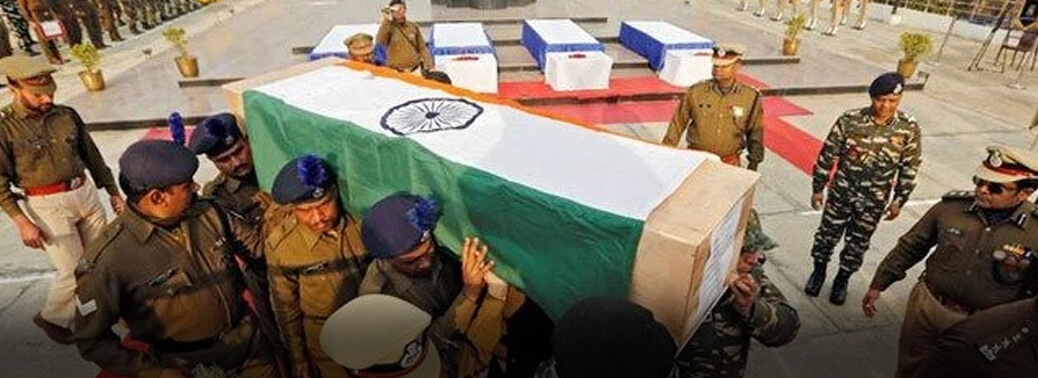
Context:
The Cabinet has approved the proposal to grant Organised Cadre Status to Central Armed Police Forces (CAPF) officers.
- The move comes after a Supreme Court order asked the government to extend the benefit already available to IPS, IAS, IRS and IFS officers — to CAPF officers
Significance:
- This will make them eligible for several benefits, including Non-Functional Financial Upgradation (NFFU).
- The move will benefit thousands of serving officers and many others who have retired since 2006 from the five primary CAPFs or paramilitary forces — CRPF, BSF, CISF, ITBP and SSB.
- The officers will now get better deputation chances as they will be eligible to get empanelled under the central staffing scheme, get enhanced facilities of transportation, house rent allowance, travelling and dearness allowance.
- Besides the pay hike, the demand for NFFU also encapsulates a long-standing tussle between CAPF cadre officers and IPS officers who come on deputation to the forces.
- Most top positions in these forces are occupied by IPS officers.
The Dentist (Amendment) Bill, 2019
04, Jul 2019
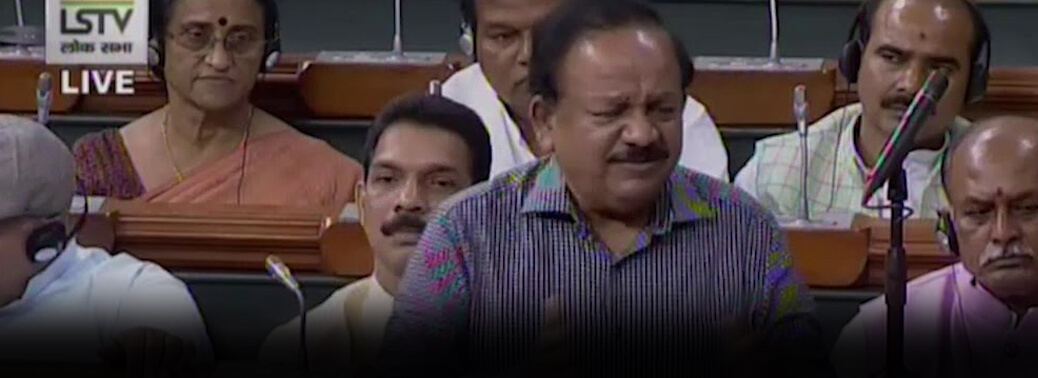
Context:
The Dentist (Amendment) Bill, 2019 was recently passed in the monsoon session of the Parliament.
About the Bill:
- The Bill amends the Dentists Act, 1948.
- The Act regulates the profession of dentistry and constitutes:
- The Dental Council of India,
- State Dental Councils and
- Joint State Dental Councils.
- A register of dentists is maintained under the Act in two parts, Part A and Part B. Persons possessing recognised dental qualifications are registered in Part A and persons not possessing such qualifications are registered in Part B.
- The persons in Part B are Indian citizens who have been practicing as dentists for at least five years prior to a registration date notified by the state government.
Composition of the Dental Councils:
- Under the Act, composition of the Dental Council of India, State Dental Councils, and Joint State Dental Councils includes representation from dentists registered in Part B.
- The Bill seeks to remove the mandatory requirement of the representation of dentists registered in Part B in these Councils.
NATIONAL COMMON MOBILITY CARD
03, Jul 2019
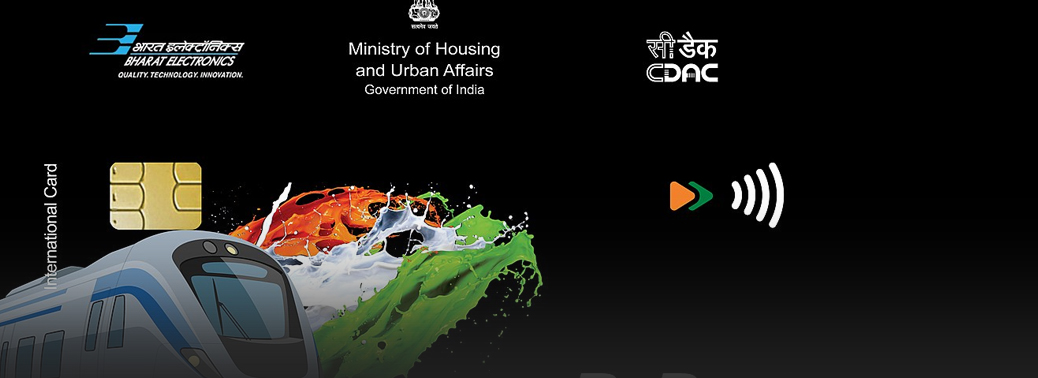
Why in News?
- National Common Mobility Card (NCMC) – One Nation, One Card for transport mobility is an initiative of the Ministry of Housing and Urban Affairs to enable seamless travel by different metros and other transport systems across the country besides retail shopping and purchases.
Highlights:
- The Indigenous Automatic Fare Collection System based on One Nation One Card Model is the first of its kind in India.
- These are bank issued cards on Debit/Credit/Prepaid card product platform.
- The customer may use this single card for payments across all segments including metro, bus, suburban railways, toll, parking, smart city and retail.
- The stored value on card supports offline transaction across all travel needs with minimal financial risk to involved stakeholders. The service area feature of this card supports operator specific applications e.g. monthly passes, season tickets etc.
Benefits of NCMC:
- NCMC Ecosystem offers the value proposition for customers as they need not to carry multiple cards for different usage. Further, the super quick contactless transactions will improve the seamless experience.
- For operators, NCMC ecosystem brings common standards for implementation without vendor lock-in.
- This will also help in higher digital payments penetration, savings on closed loop card life cycle management cost and reduced operating cost. The rich data insights may be used by operators for business intelligence leading to efficient operation.
- With NCMC Ecosystem, Banks will get an access to segments which are highly driven by cash but stickiness in nature. NCMC Ecosystem will further help government in digitization of low value payments and reduced cost for the entire ecosystem.
CHILD LABOUR
02, Jul 2019

Context:
- Instances of child labour detected during inspections have reduced successively from 2014 to 2018, figures presented by the government in Lok Sabha show.
- Child labour cases: trend shows decline, govt says will eradicate it
Constitution on Child Labour:
- The Indian Constitution ensures the right of all children (6-14 years) to free and compulsory education and prohibits their employment in hazardous occupations; and promotes policies protecting children from exploitation
Laws Prohibiting Child Labour:
- The Child Labour Act was amended in 2016 and the amendment provides for complete prohibition of work or employment of children below age 14 in any occupation and process and prohibition of adolescents in the age group 14-18 in hazardous occupations and processes.
- The Amendment Act also provides for strict punishment of employers for violation of the Act and has made the offence cognisable.
National Child Labour Project (NCLP)
- Under the scheme, children aged 9-14 are rescued/withdrawn from work and enrolled in NCLP Special Training Centres before being mainstreamed into the formal education system. Children aged 5-8 are directly linked to the formal education system through close coordination with the Sarva Shiksha Abhiyan
What type of Works:
- Engaged in manual work, in domestic work in family homes, in rural labour in the agricultural sector including cotton growing, at glass, match box and brass and lock-making factories, in embroidery, rag-picking, beedi rolling, in the carpet-making industry, in mining and stone quarrying, brick kilns and tea gardens amongst others.
- Gender Specific Work girls performing more domestic and home-based work, boys are more often employed in wage labour.
Factors which lead to Child Labour:
- It is a multi-dimensional problem that involves various reasons contributing to it in a variety of ways. continued poverty, illiteracy and ignorance of poor parents, population explosion-large family size, low family income, the tradition of making children learn the family skill, lack of political will and weak/tardy enforcement of laws, un-employment/under-employment, migration, absence of provision for universal compulsory primary education.
Employers Preference for Child Labour
- The most important objective of the employer is to earn more profit on limited expenditure
National Legislations regarding Child Labour:
- Child Labour (Prohibition and Regulation) Amendment Act, 2016
- National Policy on Child Labour (1987) which focuses upon rehabilitation of such children
- Juvenile Justice (Care and Protection of Children) Act 2015
- India has recently ratified two of the ILO (International Labour Organisation) Conventions on Child labour i.e. o Minimum Age Convention 1993 o Worst forms of Child Labour Convention 1999.
- Child Labour (Prohibition and Regulation) Amendment Act, 2016
- It amends the Child Labour (Prohibition and Regulation) Act, 1986.
- The major amendments include Extends this ban on employment of children under 14 across all sectors, o Prohibits the employment of adolescents aged 14-18 years in hazardous occupations and Introduces more stringent jail term and fines for offenders: a jail term of six months to two years and a fine upto Rs 50,000.
- The Bill adds a new category of persons called “adolescent”. An adolescent means a person between 14 and 18 years of age. The Bill prohibits employment of adolescents in hazardous occupations as specified (mines, inflammable substance and hazardous processes).
- It brings down the list of hazardous occupations from the earlier 83 to just three: mining, inflammable substances, and hazardous processes under the Factories Act, and the centre will decide which processes are hazardous.
- The Act has a provision of creating Rehabilitation Fund has also been made for the rehabilitation of children.
ILO Convention upon Child Labour:
- Recently India ratified the two fundamental ILO Conventions concerning the elimination of child labour,
- India ratify ILO Convention No.138, which requires States party to set a minimum age under which no one shall be admitted to employment or work in any occupation, except for light work and artistic performances.
- Convention No. 182. The latter calls for the prohibition and elimination of the worst forms of child labour, including slavery, forced labour and trafficking; the use of children in armed conflict; the use of a child for prostitution, pornography and in illicit activities (such as drug trafficking); and hazardous work.
Conclusion:
- The phenomenon of child labour is multi-dimensional complex problem and deep rooted in the socio-economic fabric of the society.
- There are many factors responsible to this complex problem, so a comprehensive integrated approach is required to tackle and combat child labour.
- This can be done only by bringing attitudinal change, and social awareness and rigorous campaign against the problem of child labour.
Thus, it requires honest effort and strong commitment and support from all concerned.
NATIONAL POLICY ON SAFETY, HEALTH AND ENVIRONMENT AT WORKPLACE
02, Jul 2019

Aim-
- To establish a preventive safety and health culture in the country through elimination of the incidence of work related injuries, diseases, fatalities, disasters and to enhance the well-being of employees in all the sectors of economic activity in the country.
Steps taken Legislation:
- Mines Act, 1952 has been enacted by Central Government to regulate the objectives of safety and health of workers in mines.
- In respect of factories, a comprehensive legislation in the form of the Factories Act, 1948, for taking care of the occupational safety and health aspects of the workers employed in factories registered under the Factories Act, 1948 has been enacted.
Recent tragedy:
- Meghalaya mining accident.
Way Forward:
- Reforms in labour laws are an ongoing process to update the legislative system to address the need of the hour so as to make them more effective, flexible and in sync with emerging economic and industrial scenario.
- The Ministry has taken steps for drafting four labour codes on Wages, Industrial Relations, Social Security & Welfare, and Occupation Safety, Health and Working conditions respectively, by simplifying, amalgamating and rationalizing the relevant provisions of the existing Central Labour Laws.
THE JAMMU AND KASHMIR RESERVATION (AMENDMENT) BILL, 2019
02, Jul 2019
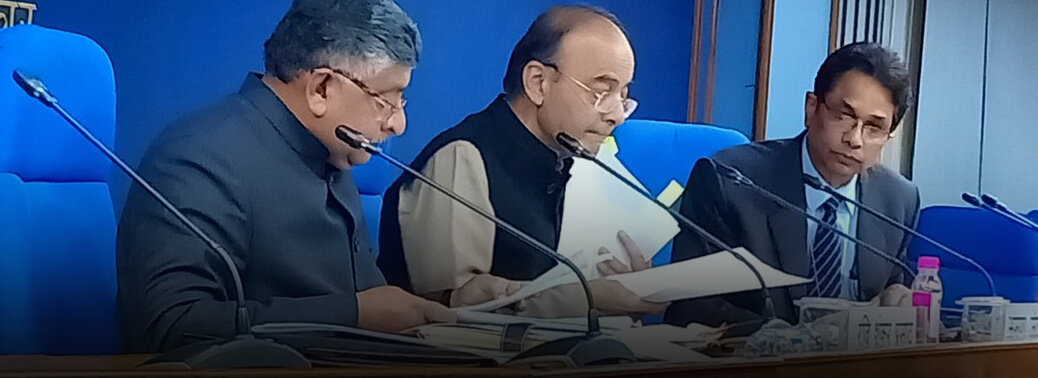
- Context: Jammu and Kashmir (Reservation) Amendment Bill, 2019 was passed by both the houses of the Parliament.
About the Bill:
- The Bill amends the Jammu and Kashmir Reservation Act, 2004.
- The Act provides for reservation in appointment and promotions in state government posts, and admission to professional institutions for certain reserved categories.
- Professional institutions include government medical colleges, dental colleges, and polytechnics.
- Extension of reservation: The Act provides for reservation in appointment and promotions in certain state government posts to persons belonging to socially and educationally backward classes.
- It defines socially and educationally backward classes to include persons living in areas adjoining the Actual Line of Control.
- The Bill amends this to include those persons living in areas adjoining the International Border, within the ambit of this reservation.
- Further, the Act states that any person who has been appointed on the basis of residence in an area adjoining the Line of Control, must serve in such areas for at least seven years.
- The Bill extends this condition to persons living in areas adjoining the International Border as well.
- Exclusion from Reservation: The Act states that any person whose annual income exceeds three lakh rupees or other amount as notified by the state government, would not be included within socially and educationally backward classes.
- However, this exclusion does not apply to persons living in areas adjoining the Actual Line of Control. The Bill states that in addition, this exclusion will not apply to persons living in areas adjoining the International Border also.
NAGALAND TO SET UP A REGISTER OF INDIGENOUS INHABITANTS
02, Jul 2019
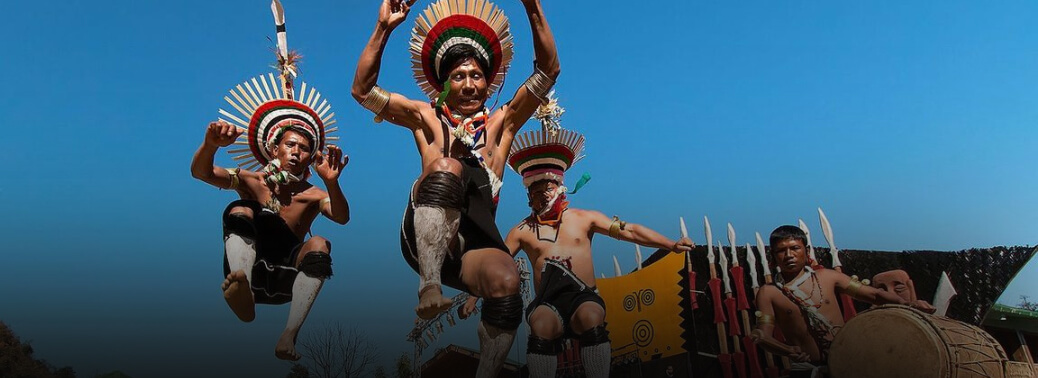
- Context: After Assam, Nagaland government has initiated a move to implement its own version of citizenship register for indigenous communities of the state.
What is Nagaland’s Initiative?
- According to a notification issued by the Government of Nagaland has decided to set up a Register of Indigenous Inhabitants of Nagaland (RIIN) with the aim of preventing fake indigenous inhabitants’ certificates.
- The RIIN will be the master list of all indigenous inhabitants of the state.
- The RIIN list will be based on “an extensive survey”.
- It will involve official records of indigenous residents from rural and (urban) wards and would be prepared under the supervision of the district administration.
- All indigenous inhabitants of the state would be issued a barcoded and numbered Indigenous Inhabitant Certificate.
- The process will be conducted across Nagaland and will be done as part of the online system of Inner Line Permit (ILP), which is already in force in Nagaland.
What is Inner Line Permit?
- Inner Line Permit (ILP) is an official travel document required by Indian citizens residing outside certain “protected” states while entering them.
- The ILP is issued by the Government of India and is obligatory for all those who reside outside the protected states.
- With the ILP, the government aims to regulate movement to certain areas located near the international border of India.
- ILP’s origin dates back to the Bengal Eastern Frontier Regulations, 1873, which protected the British Crown’s interest in tea, oil and elephant trade.
- It prohibited “British subjects” or Indians from entering into these protected areas. After Independence, in 1950, the word “British subjects” was replaced by Citizens of India and the focus of the ban on free movement was explained as a bid to protect tribal cultures in North-eastern India.
TRIFED SIGNED AN AGREEMENT TO PARTNER WITH THE e-COMMERCE GIANT’S GLOBAL SELLING PROGRAMME
01, Jul 2019
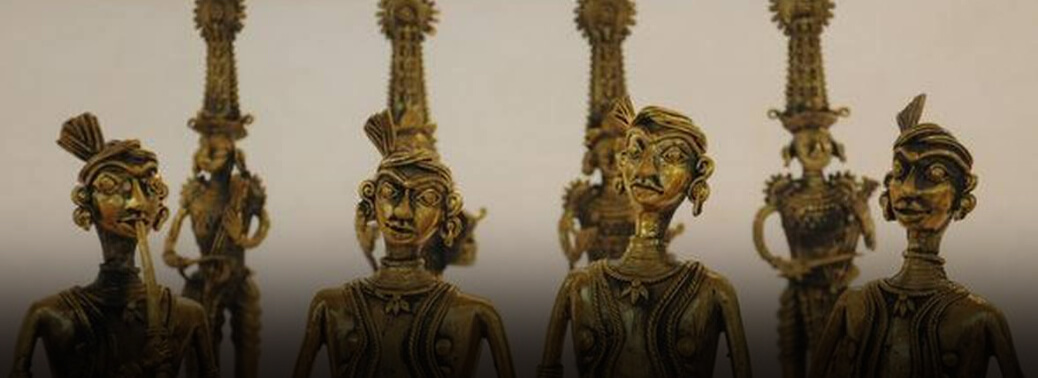
- TRIFED, a PSU under Ministry of Tribal Affairs, Government of India has been working with the main objective of promoting tribal art and craft for the benefit of tribal artisans of the country, under the scheme “Institutional Support for Development & Marketing of tribal products/produce” of the Ministry of Tribal Affairs, Government of India.
- Sale through e-commerce platforms: The various e-commerce platforms offers a huge potential for promotion and sale of tribal products. However, TRIFED is also expanding its operations through other e-commerce portals.
- Benefits-The online market has no geographic borders
Tribal Cooperative Marketing Federation (TRIFED):
- The Tribal Cooperative Marketing Development Federation of India (TRIFED) came into existence in 1987. It is a national-level apex organization functioning under the administrative control of Ministry of Tribal Affairs, Govt. of India.
- TRIFED aims to improve the livelihood of the tribal communities by creating a sustainable market and create business opportunities for them based on their cultured knowledge and traditional skills whilst ensuring fair and equitable remuneration. It involves exploring marketing possibilities for marketing of tribal products on a sustainable basis instalinko, creating brand and providing other services.
Marketing of Tribal Products:
- TRIFED has been marketing tribal products through its Retail Outlets located across country and also through exhibitions.
- TRIFED has established a chain of 35 own showrooms and 8 consignment showrooms in association with State level Organisations promoting tribal handicrafts.
EDUCATION QUALITY UPGRADATION AND INCLUSION PROGRAMME (EQUIP)
01, Jul 2019
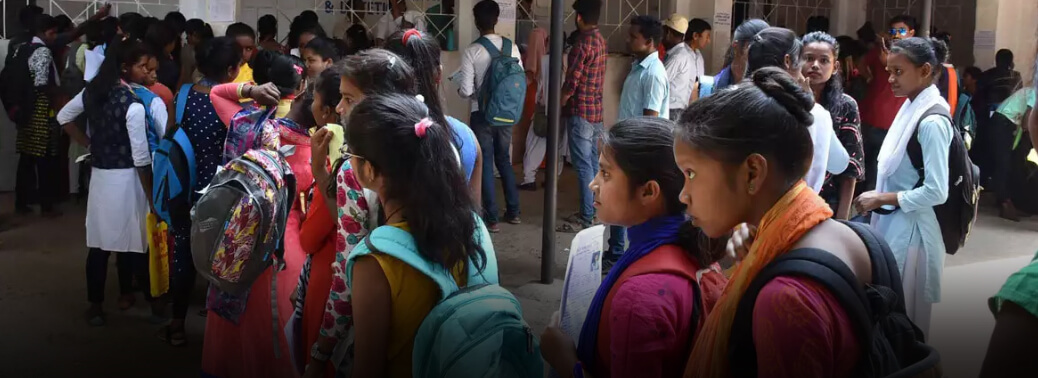
Why in News?
- In accordance with the decision of the Prime Minister for finalizing a five-year vision plan for each Ministry, the Department of Higher Education of HRD Ministry has finalized and released a five-year vision plan named Education Quality Upgradation and Inclusion Programme (EQUIP).
Education Quality Upgradation and Inclusion Programme (EQUIP):
- The Expert Groups drawn from senior academicians, administrators and industrialists, have suggested more than 50 initiatives that would transform the higher education sector completely.
- Double the Gross Enrolment Ratio (GER) in higher education and resolve the geographically and socially skewed access to higher education institutions in India
- Upgrade the quality of education to global standards
- Position at least 50 Indian institutions among the top-1000 global universities
- Introduce governance reforms in higher education for well-administered campuses
- Accreditation of all institutions as an assurance of quality
- Promote Research & Innovation ecosystems for positioning India in the Top-3 countries in the world in matters of knowledge creation
- Double the employability of the students passing out of higher education
- Harness education technology for expanding the reach and improving pedagogy
- Promote India as a global study destination
- Achieve a Quantum Increase in Investment in Higher Education.
ONLY 20% OF NIRBHAYA FUND HAS BEEN USED BY STATES
01, Jul 2019
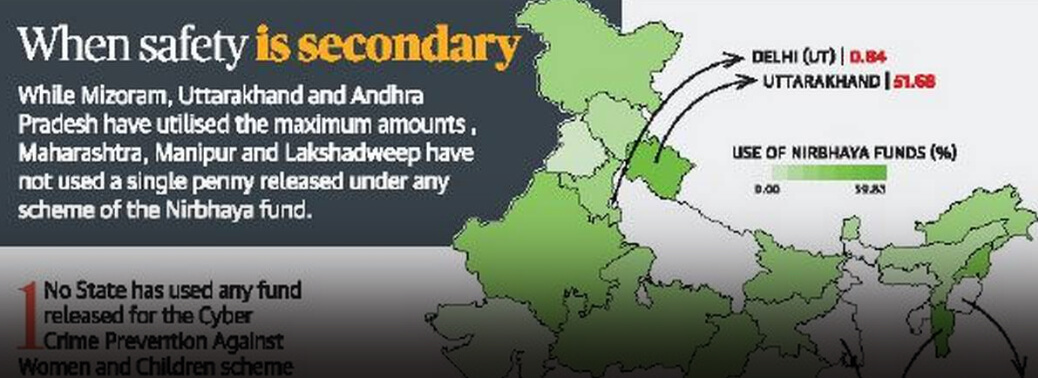
Context:
- The States and Union Territories have utilised less than 20% of the budget allocated to them under the Nirbhaya Fund for safety of women by the Central government between 2015 and 2018.
About Nirbhaya Fund:
- It is a dedicated fund set up by Ministry of Finance, in 2013, for implementation of initiatives aimed at enhancing the safety and security for women in the country.
- It is a non-lapsable corpus fund.
- Ministry of Women and Child Development is the nodal Ministry to appraise schemes under Nirbhaya Fund and also to review and monitor the progress of sanctioned Schemes in conjunction with the line Ministries/Departments.
- Central Victim Compensation Fund has been created under Nirbhaya, which is a corpus fund to support States/UTs for their Victim Compensation Scheme. This helps in ensuring adequate and timely support for women survivors of crime and violence.
Recent initiatives under Nirbhaya Fund:
One stop centres:
- It is a sub-scheme under National Mission for Empowerment of Women being run by Ministry of Women & Child Development.
- It is aimed at supporting women affected by violence in private and public spaces, within the family, community and at the workplace.
- Establishment of OSCs was one of the key components of Nirbhaya Fund. Every OSC is integrated with newly operational Women’s Helpline (181).
Safe city project:
- Ministry of Home Affairs (MHA) has approved a Safe City project for Lucknow at a total cost of Rs.194.44 crore under the Nirbhaya Fund Scheme.
- This approval i4s a part of MHA’s plans to implement Safe City projects in 8 selected cities, namely, Mumbai, Delhi, Kolkata, Chennai, Bengaluru, Hyderabad, Ahmedabad and Lucknow under Nirbhaya Fund with the purpose of strengthening safety and security of women in public places.
- The project is implemented with collaboration of the Ministry of Women and Child Development, Ministry of Urban Development, Ministry of Electronic and Information Technology, respective municipal and police commissioners of the cities besides civil society organizations.
Mahila Police Volunteer:
- The Ministry of Women and Child Development in collaboration with the Ministry of Home Affairs has envisaged engagement of Mahila Police Volunteers (MPVs) in the States/UTs who will act as a link between police and community and help women in distress.
- Haryana is the first state to adopt this initiative.
- For implementing the initiative of Mahila Police Volunteer, fund will be released out of Nirbhaya Fund to the States.
Fortified Ration
29, Jun 2019
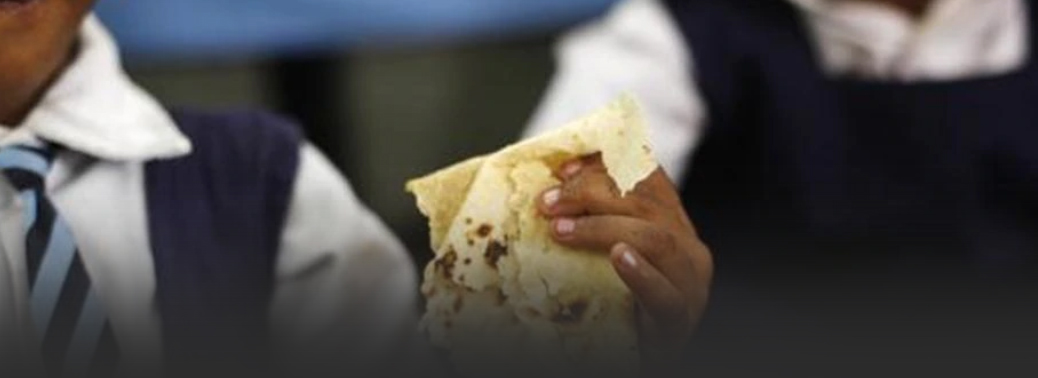
Why in News?
- Department of Food & Public Distribution has approved the “Centrally Sponsored Pilot Scheme on Fortification of Rice & its distribution through Public Distribution System”. Financial Assistance up to 90% in case of North-Eastern, Hilly and Island States and up to 75% in case of rest of the States has been extended.
Fortified Ration
- Under the scheme, milled rice will be mixed with a premix containing vitamins and minerals post-harvest.
- As per the Food Fortification Resource Centre (FFRC) of the Food Safety and Standards Authority of India (FSSAI) under Ministry of Health and Family Welfare, iron, Vitamin B12, and Folic acid are the mandatory nutrients for the fortification of rice, the kernels of which are added into the regular rice kernels in 1 to 100 ratio.
- Iron and folic acid are the two main ingredients that will be added to the food grains.
- Fortification norms will be in accordance with the specifications laid down by the Food Safety and Standards Authority of India (FSSAI).
- Further, Government of India has also advised all States/UTs especially those States/UTs that are distributing wheat flour through Public Distribution System (PDS), to distribute fortified wheat flour through PDS Fortified Edible oils is also supplied to certain states through PDS
THE SPECIAL ECONOMIC ZONES (AMENDMENT) BILL, 2019
28, Jun 2019
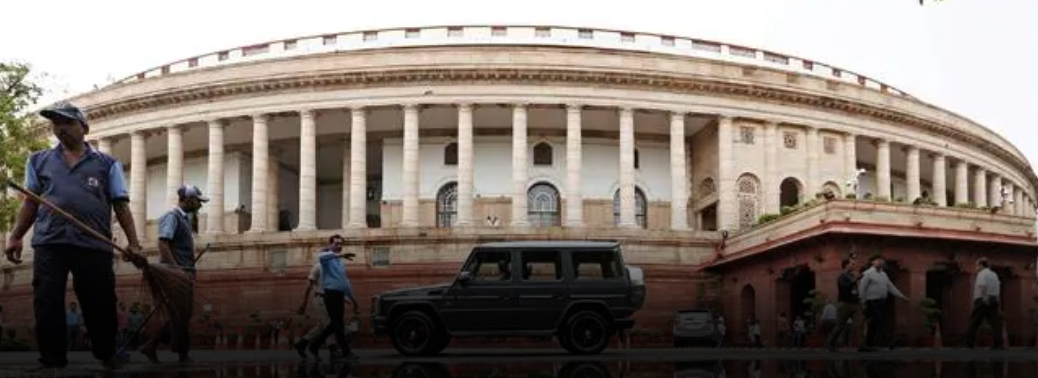
- It amends the Special Economic Zones Act, 2005 and replaces an Ordinance that was promulgated on March 2, 2019. The Act provides for the establishment, development and management of Special Economic Zones for the promotion of exports.
About:
- This policy intended to make SEZs an engine for economic growth supported by quality infrastructure complemented by an attractive fiscal package, both at the Centre and the State level, with the Minimum Possible Regulations.
- It is expected that this will trigger a large flow of foreign and domestic investment in SEZs, in infrastructure and productive capacity, leading to generation of additional economic activity and creation of employment opportunities.
The Main Objectives of the SEZ Act are:
- Generation of additional economic activity
- Promotion of exports of goods and services
- Promotion of investment from domestic and foreign sources
- Creation of employment opportunities
- Development of infrastructure facilities
The SEZ Rules provide for:
- Simplified procedures for development, operation, and maintenance of the Special Economic Zones and for setting up units and conducting business in SEZs;
- Single window clearance for setting up of an SEZ;
- Single window clearance for setting up a unit in a Special Economic Zone;
- Single Window clearance on matters relating to Central as well as State Governments;
- Simplified compliance procedures and documentation with an emphasis on self-certification.
FOOD AND NUTRITION SECURITY ANALYSIS REPORT
26, Jun 2019
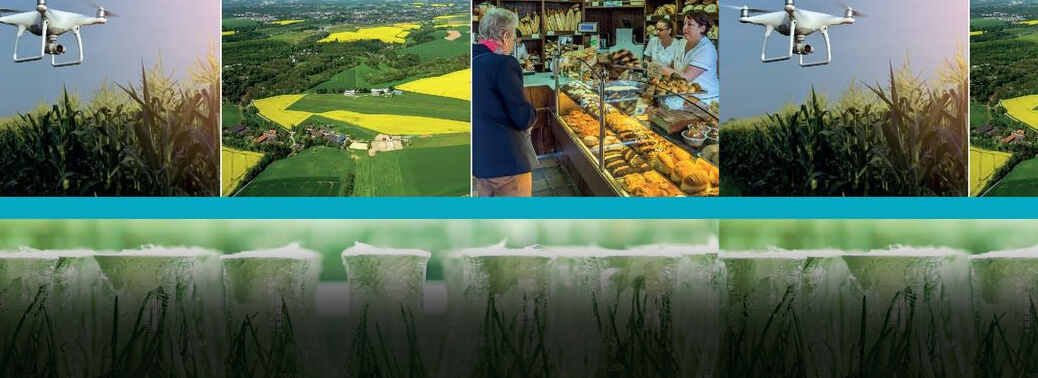
- Prepared by Ministry of Statistics and Programme Implementation & The UN World Food Programme.
- 31.4% of Indian children will be stunted by 2022
- Food grain yields have risen 33% over the last two decades, but are still only half of 2030 target yields
- The Indian farmer is producing more food grains than ever before, making the country Self Sufficient. The Consumer’s access to rice, wheat and other cereals has not increased at the same rate, due to population growth, inequality, food wastage and losses, and exports
- Average Per Capita Consumption of energy among the poorest 30% of the population is 1811 kilo calories, much lower than the norm of 2155 kilo calories per day.
- There are high rates of stunting among children in the poorest wealth quintile (51.4%), Scheduled Tribes (43.6%) and Scheduled Castes (42.5%), and children born to mothers with no education (51%).
HEALTHY STATES, PROGRESSIVE INDIA’-NITI Aayog
26, Jun 2019

- Is a Report on Health published by NITI Aayog
- Report on Rank of States and UTs’ has ranked states in three categories — larger States, smaller States and UTs “to ensure comparison among similar entities”.
- The report ranks states and Union territories innovatively on their year-on-year incremental change in health outcomes, as well as, their overall performance.
- It ranks states and union territories on their year on year incremental change in health outcomes, as well as, their overall performance with respect to each other.
- Kerala, Andhra Pradesh & Maharashtra ranked on top in terms of overall performance. Haryana, Rajasthan and Jharkhand ranked top three States in terms of annual incremental performance.
DRAFT NATIONAL EDUCATION POLICY 2019
25, Jun 2019

Context:
- The Committee for Draft National Education Policy (Chair: Dr. K. Kasturirangan) Report discussed in Parliament.
- The report proposes an education policy, which seeks to address the challenges of:
- Access
- Equity
- Quality
- Affordability, and
- Accountability faced by the current education
School Education:
Early Childhood Care and Education:
- Curriculum that doesn’t meet the developmental needs of children,
- Lack of qualified and trained teachers, and
- Substandard pedagogy
The Right to Education Act, 2009 (RTE Act):
- Currently, the RTE Act provides for free and compulsory education to all children from the age of six to 14 years. The draft Policy recommends extending the ambit of the RTE Act to include early childhood education and secondary school education.
- This would extend the coverage of the Act to all children between the ages of three to 18 years.
School Exam Reforms:
- The Committee noted that the current board examinations:
- Force students to concentrate only on a few subjects
- Do not test learning in a formative manner, and
- Cause stress among
- To track students’ progress throughout their school experience, the draft Policy proposes State Census Examinations in classes three, five and eight.
- it recommends restructuring the board examinations to test only core concepts, skills and higher order capacities.
Teacher Management:
- The Committee noted that there has been a steep rise in teacher shortage, lack of professionally qualified teachers, and deployment of teachers for non-educational purposes.
- The draft Policy recommends that teachers should be deployed with a particular school complex for at least five to seven years.
- Teachers will not be allowed to participate in any non-teaching activities (such as cooking mid-day meals or participating in vaccination campaigns) during school hours that could affect their teaching capacities.
- The Ministry of Human Resources and Development must be renamed as the Ministry of Education in order to bring focus back on education.
Financing Education:
- The Draft Policy reaffirmed the commitment of spending 6% of GDP as Public Investment in Education.
NATIONAL ACCREDITATION BOARD FOR CERTIFICATION BODIES (NABCB)
22, Jun 2019

Why in News?
- The National Accreditation Board for Certification Bodies (NABCB), India’s national accreditation body, secured international equivalence for its accreditation programme for personnel certification bodies in the annual meetings of the Asia Pacific Accreditation Cooperation in Singapore today.
Highlights:
- NABCB has currently accredited one certification body for Personnel Certification and has 4 applicants.
- This programme will help professionals to get certified based on their competence in any required field.
- NABCB is already supporting Ministry of AYUSH and has accredited a certification body for certification for Yoga professionals. This would promote Yoga certification scheme internationally.
Significance:
- With the above recognition, NABCB hopes to facilitate export of Indian services and skills into the world market by attesting that persons are certified following international standards by the certifying bodies.
- Personnel Certification would support many professionals in India, especially those who do not have formal education or certificate programme.
- Any person carrying ISO/IEC 17024 certificate with NABCB logo will be recognized internationally.
- It can also be used by regulators for establishing confidence in certified personnel for different activities.
- This signifies that the accreditation of personnel certification bodies by NABCB is now accepted as equivalent at international level
NABCB:
- NABCB, a constituent Board of the Quality Council of India provides accreditation to Certification and Inspection Bodies based on assessment of their competence as per the Board’s criteria and in accordance with International Standards and Guidelines.
- NABCB is internationally recognized and represents the interests of the Indian industry at international forums through membership and active participation with the objective of becoming a signatory to international Multilateral / Mutual Recognition Arrangements (MLA / MRA).
ISRO OPENS ITS LABORATORIES FOR INDIAN SCHOOL
20, Jun 2019
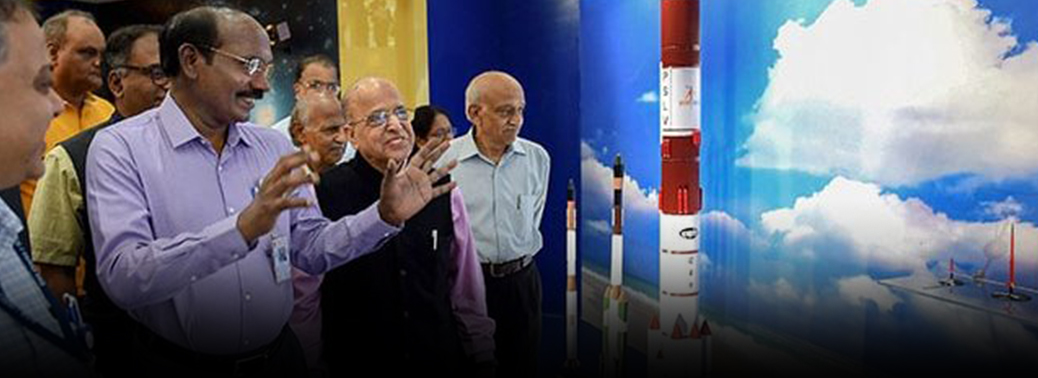
Context:
- Indian Space Research Organisation (ISRO) is an agency which has the legacy of India’s ancient knowledge and modern technology. She opened its laboratories for Indian school students to undergo two-week training from this year. First Batch 108 students drawn from all states.Union Territories completed their exposure in its laboratories in Bengaluru, Sriharikota, Thiruvananthapuram. The training module devised as part of its new Young Scientists Programme.
Background:
- Yuva Vigyanik Karyakram, YUVIKA.
- ISRO’s YUVIKA is modeled around the Indian government’s vision ‘Jai Vigyan, Jai Anusandhan’.The initiative is primarily aimed at imparting basic knowledge on Space Technology, Space Science and Space Applications to children to kindle their interest in the emerging areas of space activities. The two-week-long program would include invited talks, experience sharing by eminent scientists, facility and lab visits, exclusive sessions for discussions with experts, practical and feedback sessions.
NEW POLICY TO PROTECT INDIAN LANGUAGES
20, Jun 2019
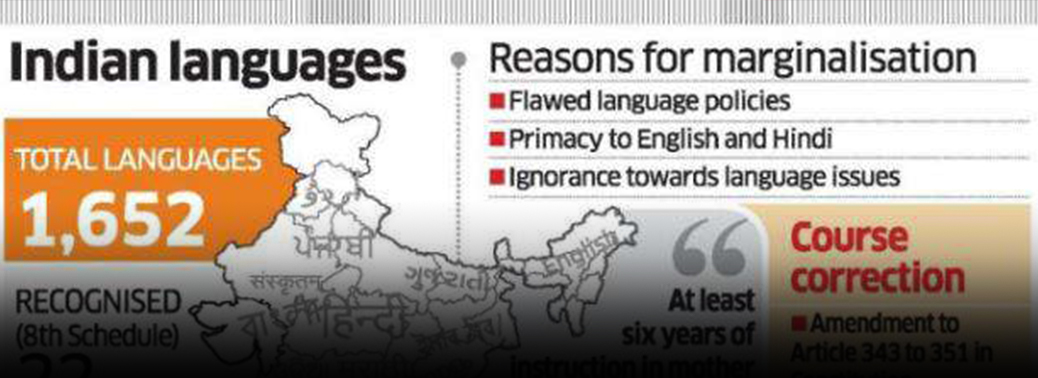
Context:
- Rashtriya Siksha Ayog has been proposed to be set up under the Chairmanship of Prime Minister.
- The member of draft New Education Policy Prof.M K Sridhar said that the new policy protects the Indian languages which are on the verge of extinction.
- The new policy will put education on the pedestal of evaluation and performance and lay emphasis on teachers’ education.
Background:
- The United Nations declared the International Mother Language Day (February 21) the founders of the Indian Constitution gave top priority to teaching in mother tongues’, enabling the child to develop its full potential.
- This concept is in total agreement with the 2017 theme of United Nations World Mother Language Day “to develop the potential of multilingual education to be acknowledged in education, administrative systems, cultural expression and cyber space”.
- In 1956 reorganisation of states in India was carried out with linguistic boundaries that had its own script. Sardar Vallabhbhai Patel, the then home minister played key role in formation and amalgamation of states based on linguistic attributes.
BIMAL JALAN COMMITTEE ON THE QUANTUM OF RESERVES
17, Jun 2019
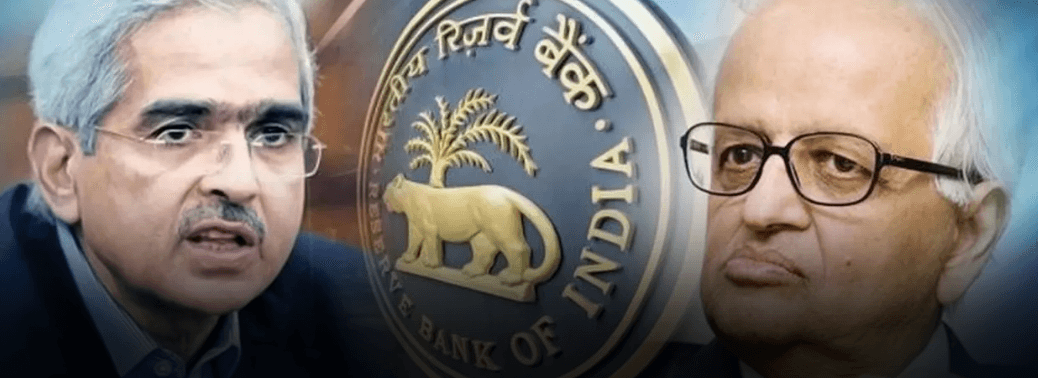
Constituted on 26 December 2018, to decide upon the appropriate level of reserves the regulator should hold. This committee has been appointed in the backdrop of a deadlock between the RBI and the Government. The government feels that RBI’s reserves exceeded its limits and that these could be used for productive purposes such as recapitalizing public sector banks.
What are RBI Reserves?
RBI holds reserves in currency and gold inorder to:
- Absorb potential losses that it may incur while holding foreign
- Shield the economy from monetary and financial
- Carry monetary burden during unstable
- Perform price and exchange
- Perform its functions independently of the government
- RBI holds 25.6 % of its assets as reserves while the global median is 16%. Under Section 47 of RBI Act, RBI transfers the excess funds to the Government after accounting for contingency reserves.
ESSENTIAL SERVICES MAINTENANCE ACT (ESMA)
16, Jun 2019
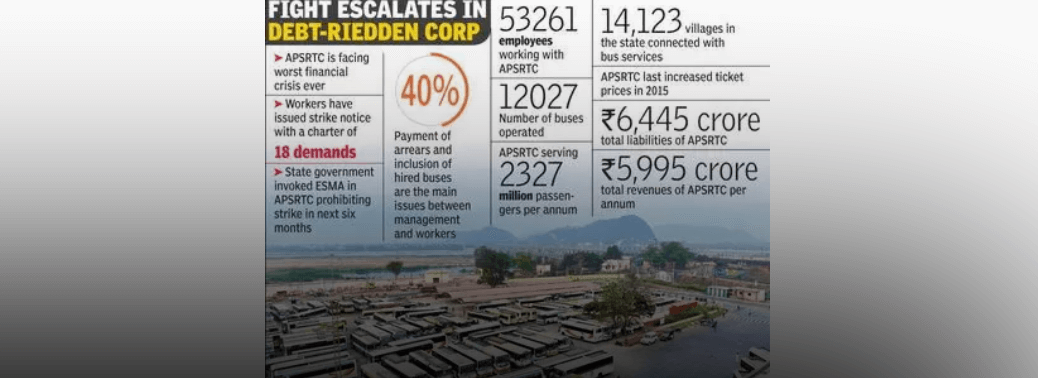
Context:
- Doctors Strike in West Bengal regarding assault on doctors by public. Esma is Central law.
- ESMA enables the Government to ban strikes and demand conciliation or arbitration in certain “essential” industries.
- Act also allows states to choose the essential services on which to enforce Esma.
- Its implementation is entirely on discretion of State Government.
Provisions of Act:
- Esma gives police the right to arrest, without a warrant, anybody violating the Act’s provisions. “Any person who commences a strike…or otherwise takes part in… any such strike shall be punishable with imprisonment for a term which may extend to six months, or with fine which may extend to two hundred rupees, or with both,” the Act reads.
- “Any person who instigates…a strike which is illegal under this Act shall be punishable with imprisonment for a term which may extend to one year, or with fine which may extend to one thousand rupees, or with both.”
Mains Perspective:
- Provisions that need to be brought to assure that there is no disruption in vital services like Health. Reasons for recent attacks on doctors by public across the country and what are solution to avoid the same?
Hints;
- Poor Doctor patient ratio,
- Infrastructural bottle necks of health sector. Accessibility of quality health care for poor.
- Right to strike for people in essential service such as health sector?
CHALLENGES IN IMPLEMENTATION OF AGENDA 2022
12, Jun 2019
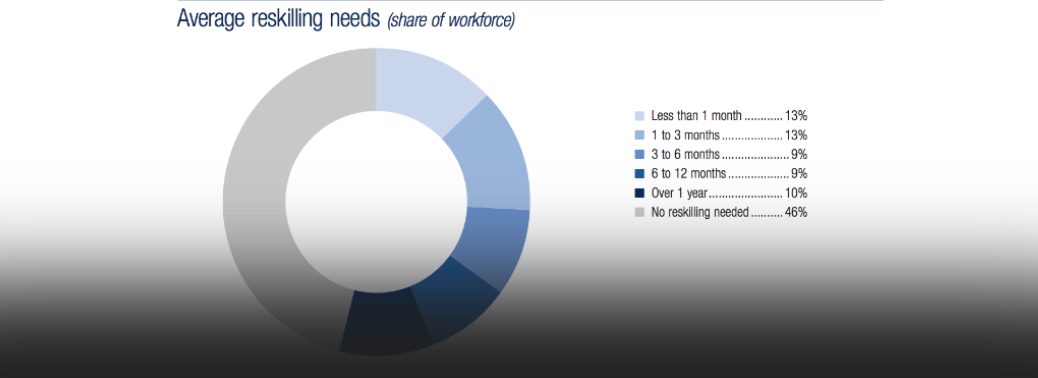
Why in News:
- Article highlight the challenges in implementation of NITI Aayog agenda 2022 and suggests some measures.
Background:/Important Analysis Agriculture:
- The document suggests converting farmers into “agripreneurs” by expanding the e- National Agriculture Markets and replacing the existing Agricultural Produce Marketing Committee Act.
- A model Bill proposed in 2017 has not made much headway possibly because it extinguishes middlemen and commission agents.
The state bureaucracy’s uninspiring performance in replacing water-intensive crops, containing wasteful irrigation practices and the alarming depletion of groundwater does not bode well for effecting radical change.
Sanitation:
- Agenda 2022 gives primacy to gargantuan problems such as landfills, plastic waste and sustainable revenue generation from municipal waste.It seeks to subsume these neglected areas under the Swachh Bharat Mission.
- But unless the municipal commissioners compel waste segregation and deter non- compliance with fines and penalties available under the solid waste, plastic and water pollution rules, cleanliness cannot come.
- Municipal commissioners and district magistrates rarely act. Unless municipal offences are fined heavily on-the-spot like traffic violations, the goals cannot be realised.
Power:
- Agenda 2022 seeks to rationalise power tariff to promote the use of renewable energy.
- But without privatising the DISCOMs, good intentions will not change the ethos underlying distribution. To reap the benefits of renewable energy fully, only privatising the DISCOMs can rationalise power purchase and tariff.
- No chief minister is however willing to privatise power distribution and bureaucracy by itself cannot usher in privatisation. Delhi remains the solitary exception.
Employment:
- The codification of labour laws and expanding apprenticeships will boost employment but unless industry has the flexibility to make a transition from micro-to-small to medium-to- large manufacturing, apprentices will have few places to learn on the job.
- The flexibility to reduce the workforce within the law must be ensured and the backlash met firmly. This will present the biggest challenge for bureaucracy.
Procurement:
- Modernising public procurement systems to international competitive bidding (ICB) standards is another important reform.
- Unless there is willingness to outsource this to professional bodies, ICB will stay on paper. The move will meet with stiff resistance from state politicians,contractors and lobbies. No bureaucracy can pursue this proposal without solid political backing.
Governance:
- India’s first deputy Prime Minister, Vallabhai Patel, wanted IAS officers to be men of integrity and capable of “brashness” possibly meaning bold, audacious and self-assertive. But today brashness is unacceptable to bosses within the political executive and the bureaucracy.
- IAS remains indispensable primarily because the officers provide an interface with the political executive and handle complex federal issues, Centre-State relations and municipal and panchayat governance functions.
- They coordinate and interact meaningfully through a nationwide network which remains matchless. No chief minister can run his government without them.
Suggestions:
- First, subdivide the 41 identified goals into those which require the approval of Parliament or state legislatures. Set up empowered councils headed by a central minister with state ministers as members to reach consensus within six months on the lines of the VAT and GST councils. The central and state bureaucracies function best under this edifice.
- Second, in areas which fall in the state domain, create one working model of each of the following in a single State, city or district to emulate.
- Establishing a Unified Metropolitan Transport Authority in a million-plus cities.
- Establishing public health cadres, introducing user charges for garbage collection and toilet maintenance.
- Using treated wastewater for non-potable purposes.
- Third If Agenda 2022 is to become a reality both at the Centre and in the states, there should be sizeable induction of professionals but only by following rigorous and transparent processes for selection.
ALL STATES, UNION TERRITORIES CAN NOW SET UP FOREIGNERS TRIBUNALS
10, Jun 2019

Why in News:
- Ministry of Home Affairs (MHA) has laid out specific guidelines to detect, detain and deport foreign nationals staying illegally across the country.
Background: / More in News:
- The MHA has amended the Foreigners (Tribunals) Order, 1964, and has empowered district magistrates in all States and Union Territories to set up tribunals to decide whether a person staying illegally in India is a foreigner or not.
- Earlier, the powers to constitute tribunals were vested only with the Centre. The 1964 order on Constitution of Tribunals said:
- “The Central Government may by order, refer the question as to whether a person is not a foreigner within the meaning of the Foreigners Act, 1946 (31 of 1946) to a Tribunal to be constituted for the purpose, for its opinion.”
- The tribunals are quasi-judicial bodies, unique to Assam, to determine if a person staying
- illegally is a “foreigner” or not.
- In other parts, once a ‘foreigner’ has been apprehended by the police for staying illegally, he or she is produced before a local court under the Passport Act, 1920, or the Foreigners Act, 1946, with the punishment ranging three months to eight years in jail.
- Once the accused have served the sentence, the court orders their deportation, and they are moved to detention centres till the country of origin accepts them.
NRC and Foreigners Tribunals:
- According to the Assam Accord, individuals who entered Assam after March 24, 1971, are illegal immigrants.
- There are two parallel processes to establish citizenship:
- National Register of Citizens (NRC), which is under preparation, and Foreigners Tribunals operating under the Foreigners Act,
- As per directions of the Supreme Court, the Registrar General of India (RGI) published the final draft list of NRC on July 30 last year to segregate Indian citizens living in Assam from those who had illegally entered the State from Bangladesh after March 24, 1971.
- Nearly 40 lakh people were excluded from Assam’s final draft published last year. As many as 36 lakh of those excluded have filed claims against the exclusion, while four lakh residents haven’t applied.
- The final list of the National Register of Citizens (NRC), which is being updated in Assam, will be published by July 31, 2019.
- The tribunals will be required after the publication of the final NRC
- The amended Foreigners (Tribunal) Order, 2019 empowers individuals to approach the Tribunals, if a person doesn’t find his or her name in the final list, they could move the Tribunal.
- Earlier only the State administration could move the Tribunal against a suspect, but with the final NRC about to be published and to give adequate opportunity to those not included, this has been done.
- The amended order also allows District Magistrates to refer individuals who haven’t filed claims against their exclusion from NRC to the Tribunals to decide if they are foreigners or not. MHA sanctioned around 1,000 Tribunals to be set up in Assam in the wake of the publication of the final NRC by July 31.
Recently, The Supreme Court of India has held that a Foreigner Tribunal’s order declaring
a person as an illegal foreigner will be binding and will prevail over government decision to include or exclude a name from National Register of Citizens (NRC) in Assam.
DRAFT NATIONAL EDUCATION POLICY PROPOSES FORMAL EDUCATION FROM AGE OF THREE
09, Jun 2019

Why in News:
- Three years of preschool and four-year undergraduate honours courses are among features of a draft National Education Policy that the Narendra Modi government received on the first day of its second innings.
Background: / What is the new education policy for?
- The extant National Policy on Education, 1986 modified in 1992 required changes to meet the contemporary and futuristic needs of India’s large youth population.
- A New Education Policy is designed to meet the changing dynamics of the requirements in terms of quality education, innovation and research.
- The policy aims at making India a knowledge superpower by equipping students with the necessary skills and knowledge.
- It also focusses on eliminating the shortage of manpower in science, technology, academics and industry.
- The Draft Policy is built on the foundational pillars of Access, Equity, Quality, Affordability and Accountability.
What are the Key Changes Proposed?
- Ministry – The committee has proposed to rename the Ministry of Human Resource Development as Ministry of Education (MoE).
- Curriculum – In school education, a major reconfiguration of curricular and pedagogical structure was proposed.
- The policy calls for an Early Childhood Care and Education (ECCE) as an integral part of school education.
- A 5+3+3+4 curricular and pedagogical structure based on cognitive and socio-emotional developmental stages of children was proposed.
- It consists of –
- Foundational Stage (age 3-8 yrs): 3 years of pre-primary plus Grades 1-2
- Preparatory Stage (8-11 years): Grades 3-5
- Middle Stage (11-14 years): Grades 6-8
- Secondary Stage (14-18 years): Grades 9-12
- The policy also seeks to reduce content load in school education curriculum.
- There will be no hard separation of learning areas in terms of curricular, co-curricular or extra- curricular areas.
- All subjects, including arts, music, crafts, sports, yoga, community service, etc will be part of the curricular.
- Thus, schools will be re-organized into school complexes.
- The policy promotes active pedagogy to focus on the development of core capacities and life skills, including 21st century skills.
- RTE Act – The committee recommends Extension of Right to Education Act 2009 to cover children of ages 3 to 18 (currently, 6-14).
- Teacher education – The committee proposes for massive transformation in teacher education.
- It calls for shutting down sub-standard teacher education institutions.
- It proposes moving all teacher preparation/education programmes into large multidisciplinary universities/colleges.
The 4-year integrated stage-specific B.Ed. programme will eventually be the minimum degree qualification for teachers. - Higher education – A restructuring of higher education institutions with three types of higher education institutions was proposed –
- Type 1: Focused on world-class research and high-quality teaching
- Type 2: Focused on high quality teaching across disciplines with significant contribution to research
- Type 3: High quality teaching focused on undergraduate education
- This will be driven by two Missions -Mission Nalanda & Mission Takshashila.
- There will be re-structuring of Undergraduate programs such as BSc, BA, BCom, BVoc of 3- or 4-years duration and having multiple exit and entry options.
- Institution – A new apex body Rashtriya Shiksha Ayog is proposed.
- This is to enable a holistic and integrated implementation of all educational initiatives and programmatic interventions.
- The body will also coordinate efforts between the Centre and states.
- The National Research Foundation, an apex body, is proposed for creating a strong research culture.
- It will help build research capacity across higher education.
- The four functions of Standard Setting, Funding, Accreditation and Regulation will be separated and conducted by independent bodies.
- National Higher Education Regulatory Authority will be the only regulator for all higher education including professional education.
- The policy proposes to create an accreditation eco-system led by a revamped NAAC (National Assessment and Accreditation Council).
- Professional Standard Setting Bodies for each area of professional education was proposed.
- UGC is to be transformed to Higher Education Grants Commission (HEGC).
- The private and public institutions will be treated on par, and education will remain a ‘not for profit’ activity.
- Besides the above, the committee also recommended several new policy initiatives for – promoting internationalization of higher education
strengthening quality open and distance learning technology integration at all levels of education facilitating adult and lifelong learning
enhancing participation of under-represented groups - eliminating gender, social category and regional gaps in education outcomes
- Language – Promotion of Indian and classical languages and setting up three new National Institutes for Pali, Persian and Prakrit were proposed.
- Indian Institute of Translation and Interpretation (IITI) has been recommended.
- The policy called for the proper implementation of the three-language formula (dating back to 1968) in schools across the country.
- Accordingly, students in Hindi-speaking states should learn a modern Indian language, apart from Hindi and English. In non-Hindi-speaking states, students will have to learn Hindi along with the regional language and English.
- The controversial three language provision was, however, dropped after protests against it in many states. The draft was revised by the committee making the changes in this regard.
TAMIL NADU HEALTH SYSTEM REFORM PROGRAM
09, Jun 2019

Why in News:
- The Government of India, Government of Tamil Nadu (GoTN) and the World Bank have signed a $287 Million Loan Agreement for the Tamil Nadu Health System Reform Program.
More in News:
- Tamil Nadu ranks third among all Indian States in the NITI Aayog Health Index which is reflected in vastly improved health outcomes. The State’s maternal mortality rate has declined from 90 deaths per 100,000 live births in 2005 to 62 deaths in 2015-16.
- Infant mortality has declined from 30 deaths per 1000 live births to 20 in the same period.
- A key contribution to these achievements has been the establishment of emergency Obstetric and Neonatal Care Centres and the 108-ambulance service with previous support from the World Bank.
- These have ensured that no mother has to travel more than 30 minutes to access emergency obstetric and neonatal care 24 hours a day, seven days a week.
Background:
- Despite these impressive gains, certain challenges in health care remain, including quality of care and variations in reproductive and child health among districts. Tamil Nadu is also dealing with a growing burden of NCDs as they account for nearly 69 percent of deaths in the State.
- The Tamil Nadu Health System Reform Program will support the State Government to:
- Develop clinical protocols and guidelines
- Achieve national accreditation for primary, secondary, and tertiary-level health facilities in the public sector
- Strengthen physicians, nurses and paramedics through continuous medical education
- Strengthen the feedback loop between citizens and the state by making quality and other data accessible to the public
- The Program supports interventions to strengthen institutional and state capacity to achieve results.
- Good practices and innovations from Tamil Nadu are being scaled-up while others from around the world are being introduced through the program to improve management of the State’s Public Health Sector, increase transparency, and strengthen accountability.
- The Program will promote population-based screening, treatment and follow-up for NCDs, and improve monitoring and evaluation.
- Patients will be equipped with knowledge and skills to self-manage their conditions.
- Lab services and health provider capacity will also be strengthened to address mental health.
- To tackle road injuries, the program will improve in-hospital care, strengthen protocols, strengthen the 24×7 trauma care services and establish a trauma registry.
- Another key aim of this Program is to reduce the equity gaps in reproductive and child health.
- Special focus will be given to nine priority districts, which constitute the bottom quintile of the RCH indicators in the State and have a relatively large proportion of tribal populations.
Way Ahead:
- This Program focuses on results instead of inputs through a Program-for-Results (PforR)lending instrument. This will provide a much greater focus on outputs and outcomes through better alignment of expenditures and incentives with results. The use of the PforR instrument is a first for the health sector and will offer lessons for other States.
SOUTH ASIA IS TOP PRIORITY: JAISHANKAR
08, Jun 2019

Why in News:
- Building connectivity in the South Asian region and coordinating economic issues will be top priorities of the Ministry of External Affairs (MEA), said S. Jaishankar.
Background: / More in News
- Jaishankar is on a two-day tour to Thimphu on June 7-8 to meet with the King of Bhutan, Prime Minister Lotay Tshering, and Foreign Minister Tandi Dorji
- Speaking at the event organised by the Confederation of Indian Industry (CII), Ananta Centre and Smadja and Smadja, S Jaishankar highlighted three trends being witnessed in the world which include
- Globalisation under stress especially in terms of market access and mobility of labour, Growth of nationalism and
- Global rebalancing.
On South Asia:
BIMSTEC
- Mr Jaishankar indicated that the government had chosen to invite leaders of BIMSTEC (Bay of Bengal Initiative for Multi-Sectoral Technical and Economic Cooperation) rather than leaders of SAARC (South Asian Association for Regional Cooperation), because there was a higher likelihood of making progress with BIMSTEC, as it doesn’t include Pakistan.
Regional Connectivity:
- He highlighted the importance of regional connectivity. South Asia is among the least inter-connected regions in the world, but efforts are being made to make the region more integrated.
- Mr Jaishankar emphasised the need for more regional exchanges, saying India needed to “incentivise cooperation in the neighbourhood” by being “generous” to smaller neighbours.
On Economy:
- Jaishankar also spoke on the need for more coordination between the MEA and economic ministries.
- The comments reflect the economic challenges the government faces immediately, given the United States decision to withdraw India’s ‘GSP’ preferential trade status, and the emerging costs of replacing Iranian oil after sanctions.
- He also said that a large part of India’s economy has been externalised and there is a need for India’s foreign policy and the diplomatic machinery to help Indian companies gain better access to overseas markets.
HOME MINISTRY WARNS NGOS
08, Jun 2019
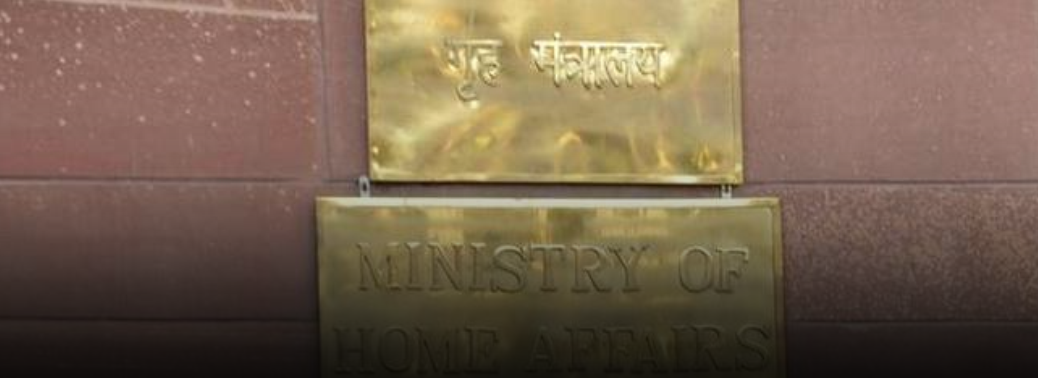
Why in News:
- The Home Ministry has warned of taking penal action against NGOs which change office bearers without taking its approval.
Background: / More in News
- In a notification, the home ministry said incidents have come to light that some NGOs, having registered under the Foreign Contribution Regulation Act (FCRA), have changed their office bearers without its approval and without updating this data on a real-time basis through the online application meant for a change of these details.
- All NGOs and associations registered under the Foreign Contribution Regulation Act (FCRA), 2010, which makes them eligible to receive foreign funds and donations, have to submit an online application for addition, deletion and change of details about office- bearers and key functionaries within one month.
- The ministry told the NGOs to submit applications for addition/ deletion/change of details about office bearers/ key functionaries by July 7, failing which penal action will be initiated against them. Since 2014, the central government has started scrutiny of the activities of NGOs leading to the cancellation of their FCRA registration, which allows them to get foreign funding.
- There was a total of 23,176 FCRA registered NGOs in 2016-17, which has now come down to around 12,000.
Regulation of NGO under FCRA:
- The Home Ministry monitors foreign funds donated to NGOs and organisations through the FCRA. The FCRA was brought into force to regulate the flow of foreign funds to voluntary organisations with the objective of preventing any possible diversion of such funds to anti-national activities.
- However, there are many NGOs which are registered under FEMA and continue to disburse foreign funds to various associations. NGOs under FEMA is regulated by the Finance Ministry, there are many occasions when the Home Ministry failed to monitor the flow of funds effectively.
- International donors such as the Ford Foundation, the U.K.’s Department for International Development and Canada’s International Development Research Centre are registered under FEMA but not the Foreign Contribution Regulation Act (FCRA), 2010.
- Funds flowing to NGOs can be used for an anti-national activity such as economic security. Hence regulation of NGO receiving fund is necessary.
- NGO is used by vested interest to halt the developmental project in India as reported by the Intelligence Bureau. This was witnessed in kudankulam protest.
- Earlier, the Home Ministry wants the Finance Ministry to surrender its to monitor non- governmental organisations (NGOs) under the Foreign Exchange Management Act (FEMA) for effective and better monitoring.
DRAFT NATIONAL EDUCATION POLICY MOOTS ALL-INDIA ENTRANCE TESTS FOR UG COURSES
08, Jun 2019
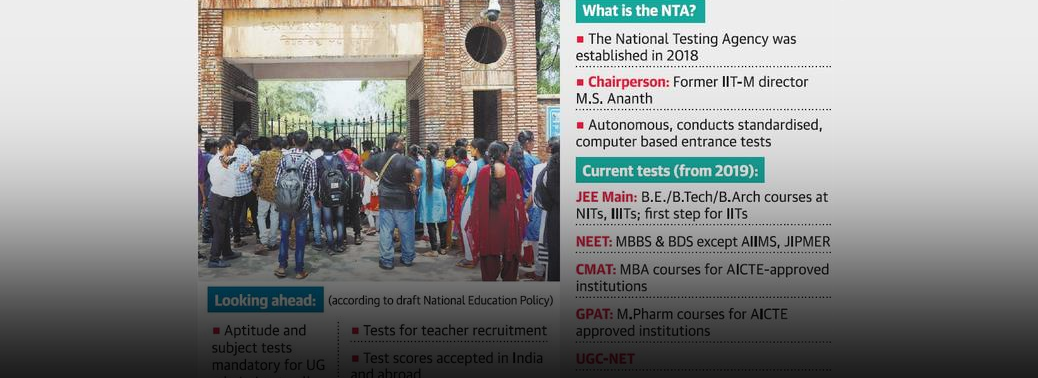
Why in News:
- Admission to undergraduate courses in all government-funded universities and colleges will soon be through all-India entrance tests, if the draft National Education Policy is approved.
Background: / More in News
- Private institutes will also be strongly encouraged to make use of the common admission tests, which will be available from 2020. Both aptitude and subject knowledge-based tests will be offered.
- According to draft policy,
- This seems to indicate that the NTA assessment will replace Class 12 marks as the criteria for admission to these government funded institutions.
- The NTA tests will aim to assess essential concepts, knowledge, and higher order skills from the national common curriculum as per the NCF in each subject, for the purpose of aiding colleges and universities in their admissions decisions.
- This will help to eliminate the intensity, stressfulness, and wasted time of the Grade 12 examination season faced by students every year as well as by so many higher educational institutions and employers
- The system seems to have some similarities to the SAT, a standardised aptitude test widely used for admissions to colleges and universities in the United States. The SAT, however, is used as a criterion alongside school grades.
- In India, the common entrance test has largely been the domain of aspirants to professional or post-graduate courses, but that is already changing.
- The new National Testing Agency (NTA) has already conducted premier professional entrance tests — JEE, NEET, and CMAT — this year.
- NTA will also conduct admission tests for applicants to more than 170 Delhi University (DU) courses, including 12 undergraduate programmes.
National Testing Agency:
- National Testing Agency (NTA) is an Indian government agency that has been approved by the Union Council of Ministers and established in November 2017 to conduct entrance examinations for higher educational institutions
- It also helps individual colleges and universities in the field of testing and to provide training and advisory services to the institutions in India. It provides quality testing services to the academic institutions in India.
- It undertakes the reforms and training of school boards as well as other bodies where the testing standards should be comparable with the entrance examinations.
NITI AAYOG RECONSTITUTED
07, Jun 2019
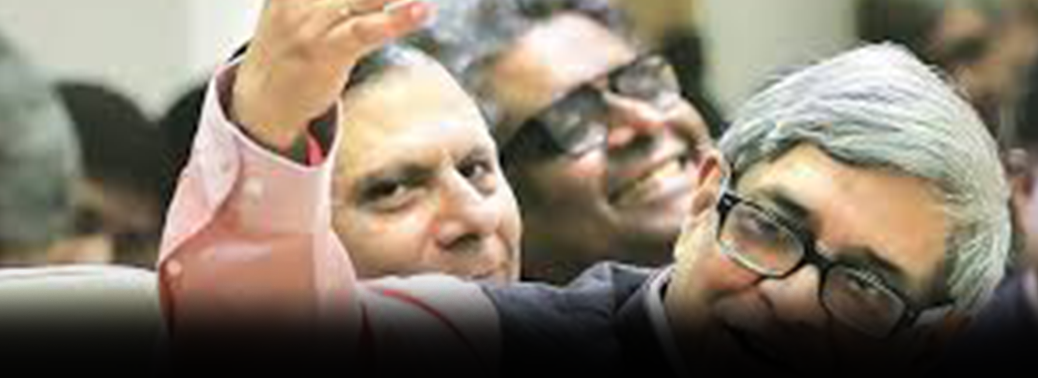
Why in News:
- Prime Minister Narendra Modi Thursday approved the reconstitution of the NITI Aayog.
Background: / NITI AAYOG:
- Planning Commission was replaced by a new institution – NITI AAYYOG on January 1,
2015 with emphasis on ‘Bottom –Up’ approach to envisage the vision - of Maximum Governance, Minimum Government, echoing the spirit of ‘Cooperative Federalism’.
Administrative Skeltal:
- Chairperson: Prime Minister
- Vice-Chairperson: To be appointed by Prime-Minister
- Governing Council: Chief Ministers of all states and Lt. Governors of Union Territories.
- Regional Council: To address specific regional issues, Comprising Chief Ministers and Lt. Governors Chaired by Prime Minister or his nominee.
- Adhoc Membership: 2 members in ex-officio capacity from leading Research institutions on rotational basis.
- Ex-Officio membership: Maximum four from Union council of ministers to be nominated by Prime minister. Chief Executive Officer: Appointed by Prime-minister for a fixed tenure, in rank of Secretary to Government of India.
- Special Invitees: Experts, Specialists with domain knowledge nominated by Prime- minister.
NITI Aayog Hubs:
- Team India Hub acts as interface between States and Centre.
- Knowledge and Innovation Hub builds the think-tank acumen of NITI Aayog.
- The Aayog planned to come out with three documents — 3-year action agenda, 7-year medium-term strategy paper and 15-year vision document.
Importance:
- The 65-year-old Planning Commission had become a redundant organization. It was relevant in a command economy structure, but not any longer.
- India is a diversified country and its states are in various phases of economic development along with their own strengths and weaknesses.
- In this context, a ‘one size fits all’ approach to economic planning is obsolete. It cannot make India competitive in today’s global economy.
Objectives:
- To foster cooperative federalism through structured support initiatives and mechanisms with the States on a continuous basis, recognizing that strong States make a strong nation. To develop mechanisms to formulate credible plans at the village level and aggregate these progressively at higher levels of government.
- To ensure, on areas that are specifically referred to it, that the interests of national security are incorporated in economic strategy and policy.
To pay special attention to the sections of our society that may be at risk of not benefitting adequately from economic progress. To provide advice and encourage partnerships between key stakeholders and national and international like-minded Think Tanks, as well as educational and policy research institutions. - To create a knowledge, innovation and entrepreneurial support system through a collaborative community of national and international experts, practitioners and other partners.
- To offer a platform for resolution of inter-sectoral and inter-departmental issues in order to accelerate the implementation of the development agenda.
- To maintain a state-of-the-art Resource Centre, be a repository of research on good governance and best practices in sustainable and equitable development as well as help their dissemination to stake-holders.
Challenges:
- To prove its mettle in policy formulation, the NITI Aayog needs to prioritize from the long list of 13 objectives with clear understanding of the difference in policy, planning and strategy.
- To build the trust, faith and confidence more than the planning commission, NITI Aayog needs freedom of various kinds with budgetary provisions not in terms of plan and non- plan expenditures but revenue and capital expenditure as the higher rate of increase in capital expenditure can remove infrastructural deficits at all levels of operation in the economy.
CABINET COMMITTEES
07, Jun 2019

Why in News:
- To address the twin problems of sluggish economic growth and rising unemployment, the government has constituted two Cabinet committees to be chaired by Prime Minister.
Background: / Transaction of Business:
- The executive works under the Government of India Transaction of Business Rules, 1961.
- These Rules emerge out of Article 77(3) of the Constitution, which states:
- “The President shall make rules for the more convenient transaction of the business of the
Government of India, and for the allocation among Ministers of the said business.” - The Rules mandate the minister-in-charge of a department (ministry) to dispose of “all
business allotted to a department under” him or her. - However, “when the subject of a case concerns more than one department”, no decision can be taken “until all such departments have concurred, or, failing such concurrence, a decision thereon has been taken by or under the authority of the Cabinet”.
- The Prime Minister constitutes Standing Committees of the Cabinet and sets out the specific functions assigned to them. He can add or reduce the number of committees.
- Many a time, when an activity/agenda of the Government acquires prominence or requires special thrust, a Cabinet Committee may be set up for focused attention.
- Ad hoc committees of ministers, including Groups of Ministers, may be appointed by the Cabinet or by the Prime Minister for specific matters.
- A policy paralysis had hit the UPA-II government because it had passed on numerous issues to Groups of Ministers.
Key Committees:
- Appointments: This Committee decides on all important empanelment and shift of officers serving on Central deputation. This panel makes appointments to posts of
- The three service chiefs,
- Director General of Military Operations, Chiefs of all Air and Army Commands,
- Director General of Defence Intelligence Agency, Scientific Advisor to the Defence Minister,
- Director General of Armed Forces Medical Services, Director General of Ordnance Factories,
- Director General of Defence Estates, Controller General of Defence Accounts,
- Director of Institute for Defence Studies and Analyses, Solicitor-General, Governor of the Reserve Bank of India, Chairman and Members of the Railway Board,
- Chief Vigilance Officers in Public Sector Undertakings and
- Secretariat posts of and above the rank of Joint Secretary in the Central Government.
Accommodation:
- The Cabinet Committee on Accommodation determines the guidelines or rules with regard to the allotment of government accommodation. It also takes a call on the allotment of government accommodation to non-eligible persons and organisations as also the rent to be charged from them. It can consider the allotment of accommodation from the General Pool to Members of Parliament. It can consider proposals for shifting existing Central Government Offices to locations outside the capital.
Economic Affairs:
- The Cabinet Committee on Economic Affairs is supposed to review economic trends, problems and prospects “for evolving a consistent and integrated economic policy”, coordinate all activities requiring policy decisions at the highest level, deal with fixation of prices of agricultural produce and prices of essential commodities.
- It considers proposals for investment of more than Rs 1,000 crore, deal with industrial licensing policies and review rural development and the Public Distribution System.
Parliamentary Affairs:
- The Cabinet Committee on Parliamentary Affairs draws the schedule for Parliament sessions and monitors the progress of government business in Parliament.
- It scrutinises non-government business and decides which official Bills and resolutions are to be presented.
Political Affairs:
- The Cabinet Committee on Political Affairs addresses problems related to Centre-state relations. It also examines economic and political issues that require a wider perspective but have no internal or external security implications.
Security:
- The Cabinet Committee on Security deals with issues relating to law and order, internal security and policy matters concerning foreign affairs with internal or external security implications. It also goes into economic and political issues related to national security.
- It considers all cases involving capital defence expenditure more than Rs 1,000 crore.
- It considers issues related to the Department of Defence Production and the Department of Defence Research and Development, Services Capital Acquisition plans and schemes for procurement of security-related equipment.
The New Panels:
- The addition of the two committees is indicative of the new focus areas for the government. The goal of both is new jobs.
Investment:
- The Cabinet Committee on Investment will “identify key projects required to be implemented on a time-bound basis”, involving investments of Rs 1,000 crore or more, or any other critical projects, as may be specified by it, with regard to infrastructure and manufacturing.
- It will prescribe time limits for giving requisite approvals and clearances by the ministries concerned in identified sectors. It will also monitor the progress of such projects.
Employment:
- The Cabinet Committee on Employment and Skill Development is supposed to provide “direction to all policies, programmes, schemes and initiatives for skill development aimed at increasing the employability of the workforce for effectively meeting the emerging requirements of the rapidly growing economy and mapping the benefits of demographic dividend”.
- It is required to enhance workforce participation, foster employment growth and identification, and work towards removal of gaps between requirement and availability of skills in various sectors.
- The panel will set targets for expeditious implementation of all skill development initiatives by the ministries and to periodically review the progress in this regard.
LANGUAGE DISCRIMINATION
06, Jun 2019

Why in News:
- The first draft of the National Education Policy gathered controversy.
Background: / What is the new education policy for?
- The extant National Policy on Education, 1986 modified in 1992 required changes to meet the contemporary and futuristic needs of India’s large youth population.
- A New Education Policy is designed to meet the changing dynamics of the requirements in terms of quality education, innovation and research.
The policy aims at making India a knowledge superpower by equipping students with the necessary skills and knowledge. - It also focusses on eliminating the shortage of manpower in science, technology, academics and industry. The Draft Policy is built on the foundational pillars of Access, Equity, Quality, Affordability and Accountability.
What are the key changes proposed?
- Ministry – The committee has proposed to rename the Ministry of Human Resource Development as Ministry of Education (MoE).
- Curriculum – In school education, a major reconfiguration of curricular and pedagogical structure was proposed.
- The policy calls for an Early Childhood Care and Education (ECCE) as an integral part of school education.
- A 5+3+3+4 curricular and pedagogical structure based on cognitive and socio-emotional developmental stages of children was proposed.
- It consists of –
- Foundational Stage (age 3-8 yrs): 3 years of pre-primary plus Grades 1-2 Preparatory Stage (8-11 years): Grades 3-5
- Middle Stage (11-14 years): Grades 6-8
- Secondary Stage (14-18 years): Grades 9-12
- The policy also seeks to reduce content load in school education curriculum.
- There will be no hard separation of learning areas in terms of curricular, co-curricular or extra- curricular areas.
- All subjects, including arts, music, crafts, sports, yoga, community service, etc will be part of the curricular.
- Thus, schools will be re-organized into school complexes.
- The policy promotes active pedagogy to focus on the development of core capacities and life skills, including 21ST century skills.
- RTE Act – The committee recommends Extension of Right to Education Act 2009 to cover children of ages 3 to 18 (currently, 6-14).
- Teacher education – The committee proposes for massive transformation in teacher education.
- It calls for shutting down sub-standard teacher education institutions.
- It proposes moving all teacher preparation/education programmes into large multidisciplinary universities/colleges.
- The 4-year integrated stage-specific B.Ed. programme will eventually be the minimum degree qualification for teachers.
- Higher education – A restructuring of higher education institutions with three types of higher education institutions was proposed –
- Type 1: Focused on world-class research and high-quality teaching
- Type 2: Focused on high quality teaching across disciplines with significant contribution to research
- Type 3: High quality teaching focused on undergraduate education
- This will be driven by two Missions -Mission Nalanda & Mission Takshashila.
- There will be re-structuring of Undergraduate programs such as BSc, BA, BCom, BVoc of 3 or 4 years duration and having multiple exit and entry options.
- Institution – A new apex body Rashtriya Shiksha Ayog is proposed.
- This is to enable a holistic and integrated implementation of all educational initiatives and programmatic interventions.
- The body will also coordinate efforts between the Centre and states.
- The National Research Foundation, an apex body, is proposed for creating a strong research culture.
- It will help build research capacity across higher education.
- The four functions of Standard Setting, Funding, Accreditation and Regulation will be separated and conducted by independent bodies.
- National Higher Education Regulatory Authority will be the only regulator for all higher education including professional education.
- The policy proposes to create an accreditation eco-system led by a revamped NAAC (National Assessment and Accreditation Council).
- Professional Standard Setting Bodies for each area of professional education was proposed.
- UGC is to be transformed to Higher Education Grants Commission (HEGC).
- The private and public institutions will be treated on par, and education will remain a ‘not for profit’ activity.
- Besides the above, the committee also recommended several new policy initiatives for – promoting internationalization of higher education
strengthening quality open and distance learning technology integration at all levels of education facilitating adult and lifelong learning
enhancing participation of under-represented groups - eliminating gender, social category and regional gaps in education outcomes
- Language – Promotion of Indian and classical languages and setting up three new National Institutes for Pali, Persian and Prakrit were proposed.
Indian Institute of Translation and Interpretation (IITI) has been recommended. - The policy called for the proper implementation of the three-language formula (dating back to 1968) in schools across the country.
Accordingly, students in Hindi-speaking states should learn a modern Indian language, apart from Hindi and English. - In non-Hindi-speaking states, students will have to learn Hindi along with the regional language and English.
- The controversial three language provision was, however, dropped after protests against it in many states.
- The draft was revised by the committee making the changes in this regard.
FROM SWACHH TO ‘NAL SE JAL’
06, Jun 2019

Why in News:
- The yet-to-be formally initiated Nal se Jal scheme would aim to provide piped drinking water to every rural home by 2024.
Background:
- With the Swachh Bharat Abhiyan scheduled to officially complete its mission of an open defecation free India by October 2 this year, the government is expected to shift focus to the allied issue of water
- Since its launch by the Prime Minister in 2014, the rural component of the mission alone has attracted government spending of about ₹1 lakh crore, split between the Centre and States in a 60:40 ratio.
- Representatives of UNICEF and the Bill and Melinda Gates Foundation, which have both funded Swacch Bharat projects, said they were working on faecal sludge management projects for phase two, but expected that greater attention and government funding may now be focussed on a new piped water scheme.
- UNICEF study showing that groundwater is 12.7 times less likely to be contaminated in ODF villages than non-ODF villages.
- 84% of rural homes have no access to piped water while more than 70% of the country’s water is contaminated.
- For this a new ministry, Jal Shakti Ministry, has been created which is expected to absorb the Drinking Water and Sanitation Ministry into itself.
- The scheme ‘Nal se Jal’ to provide piped drinking water to every household will be a
component of the government’s Jal Jivan Mission. - According to a 2018 NITI Aayog report, “600 million Indians face high to extreme water
- stress and about two lakh people die every year due to inadequate access to safe water.
- By 2030, the country’s water demand is projected to be twice the available supply, implying severe water scarcity for hundreds of millions of people and an eventual ~6% loss in the country’s GDP. However, government officials and funding agencies stress the importance of a second phase past October, with continued behaviour change and solid and liquid waste management programmes that is required to maintain the Swachh Bharat Abhiyan’s gains.
PM MODI TO HEAD CABINET COMMITTEES ON GROWTH, EMPLOYMENT
06, Jun 2019
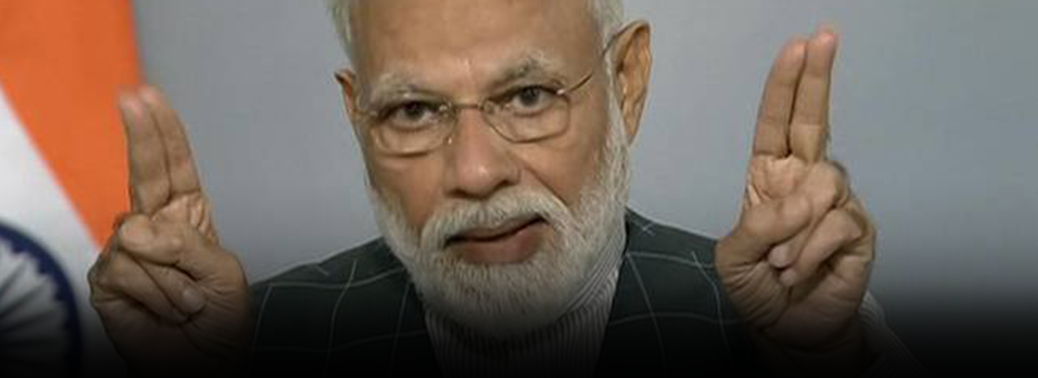
Why in News:
- To address the twin problems of sluggish economic growth and rising unemployment, the government has constituted two Cabinet committees to be chaired by Prime Minister.
Background: / Committee on Investment and Growth:
- The five-member Committee on Investment and Growth consists of Home Minister Amit Shah, Finance Minister Nirmala Sitharaman, Minister for Road Transport and Highways and MSME Nitin Gadkari and Railways Minister Piyush Goyal.
- This committee will be a focussed group to take measures to bring investments and spur growth in the critical sectors including infrastructure, manufacturing and agriculture, as the economy is passing through a highly volatile period.
Reason for the committee on Investment and Growth:
- With the GDP falling to 5.8% in the last quarter of 2018-19, lowest in last five years, the committee on economic growth will prepare a road map to bring the economy back on the growth trajectory. The GDP growth for 2018-19 was 6.8 %, against the target of 7.2 %.
Cabinet committee for Employment and Skill Development:
- The Cabinet Committee on Employment and Skill Development constitutes of 10 members including Union Home Minister Amit Shah, Finance Minister Nirmala Sitharaman, Railway Minister Piyush Goyal, Union Ministers Narendra Singh Tomar, Ramesh Pokhriyal, Dharmendra Pradhan, Mahendra Nath Pandey, Santosh Kumar Gangwar, and Hardeep Singh Puri.
Reasons for the committee for Employment and Skill Development:
- Employment data for 2017-18, released on May 31, brought out that India’s unemployment
rate rose to 6.1% in the said period, which is the highest in 45 years. - As per the PLFS, which covered 4.3 lakh people across 1.02 lakh households, the unemployment rate among urban workforce was 7.8 per cent, while the unemployment rate for the rural workforce was 5.3 per cent.
- The unemployment rate of males on the all-India basis was 6.2 per cent, while it was 5.7 per cent in the case of females.
- It also showed that the unemployment rate for males was higher at 7.1 per cent in urban areas compared to 5.8 per cent in rural areas. Similarly, the unemployment rate for women was also higher in urban areas at 10.8 per cent compared to 3.8 per cent in rural areas.
About Cabinet committees:
- Many times, when an activity/agenda of the Government acquires prominence or requires special thrust, a Cabinet Committee may be set up for focussed attention.
- Government of India’s (transaction of business) rules, 1961, empower the Prime Minister
to set up, add, reduce or modify the numbers and functions of cabinet committees. Currently, there is six Cabinet committee (except newly formed two committees). - These are on
- 1. Appointments
- 2. Accommodation
- 3. Security
- 4. Economic Affairs
- 5. Investment
- 6. Parliamentary Affairs
FINE-TUNING THE EDUCATION POLICY
05, Jun 2019
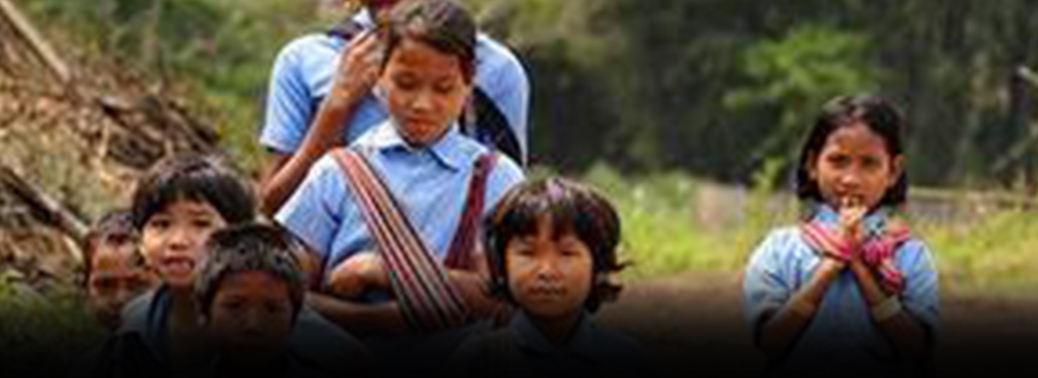
Why in News:
- The draft National Education Policy, 2019 is out in the public domain, with comments sought from all stakeholders till June 30.
Background: / What is the New Education Policy for?
- The extent National Policy on Education, 1986 modified in 1992 required changes to meet the contemporary and futuristic needs of India’s large youth population.
- A New Education Policy is designed to meet the changing dynamics of the requirements in terms of quality education, innovation and research.
- The policy aims at making India a knowledge superpower by equipping students with the necessary skills and knowledge.
- It also focusses on eliminating the shortage of manpower in science, technology, academics and industry.
- The Draft Policy is built on the foundational pillars of Access, Equity, Quality, Affordability and Accountability.
What are the key changes proposed?
- Ministry – The committee has proposed to rename the Ministry of Human Resource Development as Ministry of Education (MoE).
- Curriculum – In school education, a major reconfiguration of curricular and pedagogical structure was proposed.
- The policy calls for an Early Childhood Care and Education (ECCE) as an integral part of school education.
- A 5+3+3+4 curricular and pedagogical structure based on cognitive and socio-emotional developmental stages of children was proposed.
- It consists of –
- Foundational Stage (age 3-8 yrs): 3 years of pre-primary plus Grades 1-2
- Preparatory Stage (8-11 years): Grades 3-5
- Middle Stage (11-14 years): Grades 6-8
- Secondary Stage (14-18 years): Grades 9-12
- The policy also seeks to reduce content load in school education curriculum.
- There will be no hard separation of learning areas in terms of curricular, co-curricular or extra- curricular areas.
- All subjects, including arts, music, crafts, sports, yoga, community service, etc will be part of the curricular.
- Thus, schools will be re-organized into school complexes.
- The policy promotes active pedagogy to focus on the development of core capacities and life skills, including 21ST century skills.
- RTE Act – The committee recommends Extension of Right to Education Act 2009 to cover children of ages 3 to 18 (currently, 6-14).
- Teacher education – The committee proposes for massive transformation in teacher education.
- It calls for shutting down sub-standard teacher education institutions.
- It proposes moving all teacher preparation/education programmes into large multidisciplinary universities/colleges.
- The 4-year integrated stage-specific B.Ed. programme will eventually be the minimum degree qualification for teachers.
- Higher education – A restructuring of higher education institutions with three types of higher education institutions was proposed –
- Type 1: Focused on world-class research and high-quality teaching
- Type 2: Focused on high quality teaching across disciplines with significant contribution to research
- Type 3: High quality teaching focused on undergraduate education
- This will be driven by two Missions -Mission Nalanda & Mission Takshashila.
- There will be re-structuring of Undergraduate programs such as BSc, BA, BCom, BVoc of 3- or 4-years duration and having multiple exit and entry options.
- Institution – A new apex body Rashtriya Shiksha Ayog is proposed.
- This is to enable a holistic and integrated implementation of all educational initiatives and programmatic interventions.
- The body will also coordinate efforts between the Centre and states.
- The National Research Foundation, an apex body, is proposed for creating a strong research culture.
- It will help build research capacity across higher education.
- The four functions of Standard Setting, Funding, Accreditation and Regulation will be separated and conducted by independent bodies.
- National Higher Education Regulatory Authority will be the only regulator for all higher education including professional education.
- The policy proposes to create an accreditation eco-system led by a revamped NAAC (National Assessment and Accreditation Council).
- Professional Standard Setting Bodies for each area of professional education was proposed.
- UGC is to be transformed to Higher Education Grants Commission (HEGC).
- The private and public institutions will be treated on par, and education will remain a ‘not for profit’ activity.
- Besides the above, the committee also recommended several new policy initiatives for
- – promoting internationalization of higher education
- Strengthening quality open and distance learning Technology integration at all levels of education Facilitating adult and lifelong learning
- Enhancing participation of under-represented groups
- Eliminating gender, social category and regional gaps in education outcomes
- Language – Promotion of Indian and classical languages and setting up three new National Institutes for Pali, Persian and Prakrit were proposed.
- Indian Institute of Translation and Interpretation (IITI) has been recommended.
- The policy called for the proper implementation of the three-language formula (dating back to 1968) in schools across the country.
- Accordingly, students in Hindi-speaking states should learn a modern Indian language, apart from Hindi and English.
- In non-Hindi-speaking states, students will have to learn Hindi along with the regional language and English.
- The controversial three language provision was, however, dropped after protests against it in many states.
TRANSGENDER RIGHTS BILL TO BE REINTRODUCED
05, Jun 2019

Why in News:
- In the first 100 days of the Narendra Modi government’s second term, the Social Justice
and Empowerment Ministry will reintroduce the lapsed Transgender Persons (Protection
of Rights) Bill, 2016 and pay out the ₹3,000-crore arrears in the scholarship scheme for Scheduled Caste students.
Background: Transgender Rights Bill:
- The bill creates a statutory obligation on public and private sectors to provide them with
employment and recognises their right to “self-perceived gender identity”. - A transgender person must obtain a certificate of identity as proof of recognition of identity as a transgender person and to invoke rights under the Bill.
- It also provides for a grievance redressal mechanism in establishments. It has provisions to establish a National Council for Transgenders.
- It makes the government responsible for preparing welfare schemes and programmes
which are “transgender sensitive, non-stigmatising and non-discriminatory”. - It holds that it is a crime to push transgender persons into begging or bonded or forced labour.
- The Bill recognises the rights of transgender persons to live with their families without exclusion and use the facilities of those households in a non-discriminatory manner.
- Employment – The Bill criminalises begging and prescribes a jail term for 6 months to 2 years for anyone who compels or entices a transgender person to indulge in the act of begging.
- This may harm the community, since in the absence of employment, transgender persons engage in begging as a means of livelihood.
- Reservation – The Bill states that the State will ensure the “rescue, protection and rehabilitation” of transgender persons.
- However, it fails to grant backward class reservation to trans people in education and public employment. Also recognition of civil rights in marriage, divorce and adoption among transgender persons have not been addressed.
- Rehabilitation – The bill bars forcible separation of transgender persons (including transgender children) from their families, except through court orders.
- They should either live with their natal “family” (blood or adoptive relations) or sent to rehabilitation centres. However, the bill failed to noted that it was within the family that many transgender persons faced harassment and abuse, and often felt driven to flee their homes.
- Also, when a parent or immediate family member is unable to take care of a transgender, they should be sent to a rehabilitation centre.
This controls the right to liberty of a cisgender people (people who identify with the same gender identity they were assigned at birth) and make them subjects of “care” which they do not want or need.
CENTRE TURNS DOWN RTI PLEA FOR CIC SELECTION DETAILS
05, Jun 2019

Why in News:
- The Centre has denied a RTI request for details of the ongoing recruitment process for four vacancies in the Central Information Commission (CIC), despite a recent Supreme Court order mandating that such information be made public.
Background: / CIC in Limelight:
- The Centre is planning to setup bureaucrat-led committees to hear and decide on complaints against the Chief Information Commissioner (CIC) and Information Commissioners (ICs).
- This move has evoked sharp criticism from RTI activists and former Information Commissioners. The proposed change would be in contravention to the current RTI law and therefore is being seen by the CIC as an attempt to erode its independence and undermine its role.
- The SC had directed the Centre and States to pro-actively disclose all information regarding the recruitment, selection and appointment of candidates.
Central Information Commission (CIC):
- The Central Information Commission (CIC) set up under the Right to Information Act is the authorized quasi-judicial body, established in 2005.
- It acts upon complaints from those individuals who have not been able to submit information requests due to either the officer not having been appointed, or because the respective Officer refused to receive the application for information under the RTI Act.
- The Commission includes 1 Chief Information Commissioner (CIC) and not more than 10 Information Commissioners (IC) who are appointed by the President of India.
- CIC and members are appointed by the President of India on the recommendation of a committee consisting of—Prime Minister as Chairperson, the Leader of Opposition in the Lok Sabha; a Union Cabinet Minister to be nominated by the Prime Minister.
UDCHALO’ TO GIVE A NEW LEASE OF LIFE TO WOUNDED SOLDIERS
04, Jun 2019

Why in News:
- In a bid to make wounded soldiers, who are confined to wheelchairs, self-reliant, an initiative ‘UdChalo’ is all set to take off at the Army’s Paraplegic Rehabilitation Centre (PRC) in Punjab’s Mohali.
Details:
- ‘UdChalo’ is a travel portal, that caters for the personal travel of the military and paramilitary forces personnel by aggregating defence fares and getting exclusive discounts.
- The PRC has joined hands with UdChalo with an aim to empower the disabled military veterans.
- Purpose in life’
Paraplegic and quadraplegic veterans have found a purpose in life through ‘UdChalo’, when they interact with fellow soldiers and resolve their concerns. The initiative is unique and has given a new lease of life of these soldiers who are confined to wheelchairs. PRC provides institutionalised care to soldiers, who are wounded in military or insurgency operations and can’t adequately provide for themselves the constant medical care associated with quadriplegia and paraplegia. Currently, PRC has 31 ex-servicemen from across the country.
MANDATORY HINDI GOES OUT OF DRAFT EDUCATION POLICY
04, Jun 2019
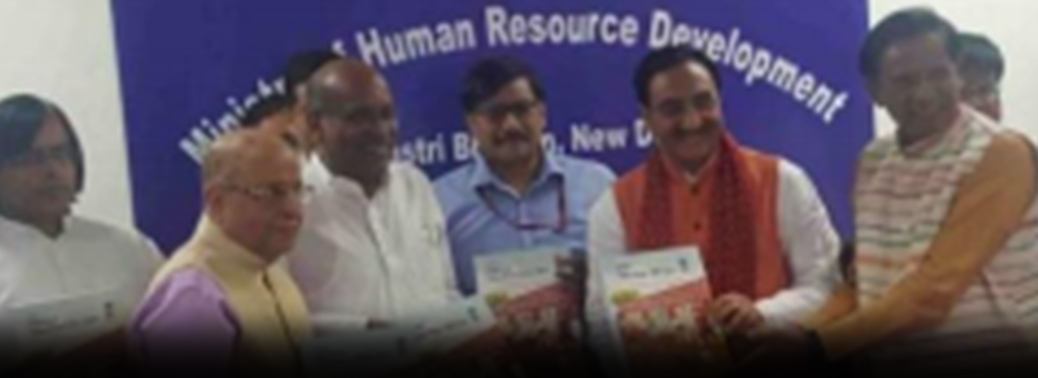
Why in News:
- The clause recommending mandatory Hindi teaching in all schools was dropped from the draft National Education Policy, after the Union government faced an intense backlash from States.
Details:
- The revised draft retains the recommendation to
introduce a three-language formula from Class 1 onwards; it simply removes the clause stipulating the specific languages that students must choose. - There is substantial space devoted to recognising the diversity and multilingual nature of the country, and giving autonomy to the States.
- The Centre went into damage control mode, with senior Cabinet Ministers tweeting reassurances that Hindi would not be imposed without further consultations.
- Finally, the revised draft was uploaded by the Human Resource Development Ministry.
- In keeping with the principle of flexibility, students who wish to change one or more of the three languages they are studying may do so in Grade 6 or Grade 7, so long as they are able to still demonstrate proficiency in three languages (one language at the literature level) in their modular Board Examinations some time during secondary school.”
HAVING ONE MINISTER FOR RURAL DEVELOPMENT & AGRICULTURE
03, Jun 2019
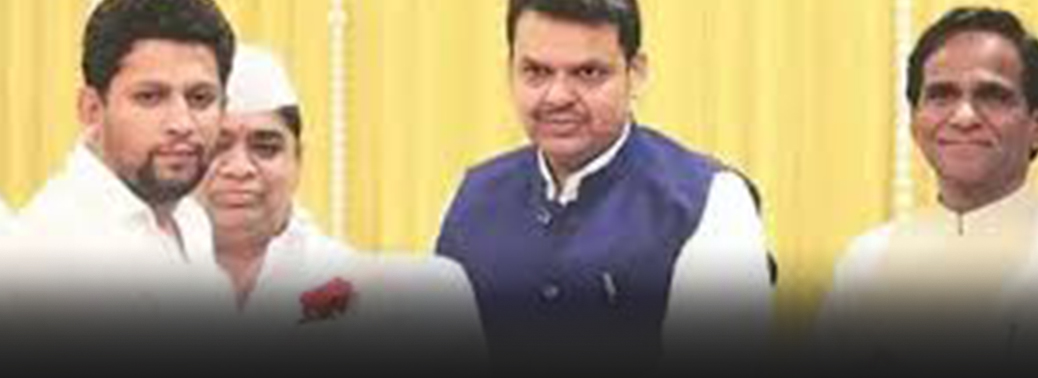
Why in News:
- The appointment of a single person as Union Minister in charge of both agriculture and rural development marks the start of an effort to integrate two departments that have tended to work in isolation with markedly varying performance.
Background:
- The government’s track record on rural development has been considered generally good. Following reasons can be attributed to its success; Flagship rural development schemes have been well-funded. They have been target-oriented with clear deadlines
- Dashboards tracking implementation on a near real-time basis
- The success in the rural sector has, however, not been seen vis-a-vis agriculture owing to the reasons stated below; Lack of imagination and focus.
- Sense of purpose and scale has been missing in agriculture-specific programmes. For example – Pradhan Mantri Fasal Bima Yojana, is alleged to have benefited insurance companies more than farmers. Not only have the gross premiums collected by insurers far exceeded the claims paid out but even these have been made with considerable delays.
- Inability to make any tangible impact on the ground.
- Not appointing full-time directors in most Indian Council for Agricultural Research Institutions. The average annual growth in the agriculture sector’s gross value added from 2014-15 to 2018-19 was just 2.9 per cent in real (constant prices) terms and 7.6 per cent at current prices. This is as against the required 10.3 per cent growth required for doubling in seven years.
How will Agriculture and rural coming under a single minister is a good thing?
- It will help bring in synergies. For example, MGNREGA is viewed as a pure rural scheme when one should be looking at greater convergence with agriculture for achieving the doubling of farm incomes. MGNREGA’s focus would be increased at asset creation on individual farms, as opposed to community-based works.
- But even as Agriculture and Rural Development has been brought under a single minister, the Centre has created a new Ministry of Animal Husbandry, Dairying & Fisheries. Along with it, the Ministry of Food Processing Industries, Food Ministry and the Department of Fertilizers would ensure continued fragmentation
CENTRE IN DAMAGE CONTROL MODE OVER ANTI-HINDI PROTESTS
03, Jun 2019
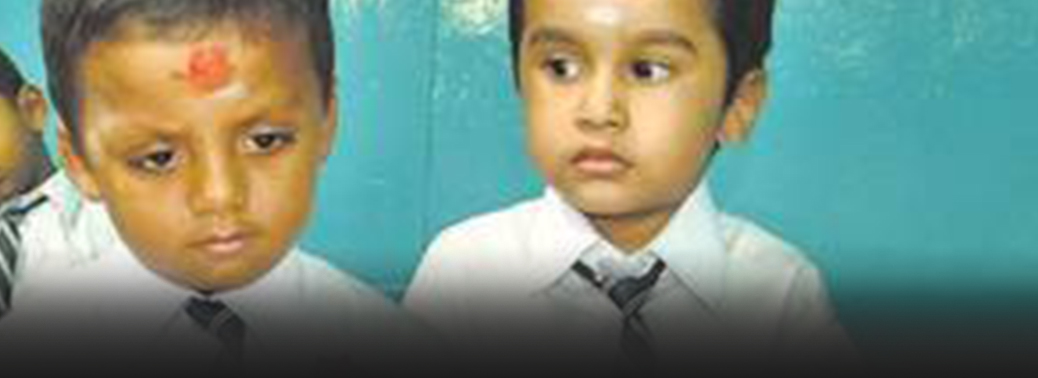
Why in News:
- The draft national education policy recommends a range of reform measures and favours teaching of Hindi in non-Hindi speaking states. The move is opposed by many states.
Background:
- The draft NEP outlines an ambitious agenda with regard to language teaching, calling for all students from pre-school or Class 1 onwards to be exposed to three or more languages, with the medium of instruction until Class 5 to be the child’s mother tongue or home language. From Class 6 onwards, there can be greater flexibility in the choice of languages
- This led to outrage in Non-Hindi speaking state of Tamil Nadu and West Bengal.
- The Ministry of Human Resource Development on Saturday clarified that it is the draft National Education Policy which has been submitted to the newly appointed HRD Minister Ramesh Pokhriyal Nishank by the Chairman Kasturirangan and the members and it is not the policy announced by the government.
- It added, that after getting feedback from general public, and after consulting State Governments, the National Education Policy will be finalised by Government.
Three language formulae
- The three-language formula has its roots back in the year 1948 Origins of the Three Language Policy (1948)
- Recommendations for the use of TLF at the Secondary School level (1952)
- The Three-Language Formula was devised in the Chief Ministers’ conferences in 1961
- The Official adoption of TLF (1968)
- Implementation and reinforcement of TLF (National educational policy documents 1986, 1988, 2000, 2005, 2016). According to the National Education Policy of 1968, three language formulae
- First language: Mother tongue or the regional language
- Second language: Modern Indian language or English (in Hindi-speaking areas) or Hindi or English (in Non-Hindi speaking areas)
- Third language (not studied as the second language): Modern Indian language or English (in Hindi-speaking areas) or Hindi or English (in Non-Hindi speaking areas).
Implementation of three language formulae
- In 2014, Union Minister of State for Home Kiren Rijiju has informed the Lok Sabha that the formula has not been implemented effectively. Implementation of the Centre’s Three- Language Formula for schools all over the country has been uneven owing to various interpretations of the formula by different States.
- All the States, except Puducherry, Tamil Nadu and Tripura, have implemented the Three- Language formula and three languages viz. Hindi, English and State official language are taught in the schools of these States. Hindi is not taught in the States of Tamil Nadu, Tripura and Puducherry. In many States, it has been adopted as 3+/-1 formula, and for the speaker of (linguistic) minority languages it has become a four-language formula as they have to learn their mother tongue, the dominant regional language, English and Hindi.
- In many of the Hindi speaking States Sanskrit became the third language instead of any modern regional language (preferably South Indian language), whereas the non-Hindi speaking State like Tamil Nadu operates through a two-language formula (Tamil and English). The Union Minister said some boards/institutions permit even foreign languages such as Spanish, French and German in place of Hindi or Sanskrit.
VENDOR LICENSING FOR SELLING TOBACCO PRODUCTS IN A MONTH
31, May 2019
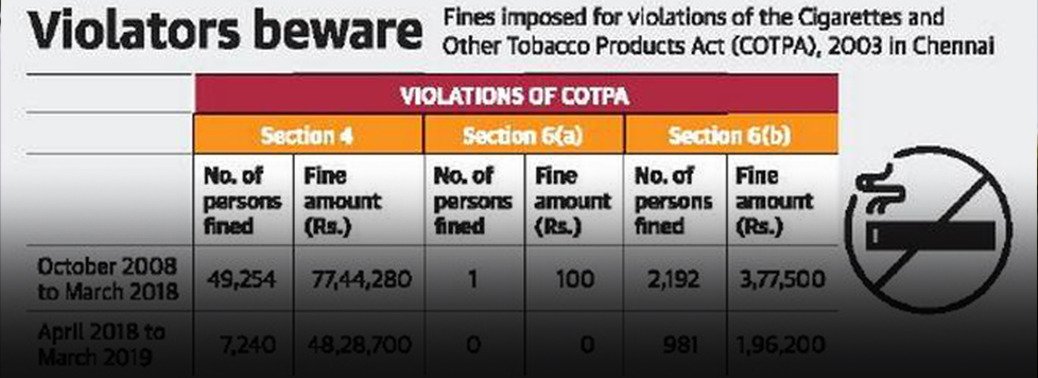
Why in News:
- Tamil Nadu is all set to introduce vendor licensing for selling tobacco products. Under this, shopkeepers need to obtain licenses to sell cigarettes and beedis and stand a chance of losing their licenses if they violate rules laid down by the Cigarettes and Other Tobacco Products Act (COTPA), 2003.
Details:
- As of now, vendors who violate rules pay fine and go back to selling tobacco products such as cigarettes and beedis. Once vendor licensing is introduced, license is cancelled. This will act as a major deterrent and enforcement will become easy and better.
- Through this way, access to cigarettes for minors will be reduced. Violations under sections 6 (a) prohibition of sale of tobacco products to minors and 6 (b) prohibition of sale within 100 yards of any educational institution of COTPA would be made implemented.
Cigarettes and Other Tobacco Products Act (COTPA), 2003.
- The Cigarettes and Other Tobacco Products (Prohibition of Advertisement and Regulation of Trade and Commerce, Production, Supply and Distribution) Act, 2003 or COTPA, 2003 is an Act of Parliament of India enacted in 2003 to prohibit advertisement of, and to provide for the regulation of trade and commerce in, and production, supply and distribution of cigarettes and other tobacco products in India.
- It was enacted by Parliament to give effect to Resolution passed by 39th World Health Assembly (WHA), urging member states to implement measures to provide non-smokers protection from involuntary exposure to tobacco smoke.
Provisions:
- The Act prohibits smoking of tobacco in public places, except in special smoking zones in hotels, restaurants and airports and open spaces.
Advertisement of tobacco products including cigarettes is prohibited. No person shall participate in advertisement of tobacco product, or allow a medium of publication to be used for advertisement of tobacco products. - Tobacco products cannot be sold to person below the age of 18 years, and in places within 100 yards radius from the outer boundary of an institution of education, which includes school colleges and institutions of higher learning established or recognized by an appropriate authority.
- Cigarette packets are required to carry pictorial warnings of a skull or scorpion or certain prescribed pictorial warnings along with the text SMOKING KILLS and TOBACCO CAUSES MOUTH CANCER in both Hindi and English.
- A person who advertises tobacco products shall on first conviction shall be punished with up to 2 years in imprisonment or with fine which can extend to Rs. 1000, in case of subsequent conviction shall be punished with up to 5 years in imprisonment or with fine which can extend to Rs. 5000.
CRITICAL EVALUATION OF CSO AND NSSO MERGER
31, May 2019

Why in News:
- Government has lately announced that National Sample Survey Office (NSSO) will be merged with Central Statistics Office (CSO) to create the National Statistics Office (NSO).
Background: / Present order of the government
- NSO would be headed by the Ministry of Statistics and Programme Implementation (MoSPI) secretary and 3 director generals will assist him. All divisions will report to the secretory through Director Generals.
- The Data Processing Division (DPD) of the present NSSO would be renamed Data Quality Assurance Division (DQAD) and have the responsibility to bring out quality improvements in survey data.
- The Field Operation Division (FOD) of the present NSSO will be subordinate office of the MOSPI. There was no mention of the National Statistical Commission (NSC) in the order.
Problems related to data collection
- Recently, there have been controversies surrounding data collection and presentation by the government. Economists and investors are increasingly showing that they have little or no confidence in India’s official economic data.
- A study conducted by NSSO in the 12 months ending June 2017 found that as much as 36 percent of the companies in the MCA-21 database of companies used in India’s GDP calculations could not be traced or were wrongly classified.
- In the latest controversy, government was accused of holding on to the data provided by NSC, that showed that showed the unemployment rate had touched its highest level in 45 years.
- In January, 2 members of NSC resigned, because they felt that NSSO is delaying the release of job data due to government pressure. Some of the economists are of the view that government has overestimated the GDP growth. For example, government upwardly revised GDP growth for 2016/17 to 8.2 percent from 6.7 percent. Economists and investors are now voting with their feet by using alternative sources of data and in some cases creating their own benchmarks to measure the Indian economy.
Present structure for data collection
- Ministry of Statistics and Programme Implementation (MoSPI) came into existence as an independent ministry in 1999 after the merger of the Department of Statistics and the Department of Programme Implementation. The Statistics Wing re-designated as National Statistics Office (NSO), consists of the Central Statistical Office (CSO) and the National Sample Survey Office (NSSO). Apart from the above wings, there is National Statistical Commission (NSC) created through a resolution of Government of India and one autonomous institute, viz., Indian Statistical Institute (ISI) declared as an institute of national importance by an Act of Parliament.
CSO
- The Central Statistics Office (CSO), an attached office of the Ministry, coordinates the statistical activities in the country and evolves statistical standards.
- Its activities include compilation of national accounts, index of industrial production, consumer price indices (urban/rural/combined) etc.
NSSO
- NSSO was established in 1950 as an organisation outside government control. It was formed as a part of the Indian Statistical Institute, as an independent, non-bureaucratic, national level socio-economic data gathering organisation. In 1972, NSSO came under the Ministry of Statistics and Program Implementation. It is responsible for conduct of large- scale sample surveys, in diverse fields, on all India basis. Primary data is collected regularly through nationwide household surveys on various socio-economic subjects like health, education and Annual Survey of Industries (ASI).
Wayahead:
- At present there is greater need to bring accountability and transparency in the process of development and governance, whereas government moves appear to promote greater centralisation and administrative convenience, particularly in the area of statistical information generation.
PROJECT: ‘SAFE NEIGHBOURHOOD FOR EVERY CHILD’
30, May 2019
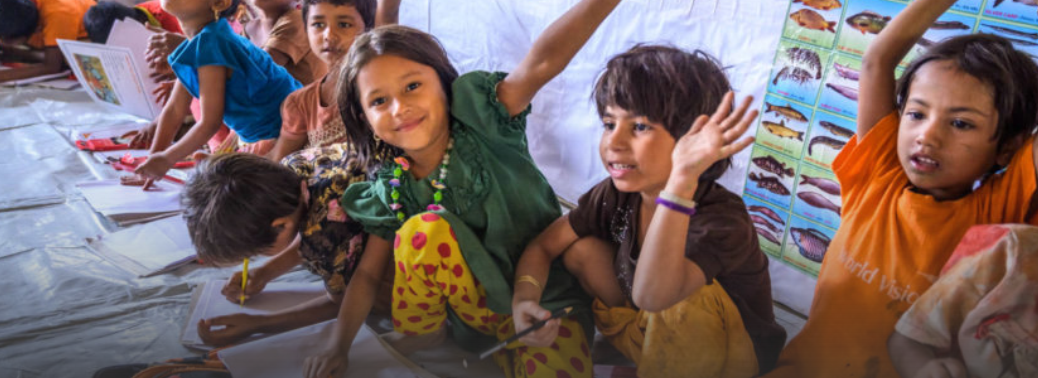
Why in News:
- Childline Kozhikode is planning to launch a new project titled ‘Safe neighbourhood for every child’ in the district soon, in view of the increasing physical and sexual offences on children in the district.
Background:
- The project will be implemented with the help of various agencies including residents’
- associations and Kudumbashree.
Child abuse cases
- A recent data released by Childline shows that close relatives and neighbours are the key offenders in most of the sexual and physical abuse cases in which children are victims.
- Members of the family are behind at least one-third of the total abuse cases.
- While boys in the 11-15 age group are most prone to physical abuses of different nature, girls of the age group 6 to 16 are most prone to sexual abuse. The number of serious sexual abuse is much higher as against sexual harassment cases. It has been noted that parental conflicts often lead to abuse of the children caught in between in many houses. However, a comforting feature is that parents/guardians of abused children have become increasingly willing to file complaints and move legally. In the 120 sexual offence cases, the guardians filed a complaint willingly in 90 cases.
Kudumbashree
- Kudumbashree is the poverty eradication and women empowerment programme implemented by the State Poverty Eradication Mission (SPEM) of the Government of Kerala. Its main features include democratic leadership, and support structures formed from the ‘Kudumbashree family’.
- Kudumbashree was set up in 199. Kudumbashree has a three-tier structure for its women community network, with Neighbourhood Groups (NHGs) at the lowest level, Area Development Societies (ADS) at the middle level, and Community Development Societies (CDS) at the local government level.
ICMR HEAD BALRAM BHARGAVA WINS DR. LEE JONG-WOOK PRIZE FOR PUBLIC HEALTH
27, May 2019
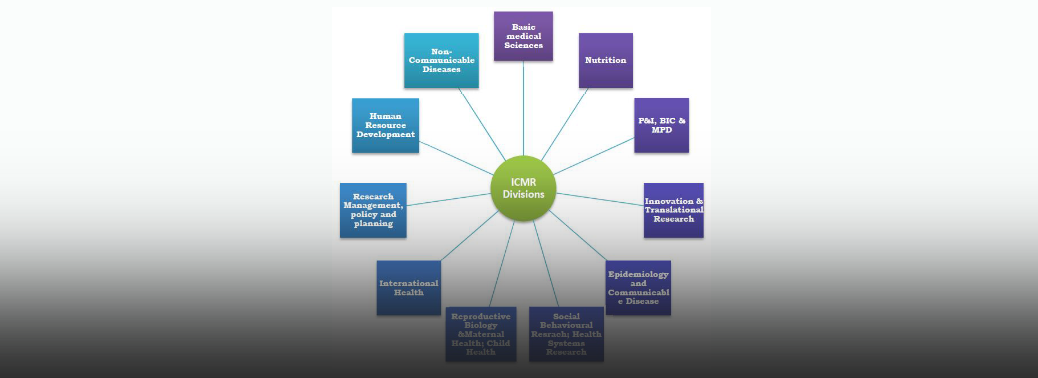
Why in News:
- ICMR head Balram Bhargava wins Dr. Lee Jong- wook Prize for Public Health
Background: / ICMR:
- The Indian Council of Medical Research (ICMR) is
- today the apex and premier medical research organization in the country which spearheads planning, formulation, coordination, implementation and promotion of biomedical research.
- It is one of the oldest medical research bodies in the world.
- In 1911, Government of India made a historic decision to establish Indian Research Fund Association (IRFA) with the specific objectives of sponsoring and coordinating medical research in the country.
- After Independence, in 1949, the IRFA was re-designated as the Indian Council of Medical Research (ICMR) with considerably expansion in its functions and activities.
Mandate
- Apex body in India for formulation, coordination and promotion of biomedical research
- Conduct, coordinate and implement medical research for the benefit of the Society
- Translating medical innovations in to products/processes and introducing them in to the public health system
Vision
- Translating Research into Action for improving the health of the population
Mission
- Generate, manage and disseminate new knowledge.
- Increase focus on research on the health problems of the vulnerable, the disadvantaged and marginalized section of the society. Harness and
- encourage the use of modern biology tools in addressing health concerns of the country.
- Encourage innovations and translation related to diagnostics, treatment, methods/ vaccines for prevention.
- Inculcate a culture of research in academia especially medical colleges and other health research institutions by strengthening infra-structure and human resource.
- Integrate research in different systems of medicine.
Network
- Today ICMR has pan-India presence with 26 research institutes mandated to work on national health research needs with the ICMR Headquarter as the nodal point of all ICMR funded extramural and intramural research. There are 14 divisions at ICMR Headquarters that deals with different areas of medical research.
INSTITUTES OF EMINENCE SCHEME
27, May 2019
Why in News?
- The human resource development (HRD) ministry is likely to move the Cabinet soon to increase by half the number of educational establishments that can be tagged “institutes of eminence”, or IoEs, offering them greater autonomy. The ministry wants the number increased to 30 from the original 20.
Highlights:
-
The institutes of eminence scheme under the Union human resource development (HRD) ministry
It aims to project Indian institutes to global recognition. - Only higher education institutions currently placed in the top 500 of global rankings or top 50 of the National Institutional Ranking Framework (NIRF) are eligible to apply for the eminence tag.
- The selection shall be made through challenge method mode by the Empowered Expert Committee constituted for the purpose.
- Institutions with the eminence tag would be allowed greater autonomy without having to report to the University Grants Commission (UGC).
- They would be able to admit foreign students and recruit faculty from abroad, and follow a flexible course and fee structure to enable them to vault to the ranks of the top global institutions.
- Six institutes – the Indian Institute of Technology-Bombay, IIT-Delhi, and Indian Institute of Science-Bangalore in the public sector and BITS Pilani, Manipal Institute and Jio Institute in the private sector — have so far been given the tag.
NEW INCOME TAX RULE FOR SENIOR CITIZENS
25, May 2019

Why in News:
- The Central Board of Direct Taxes (CBDT) has revised the rules applicable in case of filing of Form 15 H, allowing Section 87A rebate.
What is Form 15 H?
- The Form 15 H is a declaration under section 197A (1C) of the Income Tax Act.
- This is to be made by an individual who is of the age of 60 years or more claiming certain incomes without deduction of tax, i.e. TDS.
- The form needs to be submitted to any institution such as a bank.
- It deducts TDS if interest income exceeds Rs 50,000 a year (Rs 40,000 for non-senior citizens).
What is Section 87A?
- Under Section 87A of the Income Tax Act, an assessee, being an individual resident in India, whose total income does not exceed Rs 5 lakh, shall be entitled to a deduction.
- This will be a deduction from the amount of income-tax (as before allowing the deductions) on the total income with which s/he is chargeable for any assessment year.
- The deduction will be an amount equal to 100% of such income-tax or an amount of Rs 12,500, whichever is less.
What is the new rule?
- CBDT has notified that the Form 15H declaration will cover the Section 87A rebate. The new rule is applicable for the financial year 2019-20.
- The new rule will benefit those senior citizens whose tax liability will be Nil after allowing rebate under Section 87A.
- This means that if they are able to keep their total taxable income within Rs 5 lakh, they will face no tax and will be eligible to file Form 15H.
- Those who have interest income as the only source of income will stand to benefit from this change. The new rule will help reduce the running around for tax refund for those who now become eligible for submission of Form 15 H.
CBDT
- The Central Board of Direct Taxes is a statutory authority functioning under the Central Board of Revenue Act, 1963. CBDT consists of a Chairman and six Members.
- The officials of the Board in their ex-officio capacity also function as a Division of the Ministry dealing with matters relating to levy and collection of direct taxes.
HIGHER EDUCATION TO GET A BOOST WITH ₹1.5 LAKH CRORE ACTION PLAN
25, May 2019

Why in News:
- The Ministry of Human Resource Development plans to launch an ambitious ₹1.5 lakh crore action plan to improve the quality and accessibility of higher education over the next five years.
Background: / EQUIP:
- EQUIP stands for the Education Quality Upgradation and Inclusion Programme and was crafted by ten committees led by experts within the government
- The ten committees have drafted strategy to improve access to higher education, especially for underserved communities; improve the gross enrolment ration; improve teaching and learning processes; build educational infrastructure; improve the
- quality of research and innovation; use technology and online learning tools; and work on accreditation systems, governance structures and financing.
What were the recommendations of Subramaniam committee?
- T.S.R.Subramaniam committee was formed in the year 2015 and the committee submitted following recommendations.
- Indian Education Service (IES) should be established as an all India service with the cadre controlling authority vesting Resource HRD ministry.
- The outlay on education should be raised to at least 6% of GDP without further loss of time. Teacher Entrance Tests (TET) should be made compulsory for recruitment of all teachers.
- Compulsory licensing for teachers in government and private schools should be made mandatory.
- Pre-school education for children in the age group of 4 to 5 years should be declared as a right. The no detention policy must be continued for young children until completion of class V when the child will be 11 years old.
- A National Level Test open to every student who has completed class XII from any School Board should be designed.
- The mid-day meal (MDM) program should now be extended to cover students of secondary schools. The University Grants Commission (UGC) needs to be made leaner and thinner and given the role of disbursal of scholarships and fellowships.
- Top 200 foreign universities should be allowed to open campuses in India.
What are the issues with these recommendations?
- The original report recommended that political parties to be banned from appointing Vice Chancellors for universities.
- A radical reform it had recommended is separate bureaucratic framework for HRD functions.
- An autonomous body to handle the selection of teachers for government schools and colleges was also recommended.
- These recommendations may not have been new, but nearly all of them broke with the dogmas of the past.
What is the purpose of new committee?
- The government is not satisfied with the reports of TSR Subramanian Committee.
- Fresh and comprehensive reports are the main objectives for the government to announce the new committee. The new committee will be headed by ISRO chief K Kasturirangan.
- The new committee will consider inputs from the Subramanian committee reports.
What should be done?
- The government’s intention on reforming education would be successful only when it is ready to accept the recommendations and implement them.
UNDER RENT ACT, THE TENANT HAS A PROTECTED STATUS: SC
23, May 2019

Why in News:
The Supreme Court has held that Owner cannot demand re-possession of property without following statutory procedure.
Background: / East Punjab Urban Rent Restriction Act, 1949:
- Under the Act, the tenant has a protected status.
- That status cannot be disrupted or brought to an end except on grounds specified in the enactment.
How prevalent is tenant farming?
- Tenant farmers are those who undertake farming on rented land.
- Tenant farming was 20.6% of the operating area according to 8th round of NSSO Report in 1953-54.
- In 2002-03, it fell sharply to just 6.6% of the operating area.
- Policymakers focused on abolition of feudal/semi-feudal agrarian structure, with tenancy reforms aimed at conferring ownership right to tenants.
- But post liberalisation, during 2003-13, tenancy increased to 10.4%.
- Andhra Pradesh (35.7%), Bihar (22.7%), Haryana (14.8%), Odisha (16.9 %), TN (13.5%) and WB (14.7%) lead the tenancy league, far above the all-India average of 10.4%.
What are the policy shortfalls?
- Tenant farmers account for 80% of farmers’ suicides in the country.
- Tenant farmers rarely get bank credit and they do not get any subsidies.
- Even with Kisan Credit Cards (KCC) and JLGs (Joint liability groups-‘Bhoomi Heen Kisan’) in
- place, tenant farmers receive barely 3% of total farm credit.
- Loan waivers have not helped tenant farmers as a significant number of crop loans are availed by the land owners even when they are not the actual cultivators.
- Tenant farmers with no documentary evidence become ineligible for crop insurance under PM Fasal Bima Yojana.
- State level panel data of NABARD indicates that a 10% increase in agricultural growth leads to a 2.1% rise in GDP.
- But uneconomic holdings, lack of adequate credit flow and poor insurance cover to the tenant farmers prevent such growth.
What are the notable state models in lending?
- Kerala is the only State that enacted the Money Lending Act, protecting borrowers from high rates of interest and tenants from excesses in private debt.
- The AP government has adopted and refined the implementation process under the AP
- Licensed Cultivators’ Act 2011.
- It undertook digitisation of land records and created a webland portal.
- Loan Eligibility Cards (LEC) or a Certification of Cultivation (CoC) is issued by the designated authority of revenue or agriculture department.
- A standard operating procedure has been put in place for the banks to record the crop loans issued to all farmers including tenants, on the webland portal.
- Telangana did not annul the AP law, but took up a massive drive for digitisation.
- It revised the land records under the Dharani project (Telangana Land Records Management System).
- This is being implemented for direct transfer of Rs. 4,000 per owner-farmer per acre per crop season to meet the input needs.
- Besides, farmers are entitled to Rs. 5 lakh insurance with the LIC, with the State paying the same.
- Tenant farmers are, however, not eligible.
How does the future look?
- As the Indian economy becomes mature and inclusive, tenancy is likely to increase further. Urbanisation has made inroads into the rural landscape, and with land being scarce there is severe demand for it.
- Tenancy and sharecropping have become livelihood options in agriculture, to supplement incomes arising out of lesser availability of land.
What could be done?
- An inclusive growth agenda requires that tenant farmers’ issues of both debt and insurance
- be tackled.
- Agricultural insurance needs to be decoupled from crop loans.
- Farmers’ assets (crop husbandry, animal husbandry, poultry, horticulture and family assets)
- need to be insured irrespective of owned or leased-in. Other relevant measures for tenant farming may include – creating a legal framework for the States
- issuance of loan eligibility cards
- ensuring that banks lend to cultivators and not owners
- creation of web-based land portals after digitising land records setting targets for short-term production credit for tenant farmers formation of JLGs
- Direct cash transfer to tenant farmers following an affidavit of self-declared tenancy conditions and crop(s) grown can help significantly.
- NABARD can set up a Tenant Farmers Development Fund to refinance short-term credit.
- It can also assist JLGs, SHGs, FPOs (Farmer Producer Organizations), and pay crop insurance premium for crop loans less than Rs. 1 lakh, besides providing skilling and calamity relief.
ICELAND CANYON WANTS NO MORE VISITORS, THANKS TO JUSTIN BIEBER
20, May 2019

Why in News:
-
After bieber’s I’ll Show You was shot at the spot, the footfall of tourists in the region rose,
leaving deep scars on its vegetation.
Details:
- A large sign warns motorists that Iceland’s Fjadrárgljúfur canyon is closed to visitors but drivers keep on coming down the narrow gravel road.
- A ranger at a roadblock has to explain why no one can pass: the vulnerable landscape cannot sustain more visitors. Bieber’s magical music video I’ll Show You was filmed at the
canyon and seen by millions, creating overwhelming demand for the once-pristine spot - Last year, 2.3 million tourists visited Iceland, compared with just 6,00,000 eight years ago. The 20% annual uptick in visitors has been out of proportion with infrastructure that is needed to protect Iceland’s volcanic landscape, where soil forms slowly and erodes quickly.
- The nearby Skūgar waterfall and the Svţnafells glacier are also backdrops in the fictional Thrones world of warriors and dragons.
Arctic Council
India and Arctic Region
-
Indian researchers have been studying whether there is a co-relation between Indian monsoon and the Arctic region.
-
National Centre for Polar and Ocean Research, an Indian institute under Ministry of Earth Sciences, has set up research station, ‘Himadri’, in Svalbard (Norway). It studies and works on mass balance of glaciers, effect of climate warming on marine system, clouds formation and precipitation and also effect on biodiversity.
- Indian researchers have been studying whether there is a co-relation between Indian monsoon and the Arctic region.
- National Centre for Polar and Ocean Research, an Indian institute under Ministry of Earth Sciences, has set up research station, ‘Himadri’, in Svalbard (Norway). It studies and works on mass balance of glaciers, effect of climate warming on marine system, clouds formation and precipitation and also effect on biodiversity.
NATIONAL INSTITUTE OF NUTRITION STANDS BY ITS REPORT ON NO ONION, GARLIC IN ITS MEALS
16, May 2019
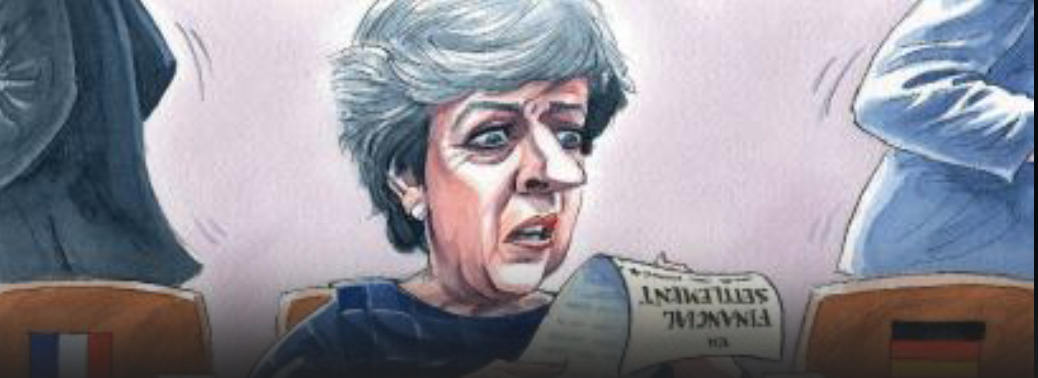
Why in News:
-
The National Institute of Nutrition (NIN) said on Tuesday that it stands by its findings certifying mid- day meals without onion
and garlic provided by the Akshaya Patra Foundation (APF) in karnataka schools as compliant with nutritional norms laid down by the State government.
Background:
NIN: / Aim:
- To achieve optimal nutrition status that is conducive for mental, physical and social well- being of all Indians.
Provisions:
- Periodic Assessment of Nutrient intakes, Health and Nutrition status of the population for optimal health, and assist the Government and regulatory bodies in policy making.
- Establishment of Dietary Reference Intake values, Recommended Dietary allowances, Dietary guidelines for Indian population; and assessment of Nutrient Composition of Foods. Identify various nutrition deficiency disorders prevalent among different segments of the population.
- Conduct operational research for planning and implementation of National Nutrition Programmes in the country. Conduct surveys and study the risk factors of NCDs through multidisciplinary research.
- Conduct innovative basic science Research on nutrient interactions, requirements, responses etc. Identify and study food and environmental safety challenges for providing scientific input for policy and regulation. Development of human resource in nutrition and also provide evidence-based nutrition knowledge to the community.
- Akshaya Patra is the world’s largest (not-for-profit run) Mid-Day Meal Programme serving wholesome food every school day to over 1.76 million children from 14,702 schools across 12 states in India.
Akshaya Patra Foundation:
VERY FEW TAKERS FOR RTE QUOTA SEATS
15, May 2019
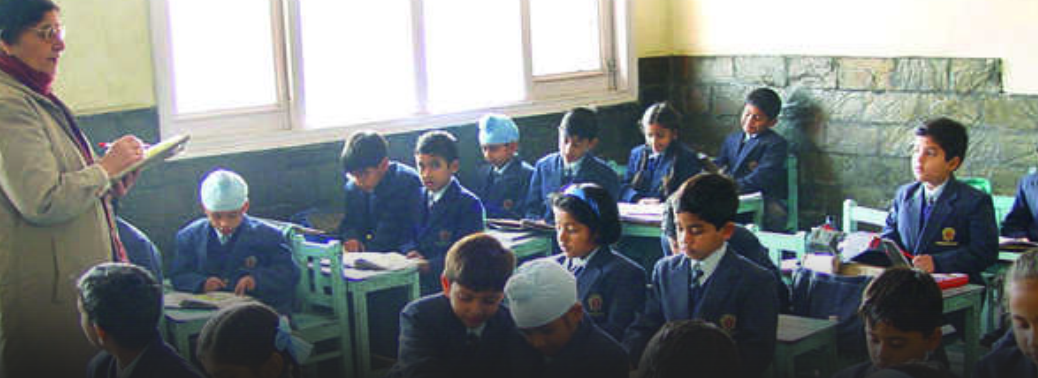
- After the State government amended the rules to prioritise government and aided schools. Admissions for only 28% of the total 7,346 seats allotted during the first round under the reservation quota have been completed.
- The number of seats and applications, too, have declined. This trend is the result of new rules which mandate that a child can be admitted to a private school under the quota only if there is no government or aided school in the locality.
Right to Education (RTE) Act:
- The Right of Children to Free and Compulsory Education (RTE) Act, 2009
- This act is an embodiment of Article 21-A, which says that every child has a right to full time elementary education of satisfactory and equitable quality in a formal school which satisfies certain essential norms and standards.
- Article 21-A and the RTE Act came into effect on 1 April 2010
- It is seen as the most historic development in universalisation of elementary education in the country.
- It implies that every child in the age group of 6 to 14 years has Right to elementary education. They are entitled for free and compulsory education.
Salient features:
- The RTE Act provides for the right of children to free and compulsory education till completion of elementary education in a neighbourhood school.
- It clarifies that ‘compulsory education’ means obligation of the appropriate government to provide free elementary education and ensure compulsory admission, attendance and completion of elementary education to every child in the six to fourteen age group. ‘Free’ means that no child shall be liable to pay any kind of fee or charges or expenses which may prevent him or her from pursuing and completing elementary education.
- It makes provisions for a non-admitted child to be admitted to an age appropriate class.
- It specifies the duties and responsibilities of appropriate Governments, local authority and parents in providing free and compulsory education, and sharing of financial and other responsibilities between the Central and State Governments.
- It lays down the norms and standards relating inter alia to Pupil Teacher Ratios (PTRs), buildings and infrastructure, school-working days, teacher-working hours.
- It provides for rational deployment of teachers by ensuring that the specified pupil teacher ratio is maintained for each school, rather than just as an average for the State or District or Block, thus ensuring that there is no urban-rural imbalance in teacher postings. It also provides for prohibition of deployment of teachers for non-educational work, other than decennial census, elections to local authority, state legislatures and parliament, and disaster relief.
- It provides for appointment of appropriately trained teachers, i.e. teachers with the requisite entry and academic qualifications.
The Sarva Shiksha Abhiyan (SSA) is the main vehicle for implementation of the RTE Act. It is one of the largest programmes of its kind in the world. - It is primarily funded from central budget and it covers the whole country.
Under SSA, special attention has been given to urban deprived children, children affected by periodic migration and children living in remote and scattered habitations. Attempts have also been made to reach out to children suffering from autism. It involves their identification, preparation of individualized Education Plan, teacher training on Autism and therapeutic support.
SUBSTANTIVE EQUALITY: ON SC/ST GOVERNMENT STAFF
13, May 2019
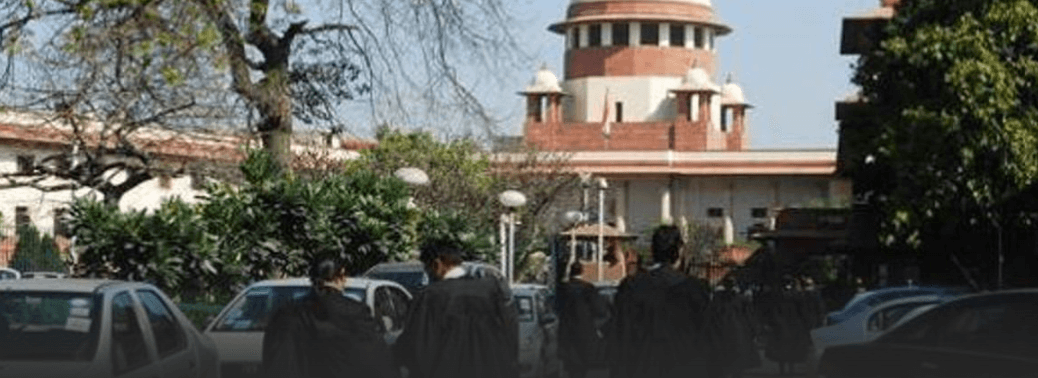
why in news:
- The Supreme Court on Friday upheld the validity of a new Karnataka law granting reservation in promotions to Scheduled Caste and Scheduled Tribe (SC/ST) employees.
Background: / Various judgements related to SC/ST reservations in promotion:
-
Indhira Sawhney Case (1992):
- In Indira Sawhney case, where it was held that once SCs and STs were part of the Presidential List under Articles 341 and 342 of the Constitution, and there was no need to prove backwardness.
- Hence, SC ruled that States need not collect quantifiable data on the backwardness of SC/ST for giving quota in job promotion to SC/ST employees.
- It had not made any changes to application of ‘creamy layer’ principle in reservation in promotion of SC/STs.
2. Nagaraj Case (2006):
- The Supreme Court had held that the state was not bound to provide reservation in promotions to SCs/STs.
- But in case any state wished to make such a provision, it was required to –
- Collect quantifiable data on backwardness of the
- Prove its inadequate representation in public
- Show no compromise on efficiency of
- Additionally, the state was also required to ensure that the reservation does not breach the 50% ceiling.
- The ruling also said that the ‘creamy layer’ concept applies to SCs and STs for promotions in government jobs.
3. Jarnail Singh Case (2018):
- The court set aside the requirement to collect quantifiable data that was stipulated by its 2006 verdict in M. Nagaraj v. Union of India as it ignored the reasoning of a nine-judge bench in Indra Sawhney (1992) that any discussion on creamy layer “has no relevance” in the context of SC/STs.
- The court has taken more than a decade to correct an anomaly in the Nagaraj case which brought in a creamy layer filter for promotions for SC/ST employees. This resulted in thousands of employees being denied their due promotions.
Way Ahead:
- The court said special measures need to be adopted for considering the claims of SCs and STs in order to bring them to a level playing field. Centuries of discrimination and prejudice suffered by the SCs and STs in a feudal, caste-oriented societal structure poses real barriers of access to opportunity, it pointed out.
ODISHA SET TO INTROSPECT POST-DISASTER COMMUNICATION
13, May 2019
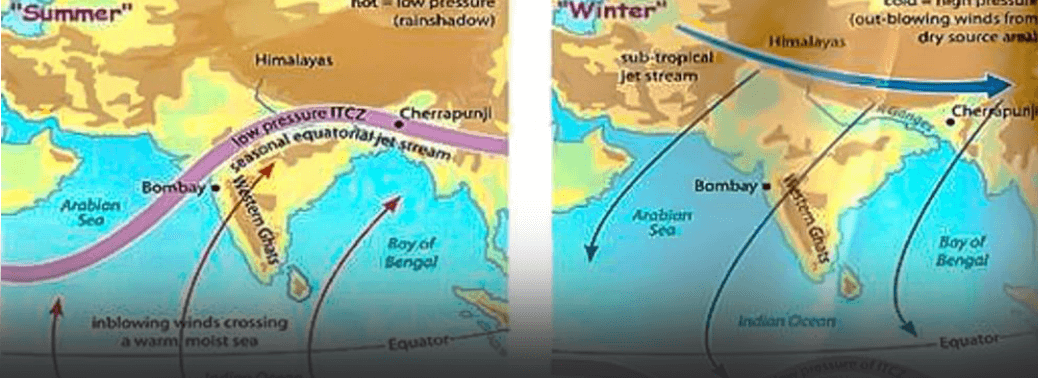
Why in News:
- The State control room was not able to establish regular communication (telephone, FAX, HAM radio and VHF) with the district headquarters, resulting in utter confusion in relief and rescue operations after cyclone Fani.
Background: / Cyclone Fani:
What is the Issue?
- A powerful cyclonic storm named Fani is headed towards the Odisha coast.
- As a cyclone in Bay of Bengal in April-May season, of this nature, is unusual, it is essential to understand the causes.
How do tropical cyclones form?
- Cyclones are formed over slightly warm ocean waters. It depends on the temperature of the top layer of the sea, up to a depth of about 60 metres. This has to be at least 28°C to support the formation of a cyclone. This explains why the April-May and October- December periods are conducive for cyclones. Secondly, the low level of air above the waters needs to have an ‘anticlockwise’ rotation in the northern hemisphere and vice versa. During these periods, there lies the Inter-Tropical Convergence Zone (ITCZ) (a low pressure zone) in the Bay of Bengal region, which shifts with seasons. The southern boundary of the zone experiences winds from west to east and the northern boundary from east to west. The ITCZ and the resultant wind pattern induce the anticlockwise rotation of air. Once formed, cyclones in this area usually move northwest.
- As it travels over the sea, the cyclone gathers more moist air from the warm sea, and adds to its strength.
How and Why is Fani different?
- Tropical cyclones in the Bay of Bengal are graded according to maximum wind speeds at their centre as follows:
- Depressions – 30 to 60 km per hour (kph)
- Cyclonic storms – 61 to 88 kph
- Severe cyclonic storms – 89 to 117 kph
- Very severe cyclonic storms – 118 to 166 kph
- Extremely severe cyclonic storms – 167 to 221 kph
- Super cyclones – 222 kph or higher
- Fani is now categorised as an “extremely severe cyclone”.
- It is expected to generate storms with wind speeds as high as 200 km per hour.
- It has the potential to cause widespread damage in Odisha and neighbouring states.
- Given the above discussed reasons, a cyclone of this nature is unusual for April-May cyclones in India. Fani is different mainly on account of its place of origin, and the route it has taken. Origin – The in situ cyclonic systems in the Bay of Bengal usually originate around latitude 10° N (in line with Chennai).
- But Fani originated quite close to the Equator, around latitude 2° N, well below the Sri Lankan landmass. The forecast landfall on the Odisha coast is at a latitude of almost 20°N. As it has originated very close to the Equator, it has taken a long route to reach the landmass. Resultantly, it has traversed a long way on the sea, and thus gained more strength. Route – Fani was initially headed north-westwards, towards the Tamil Nadu coast. But it changed its course midway and moved northeast away from the coastline to reach Odisha.
- The recurve it has taken gave it more time over the sea and has ensured that it has gathered unusual strength.
B2B TECH START-UPS TREBLE IN 5 YEARS: STUDY
08, May 2019
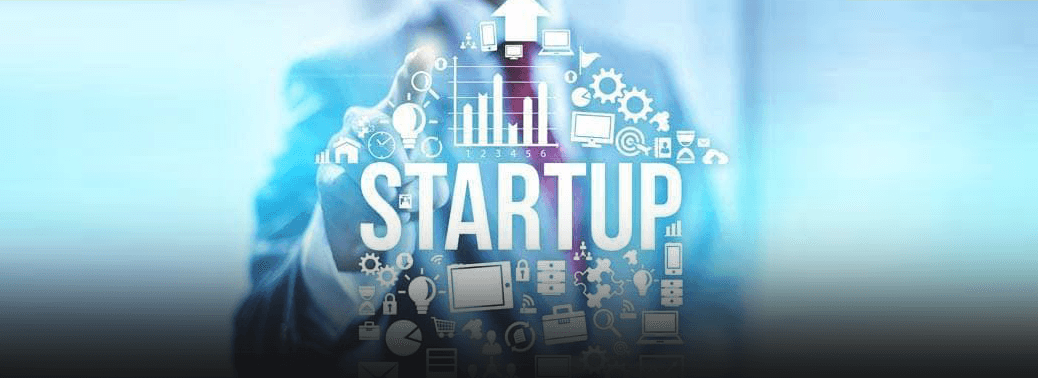
Why in News:
- Business-to-business (B2B) technology start-ups have more than trebled in the last five years driven by the spurt in the need for digital transformation of enterprises, financial institutions, hospitals, government and small and medium enterprises (SMEs), among others.
Details:
- While the number of such ventures has increased from 900 to over 3,200, the investment in such start-ups touched $3.7 billion in 2018, a rise of 364% from $797 million in 2014, as per a study
- According to the study, 70% of the B2B start-ups are in the area of enterprise technology, financial technology and health technology.
Growth of B2C
- However, the growth in the number of B2C technology start-ups has been comparatively slower since there were 2,200 such B2C ventures in 2014.
- Within the B2B technology segment, ‘advanced tech start-ups’ have grown at a higher pace when compared to the entire technology start-up segment.
- Advanced B2B tech start-ups typically deal in 3D printing, blockchain and robotic process automation.
Bengaluru leads
- Bengaluru is the top city for B2B technology start-ups followed by Delhi NCR and Mumbai, with the three cities accounting for about 60% of all B2B technology start-ups.
- Further, Hyderabad, Pune and Chennai are poised to be the growing start-up hubs on account of flexible economic policies, State government support and access to various industries.
- There are over 50 corporate accelerators and incubators in the country, focussing on technologies such as AI/ML, Big Data, Cloud, Blockchain, Cybersecurity, among others,”
Different types of e-commerce
- Business-to-business (B2B)
- Business-to-Consumer (B2C)
- Business-to-government (B2G)
- Consumer-to-consumer (C2C)
- Government to consumer (G2C)
- Government-to-business (G2B)
JUSTICE BOBDE PANEL GIVES CLEAN CHIT TO CJI IN SEXUAL HARASSMENT PROBE
07, May 2019
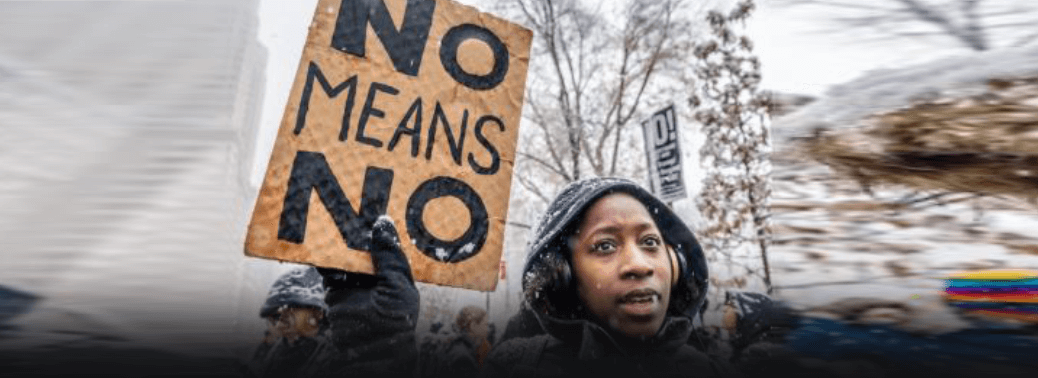
Why in News:
- The Justice S.A. Bobde in-house committee has found “no substance” in the sexual harassment allegations levelled by a former Supreme Court staff member against Chief Justice of India Ranjan Gogoi.
Details:
- As part of the in-house procedure, the report would not be placed in the public domain, the court added. The inquiry was by nature purely preliminary, ad hoc and only for the purpose of getting information. The report was “wholly confidential” and existed “only for the purpose of satisfaction that such a report has been made”.
What were the earlier Vishaka guidelines?
- The Vishaka guidelines were laid down by the Supreme Court in Vishakha and others v State of Rajasthan judgment in 1997.
- It imposes three key obligations on employing institutions – prohibition, prevention, and redress. The institutions are mandated to establish a Complaints Committee.
- This was to look into matters of sexual harassment of women at the workplace. These guidelines are legally binding
Sexual Harassment of Women at Workplace
- Sexual Harassment of Women at Workplace (Prevention, Prohibition and Redressal) Actwas passed in 2013. It broadens the Vishaka guidelines, which were already in place.
- An aggrieved victim is a woman “of any age whether employed or not”, who “alleges to have been subjected to any act of sexual harassment”.
- The Act thus covers the rights of all women working or visiting any workplace, in any capacity. Sexual harassment is any one or more of “unwelcome acts or behaviour”,committed directly or by implication. They include:
- Physical contact & advances
- A demand or request for sexual favours
- Sexually coloured remarks, Showing pornography
- Any other unwelcome physical, verbal or non-verbal conduct of sexual nature
CBI SEARCHING FOR EVIDENCE ON ELEVEN ‘MURDERED’ GIRLS
04, May 2019

Why in News
- The Central Bureau of Investigation (CBI) is searching for evidence related to the 11 girls believed to have been murdered in shelter home in Muzaffarpur district of Bihar. CBI files 7th status report in Muzaffarpur shelter home case
Details:
- The agency got wind of the alleged murders from the rescued children.
- In its seventh status report to the Supreme Court, the CBI, which is facing allegations that its probe into the grisly case is “hogwash”, said a scrutiny of the girls’ home register at Muzaffarpur had so far revealed that a total of 35 girls with identical or similar names had lived there at one point of time or the other. A “field-level verification” of the existence of these girls is also under way.
CBI
- The CBI was established as the Special Police Establishment in 1941, to enquire into cases of corruption in the procurement during the Second World War.
- With time the Santhanam Committee on Prevention of Corruption recommends the establishment of CBI. The CBI was then established by a resolution of the Ministry of Home Affairs. The Ministry of Personnel eventually took over the responsibility of CBI and now it plays the role of an attached office.
- The CBI is the premier investigating agency of the Central Government. It is not a statutory body; it derives its powers from the Delhi Special Police Establishment Act, 1946.
- The important role of CBI is prevention of corruption and maintaining integrity in administration.
BEYOND THE FREE TRADE IDEALISM
25, Apr 2019

Why in News?
- An ambitious ‘Employment and Incomes Policy’ must be the top priority for the next government
Details:
- The U.S. has begun trade skirmishes with India.
- It objects to India increasing import duties on electronic goods and wants India to reduce duties on U.S.-made motorcycles. Meanwhile the World Trade Organisation seems to be in the intensive care unit. It is time to apply fundamental principles to reshape a trade regime that is fair to all.
On free trade
- Dani Rodrik has estimated that for every unit of overall increase in global income, six or seven units of incomes will have to be shuffled around within.
- Moreover, according to this theory, people should not start producing what others are already producing, because they will produce less efficiently until they learn to do it well. According to this theory of free trade, Indians should not have bothered to learn how to produce trucks, buses and two-wheelers when the country became independent. They should have continued to import them from American, European and Japanese companies.
- Free trade purists say that easy import of products from other countries increases consumer welfare. Consumers everywhere welcome a lowering of import barriers because it brings products into their shops they could only dream of before
- Therefore, resistance to free trade does not come from consumers.
- It generally comes from companies which cannot compete: companies in less developed countries which are not able to compete until their country’s infrastructure is improved and they have acquired sufficient capabilities, or even from companies in developed countries when producers in developing countries overtake them.
Job growth:
- However, to benefit from easy imports, citizens need incomes to buy the products and services available. Therefore, they need jobs that will provide them adequate incomes.
- Any government responsible for the welfare of its citizens has to be concerned about the growth of jobs in the country. Domestic producers can provide jobs.
- Therefore, a developing country needs a good ‘industrial policy’ to
- accelerate the growth of domestic production, by building on its
- competitive advantages; and by developing those capabilities, it can compete with producers in countries that ‘developed’ earlier.
- India liberalised imports in the 1990s and Indian consumers have benefited greatly since then from the variety of products available to them from around the world.
- The manufacturing sector in India and China had comparable capabilities in 1990.
- By 2009, China’s was 10 times larger than India’s, and its capital goods production sector was 50 times larger. Not only was the Indian market being flooded with Chinese hand- tools and toys, China was also selling high-tech electrical and telecommunication equipment to India (and around the world too).
- Some people in government recommended the need for an ‘industrial policy’ to stimulate
- the growth of domestic production
- However, many Indian economists, along with others from the World Bank and the U.S., pushed back
- If Indian industry was not growing, it was because India had not ‘reformed’ enough: India should reduce trade barriers further and government should get further out of the way of industry,
The Next step
- By 2019, it has become clear that India’s policy-makers must find a way for economic growth to produce more income-generating opportunities for Indian citizens.
- Employment and incomes are the most pressing issues for Indian citizens according to all pre-election surveys of what citizens expect from the next government
- Therefore, an ambitious ‘Employment and Incomes Policy’ must be the highest priority for the next government.
- The scope of ‘industry’ must be broadened to include all sectors that can build on India’s competitive advantages.
- For example, the tourism and hospitality industry, taking advantage of India’s remarkable diversity of cultures and natural beauty, has the potential to support millions of small enterprises in all parts of the country
- There are lessons India can learn from its own history. With the government’s insistence in the pre-liberalisation era , India’s automobile sector was able to provide Indian consumers with good products. Indian auto-component producers and commercial vehicle producers export to the world’s most competitive markets.
- The WTO’s governance needs to be overhauled to promote the welfare of citizens in all countries, especially poorer ones, rather than lowering barriers to exports of companies in rich countries in the guise of free trade idealism
- A robust ‘Incomes and Employment Policy’, supported by an imaginative Industrial Policy, must guide India’s trade policy.
THE LIMITS OF POPULISM
18, Apr 2019
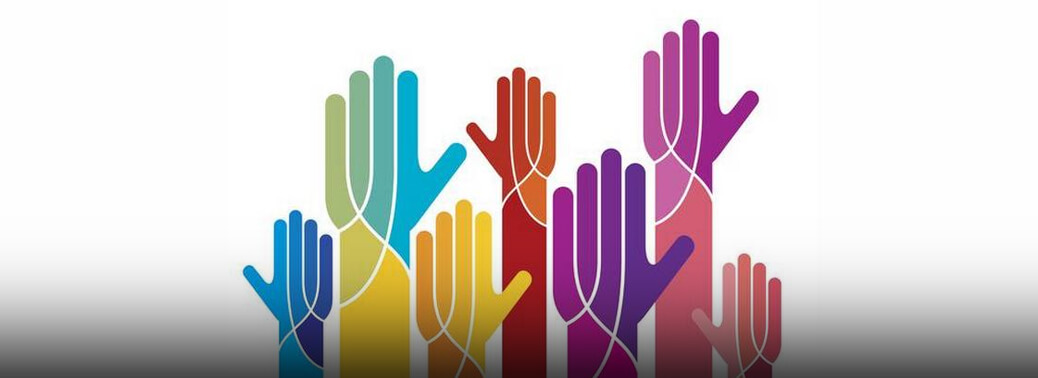
- It is very difficult for an incumbent government to offer biographical solutions to structural problems.
Details:
- Democracy and populism are cousins.
- Both Mahatma Gandhi and Jawaharlal Nehru were charismatic but not populist as they assumed a guiding role vis-à-vis the people rather than getting subsumed by their worldview. Gandhi didn’t hesitate to
- withdraw the non-cooperation movement in the aftermath of Chauri Chaura when it gained momentum, and Nehru stood for secularism and scientific rationality in the midst of Partition’s mass frenzy. The popular and the populist can be perfect strangers or bedfellows, and their transition into populism lies in a social, political and electoral mix.
History of populist elections
- Against this backdrop, post-Independence India witnessed the first populist national election transcending into populism in 1971, on the plank of Indira Gandhi’s “Garibi Hatao” slogan. That populism made the leader and the led coterminous. Since 1971, India has witnessed three more populist national elections transcending into populisms of various kinds, in 1977, 1989 and 2014, when the collective democratic quest in the electoral arena seemed to be for a saviour rather than a leader.
- On every occasion election appeared like a biography of a new saviour.
The story since 2014
- A ‘Hindu-Hriday-Samrat’ to the Hindutva constituency, a ‘developmentalist’ for the corporate and middle class, a ray of hope for the rural masses, an ultra-nationalist for those sensing a national drift, a ‘chaiwala’ for the poor, and an insider-outsider to the masses feeling vanquished by the very system that is supposed to empower them. Thus, the circle of electoral populism that emerged from the leftward vantage point in 1971 got completed in 2014 with the right-wing populism. India is in a post-charismatic leadership phase. How this phenomenon unfolds in these Lok Sabha elections is yet to be seen, but one big takeaway lies in the fact that a populist election without a charismatic leader cannot transcend into populism.
A fractured narrative
- Populism is no more the defining feature of Indian politics and, by extension, of Indian democracy. All the narratives offered are fractured, including that of nationalism. In all likelihood, the Lok Sabha elections, too, will yield a fractured mandate. A fractured mandate at this juncture will be a good omen for Indian politics as democracy mustn’t be reduced to the biography of a leader.
PARTIES SEEK CREDIT FOR ENCLAVE EXCHANGE
08, Apr 2019
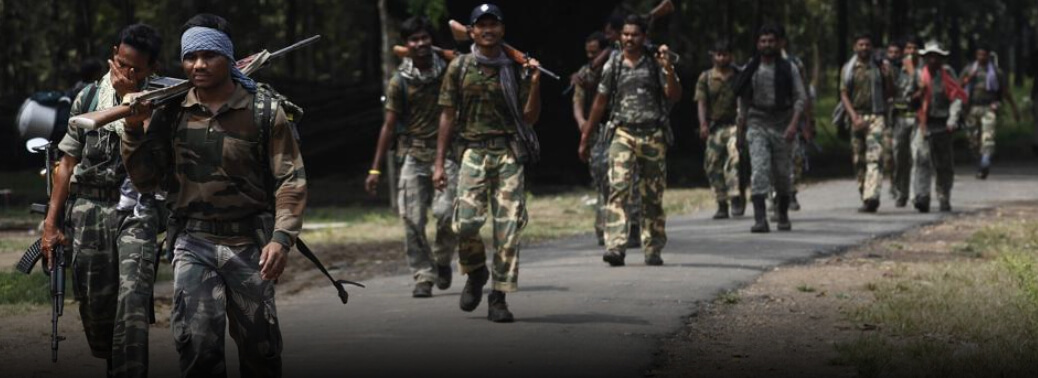
Enclave exchange settlements
- The India–Bangladesh enclaves, also known as the chitmahals and sometimes called pasha enclaves, were the enclaves along the Bangladesh–India border in Bangladesh and the Indian states of west Bengal, Tripura, Assam, and Meghalaya.
Agreement
- The Land Boundary Agreement was signed on 16 May 1974 between Indira Gandhi and Sheikh Mujibur Rahman which provided for the exchange of enclaves and the surrender of adverse possessions.
Details:
- It becomes the responsibilities of the governments of India and Bangladesh to ensure that there is no discrimination against them. The deal also opens the door for collaboration with Bangladesh for transit facilities to India’s landlocked North-East, a long-standing demand of India crucial for developing the vast insurgency-riven region.
- This deal also helps check illegal migration which has been a major problem which has been termed as demographic invasion driving to out populate indigenous community and region. Smuggling of goods, drugs, trafficking of women and children can all also be put under check.
Increase in VVPAT numbers will delay counting
30, Mar 2019

Over 20 opposition party leaders had moved the Supreme Court, seeking physical verification of at least 50% of the votes cast on EVMs to ensure the purity of the process.
The petition has challenged the decision of the Commission to check VVPATs of only one randomly selected booth of a constituency. The petitioners have said that this will account only for 0.44 per cent of the votes polled.
Reply of ECI:
- The current confidence level in the Electronic Voting Machine (EVM)-VVPAT accuracy was 99.9936%. Any increase in the sample size of verification of VVPAT slips would only lead to a “very negligible gain in the confidence level.
- The 50% Voter Verified Paper Audit Trail slip verification in each Assembly segment of a Parliamentary Constituency or Assembly Constituency on an average shall enlarge the time required for counting to about six days.
About VVPAT:
- The Voter Verified Paper Audit Trail is a method that provides feedback to voters. It is an independent verification printer machine and is attached to electronic voting machines. It allows voters to verify if their vote has gone to the intended candidate.
- This second line of verification process was introduced after allegations around Electronic Voting Machines’ tampering cropped up.
How does VVPAT functions?
- When a voter presses the button on the Voter Verifiable Paper Audit Trail machine against the chosen candidate, a printed VVPAT slip is displayed for 7 seconds before it’s automatically cut and delivered to a sealed ballot compartment.
- VVPAT machines can be accessed by polling officers only.
-
The VVPAT slip contains the following details:
• A candidate’s serial number
• Name of the candidate
• Corresponding symbol
Election Commission regularly monitoring J&K situation
22, Mar 2019
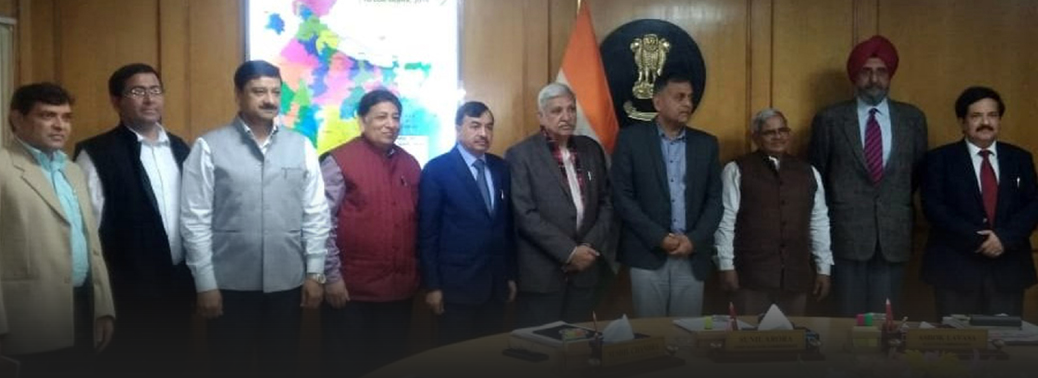
Governor’s rule to expire
- Jammu and Kashmir is under President’s rule since January and there were no plans to dissolve the Assembly yet.
- Since J&K has a separate Constitution, Governor’s rule is imposed under Section 92 for six months after an approval by the President.
- In case the Assembly is not dissolved within six months, President’s rule under Article 356 is extended to the State.
Centre has to decide
- There are no plans to dissolve the Assembly yet.
- The decision to hold fresh Assembly elections in the State lies with the Centre and the Election Commission.
Governor’s rule in J&K
- In all states of India, the state government’s failure results in President’s rule.
- The process is slightly more nuanced in Jammu and Kashmir where not the President’s but Governor’s rule is imposed.
- The Constitution of India grants special status to Jammu and Kashmir among Indian states, and it is the only state in India to have a separate Constitution and regulations specific to it.
- Under the provision of Section 92 of the Jammu and Kashmir Constitution, Governor’s rule is imposed for six months, but only after the consent of the President of India.
- The President’s rule in other states of India is imposed under Article 356 of the Constitution of India.
- Under the Governor’s rule, the State Assembly is either kept in suspended animation or dissolved.
- If it is not possible to restore the state machinery before the expiry of the six-month period, the provision is extended.
- The Governor’s rule was imposed on the state for the first time in March 1977, when the Congress withdrew support to National Conference (NC) government led by the late Sheikh Abdullah.
- Among notable differences with other states, till 1965, the head of state in Jammu and Kashmir was called Sadr-e-Riyasat, whereas in other state, the title was Governor, and head of government was called Prime Minister in place of Chief Minister in other states.
Political parties yet to comply with RTI Act
22, Mar 2019
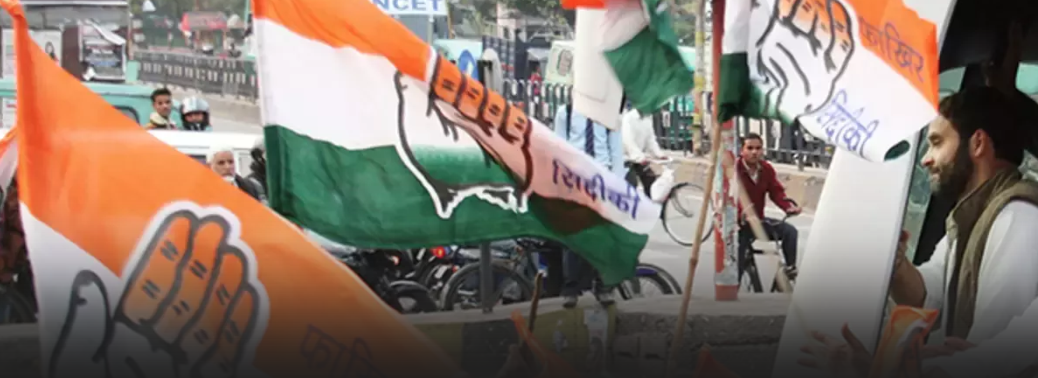
- In a time of deep political polarisation, refusing to comply with the RTI Act seems to be one of the few issues that has united national parties across the ideological spectrum.
- Despite a June 2013 ruling from the Central Information Commission (CIC) that they fall within the ambit of the transparency law, parties insist that they cannot be considered public authorities under the Act.
- Six years on, with another Lok Sabha election in the offing, the Supreme Court is set to adjudicate on the issue.
- National political parties are the main players as far as elections are concerned. In a democratic system of governance, it is essential that they are held accountable by informed citizens. But most political parties refused to comment publicly on the issue, saying it was sub judice.
RTI not extended to political parties:
1. The Election Commission has said in an order that political parties are out of the purview of the RTI Act
2. This is contrary to the Central Information Commission’s directive bringing six national parties under the transparency law
RTI act enforcement
- When it comes to the RTI Act, the Central Information Commission is the only appellate authority which may declare a body as a public authority if it is convinced that the organization fits into the criteria for being under the Right to Information Act
- The Central Information Commission has declared six national political parties as a public authority
- The Election Commission cannot take a position contrary to that unless the order of the CIC has been overturned by the Supreme Court or High Courts
Central Information Commission
- The Central Information Commission has been constituted under the Right to Information Act, 2005
- The jurisdiction of the Commission extends over all Central Public Authorities
- The Commission has certain powers and functions mentioned in sections 18, 19, 20 and 25 of the RTI Act, 2005
- These broadly relate to adjudication in the second appeal for giving information; direction for record keeping, suo moto disclosures receiving and enquiring into a complaint on the inability to file RTI etc; imposition of penalties and Monitoring and Reporting including preparation of an Annual Report
- The decisions of the Commission are final and binding.
- The Commission includes 1 Chief Information Commissioner (CIC) and not more than 10 Information Commissioners (IC) who are appointed by the President of India
- CIC and members are appointed by the President of India on the recommendation of a committee consisting of—Prime Minister as Chairperson, the Leader of Opposition in the Lok Sabha; a Union Cabinet Minister to be nominated by the Prime Minister
Right to Information Act 2005:
Rights of children caught in parental conflict need focus
21, Mar 2019
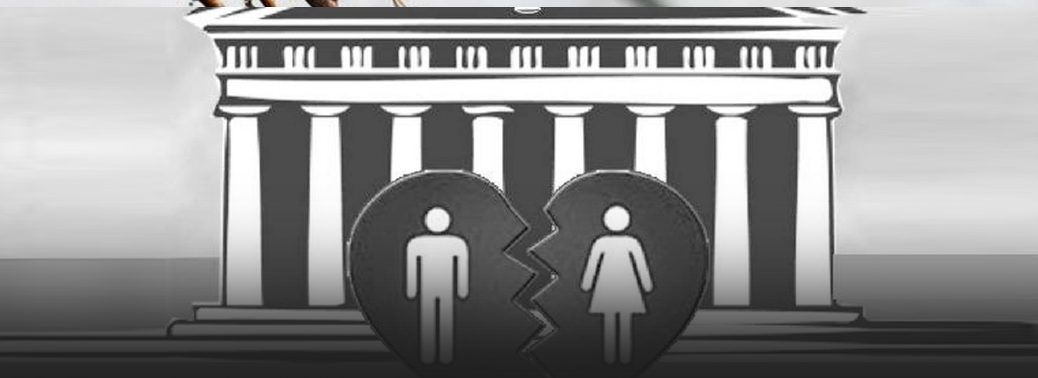
- A proactive step need to be taken to focus on child rights, specifically in cases of parental conflict – Supreme Court.
- The rights of children caught in the middle of an ugly divorce or a custody battle between parents need specific articulation.
A quagmire:
- Divorce and custody battles are a quagmire and it is heart-wrenching to see an innocent child ultimately suffer for the legal and psychological war waged between the parents.
- The plight of children caught in the emotional roller-coaster of their parents’ divorce and custody battles.
Psychological harm:
- The courts and judges could be able to resolve the legal problems of the parents, grant them divorce and send them on their separate ways. But what would become of the psychological harm caused to child who has witnessed the ugliness between the parents
- The child is unwittingly at the centre of the custody battle, but is yet not a true participant in the process.
- The child’s psychological balance is deeply affected through the marital disruption.
- Hence, for the sake of a child’s future relationship with each of his parents, a negotiated settlement is much better than an order imposed by a court after adversarial proceedings.
DIPP rechristened to include internal trade
12, Feb 2019

Why in news?
- The government has notified changing the name of the Department of Industrial Policy & Promotion (DIPP) to the Department for Promotion of Industry and Internal Trade, and has enhanced its role.
Highligths:
- In addition to the previous responsibilities of the erstwhile DIPP relating to general industrial policy, administration of the Industries (Development and Regulation) Act, 1951, industrial management, productivity in industry, and matters related to e- commerce.
- The notification has also included four new categories of responsibilities the renamed body will be in charge of, including:
Promotion of internal trade (including retail trade)
Welfare of traders and their employees
Matters relating to facilitating Ease of Doing Business
Matters relating to start-ups
DIPP:
- DIPP was established in the year 1995, and was reconstituted in the year 2000 with the merger of Department of Industrial Development.
- The department functions under the Ministry of Commerce and Industry.
- It is responsible for formulation and implementation of promotional and developmental measures for growth of the industrial sector, keeping in view the national priorities and socio-economic objectives. While individual Administrative Ministries look after the production, distribution, development and planning aspects of specific industries allocated to them, DIPP is responsible for the overall industrial policy.
- It is also responsible for facilitating and increasing the foreign direct investment (FDI) flows to the country.
- It is currently working to frame a new industrial policy, to be the third such policy in India since its independence in 1947.
Cabinet NOD to merger of skill development bodies
12, Dec 2018

Why in news?
- The Union cabinet on has approved the merger of the National Council for Vocational Training (NCVT) and the National Skill Development Agency (NSDA). The merger is aimed to consolidate fragmented regulatory structures and improve the outcome of the Skill India mission.
National Council for Vocational Education and Training (NCVET):
- The National Council for Vocational Education and Training will regulate the functioning of entities engaged in vocational education and training, both long-term and short-term, and establish minimum standards for the functioning of such entities. The primary functions of NCVET will include recognition and regulation, assessment, approval of qualifications developed by different bodies and industry governed sector skill councils. The merger would bring in accountability in skill sector that caters to nearly 15 million students at any given time. This reform will ultimately increase credibility of the skill sector and encourage greater private investment.
NCVT and NSDA:
- The NCVT was a regulator and assessment body of the long-term skill education space comprising more than 13,000 industrial training institutions.
- While the NSDA was policy formulating bodies of the skill development ministry helping it devise training and industry collaboration policy for the Skill India mission.
- The NCVT had been in existence for more than four decades as part of the directorate general of training, while the NSDA was a relatively new body that came into force in 2013.
A.R Dave Committee Report
20, Aug 2018

- Securities and Exchange Board of India (“SEBI”) has constituted a High Level Committee under the Chairmanship of Justice A. R Dave to review the SEBI (Settlement of Administrative and Civil Proceedings) Regulations, 2014 and the Enforcement mechanism of SEBI and to suggest suitable recommendations as it considers necessary.
- The Committee has submitted its ‘Report on Settlement Mechanism’ to SEBI on August 10, 2018.
Settlement Law:
- In order to protect the interests of investors in securities and to promote the development of and to regulate the securities market, Settlement for securities was introduced in India in the year 2007.
- With a view to deal with accumulated cases, SEBI felt the need to find an alternate enforcement mechanism to expedite the delivery of justice and towards that end, introduced a settlement process in 2007 that would deal with the arrear of cases and simultaneously ensure the protection of interest of investors and effective regulation and development of the securities market.
Problems:
- SEBI also witnessed and faced challenges in its settlement mechanism while dealing with issues such as which cases or violations are to be settled and the manner of settlement as also the terms of settlement.
- Pertinent questions such as what would constitute a serious violation and who may be permitted to apply for the settlement process has been a constant challenge.
- Under the present settlement regulations, applications for settling specified proceedings with regard to defaults involving insider trading, serious cases of fraudulent and unfair practices including front running, failure to make open offer, defaults or manipulative practices by mutual funds, AIFs, CIS etc, failure to redress investor grievances, non-compliance of notices and summons issued by Board or the AO, cases involving refund of monies to investors, etc., shall not be settled.
- In the absence of clear manner of quantifying gains made and losses caused, it is difficult to obtain a fair settlement in serious matters.
Recommendations:
- It may be appropriate for the Board to write to the Central Government to request appropriate changes in the Income Tax Act, 1961 on the lines of the US IRC and explore seeking an undertaking, to be reproduced in settlement orders, in respect of non-tax reimbursements.
- The existing regulations were drafted with the objective that certain serious violations/defaults should not be settled as the settlement regulations must not become a platform where applicants may wilfully violate the securities laws knowing that it may be settled.
- The Committee is of the opinion that a more arduous approach ought to be adopted to ensure that only genuine applications are filed and the settlement process is not adopted as a means of forum shopping and delaying civil and administrative proceedings.
India’s First Drone Policy
16, Aug 2018

- Government of India’s Ministry of Civil Aviation announced guidelines on Monday for remotely piloted aircraft — or drones as they are more commonly known — which will come into effect from 1 December, aiming to open up an array of opportunities in the Indian civil aviation sector.
- The guidelines would help foster technology and innovation in the development of drones ,devices which have an extensive range of applications ranging from disaster relief to agriculture.
Need of Regulation:
- Drone technologies have been evolving very rapidly.
- Many countries are still experimenting with their drone regulations and no ICAO (International Civil Aviation Organisation) stands have been developed.
- India’s security environment necessitates extra precautions.
- Drone Regulations 1.0 have been formulated as an “all digital process” that will become effective from 1 December, which is when the “Digital Sky” platform will become operative.
- The new Digital Sky platform will be the first-of-its-kind national unmanned traffic management (UTM) platform that implements a ‘no permission, no take-off’ system for remotely piloted aircraft.
- Users will be required to make one-time registration of their drones, pilots and owners on the platform, which will also allow for online filing of a drone’s specific flight path and use.
- Every flight users will be required to ask for permission to fly on a mobile app and an automated process permits or denies the request instantly.
- To prevent unauthorised flights and to ensure public safety, any drone without a digital permit to fly will simply not be able to take-off.
- The UTM platform operates as a traffic regulator in the drone airspace and coordinates closely with the defence and civilian air traffic controllers (ATCs) to ensure that drones remain on approved flight paths.
Types:
- The new regulations have categorised drones into five separate types, on the basis of their weight.
- The rules that apply for the drones will depend on the weight class that they fall into, which begin from under 250 grams and extend to over 150 kilograms.
- The five types are Nano, micro, small, medium and large.
- Other than Nano, all other categories of drones need to be registered with the government and issued with a Unique Identification Number (UIN).
Airspace, too, has been divided by the government into different zones. Here’s what they indicate:
- Red Zone: Flying not permitted
- Yellow Zone: Controlled airspace -permission required before flying
- Green Zone: Uncontrolled airspace – automatic permission
- Beyond these, there are also specific regions around the country that have been marked as ‘No Drone Zones’. Some of these No Drone Zones that have been defined are areas around airports, those near the international border called “strategic locations/vital and military installations”.
Significance:
- The use of remotely piloted aircraft, a kind of drone, is allowed for taking photographs, conducting surveys such as for laying of pipelines and agricultural purposes and surveillance.
- They can be deployed for spraying of pesticides and delivery of relief material during a natural disaster only on a case-by-case basis.
- Operations are allowed in daylight and within the visual range or a range of 450 m. Wedding photographers are allowed to use micro drones during night, if they are taking pictures in an enclosed premise which is also well-lit.
Non-Compliance:
- In addition to the multiple checks and balances put in place for drone operators, the government will also enforce punitive action against those who do not comply with these new regulations after 1 December.
- The following enforcement actions have been stated by the civil aviation ministry
- Suspension or cancellation of UIN/ UAOP in case of violation of regulatory provisions
- Actions as per relevant Sections of the Aircraft Act 1934, or Aircraft Rules, or any statutory provisions
- Penalties as per applicable sections in the Indian Penal Code (such as 287, 336, 337, 338, or other relevant sections in the IPC)
- It will encourage a vast Make in India drone industry. These regulations will place the country among the global leaders in drone technology.
- Our policy roadmap will certainly provide a strong impetus to all players in the drone ecosystem. We hope that these initiatives will enable unto create a vibrant new industry which India’s expertise in technology is characterised by its capacity to devise low-cost solutions.
Government scraps scientific panels And forms New Council
11, Aug 2018
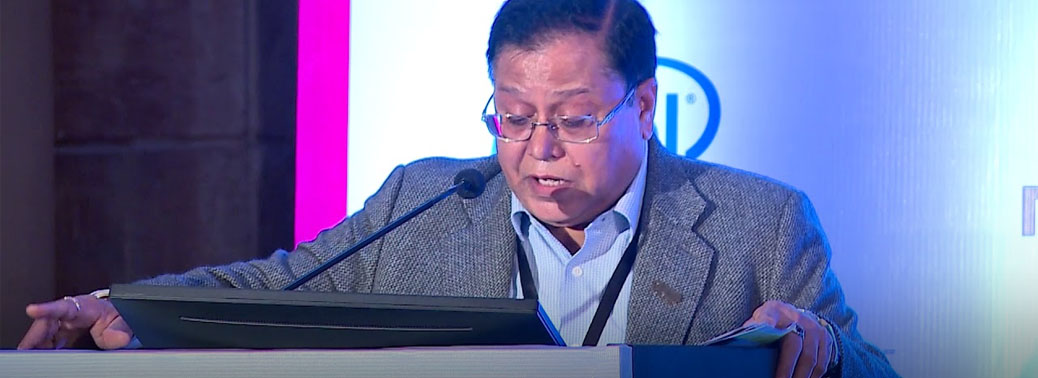
Why in news?
- The government has scrapped two Scientific Advisory Committees (SAC) for the Prime Minister and the Cabinet, and replaced them with a nine-member, Prime Minister’s Science, Technology and Innovation Advisory Council (PM-STIAC).
PM-STIAC:
- Government has constituted it as a high-power committee to advise it on policy matters related to science, technology and innovation.
- According to an official notification, secretaries of all science & technology related ministries are part of the special invitees. These include atomic energy, space, biotechnology, new & renewable energy, environment & forests, agriculture, health & higher education.
- The committee will advise the Prime Minister on all matters related to S&T, innovation and monitor the implementation of PM’s vision on the same.
- It will facilitate the formulation and implementation of policies and decisions, provide action-oriented and future preparedness advise and assist in directing S&T to solve the socio-economic problems in the country.
- It will also have a large focus on driving innovation in education, research, industry etc.
UPI 2.0
11, Aug 2018
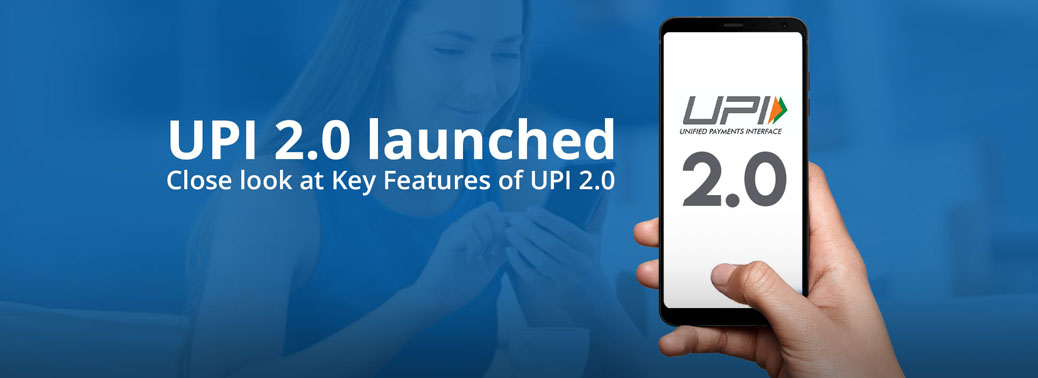
- NPCI launches UPI 2.0 with overdraft facility. National Payments Corporation of India (NPCI) has upgraded unified payments interface (UPI) with enhanced security features and overdraft facilities.
- With the launch of UPI 2.0 we hope to touch new milestones by expanding UPI’s presence especially in person-to-merchant payment space.
About:
- The UPI 2.0 has enhanced features such as Invoice in the Inbox, Signed Intent/QR, UPI Mandate with Blocking of Funds and UPI for Overdraft Account, all operating in a safe and secure manner.
-
- Overdraft facility in addition to current and savings accounts, customers can link their overdraft account to UPI. Thus UPI 2.0 will serve as an additional digital channel to access OD account.
- One Time Mandate UPI mandate could be used in a scenario where money is to be transferred later by providing commitment at present. UPI 2.0 mandates are created with one-time block functionality for transactions. Customers can pre-authorise a transaction and pay at a later date.
- Invoice in the inbox This feature is designed for customers to check the invoice sent by merchant prior to making payment. It will help customers to view and verify the credentials and check whether it has come from the right merchant or not.
- Signed intent & QR This feature is designed for customers to check the authenticity of merchants while scanning QR code.
- It is a bid to integrate its retail payments infrastructure with businesses, whereby a trader, restaurateur, shopkeeper or SME entrepreneur can send a Goods and Services Tax (GST) invoice or a bill to his customer as an attachment for verification and payment digitally.
- UPI 2.0-member banks as on date are: State Bank of India, HDFC Bank, Axis Bank, ICICI Bank, IDBI Bank, RBL Bank, YES Bank, Kotak Mahindra Bank, IndusInd Bank, Federal Bank and HSBC.
- To incorporate signed intent for QR (quick response) code-based payments to provide an additional layer of security.
- The launch has been the result of the calibrated approach adopted by the Reserve Bank – in the initial years as a developer and in later years as a catalyst and facilitator.
- As UPI has grown considerably post demonetisation and has been the catalyst for retail payment systems with many banks building products around the UPI with the fintech industry and other IT players positioned at the edge, providing innovative solutions for end-user delight.
- But UPI 2.0 is a big change and all the apps will need to be changed.
Unified Payments Interface:
- Unified Payments Interface (UPI) is an instant real-time payment system developed by National Payments Corporation of India facilitating inter-bank transactions. The interface is regulated by the Reserve Bank of India and works by instantly transferring funds between two bank accounts on a mobile platform
- It is a system that powers multiple bank accounts into a single mobile application (of any participating bank), merging several banking features, seamless fund routing & merchant payments into one hood.
- It also caters to the “Peer to Peer” collect request which can be scheduled and paid as per requirement and convenience. Each Bank provides its own UPI App for Android, Windows and iOS mobile platforms.
NPCI:
- National Payments Corporation of India (NPCI), which is the umbrella body for retail payments in the country which was set up in 2009 as the central infrastructure for various retail payment systems in India and was envisaged by the Reserve Bank of India (RBI) as the payment utility in the country.
- NPCI is a not-for-profit organisation registered under section 8 of the Companies Act 2013.
The organisation is owned by a consortium of major banks and has been promoted by the country’s central bank, the Reserve Bank of India
Services:
- It looks range of services like switching of interbank ATM transactions through National Financial Service, Cheque Truncation System, National Automated Clearing House (NACH), Aadhaar Enabled Payment System (AePS), USSD based *99#, RuPay card, Immediate Payment Service (IMPS), Unified Payments Interface (UPI), Bharat Interface for Money (BHIM), BHIM Aadhaar, National Electronic Toll Collection (NETC) and Bharat Bill Pay.
Innovation Cell and Atal Ranking Of Institutions On Innovation Achievements (Ariia)
11, Aug 2018
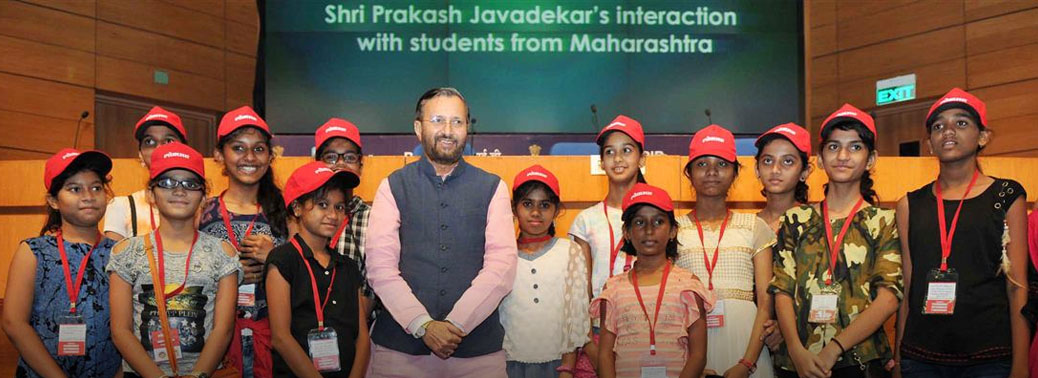
Why in news?
- The Centre announced another annual ranking of higher educational institutions, based on how they fare in terms of innovation.
MHRD Innovation Cell (MIC)
- Innovation cell is MHRD’s initiative established at AICTE with a purpose to systematically foster the culture of Innovation in all Higher Education Institutions (HEIs) across the country.
- The primary mandate of Innovation Cell is to encourage, inspire and nurture young students by exposing them to new ideas and processes resulting in innovative activities in their formative years fostered through Network of Innovation clubs in Higher Educational Institutions.
Atal Ranking of Institutions on Innovation Achievements (ARIIA)
- For India to emerge as a global innovation hub, the youth of our country, especially in higher education institutions (HEIs) need to play a crucial role to create a sustainable innovation ecosystem.
- Hence, ideally all HEIs should have a comprehensive and functional mechanism to convert research into innovations.
- This ecosystem will encourage, inspire and nurture young students by exposing them to new ideas and processes resulting in innovative activities in their formative years.
- To ensure that Innovation is primary fulcrum of all HEIs, Ministry of Human Resource Development (MHRD), Govt. of India is introducing ‘Atal Ranking of Institutions on Innovation Achievements (ARIIA)’ to systematically rank education institutions and universities primarily on innovation related indicators.
- ARIIA considers all major indicators which are commonly used globally to rank most innovative education institutions/ universities in the world.
- ARIIA ranking will certainly inspire Indian institutions to reorient their mind-set and build ecosystems to encourage high quality research, innovation and entrepreneurship.
- More than quantity, ARIIA will focus on quality of innovations and will try to measure the real impact created by these innovations nationally and internationally.
- Moreover, ARIIA will set tone and direction for institutions for future development for making them globally competitive and in forefront of innovation
Parinam Manjusha
10, Aug 2018

Why in news?
- The CBSE has decided to allow students in Kerala who have lost their marksheet, migration certificate and pass certificate in the floods, to retrieve them from its digital academic repository ‘Parinam Manjusha’.
About Parinam Manjusha:
- The Central Board of Secondary Education (CBSE) ‘s digital academic repository called ‘Parinam Manjusha’, will allow students to find their mark sheets, pass and migration certificates online. It has been developed by the board in collaboration with NEGD (DigiLocker)
- According to an HT report, employers and educational institutions can use it to verify academic records and students can have the access to their certificates.
- The users are required to get themselves registered on the website and after paying the verification fee online, they will then be able to check the certificates.
- The documents will be sent to the employer through mail and the applicant will be notified, thus preventing students from submitting fake documents.
- The documents will contain a QR code, which can be checked through a mobile-based scanning app that can be downloaded from the website.
- CBSE and its regional offices can store, access and update academic records of students in a central repository.
Lateral Entry Into Civil Services
09, Aug 2018

The personnel Ministry had recently announced recruitment of 10 joint secretaries in select government departments through lateral entry mode.
Need for Lateral Entry:
- There is a huge shortfall in a number of recruits, such as 20% shortage of IAS officers in 24 state cadres of India.
- The Baswan Committeehas pointed out the huge deficit of officers. The government has in March 2017, informed that there is a shortage of over 1,400 IAS and 900 IPS officers in the country. While the total strength should be 6,396 Indian Administrative Service (IAS) officers, however, there are only 4926 officers in the country.
- There is an unwillingness among officers of the state to undertake Centre deputation.
- Outside talent from the private sector is more likely to be target-oriented, which will improve the performance of the government.
Pros:
- The lack of specialisation across the top tier of Indian bureaucracy is a concern that has remained unaddressed until now.
- IAS officers get recruited at a very early age via the UPSC exams. It is difficult to gauge their administrative judgement and capabilities then. Some may pass with flying colours, while others don’t make the cut even later on in their careers. Allowing for lateral entry of seasoned professionals and experts into the service makes up for this deficiency.
- Career promotions in the IAS move along seamlessly with few impediments along the way. Attempts to introduce ‘meritocracy’ hasn’t quite worked out. Bringing in experts from the professional sphere is expected to shake the IAS out of their comfort zone.
- This isn’t the first time that the government brought in professionals from the private sector or academia into the top tier of government. Take a look at the Finance Ministry, Reserve Bank of India and even the current NITI Aayog, which have hired the likes of Raghuram Rajan, Arvind Subramanian and Arvind Panagriya to name a few.
- The IAS was designed for a time when the State was all-powerful. That reality somewhat changed with liberalisation in 1991, where the state was compelled to cede more space to markets. Therefore, it becomes more critical for the government to ascertain the impact its policy decisions have on various stakeholders such as the private sector, non-profits, and general public, i.e. those who have experienced government from the outside
Cons:
- Lateral entrants from the private sector and academia may not work well with the bureaucracy. The same pretty much goes for any inter-sector scenario. Differences in work culture, turf wars and systemic inertia often come in the way.
- It’s important to gauge what processes the Centre has put in place to ease the transition and establish authority. Candidates coming from the outside may not know the nuances of the system which can be exploited against them in any number of ways.
- The IAS establishment is likely to baulk at lateral entrants who haven’t made it through probably the hardest open competitive exam in the world, but because of privilege and social networks.
- One of the distinguishing aspects that the current crop of IAS officers can hold up is their experience in the field, serving some of the poorest districts in our hinterlands. Those entering from privileged backgrounds and the private sector may have never seen a village school.
- There are also concerns that the introduction of pro-establishment candidates through lateral entry at the position of joint secretary could stifle good civil servants who are resisting against something inadvisable that the government seeks to do.
Conclusion:
- India’s civil services need reform. There is little argument about this. Internal reforms—such as insulation from political pressure and career paths linked to specialization—and external reforms such as lateral entry are complementary.
- Any new system will take time to evolve. So, one can only hope that those at the top see this through till it becomes efficient and transparent and ensure a way to keep the public informed about it objectively.
NCRB To Track Complaints On Sexual Violence
05, Aug 2018
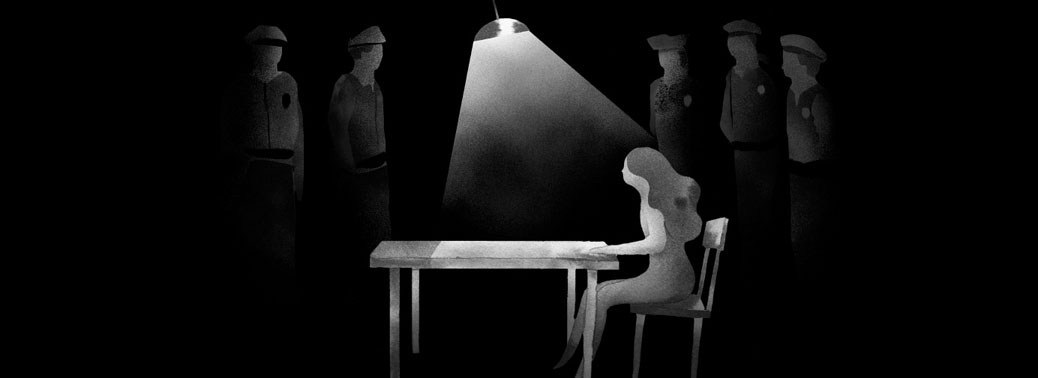
Why in news?
A high-level meeting was convened to discuss recommendations on ways to curb “sexual violence” videos involving women and children
About the news:
- National Crime Records Bureau (NCRB) would be the designated nodal agency for monitoring the complaints received on a government portal that records child pornography and sexual violence videos.
- The NCRB would coordinate with service providers such as Facebook, YouTube and WhatsApp and ask them to block malicious videos and contents.
- NCRB derives its power from Information Technology Act, 2000 to take action against such videos.
- Whenever such incidents are reported, NCRB will write to service providers and ask them to block the content.
NCRB:
- NCRB was set-up in 1986 to function as a repository of information on crime and criminals so as to assist the investigators in linking crime to the perpetrators.
- It was set up based on the recommendation of the Task force and National Police Commission by merging the Directorate of Coordination and Police Computer (DCPC), Statistical Branch of BPR&D, Inter State Criminals Data Branch of CBI and Central Finger Print Bureau of CBI.
Mission:
- To Empower Indian Police with Information Technology and criminal Intelligence to enable them to uphold law and protect people. To provide leadership and excellence in crime analysis particularly for serious and organized crime.
Objectives:
- Create and maintain secure sharable National Databases on crimes and criminals for law enforcement agencies and promote their use for public service delivery.
- Collect and process crime statistics at the national level and clearing house of information on crime and criminals both at National and International levels.
- Lead and coordinate development of IT applications and create an enabling IT environment for Police organizations.
- National repository of fingerprints of all criminals.
- To evaluate, modernize and promote automation in State Crime Records Bureaux and State Finger Print Bureaux. Training and capacity building in Police
UIDAI To Roll Out Face Recognition Feature
04, Aug 2018
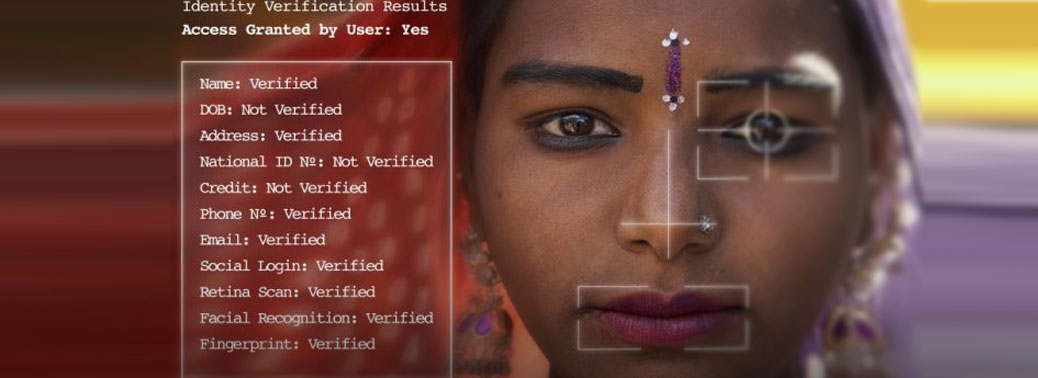
The Unique Identification Authority of India (UIDAI) has announced a phased roll out of face recognition feature as an additional mode of authentication
Face Recognition:
- The UIDAI said that ‘live face photo’ capture and its verification with the photo obtained in eKYC will be essential in those cases where Aadhaar is used for issuing mobile SIMs.
- The move aims at curbing the possibility of fingerprint spoofing or cloning, and seeks to tighten the audit process and security around issuance and activation of mobile SIMs.
- The Authority announced to roll out face recognition feature as an additional mode of authentication, starting with telecom service providers, from September 15.
- It has also proposed a monetary disincentive for telcos found slipping on the prescribed targets.
- For authentication agencies other than telecom service providers, the UIDAI said specific instructions will be issued on implementation of face authentication feature, but did not give a new deadline.
- The UIDAI has proposed a two-factor authentication for use of face recognition by telcos. Where an individual provides the Aadhaar number, the authentication will be done using fingerprint or iris and face.
- For individuals providing Virtual ID, the authentication can be on the basis of fingerprint or iris.
Need for face recognition:
- Combination of live face with fingerprint in authentication will also enhance Aadhaar security as it will effectively curb fingerprint spoofing.
- This will ensure that telcos provide face capture facilities to customers who encounter difficulty in authentication due to worn out finger prints.
UIDAI:
- The Unique Identification Authority of India (UIDAI)is a statutory authority established under the provisions of the Aadhaar (Targeted Delivery of Financial and Other Subsidies, Benefits and Services) Act, 2016 (“Aadhaar Act 2016”) under the Ministry of Electronics and Information Technology (MeitY).
- UIDAI was created with the objective to issue Unique Identification numbers (UID), named as “Aadhaar”, to all residents of India that is
- Robust enough to eliminate duplicate and fake identities
- Can be verified and authenticated in an easy, cost-effective way
CMSMS and ‘KHAN PRAHARI’ App
29, Jul 2018

- Union Ministry of Coal launched the Coal Mine Surveillance & Management System (CMSMS) and Mobile Application ‘Khan Prahari’.
- Developed by CMPDI, Ranchi a Subsidiary of CIL and Bhaskarcharya Institute of Space Application and Geo-informatics (BISAG).
- CMSMS-The objective of CMSMS is reporting, monitoring and taking suitable action on unauthorised coal mining activities.
- It is a Web-based GIS application through which location of sites for unauthorised mining can be detected.
- The basic platform used in the system is of Ministry of Electronics & Information Technology’s (MeiTY) map which provides village level information. The leasehold boundary of all the coal mines are displayed on this map by which any change in allotted lease area due to unauthorised mining activity can be detected.
- CMSMS also provide other important information like reclamation work being done by Coal India Limited which is being monitored every year by CMPDI using satellite data
The ‘Khan Prahari’ App is for reporting any activity taking place related to illegal coal mining like rat hole mining, pilferage etc. One can upload geo-tagged photographs of the incident along with textual information directly to the system.
The system uses both satellite data and public input to capture information on unauthorised coal mining activities and also take appropriate action on them with due transparency.Central Mine Planning & Design Institute Limited (CMPDI) is a Government of India enterprise having its corporate headquarters at Ranchi in India.
It is a fully owned subsidiary of Coal India Limited India’s largest consultancy organisation and the market leader in an expanding earth resource sector. CMPDI also handles specialised assignments of Ministry of Coal and CIL. Offering services in the sphere of resource exploration & development in Exploration, Mining ,Coal Preparation, Coal Utilisation and Management, Coal Technology, Coal / Material Handling Arrangement, Engineering,and Environmental Management
Digi Yatra
10, Jul 2018
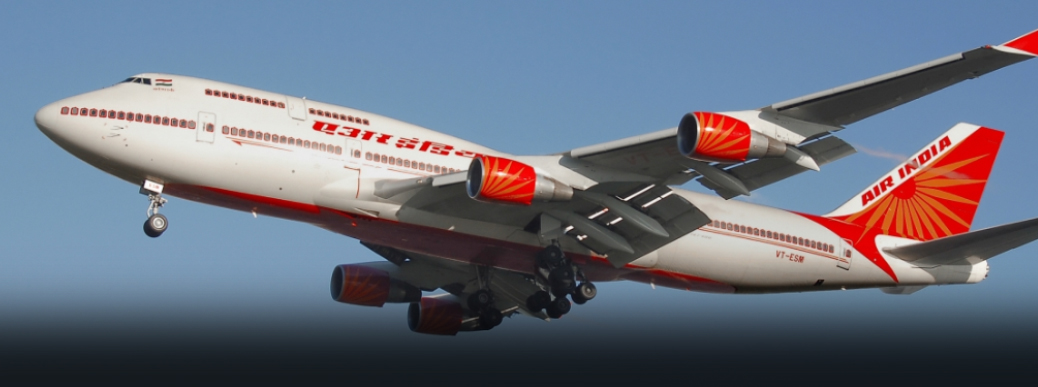
- Under Ministry of Civil Aviation, an Industry – led initiative co-ordinated by the Ministry
- Brings Together entire industry to develop a digital ecosystem that will deliver Indian Customer’s fully digital at every touch point of their Journey
- By this initiative we can optimally link Aadhar to airlines and other ecosystem players at the time of booking for faster airport entry and automated check-ins without requiring any paper -based interventions.
C vigil
05, Jul 2018

- Election commission of India launched a mobile app called cVIGIL.
- A user-friendly and easy to operate Android application, requires an Android smartphone equipped with a camera, good internet connection and GPS access
- Citizens can immediately report on incidents of misconduct within minutes of having witnessed them and upload it on this app, without having to rush to the office of the returning officer to lodge a complaint.
- The automated location mapping will be done using Geographic Information System.
- After its successful submission through the app, the vigilant citizen gets a Unique ID to track and receive the follow up updates on her or his mobile and will get a unique id for each report for follow up updates.
- The identity of the complainant will be kept confidential.
- The app has inbuilt features to prevent its misuse. It will receive complaints only about Model Code of Conduct violations. The user will get 5 minutes to report an incident after having clicked a picture or a video.
- To prevent any misuse, the app will not allow uploading of the pre-recorded or old images and videos. The app will not facilitate saving of the photos or videos recorded using the ‘cVIGIL’ app into the phone gallery either.
- Further, the application will be active only in States where elections have been announced. The moment a citizen exits an election-bound State, the app will become inactive
It will be operational only where elections are announced. cVIGIL will allow anyone in the election-bound state to report violations of Model Code of Conduct.
Drawback in current practice:
- The complaints about violations of Model Code of Conduct often could not be followed instantly, leading to the violators escaping detection from the action squads.
- The lack of any documented evidence in the form of pictures or videos was seen as a hurdle in verifying a complaint.
- The absence of a robust response system to quickly and accurately identify the scene of occurrence of violations with the help of geographical location details hampered election officers’ ability to apprehend the violators
- The new app is expected to fill in all these gaps and create a fast-track complaint reception and redressal system. A significant step towards empowering of vigilant citizens and to hold political parties and politicians accountable.
National Health Stack (NHS)
01, Jul 2018
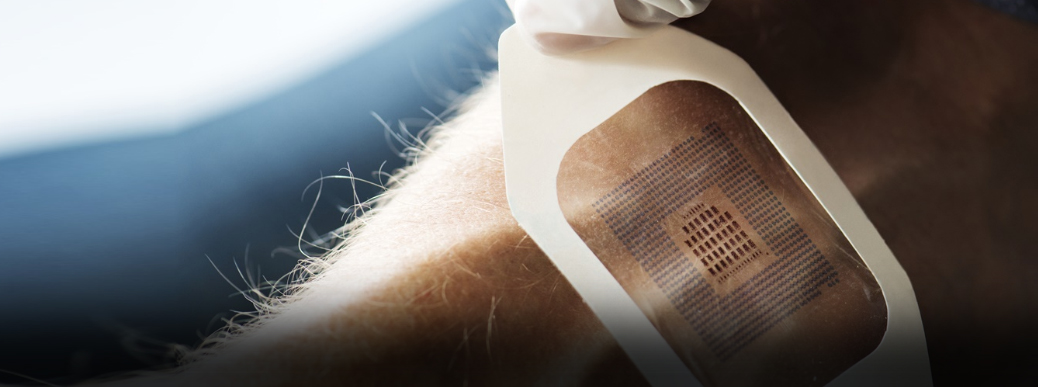
NITI AAYOG unveiled the blue print of National Health Stack, a shared digital healthcare infrastructure. It is in accordance with National Health Policy 2017 had also envisaged creation of a digital health technology ecosystem aimed at developing an integrated health information system that serves the needs of all stakeholders
- It is in line with the implementation of the Centre’s flagship scheme Ayushman Bharat and other public healthcare programmes in the country.
- It envisages a centralized health record for all citizens of the country in order to streamline the health information and facilitate effective management of the same.
- The components include national health electronic registries, a coverage and claims platform, a federated personal health records framework, a national health analytics platform among others.
The proposed NHS is an approach to address the challenge and seeks to employ latest technology including Big Data Analytics and Machine Learning Artificial Intelligence, a state of the art Policy Mark-up Language and create a unified health identity of citizens – as they navigate across services across levels of care, i.e. Primary, Secondary and Tertiary and also across Public and Private. - This will allow policy makers to further build their projections around upcoming outcomes, experiment with new services as well as fill the existing gaps in the Indian healthcare industry among others.
- Allow states to incorporate horizontal and vertical expansion of scheme
- Avoid duplication of efforts.
- Enable ease of adoption for those without systems or with dysfunctional systems in place.
- The registrant may create a virtual health ID to preserve their privacy when interacting with other users or stakeholders in the system.
- Once implemented, it is expected that National Health Stack will significantly “bring down the costs of health protection, converge disparate systems to ensure a cashless and seamlessly integrated experience for the poorest beneficiaries, and promote wellness across the population
NHS will not only allow policy makers to experiment with policies, detect fraud in health insurance, measure outcomes and move towards smart policy making, but also engage market players (NGOs, researchers, watchdog organisations) to innovate and build relevant services and fill the gaps.






